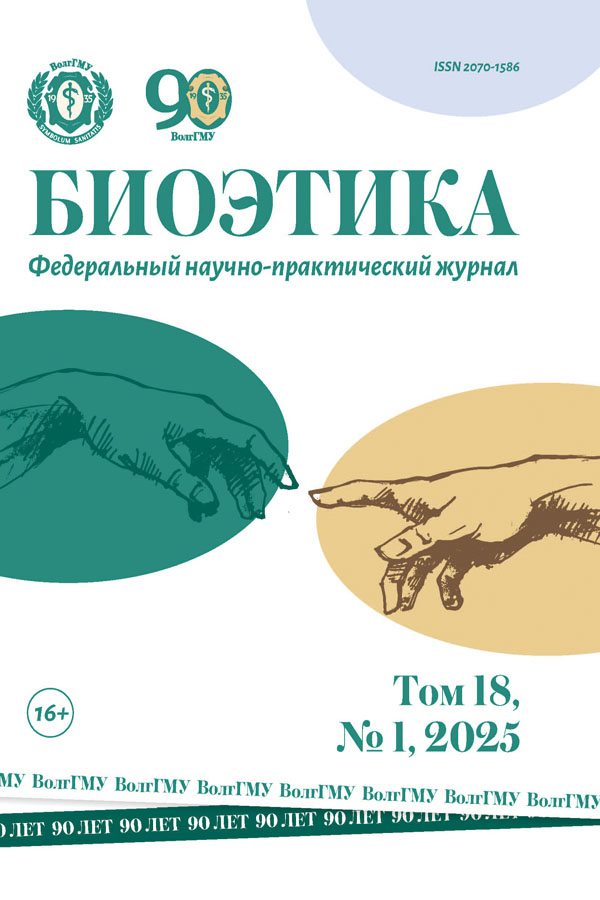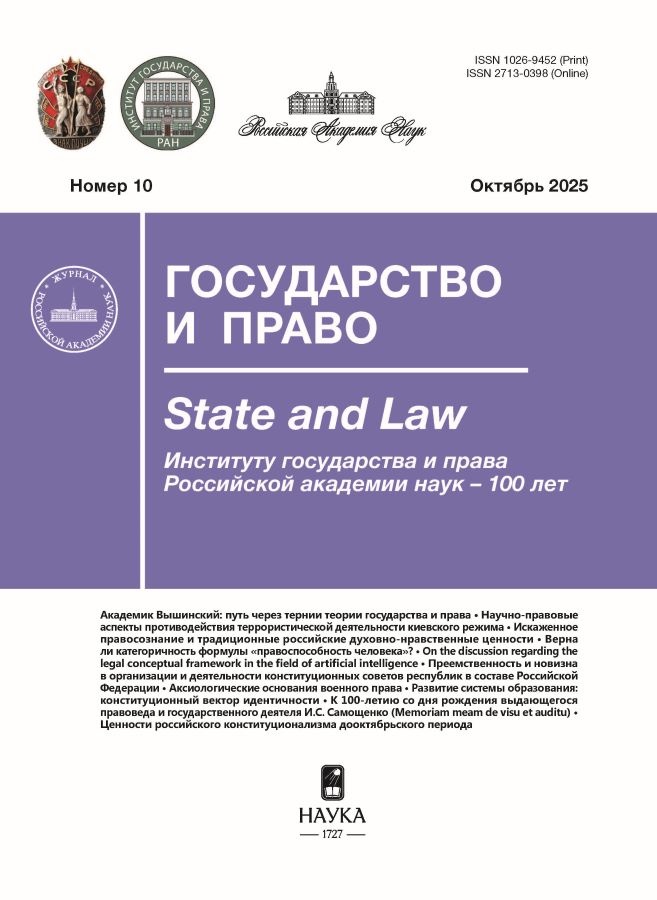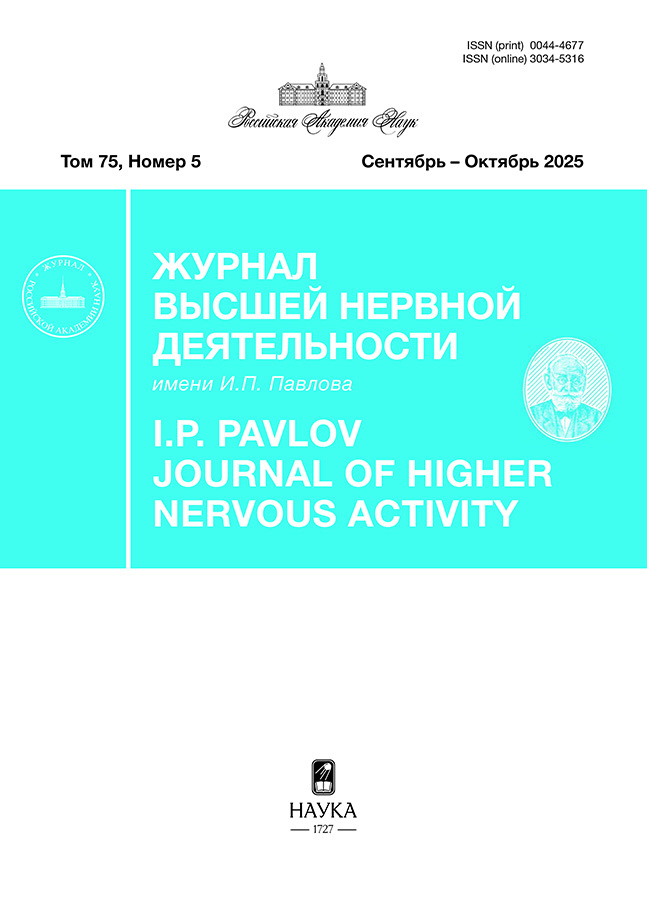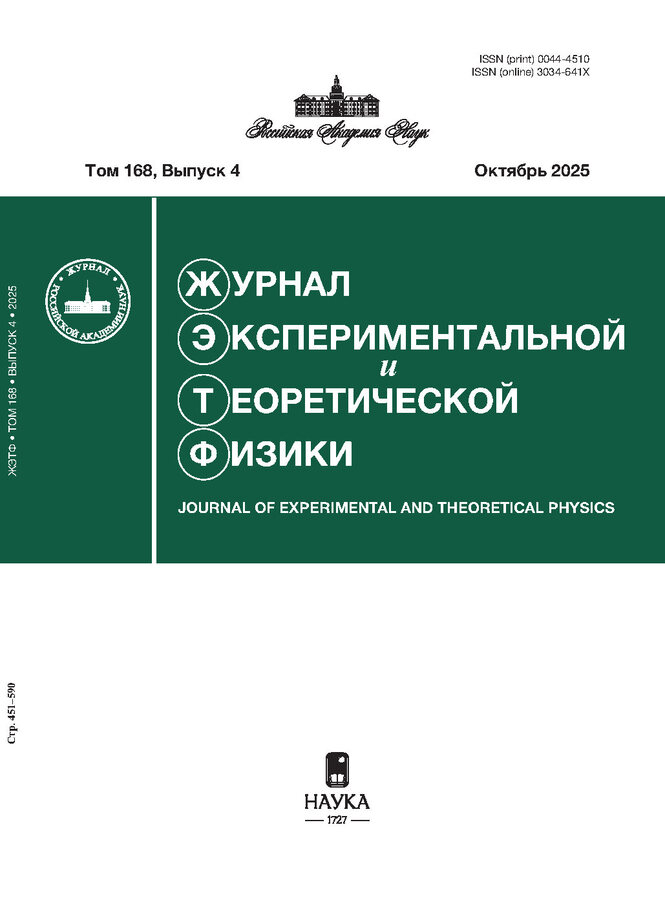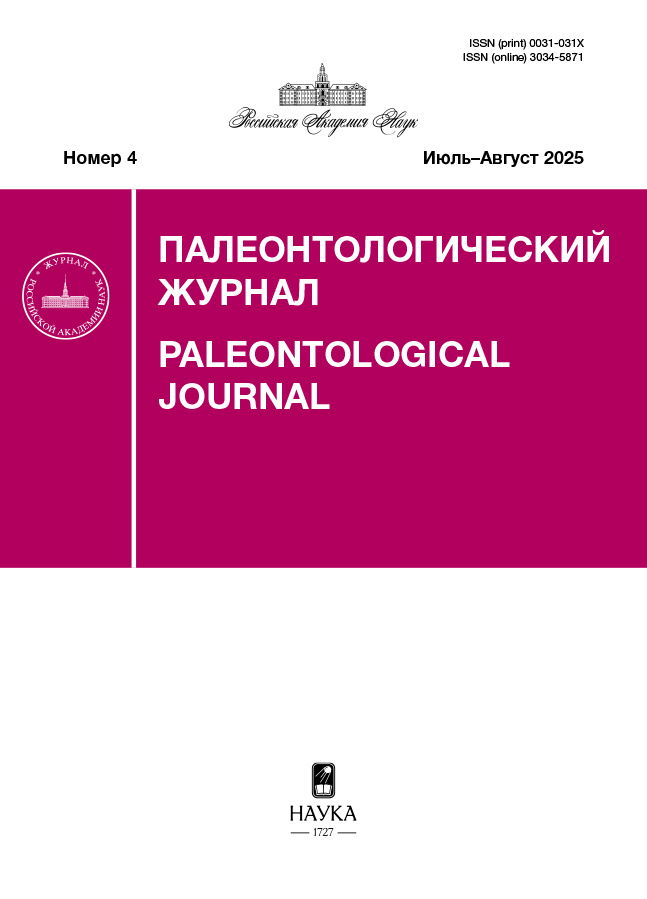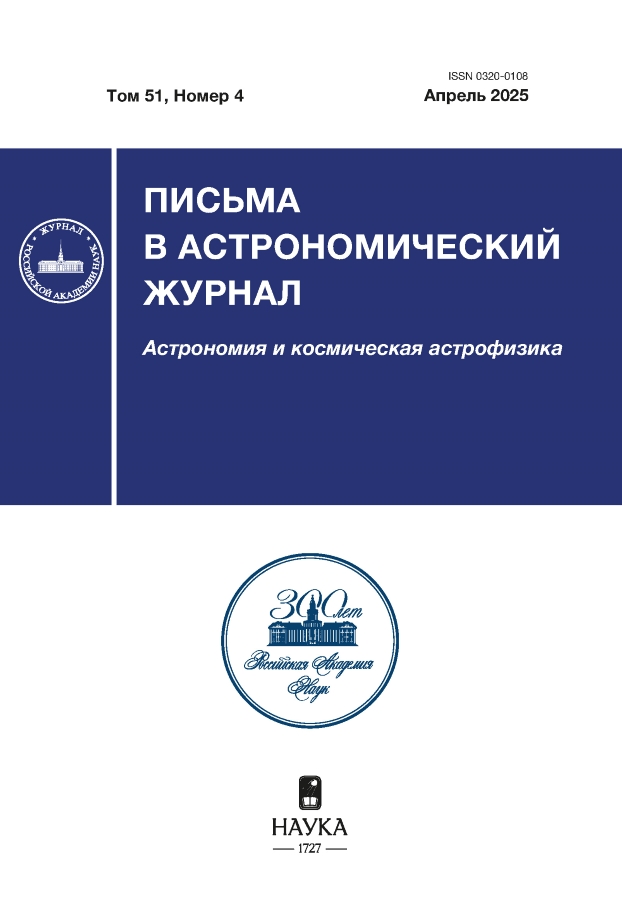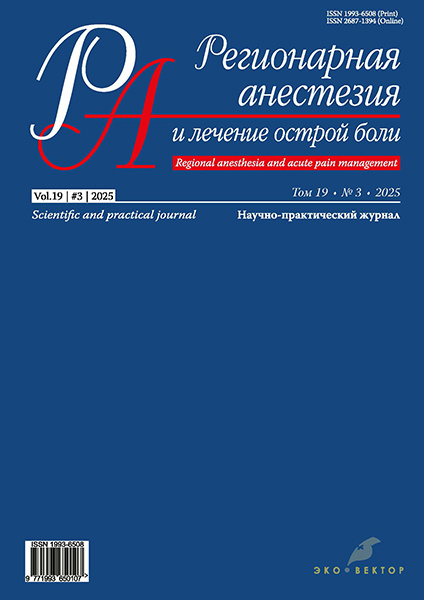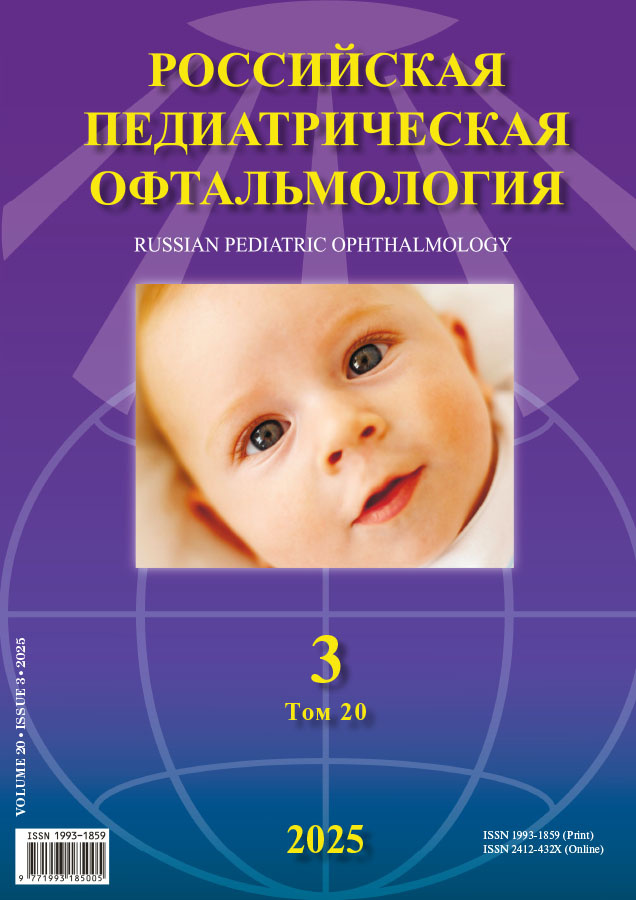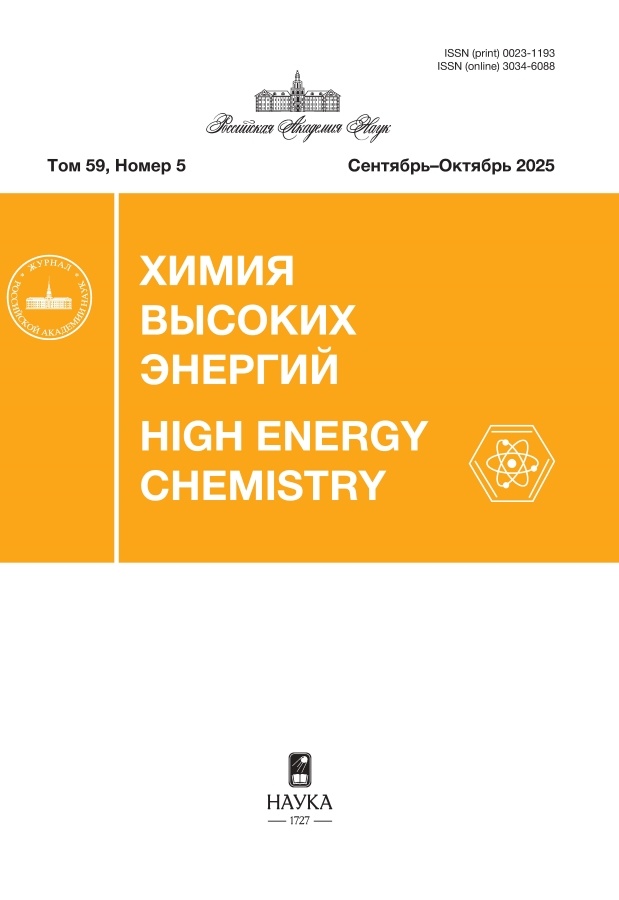RCSI Journals Platform
-
Acta Linguistica Petropolitana. Transactions of the Institute for Linguistic Studies

-
Acta Linguistica Petropolitana. Transactions of the Institute for Linguistic Studies
ISSN (print): 2306-5737, ISSN (online): 2658-4069
Founder: Institute for Linguistic Studies, Russian Academy of Sciences
Editor-in-Chief: Evgeny V. Golovko, Member of Russian Academy of Sciences, Doctor of Sc., Professor
Frequency / Access: 3 issues per year / Open
Included in: White List (3rd level), Higher Attestation Commission List, RISC, Scopus
-
Acta Naturae
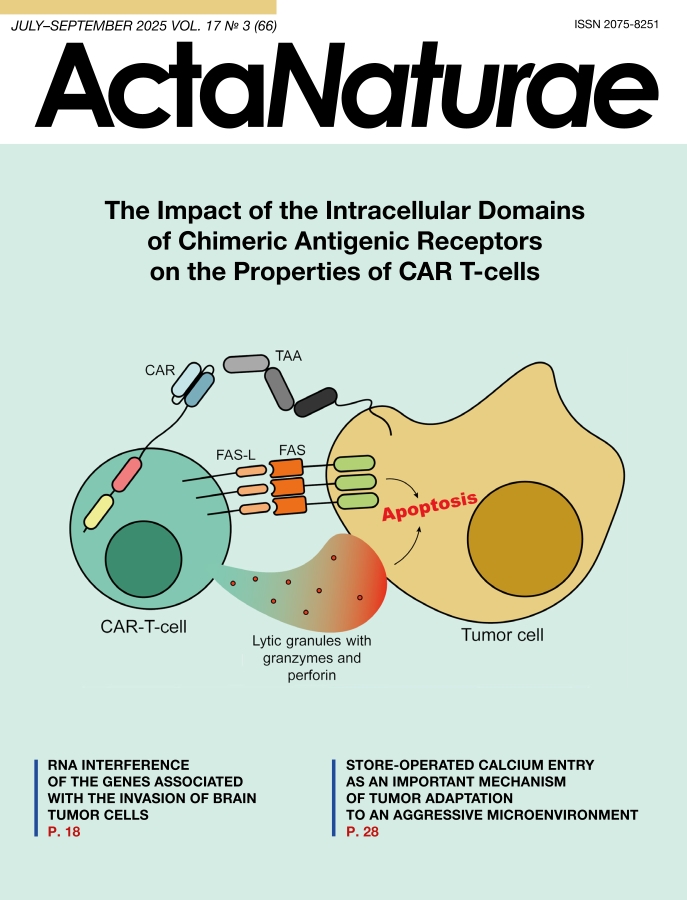
-
Acta Naturae
ISSN (print): 2075-8251
Founder: HSE University; Acta Naturae LLC
Editor-in-Chief: Anatoly I. Grigiriev, Academician of the Russian Academy of Sciences, Professor
Frequency / Access: 4 issues per year / Open
Included in: White List (1st level), Higher Attestation Commission List, RISC, Scopus, Web of Science, Zoological Record, Biological Abstracts
-
Cardiac Arrhythmias
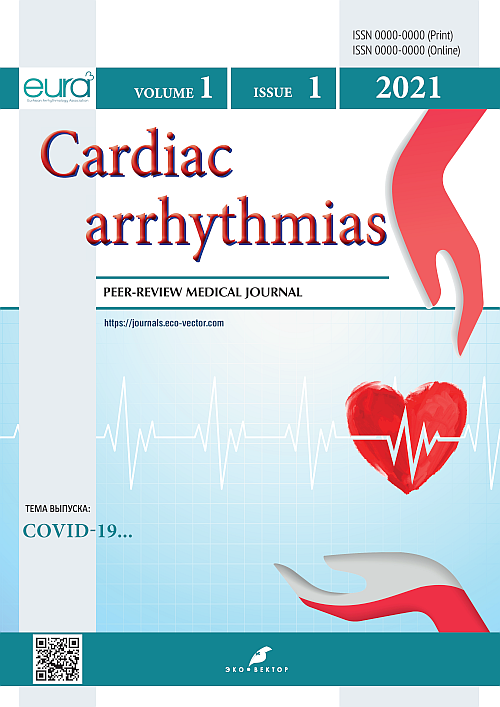
-
Cardiac Arrhythmias
ISSN (print): 2782-4284, ISSN (online): 2782-4233
Founders: North-Western State Medical University named after I.I. Mechnikov, Eurasian Arrhythmology Association, “ECO-vector” LLC
Editor-in-Chief: Sergey Sayganov
Frequency / Access: 4 issues per year / Open
Included in: RISC
-
CardioSomatics

-
CardioSomatics
ISSN (print): 2221-7185, ISSN (online): 2658-5707
Founder: Russian Society of Cardiosomatic Rehabilitation and Secondary Prevention
Editor-in-Chief: professor David M. Aronov, MD.
Frequency / Access: 4 issues per year / Open
Included in: Higher Attestation Commission List, RISC
-
Computational nanotechnology
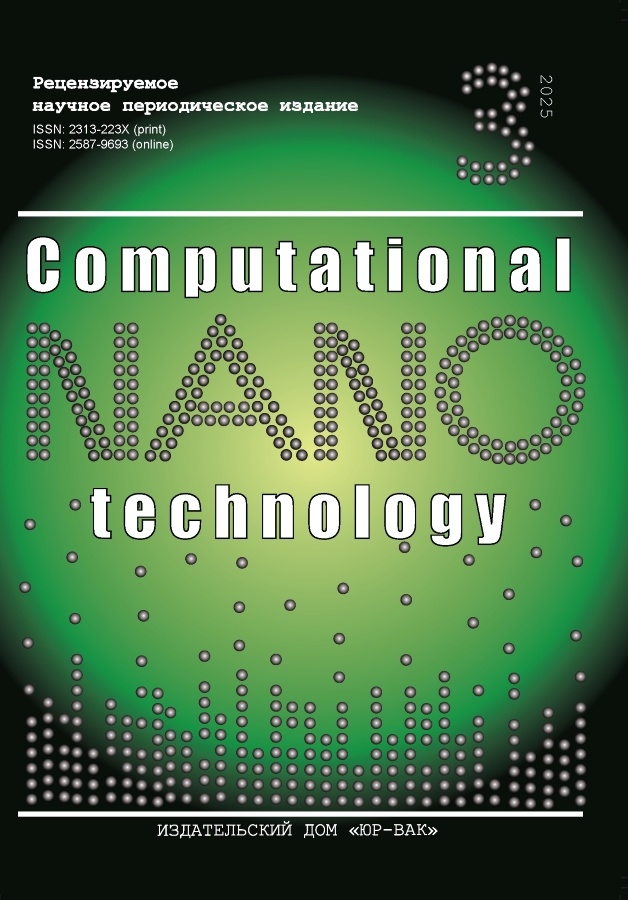
-
Computational nanotechnology
ISSN (print): 2313-223X, ISSN (online): 2587-9693
Founder: Publishing house "Yur-VAK"
Editor-in-Chief: Popov Alexander Mihajlovich, Doctor of Science in Physics and Mathematics, Professor
Frequency / Access: 4 issues per year / Subscription
Included in: Higher Attestation Commission List, RISC
-
Consilium Medicum
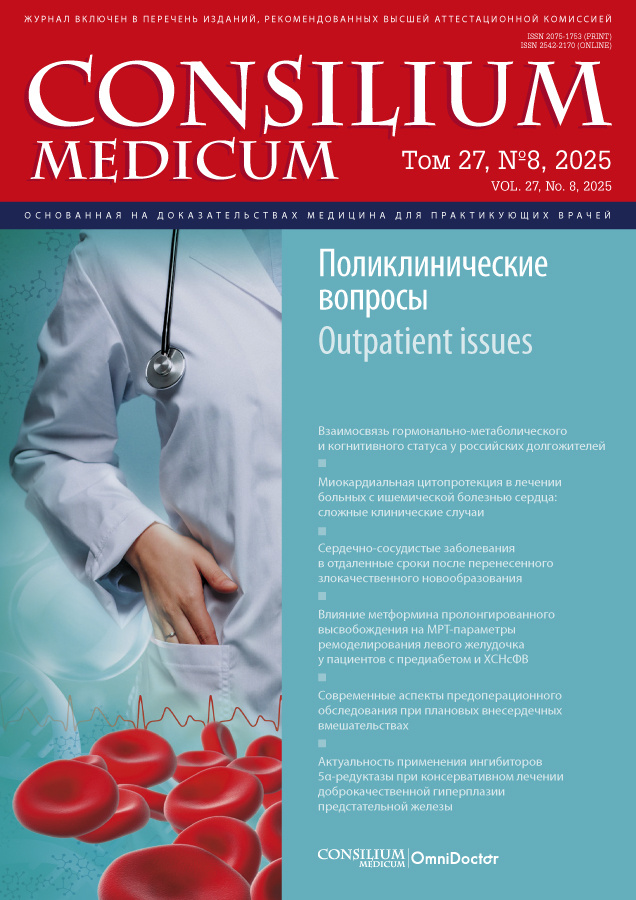
-
Consilium Medicum
ISSN (print): 2075-1753, ISSN (online): 2542-2170
Founder: Closed Joint Stock Company "Medical Publications"
Editor-in-Chief: Prof. Victor V. Fomin, MD, Dr. Sci. (Medicine)
Frequency / Access: 12 issues per year / Open
Included in: White List (3rd level), Higher Attestation Commission List, RISC
-
Consortium Psychiatricum

-
Consortium Psychiatricum
ISSN (print): 2712-7672, ISSN (online): 2713-2919
Founder: George P. Kostyuk, MD, Dr. Sci. (Med), professor
Editor-in-Chief: George P. Kostyuk, MD, Dr. Sci. (Med), professor
Frequency / Access: 4 issues per year / Open
-
Continuum: Matematika. Informatika. Obrazovanie.

-
Continuum: Matematika. Informatika. Obrazovanie.
ISSN (print): 2500-1957
Founder: Bunin Yelets State University
Editor-in-Chief: Shcherbatykh Sergey Viktorovich, Doctor of Sc., Full Professor
Frequency / Assess: 4 issues per year / Open
Included in: Higher Attestation Commission List, RISC
-
Control Sciences

-
Control Sciences
ISSN (online): 2782-2427
Founder: Institute of Control Sciences of the Russian Academy of Sciences
Editor-in-Chief: Novikov D.A., Academician of RAS, Doctor of Sc.
Frequency / Access: 6 issues per year / Open
Included in: White list (4th level), Higher Attestation Commission List, RISC, MathNet
-
Crede Experto: transport, society, education, language
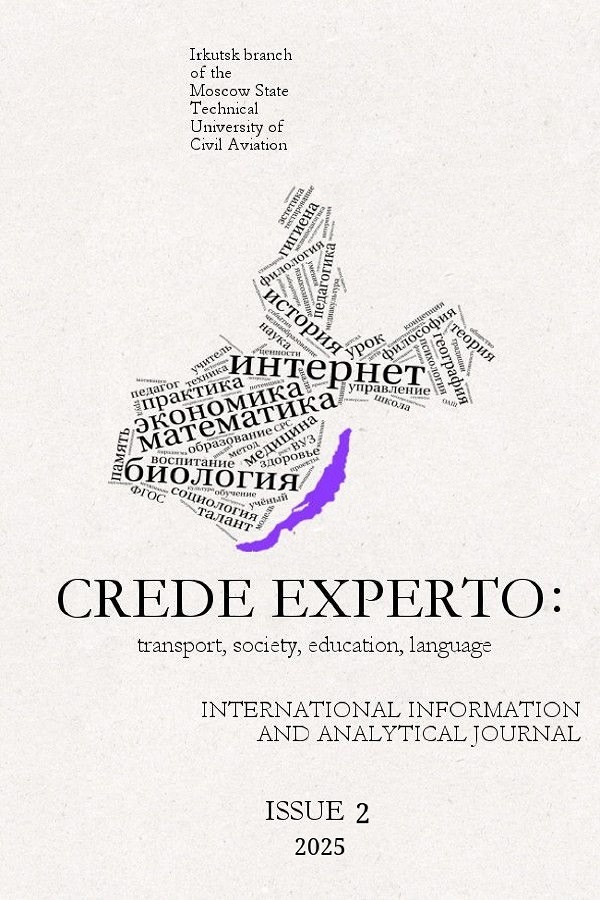
-
Crede Experto: transport, society, education, language
ISSN (online): 2312-1327
Founder: Moscow State Technical University of Civil Aviation
Editor-in-Chief: Ljudmila A. Ivanova, PhD, Associate professor
Frequency / Access: 4 issues per year / Open
Included in: Higher Attestation Commission List, RISC
-
Digital Diagnostics
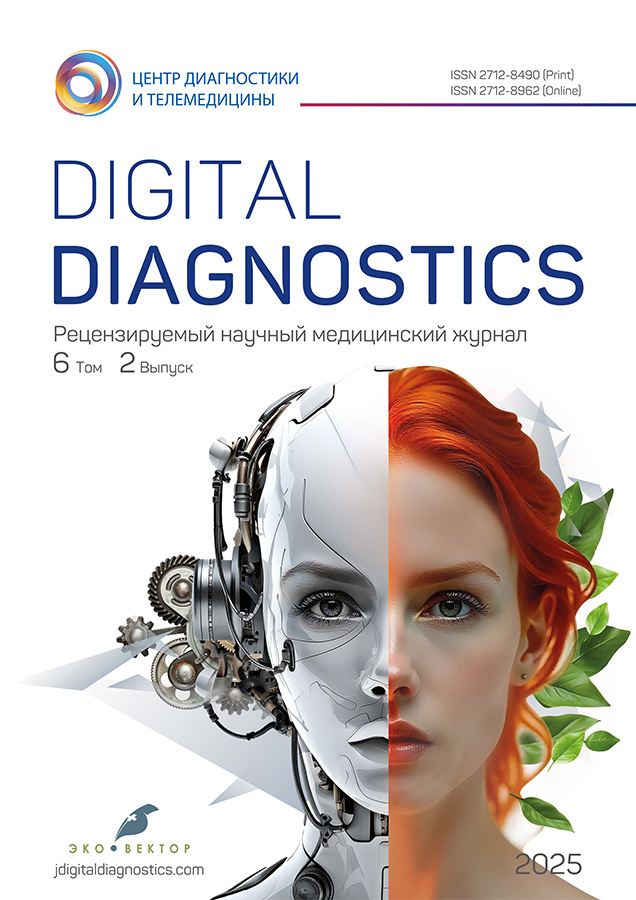
-
Digital Diagnostics
ISSN (print): 2712-8490, ISSN (online): 2712-8962
Founders: Research and Practical Clinical Center for Diagnostics and Telemedicine Technologies, Eco-Vector Publishing Group
Editor-in-Chief: Professor Valentin Sinitsyn, MD, PhD.
Frequency / Access: 4 issues per year / Open
Included in: Higher Attestation Commission List, RISC, Scopus
-
Discrete and Continuous Models and Applied Computational Science
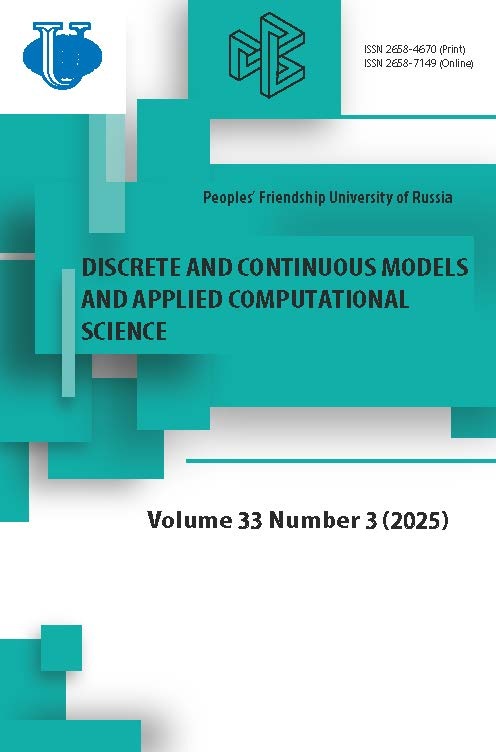
-
Discrete and Continuous Models and Applied Computational Science
ISSN (print): 2658-4670, ISSN (online): 2658-7149
Founder: Peoples’ Friendship University of Russia named after Patrice Lumumba (RUDN University)
Editor-in-Chief: Yuriy P. Rybakov, Doctor of Physical and Mathematical Sciences, Professor
Frequency / Access: 4 issues per year / Open
Included in: Higher Attestation Commission List, RISC, Scopus
-
Education & Pedagogy Journal

-
Education & Pedagogy Journal
ISSN (print): 2782-2575, ISSN (online): 2949-1827
Founder: Tomsk State Pedagogical University
Editor-in-Chief: Makarenko A. N., Ph.D. Linguistics, Associate Professor
Frequency / Access: 4 issues per year / Open
Included in: RCSI
-
Focus on Language Education and Research

-
Focus on Language Education and Research
ISSN (online): 2686-7516
Founder: Samara National Research University
Editor-in-Chief: Svetlana G. Ter-Minasova, Dr of Sciences (Philology), Professor
Frequency / Assess: 4 issues per year / Open
Included in: RISC
-
Genesis: Historical Research

-
Genesis: Historical Research
ISSN (online): 2409-868X
Founder: NB-Media Ltd.
Editor-in-Chief: Kodan Sergey V., Doctor of Sc., Full Professor
Frequency / Assess: 12 issues per year / Open
Included in: Higher Attestation Commission list, RISC
-
Transportation and Information Technologies in Russia
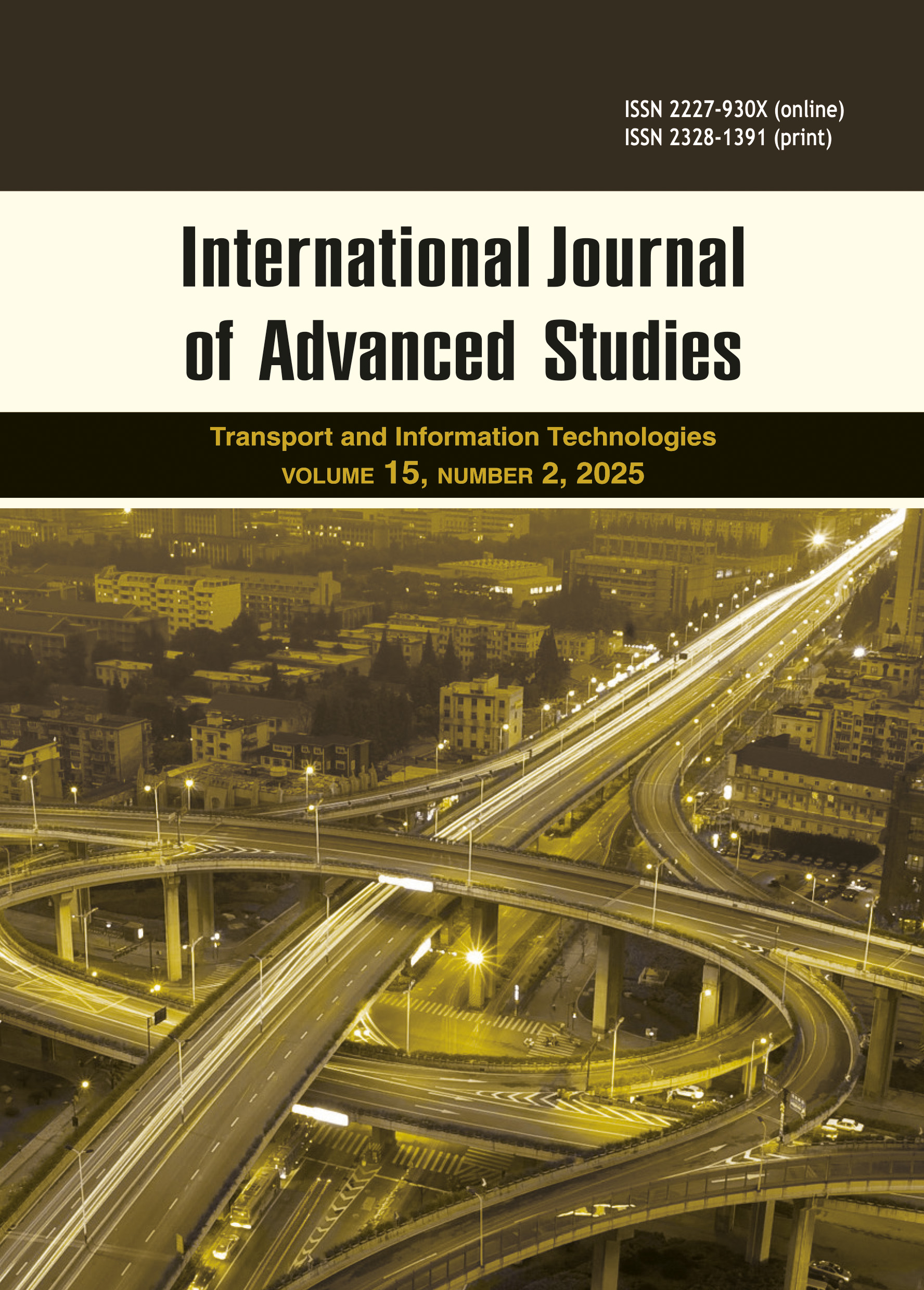
-
Transportation and Information Technologies in Russia
ISSN (online): 3033-5965
Founder and publisher: Science and Innovation Center Publishing House
Editor-in-Chief: Andrey V. Ostroukh, Doctor of Technical Sciences, Professor
Frequency / Access: 4 issues per year / Open
Included in: Higher Attestation Commission List, RISC
Website: https://ijournal-as.com
-
International journal of medicine and psychology

-
International journal of medicine and psychology
ISSN (online): 2658-3313
Founder: Self-employed Klyueva M.M. (Belgorod)
Editor-in-Chief: Boyazitova Irina Valer’yevna, Doctor of Sc., Full Professor
Frequency / Assess: 4 issues per year / Open
Included in: Higher Attestation Commission list, RISC
-
International law journal

-
International law journal
ISSN (online): 2658-5693
Founder: Self-employed Klyueva M.M. (Belgorod)
Editor-in-Chief: Serebrennikova Anna Valerievna, Doctor of Sc., Full Professor
Frequency / Assess: 4 issues per year / Open
Included in: Higher Attestation Commission list, RISC
-
IP: theory and practice

-
IP: theory and practice
ISSN (online): 2949-284X
Founder: Federal state budgetary educational institution of higher education Russian state Academy of intellectual property
Editor-in-Chief: Nitsevich Victor F., Doctor of Sc., Full Professor
Frequency / Assess: 4 issues per year / Open
Included in: RISC
-
iPolytech journal

-
iPolytech journal
ISSN (print): 2782-4004, ISSN (online): 2782-6341
Founder: Irkutsk National Research Technical University
Editor-in-Chief: Denis N. Sidorov, Doctor of Physical and Mathematical Sciences, Professor
Frequency / Access: 4 issues per year / Open
Included in: Higher Attestation Commission List, RISC
-
Journal of Advanced Materials and Technologies
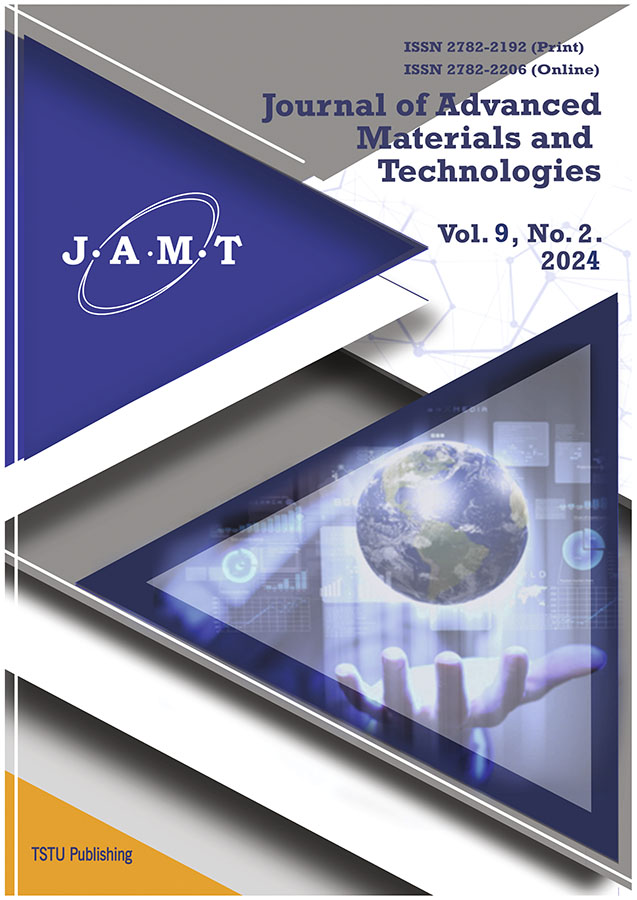
-
Journal of Advanced Materials and Technologies
ISSN (print): 2782-2192, ISSN (online): 2782-2206
Founders: Merzhanov Institute of Structural Macrokinetics and Materials Sciences of Russian Academy of Sciences, Tambov State Technical University
Editor-in-Chief: M.I. Alymov, Corresponding Member of the RAS, Doctor of Technical Sciences, professor
Frequency / Access: 4 issues per year / Open
Included in: Higher Attestation Commission List, RISC
-
Journal of Biomedical Photonics & Engineering

-
Journal of Biomedical Photonics & Engineering
ISSN (online): 2411-2844
Founder: Samara National Research University
Editor-in-Chief: Valery V. Tuchin, Corr.-member of RAS, Doctor of Sc., Professor
Frequency / Assess: 4 issues per year / Open
Included in: White List (3rd level), Higher Attestation Commission List, RISC, Scopus
-
Journal of Digital Technologies and Law

-
Journal of Digital Technologies and Law
ISSN (online): 2949-2483
Founder: Private Educational Institution of Higher Education Kazan Innovative University named after V.G. Timiryasov
Editor-in-Chief: Ildar R. Begishev, Dr. Sci. (Law), Associate Professor
Frequency / Access: 4 issues per year / Open
Included in: RISC
-
Journal of Language and Education
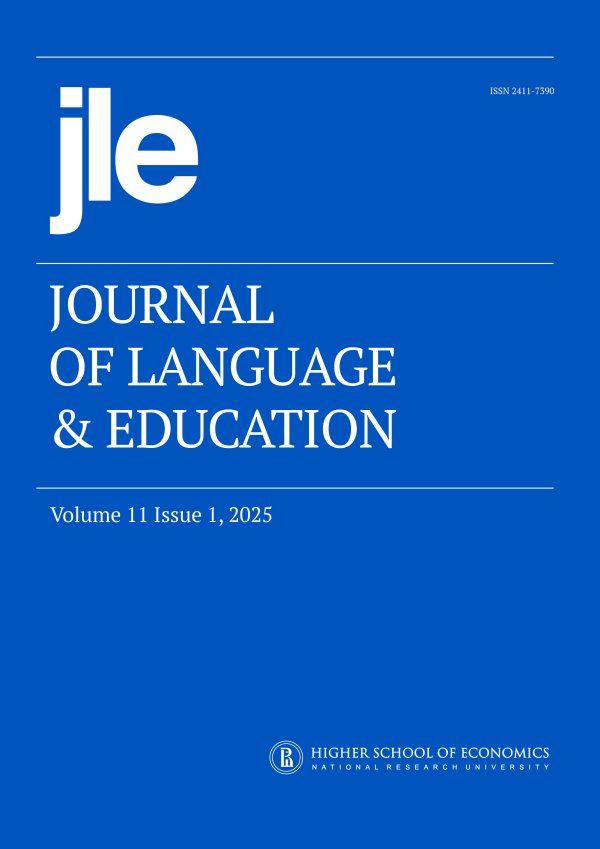
-
Journal of Language and Education
ISSN (online): 2411-7390
Founder: Higher School of Economics
Editor-in-Chief: Baranovskaya Tatiana, Doctor of Sc.
Frequency / Assess: 4 issues per year / Open
Included in: White List (2nd level), Higher Attestation Commission list, RISC,Scopus
-
Legal Issues in the digital Age
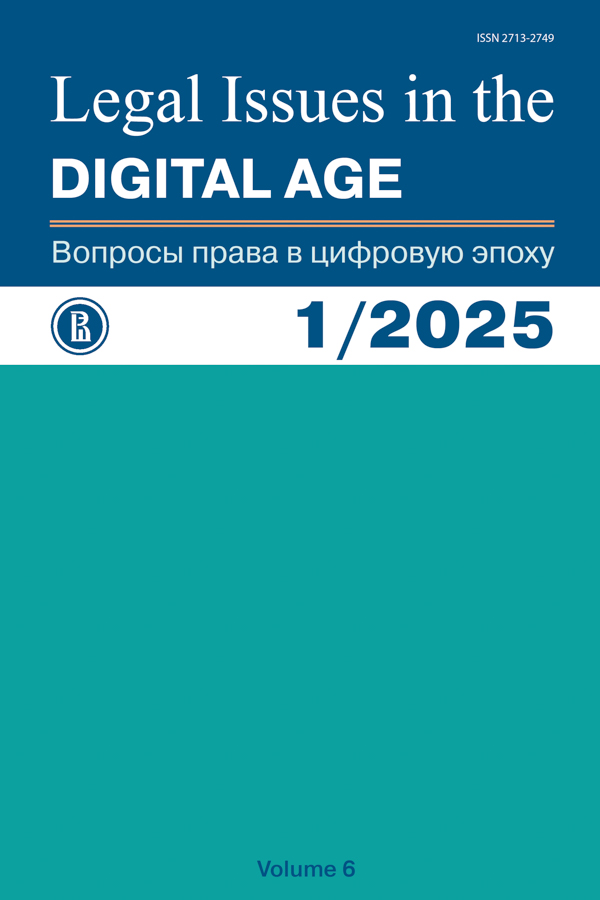
-
Legal Issues in the digital Age
ISSN (online): 2713-2749
Founder: National Research University Higher School of Economics
Editor-in-Chief: Irina Jur'evna Bogdanovskaya, Doctor of Sc., Associate Professor
Frequency / Access: 4 issues per year / Open
Included in: Higher Attestation Commission List, RISC
-
Limnology and Freshwater Biology
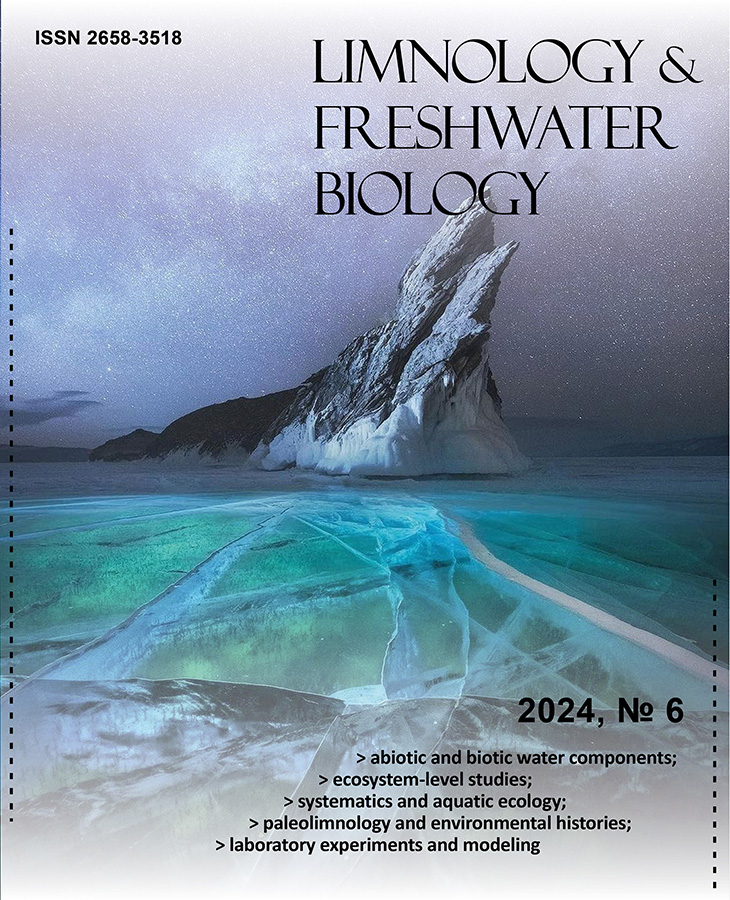
-
Limnology and Freshwater Biology
ISSN (online): 2658-3518
Founder: Limnological institute SB RAS
Editor-in-Chief: Andrey Fedotov, Dr. Sc. (Geology and Mineralogy)
Frequency / Access: 6 issues per year / Open
Included in: RISC, Scopus
-
Modern Economy Success

-
Modern Economy Success
ISSN (online): 2500-3747
Founder: Self-employed Klyueva M.M. (Belgorod)
Editor-in-Chief: Kolesnikov Andrey Viktorovich, Corresponding Member of the RAS, Doctor of Sc., Associate professor
Frequency / Assess: 6 issues per year / Open
Included in: Higher Attestation Commission list, RISC
-
Modern Electronic Materials

-
Modern Electronic Materials
ISSN (print): 2452-2449, ISSN (online): 2452-1779
Founder: The Federal State Educational Institution of the Higher Education National University of Science and Technology MISIS
Editor-in-Chief: Parkhomenko Yu.N.
Frequency / Assess: 4 issues per year / Open
Included in: White List (4th level), Higher Attestation Commission list, RISC, Scopus
-
Natural systems of mind

-
Natural systems of mind
ISSN (print): 2782-3393
Founder: Institute of Psychology of the Russian Academy of Sciences
Editor-in-Chief: Volkova Elena V.
Frequency / Assess: 4 issues per year / Open
Included in: RISC
-
NB: Administrative law and administrative practice

-
NB: Administrative law and administrative practice
ISSN (online): 2306-9945
Founder: NB-Media Ltd.
Editor-in-Chief: Kurakin Aleksey Valentinovich, Doctor of Sc., Full Professor
Frequency / Assess: 4 issues per year / Open
Included in: Higher Attestation Commission list, RISC
-
OpenScience
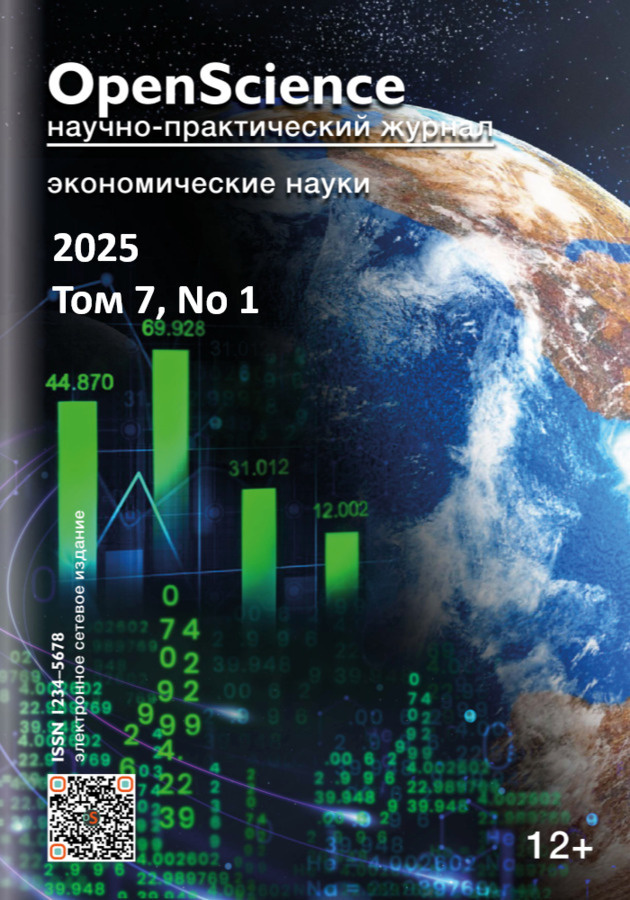
-
OpenScience
ISSN (online): 2658-7939
Founder: Research Group "Omnibus"
Editor-in-Chief: Maloletko A.N., Doctor of Sc., Full Professor
Frequency / Access: 4 issues per year /Open
Included in: Higher Attestation Commission List, RISC
-
Optics and Spectroscopy

-
Optics and Spectroscopy
ISSN (print): 0030-400X, ISSN (online): 1562-6911
Editor-in-Chief: N.N. Rosanov
Publisher: Ioffe Institute
Indexed in: RUS White List (level 2), Scopus, Web of Science (SCIE)
-
PHILHARMONICA. International Music Journal

-
PHILHARMONICA. International Music Journal
ISSN (online): 2453-613X
Founder: NB-Media Ltd
Editor-in-Chief: Azarova Valentina Vladimirovna, Doctor of Sc., Full Professor
Frequency / Assess: 4 issues per year / Open
Included in: Higher Attestation Commission list, RISC
-
Physical oceanography

-
Physical oceanography
ISSN (online): 1573-160X
Founder: Federal State Budget Scientific Institution Marine Hydrophysical Institute of RAS
Editor-in-Chief: Konovalov Sergey K., Corresponding member of RAS, Doctor of Sc.
Frequency / Assess: 6 issues per year / Open
Included in: White List (2nd level), Higher Attestation Commission List, RISC, Scopus, Web оf Science
-
Physics of the Solid State
-
Physics of the Solid State
ISSN (print): 1063-7834, ISSN (online): 1090-6460
Editor-in-Chief:
Publisher: Ioffe Institute
Indexed in: RUS White List (level 2), Scopus, Web of Science (SCIE)
-
Resources and Technology
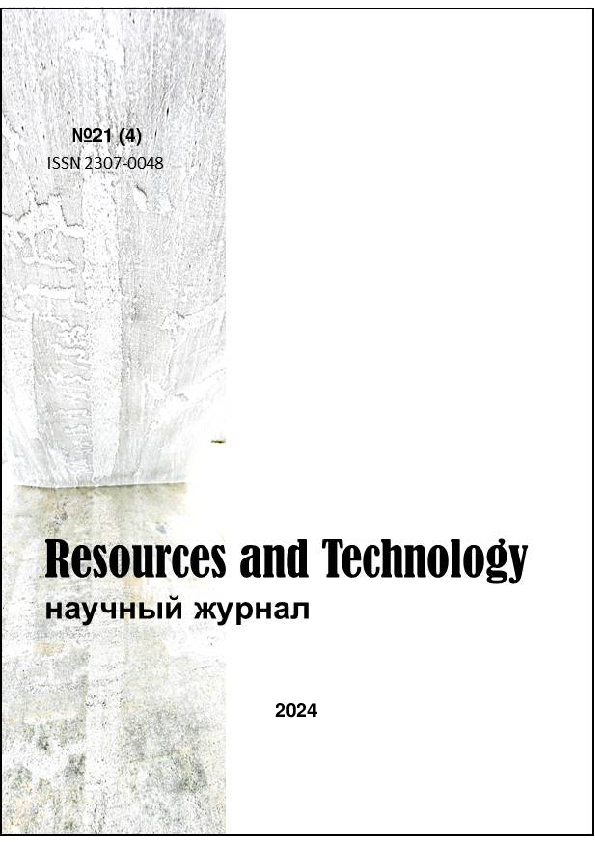
-
Resources and Technology
ISSN (online): 2307-0048
Founder: Petrozavodsk State University
Editor-in-Chief: Vasilyev Sergey, Doctor of Sc., Full Professor
Frequency / Assess: 4 issues per year / Open
Included in: Higher Attestation Commission List, RISC
-
Respublica Literaria
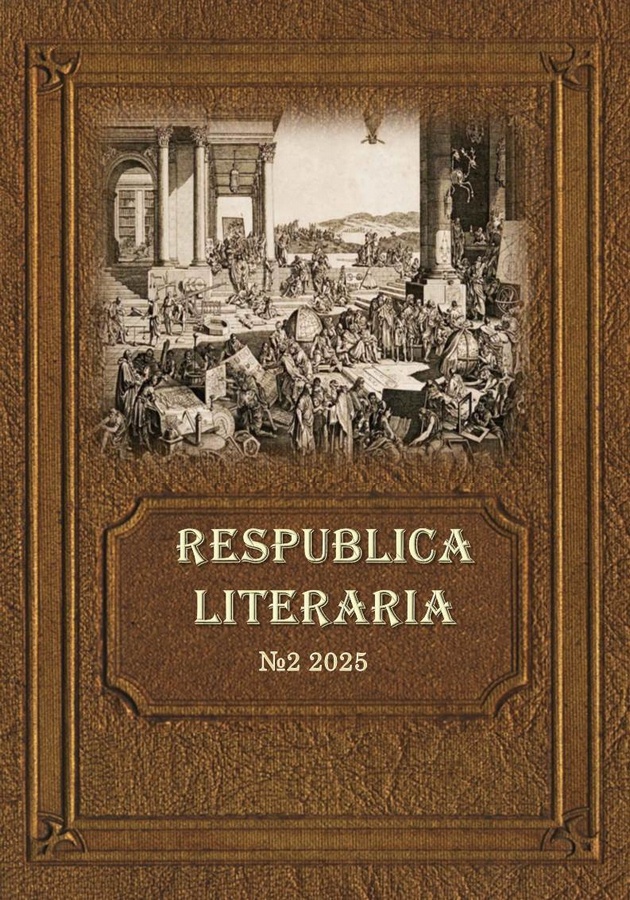
-
Respublica Literaria
ISSN (online): 2713-3125
Founder: Institute of Philosophy and Law of the Siberian Branch of the Russian Academy of Sciences (Novosibirsk)
Editor-in-Chief: Abramova Mariya Alekseevna, Doctor of Sc., Full Professor
Frequency / Assess: 4 issues per year / Open
Included in: Higher Attestation Commission list, RISC
-
Russian economic bulletin

-
Russian economic bulletin
ISSN (online): 2658-5286
Founder: Self-employed Klyueva M.M. (Belgorod)
Editor-in-Chief: Kolesnikov Andrey Viktorovich, Corresponding Member of the RAS, Doctor of Sc., Associate professor
Frequency / Assess: 6 issues per year / Open
Included in: Higher Attestation Commission list, RISC
-
Russian Journal of Building Construction and Architecture

-
Russian Journal of Building Construction and Architecture
ISSN (print): 2542-0526
Founder: Voronezh State Technical University
Editor-in-Chief: Kozlov Vladimir Anatolyevich, D. Sc.
Frequency / Assess: 4 issues per year / Open
Included in: White List (4th level), Higher Attestation Commission list, RISC
-
Russian Journal of Earth Sciences
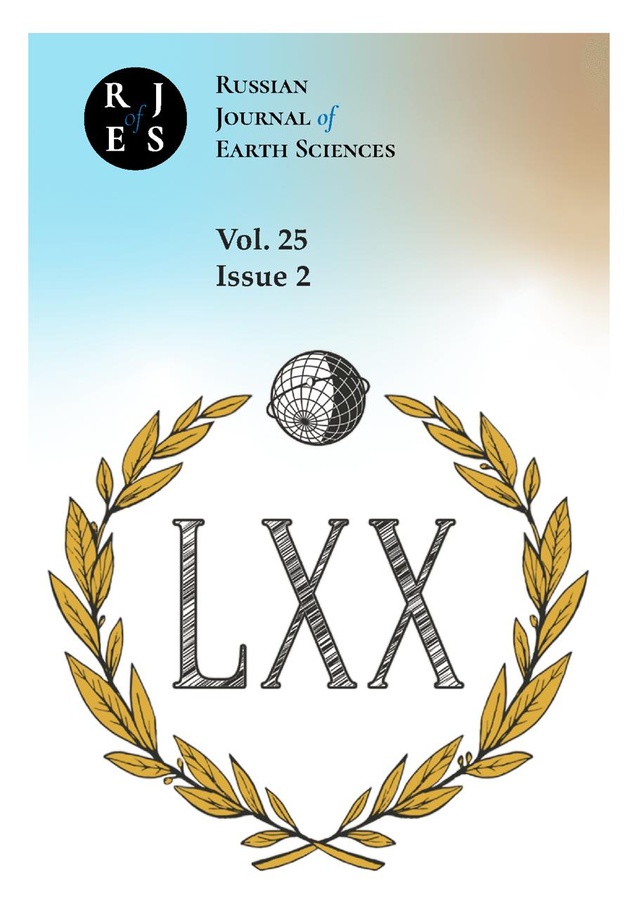
-
Russian Journal of Earth Sciences
ISSN (online): 1681-1208
Founder: Geophysical Center of the Russian Academy of Sciences
Editor-in-Chief: Alexei D. Gvishiani, academician of RAS, Doctor of Sc., Professor
Frequency / Access: 6 issues per year / Open
Included in: White List (2nd level), RISC, Scopus, Web of Science Core Collection
-
Russian Journal of Economics and Law
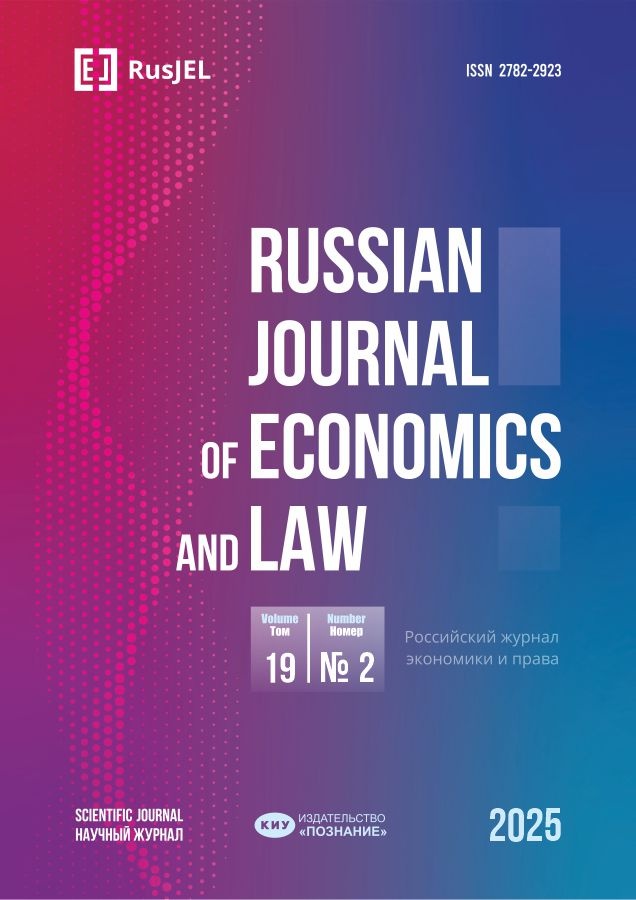
-
Russian Journal of Economics and Law
ISSN (print): 2782-2923
Founder: Private Educational Institution of Higher Education Kazan Innovative University named after V.G. Timiryasov
Editor-in-Chief: Kleyner G. B., Member of Russian Academy of Sciences, Doctor of Sc., Professor
Frequency / Access: 4 issues per year / Open
Included in: Higher Attestation Commission List, RISC
-
Russian Journal of Ecosystem Ecology
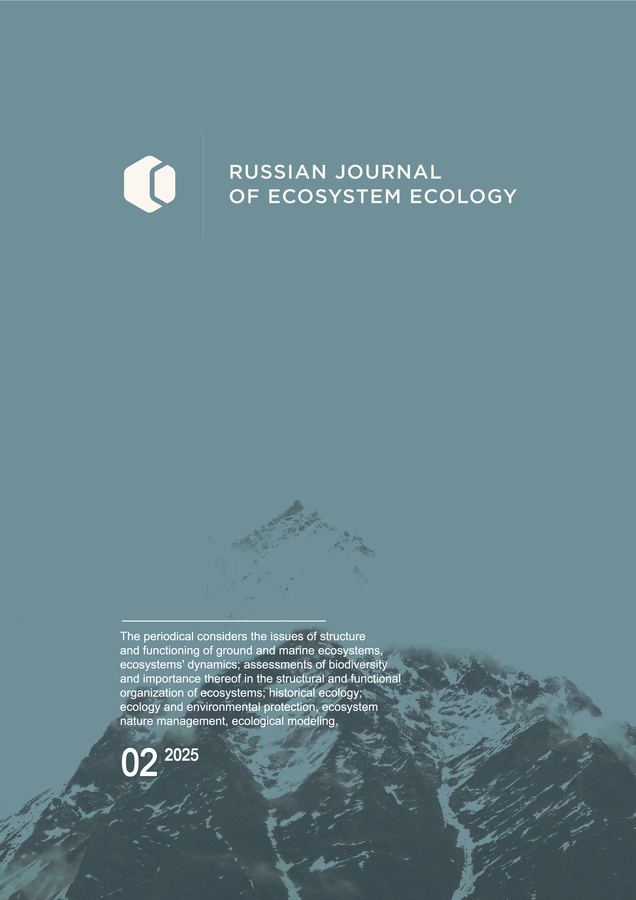
-
Russian Journal of Ecosystem Ecology
ISSN (print): 2500-0578
Founder: Penza State University
Editor-in-Chief: Smirnova Olga Vsevolodovna, Doctor of Biology. sciences, professor
Frequency / Access: 4 issues per year / Open
Included in: Higher Attestation Commission List, RISC
-
Russian Journal of Education and Psychology

-
Russian Journal of Education and Psychology
ISSN (print): 2658-4034, ISSN (online): 2782-3563
Founder and publisher: Science and Innovation Center Publishing House (Krasnoyarsk)
Editor-in-Chief: Pavel Kislyakov, Dr. Sci. (Psychology), Professor
Frequency / Access: 6 issues per year / Open
Included in: White List (2nd level), Higher Attestation Commission List, RISC
Website: https://rjep.ru
-
Russian Journal of Linguistics

-
Russian Journal of Linguistics
ISSN (print): 2687-0088, ISSN (online): 2686-8024
Founder: Peoples’ Friendship University of Russia named after Patrice Lumumba (RUDN University)
Editor-in-Chief: Tatiana Larina, Doctor of Philological Sciences, Professor
Frequency / Access: 4 issues per year / Open
Included in: White List (1st level), Higher Attestation Commission List, RISC, Scopus, Web of Science
-
Russian Journal of Nonlinear Dynamics

-
Russian Journal of Nonlinear Dynamics
ISSN (print): 2658-5324, ISSN (online): 2658-5316
Founders: Steklov Mathematical Institute of Russian Academy of Sciences; Izhevsk Institute of Computer Science
Editor-in-Chief: Ivan Mamaev, Doctor of Physics and Mathematics, Full Professor
Frequency / Access: 4 issues per year / Open
Included in: White list (1st level), RISC, MathNet, Scopus
-
Russian Musicology

-
Russian Musicology
ISSN (online): 3034-3836
Founder: Russian Gnessin Academy of Music
Editor-in-Chief: Alexander S. Ryzhinsky, Dr.Sci. (Arts), Professor
Frequency / Access: 4 issues per year / Open
Included in: RISC, Web of Science (ESCI)
-
Russian Studies in Culture and Society
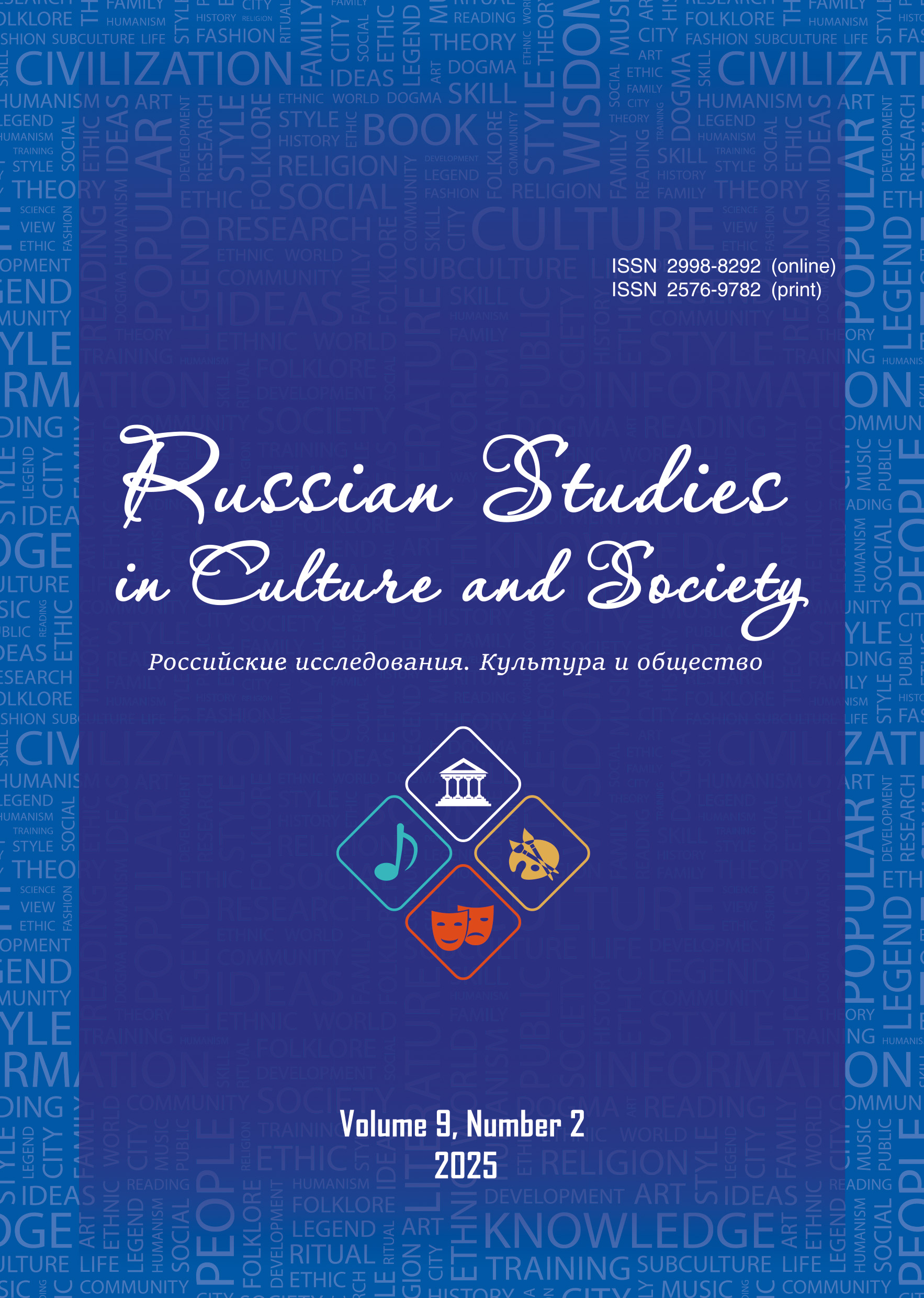
-
Russian Studies in Culture and Society
ISSN (print): 2576-9782, ISSN (online): 2998-8292
Founder: Science and Innovation Center Publishing House
Editor-in-Chief: Galina S. Shirokalova, Doctor of Sociology, Ph.D., Professor
Frequency / Access: 4 issues per year / Open
Included in: White List (4th level), Higher Attestation Commission List, RISC
Website: https://csjournal.ru/
-
Russian Studies in Law and Politics

-
Russian Studies in Law and Politics
ISSN (print): 2576-9634, ISSN (online): 2998-8284
Founder: Science and Innovation Center Publishing House
Editor-in-Chief: Valentina M. Bolshakova, Ph.D., Associate professor
Frequency / Access: 4 issues per year / Open
Included in: White List (4th level), Higher Attestation Commission List, RISC
Website: https://lpjournal.ru/
-
SENTENTIA. European Journal of Humanities and Social Sciences

-
SENTENTIA. European Journal of Humanities and Social Sciences
ISSN (online): 1339-3057
Founder: NB-Media Ltd
Editor-in-Chief: Danilenko Denis, Doctor of Sc.
Frequency / Assess: 6 issues per year / Open
Included in: RISC
-
Semiconductors
-
Semiconductors
ISSN (print): 1063-7826, ISSN (online): 1090-6479
Editor-in-Chief: S.V. Ivanov
Publisher: Ioffe Institute
Indexed in: RUS White List (level 3), Scopus, Web of Science (SCIE)
-
Siberian Journal of Life Sciences and Agriculture
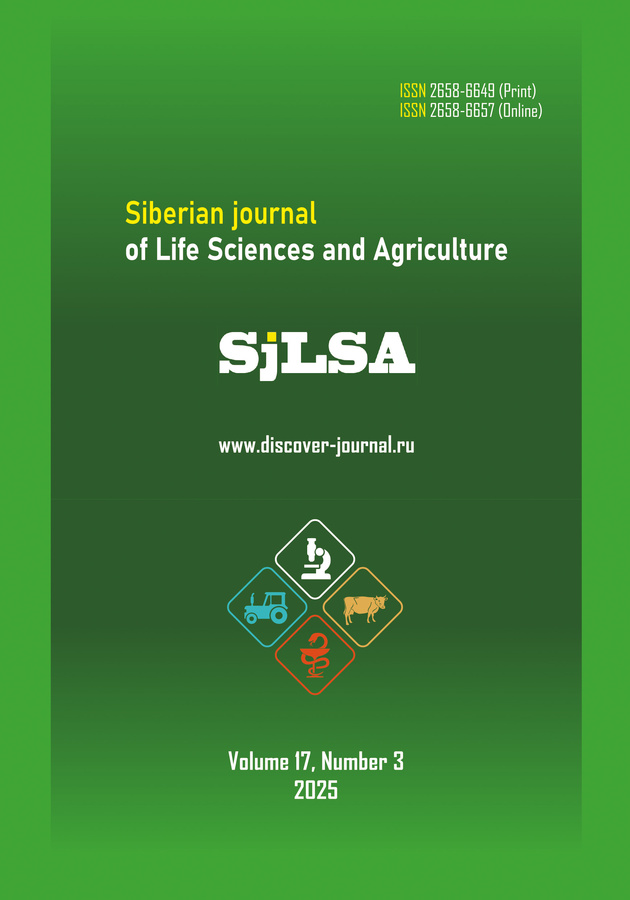
-
Siberian Journal of Life Sciences and Agriculture
ISSN (print): 2658-6649, ISSN (online): 2658-6657
Founder: Science and Innovation Center Publishing House (Krasnoyarsk)
Editor-in-Chief: Sergey K. Soldatov, Doctor of Sc. (Medicine), Professor
Frequency / Access: 6 issues per year / Open
Included in: White List (2nd level), Higher Attestation Commission List, RISC, Scopus
Website: https://discover-journal.ru/
-
Solar-Terrestrial Physics

-
Solar-Terrestrial Physics
ISSN (online): 2500-0535
Founders: Siberian Branch of RAS; Institute of Solar-Terrestrial Physics SB RAS
Editor-in-Chief: Zherebtsov Geliy, Academician of RAS, Doctor of Physical and Mathematical Sciences
Frequency / Access: 4 issues per year / Open
Included in: White List (2nd level), Higher Attestation Commission List, RISC
-
Technical Physics
-
Technical Physics
ISSN (print): 1063-7842, ISSN (online): 1090-6525
Editor-in-Chief: Zabrodskii Andrei Georgievich
Publisher: Ioffe Institute
Indexed in: RUS White List (level 2), Scopus, Web of Science (SCIE)
-
Technical Physics Letters
-
Technical Physics Letters
ISSN (print): 1063-7850, ISSN (online): 1090-6533
Editor-in-Chief: Victor M. Ustinov
Publisher: Ioffe Institute
Indexed in: RUS White List (level 2), Scopus, Web of Science (SCIE)
-
The BRICS Health Journal

-
The BRICS Health Journal
ISSN (print): 3034-4700, ISSN (online): 3034-4719
Founder: Federal State Autonomous Educational Institution of Higher EducationI.M. Sechenov First Moscow State Medical University of the Ministry of Healthacare of the Russian Federation (Sechenovskiy University)
Editor-in-Chief: Murashko Mikhail A., Doctor of Sc., Full Professor
Frequency / Assess: 4 issues per year / Open
Included in: RISC
-
Training, Language and Culture

-
Training, Language and Culture
ISSN (print): 2520-2073, ISSN (online): 2521-442X
Founder: Peoples’ Friendship University of Russia named after Patrice Lumumba (RUDN University)
Editor-in-Chief: Elena N. Malyuga, Doctor of Philological Sciences, Professor
Frequency / Access: 4 issues per year / Open
Included in: White List (2nd level), Higher Attestation Commission List, RISC, Scopus
-
XXI Century. Technosphere Safety

-
XXI Century. Technosphere Safety
ISSN (print): 2500-1582, ISSN (online): 2500-1574
Founder: Irkutsk National Research Technical University
Editor-in-Chief: Svetlana S. Timofeeva, Doctor of Technical Sciences
Frequency / Access: 4 issues per year / Open
Included in: RISC
-
Written Monuments of the Orient

-
Written Monuments of the Orient
ISSN (print): 2410-0145
Founder: Institute of Oriental Manuscripts RAS
Editor-in-Chief: Irina Popova
Frequency / Assess: 2 issues per year / Open
Included in: White List (4th level), RISC, Scopus
-
Avtomatizaciâ i izmereniâ v mašino-priborostroenii

-
Avtomatizaciâ i izmereniâ v mašino-priborostroenii
ISSN (print): 2658-4727
Founder: Sevastopol state university
Editor-in-Chief: Kopp V.Ya., Doctor of Sc., Professor
Frequency / Access: 4 issues per year / Open
Included in: Higher Attestation Commission List, RISC
-
Automation and Modelling in Design and Management

-
Automation and Modelling in Design and Management
ISSN (print): 2658-3488, ISSN (online): 2658-6436
Founder: Bryansk State Technical University
Editor-in-Chief: Averchenkov Vladimir Ivanovich, Doctor of Sc., Associate Professor
Frequency / Assess: 4 issues per year / open
Included in: Higher Attestation Commission List, RISC
-
Automation and Telemechanics

-
Automation and Telemechanics
ISSN (print): 0005-2310, ISSN (online): 2413-9777
Founders: Institute for Information Transmission Problems of RAS, Institute of Control Sciences of RAS, Russian Academy of Sciences (RAS)
Editor-in-Chief: Galyaev Andrey Alekseevich, corresponding member RAS, Doctor of Sc., Full Professor
Frequency / Access: 12 issues per year / Subscription
Included in: White List (2nd level), Higher Attestation Commission List, RISC
-
Agrarian Bulletin of the North Caucasus

-
Agrarian Bulletin of the North Caucasus
ISSN (print): 2949-4796
Founder: Stavropol State Agricultural University
Editor-in-Chief: Kvochko Andrey N., Doctor of Sc., Full Professor
Frequency / Assess: 4 issues per year / Open
Included in: Higher Attestation Commission list, RISC
-
Agro-Industrial Technologies of Central Russia

-
Agro-Industrial Technologies of Central Russia
ISSN (print): 2541-7835
Founder: Bunin Yelets State University
Editor-in-Chief: Gulidova Valentina Andreevna, Doctor of Sc., Full Professor
Frequency / Assess: 4 issues per year / Open
Included in: Higher Attestation Commission List, RISC
-
Agricultural Chemistry
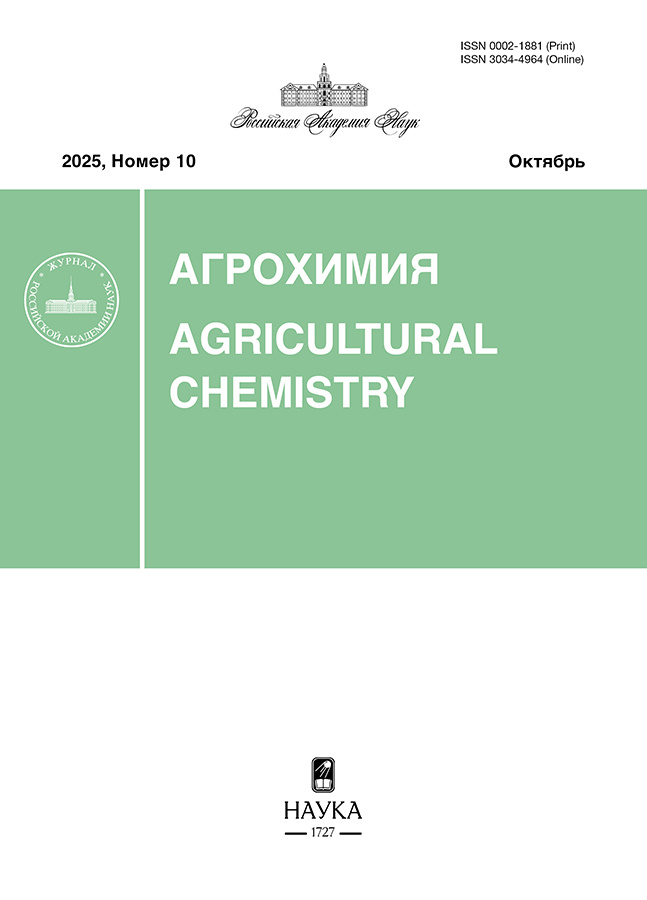
-
Agricultural Chemistry
ISSN (print): 0002-1881
Founder: Russian Academy of Sciences
Editor-in-Chief: Glinushkin Aleksej Pavlovich, academician RAS, Doctor of Sc., Full Professor
Frequency / Access: 12 issues per year / Subscription
Included in: White list (1st level), Higher Attestation Commission List, RISC
-
Administrative and municipal law

-
Administrative and municipal law
ISSN (print): 1999-2807, ISSN (online): 2454-0595
Founder: NB-Media Ltd.
Editor-in-Chief: Uvarov Alexander Anatolyevich, Doctor of Sc., Full Professor
Frequency / Assess: 6 issues per year / Open
Included in: Higher Attestation Commission list, RISC
-
PACIFIC RIM: Economics, Politics, Law

-
PACIFIC RIM: Economics, Politics, Law
ISSN (print): 1813-3274, ISSN (online): 2499-9474
Founder: Far Eastern Federal University
Editor-in-Chief: Alexander I. Korobeev, Doctor of Juridical Sciences, Professor
Frequency / Access: 4 issues per year / Open
Included in: Higher Attestation Commission List, RISC
-
Asia and Africa Today
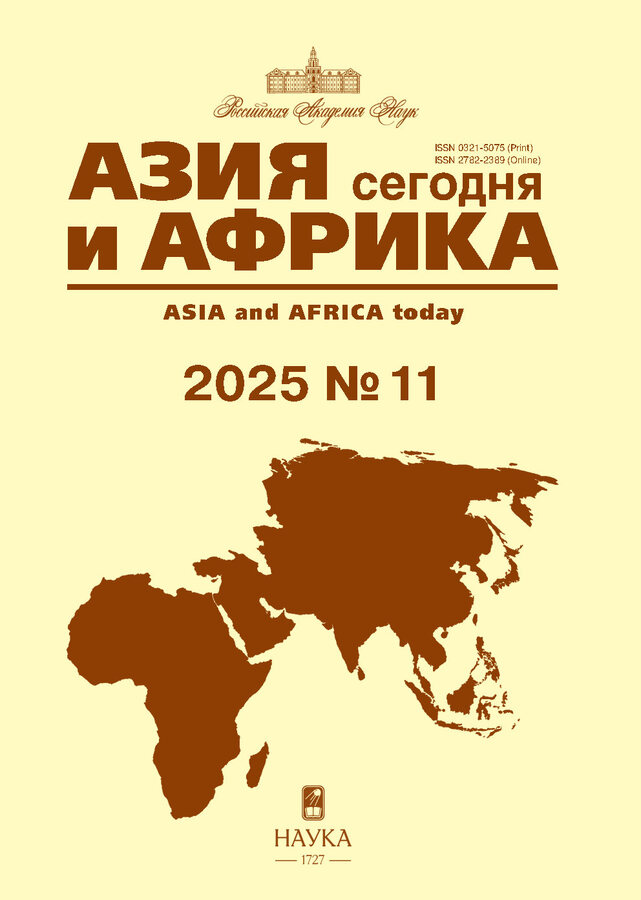
-
Asia and Africa Today
ISSN (print): 0321-5075, ISSN (online): 2782-2389
Founders: Russian Academy of Sciences, Institute of Oriental Studies RAS, Institute for African Studies
Editor-in-Chief: Alexei M. Vasiliev, academician RAS, Doctor of Sc., Full Professor
Frequency / Access: 12 issues per year / Subscription
Included in: White list (3rd level), Higher Attestation Commission list, RISC
-
ASIA, AMERICA AND AFRICA: HISTORY AND MODERNITY

-
ASIA, AMERICA AND AFRICA: HISTORY AND MODERNITY
ISSN (online): 2782-540X
Founder: Krasnoyarsk regional public organization «Commonwealth of Educators of Krasnoyarsk Krai»
Editor-in-Chief: Koptseva Natalia Petrovna, Dr. Sc., Professor
Frequency / Assess: 4 issues per year / Subscription
Included in: Higher Attestation Commission list, RISC
-
Akademicheskij vestnik URALNIIproekt RAASN

-
Akademicheskij vestnik URALNIIproekt RAASN
ISSN (print): 2074-2932, ISSN (online): 2782-5213
Founder: Federal State Budgetary Institution «TsNIIP of the Ministry of Construction of Russia»
Editor-in-Chief: Vladimir Gennadievich Veniaminov
Frequency / Assess: 4 issues per year / Open
Included in: Higher Attestation Commission List, RISC
-
Academic Research Journal

-
Academic Research Journal
ISSN (online): 3034-6665
Founder: Individual entrepreneur Podkolzin M.M.
Editor-in-Chief: Zeveleva Elena Alexandrovna, Doctor of Historical Sciences, professor
Frequency / Access: 4 issues per year / Subscription
Included in: RISC
-
Modern trends in biological physics and chemistry

-
Modern trends in biological physics and chemistry
ISSN (print): 2499-9962
Founder: Sevastopol state university
Editor-in-chief: Evstigneev Maksim, Doctor of Sc., Professor
Frequency / Access: 4 issues per year / Open
Included in: RISC
-
Current Directions of Scientific Research of the XXI Century: Theory and Practice

-
Current Directions of Scientific Research of the XXI Century: Theory and Practice
ISSN (print): 2308-8877
Founder: Voronezh State University of Forestry and Tecnologies named after G.F. Morozov
Editor-in-Chief: Bugakov Vladimir Mikhailovich, Doctor of Sc., Professor
Frequency / Assess: 4 issues per year / Open
Included in: Higher Attestation Commission list, RISC
-
Current Issues of the State and Law

-
Current Issues of the State and Law
ISSN (print): 2587-9340, ISSN (online): 2782-3334
Founder: Derzhavin Tambov State University
Editor-in-Chief: Angelina V. Lapaeva, Cand. Sci. (Law), Associate Professor
Frequency / Access: 4 issues per year / Open
Included in: Higher Attestation Commission List, RISC
-
Actual Problems of Oil and Gas

-
Actual Problems of Oil and Gas
ISSN (online): 2687-0312
Founder: Oil and Gas Research Institute Russian Academy of Sciences
Editor-in-Chief: Zakirov Ernest S., Doctor of Sc., Full Professor
Frequency / Assess: 4 issues per year / Open
Included in: White List (2nd level), Higher Attestation Commission list, RISC
-
Current Issues in Philology and Pedagogical Linguistics

-
Current Issues in Philology and Pedagogical Linguistics
ISSN (print): 2079-6021, ISSN (online): 2619-029X
Founder: North Ossetian State University
Editor-in-Chief: Tatiana Yu. Tameryan, Dr. habil (Philology), Professor
Frequency / Assess: 4 issues per year / Open
Included in: Higher Attestation Commission List, RISC
-
Acoustical Physics
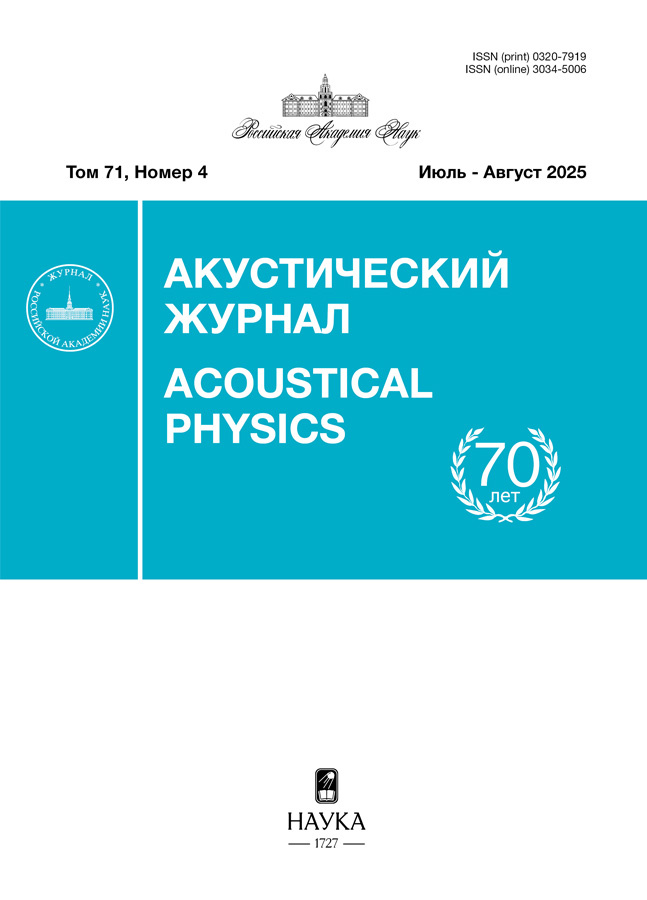
-
Acoustical Physics
ISSN (print): 0320-7919
Founder: Russian Academy of Sciences
Editor-in-Chief: Igor B. Esipov, Doctor of Sc., Full Professor
Frequency / Access: 6 issues per year / Subscription
Included in: White List (2nd level), Higher Attestation Commission List, RISC
-
Акушерство, Гинекология и Репродукция
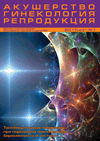
-
Акушерство, Гинекология и Репродукция
ISSN (print): 2313-7347, ISSN (online): 2500-3194
Founder: Limited Liability Company IRBIS
Editor-in-Chief: Makatsariya Alexander Davidovich, Academician of Russian Academy of Sciences, Doctor of Sc., Professor
Frequency / Access: 6 issues per year / Open
Included in: White List (1st level), Higher Attestation Commission List, RISC, Scopus
-
Obstetrics and Gynecology

-
Obstetrics and Gynecology
ISSN (print): 0300-9092, ISSN (online): 2412-5679
Founders: Federal State Institution "Research Center for Obstetrics, Gynecology and Perinatology" Ministry of Healthcare of Russian Federation; All-Russian public organization "Russian Society of Obstetricians and Gynecologists"
Editor-in-Chief: Sukhikh G.T., Doctor of Sc., Full Professor
Frequency / Assess: 12 issues per year / Subscription
Included in: White List (3rd level), Higher Attestation Commission List, RISC, Scopus
-
Almanac of Clinical Medicine
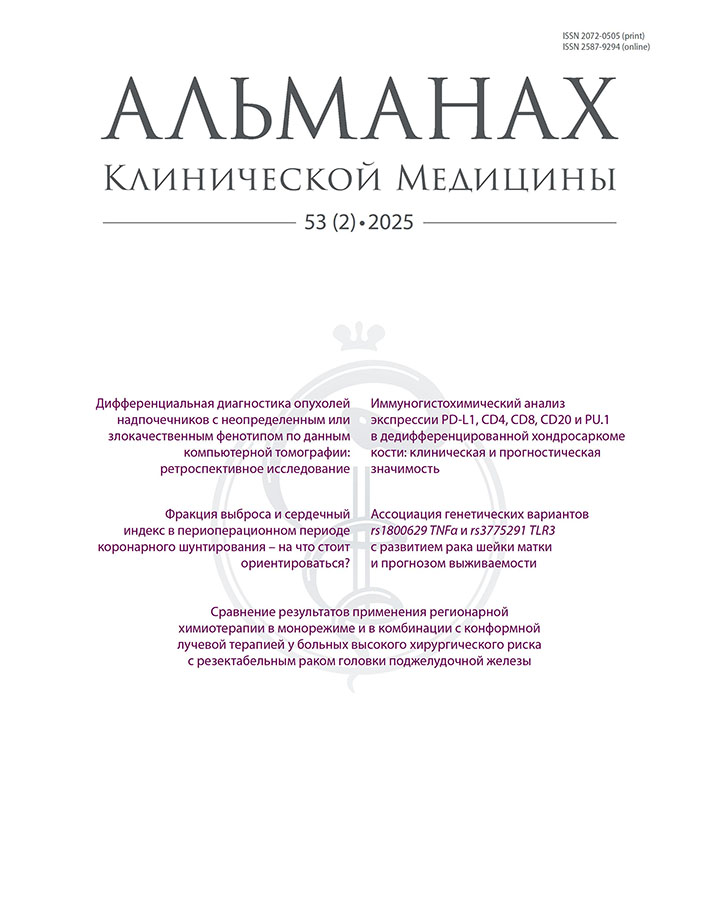
-
Almanac of Clinical Medicine
ISSN (print): 2072-0505, ISSN (online): 2587-9294
Учредитель: Moscow Regional Research and Clinical Institute (MONIKI)
Editor-in-Chief: Maria G. Glezer, Doctor of Sc., Professor
Frequency / Access: 8 issues per year / Open
Included in: White List (3rd level), Higher Attestation Commission List, RISC, Scopus
-
Almanac of modern metrology
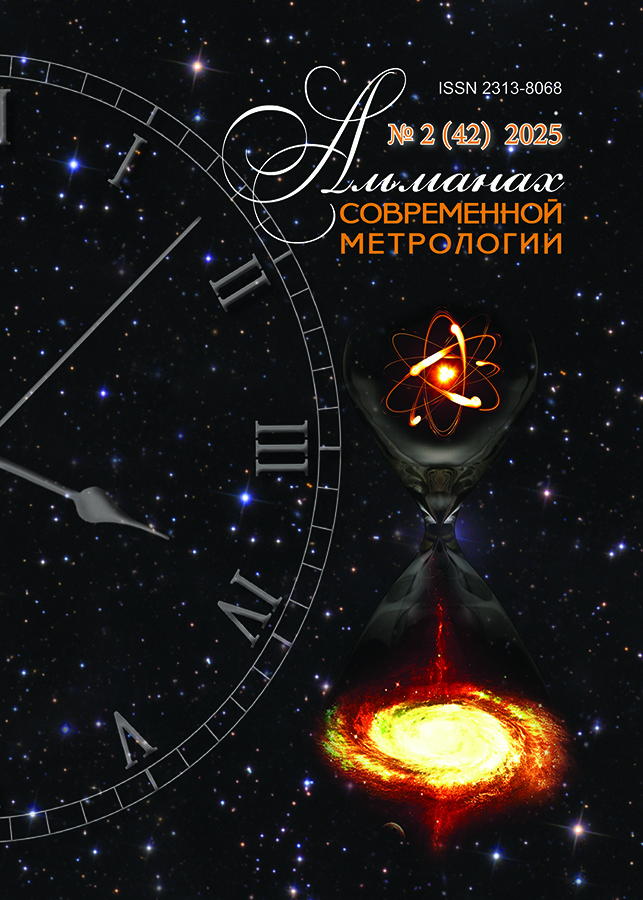
-
Almanac of modern metrology
ISSN (print): 2313-8068
Founder: Russian Metrological Institute of Technical Physics and Radio Engineering
Editor-in-Chief: Donchenko Sergey Ivanovich, Doctor of Technical Science, Professor
Frequency / Access: 4 issues per year / Subscription
Included in: Higher Attestation Commission List, RISC
-
Analiz i prognoz. Žurnal IMÈMO RAN

-
Analiz i prognoz. Žurnal IMÈMO RAN
ISSN (online): 2713-170X
Founder: “Primakov National Research Institute of World Economy and International Relations, Russian Academy of Sciences (IMEMO)”
Editor-in-Chief: Irina Prokhorenko
Frequency / Assess: 4 issues per year / Open
Included in: Higher Attestation Commission list, RISC
-
Annals of Clinical and Experimental Neurology

-
Annals of Clinical and Experimental Neurology
ISSN (print): 2075-5473, ISSN (online): 2409-2533
Founder: Research Center of Neurology
Editor-in-Chief: Prof. Mikhail Piradov
Frequency / Access: 4 issues per year / Open
Included in: White List (3rd level),Higher Attestation Commission List, RISC, Scopus
-
Antibiotics and chemoterapy

-
Antibiotics and chemoterapy
ISSN (print): 0235-2990
Founders: Ministry of Health RF, State Scientific Research Center of Antibiotics and Personalized Therapy
Editor-in-Chief: Sergey V. Sidorenko, Corresponding member of the RAS, Doctor of Sc., Full Professor
Frequency / Access: 6 issues per year / Open
Included in: White List (4th level), RISC, Scopus
-
Arctic and Antarctica

-
Arctic and Antarctica
ISSN (online): 2453-8922
Founder: NB-Media Ltd
Editor-in-Chief: Vasilchuk Yuri Kirillovich, Doctor of Sc., Full Professor
Frequency / Assess: 4 issues per year / Open
Included in: Higher Attestation Commission list, RISC
-
Arctic and North

-
Arctic and North
ISSN (online): 2221-2698
Founder: Northern (Arctic) Federal University named after M.V. Lomonosov
Editor-in-Chief: Zaikov Konstantin S., Doctor of Sc., Full Professor
Frequency / Assess: 4 issues per year / Open
Included in: RUS White List (level 2), RISC
-
Arterial hypertension

-
Arterial hypertension
ISSN (print): 1607-419X, ISSN (online): 2411-8524
Founder: Almazov National Medical Research Centre
Editor-in-chief: Aleksandra O. Konradi, Doctor of Sc., Professor
Frequency / Access: 6 issues per year / Open
Included in: White List (3rd level), Higher Attestation Commission List, RISC, Scopus
-
V.F.Snegirev Archives of Obstetrics and Gynecology
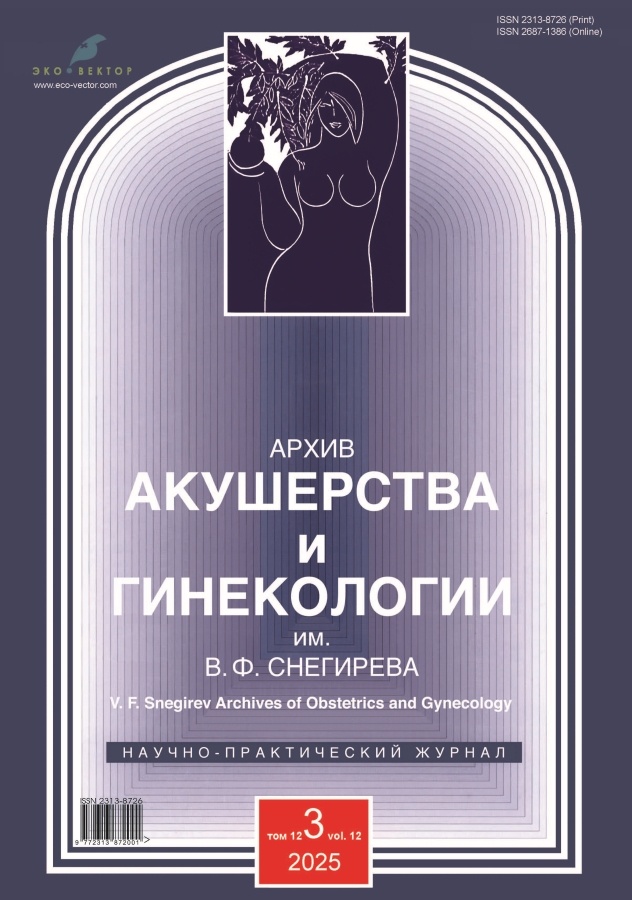
-
V.F.Snegirev Archives of Obstetrics and Gynecology
ISSN (print): 2313-8726, ISSN (online): 2687-1386
Founder: Joint Stock Company "Publishing house "Medicina", Limited Liability Company "Eco-Vector"
Editor-in-Chief: prof. Elena A. Sosnova, MD, Dr. Sci. (Med.)
Frequency / Access: 4 issues per year / Hybrid
Included in: Higher Attestation Commission List, RISC
-
Architecture, Construction, Transport

-
Architecture, Construction, Transport
ISSN (print): 2782-232X, ISSN (online): 2713-0770
Founder: Industrial University of Tyumen
Editor-in-Chief: Tatyana V. Maltseva, Doctor of Physical and Mathematical Sciences, Professor
Frequency / Access: 4 issues per year / Open
Included in: Higher Attestation Commission List, RISC
-
Architecture and design

-
Architecture and design
ISSN (online): 2585-7789
Founder: NB-Media Ltd
Editor-in-Chief: Slabukha Aleksandr Vasilievich, PhD, Full Professor
Frequency / Assess: 4 issues per year / Open
Included in: Higher Attestation Commission list, RISC
-
Aspirantskiy Vestnik Povolzhiya

-
Aspirantskiy Vestnik Povolzhiya
ISSN (print): 2072-2354, ISSN (online): 2410-3764
Founder: Association of the Samara Region Universities "Samara Regional Scientific and Educational Complex"
Editor-in-Chief: Full member of Russian Academy of Sciences, professor G.P. Kotelnikov
Frequency / Access: 4 issues per year / Open
Included in: Higher Attestation Commission List, RISC
-
Astronomy Reports
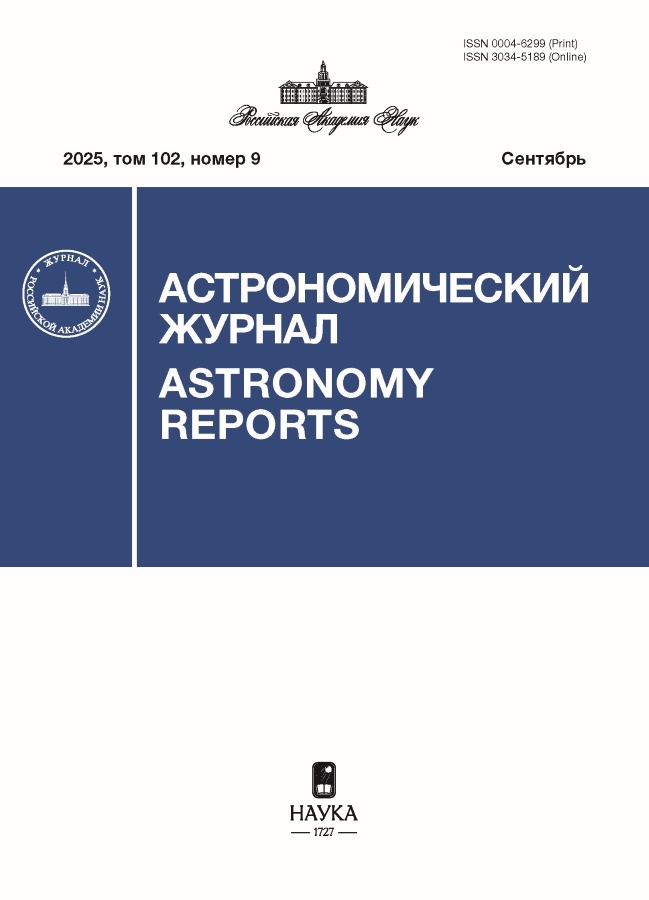
-
Astronomy Reports
ISSN (print): 0004-6299
Founders: Russian Academy of Sciences (RAS), Institute of Astronomy of the Russian Academy of Sciences
Editor-in-Chief: Dmitry V. Bisikalo
Frequency / Access: 12 issues per year / Open
Included in: White List (2nd level), Higher Attestation Commission List, RISC
-
Solar System Research
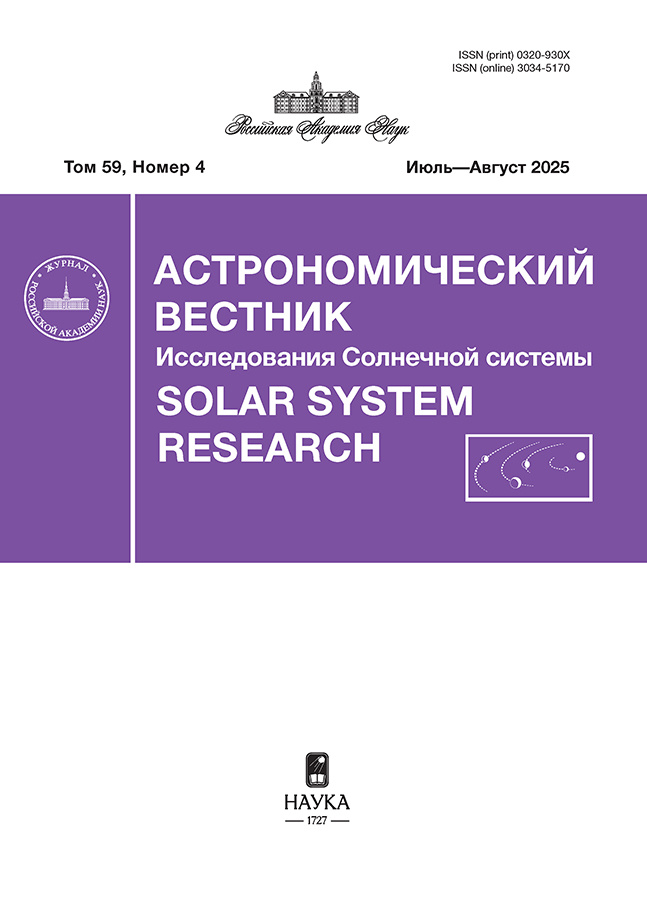
-
Solar System Research
ISSN (print): 0320-930X
Founders: Russian Academy of Sciences, Keldysh Institute of Applied Mathematics
Editor-in-Chief: Marov Mihail Y., academician RAS, Doctor of Sc., Full Professor
Frequency / Access: 6 issues per year / Subscription
Included in: White list (3rd level), Higher Attestation Commission List, RISC
-
Audit journal

-
Audit journal
ISSN (print): 1727-8058, ISSN (online): 2782-3903
Founder: ANO NI ON
Editor-in-Chief: V. Sokolov, Doctor of Sc., Professor
Frequency / Access: 4 issues per year / Subscription
Included in: Higher Attestation Commission List, RISC
-
Aerospace engineering and technology

-
Aerospace engineering and technology
ISSN (online): 2949-401X
Founder: BSTU «VOENMEH» named after D.F. Ustinov
Editor-in-Chief: Mikhail Chernyshov, Corresponding Member of RARAS, Doctor of Sc., Professor
Frequency / Assess: 4 issues per year / Open
Included in: RISC
-
Baltic Economic Journal

-
Baltic Economic Journal
ISSN (print): 2073-3364
Founder: Kaliningrad State Technical University
Editor-in-Chief: Karlov Anatoly Mikhailovich, Doctor of Sc., Full Professor
Frequency / Assess: 4 issues per year / Open
Included in: Higher Attestation Commission list, RISC
-
Russian Journal of Bakhtin Studies

-
Russian Journal of Bakhtin Studies
ISSN (online): 2658-5480
Founder and publisher: National Research Ogarev Mordovia State University
Editor-in-Chief: Natalya I. Voronina, Dr.Sci. (Philos.)., Professor
Frequency / Access: 2 issues per year / Open
Included in: RISC
-
Beton i železobeton

-
Beton i železobeton
ISSN (print): 0005-9889, ISSN (online): 3034-1302
Founder: Association "Reinforced Concrete"
Editor-in-Chief: Zvezdov Andrey I., Doctor of Sc., Full Professor
Frequency / Assess: 6 issues per year / Open
Included in: Higher Attestation Commission List, RISC
-
Bibliografiâ i knigovedenie

-
Bibliografiâ i knigovedenie
ISSN (print): 2411-2305
Founder: Russain State Library
Editor-in-Chief: Sukhorukov Konstantin M., Cand. Sci. (History)
Frequency / Assess: 6 issues per year / Subscription
Included in: Higher Attestation Commission List, RISC
-
Bibliotekovedenie

-
Bibliotekovedenie
ISSN (print): 0869-608X, ISSN (online): 2587-7372
Founder: Russain State Library
Editor-in-Chief: Alexander Yu. Samarin, Doctor of Sc., Associate Professor
Frequency / Assess: 4 issues per year / Subscription
Included in: Higher Attestation Commission List, RISC
-
Business Informatics

-
Business Informatics
ISSN (print): 1998-0663, ISSN (online): 2587-8166
Founder: National Research University Higher School of Economics
Editor-in-Chief: Zaramenskikh Evgeny P.
Frequency / Assess: 4 issues per year / Open
Included in: White List (2nd level), Higher Attestation Commission List, RISC
-
Biznes-transformaciâ: upravlenie ulučšeniâmi

-
Biznes-transformaciâ: upravlenie ulučšeniâmi
ISSN (online): 2949-2548
Founder: Yugra State University
Editor-in-Chief: Lebedeva Ilona Dmitrievna
Frequency / Assess: 4 issues per year / Open
Included in: RISC
-
Membrane and Cell Biology

-
Membrane and Cell Biology
ISSN (print): 0233-4755
Founder: Russian Academy of Sciences (RAS)
Editor-in-Chief: Kolesnikov Stanislav Sergeevich
Frequency / Access: 6 issues per year / Subscription
Included in: White List (3rd level), Higher Attestation Commission List, RISC, Scopus, Web of Science Core Collection
-
Inland Water Biology
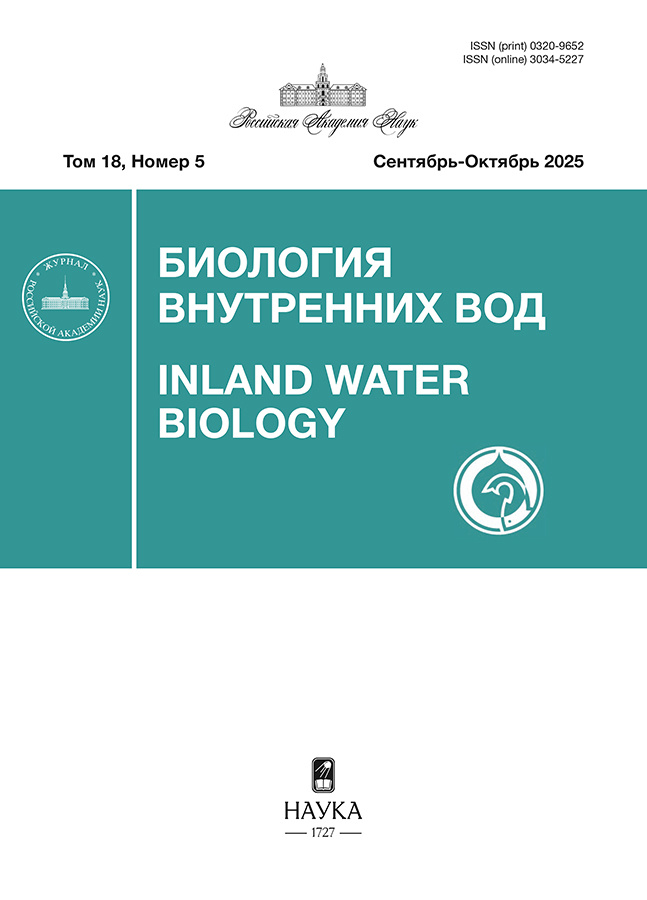
-
Inland Water Biology
ISSN (print): 0320-9652
Founders: Hydrobiological Society of RAS, Papanin Institute for Biology of Inland Waters RAS
Editor-in-Chief: Krylov Aleksandr Vitalevich, Doctor of Sc., Full Professor
Frequency / Access: 6 issues per year / Subscription
Included in: White list (3rd level), Higher Attestation Commission list, RISC
-
Russian Journal of Marine Biology

-
Russian Journal of Marine Biology
ISSN (print): 0134-3475
Founders: Russian Academy of Sciences
Editor-in-chief: Dolmatov Igor Yurjevich, Doctor of Sc., Full Professor
Frequency / Access: 6 issues per year / Subscription
Included in: White list (3rd level), Higher Attestation Commission list, RISC
-
Biomedicinskaâ radioèlektronika

-
Biomedicinskaâ radioèlektronika
ISSN (print): 1560-4136
Founder: Limited Liability Company "Publishing House "Radiotekhnika"
Editor-in-Chief: Gulyaev Yu.V., Academican of RAS, Doctor of Sc., Full Professor
Frequency / Access: 6 issues per year /Hybrid
Included in: White List (4th level), Higher Attestation Commission List, RISC
-
Russian Journal of Bioorganic Chemistry

-
Russian Journal of Bioorganic Chemistry
ISSN (print): 0132-3423, ISSN (online): 1998-2860
Founders: Russian Academy of Sciences (RAS), Shemyakin & Ovchinnikov Institute of Bioorganic Chemistry of RAS
Editor-in-chief: Kochetkov Sergey Nikolaevich, academician RAS, Doctor of Sc., Full Professor
Frequency / Access: 6 issues per year / Subscription
Included in: White list (2nd level), Higher Attestation Commission list, RISC
-
Biophysics
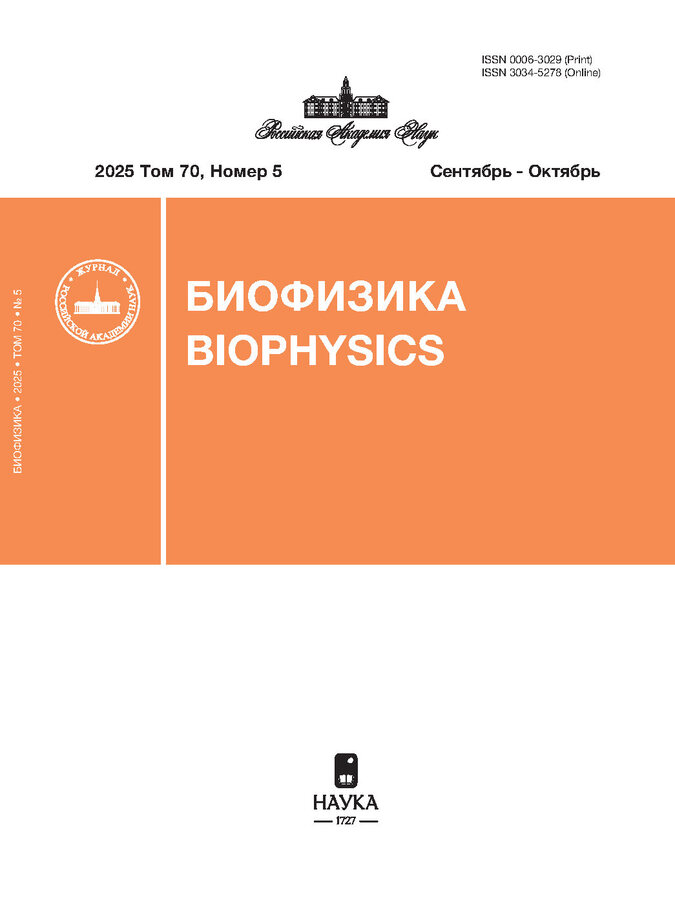
-
Biophysics
ISSN (print): 0006-3029
Founders: Russian Academy of Sciences, Institute of Cell Biophysics of RAS
Editor-in-Chief: Grabarnik Pavel YAkovlevich, Doctor of Sc.
Frequency / Access: 6 issues per year / Subscription
Included in: White list (3rd level), Higher Attestation Commission list, RISC
-
Biochemistry

-
Biochemistry
ISSN (print): 0320-9725
Founder: Russian Academy of Sciences
Editor-in-Chief: Dontsova Olga Anatolyevna, academician of the Russian Academy of Sciences, Professor, Doctor of Chemical Sciences
Frequency / Access: 12 issues per year / Subscription
Included in: White List (2nd level), Higher Attestation Commission List, RISC
-
Theological Collection of the Tambov Theological Seminary

-
Theological Collection of the Tambov Theological Seminary
ISSN (print): 2687-072X
Founder: Religious organization – theological educational organization of higher education “Tambov Theological Seminary of the Tambov Diocese of the Russian Orthodox Church”
Editor-in-Chief: Feodosy (S. I. Vasnev), Metropolitan of Tambov and Rasskazovo, Doctor of Theology, PhD in Theology
Frequency / Assess: 4 issues per year / Open
Included in: Higher Attestation Commission list, RISC
-
Botanical Journal
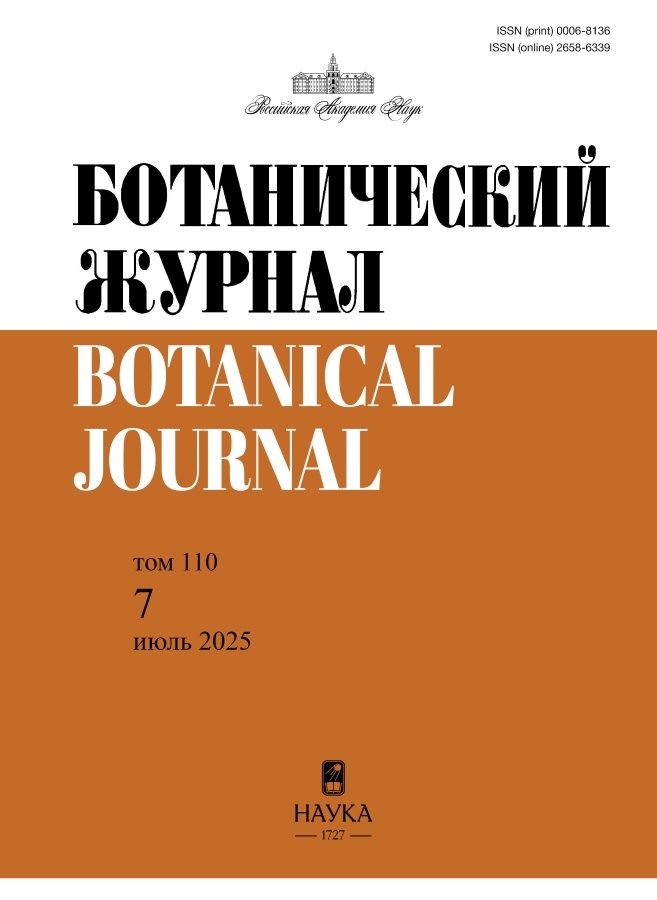
-
Botanical Journal
ISSN (print): 0006-8136, ISSN (online): 2658-6339
Founders: Russian Academy of Sciences, Russian Botanical Society
Editor-in-chief: Averyanov Leonid Vladimirovich, Doctor of Sc.
Frequency / Access: 12 issues per year / Subscription
Included in: White list (3rd level), Higher Attestation Commission list, RISC, Scopus
-
Bulletin of medical science

-
Bulletin of medical science
ISSN (print): 2541-8475
Founder: Altai State Medical University
Editor-in-Chief: Sheremetyeva Irina Igorevna, Doctor of Sc., Full Professor
Frequency / Assess: 4 issues per year / Open
Included in: Higher Attestation Commission List, RISC
-
Bulletin physiology and pathology of respiration

-
Bulletin physiology and pathology of respiration
ISSN (print): 1998-5029
Founder: Far Eastern Scientific Center of Physiology and Pathology of Respiration
Editor-in-Chief: Kolosov Victor P., Academician RAS, Doctor of Sc., Full Professor
Frequency / Access: 4 issues per year / Open
Included in: White List (4th level), Higher Attestation Commission List, RISC
-
Bulletin of experimental biology and medicine

-
Bulletin of experimental biology and medicine
ISSN (print): 0365-9615, ISSN (online): 2413-1008
Founder: RAMS Publishing House
Editor-in-Chief: Chekhonin V.P., Academician of RAS, Doctor of Sc., Full Professor
Frequency / Assess: 12 issues per year / Subscription
Included in: White List (3rd level), Higher Attestation Commission List, RISC, Scopus
-
Journal of Wellbeing Technologies

-
Journal of Wellbeing Technologies
ISSN (online): 2658-4956
Founder: National Research Tomsk Polytechnic University
Editor-in-Chief: Galina A. Barysheva, Doctor of Economics sciences, professor of TPU
Frequency / Access: 4 issues per year / Open
Included in: Higher Attestation Commission List, RISC
-
Verhnevolzhski philological bulletin

-
Verhnevolzhski philological bulletin
ISSN (print): 2499-9679
Founder: Yaroslavl state pedagogical university
Editor-in-Chief: Novikov Mikhail Vasilievich, Doctor of Sc., Full Professor
Frequency / Assess: 4 issues per year / Open
Included in: Higher Attestation Commission list, RISC
-
The Bulletin of the Adyghe State University. Series “Economics”

-
The Bulletin of the Adyghe State University. Series “Economics”
ISSN (print): 2410-3683
Founder: Adyghe State University
Editor-in-Chief: Khunagov Rashid Dumalichevich , Doctor of Sc., Full Professor
Frequency / Assess: 4 issues per year / Open
Included in: Higher Attestation Commission List, RISC
-
Vestnik Altajskogo gosudarstvennogo agrarnogo universiteta

-
Vestnik Altajskogo gosudarstvennogo agrarnogo universiteta
ISSN (print): 1996-4277
Founder: Altai State Agricultural University
Editor-in-Chief: N.A. Kolpakov, Dr. Agr. Sci., Assoc. Prof.
Frequency / Assess: 12 issues per year / Open
Included in: Higher Attestation Commission list, RISC
-
Journal of arrhythmology

-
Journal of arrhythmology
ISSN (print): 1561-8641, ISSN (online): 2658-7327
Founders: Almazov National Medical Research Centre; NP Saint-Petersburg Society of Cardiologists
Editors-in-chief: Revishvili Amiran Shotaevich, Academician of RAS, Doctor of Sc., Professor; Shlyakhto Evgeny Vladimirovich, Academician of RAS, Doctor of Sc., Professor
Frequency / Access: 4 issues per year / Open
Included in: White List (4th level), Higher Attestation Commission List, RISC, Scopus
-
Herald of VNIIDAD
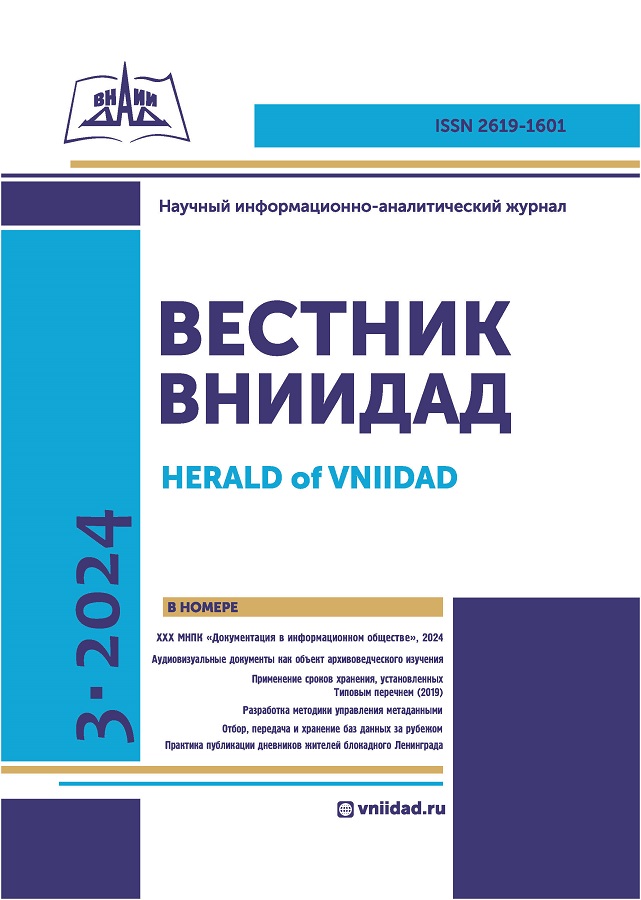
-
Herald of VNIIDAD
ISSN (print): 2619-1601
Founder: All-Russian Scientific and Research Institute for Records and Archives Manangement
Editor-in-Chief: Küng Pavel Alekseevich, Ph.D. ist. sciences
Frequency / Access: 6 issues per year / open
Included in: Higher Attestation Commission List, RISC
-
Journal of Volgograd State Medical University
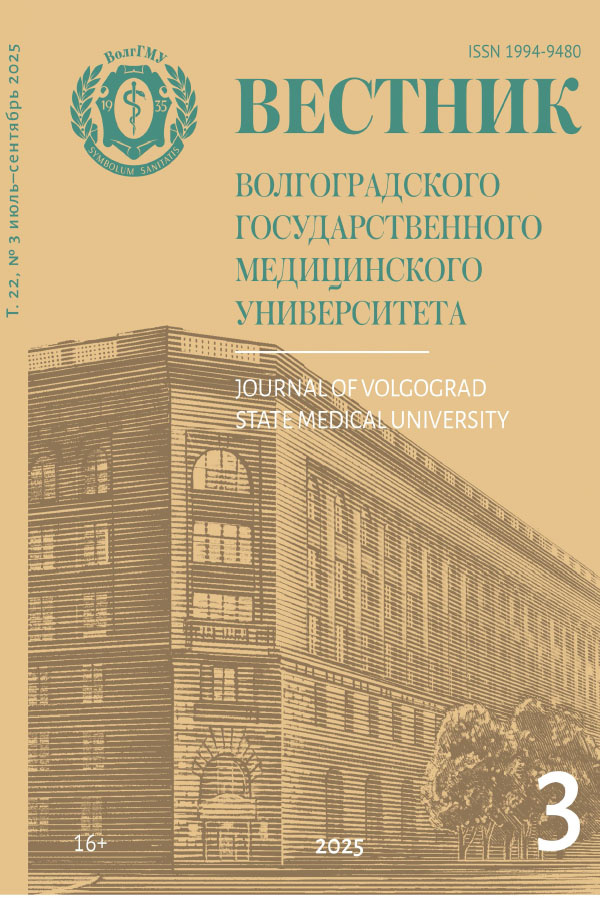
-
Journal of Volgograd State Medical University
ISSN (print): 1994-9480, ISSN (online): 1994-9499
Founder: Volgograd State Medical University
Editor-in-Chief: Vladimir I. Petrov, academician of RAS, Doctor of Sc., Full Professor
Frequency / Access: 4 issues per year / Open
Included in: White List (4th level), Higher Attestation Commission List, RISC
-
Bulletin of Voronezh State Technical University

-
Bulletin of Voronezh State Technical University
ISSN (print): 1729-6501, ISSN (online): 2782-4624
Founder: Voronezh State Technical University
Editor-in-Chief: Petrenko V.R., Doctor of Sc. (Technical), Professor
Frequency / Access: 4 issues per year / Open
Included in: Higher Attestation Commission List, RISC
-
Vestnik of geosciences
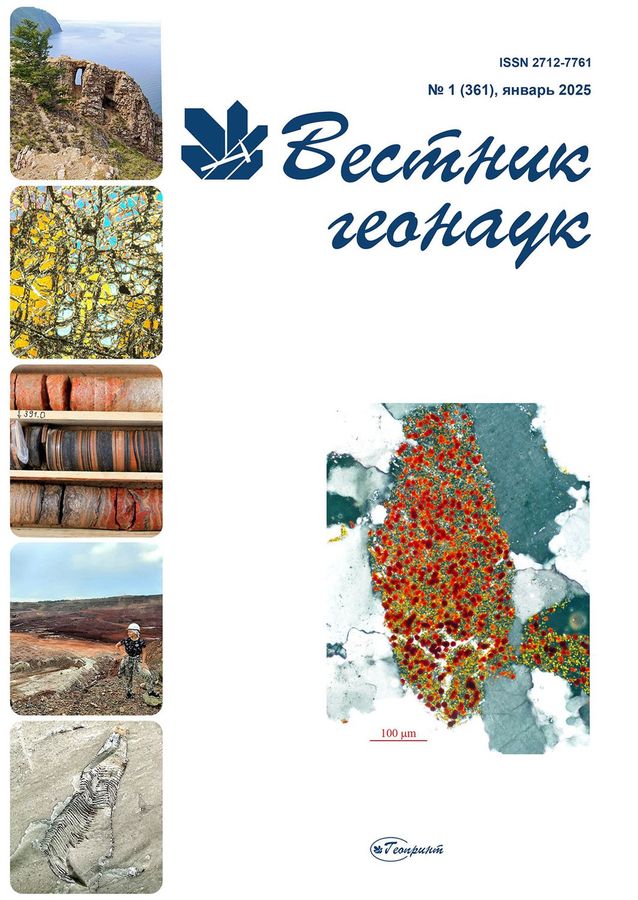
-
Vestnik of geosciences
ISSN (print): 2712-7761
Founder: Komi Science Centre of the Ural Branch of the Russian Academy of Sciences
Editor-in-Chief: Askhabov A.M., academician RAS, Doctor of Sc.
Frequency / Access: 12 issues per year / Open
Included in: Higher Attestation Commission List, RISC
-
Vestnik of the Far East Branch of the Russian Academy of Sciences
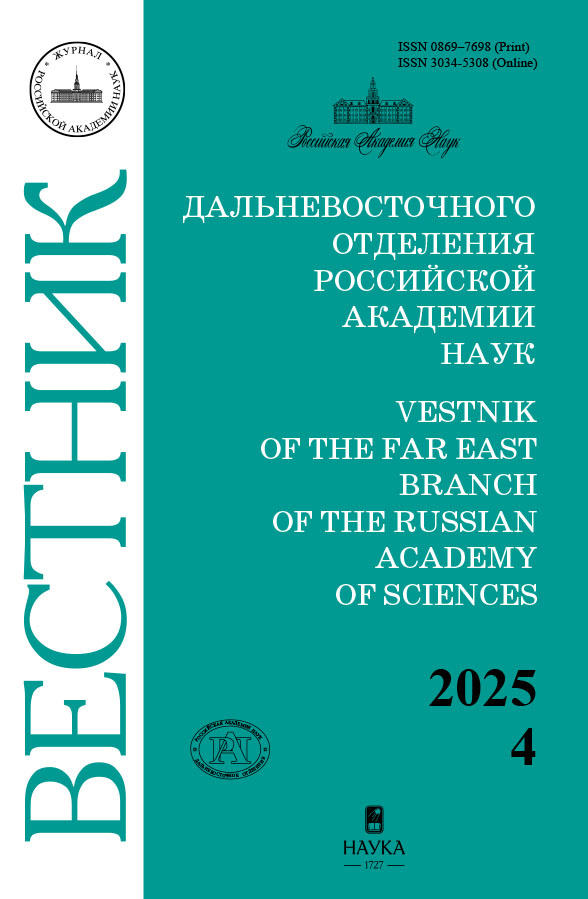
-
Vestnik of the Far East Branch of the Russian Academy of Sciences
ISSN (print): 0869-7698
Founders: Far East Branch of Russian Academy of Sciences, Central Scientific Library, Far Eastern Branch of the Russian Academy of Sciences
Editor-in-Chief: Kulchin Yuri Nikolaevich, Academician of RAS, Doctor of Sc., Professor
Frequency / Access: 6 issues per year / Open
Included in: Higher Attestation Commission List, RISC
-
Vestnik dermatologii i venerologii
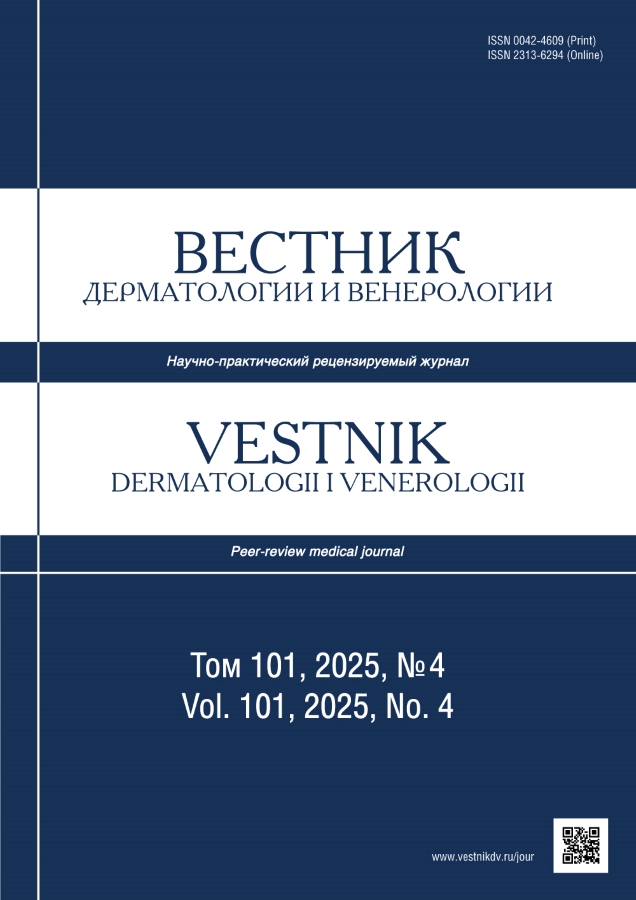
-
Vestnik dermatologii i venerologii
ISSN (print): 0042-4609, ISSN (online): 2313-6294
Founder: State Scientific Center of Dermatovenereology and Cosmetology, Russian Society of Dermatovenerologists and Cosmetologists
Editor-in-Chief: A.A. Kubanov, academician of RAS, Doctor of Sc., Professor
Frequency / Access: 4 issues per year / Open
Included in: White List (3rd level), Higher Attestation Commission List, RISC, Scopus
-
Vestnik drevney istorii
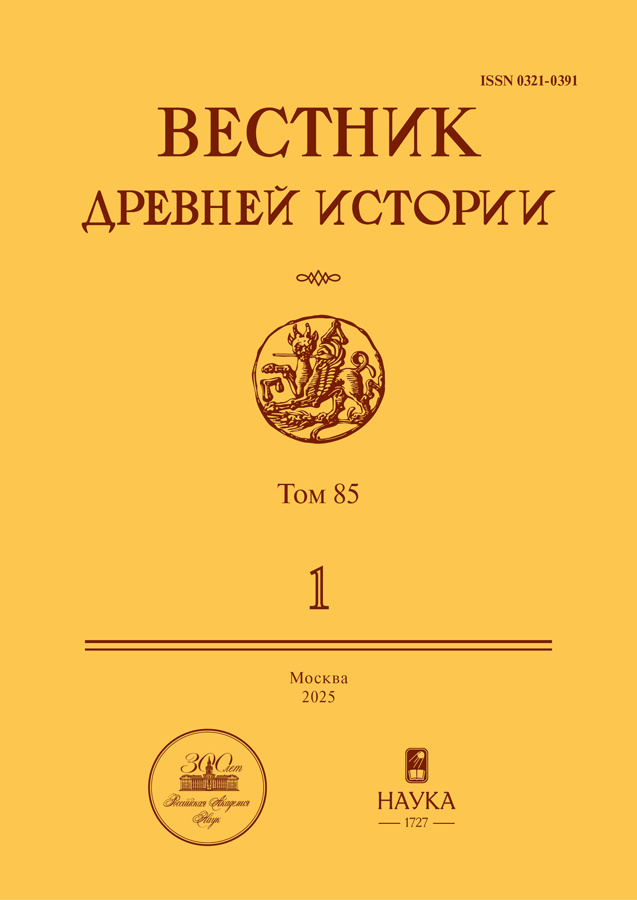
-
Vestnik drevney istorii
ISSN (print): 0321-0391
Founders: Institute of General History of RAS, Russian Academy of Sciences
Editor-in-Chief: Ivanchik Askold Igorevich, corresponding member RAS, Doctor of Sc., Full Professor
Frequency / Access: 4 issues per year / Subscription
Included in: White list (1st level), Higher Attestation Commission list, RISC, Scopus, Web of Science Core Collection
-
Transbaikal State University journal

-
Transbaikal State University journal
ISSN (print): 2227-9245, ISSN (online): 2500-1728
Founder: Federal state budgetary educational establishment of higher education "Transbaikal State University"
Editor-in-Chief: Gorodkova Svetlana Aleksandrovna, Doctor of Sc., Professor
Frequency / Assess: 4 issues per year / Open
Included in: Higher Attestation Commission list, RISC
-
Ivanovo State University Bulletin. Series The Humanities

-
Ivanovo State University Bulletin. Series The Humanities
ISSN (print): 2219-5254, ISSN (online): 2500-2791
Founder: Ivanovo State University
Editor-in-Chief: Tyuleneva E.M., Doctor of Psychological Sciences, Professor
Frequency / Access: 4 issues per year / Open
Included in: Higher Attestation Commission List, RISC
-
FEFU: School of Engineering Bulletin

-
FEFU: School of Engineering Bulletin
ISSN (online): 2227-6858
Founder: Far Eastern Federal University
Editor-in-Chief: Bekker Aleksander T., Academician of the RAACS, Doctor of Sc., Full Professor
Frequency / Access: 4 issues per year / Open
Included in: Higher Attestation Commission List, RISC
-
Bulletin of the Institute of Sociology
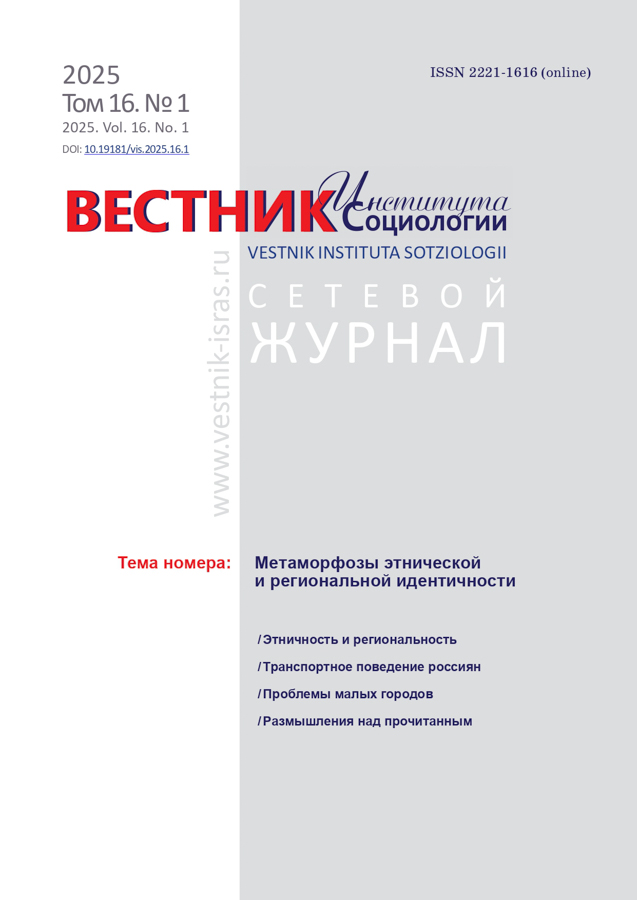
-
Bulletin of the Institute of Sociology
ISSN (online): 2221-1616
Founder: Federal Center of Theoretical and Applied Sociology of the Russian Academy of Sciences (FCTAS RAS)
Editor-in-Chief: Mikhail K. Gorshkov, Academician RAS
Frequency / Access: 4 issues per year / Open
Included in: White list (2nd level), Higher Attestation Commission List, RISC
-
Vestnik Instituta ekonomiki RAN

-
Vestnik Instituta ekonomiki RAN
ISSN (online): 2073-6487
Founder: Institute of Economics of the Russian Academy of Sciences
Editor-in-Chief: Svetlana V. Kozlova, Dr. Sci. (Econ.)
Frequency / Access: 6 issues per year / Open
Included in: White List (1st level), Higher Attestation Commission List (K1), RSCI, RISC
-
Bulletin of Historical Sciences

-
Bulletin of Historical Sciences
ISSN (online): 3034-2325
Founder: Individual entrepreneur IP Klyuev Sergey Vasilievich
Editor-in-Chief: Boyko Natalia Semenovna, Doctor of Historical Sciences
Frequency / Access: 4 issues per year / Open
Included in: RISC
-
Vestnik Kazanskogo gosudarstvennogo universiteta kulʹtury i iskusstv

-
Vestnik Kazanskogo gosudarstvennogo universiteta kulʹtury i iskusstv
ISSN (print): 1812-0547
Founder: Kazan State Institute of Culture
Editor-in-Chief: Akmadieva Roza Shayhaydarovna, Dr. Sci., Prof.
Frequency / Assess: 4 issues per year / Open
Included in: Higher Attestation Commission list, RISC
-
Vestnik Kazanskogo gosudarstvennogo tehničeskogo universiteta im. A.N. Tupoleva

-
Vestnik Kazanskogo gosudarstvennogo tehničeskogo universiteta im. A.N. Tupoleva
ISSN (print): 2078-6255
Founder: Kazan National Research Technical University after A.N.Tupolev-KAI
Editor-in-Chief: Gortyshov Yuri Fedorovich, Dr. Sc., Proffesor
Frequency / Assess: 4 issues per year / Subscription
Included in: Higher Attestation Commission list, RISC
-
Bulletin KRASEC. Physical and Mathematical Sciences
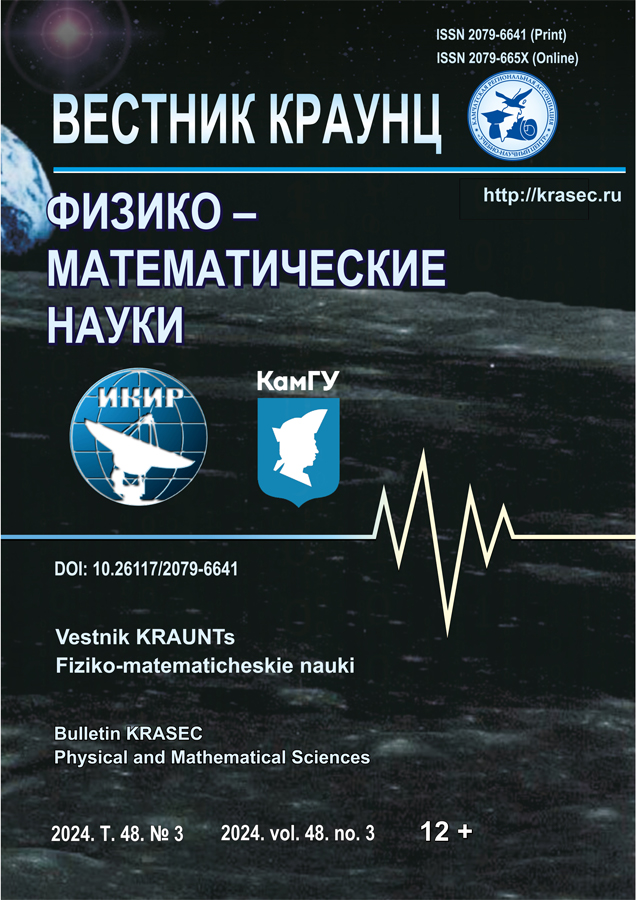
-
Bulletin KRASEC. Physical and Mathematical Sciences
ISSN (print): 2079-6641, ISSN (online): 2079-665X
Founders: Kamchatka State University named after Vitus Bering, Institute of Cosmophysical Research and Radio Wave Propagation of the Far Eastern Branch of the Russian Academy of Sciences
Editor-in-Chief: Yuri Valentinovich Marapulets, Doctor of Physics and Mathematics. Sciences, Associate Professor
Frequency / access: 4 issues per year / Оpen
Included in: list of Higher Attestation Commission, RSCI, MathSciNet, zbMath, MathNet, EBSCO, WorldCat, VINITI, Ulrich Periodical
-
Bulletin of cultural and art studies

-
Bulletin of cultural and art studies
ISSN (online): 3034-4727
Founder: Individual entrepreneur Klyuev Sergey Vasilyevich (Belgorod)
Editor-in-Chief: Kanokova F.Yu., Doctor of Sc., Associate professor
Frequency / Assess: 4 issues per year / Open
Included in: RISC
-
Vestnik Marijskogo gosudarstvennogo universiteta

-
Vestnik Marijskogo gosudarstvennogo universiteta
ISSN (print): 2072-6783, ISSN (online): 2686-8679
Founder: Mari State University
Editor-in-Chief: Kondratenko Elena Valentinovna, Professor
Frequency / Assess: 4 issues per year / Open
Included in: Higher Attestation Commission List, RISC
-
Vestnik of the Mari State University. Chapter History, law

-
Vestnik of the Mari State University. Chapter History, law
ISSN (print): 2411-3522
Founder: Mari State University
Editor-in-Chief: Galina V. Rokina, Dr. Sci. (History), Professor
Frequency / Assess: 4 issues per year / Open
Included in: Higher Attestation Commission List, RISC
-
Vestnik of the Mari State University. Chapter Economics, agriculture

-
Vestnik of the Mari State University. Chapter Economics, agriculture
ISSN (print): 2411-9687
Founder: Mari State University
Editor-in-Chief: Galina A. Batalova, Academician of the RAS
Frequency / Assess: 4 issues per year / Open
Included in: Higher Attestation Commission List, RISC
-
Vestnik MGSU
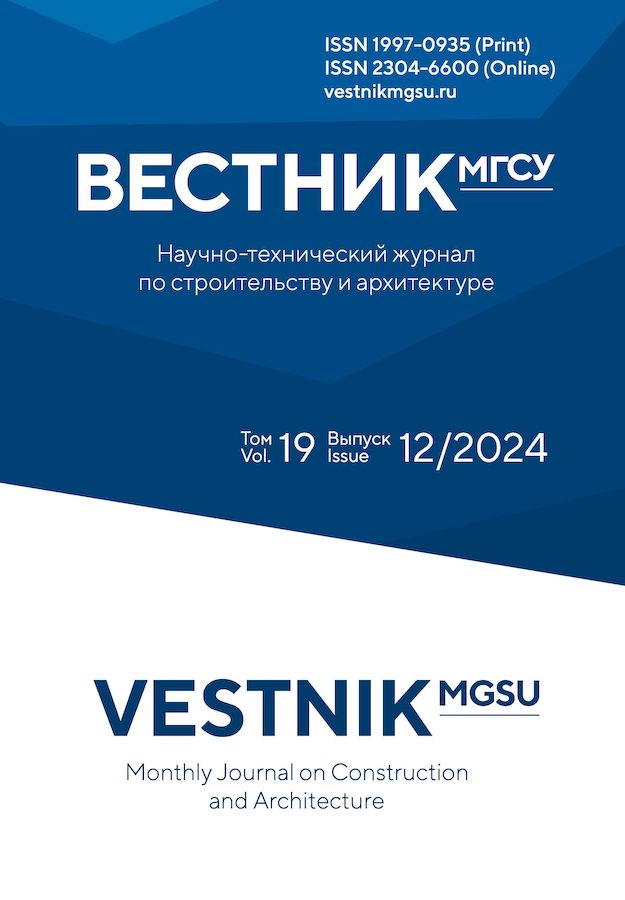
-
Vestnik MGSU
ISSN (print): 1997-0935, ISSN (online): 2304-6600
Founder: Moscow State University Of Civil Engineering (National Research University)
Editor-in-Chief: Valery I. Telichenko, Academician of RAACS, Doctor of Sc., Full Professor
Frequency / Access: 12 issues per year / Open
Included in: White List (3rd level), Higher Attestation Commission List, RISC
-
Vestnik MGTU

-
Vestnik MGTU
ISSN (print): 1560-9278, ISSN (online): 1997-4736
Founder: Murmansk Arctic University
Editor-in-Chief: Yulia V. Shokina, Academician of the International Academy of Refrigeration, Doctor of Sc., Professor
Frequency / Access: 4 issues per year / Open
Included in: Higher Attestation Commission List, RISC
-
Vestnik MSTU "Stankin"

-
Vestnik MSTU "Stankin"
ISSN (print): 2072-3172
Founder: Moscow State University of Technology «STANKIN»
Editor-in-Chief: Alexey Vyacheslavovich Kapitanov, Doctor of Sc.
Frequency / Access: 4 issues per year / Open
Included in: Higher Attestation Commission List, RISC
-
International Organisations Research Journal

-
International Organisations Research Journal
ISSN (print): 1996-7845, ISSN (online): 2542-2081
Founder: National Research University Higher School of Economics
Editor-in-Chief: Larionova M.V., Doctor of Sc.
Frequency / Assess: 4 issues per year / Open
Included in: White List (1sd level), Higher Attestation Commission List, RISC, Scopus
-
Vestnik metrologa

-
Vestnik metrologa
ISSN (print): 2413-1806
Founder: Russian Metrological Institute of Technical Physics and Radio Engineering
Editor-in-Chief: Viktor N. Khramenkov, Doctor of Engineering Sciences, Professor
Frequency / Access: 4 issues per year / Subscription
Included in: Higher Attestation Commission List, RISC
-
Journal of youth science

-
Journal of youth science
ISSN (online): 2541-8254
Founder: Kaliningrad State Technical University
Editor-in-Chief: Kostrikova Natalya Anatol'evna, PhD in Physics and Mathematics, Associate professor
Frequency / Assess: 5 issues per year / Open
Included in: RISC
-
Vestnik molodih ucenih Sankt-Peterburgskogo gosudarstvennogo universiteta tehnologii i dizajna

-
Vestnik molodih ucenih Sankt-Peterburgskogo gosudarstvennogo universiteta tehnologii i dizajna
ISSN (print): 2312-2048, ISSN (online): 2414-5653
Founder: Saint Petersburg State University of Industrial Technologies and Design
Editor-in-Chief: A.G. Makarov
Frequency / Assess: 4 issues per year / subscription
Included in: RISC
-
Vestnik of Moscow State Linguistic University. Humanities
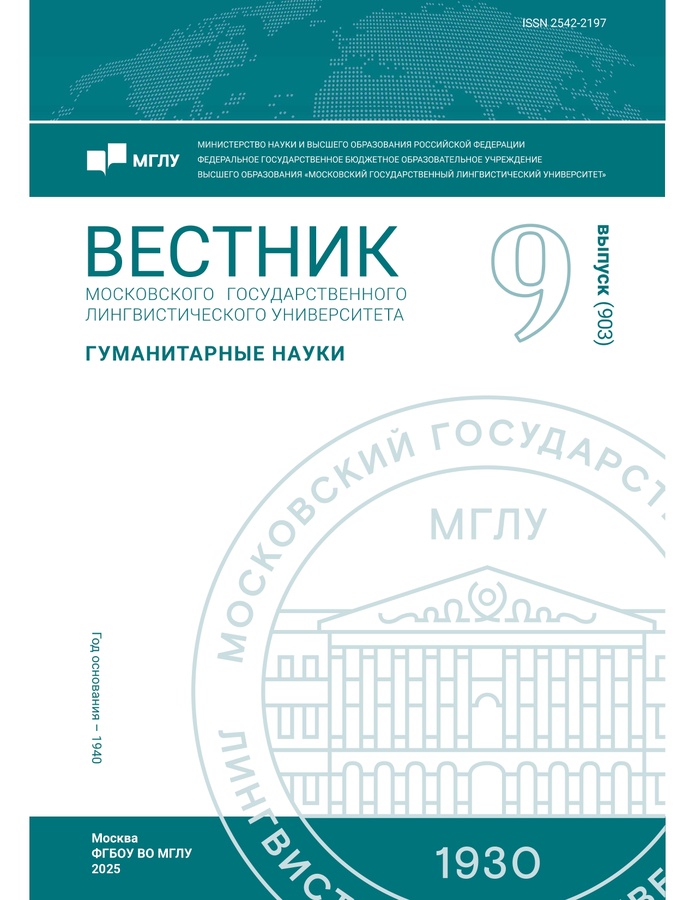
-
Vestnik of Moscow State Linguistic University. Humanities
ISSN (online): 2542-2197
Founder: Moscow State Linguistic University
Editor-in-Chief: Alexey I. Gorozhanov, Dr. of Philology (Dr.habil.), associate professor
Frequency / Access: 12 issues per year / Open
Included in: Higher Attestation Commission List, RISC
-
Vestnik of Moscow State Linguistic University. Education and Teaching
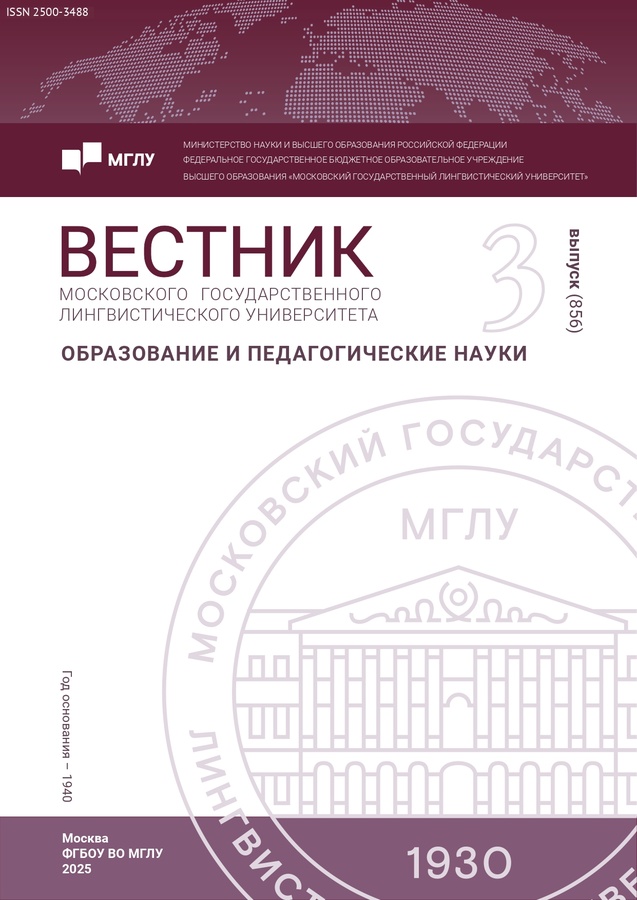
-
Vestnik of Moscow State Linguistic University. Education and Teaching
ISSN (online): 2500-3488
Founder: Moscow State Linguistic University
Editor-in-Chief: Natalia F. Koriakovtseva, Dr. of Pedagogy (Dr.habil.), professor
Frequency / Access: 4 issues per year / Open
Included in: Higher Attestation Commission List, RISC
-
Vestnik Moskovskogo gosudarstvennogo lingvističeskogo universiteta. Obŝestvennye nauki
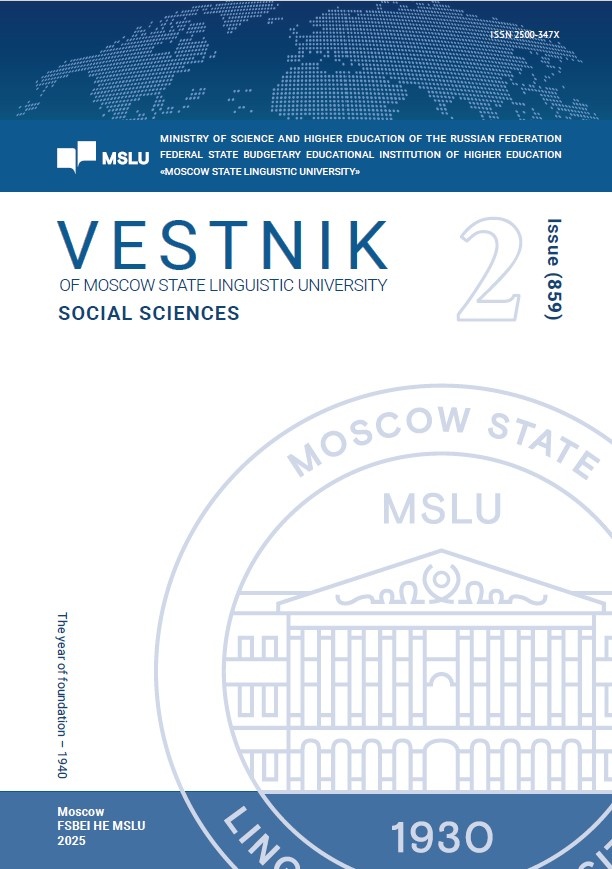
-
Vestnik Moskovskogo gosudarstvennogo lingvističeskogo universiteta. Obŝestvennye nauki
ISSN (online): 2500-347X
Founder: Moscow State Linguistic University
Editor-in-Chief: Vasily K. Belozerov, Dr. of Science in Political Science, professor
Frequency / Access: 4 issues per year / Open
Included in: Higher Attestation Commission List, RISC
-
Вестник Московского государственного университета культуры и искусств
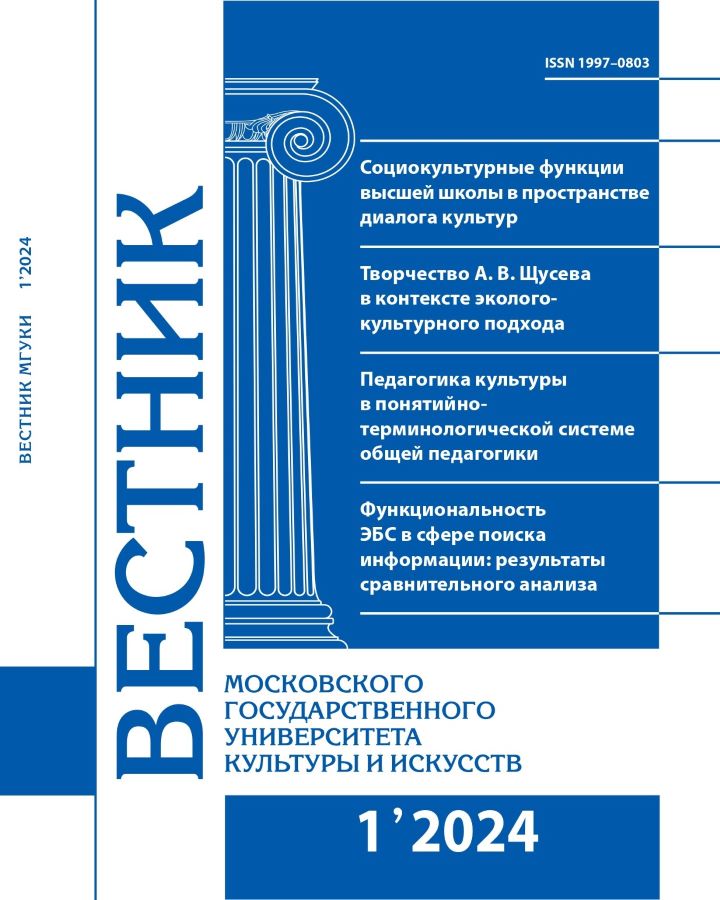
-
Вестник Московского государственного университета культуры и искусств
ISSN (print): 1997-0803
Founder: Moscow state Institute of culture
Editor-in-Chief: Kudrina E.L., D-r of Pedagogical Sci.
Frequency / Access: 6 issues per year / Open
Included in: Higher Attestation Commission List, RISC
-
Journal of musical science

-
Journal of musical science
ISSN (print): 2308-1031, ISSN (online): 3034-2236
Founder: M.I. Glinka Novosibirsk State Conservatory
Editor-in-Chief: Kolyadenko Nina P., Doctor of Art Criticism, Candidate of Philosophical Sciences, Professor
Frequency / Assess: 4 issues per year / Subscription
Included in: Higher Attestation Commission List, RISC
-
Russian Railway Science Journal
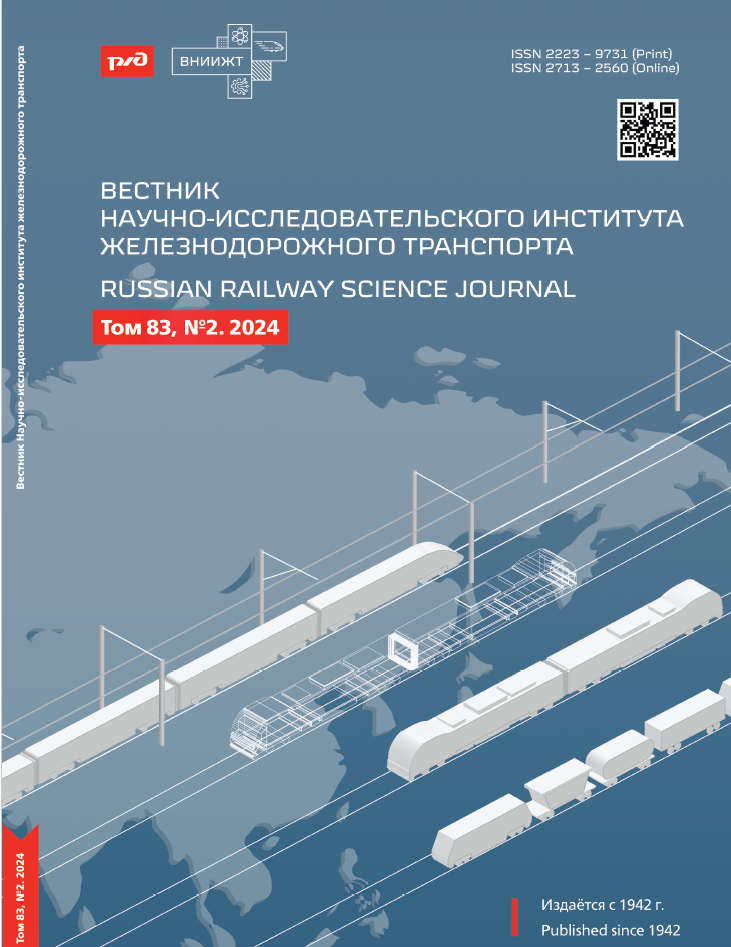
-
Russian Railway Science Journal
ISSN (print): 2223-9731, ISSN (online): 2713-2560
Founder: Joint Stock Company Railway Research Institute
Editor-in-Chief: Alexander B. Kosarev, Dr. Sci. (Eng.), Professor
Frequency / Access: 4 issues per year / Open
Included in: Higher Attestation Commission List, RISC
-
Vestnik Nižegorodskogo universiteta im. N.I. Lobačevskogo

-
Vestnik Nižegorodskogo universiteta im. N.I. Lobačevskogo
ISSN (print): 1993-1778
Founder: National Research Lobachevsky State University of Nizhny Novgorod
Editor-in-Chief: Martynov Aleksei
Frequency / Assess: 6 issues per year / Open
Included in: Higher Attestation Commission List, RISC
-
Vestnik Nižegorodskogo universiteta im. N.I. Lobačevskogo.Seriâ socialʹnye nauki.

-
Vestnik Nižegorodskogo universiteta im. N.I. Lobačevskogo.Seriâ socialʹnye nauki.
ISSN (print): 1811-5942
Founder: National Research Lobachevsky State University of Nizhny Novgorod
Editor-in-Chief: Yashin S.N.
Frequency / Assess: 4 issues per year / Open
Included in: Higher Attestation Commission List, RISC
-
Bulletin of Nizhnevartovsk State University
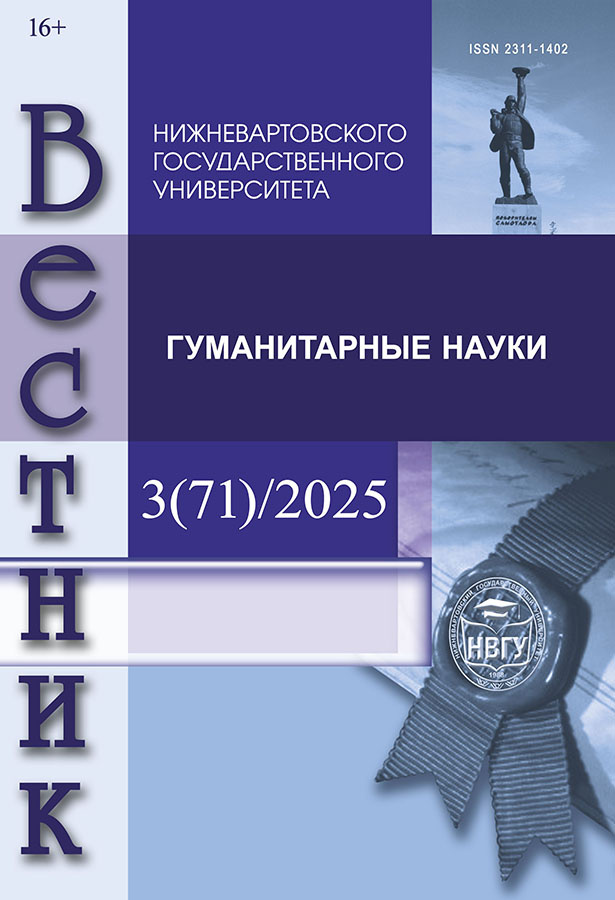
-
Bulletin of Nizhnevartovsk State University
ISSN (print): 2311-1402, ISSN (online): 2686-8784
Founder: Nizhnevartovsk State University
Editor-in-Chief: Gorlov Sergey Ivanovich, Academician RAEN, Doctor of Sc., Full Professor
Frequency / Access: 4 issues per year / Open
Included in: Higher Attestation Commission List, RISC
-
Bulletin of the Research Institute of the Humanities by the Government of the Republic of Mordovia
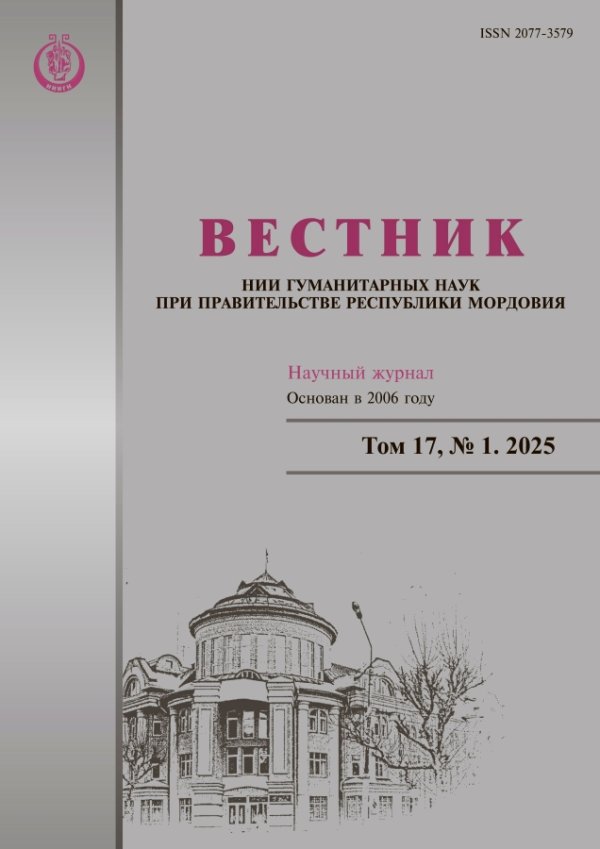
-
Bulletin of the Research Institute of the Humanities by the Government of the Republic of Mordovia
ISSN (print): 2077-3579
Founder: Research Institute of the Humanities by the Government of the Republic of Mordovia
Editor-in-Chief: Galina A. Kursheva, Dr. Sc. (History), professor
Frequency / Access: 4 issues per year / Open
Included in: Higher Attestation Commission List, RISC
-
Vestnik NIC Stroitelʹstvo

-
Vestnik NIC Stroitelʹstvo
ISSN (print): 2224-9494, ISSN (online): 2782-3938
Founder: JSC Science and Research Center of Construction
Editor-in-Chief: Zvezdov Andrey I., Doctor of Sc., Full Professor
Frequency / Assess: 4 issues per year / Open
Included in: Higher Attestation Commission List, RISC
-
Vestnik Omskogo gosudarstvennogo agrarnogo universiteta

-
Vestnik Omskogo gosudarstvennogo agrarnogo universiteta
ISSN (print): 2222-0364
Founder: Omsk State Agrarian University named after P.A. Stolypin
Editor-in-Chief: Shumakova Oksana Viktorovna, Doctor of Sc., Full Professor
Frequency / Assess: 4 issues per year / Open
Included in: Higher Attestation Commission list, RISC
-
Vestnik Omskogo gosudarstvennogo pedagogičeskogo universiteta. Gumanitarnye issledovaniâ

-
Vestnik Omskogo gosudarstvennogo pedagogičeskogo universiteta. Gumanitarnye issledovaniâ
ISSN (print): 2309-9380
Founder: Omsk State Pedagogical University
Editor-in-Chief: Dmitry M. Fedyaev, Doctor of Philosophy, Professor
Frequency / Assess: 4 issues per year / Open
Included in: Higher Attestation Commission List, RISC
-
Bulletin of Pedagogical Sciences

-
Bulletin of Pedagogical Sciences
ISSN (online): 2687-1661
Founder: Individual entrepreneur IP Klyuev Sergey Vasilievich
Editor-in-Chief: Tselkovnikov Boris Mikhailovich, Doctor of Pedagogical Sciences
Frequency / Access: 8 issues per year / Open
Included in: Higher Attestation Commission List, RISC
-
Perm University Herald. History

-
Perm University Herald. History
ISSN (print): 2219-3111
Founder: Perm State University
Editor-in-Chief: Yankovskaya G.A., Doctor of Sc., Full Professor
Frequency / Assess: 4 issues per year / Open
Included in: White List (2nd level), Higher Attestation Commission list, RISC, Scopus, Web of Science
-
Vestnik Permskogo universiteta. Matematika, mehanika, informatika

-
Vestnik Permskogo universiteta. Matematika, mehanika, informatika
ISSN (print): 1993-0550
Founder: Perm State University
Editor-in-Chief: Buzmakova M.M., Candidate of Sciences (Physical and Mathematical), Associate Professor
Frequency / Assess: 4 issues per year / Open
Included in: Higher Attestation Commission List, RISC
-
BULLETIN OF PERM UNIVERSITY. POLITICAL SCIENCE

-
BULLETIN OF PERM UNIVERSITY. POLITICAL SCIENCE
ISSN (print): 2218-1067
Founder: Perm State University
Editor-in-Chief: Lyubov A. Fadeeva, Doctor of Historical Sciences, Professor
Frequency / Assess: 4 issues per year / Open
Included in: White List (2nd level), Higher Attestation Commission List, RISC
-
Vestnik Permskogo universiteta. Rossijskaâ i zarubežnaâ filologiâ

-
Vestnik Permskogo universiteta. Rossijskaâ i zarubežnaâ filologiâ
ISSN (print): 2073-6681, ISSN (online): 2658-6711
Founder: Perm State University
Editor-in-Chief: Novokreshchennykh I.A.
Frequency / Assess: 4 issues per year / Open
Included in: Higher Attestation Commission List, RISC
-
Perm University Herald. Economy
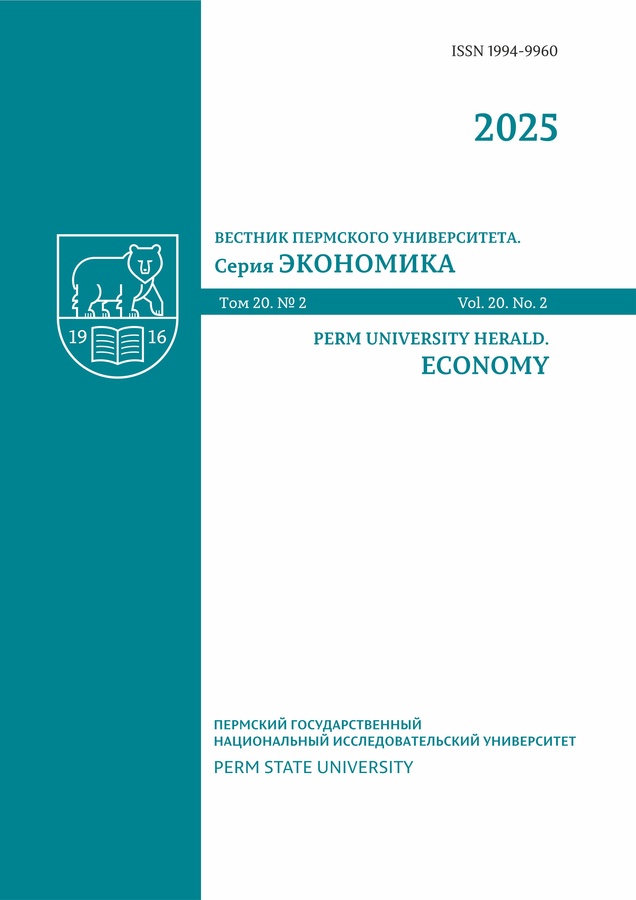
-
Perm University Herald. Economy
ISSN (print): 1994-9960, ISSN (online): 2658-624X
Founder: Perm State University
Editor-in-Chief: Tatyana V. Mirolyubova
Frequency / Assess: 4 issues per year / Open
Included in: Higher Attestation Commission List, RISC
-
Vestnik Permskogo universiteta. Filosofiâ. Psihologiâ. Sociologiâ.

-
Vestnik Permskogo universiteta. Filosofiâ. Psihologiâ. Sociologiâ.
ISSN (print): 2078-7898, ISSN (online): 2686-7532
Founder: Perm State University
Editor-in-Chief: Vnutskikh A.Yu., Doctor of Sc., Professor
Frequency / Assess: 4 issues per year / Open
Included in: Higher Attestation Commission List, RISC
-
Vestnik of Volga state university of technology. Ser.: Forest. Ecology. Nature management

-
Vestnik of Volga state university of technology. Ser.: Forest. Ecology. Nature management
ISSN (print): 2306-2827, ISSN (online): 3034-3038
Founder: Volga State University of Technology
Editor-in-Chief: Romanov E.M., Doctor of Sc., Professor
Frequency / Access: 4 issues per year / Open
Included in: Higher Attestation Commission List, RISC
-
Vestnik of Volga State University of Technology. Series "Materials. Constructions. Technologies"
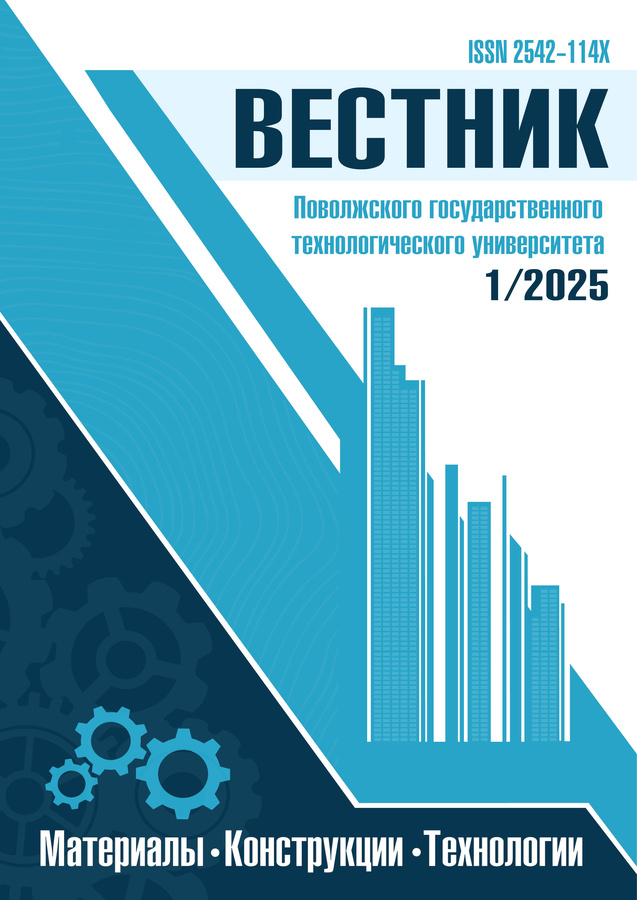
-
Vestnik of Volga State University of Technology. Series "Materials. Constructions. Technologies"
ISSN (print): 2542-114X, ISSN (online): 2782-7232
Founder: Volga State University of Technology
Editor-in-Chief: Fedosov S.V., Academican of RAASN, Doctor of Sc., Professor
Frequency / Access: 4 issues per year / Open
Included in: Higher Attestation Commission List, RISC
-
Vestnik of Volga State University of Technology. Series «Radio Engineering and Infocommunication Systems»

-
Vestnik of Volga State University of Technology. Series «Radio Engineering and Infocommunication Systems»
ISSN (print): 2306-2819, ISSN (online): 3034-3054
Founder: Volga State University of Technology
Editor-in-Chief: Ryabova N.V., Doctor of Sc., Professor
Frequency / Access: 4 issues per year / Subscription
Included in: Higher Attestation Commission List, RISC
-
Vestnik PGTU. Seriâ Èkonomika i upravlenie
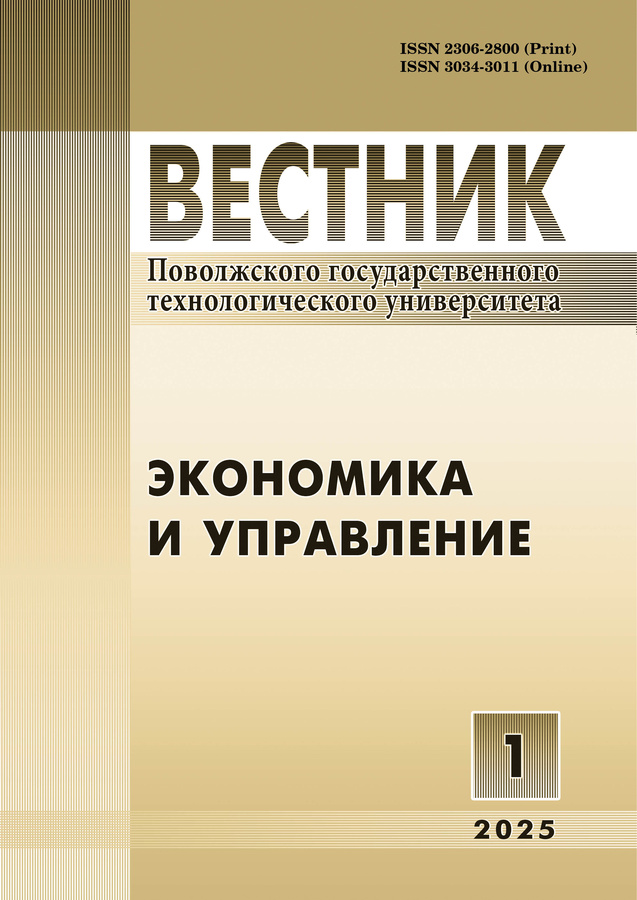
-
Vestnik PGTU. Seriâ Èkonomika i upravlenie
ISSN (print): 2306-2800, ISSN (online): 3034-3011
Founder: Volga State University of Technology
Editor-in-Chief: Larionova N.I., Doctor of Sc., Professor
Frequency / Access: 4 issues per year / Subscription
Included in: Higher Attestation Commission List, RISC
-
The bulletin of psychotherapy

-
The bulletin of psychotherapy
ISSN (print): 0132-182X, ISSN (online): 2782-652X
Founder: FSBI VTsERM im. A.M. Nikiforova EMERCOM of Russia
Editor-in-Chief: Ravil’ K. Nazyrov, Dr. Med. Sci.
Frequency / Access: 4 issues per year / Open
Included in: Higher Attestation Commission List, RISC
-
Russian Universities Reports. Mathematics
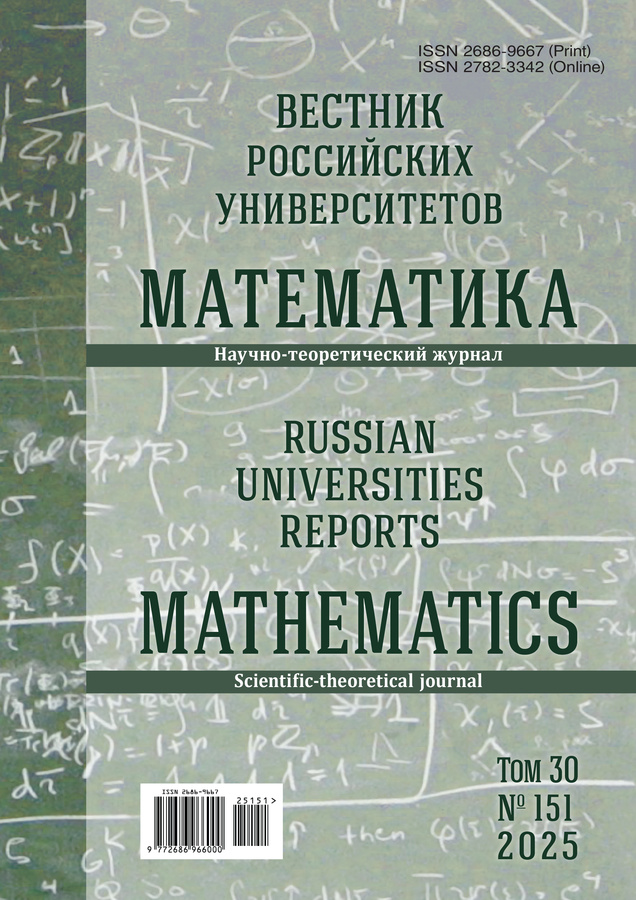
-
Russian Universities Reports. Mathematics
ISSN (print): 2686-9667, ISSN (online): 2782-3342
Founder: Derzhavin Tambov State University
Editor-in-Chief: Evgeny Semenovich Zhukovskiy, Doctor of Physics and Mathematics, professor
Frequency / Access: 4 issues per year / Open
Included in: White List (4th level), Higher Attestation Commission List, RISC, Scopus
-
RUDN Journal of Agronomy and Animal Industries

-
RUDN Journal of Agronomy and Animal Industries
ISSN (print): 2312-797X, ISSN (online): 2312-7988
Founder: Peoples’ Friendship University of Russia named after Patrice Lumumba (RUDN University)
Editor-in-Chief: Yuri A. Vatnikov, Doctor of Veterinary Sciences, Professor
Frequency / Access: 4 issues per year / Open
Included in: White List (3rd level), Higher Attestation Commission List, RISC
-
RUDN Journal of World History

-
RUDN Journal of World History
ISSN (print): 2312-8127, ISSN (online): 2312-833X
Founder: Peoples’ Friendship University of Russia named after Patrice Lumumba (RUDN University)
Editor-in-Chief: Sergey A. Voronin, Doctor of Historical Sciences, Associate Professor
Frequency / Access: 4 issues per year / Open
Included in: White List, Higher Attestation Commission List, RISC
-
RUDN Journal of Public Administration
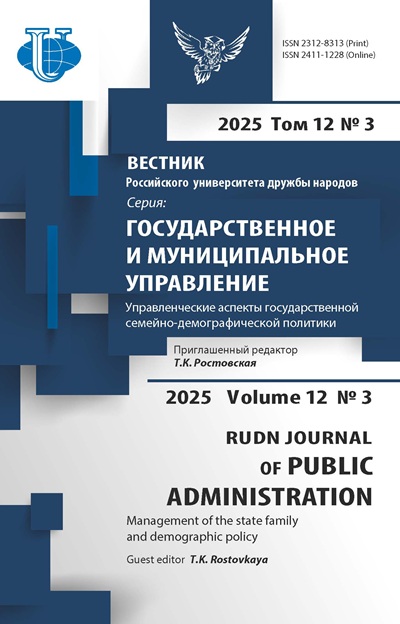
-
RUDN Journal of Public Administration
ISSN (print): 2312-8313, ISSN (online): 2411-1228
Founder: Peoples’ Friendship University of Russia named after Patrice Lumumba (RUDN University)
Editor-in-Chief: Vladimir G. Ivanov, Doctor of Political Science
Frequency / Access: 4 issues per year / Open
Included in: White List, Higher Attestation Commission List, RISC
-
RUDN Journal of Engineering Research

-
RUDN Journal of Engineering Research
ISSN (print): 2312-8143, ISSN (online): 2312-8151
Founder: Peoples Friendship University of Russia
Editor-in-Chief: Razoumny Yury N., Doctor of Sc., Full Professor
Frequency / Assess: 4 issues per year / Open
Included in: White List, Higher Attestation Commission List, RISC
-
RUDN Journal of Informatization in Education

-
RUDN Journal of Informatization in Education
ISSN (print): 2312-8631, ISSN (online): 2312-864X
Founder: Peoples Friendship University of Russia
Editor-in-Chief: Grinshkun V.V., academician RAE, Doctor of Sc., Full Professor
Frequency / Assess: 4 issues per year / Open
Included in: White List, Higher Attestation Commission List, RISC
-
RUDN Journal of Russian History

-
RUDN Journal of Russian History
ISSN (print): 2312-8674, ISSN (online): 2312-8690
Founder: Peoples Friendship University of Russia
Editor-in-Chief: Moseykina M.N., Doctor of Sc., Full Professor
Frequency / Assess: 4 issues per year / Open
Included in: White List (2nd level), Higher Attestation Commission List, RISC, Scopus, Web of Science
-
RUDN Journal of Studies in Literature and Journalism

-
RUDN Journal of Studies in Literature and Journalism
ISSN (print): 2312-9220, ISSN (online): 2312-9247
Founder: Peoples Friendship University of Russia
Editor-in-Chief: Kovalenko A.G., Doctor of Sc., Full Professor
Frequency / Assess: 4 issues per year / Open
Included in: White List, Higher Attestation Commission List, RISC, Scopus
-
RUDN Journal of Medicine

-
RUDN Journal of Medicine
ISSN (print): 2313-0245, ISSN (online): 2313-0261
Founder: Peoples Friendship University of Russia
Editor-in-Chief: Kobalava Zh.D., Corresponding Member of the RAS, Doctor of Sc., Full Professor
Frequency / Assess: 4 issues per year / Open
Included in: White List, Higher Attestation Commission List, RISC, Scopus
-
Vestnik RUDN. International Relations

-
Vestnik RUDN. International Relations
ISSN (print): 2313-0660, ISSN (online): 2313-0679
Founder: Peoples Friendship University of Russia
Editor-in-Chief: Kurylev K.P., Doctor of Sc., Full Professor
Frequency / Assess: 4 issues per year / Open
Included in: White List (3rd level), Higher Attestation Commission List, RISC, Scopus
-
RUDN Journal of Political Science

-
RUDN Journal of Political Science
ISSN (print): 2313-1438, ISSN (online): 2313-1446
Founder: Peoples Friendship University of Russia
Editor-in-Chief: Pochta Yu.M., Doctor of Sc., Full Professor
Frequency / Assess: 4 issues per year / Open
Included in: White List (3rd level), Higher Attestation Commission List, RISC
-
RUDN Journal of Psychology and Pedagogics

-
RUDN Journal of Psychology and Pedagogics
ISSN (print): 2313-1683, ISSN (online): 2313-1705
Founder: Peoples’ Friendship University of Russia named after Patrice Lumumba (RUDN University)
Editor-in-Chief: Kurilenko Viktoria B., Doctor of Sc., Professor
Frequency / Assess: 4 issues per year / Open
Included in: White List (3nd level), Higher Attestation Commission list, RISC
-
RUDN journal of sociology

-
RUDN journal of sociology
ISSN (print): 2313-2272, ISSN (online): 2408-8897
Founder: Peoples’ Friendship University of Russia named after Patrice Lumumba (RUDN University)
Editor-in-Chief: Narbut Nikolay P., Doctor of Sc., Professor
Frequency / Assess: 4 issues per year / Open
Included in: White List (2nd level), Higher Attestation Commission list, RISC
-
RUDN Journal of Language Studies, Semiotics and Semantics

-
RUDN Journal of Language Studies, Semiotics and Semantics
ISSN (print): 2313-2299, ISSN (online): 2411-1236
Founder: Peoples’ Friendship University of Russia named after Patrice Lumumba (RUDN University)
Editor-in-Chief: Denissenko Vladimir N., Doctor of Sc., Professor
Frequency / Assess: 4 issues per year / Open
Included in: White List (3nd level), Higher Attestation Commission list, RISC
-
RUDN Journal of Philosophy

-
RUDN Journal of Philosophy
ISSN (print): 2313-2302, ISSN (online): 2408-8900
Founder: Peoples’ Friendship University of Russia named after Patrice Lumumba (RUDN University)
Editor-in-Chief: Belov Vladimir N., Doctor of Sc., Professor
Frequency / Assess: 4 issues per year / Open
Included in: White List (4th level), Higher Attestation Commission list, RISC
-
RUDN Journal of Ecology and Life Safety

-
RUDN Journal of Ecology and Life Safety
ISSN: 2313-2310 (Print) ISSN: 2408-8919 (Online)
Founded in 1993. Publication frequency: quarterly
Editor-in-Chief: Elena Viktorovna Savenkova, D.Sc., Professor
Open Access: Open Access
 . APC: no article processing charge
. APC: no article processing chargePeer-Review: double blind. Publication language: Russian, English
Founder / Publisher: Peoples’ Friendship University of Russia named after Patrice Lumumba (RUDN University)
Indexation: White List, Russian Index of Science Citation, DOAJ
-
RUDN Journal of Economics

-
RUDN Journal of Economics
ISSN (print): 2313-2329, ISSN (online): 2408-8986
Founder: Peoples’ Friendship University of Russia named after Patrice Lumumba (RUDN University)
Editor-in-Chief: Davydov Vladimir M., Сorresponding member RAS, Doctor of Sc., Professor
Frequency / Assess: 4 issues per year / Open
Included in: White List, Higher Attestation Commission list, RISC
-
RUDN Journal of Law

-
RUDN Journal of Law
ISSN (print): 2313-2337, ISSN (online): 2408-9001
Founder: Peoples’ Friendship University of Russia named after Patrice Lumumba (RUDN University)
Editor-in-Chief: Yastrebov Oleg A., Doctor of Sc., Professor
Frequency / Assess: 4 issues per year / Open
Included in: White List (3rd level), Higher Attestation Commission List, RISC
-
Vestnik Rossijskij fond fundamentalʹnyh issledovanij

-
Vestnik Rossijskij fond fundamentalʹnyh issledovanij
ISSN (print): 1605-8070, ISSN (online): 2410-4639
Founder: Russian Foundation for Basic Research
Editor-in-Chief: Panchenko Vladislav Yakovlevich, academician RAS, Doctor of Sc., Full Professor
Frequency / Assess: 4 issues per year / Open
Included in: Higher Attestation Commission list, RISC
-
Annals of the Russian Academy of Medical Sciences
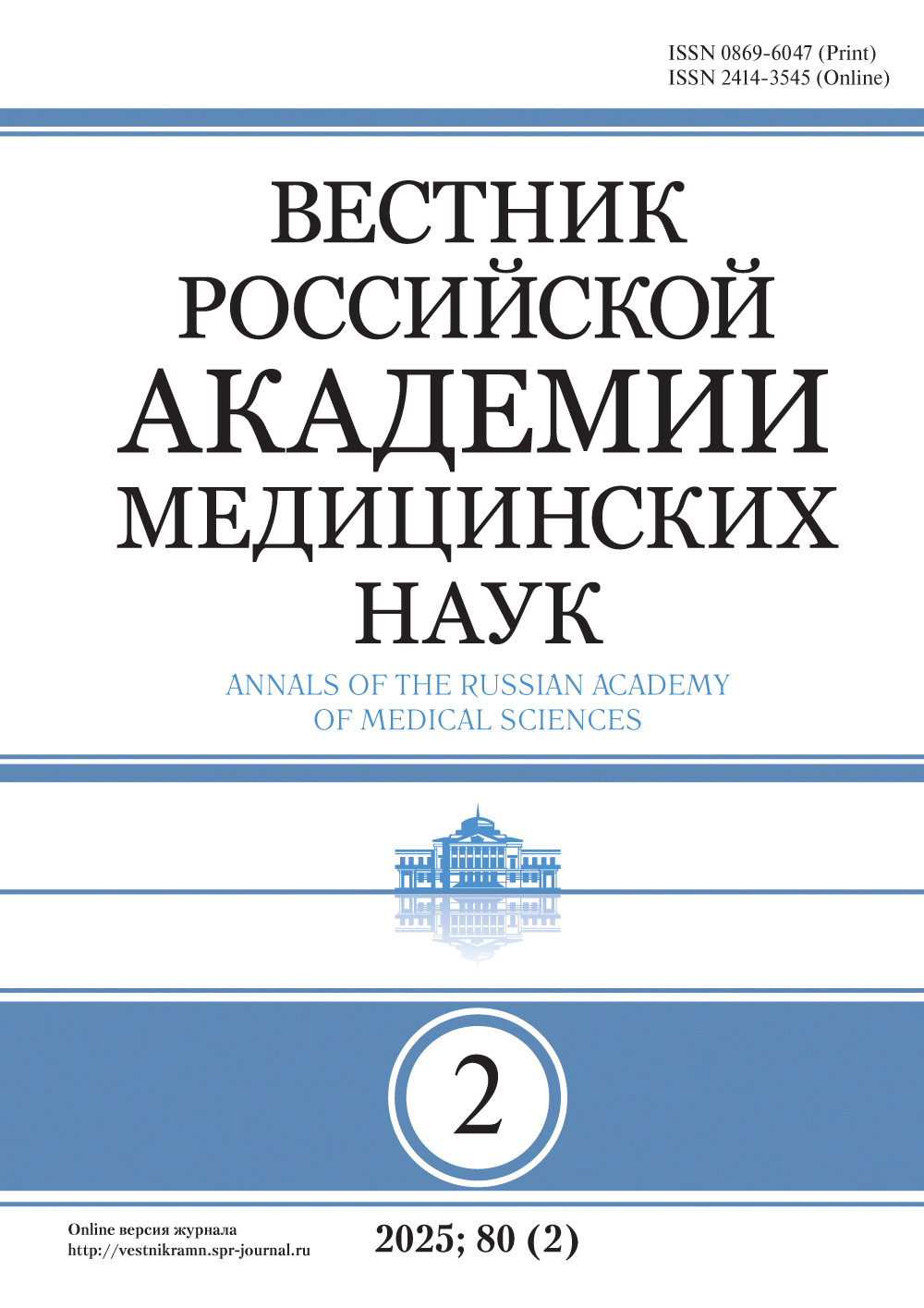
-
Annals of the Russian Academy of Medical Sciences
ISSN (print): 0869-6047, ISSN (online): 2414-3545
Founders: Российская академия наук, Центральный научно-исследовательский институт организации и информатизации здравоохранения Минздрава РФ
Editor-in-Chief: Vladimir I. Starodubov, academician of RAS, Doctor of Sc., Professor
Frequency / Access: 4 issues per year / Subscription
Included in: White List (3rd level), RISC, Embase, Scopus
-
Herald of the Russian Academy of Sciences
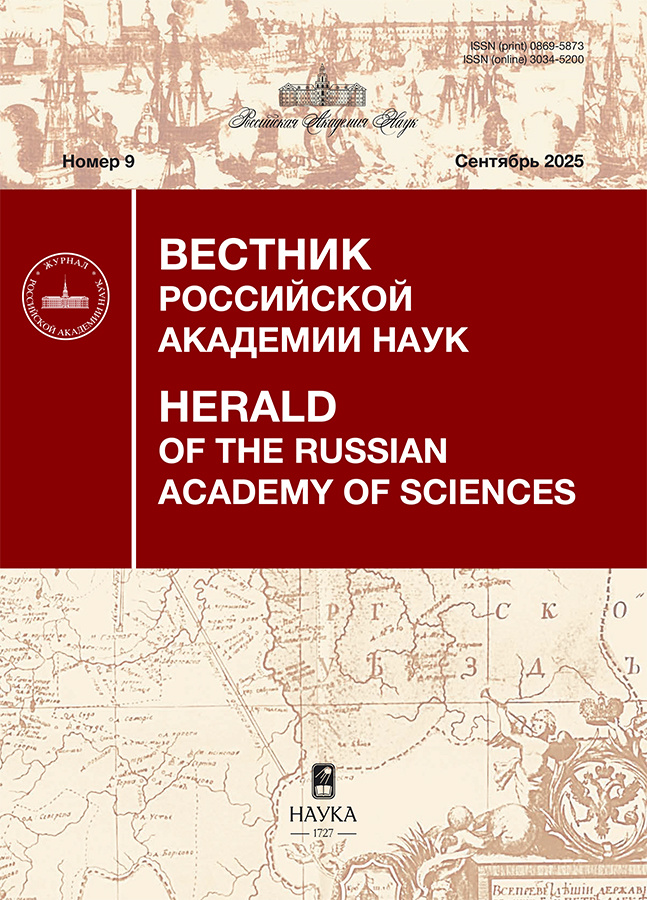
-
Herald of the Russian Academy of Sciences
ISSN (print): 0869-5873
Founder: Russian Academy of Sciences
Editor-in-Chief: Panchenko Vladislav Yakovlevich, academician RAS, Doctor of Sc., Full Professor
Frequency / Access: 12 issues per year / Subscription
Included in: White list (1st level), Higher Attestation Commission list, RISC
-
Bulletin of the Russian Military Medical Academy
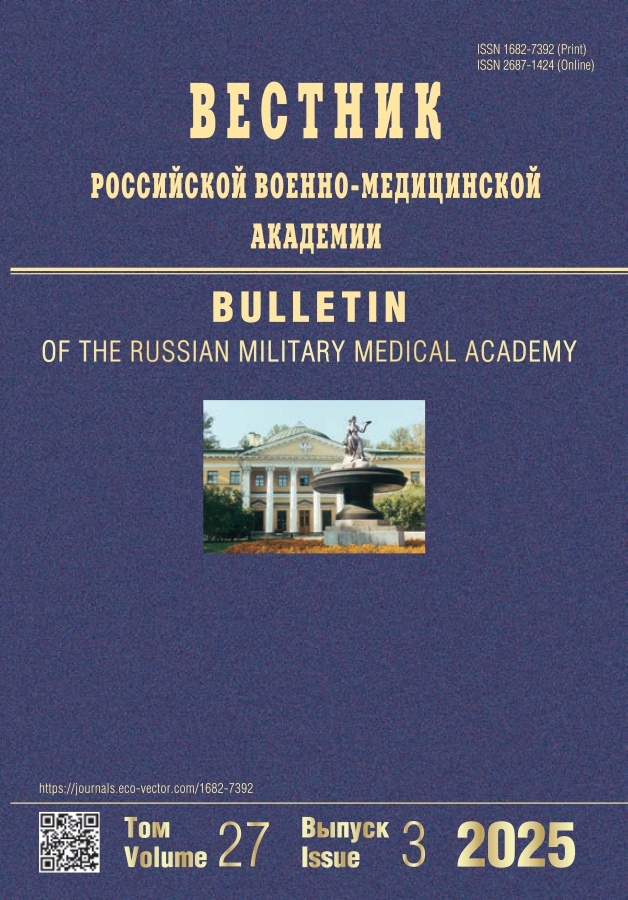
-
Bulletin of the Russian Military Medical Academy
ISSN (print): 1682-7392, ISSN (online): 2687-1424
Founders: Kirov Military medical academy, Eco-Vector
Editor-in-Chief: Evgeniy V. Kryukov, academician RAS, Doctor of Sc., Full Professor
Frequency / Access: 4 issues per year / Open
Included in: White list (4th level), Higher Attestation Commission List, RISC
-
Vestnik of the Russian Agricultural Science

-
Vestnik of the Russian Agricultural Science
ISSN (print): 2500-2082
Founder: Russian Academy of Sciences
Editor-in-Chief: Romanenko Gennady Alekseevich, academician RAS, Doctor of Sc.
Frequency / Access: 6 issues per year / Subscription
Included in: White list (3rd level), Higher Attestation Commission list, RISC
-
Vestnik Rostovskogo gosudarstvennogo universiteta putej soobŝeniâ

-
Vestnik Rostovskogo gosudarstvennogo universiteta putej soobŝeniâ
ISSN (print): 0201-727X
Founder: Rostov state transport university
Editor-in-Chief: Kolesnikov Vladimir Ivanovich, academician RAS, Doctor of Sc., Professor
Frequency / Assess: 4 issues per year / Open
Included in: Higher Attestation Commission list, RISC
-
Humanities and social sciences
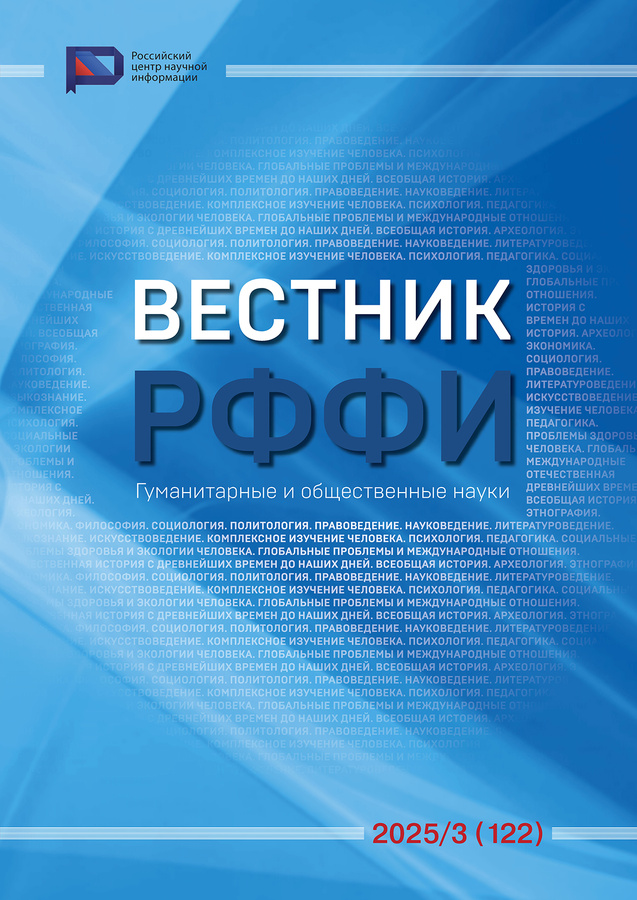
-
Humanities and social sciences
ISSN (print): 2587-6090, ISSN (online): 2587-8956
Founder: Russian Foundation for Basic Research
Editor-in-Chief: Panchenko Vladislav Yakovlevich, Academician of the Russian Academy of Sciences, Doctor of Physics and Mathematics sciences, professor
Frequency / Access: 4 issues per year / open
Included in: White List (4th level), RISC
-
Vestnik of Samara State Technical University Psychological and Pedagogical Sciences
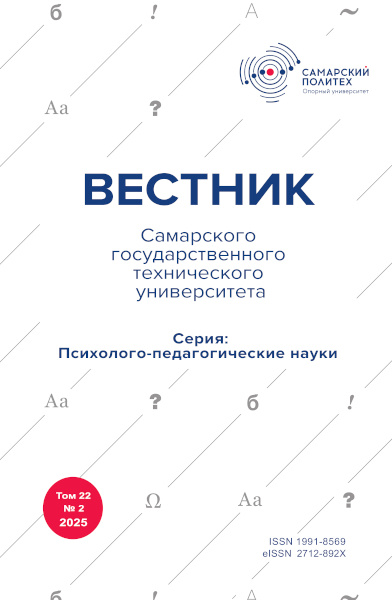
-
Vestnik of Samara State Technical University Psychological and Pedagogical Sciences
ISSN (print): 1991-8569, ISSN (online): 2712-892X
Founder: Samara State Technical University
Editor-in-Chief: Victoria V. Dobrova, Cand.Sci. (Psycology)
Frequency / Access: 4 issues per year / Open
Included in: Higher Attestation Commission List, RISC
-
Vestnik of Samara State Technical University. Technical Sciences Series
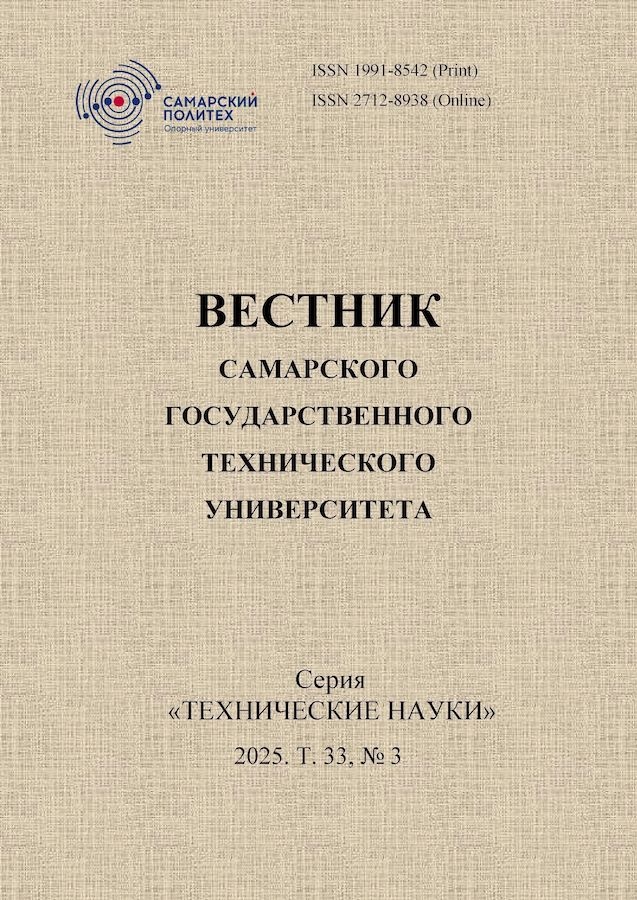
-
Vestnik of Samara State Technical University. Technical Sciences Series
ISSN (print): 1991-8542, ISSN (online): 2712-8938
Founder: Samara State Technical University
Editor-in-Chief: Pleshivtseva Yulia Edgarovna, Dr. tech. sciences, professor
Frequency / Access: 4 issues per year / open
Included in: Higher Attestation Commission List, RISC
-
Journal of Samara State Technical University, Ser. Physical and Mathematical Sciences

-
Journal of Samara State Technical University, Ser. Physical and Mathematical Sciences
ISSN (print): 1991-8615, ISSN (online): 2310-7081
Founder: Samara State Technical University
Editor-in-Chief: Radchenko Vladimir P., Doctor of Sc., Full Professor
Frequency / Access: 4 issues per year / Open
Included in: Higher Attestation Commission List, RISC
-
Vestnik of Samara State Technical University. Series Philosophy

-
Vestnik of Samara State Technical University. Series Philosophy
ISSN (print): 2658-7750, ISSN (online): 2782-4268
Founder: Samara State Technical University
Editor-in-Chief: Aleksandr Shestakov, Doctor of Sc., Professor
Frequency / Access: 4 issues per year / Open
Included in: Higher Attestation Commission List, RISC
-
VESTNIK of Samara University. Aerospace and Mechanical Engineering

-
VESTNIK of Samara University. Aerospace and Mechanical Engineering
ISSN (print): 2542-0453, ISSN (online): 2541-7533
Founder: Samara National Research University
Editor-in-Chief: Evgeniy V. Shakhmatov, academician of RAS, Doctor of Sc.
Frequency / Access: 4 issues per year / Open
Included in: White List (4th level), Higher Attestation Commission List, RISC
-
Vestnik of Samara University. Natural Science Series
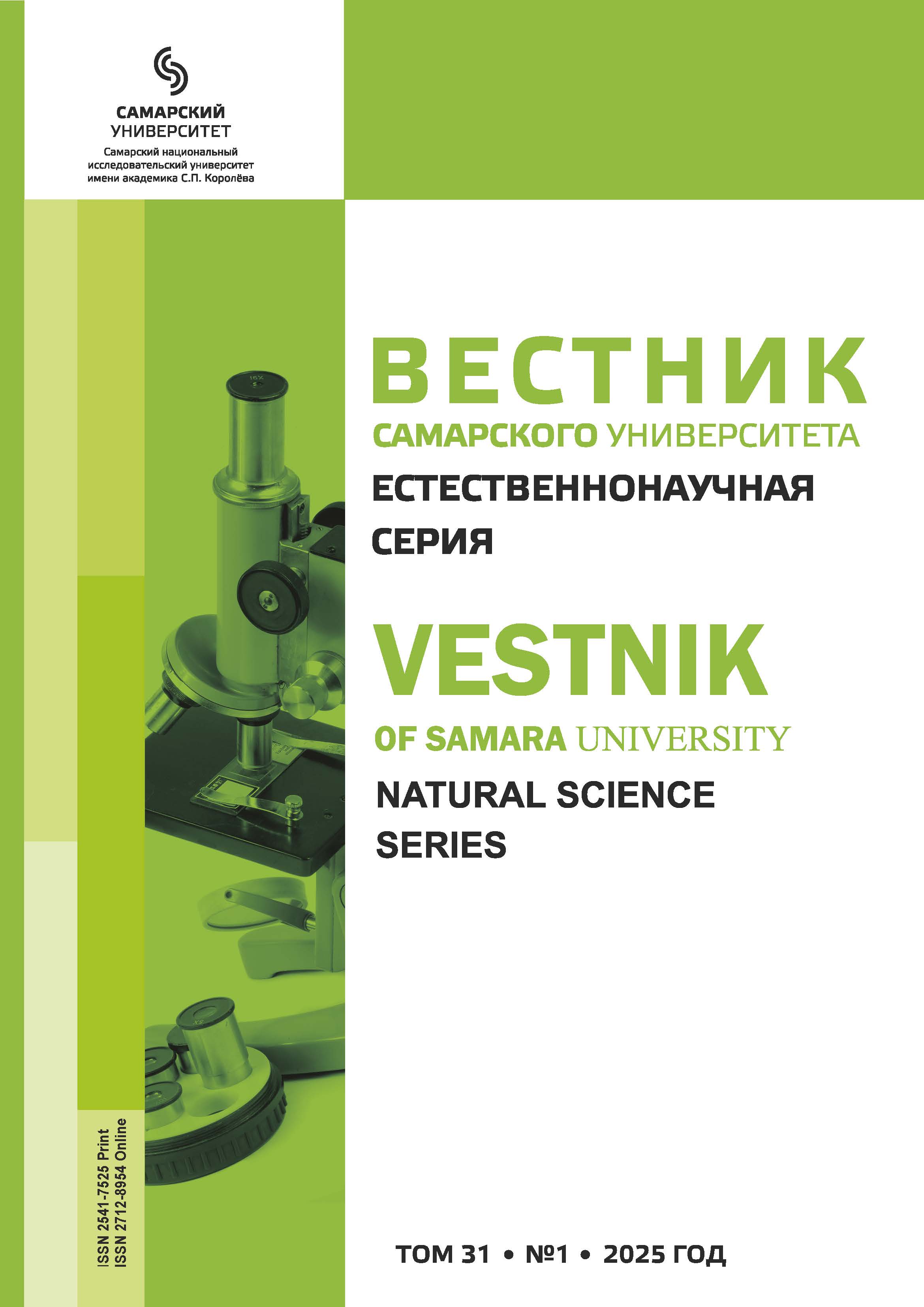
-
Vestnik of Samara University. Natural Science Series
ISSN (print): 2541-7525, ISSN (online): 2712-8954
Founder: Samara National Research University
Editor-in-Chief: Evgeniy V. Shakhmatov, Academician of the RAS, Dr. Sciences (Engineering)
Frequency / Access: 4 issues per year / Open
Included in: zbMATH, RSCI, VINITI, Math-Net.ru, MathSciNet, Crossref, Dimensions
-
Vestnik of Samara University. History, pedagogics, philology
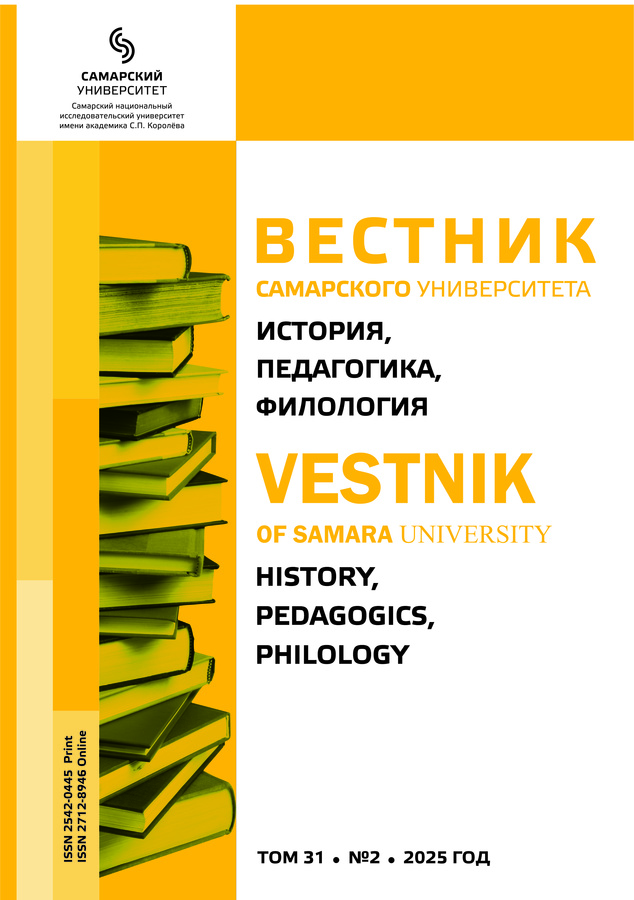
-
Vestnik of Samara University. History, pedagogics, philology
ISSN (print): 2542-0445, ISSN (online): 2712-8946
Founder: Samara National Research University
Editor-in-Chief: Vladimir A. Konev, Doctor of Sc., Full Professor
Frequency / Access: 4 issues per year / Open
Included in: Higher Attestation Commission List, RISC
-
Vestnik of Samara University. Economics and Management

-
Vestnik of Samara University. Economics and Management
ISSN (print): 2542-0461, ISSN (online): 2782-3008
Founder: Samara National Research University
Editor-in-Chief: Vladimir D. Bogatyrev, Doctor of Sc., Full Professor
Frequency / Access: 4 issues per year / Open
Included in: Higher Attestation Commission List, RISC
-
Vestnik Sankt-Peterburgskogo Gosudarstvennogo Universiteta Grazhdanskoy Aviatsii

-
Vestnik Sankt-Peterburgskogo Gosudarstvennogo Universiteta Grazhdanskoy Aviatsii
ISSN (print): 2075-9878
Founder: Saint Petersburg State University of Civil Aviation
Editor-in-Chief: Mikhalchevsky Yuri Yurievich, Doctor of Sc., Associate Professor
Frequency / Assess: 4 issues per year / Subscription
Included in: Higher Attestation Commission List, RISC
-
Vestnik Sankt-Peterburgskogo gosudarstvennogo universiteta tehnologii i dizajna. Seriâ 1, Estestvennye i tehničeskie nau

-
Vestnik Sankt-Peterburgskogo gosudarstvennogo universiteta tehnologii i dizajna. Seriâ 1, Estestvennye i tehničeskie nau
ISSN (print): 2079-8199
Founder: Saint Petersburg State University of Industrial Technologies and Design
Editor-in-Chief: Demidov Aleksej Vjacheslavovich, Dr. Sci, Professor
Frequency / Assess: 4 issues per year / subscription
Included in: Higher Attestation Commission list, RISC
-
Vestnik Sankt-Peterburgskogo gosudarstvennogo universiteta tehnologii i dizajna. Seriâ 2, Iskusstvovedenie, filologičes

-
Vestnik Sankt-Peterburgskogo gosudarstvennogo universiteta tehnologii i dizajna. Seriâ 2, Iskusstvovedenie, filologičes
ISSN (print): 2079-8202
Founder: Saint Petersburg State University of Industrial Technologies and Design
Editor-in-Chief: Demidov Aleksej Vjacheslavovich, Dr. Sci, Professor
Frequency / Assess: 4 issues per year / subscription
Included in: Higher Attestation Commission list, RISC
-
Vestnik Sankt-Peterburgskogo gosudarstvennogo universiteta tehnologii i dizajna. Seriâ 3, Èkonomičeskie, gumanitarnye i obŝestvennye nauki

-
Vestnik Sankt-Peterburgskogo gosudarstvennogo universiteta tehnologii i dizajna. Seriâ 3, Èkonomičeskie, gumanitarnye i obŝestvennye nauki
ISSN (print): 2079-8210
Founder: Saint Petersburg State University of Industrial Technologies and Design
Editor-in-Chief: Demidov Aleksej Vjacheslavovich, Dr. Sci, Professor
Frequency / Assess: 4 issues per year / subscription
Included in: Higher Attestation Commission list, RISC
-
Vestnik Sankt-Peterburgskogo gosudarstvennogo universiteta tehnologii i dizajna. Series 4. Industrial technologies

-
Vestnik Sankt-Peterburgskogo gosudarstvennogo universiteta tehnologii i dizajna. Series 4. Industrial technologies
ISSN (print): 2619-0729
Founder: Saint Petersburg State University of Industrial Technologies and Design
Editor-in-Chief: Demidov Aleksej Vjacheslavovich, Dr. Sci, Professor
Frequency / Assess: 4 issues per year / subscription
Included in: Higher Attestation Commission list, RISC
-
Vestnik SSUGT

-
Vestnik SSUGT
ISSN (print): 2411-1759
Founder: Siberian State University of Geosystems and Technology
Editor-in-Chief: Obidenko Vladimir Ivanovich, PhD, Associate Professor
Frequency / Assess: 4 issues per year / Open
Included in: White List (3rd level), Higher Attestation Commission List, RISC
-
HERALD of North-Western State Medical University named after I.I. Mechnikov

-
HERALD of North-Western State Medical University named after I.I. Mechnikov
ISSN (print): 2618-7116, ISSN (online): 2618-9704
Founders: Eco-Vector LLC, I.I. Mechnikov North-Western State Medical University
Editor-in-Chief: Mazurov Vadim Ivanovich, Academician of the Russian Academy of Sciences, Doctor of Medical Sciences, Professor
Frequency / Access: 4 issues per year / Subscription
Included in: White List (4th level), Higher Attestation Commission List, RISC
-
Bulletin of the North Ossetian State University named after K.L. Khetagurov

-
Bulletin of the North Ossetian State University named after K.L. Khetagurov
ISSN (print): 1994-7720
Founder: North Ossetian State University
Editor-in-Chief: Akhurbek Magometov, Dr. of Historical Sciences, Professor
Frequency / Assess: 4 issues per year / Open
Included in: Higher Attestation Commission List, RISC
-
Vestnik of Northern (Arctic) Federal University. Series "Humanitarian and Social Sciences"

-
Vestnik of Northern (Arctic) Federal University. Series "Humanitarian and Social Sciences"
ISSN (print): 2227-6564, ISSN (online): 2687-1505
Founder: Northern (Arctic) Federal University named after M.V. Lomonosov
Editor-in-Chief: Goldin Vladislav I., Doctor of Sc., Full Professor
Frequency / Assess: 6 issues per year / Open
Included in: Higher Attestation Commission list, RISC
-
The Russian automobile and highway industry journal

-
The Russian automobile and highway industry journal
ISSN (print): 2071-7296, ISSN (online): 2658-5626
Founder: The Siberian State Automobile and Highway University
Editor-in-Chief: Alexandr.P. Zhigadlo, Dr. of Sci. (Pedagogy), Cand. of Sci. (Engineering), Associate Professor
Frequency / Access: 6 issues per year / Open
Included in: Higher Attestation Commission List, RISC
-
Vestnik SibGUTI

-
Vestnik SibGUTI
ISSN (print): 1998-6920
Founder: Siberian State University of Telecommunications and Information Sciences
Editor-in-Chief: Fionov A. N., Doctor of Sc., Professor
Frequency / Access: 4 issues per year / Open
Included in: Higher Attestation Commission List, RISC
-
Bulletin of the Siberian State Industrial University

-
Bulletin of the Siberian State Industrial University
ISSN (print): 2304-4497, ISSN (online): 2307-1710
Founder: Siberian State Industrial University
Editor-in-Chief: Konovalov Sergey Valerievich, Doctor of Sc., Full Professor
Frequency / Assess: 4 issues per year / Open
Included in: Higher Attestation Commission list, RISC
-
Bulletin of the North Caucasian Federal District: law and economics

-
Bulletin of the North Caucasian Federal District: law and economics
ISSN (print): 2782-7321
Founder: Kabardino-Balkarian State University named after H.M. Berbekov
Editor-in-Chief: Altudov Yuri Kambulatovich, Doctor of Sc., Professor
Frequency / Assess: 4 issues per year / Open
Included in: RISC
-
Vestnik of the Smolensk State Medical Academy

-
Vestnik of the Smolensk State Medical Academy
ISSN (print): 2225-6016, ISSN (online): 3033-5906
Founder: Smolensk State Medical University
Editor-in-Chief: Kozlov Roman S., Corresponding Member of the RAS, Doctor of Sc., Full Professor
Frequency / Assess: 4 issues per year / Open
Included in: Higher Attestation Commission list, RISC
-
Bulletin of sociological sciences

-
Bulletin of sociological sciences
ISSN (online): 3034-3437
Founder: Individual entrepreneur Klyuev Sergey Vasilyevich (Belgorod)
Editor-in-Chief: Gostev Alexandr Nikolaevich, Doctor of Sc., Full Professor
Frequency / Assess: 4 issues per year / Open
Included in: RISC
-
Herald of SPbSUT

-
Herald of SPbSUT
ISSN (online): 3034-2201
Founder: The Bonch-Bruevich Saint-Petersburg State University of Telecommunications
Editor-in-Chief: Vladyko Andrey Gennadevich, Candidate of Technical Sciences, Associate Professor
Frequency / Access: 4 issues per year / Open
Included in: RISC
-
Vestnik sportivnoj nauki

-
Vestnik sportivnoj nauki
ISSN (print): 1998-0833
Founder: Federal Science Center of Physical Culture and Sport
Editor-in-Chief: Boris Nikolaevich Shustin, Doctor of Pedagogical Sciences, Professor
Frequency / Access: 6 issues per year / Open
Included in: Higher Attestation Commission List, RISC
-
Transactions of the Tambov State Technical University
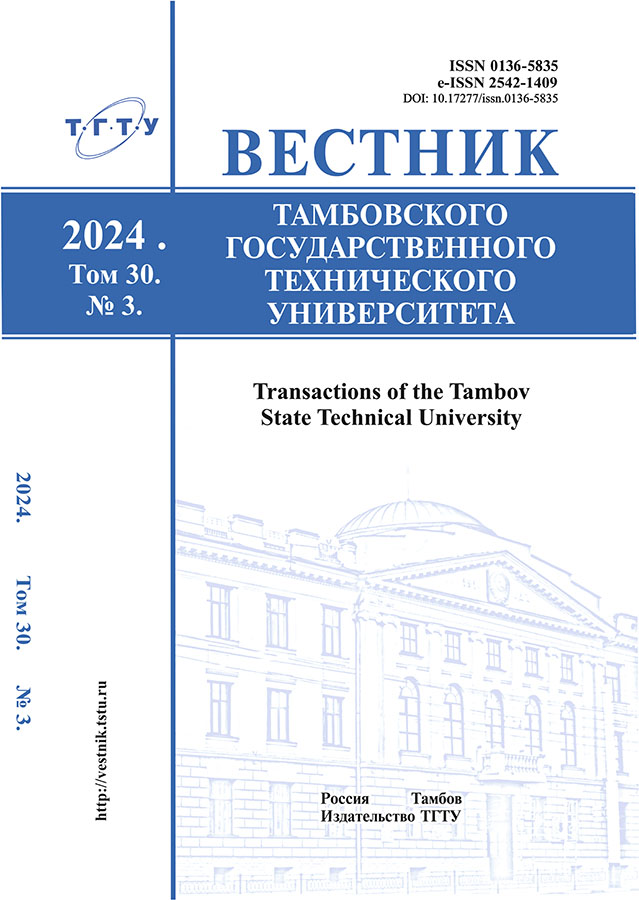
-
Transactions of the Tambov State Technical University
ISSN (print): 0136-5835, ISSN (online): 2542-1409
Founder: Tambov State Technical University
Editor-in-Chief: Gatapova Natalia Tsibikovna, Doctor of Technical Sciences, Professor
Frequency / Access: 4 issues per year / Open
Included in: Higher Attestation Commission List, RISC
-
Tambov University Review. Series: Humanities
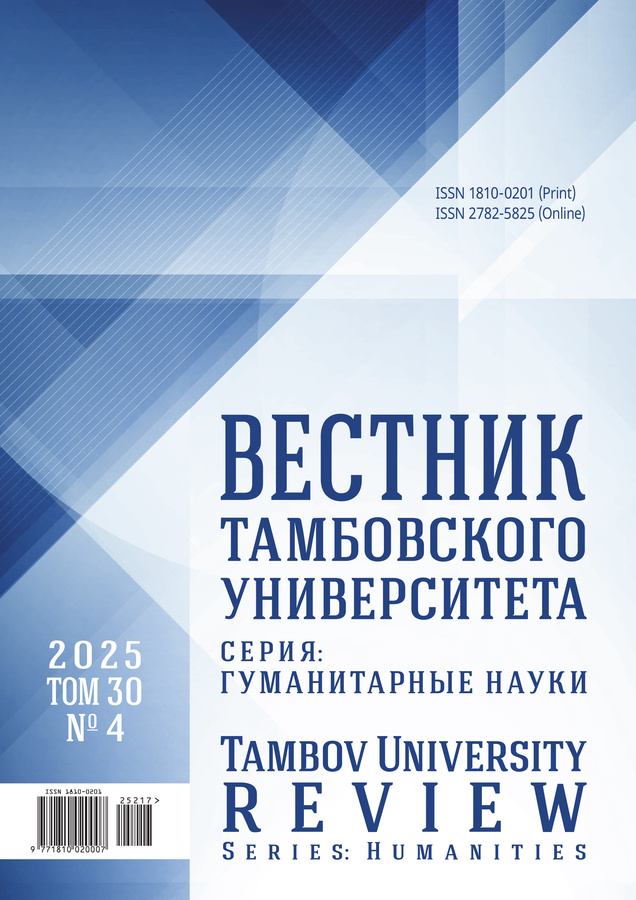
-
Tambov University Review. Series: Humanities
ISSN (print): 1810-0201, ISSN (online): 2782-5825
Founder: Derzhavin Tambov State University
Editor-in-Chief: Sysoyev Pavel Viktorovich , Doctor of Pedagogical Sciences, Professor
Frequency / Access: 6 issues per year / Open
Included in: Higher Attestation Commission List, RISC
-
Herald of Tver State University. Series: Applied Mathematics

-
Herald of Tver State University. Series: Applied Mathematics
ISSN (print): 1995-0136
Founder: Tver State University
Editor-in-Chief: Yazenin Alexander Vasilyevich, Doctor of Sc., Full Professor
Frequency / Assess: 4 issues per year / Hybrid
Included in: Higher Attestation Commission list, RISC
-
Herald of technological university

-
Herald of technological university
ISSN (print): 3034-4689
Founder: Kazan National Research Technological University
Editor-in-Chief: Kazakov Yurij, Doctor of Sc., Full Professor
Frequency / Assess: 12 issues per year / Open
Included in: Higher Attestation Commission list, RISC
-
Vestnik tehnosfernoj bezopasnosti i selʹskogo razvitiâ

-
Vestnik tehnosfernoj bezopasnosti i selʹskogo razvitiâ
ISSN (print): 3034-4360
Founder: Orel State Agrarian University named after N.V. Parakhin
Editor-in-Chief: Yakovlev Nikolay Alexandrovich, Сandidate of Agricultural Sciences, Associate Professor
Frequency / Assess: 4 issues per year / Open
Included in: RISC
-
Tomsk State Pedagogical University Bulletin
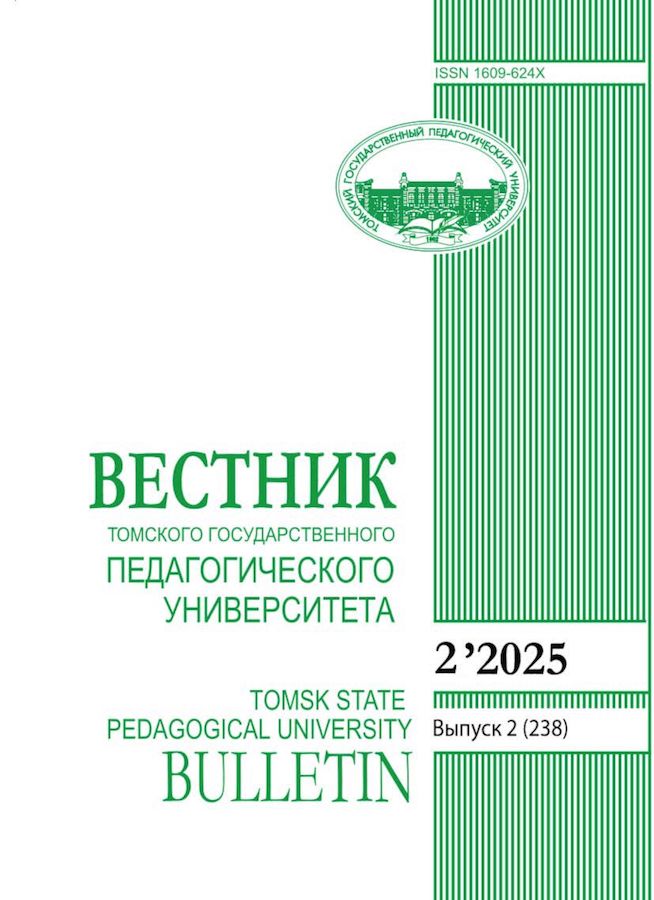
-
Tomsk State Pedagogical University Bulletin
ISSN (print): 1609-624X
Founder: Tomsk State Pedagogical University
Editor-in-Chief: A. N. Makarenko, Dr. of Sc. in Physico-mathematical Sc., associate professor
Frequency / Access: 6 issues per year / Open
Included in: Higher Attestation Commission List, RISC
-
Tomsk State University journal

-
Tomsk State University journal
ISSN (print): 1561-7793, ISSN (online): 1561-803X
Founder: Tomsk State University
Editor-in-Chief: Vasiliy P. Zinoviev, Doctor of History Sciences, Professor
Frequency / Access: 12 issues per year / Subscription
Included in: White list (2nd level), Higher Attestation Commission List, RISC, Web of Science Core Collection
-
N.N. Priorov Journal of Traumatology and Orthopedics
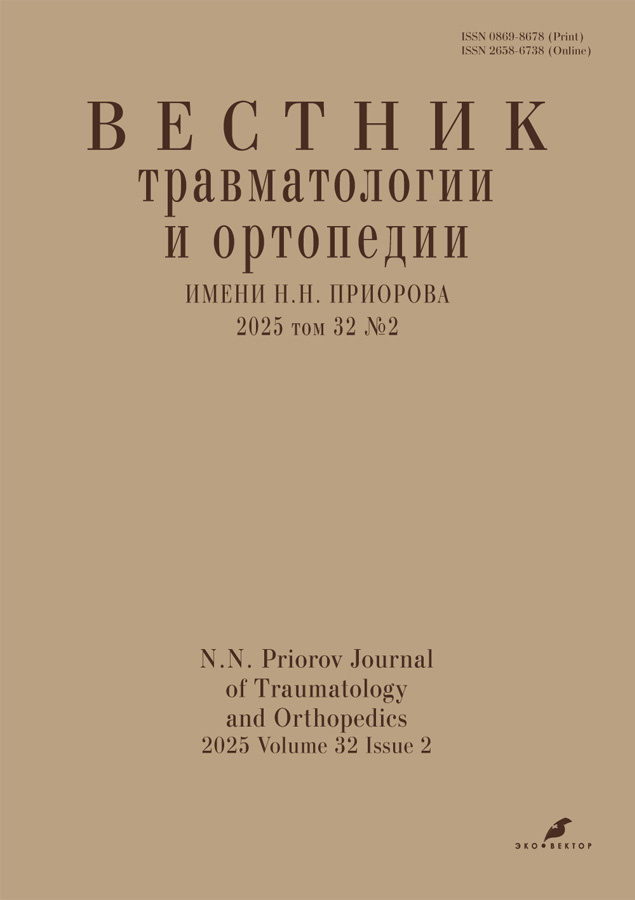
-
N.N. Priorov Journal of Traumatology and Orthopedics
ISSN (print): 0869-8678, ISSN (online): 2658-6738
Founder: National Medical Research Center for Traumatology and Orthopedics named after N.N. Priorov
Editor-in-Chief: Sergey P. Mironov, academician of RAS, Doctor of Sc.
Frequency / Access: 4 issues per year / Subscription
Included in: White List (4th level), Higher Attestation Commission List, RISC
-
Вестник угроведения

-
Вестник угроведения
ISSN (print): 2220-4156, ISSN (online): 2587-9766
Founder: Ob-Ugric Institute of Applied Researches and Development
Editor-in-Chief: Victoriya I. Spodina, Dr. of historical sciences
Frequency / Access: 4 issues per year / Open
Included in: White List (1st level), Higher Attestation Commission List, RISC, Scopus, Web of Science
-
Bulletin of the University of Russian Innovative Education

-
Bulletin of the University of Russian Innovative Education
ISSN (online): 3034-3445
Founder: University of Russian Innovative Education
Editor-in-Chief: Berulava Mikhail Nikolaevich, Academician of RAE, Doctor of Sc., Professor
Frequency / Access: 4 issues per year / Open
Included in: Higher Attestation Commission List, RISC
-
MMGU Herald
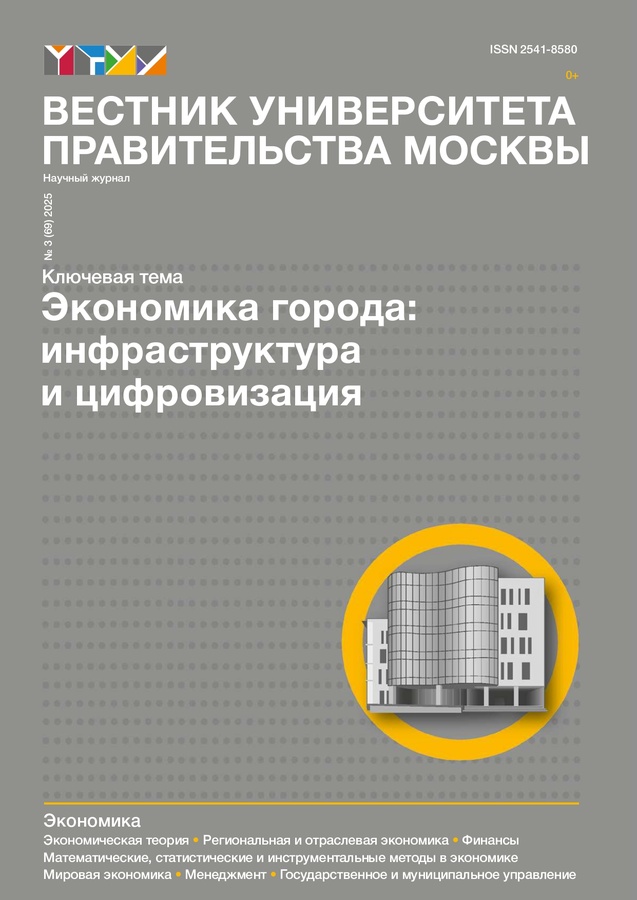
-
MMGU Herald
ISSN (print): 2541-8580
Founder: Moscow Metropolitan Governance Yury Luzhkov University
Editor-in-Chief: Fiveisky Vasily Yuryevich, Ph.D. of Psychological Sciences, professor
Frequency / Access: 4 issues per year / Open
Included in: RISC
-
Philological Sciences Bulletin

-
Philological Sciences Bulletin
ISSN (online): 2782-5329
Founder: Individual entrepreneur IP Klyuev Sergey Vasilievich
Editor-in-Chief: Baluta Anastasia Anatolyevna, Doctor of Philological Sciences
Frequency / Access: 4 issues per year / Open
Included in: Higher Attestation Commission List, RISC
-
Bulletin of Federal Institute of Industrial Property

-
Bulletin of Federal Institute of Industrial Property
ISSN (print): 2782-5086, ISSN (online): 2949-2432
Founder: Federal Institute of Industrial Property of Federal Service for Intellectual Property, Patents and Trademarks
Editor-in-Chief: Neretin Oleg, Doctor of Sc. (Economy)
Frequency / Access: 4 issues per year / Open
Included in: RISC
-
Herald of V.A. Musin Law Center

-
Herald of V.A. Musin Law Center
ISSN (print): 3034-4743, ISSN (online): 3034-4751
Founder: "Center for the development of energy law and modern legal science named after V.A. Musin"
Editor-in-Chief: Romanova Viktoriya Valeryevna, Doctor of Sc., Full Professor
Frequency / Assess: 4 issues per year / Open
Included in: Higher Attestation Commission list, RISC
-
Bulletin of Economics, Management and Law

-
Bulletin of Economics, Management and Law
ISSN (online): 3034-4247
Founder: ESCUELA Publishing Group
Editor-in-Chief: Mayorov Andrey V., Doctor of Sc., associate professor
Frequency / Assess: 4 issues per year / Open
Included in: Higher Attestation Commission list, RISC
-
Journal of Experimental and Clinical Surgery
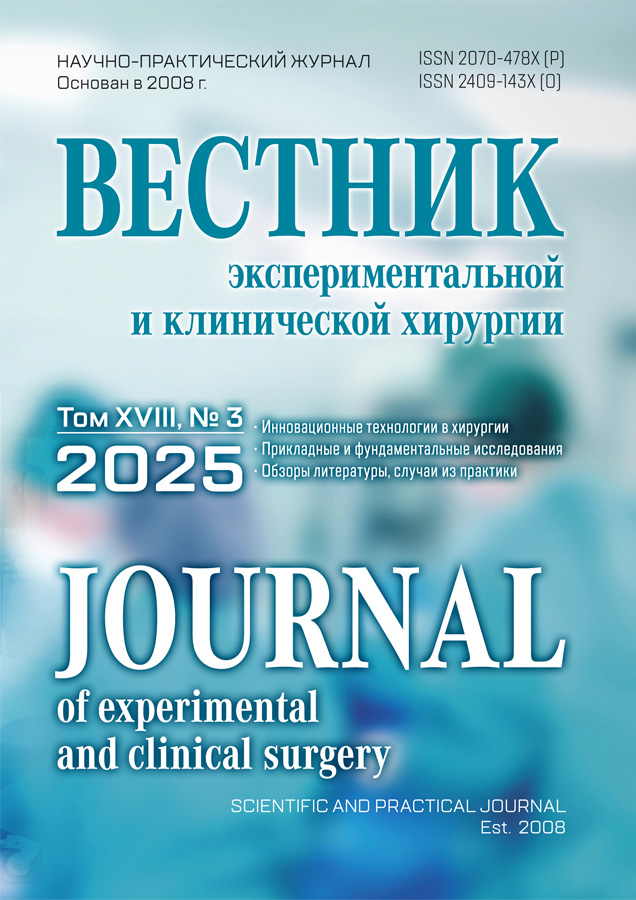
-
Journal of Experimental and Clinical Surgery
ISSN (print): 2070-478X, ISSN (online): 2409-143X
Founder: Voronezh State Medical University
Editor-in-Chief: Aleksandr A. Glukhov, Doctor of Sc., Professor
Frequency / Access: 4 issues per year / Open
Included in: Higher Attestation Commission List, RISC
-
Yugra State University Bulletin
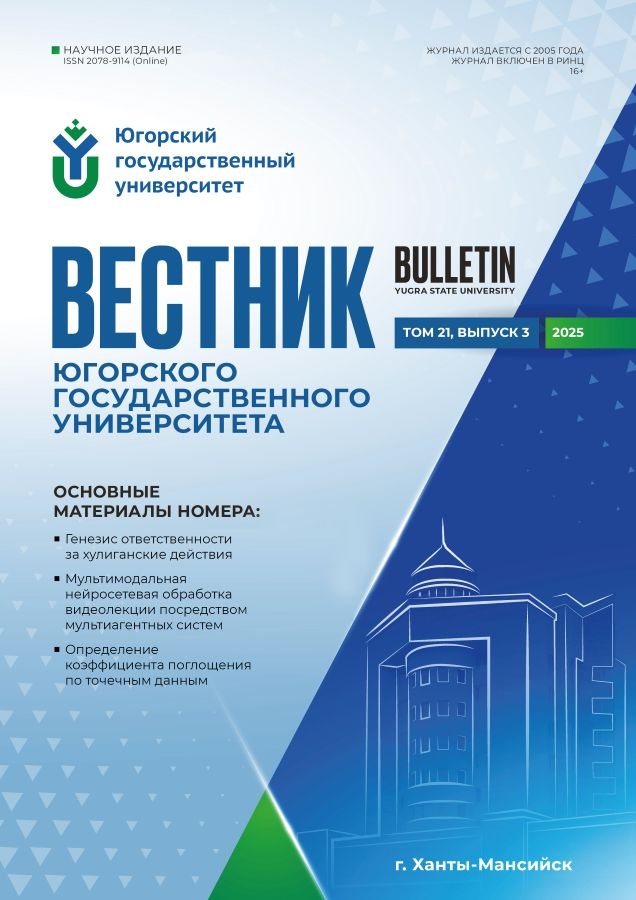
-
Yugra State University Bulletin
ISSN (online): 2078-9114
Founder: Yugra State University
Editor-in-Chief: Valery F. Lapshin, Doctor of Sc., Full Professor
Frequency / Assess: 4 issues per year / Subscription
Included in: Higher Attestation Commission list, RISC
-
Bulletin of Law Research

-
Bulletin of Law Research
ISSN (online): 3034-140X
Founder: Individual entrepreneur IP Klyuev Sergey Vasilievich
Editor-in-Chief: Serebrennikova Anna Valerievna, Doctor of Juridical Sciences
Frequency / Access: 4 issues per year / Open
Included in: Higher Attestation Commission List, RISC
-
The Veterinarian

-
The Veterinarian
ISSN (print): 1998-698X
Founder: Federal Center for Toxicological, Radiation and Biological safety (FCTRB)
Editor-in-Chief: Mingaleev Danil Nailevich, Doctor of Sc., Full Professor
Frequency / Assess: 6 issues per year / Subscription
Included in: Higher Attestation Commission list, RISC
-
Journal of Visual Theology

-
Journal of Visual Theology
ISSN (print): 2713-1610, ISSN (online): 2713-1955
Founder: Federal State Budgetary Educational Institution of Higher Education "Yaroslav-the-Wise Novgorod State University"
Editor-in-Chief: Avanesov S.S., Doctor of Sc., Professor
Frequency / Access: 2 issues per year / Open
-
VICTIMOLOGY

-
VICTIMOLOGY
ISSN (print): 2411-0590, ISSN (online): 2782-277X
Founder: ESCUELA Publishing Group
Editor-in-Chief: Mayorov Andrey V., Doctor of Sc., associate professor
Frequency / Assess: 4 issues per year / Open
Included in: Higher Attestation Commission list, RISC
-
Power and Elites

-
Power and Elites
ISSN (print): 2410-9517, ISSN (online): 3034-6894
Founder: Center of Theoretical and Applied Sociology of the Russian Academy of Sciences
Editor-in-Chief: A. Duka, Candidate of Political Science
Frequency / Access: 4 issues per year / Open
Included in: RISC
-
Water sector of Russia: problems, technologies, management

-
Water sector of Russia: problems, technologies, management
ISSN (print): 1999-4508, ISSN (online): 2686-8253
Founder: Russian Research Institute for Integrated Water Management and Protection
Editor-in-Chief: Kosolapov, Aleksey Y., Doctor of Sc., Professor
Frequency / Access: 6 issues per year / Open
Included in: Higher Attestation Commission List, RISC
-
Water Resources
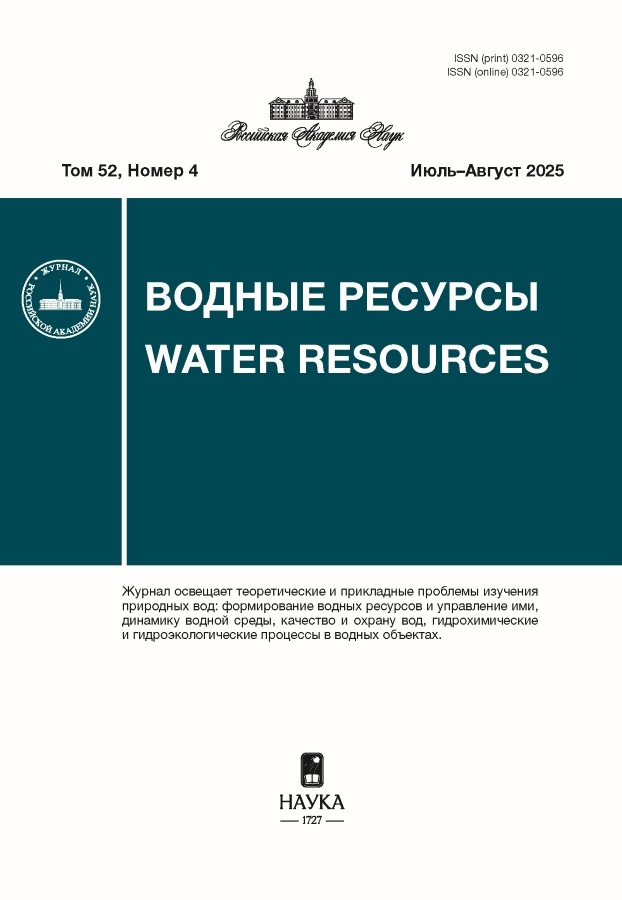
-
Water Resources
ISSN (print): 0321-0596
Founders: Russian Academy of Sciences, Water Problems Institute of RAS
Editor-in-Cheif: Danilov-Danil'yan Viktor Ivanovich, corresponding member RAS, Doctor of Sc., Full Professor
Frequency / Access: 6 issues per year / Subscription
Included in: White list (2nd level), Higher Attestation Commission list, RISC
-
Security issues

-
Security issues
ISSN (online): 2409-7543
Founder: NB-Media Ltd.
Editor-in-Chief: Shultz Vladimir Leopoldovich, Corresponding Member of the RAS, Doctor of Sc., Full Professor
Frequency / Assess: 4 issues per year / Open
Included in: Higher Attestation Commission list, RISC, EBSCO, КиберЛенинка
-
Problems of Biological Medical and Pharmaceutical Chemistry
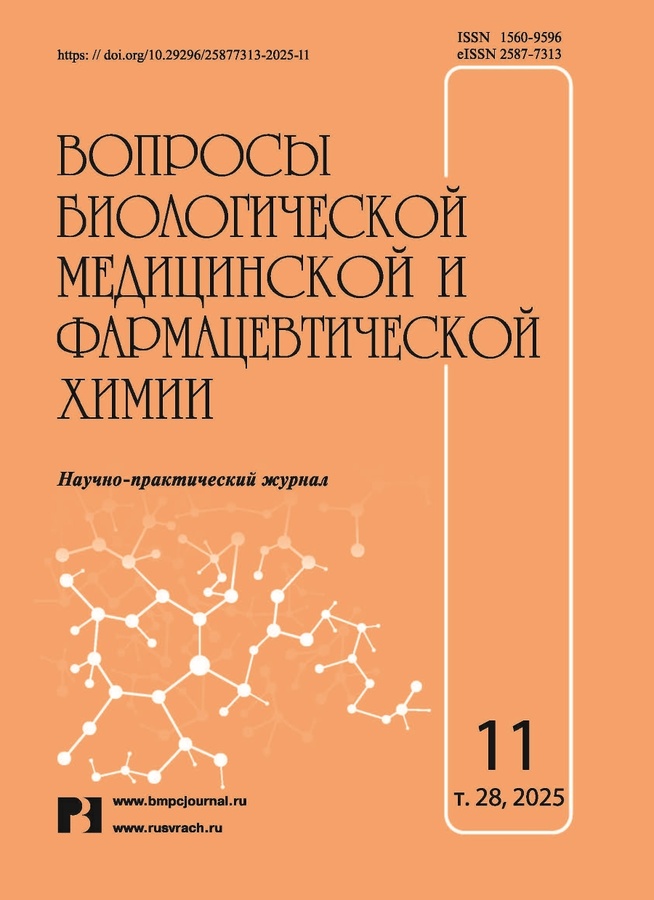
-
Problems of Biological Medical and Pharmaceutical Chemistry
ISSN (print): 1560-9596, ISSN (online): 2587-7313
Founders: All-Russian Scientific Research Institute of Medicinal and Aromatic Plants, Ministry of Science and Higher Education of the Russian Federation
Editor-in-Chief: Sidelnikov Nikolay Ivanovich, Academician of the Russian Academy of Sciences, Doctor of Agricultural Sciences
Frequency / Access: 12 issues per year / Subscription
Included in: White List (4th level), Higher Attestation Commission List, RISC
-
Problems of Virology
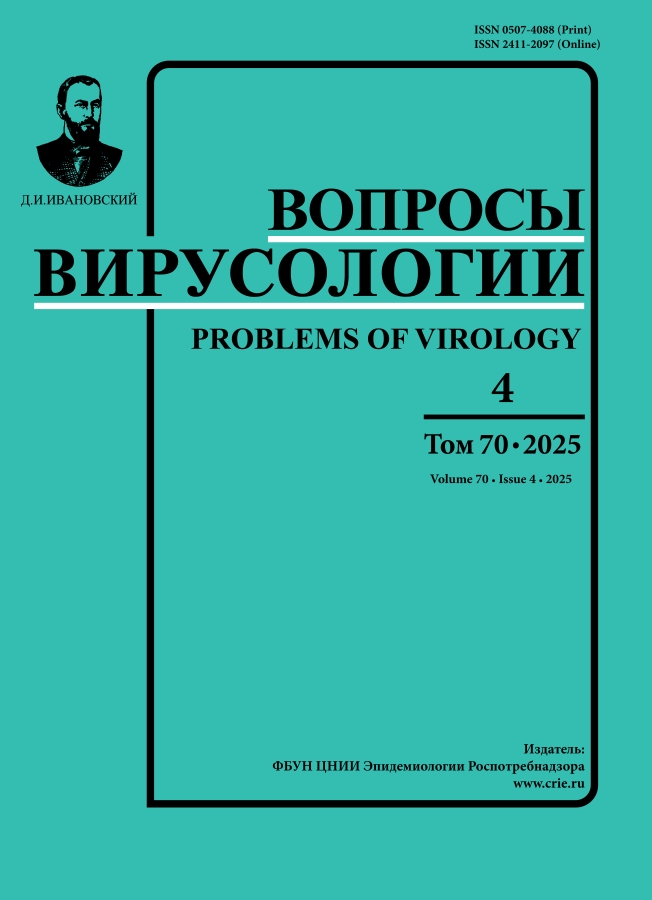
-
Problems of Virology
ISSN (print): 0507-4088, ISSN (online): 2411-2097
Founders: Central Research Institute of Epidemiology, All-Russian public organization "All-Russian Scientific and Practical Society of Epidemiologists, Microbiologists and Parasitologists"
Editor-in-Chief: Lvov Dmitry Konstantinovich, academician of the RAMS, Full Professor
Frequency / Access: 6 issues per year / Open
Included in: White list (3rd level), Higher Attestation Commission List, RISC
-
Questions of State and Law

-
Questions of State and Law
ISSN (print): 2949-3293
Founder: Bunin Yelets State University
Editor-in-Chief: Safronova Elena V. , Doctor of Sc., Full Professor
Frequency / Assess: 4 issues per year / Open
Included in: Higher Attestation Commission List, RISC
-
Public Administration Issues

-
Public Administration Issues
ISSN (print): 1999-5431, ISSN (online): 2409-5095
Founder: National Research University Higher School of Economics
Editor-in-Chief: Lev I. Jakobson, Doctor of Sc., Full Professor
Frequency / Assess: 6 issues per year / Open
Included in: White List (2nd level), Higher Attestation Commission List, RISC, Scopus
-
Health issues

-
Health issues
ISSN (online): 2453-8914
Founder: NB-Media Ltd.
Editor-in-Chief: Danilenko Vasily
Frequency / Assess: 4 issues per year / Open
Included in: RISC
-
Russian Journal of Innovation Economics

-
Russian Journal of Innovation Economics
ISSN (online): 2222-0372
Founder: RAINP LLS (Moscow)
Editor-in-Chief: Starozhuk Evgeny, Ph.D.
Frequency / Access: 4 issues per year / Open
Included in: Higher Attestation Commission List, RISC
-
Studies in the History of Science and Technology

-
Studies in the History of Science and Technology
ISSN (print): 0205-9606, ISSN (online): 2713-041X
Founders: Russian Academy of Sciences, S.I. Vavilov Institute for the History of Science and Technology of RAS
Editor-in-Chief: Roman A. Fando, Doctor of Sc.
Frequency / Access: 4 issues per year / Subscription
Included in: White list (3rd level), RISC, Higher Attestation Commission list
-
Journal of Ichthyology
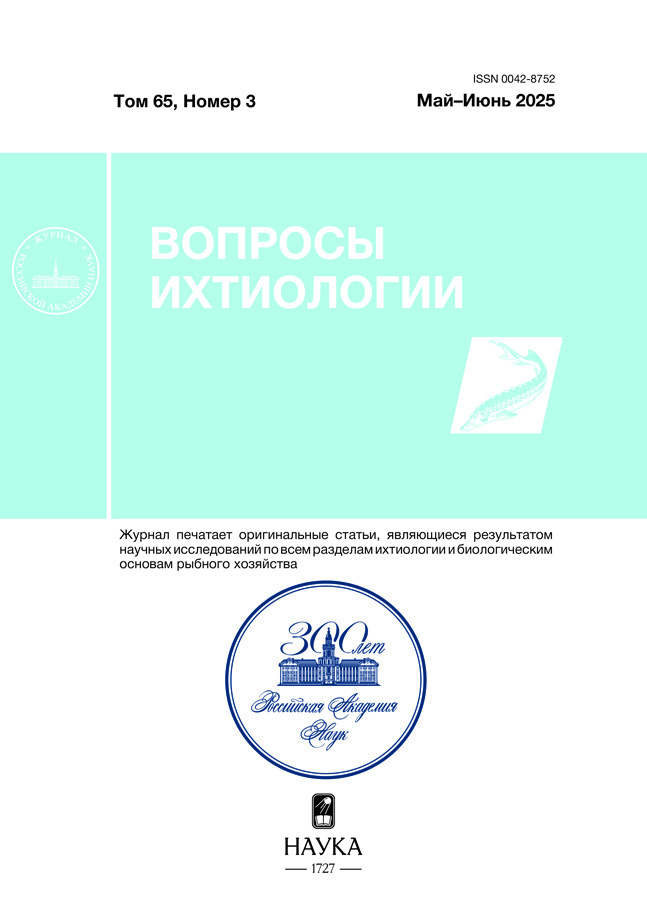
-
Journal of Ichthyology
ISSN (print): 0042-8752
Founders: Russian Academy of Sciences, Severtsov Institute of Ecology and Evolution of RAS
Editor-in-Chief: Pavlov Dmitrij Sergeevich, academician RAS, Doctor of Sc., Full Professor
Frequency / Access: 6 issues per year / Subscription
Included in: White list (3rd level), Higher Attestation Commission list, RISC
-
Problems of materials science

-
Problems of materials science
ISSN (print): 1994-6716
Founder: Federal State Unitary Enterprise Central Research Institute of Structural Materials Prometheus
Editor-in-Chief: Oryshchenko Alexey Sergeevich, Corresponding Member of the RAS, Doctor of Technical Sciences, Professor
Frequency / Access: 4 issues per year / subscription
Included in: White List (3rd level), Higher Attestation Commission List, RISC
-
Voprosy oboronnoj tehniki. Seriâ 16, Tehničeskie sredstva protivodejstviâ terrorizmu

-
Voprosy oboronnoj tehniki. Seriâ 16, Tehničeskie sredstva protivodejstviâ terrorizmu
ISSN (print): 2306-1456
Founders: Scientific and Production Association of Special Materials; All-Russian Research Insitute "Center"
Editor-in-Chief: Shalkovsky Alexey Gennadievich, PhD
Frequency / Access: 12 issues per year / Open
Included in: Higher Attestation Commission List, RISC
-
Problems in Oncology
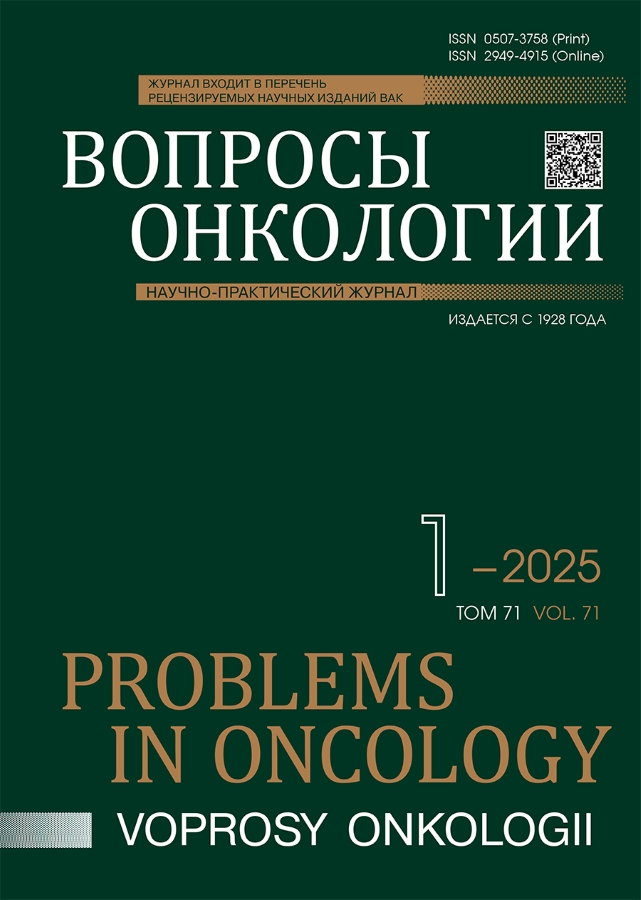
-
Problems in Oncology
ISSN (print): 0507-3758, ISSN (online): 2949-4915
Founder: Federal State Budget Institution «N.N. Petrov National Medical Research Centre of Oncology» Ministry of public health of Russian Federation
Editor-in-Chief: Aleksey M. Belyaev, Corr. Member of the RAS, Dr. Med. Sc., Professor
Frequency / Access: 6 issues per year / Open
Included in: White List (4th level), Higher Attestation Commission List, RISC, Scopus
-
Voprosy otraslevoj èkonomiki

-
Voprosy otraslevoj èkonomiki
ISSN (print): 2949-2793
Founder: Bunin Yelets State University
Editor-in-Chief: Zaitseva Natalia Alexandrovna, Doctor of Sc., Full Professor
Frequency / Assess: 4 issues per year / Open
Included in: Higher Attestation Commission List, RISC
-
Issues of law, economics and technology
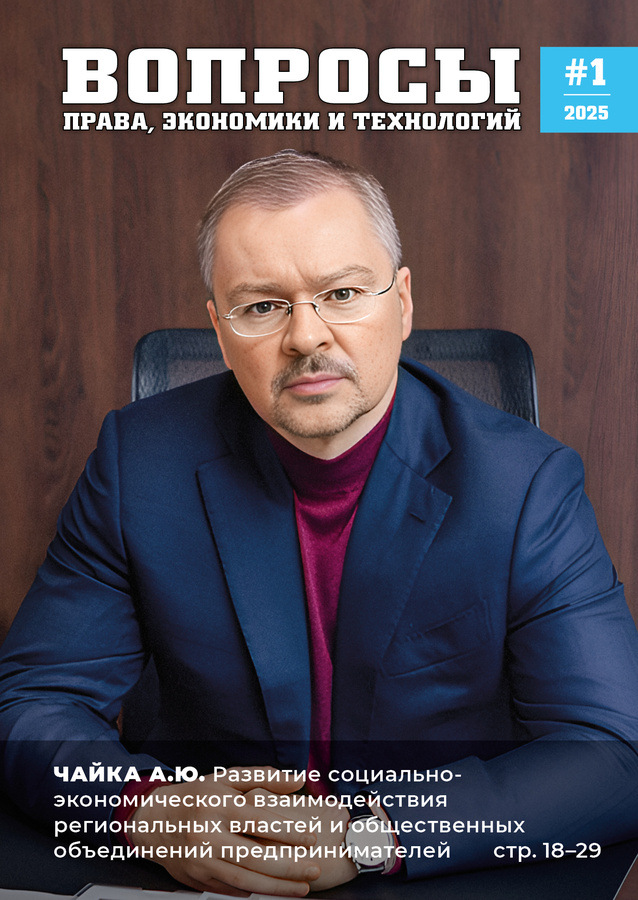
-
Issues of law, economics and technology
ISSN (print): 2949-5172
Founder: Editorial Board of the Journal ""Issues of law, economics and technology""
Editor-in-Chief: Lyubimov Alexey Pavlovich, Dr. Sc. (Low), Professor
Frequency / Access: 4 issues per year / Subscription
Included in: Higher Attestation Commission List, RISC
-
Environmental Management Issues

-
Environmental Management Issues
ISSN (online): 3034-3461
Founder: Individual entrepreneur Podkolzin M.M.
Editor-in-Chief: Silakova Vera Vladimirovna, Doctor of Economic Sciences, Associate Professor
Frequency / Access: 12 issues per year / Hybrid
Included in: RISC
-
Problems of Contemporary Science and Practice. Vernadsky University

-
Problems of Contemporary Science and Practice. Vernadsky University
ISSN (print): 1990-9047, ISSN (online): 2541-853X
Founders: Tambov State Technical University, Association "Joint Vernadsky Univeristy", Voronezh State University of Engineering Technologies
Editor-in-Chief: Nikolay S. Popov, Doctor of Technical Sciences, Professor
Frequency / Access: 4 issues per year / Open
Included in: Higher Attestation Commission List, RISC
-
Steppe Science

-
Steppe Science
ISSN (online): 2712-8628
Founder: Orenburg Federal Research Center, Ural Branch of the Russian Academy of Sciences
Editor-in-Chief: Chibilev Alexander Alexandrovich, academician RAS, Doctor of Sc., Professor
Frequency / Assess: 4 issues per year / Open
Included in: Higher Attestation Commission list, RISC
-
Issues of economic theory

-
Issues of economic theory
ISSN (online): 2587-7666
Founder: Institute of Economics, Russian Academy of Sciences (IE RAS)
Editor-in-Chief: Orekhovsky Petr Alexandrovich, Doctor of Sc., Full Professor
Frequency / Assess: 4 issues per year / Open
Included in: Higher Attestation Commission list, RISC
-
Voprosy Ekologii

-
Voprosy Ekologii
ISSN (online): 3034-7319
Founder: Individual entrepreneur Podkolzin M.M.
Editor-in-Chief: Ilyin Vyacheslav Konstantinovich, Corresponding Member of the Russian Academy of Sciences, Doctor of Medical Sciences
Frequency / Access: 4 issues per year / Open
Included in: RISC
-
Voprosy ètnomuzykoznaniâ

-
Voprosy ètnomuzykoznaniâ
ISSN (print): 2304-9723
Founder: Russian Gnessin Academy of Music
Editor-in-Chief: Larisa M. Belogurova, PhD of Art History, Associate professor
Frequency / Access: 1 issues per year / Open
Included in: RISC
-
Vestnik Rossijskoj akademii nauk
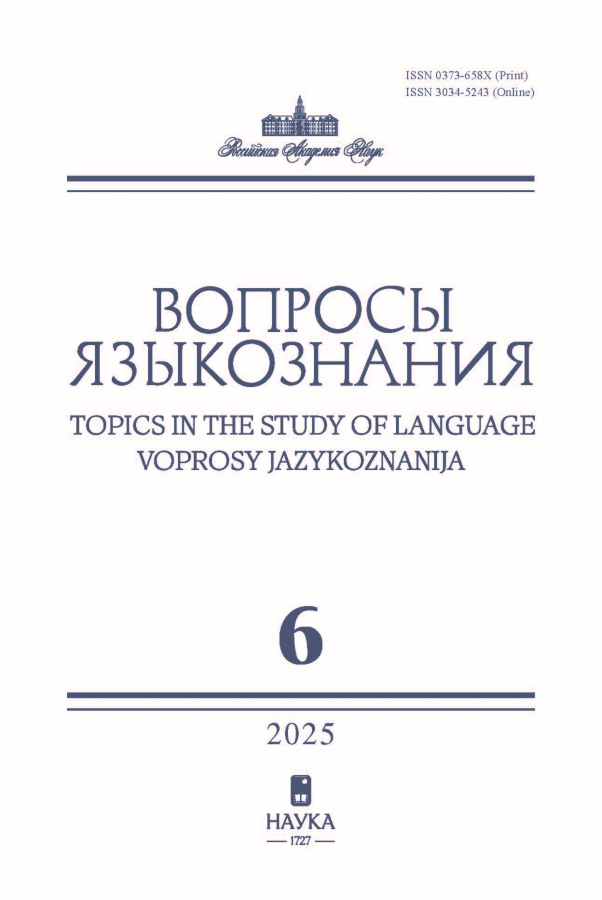
-
Vestnik Rossijskoj akademii nauk
ISSN (print): 0373-658X
Founders: Russian Academy of Sciences, V.V. Vinogradov Russian Language Institute of RAS
Editor-in-chief: Plungyan Vladimir A., academician RAS, Doctor of Sc.
Frequency / Access: 6 issues per year / Subscription
Included in: White list (1st level), Higher Attestation Commission list, RISC, Scopus, Web of Science Core Collection
-
Vrach

-
Vrach
ISSN (print): 0236-3054, ISSN (online): 2587-7305
Founders: Ministry of Health of the Russian Federation, The First Sechenov Moscow State Medical University under Ministry of Health of the Russian Federation
Editor-in-Chief: Delyagin Vasily Mikhailovich, MD, Full Professor
Frequency / Access: 12 issues per year / Open
Included in: Higher Attestation Commission List, RISC
-
Vsë o mâse

-
Vsë o mâse
ISSN (print): 2071-2499
Founder: V.M. Gorbatov Federal Research Center for Food Systems of RAS
Editor-in-Chief: Lisitsyn A.B., Academician of RAS, Doctor of Sc., Professor
Frequency / Access: 6 issues per year / Subscription
Included in: White List (4th level), Higher Attestation Commission List, RISC
-
Journal of Volcanology and Seismology
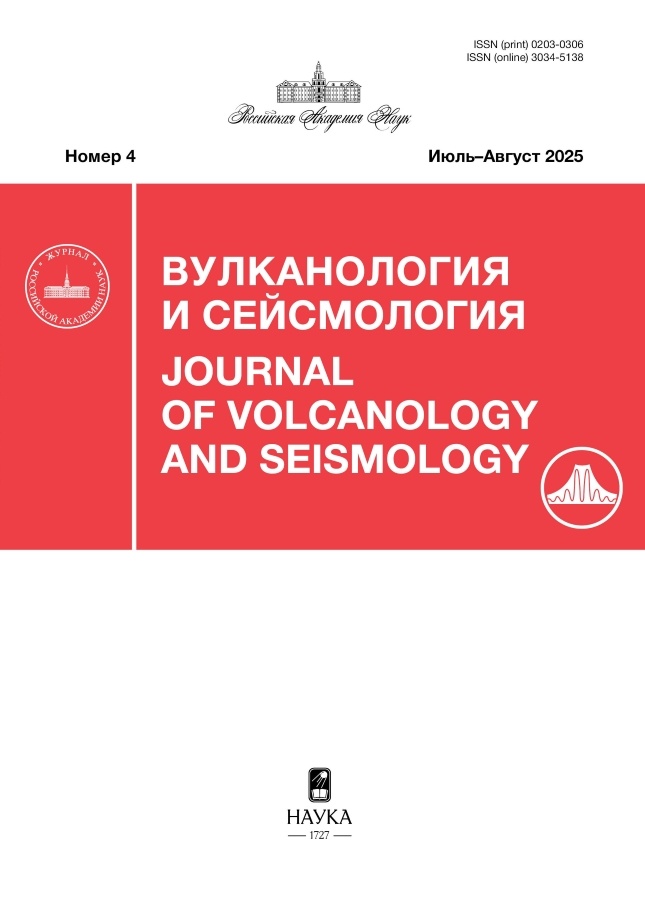
-
Journal of Volcanology and Seismology
ISSN (print): 0203-0306
Founder: Russian Academy of Sciences
Editor-in-Chief: Alexey Leonidovich Sobisevich, Corresponding Member of the Russian Academy of Sciences, Doctor of Physical and Mathematical Sciences, Professor of the Russian Academy of Sciences
Frequency / Access: 6 issues per year / Subscription
Included in: White List (2nd level), Higher Attestation Commission List, RISC
-
The Russian Journal of Vietnamese Studies
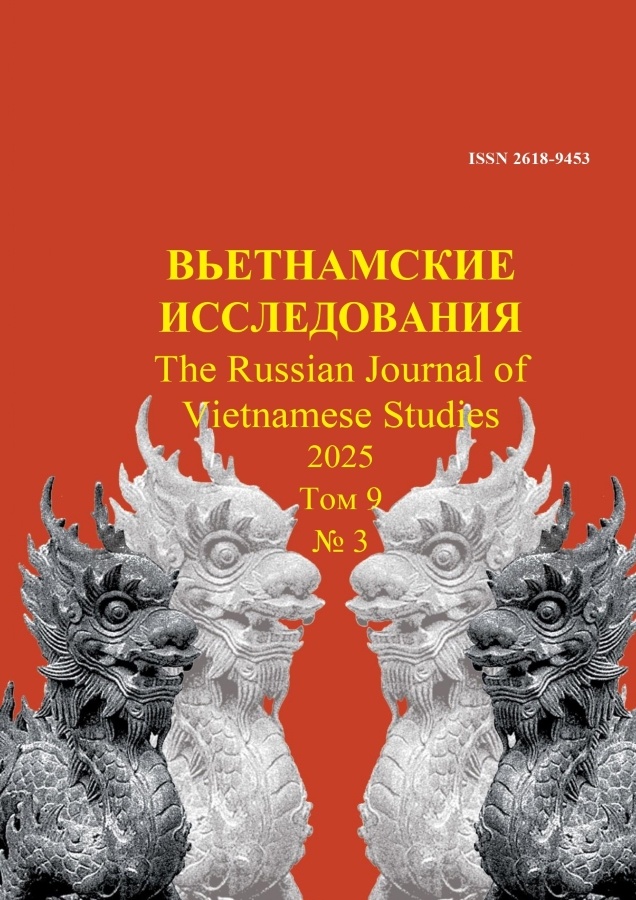
-
The Russian Journal of Vietnamese Studies
ISSN (online): 2618-9453
Founder: Institute of China and Modern Asia RAS
Editor-in-Chief: Mazyrin Vladimir Moiseevich, Doctor of Economics
Frequency / Access: 4 issues per year / Open
Included in: White List (4th level), РИНЦ, Web of Science
-
Polymer Science, Series A
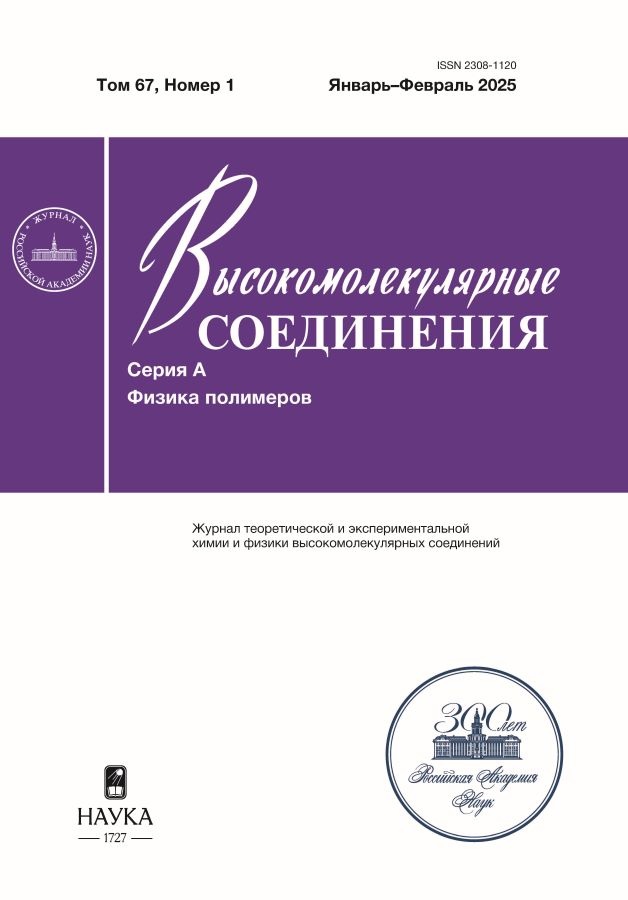
-
Polymer Science, Series A
ISSN (print): 2308-1120, ISSN (online): 2412-9844
Founder: A.V. Topchiev Institute of Petrochemical Synthesis, Russian Academy of Sciences
Editor-in-Chief: Alexander Anatolyevich Yaroslavov, Corresponding Member of the Russian Academy of Sciences, Doctor of Chemical Sciences, Professor
Frequency / Access: 6 times a year / Subscription
Included in: White List (2nd level), Higher Attestation Commission List, RISC
-
Polymer Science, Series B
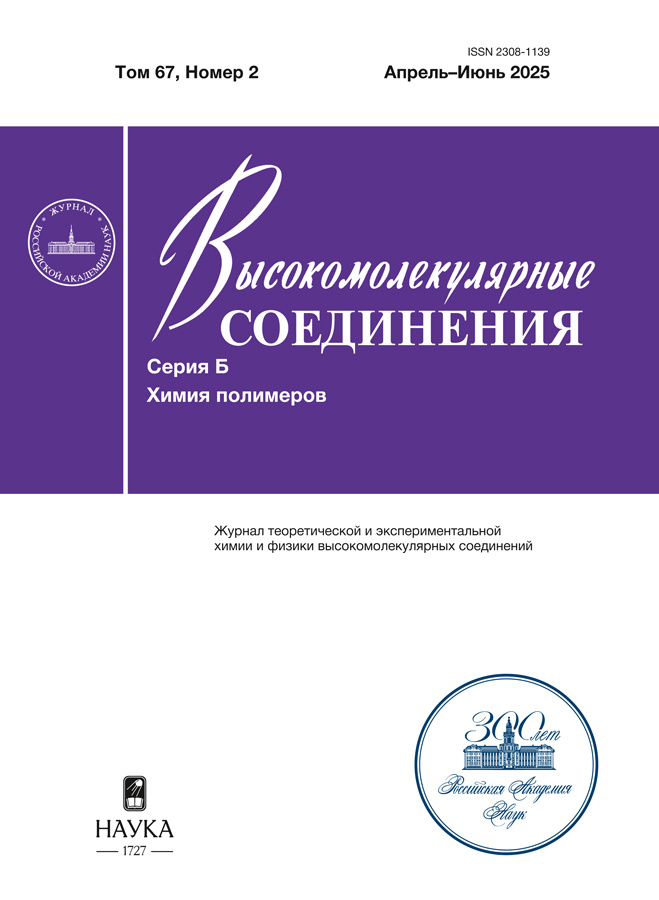
-
Polymer Science, Series B
ISSN (print): 2308-1139, ISSN( online): 2412-9852
Founder: A.V. Topchiev Institute of Petrochemical Synthesis of the Russian Academy of Sciences
Editor-in-Chief: Alexander Anatolyevich Yaroslavov, Corresponding Member of the Russian Academy of Sciences, Doctor of Chemical Sciences, Professor
Frequency / Access: 6 issues per year / Subscription
Included in: White List (2nd level), Higher Attestation Commission List, RISC
-
Polymer Science, Series C
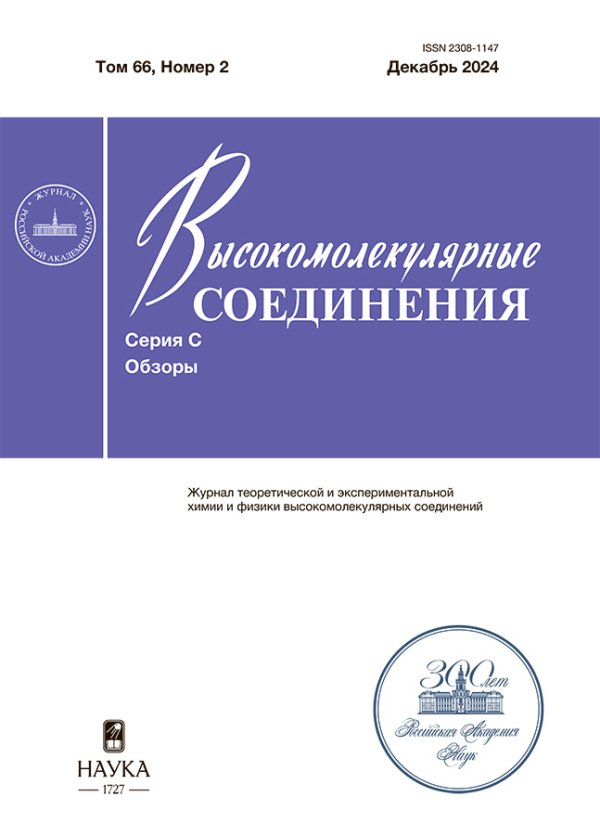
-
Polymer Science, Series C
ISSN (print): 2308-1147; ISSN (online): 2412-9860
Founder: A.V. Topchiev Institute of Petrochemical Synthesis of the Russian Academy of Sciences
Editor-in-Chief: Alexander Anatolyevich Yaroslavov, Corresponding Member of the Russian Academy of Sciences, Doctor of Chemical Sciences, Professor
Frequency / access: 1 issue per year / Subscription
Included in: White List (2nd level), Higher Attestation Commission List, RISC
-
Russian Journal of Genetics
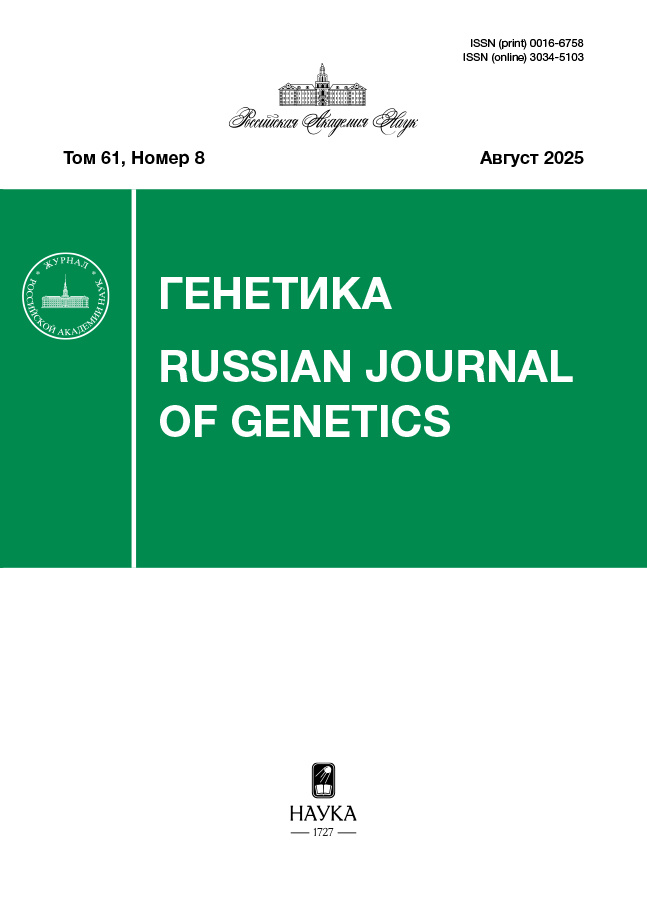
-
Russian Journal of Genetics
ISSN (print): 0016-6758
Founder: Russian Academy of Sciences
Editor-in-Chief: Nikolay Kazimirovich Yankovskiy, Corresponding Member of the Russian Academy of Sciences, Doctor of Biological Sciences, Professor
Frequency / Access: 12 issues per year / Subscription
Included in: White List (3rd level), Higher Attestation Commission List, RISC
-
Genes & Cells
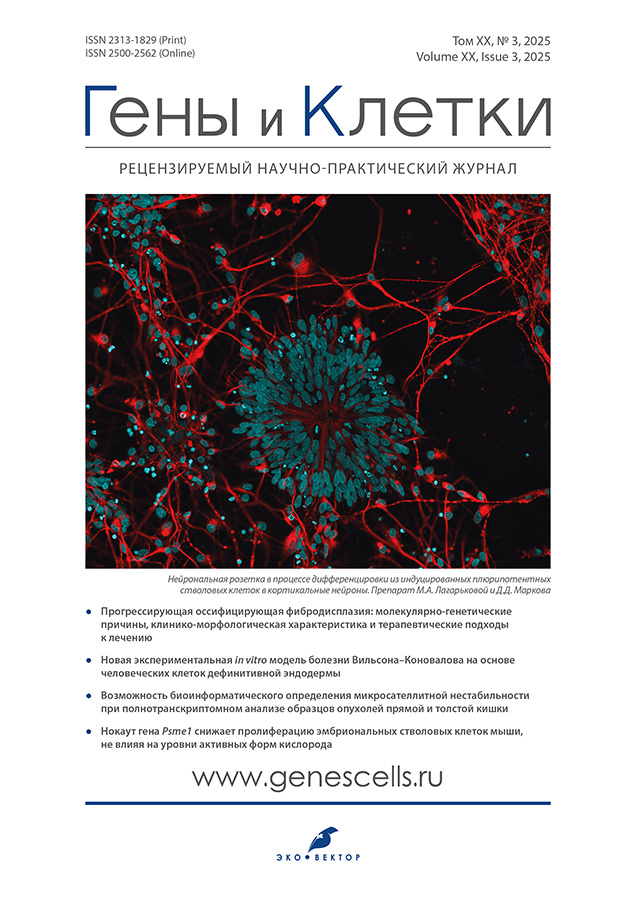
-
Genes & Cells
ISSN (print): 2313-1829, ISSN (online): 2500-2562
Founders: Public Joint-Stock Company "Human Stem Cells Institute", Lopukhin Federal Research and Clinical Center of Physical-Chemical Medicine of Federal Medical Biological Agency, Eco-Vector
Editor-in-Chief: Marina A. Lagarkova, corresponding member RAS, Doctor of Sc., Full Professor
Frequency / Access: 4 issues per year / Open
Included in: While List (3rd level), RISC, Scopus, Embase
-
Geographical Bulletin

-
Geographical Bulletin
ISSN (print): 2079-7877
Founder: Perm State University
Editor-in-Chief: Zyryanov A.I.., Doctor of Sc., Full Professor
Frequency / Assess: 4 issues per year / Open
Included in: White List (3rd level), Higher Attestation Commission List, RISC
-
Geology of Ore Deposits
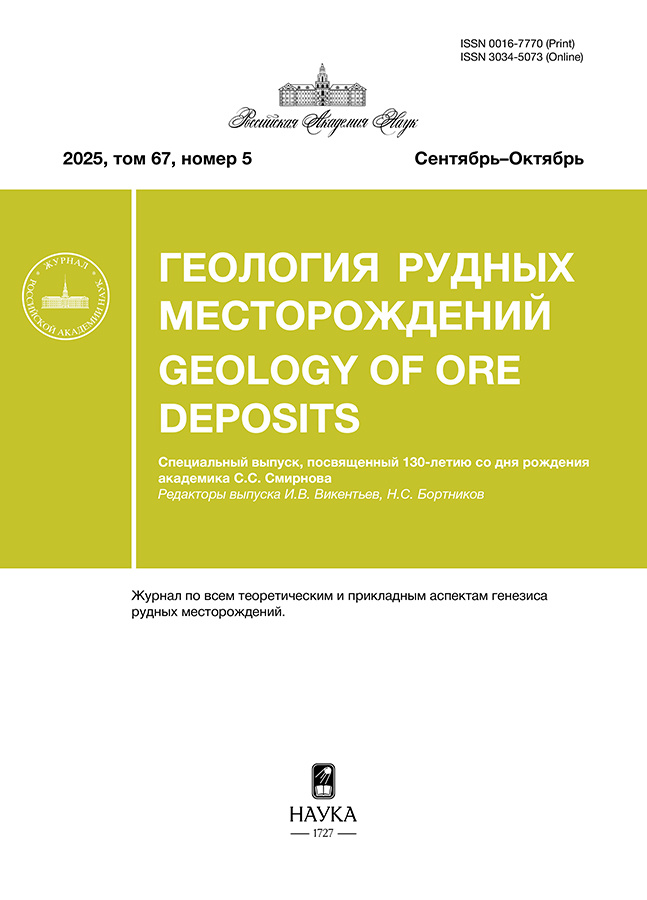
-
Geology of Ore Deposits
ISSN (print): 0016-7770
Founder: Institute of Geology of Ore Deposits, Petrography, Mineralogy, and Geochemistry, Russian Academy of Sciences
Editor-in-Chief: Ilya Vladimirovich Vikentyev, Doctor of Geological and Mineralogical Sciences
Frequency / Access: 6 issues per year / Subscription
Included in: White List (1st level), Higher Attestation Commission List, RISC
-
Geology. The bulletin of the department of earth sciences and natural resources

-
Geology. The bulletin of the department of earth sciences and natural resources
ISSN (print):1728-7634, ISSN (online): 2949-4052
Founder: Academy of Sciences of the Republic of Bashkortostan
Editor-in-Chief: Valiullin R.A.
Frequency / Assess: 4 issues per year / Open
Included in: RISC
-
Geomagnetism and Aeronomy
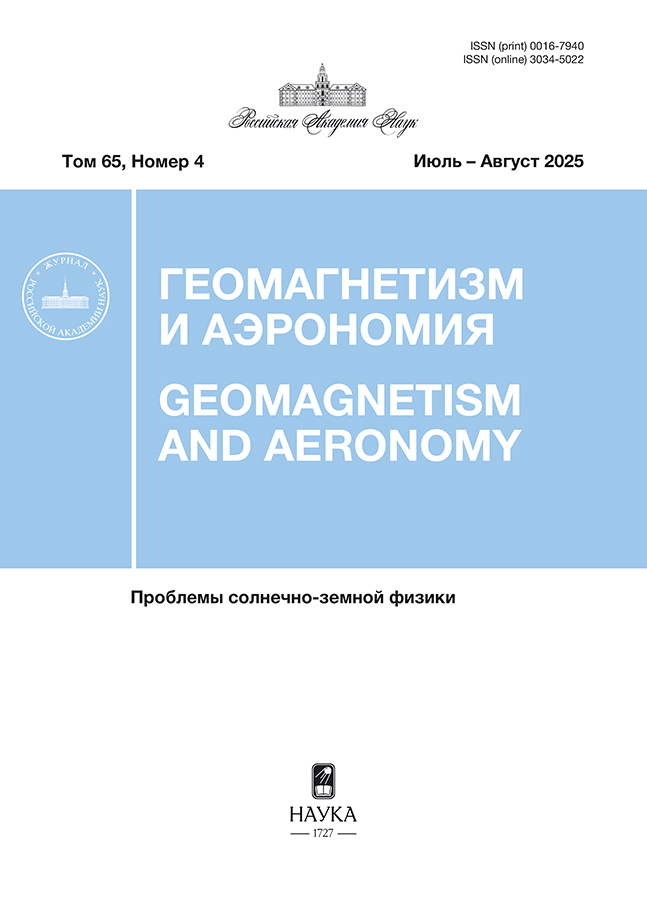
-
Geomagnetism and Aeronomy
ISSN (print): 0016-7940
Founder: N.V. Pushkov Institute of Terrestrial Magnetism, Ionosphere, and Radio Wave Propagation, Russian Academy of Sciences
Editor-in-Chief: Vladimir Dmitrievich Kuznetsov, Doctor of Physical and Mathematical Sciences
Frequency / Access: 6 issues per year / Subscription
Included in: White List (2nd level), Higher Attestation Commission List, RISC
-
Geomorphology and Paleogeography
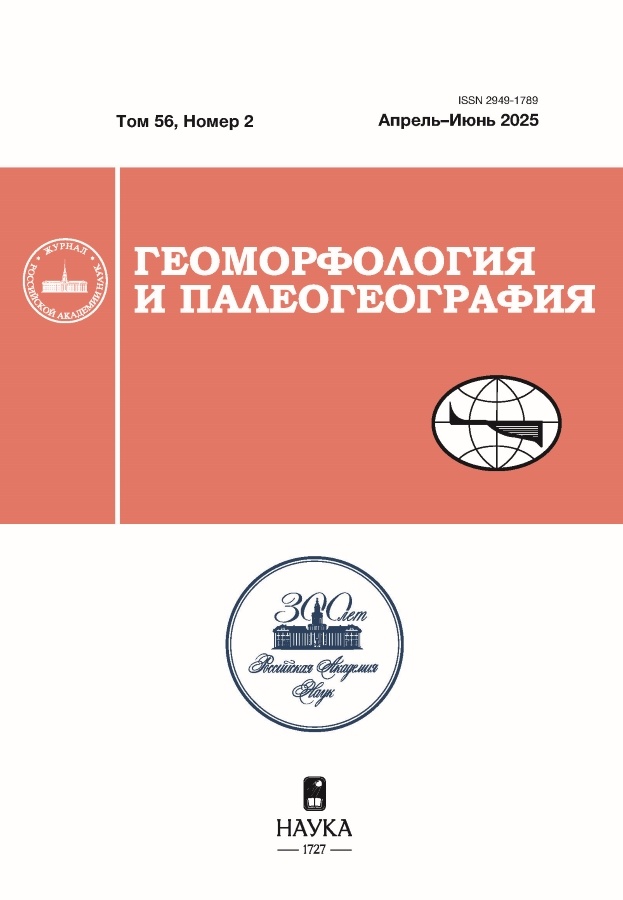
-
Geomorphology and Paleogeography
ISSN (print): 2949-1789, ISSN (online): 2949-1797
Founders: Russian Academy of Sciences, Institute of Geography of the Russian Academy of Sciences
Editor-in-Chief: Andrey Valeryevich Panin, Corresponding Member of the Russian Academy of Sciences, Doctor of Geographic Sciences,
Frequency / Access: 4 issues per year / Subscription
Included in: Higher Attestation Commission List, RISC
-
Geotectonics
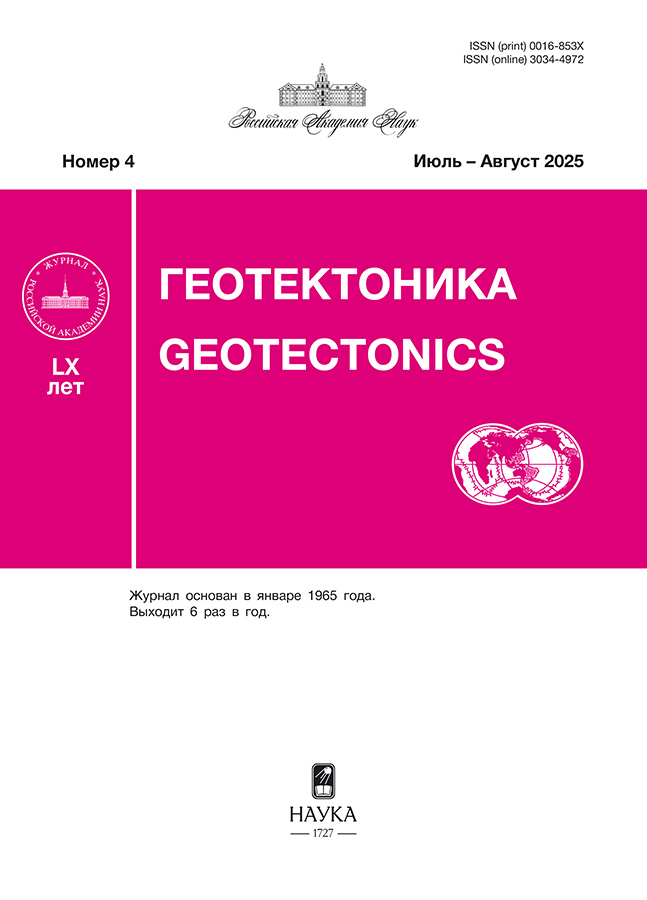
-
Geotectonics
ISSN (print): 0016-853Х
Founder: Russian Academy of Sciences
Editor-in-Chief: Kirill Evgenyevich Degtyarev, Academician of the Russian Academy of Sciences
Frequency / Access: 6 issues per year / Subscription
Included in: White List (1st level), Higher Attestation Commission List, RISC
-
Geochemistry International
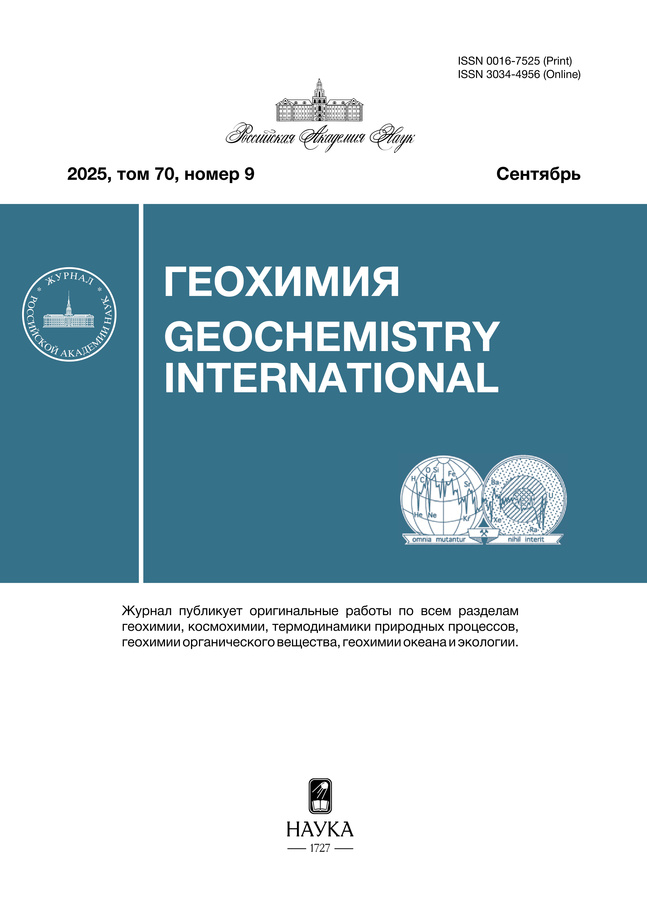
-
Geochemistry International
ISSN (print): 0016-7525
Founders: V.I. Vernadsky Institute of Geochemistry and Analytical Chemistry, Russian Academy of Sciences
Editor-in-Chief: Yuri Aleksandrovich Kostitsyn, Academician of the Russian Academy of Sciences, Doctor of Geological and Mineralogical Sciences
Frequency / Access: 12 issues per year / Subscription
Included in: White List (2nd level), Higher Attestation Commission List, RISC
-
Environmental Geoscience
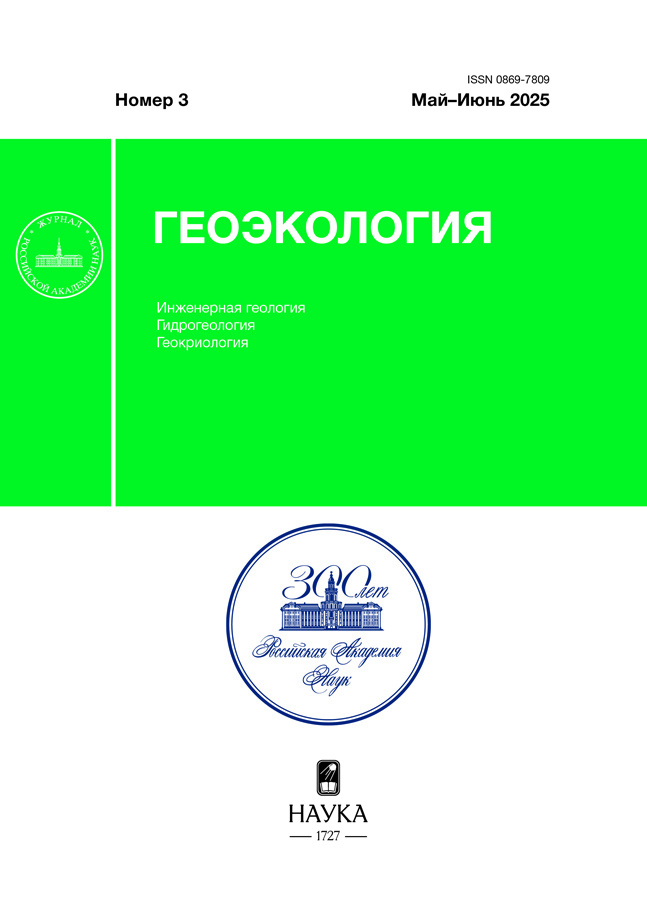
-
Environmental Geoscience
ISSN (print): 0869-7809
Founders: E.M. Sergeev Institute of Geoecology of the Russian Academy of Sciences, Russian Academy of Sciences
Editor-in-Chief: Voznesensky Evgeny Arnoldovich, Doctor of Geological and Mineralogical Sciences
Frequency / Access: 6 issues per year / Subscription
Included in: White List (3rd level), Higher Attestation Commission List, RISC
-
Gynecology

-
Gynecology
ISSN (print): 2079-5696, ISSN (online): 2079-5831
Founder: Medicinskie izdaniya CJSC
Editor-in-Chief: Vera N. Prilepskaya, Doctor of Sc., Professor
Frequency / Access: 6 issues per year / Open
Included in: White List (3rd level), Higher Attestation Commission List, RISC, Scopus
-
Gorenie i vzryv
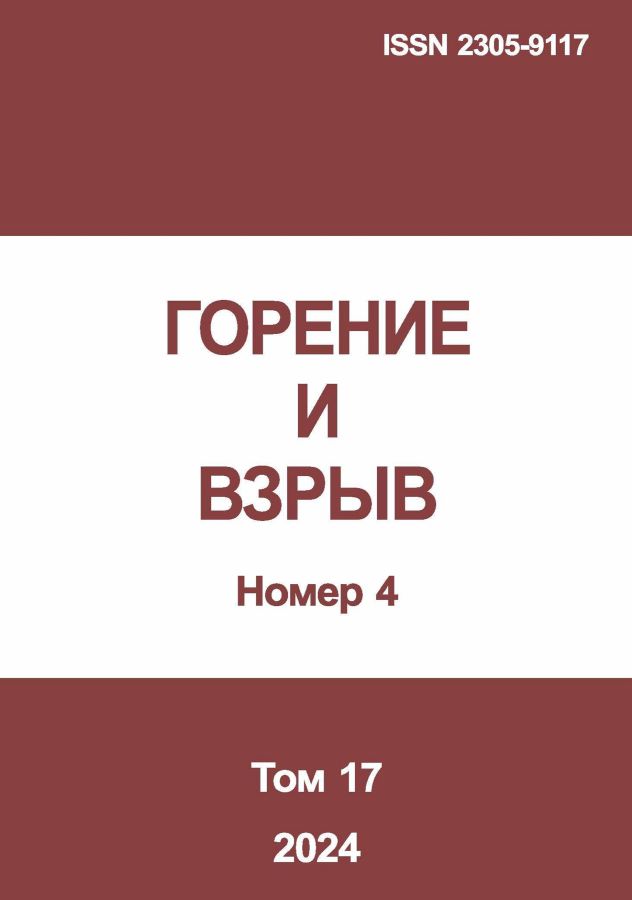
-
Gorenie i vzryv
ISSN (print): 2305-9117
Founder: Center of Pulse Detonation Combustion
Editor-in-Chief: Frolov S.M., Doctor of Sc.
Frequency / Access: 4 issues per year / Subscription
Included in: Higher Attestation Commission List, RISC, Scopus
-
Mining Equipment and Electromechanics

-
Mining Equipment and Electromechanics
ISSN (print): 1816-4528, ISSN (online): 2949-0634
Founder: T.F. Gorbachev Kuzbass state technical university
Editor-in-Chief: Horeshok A. A., Dоctor of Sc.(Engineering), Professor
Frequency / Access: 6 issues per year / Open
Included in: Higher Attestation Commission List, RISC
-
MINING SCIENCE AND TECHNOLOGY (RUSSIA)

-
MINING SCIENCE AND TECHNOLOGY (RUSSIA)
ISSN (online): 2500-0632
Founder: The Federal State Educational Institution of the Higher Education National University of Science and Technology MISIS
Editor-in-Chief: Vadim L. PETROV, Dr. Sc., Professor
Frequency / Assess: 4 issues per year / Open
Included in: White List (1st level), Higher Attestation Commission list, RISC, Scopus
-
Gorodskie issledovaniâ i praktiki

-
Gorodskie issledovaniâ i praktiki
ISSN (print): 2500-1604, ISSN (online): 2542-0003
Founder: National Research University Higher School of Economics
Editor-in-Chief: Anashvili V.V.
Frequency / Assess: 4 issues per year / Open
Included in: RISC
-
Gosudarstvennaâ služba i kadry

-
Gosudarstvennaâ služba i kadry
ISSN (print): 2312-0444, ISSN (online): 2782-3482
Founder: ANO NI ON
Editor-in-Chief: Nodari Darchoevich Eriashvili, Doctor of Sc., Professor
Frequency / Access: 4 issues per year / Subscription
Included in: Higher Attestation Commission List, RISC
-
Urban construction and architecture
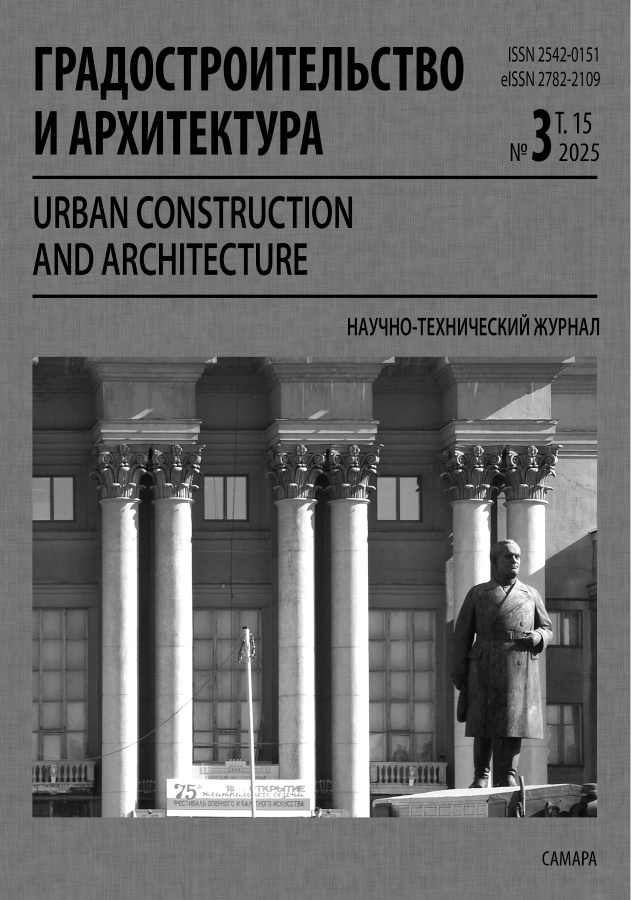
-
Urban construction and architecture
ISSN (print): 2542-0151, ISSN (online): 2782-2109
Founder: Samara State Technical University
Editor-in-Chief: Strelkov Alexander Kuzmich, Doctor of Technical Sciences, Professor
Frequency / Access: 4 issues per year / Open
Included in: Higher Attestation Commission List, RISC
-
Humanities Research in the Russian Far East

-
Humanities Research in the Russian Far East
ISSN (print): 1997-2857, ISSN (online): 2076-8575
Founder: Far Eastern Federal University
Editor-in-Chief: Azhimov Felix Evgenievich, Doctor of Sc., Full Professor
Frequency / Access: 4 issues per year / Open
Included in: Higher Attestation Commission List, RISC
-
Humanities researches of the Central Russia

-
Humanities researches of the Central Russia
ISSN (print): 2541-9056
Founder: Lipetsk State Pedagogical University named after P.P. Semenov-Tyan-Shan
Editor-in-Chief: Boguslavsky Mikhail Viktorovich, Corr. Member of RAE, Ph.D., Dr. Sci
Frequency / Assess: 4 issues per year / Open
Included in: Higher Attestation Commission List, RISC
-
The Humanities and Education

-
The Humanities and Education
ISSN (print): 2079-3499
Founder: Mordovian State Pedagogical University named after M. E. Evseviev
Editor-in-Chief: Shukshina T.I., Doctor of Sc., Full Professor
Frequency / Assess: 4 issues per year / Open
Included in: Higher Attestation Commission list, RISC
-
Humanitarian Vector

-
Humanitarian Vector
ISSN (print): 1996-7853, ISSN (online): 2542-0038
Founder: Federal state budgetary educational establishment of higher education "Transbaikal State University"
Editor-in-Chief: Erofeeva Irina V., Doctor of Sc., Professor
Frequency / Assess: 4 issues per year / Open
Included in: Higher Attestation Commission list, RISC
-
Humanities, socio-economic and social sciences

-
Humanities, socio-economic and social sciences
ISSN (print): 2220-2404, ISSN (online): 2221-1373
Founders: Limited Liability Company "Science and Education", Adyghe State University
Editor-in-Chief: Kharitonov Evgeniy Mikhailovich
Frequency / Assess: 12 issues per year / Open
Included in: Higher Attestation Commission list, RISC
-
Far Eastern Philological Journal

-
Far Eastern Philological Journal
ISSN (online): 2949-2580
Founder: Far Eastern Federal University
Editor-in-Chief: Modina Galina Ivanovna, Doctor of Sc., Full Professor
Frequency / Access: 4 issues per year / Open
Included in: RISC
-
Детские чтения
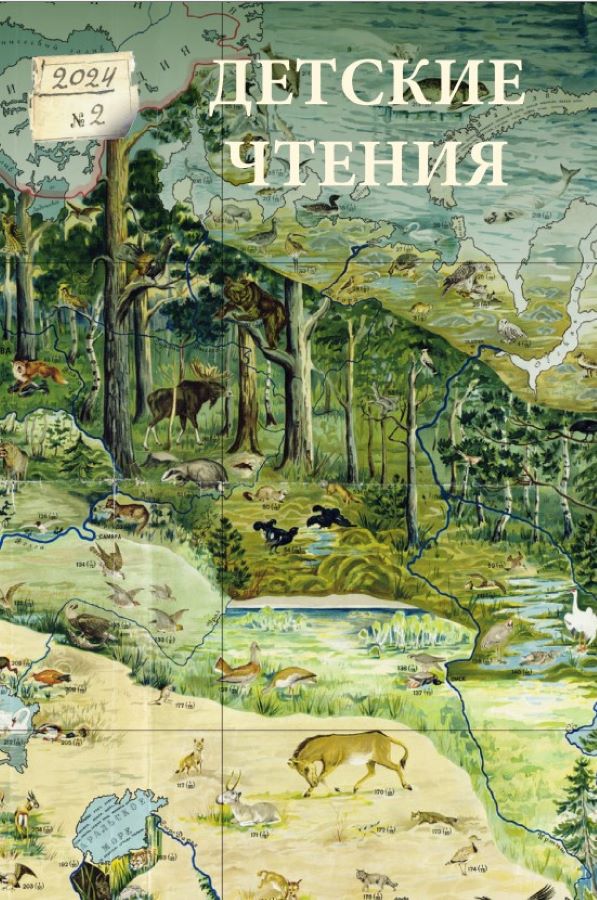
-
Детские чтения
ISSN (print): 2304-5817, ISSN (online): 2686-7052
Founder: Institute of Russian Literature (Pushkinskii Dom) of the Russian Academy of Sciences
Editor-in-Chief: Maria Litovskaya, Svetlana Maslinskaya, Dr. of Philological Sciences, Professor
Frequency / Access: 2 issues per year / Open
Included in: Higher Attestation Commission List, RISC, Scopus
-
Russian Journal of Nondestructive Testing
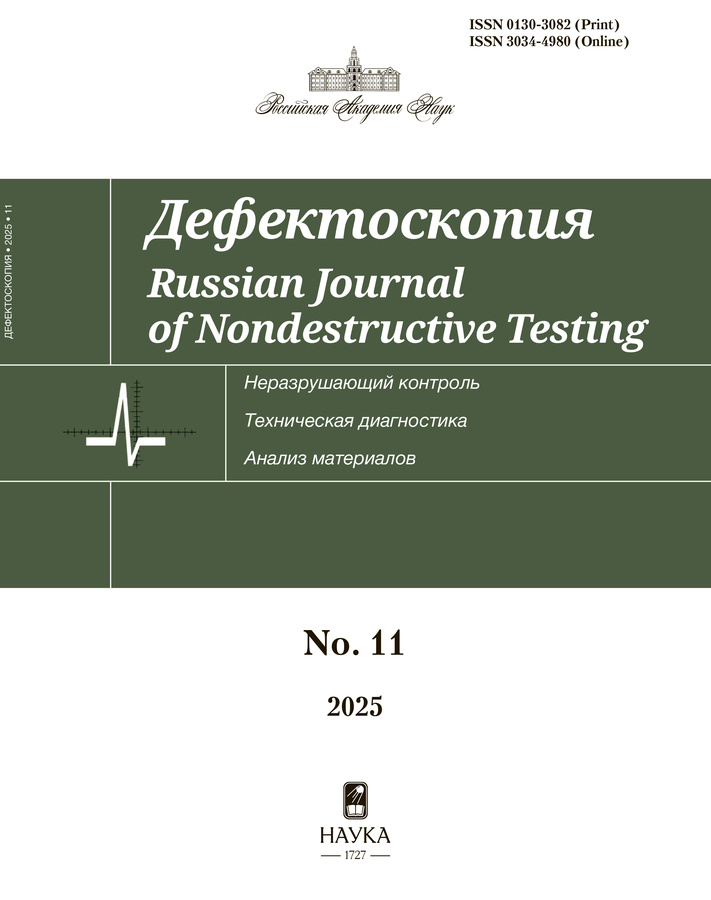
-
Russian Journal of Nondestructive Testing
ISSN (print): 0130-3082
Founders: Russian Academy of Sciences, M.N. Mikheev Institute of Metal Physics of the Ural Branch of the Russian Academy of Sciences
Editor-in-Chief: Vladimir Nikolaevich Kostin, Doctor of Technical Sciences
Frequency / Access: 12 issues per year / Subscription
Included in: White List (2nd level), Higher Attestation Commission List, RISC
-
Design. Materials. Technology

-
Design. Materials. Technology
ISSN (print): 1990-8997
Founder: Saint Petersburg State University of Industrial Technologies and Design
Editor-in-Chief: Demidov Aleksej Vjacheslavovich, Dr. Sci, Professor
Frequency / Assess: 4 issues per year / subscription
Included in: Higher Attestation Commission list, RISC
-
DEMIS. Demographic Research
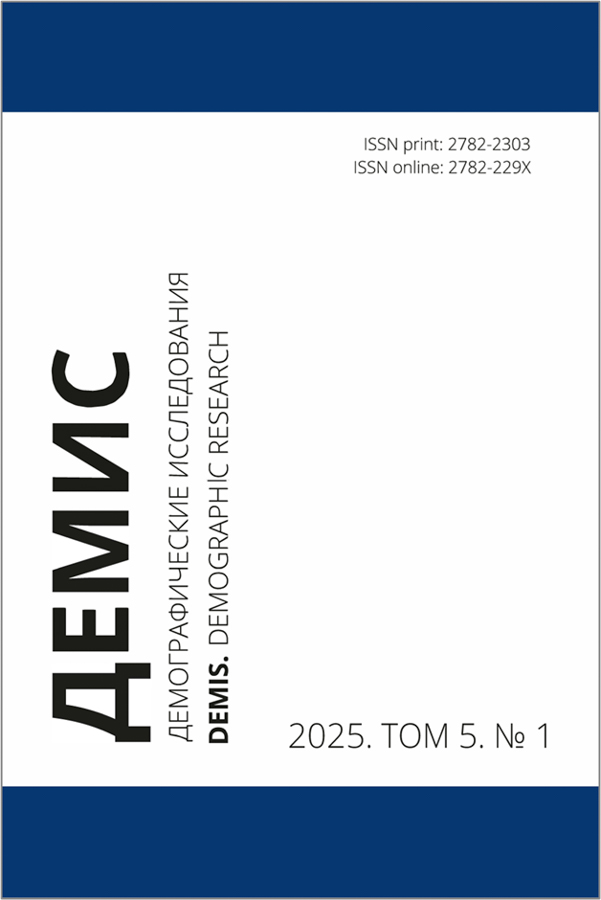
-
DEMIS. Demographic Research
ISSN (print): 2782-2303, ISSN (online): 2782-229X
Founder: Federal Center of Theoretical and Applied Sociology of the Russian Academy of Sciences
Editor-in-Chief: Sergey V. Ryazantsev, Corresponding Member of the RAS, Dr. of Economics, Professor, Chief Researcher
Frequency / Access: 4 issues per year / Open
Included in: Higher Attestation Commission List, RISC
-
Journal of Dynamics and Vibroacoustics
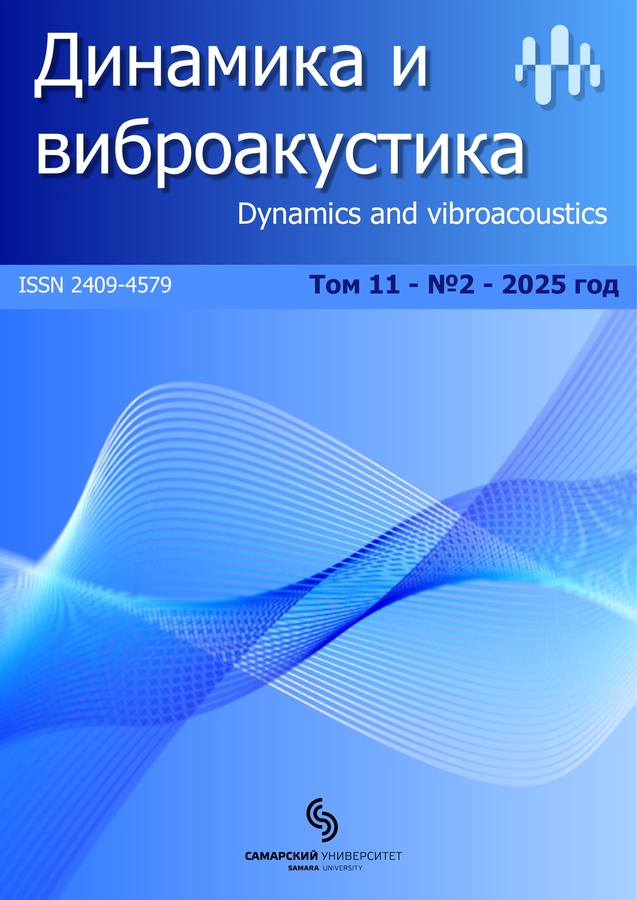
-
Journal of Dynamics and Vibroacoustics
ISSN (online): 2409-4579
Founder: Samara National Research University
Editor-in-Chief: Evgeniy V. Shakhmatov, Academician of the RAS, Dr. Science (Engineering), Professor
Frequency / Assess: 4 issues per year / Open
Included in: RISC
-
Environmental Dynamics and Global Climate Change

-
Environmental Dynamics and Global Climate Change
ISSN (print): 2218-4422, ISSN (online): 2541-9307
Founder: Yugra State University
Editor-in-Chief: Glagolev M.V., PhD, Lapshina E.D., PhD.М.В.
Frequency / Access: 2 issues per year / Open
Included in: RISC
-
Dinamika složnyh sistem

-
Dinamika složnyh sistem
ISSN (print): 1999-7493
Founder: Limited Liability Company "Publishing House "Radiotekhnika"
Editor-in-Chief: Drogovoz Pavel Anatolyevich, Doctor of Sc., Full Professor
Frequency / Access: 4 issues per year /Hybrid
Included in: Higher Attestation Commission List, RISC
-
Diplomatic Herald. Law, Economics, Politics

-
Diplomatic Herald. Law, Economics, Politics
ISSN (print): 3034-3674
Founder: Autonomous non-profit organization ""Center for national strategy, innovative development and implementation""
Editor-in-Chief: Lyubimov Alexey Pavlovich, Dr. Sc. (Low), Professor
Frequency / Access: 4 issues per year / Subscription
Included in: RISC
-
Differential Equations
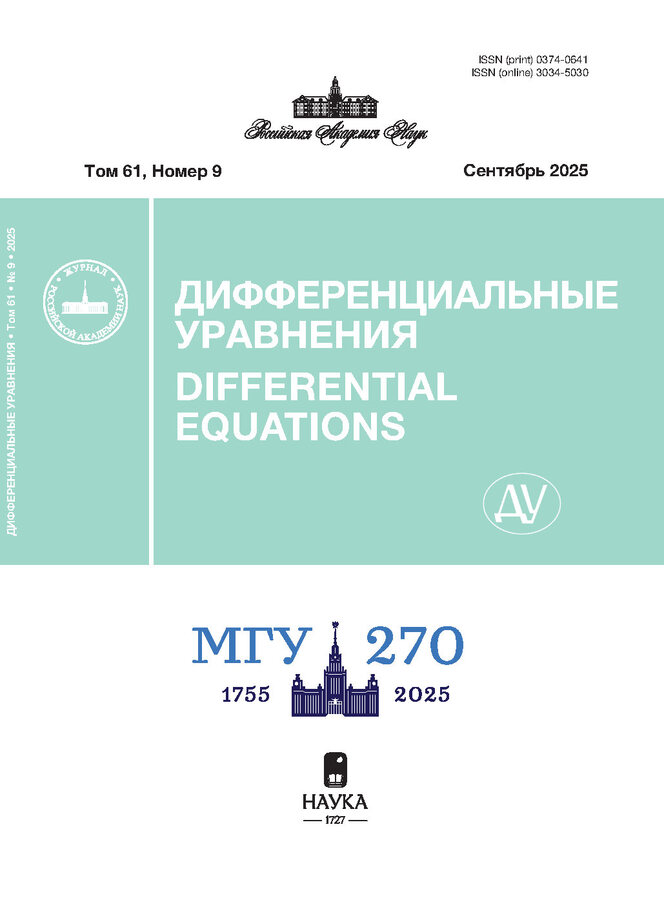
-
Differential Equations
ISSN (print): 0374-0641
Founder: Russian Academy of Sciences (RAS)
Editor-in-Chief: Sadovnichii Victor Antonovich, academician RAS, Doctor of Sc.
Frequency / Assess: 12 issues per year / Subscription
Included in: White List (1st level), Higher Attestation Commission List, RISC
-
Doklady Mathematics

-
Doklady Mathematics
ISSN (print): 2686-9543
Founder: Russian Academy of Sciences
Editor-in-Chief: Alexey Lvovich Semenov, Academician of the Russian Academy of Sciences, Doctor of Physical and Mathematical Sciences
Frequency / Access: 6 issues per year / Subscription
Included in: White List (4th level), Higher Attestation Commission List, RISC
-
Doklady Biological Sciences
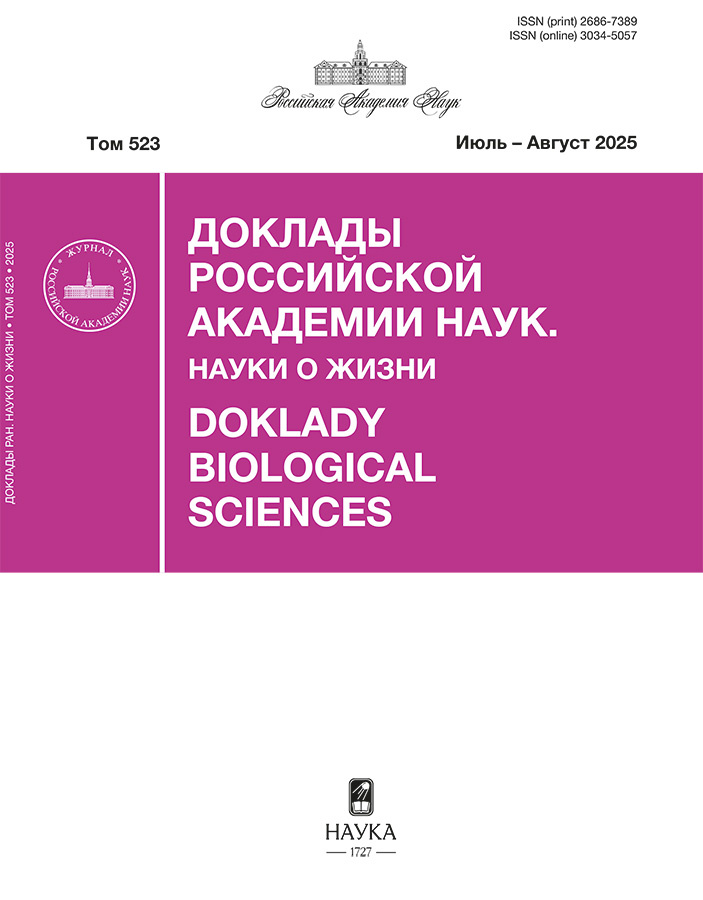
-
Doklady Biological Sciences
ISSN (print): 2686-7389
Founder: Russian Academy of Sciences
Editor-in-Chief: Alexander Gabibovich Gabibov, Academician of the Russian Academy of Sciences
Frequency / Access: 6 issues per year / Subscription
Included in: White List ( 2nd level), RISC, Web of science
-
Doklady Earth Sciences

-
Doklady Earth Sciences
ISSN (print): 2686-7397
Founder: Russian Academy of Sciences
Editor-in-Chief: Nikolay Stefanovich Bortnikov, Academician of the Russian Academy of Sciences, Doctor of Geological and Mineralogical Sciences
Frequency / Access: 12 issues per year / Subscription
Included in: White List (2nd level), RISC
-
Doklady Physics
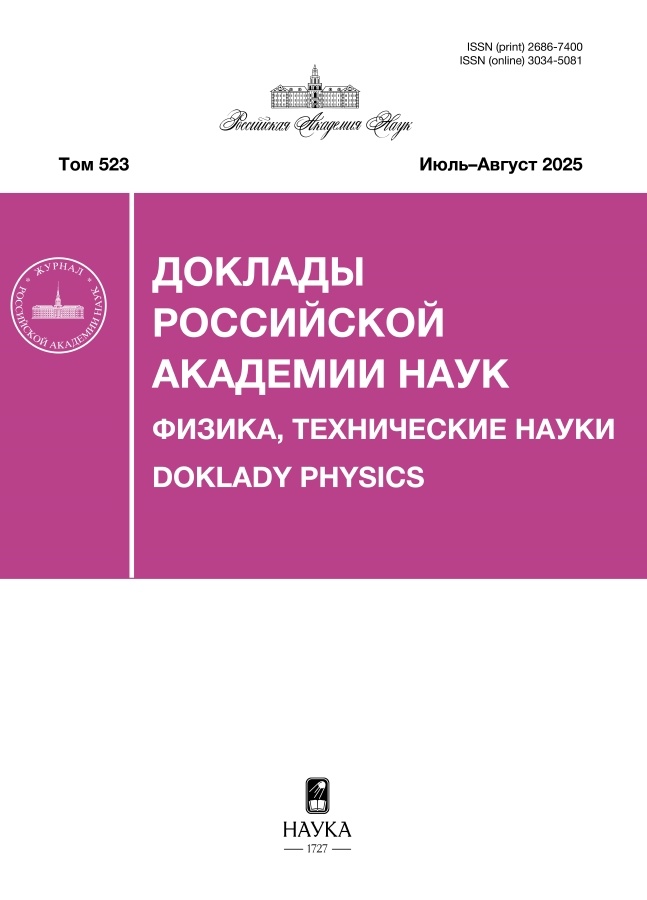
-
Doklady Physics
ISSN (print): 2686-7400
Founder: Russian Academy of Sciences
Editor-in-Chief: Sergey Vladimirovich Garnov, academician of the Russian Academy of Sciences, Doctor of Physical and Mathematical Sciences
Frequency / Access: 6 issues per year / Subscription
Included in: White List (3rd level), RISC
-
Doklady Chemistry

-
Doklady Chemistry
ISSN (print): 2686-9535
Founder: Russian Academy of Sciences
Editor-in-Chief: Valentin Pavlovich Ananikov, Academician of the Russian Academy of Sciences, Doctor of Chemical Sciences
Frequency / Access: 6 issues per year / Subscription
Included in: White List (3rd level), RISC
-
The Eurasian Journal of Life Sciences

-
The Eurasian Journal of Life Sciences
ISSN (print): 3033-5493
Founder: Sechenov First Moscow State Medical University
Editor-in-Chief: Glybochko Petr V., Academician of the RAS, Doctor of Sc., Full Professor
Frequency / Assess: 4 issues per year / Open
Included in: RISC
-
Speech genres
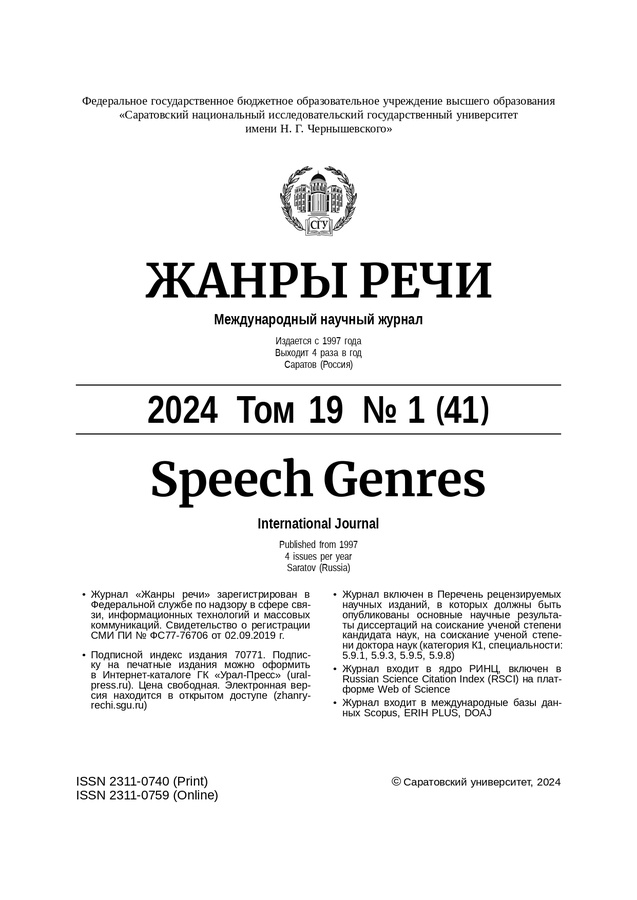
-
Speech genres
ISSN (print): 2311-0740, ISSN (online): 2311-0759
Founder: SSU named after N.G. Chernyshevsky
Editor-in-Chief: Dementyev Vadim Viktorovich, Doctor of Philology. sciences, professor
Frequency / Access: 4 issues per year / Open
Included in: White List (1st level), Higher Attestation Commission List, RISC, Scopus
-
Reinforced concrete structures

-
Reinforced concrete structures
ISSN (print): 2949-1622, ISSN (online): 2949-1614
Founder: Moscow State University of Civil Engineering (National Research University)
Editor-in-Chief: Tamrazyan Ashot Georgievich, Doctor of Sc., Professor
Frequency / Access: 4 issues per year / Open
Included in: RISC
-
Woman in Russian Society

-
Woman in Russian Society
ISSN (print): 1992-2892, ISSN (online): 2500-221X
Founder: Ivanovo State University
Editor-in-Chief: Olga A. Khasbulatova, Doctor of Historical Sciences, Professor
Frequency / Access: 4 issues per year / Open
Included in: White List (3rd level), Higher Attestation Commission List, RISC, Scopus
-
Animal Husbandry and Fodder Production
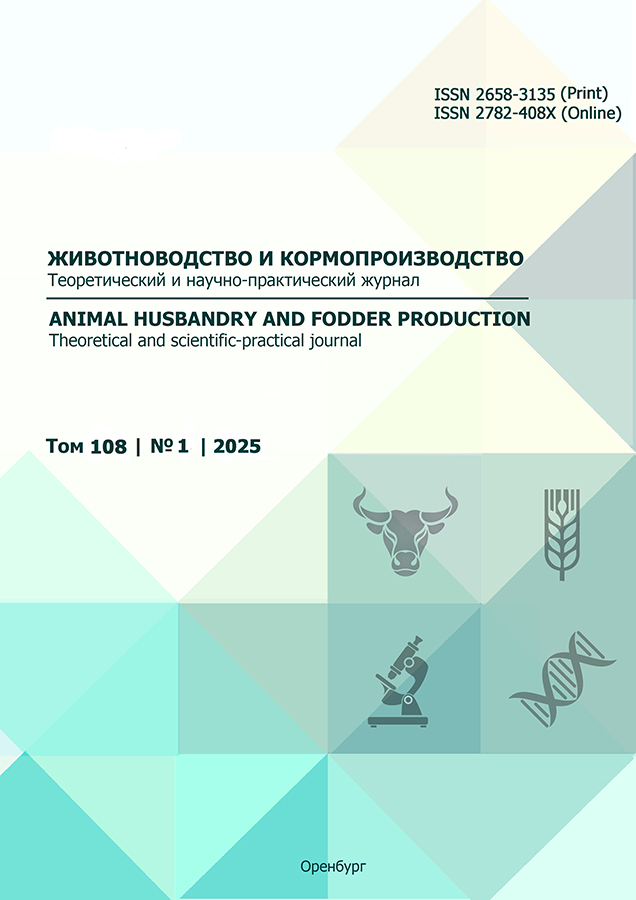
-
Animal Husbandry and Fodder Production
ISSN (print): 2658-3135, ISSN (online): 2782-408X
Founder: Federal Research Center for Biological Systems and Agrotechnologies of the Russian Academy of Sciences
Editor-in-Chief: Svyatoslav V. Lebedev, Corresponding Member of the Russian Academy of Sciences, Doctor of Biological Science
Frequency / Access: 4 issues per year / Open
Included in: Higher Attestation Commission List, RISC
-
Russian Journal of Housing Research
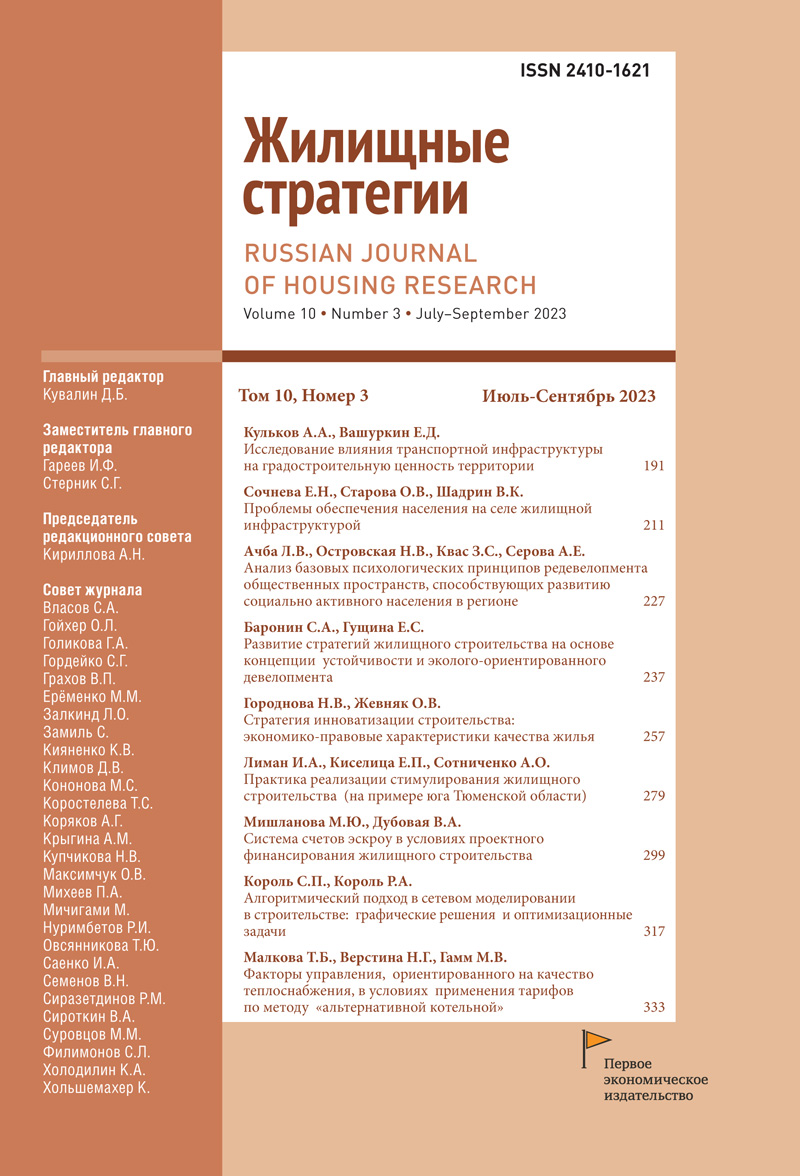
-
Russian Journal of Housing Research
ISSN (print): 2410-1621, ISSN (online): 2412-9089
Founder: Creative Economy Publishers
Editor-in-Chief: Kuvalin Dmitry, Doctor of Sc.
Frequency / Assess: 4 issues per year / Subscription
Included in: Higher Attestation Commission list, RISC
-
Journal of obstetrics and women's diseases
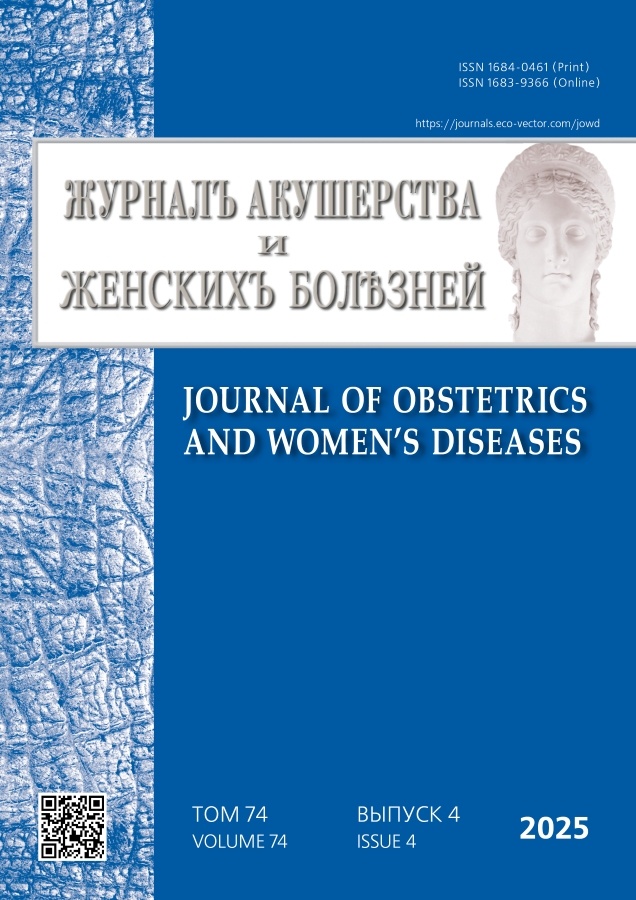
-
Journal of obstetrics and women's diseases
ISSN (print): 1684-0461, ISSN (online): 1683-9366
Founders: D.O.Ott Research Institute of Obstetrics, Gynecology and Reproductology; Eco-Vector LLC
Editor-in-Chief: Ailamazyan Eduard Karpovich, Academician of the Russian Academy of Sciences, Dr. med. sciences, professor
Frequency / Access: 6 issues per year / Subscription
Included in: White List (3rd level), Higher Attestation Commission List, RISC, Scopus
-
Journal of Analytical Chemistry

-
Journal of Analytical Chemistry
ISSN (print): 0044-4502
Founders: Vernadsky Institute of Geochemistry and Analytical Chemistry, Russian Academy of Sciences, Russian Academy of Sciences
Editor-in-Chief: Vladimir Panteleimonovich Kolotov, Corresponding Member of the Russian Academy of Sciences, Doctor of Chemical Sciences, Professor
Frequency / Access: 12 issues per year / Subscription
Included in: White List (3rd level), Higher Attestation Commission List, RISC
-
Journal of biological sciences and agriculture

-
Journal of biological sciences and agriculture
ISSN (online): 3034-6797
Founder: Limited Liability Company Publishing House
Главный редактор: Kukhar V. S., Doctor PhD, Associate Professor
Frequency / Access: 6 issues per year / Open
Included in: RISC
-
HSE University Journal of International Law
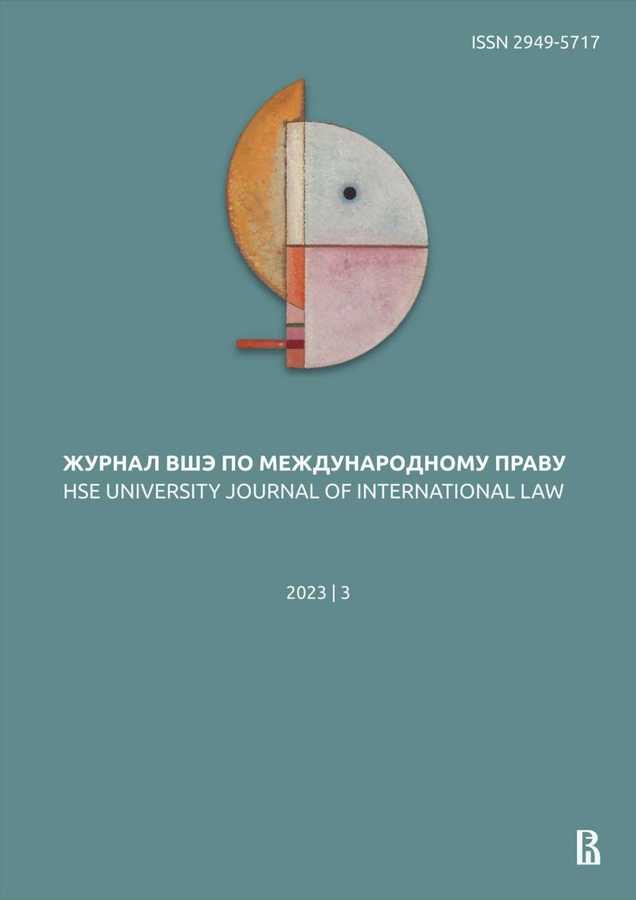
-
HSE University Journal of International Law
ISSN (online): 2949-5717
Founder: National Research University Higher School of Economics
Editor-in-Chief: Vera Rusinova, Doctor of Sc., Full Professor
Frequency / Assess: 4 issues per year / Open
Included in: RISC
-
Computational Mathematics and Mathematical Physics
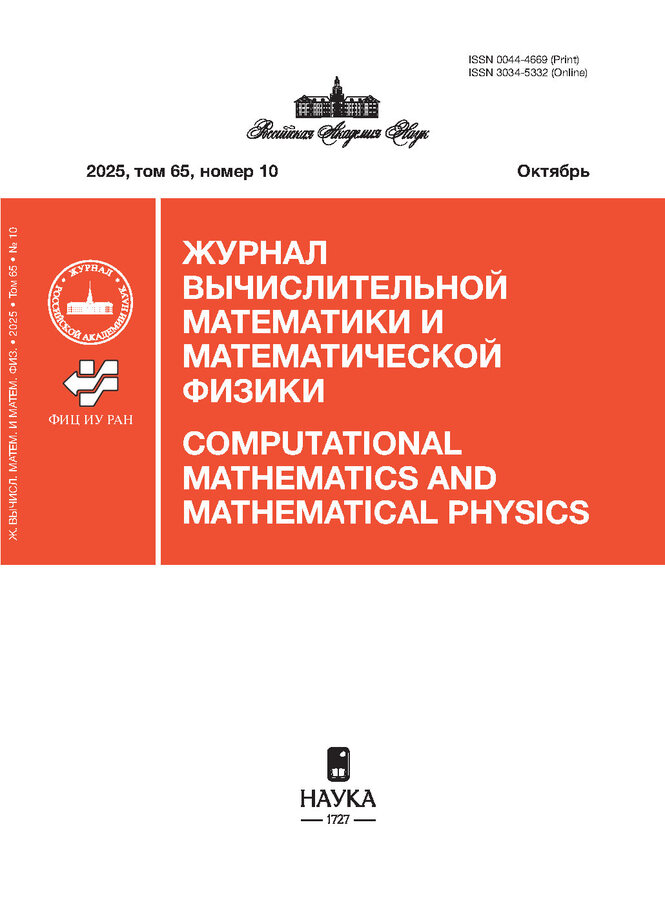
-
Computational Mathematics and Mathematical Physics
ISSN (print): 0044-4669
Founders: Russian Academy of Sciences, Federal Research Center IU named after. A. A. Dorodnitsyna RAS
Editor-in-Chief: Evgeniy Evgenievich Tyrtyshnikov, Academician of the Russian Academy of Sciences, Doctor of Physics and Mathematics sciences, professor
Frequency / access: 12 issues per year / Subscription
Included in: White List (2nd level), Higher Attestation Commission list, RISC, Mathnet.ru
-
The Journal of Social Policy Studies

-
The Journal of Social Policy Studies
ISSN (print): 1727-0634
Founder: National Research University Higher School of Economics
Editor-in-Chief: Iarskaia-Smirnova Elena
Frequency / Assess: 4 issues per year / Open
Included in: White List (1sd level), Higher Attestation Commission List, RISC
-
Journal of Medical and Biological Research

-
Journal of Medical and Biological Research
ISSN (print): 2542-1298, ISSN (online): 2687-1491
Founder: Northern (Arctic) Federal University named after M.V. Lomonosov
Editor-in-Chief: Maryandyshev Andrey, Corresponding Member of the RAS, Doctor of Sc., Full Professor
Frequency / Assess: 4 issues per year / Open
-
Journal of microbiology, epidemiology and immunobiology
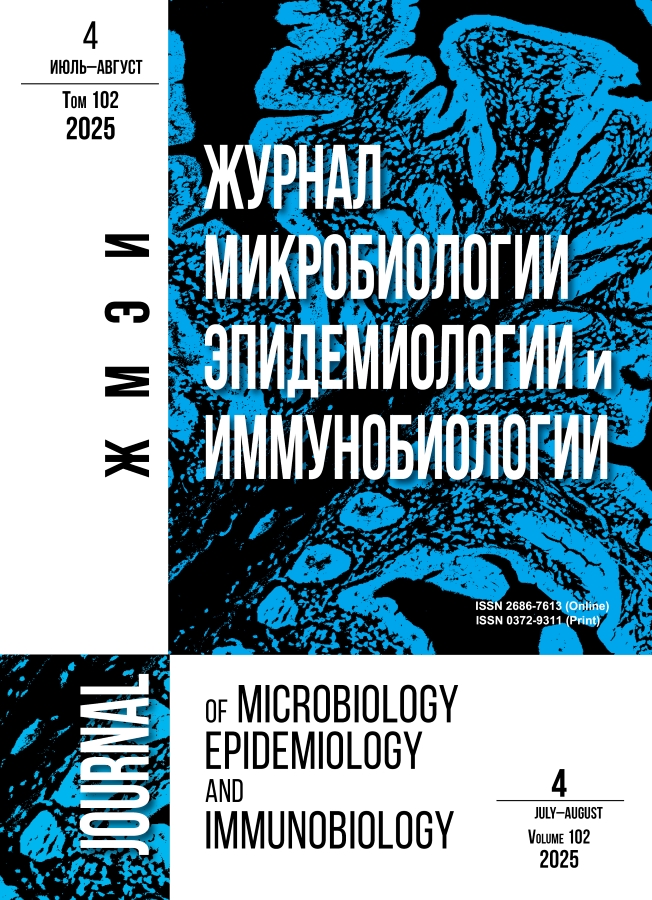
-
Journal of microbiology, epidemiology and immunobiology
ISSN (print): 0372-9311, ISSN (online): 2686-7613
Founders: Central Research Institute of Epidemiology, All-Russian public organization "All-Russian Scientific and Practical Society of Epidemiologists, Microbiologists and Parasitologists"
Editor-in-Chief: Vitaly V. Zverev, academician RAS, Doctor of Sc., Full Professor
Frequency / Access: 6 issues per year / Open
Included in: White List (2nd level), Higher Attestation Commission List, RISC
-
Russian Journal of Inorganic Chemistry
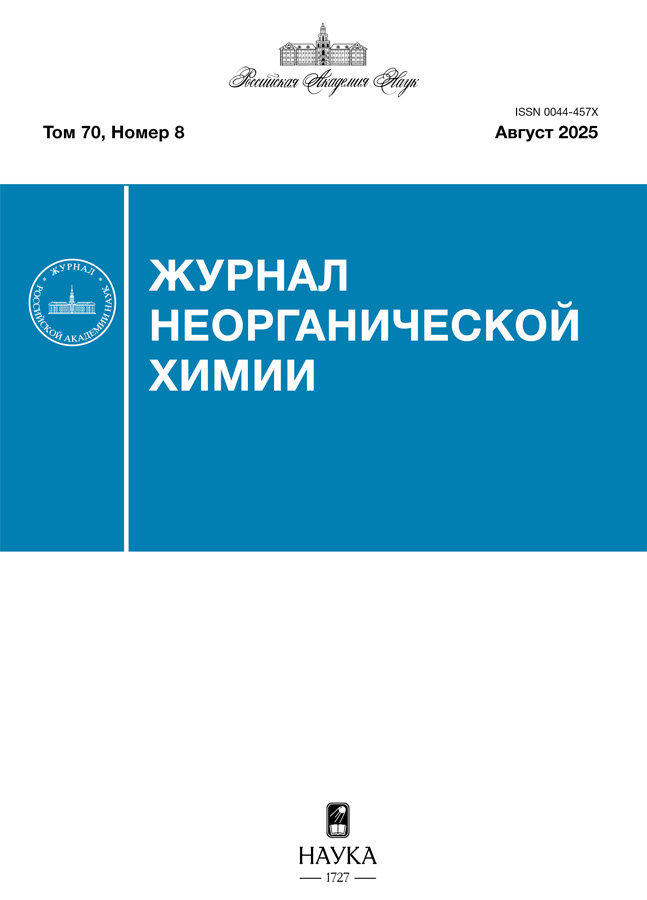
-
Russian Journal of Inorganic Chemistry
ISSN (print): 0044-457X
Founders: Russian Academy of Sciences, N.S. Kurnakov Institute of General and Inorganic Chemistry, Russian Academy of Sciences
Editor-in-Chief: Nikolay Timofeevich Kuznetsov, Academician of the Russian Academy of Sciences, Doctor of Chemical Sciences
Frequency / Access: 12 issues per year / Subscription
Included in: White List (1st level), Higher Attestation Commission List, RISC
-
Journal of General Biology
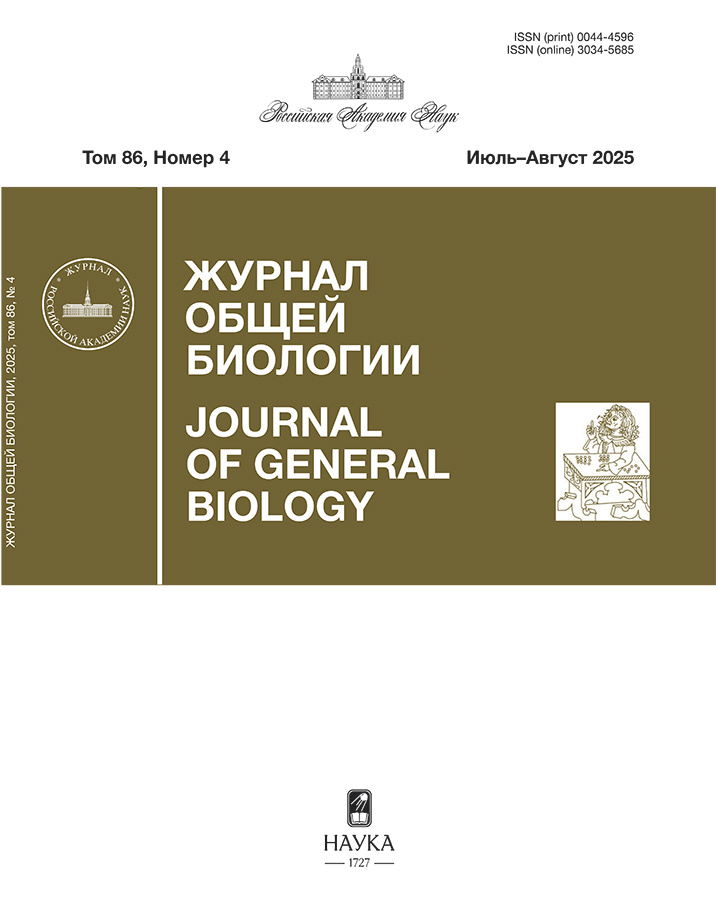
-
Journal of General Biology
ISSN (print): 0044-4596
Founder: Russian Academy of Sciences
Editor-in-Chief: Yevgeny Arkadyevich Kriksunov, Corresponding Member of the Russian Academy of Sciences, Doctor of Biological Sciences
Frequency / Access: 6 issues per year / Subscription
Included in: White List (2nd level), Higher Attestation Commission List, RISC, Web of science
-
Russian Journal of General Chemistry
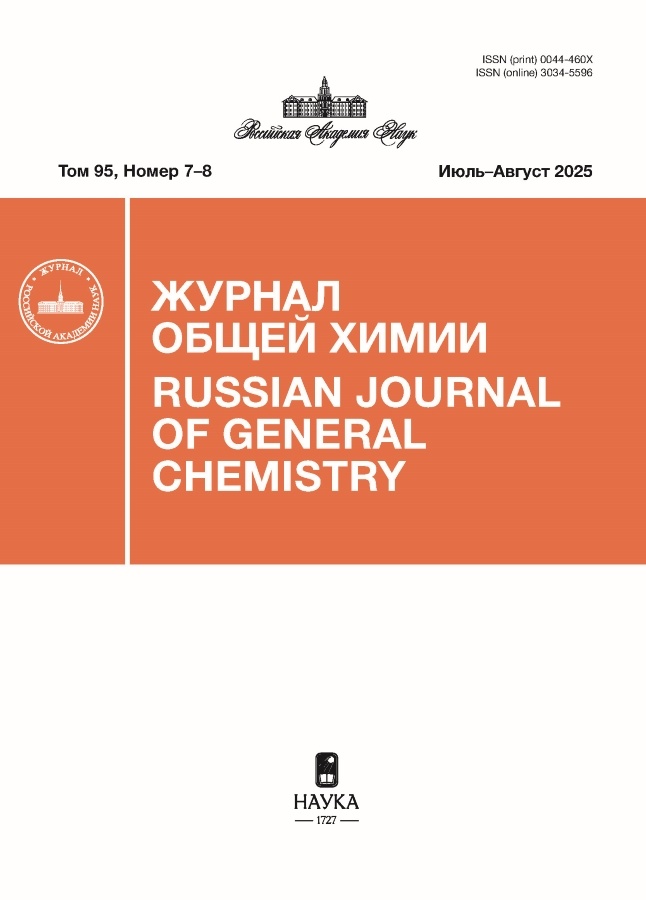
-
Russian Journal of General Chemistry
ISSN (print): 0044-460X
Founder: Russian Academy of Sciences
Editor-in-Chief: Oleg G. Sinyashin, Academician of the Russian Academy of Sciences, Doctor of Chemistry sciences, professor
Frequency / access: 12 issues per year / Subscription
Included in: White List (2nd level), Higher Attestation Commission list, RISC
-
Russian Journal of Organic Chemistry
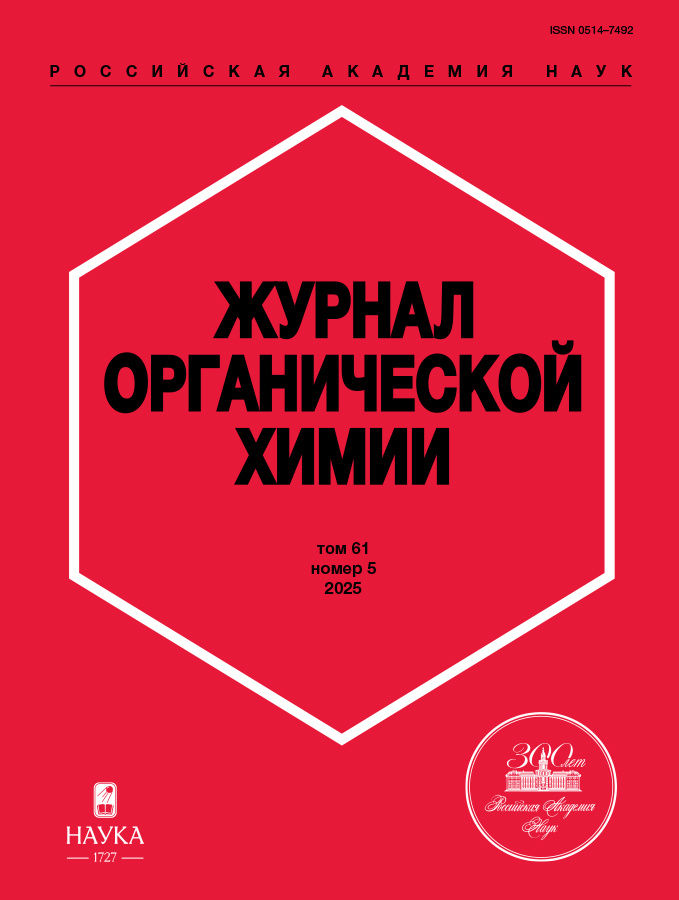
-
Russian Journal of Organic Chemistry
ISSN (print): 0514-7492
Founder: Russian Academy of Sciences
Editor-in-Chief: Irina Petrovna Beletskaya, Academician of the Russian Academy of Sciences, Doctor of Chemical Sciences
Frequency / Access: 12 issues per year / Subscription
Included in: White List (3rd level), Higher Attestation Commission List, RISC
-
Russian Journal of Applied Chemistry

-
Russian Journal of Applied Chemistry
ISSN (print): 0044-4618
Founder: Russian Academy of Sciences
Editor-in-Chief: Anton Lvovich Maximov, Corresponding Member of the Russian Academy of Sciences, Doctor of Chemical Sciences, Associate Professor
Frequency / Access: 12 issues per year / Subscription
Included in: White List (2nd level), Higher Attestation Commission List, RISC
-
Journal of applied research

-
Journal of applied research
ISSN (print): 2712-7516, ISSN (online): 2949-1878
Founder: Limited Liability Company "University of Continuing Professional Education"
Editor-in-Chief: Sokolov Alexey Pavlovich, Doctor of Sc., Professor
Frequency / Assess: 12 issues per year / Hybrid
Included in: Higher Attestation Commission list, RISC
-
The Journal of Sociology and Social Anthropology
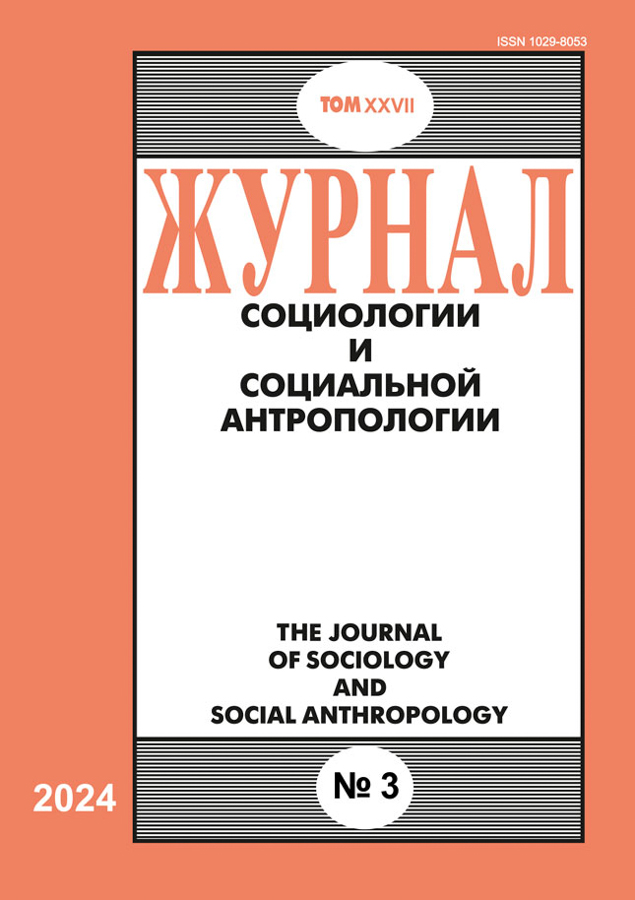
-
The Journal of Sociology and Social Anthropology
ISSN (print): 1029-8053, ISSN (online): 2306-6946
Founders: Federal Center of Theoretical and Applied Sociology of the Russian Academy of Sciences,
Federal Center of Theoretical and Applied Sociology of the Russian Academy of Sciences, Moscow, Russia, Foundation ""International Foundation for Support of Social and Humanitarian Studies and Educational Programs""Editor-in-Chief: Kozlovskiy Vladimir, Dr. Sci. (Phylos.), Prof.
Frequency / Access: 4 issues per year / Open
Included in: White List (2 level), Higher Attestation Commission List, RISC
-
Middle Volga Mathematical Society journal
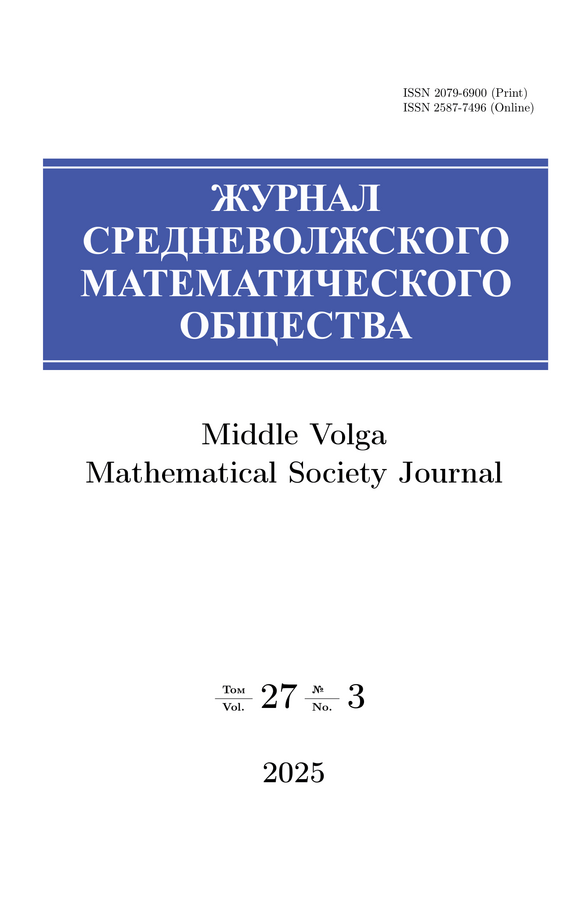
-
Middle Volga Mathematical Society journal
ISSN (print): 2079-6900, ISSN (online): 2587-7496
Founders: Middle Volga Mathematical Society; National Research Ogarev Mordovia State University
Editor-in-Chief: Vladimir Fedorovich Tishkin, corresponding member of RAS, Dr. Sci. (Phys.-Math.), Full professor
Frequency / Access: 4 issues per year / Open
Included in: Higher Attestation Commission List, RISC, Scopus, Math-Net, zbMATH
-
Russian Journal of Physical Chemistry
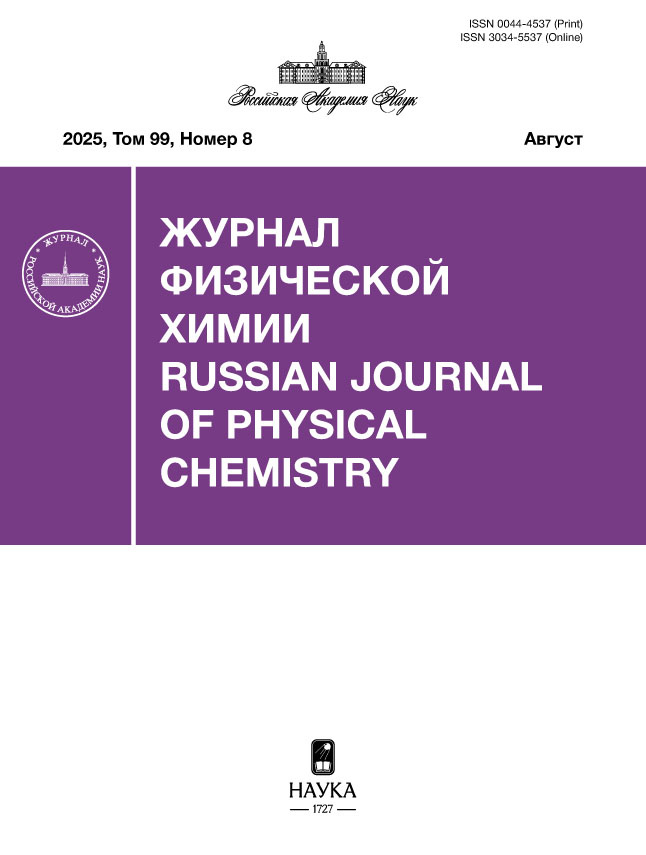
-
Russian Journal of Physical Chemistry
ISSN (print): 0044-4537
Founder: Russian Academy of Sciences
Editor-in-Chief: Aslan Yusupovich Tsvadze, Academician of the Russian Academy of Sciences, Doctor of Chemical Sciences
Frequency / Access: 12 issues per year / Subscription
Included in: White List (2nd level), Higher Attestation Commission List, RISC
-
Journal of Evolutionary Biochemistry and Physiology
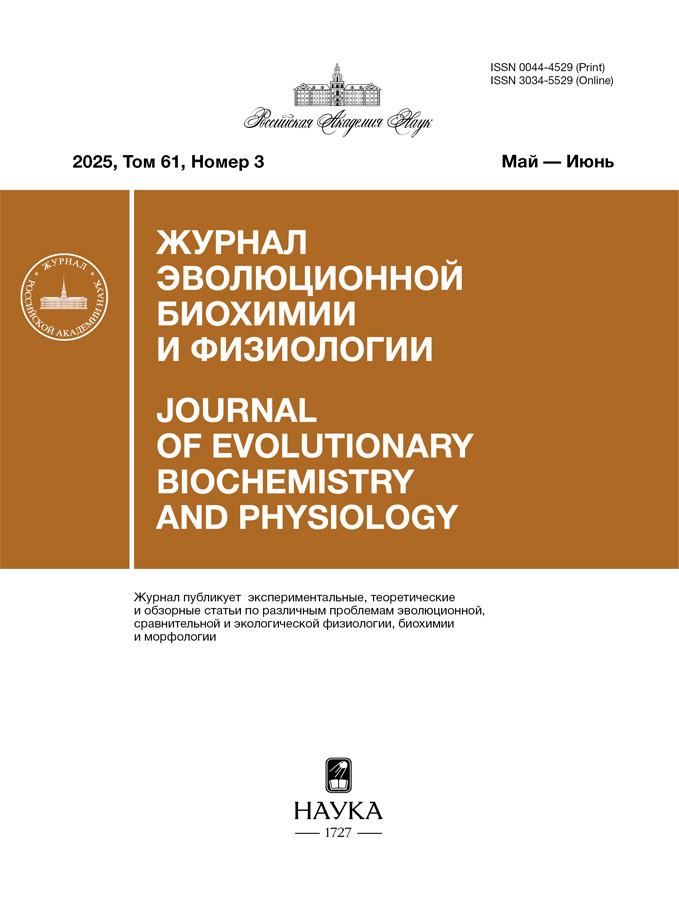
-
Journal of Evolutionary Biochemistry and Physiology
ISSN (print): 0044-4529
Founder: Russian Academy of Sciences
Editor-in-Chief: Nikolay Petrovich Veselkin, Academician of the Russian Academy of Sciences, Doctor of Medical Sciences
Frequency / Access: 12 issues per year / Subscription
Included in: White List (4th), Higher Attestation Commission List, RISC
-
Zakon i pravo

-
Zakon i pravo
ISSN (print): 2073-3313, ISSN (online): 2782-3474
Founder: Publishing house UNITY-DANA
Editor-in-Chief: Nodari Darchoevich Eriashvili, Doctor of Sc., Professor
Frequency / Access: 12 issues per year / Subscription
Included in: Higher Attestation Commission List, RISC
-
Zakonnostʹ i pravoporâdok

-
Zakonnostʹ i pravoporâdok
ISSN (print): 2658-4271
Founder: National Research Lobachevsky State University of Nizhny Novgorod
Editor-in-Chief: Martynov Aleksei V.
Frequency / Assess: 4 issues per year / Open
Included in: RISC
-
Zapiski of the Russian Mineralogical Society
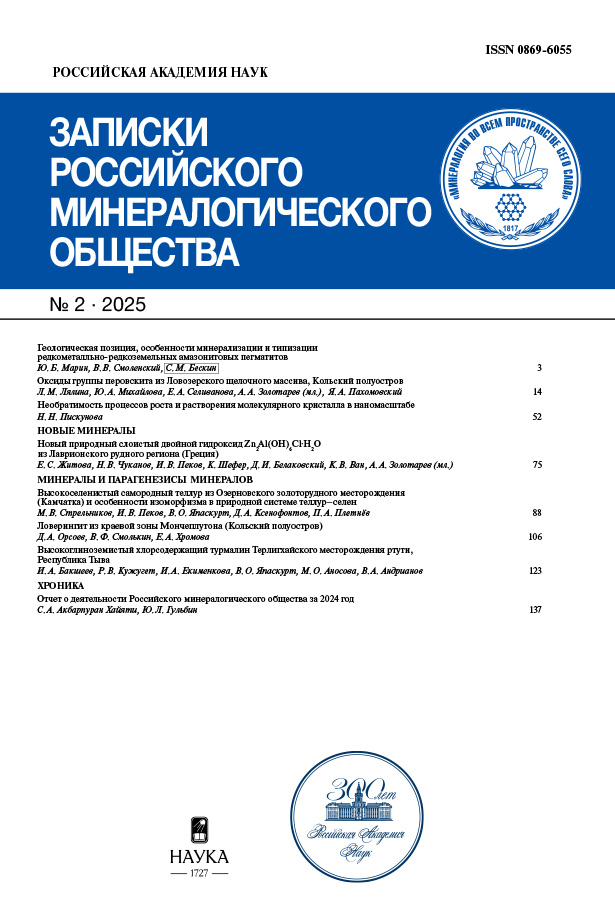
-
Zapiski of the Russian Mineralogical Society
ISSN (print): 0869-6055 , ISSN (online): 2658-4352
Founders: Russian Academy of Sciences, "Russian Mineralogical Society"
Editor-in-Chief: Marin Yuri Borisovich, corresponding member of RAS, Doctor of Sc., Full Professor
Frequency / Assess: 6 issues per year / Subscription
Included in: White List (3rd level), Higher Attestation Commission List, RISC
-
Zernobobovye i krupânye kulʹtury
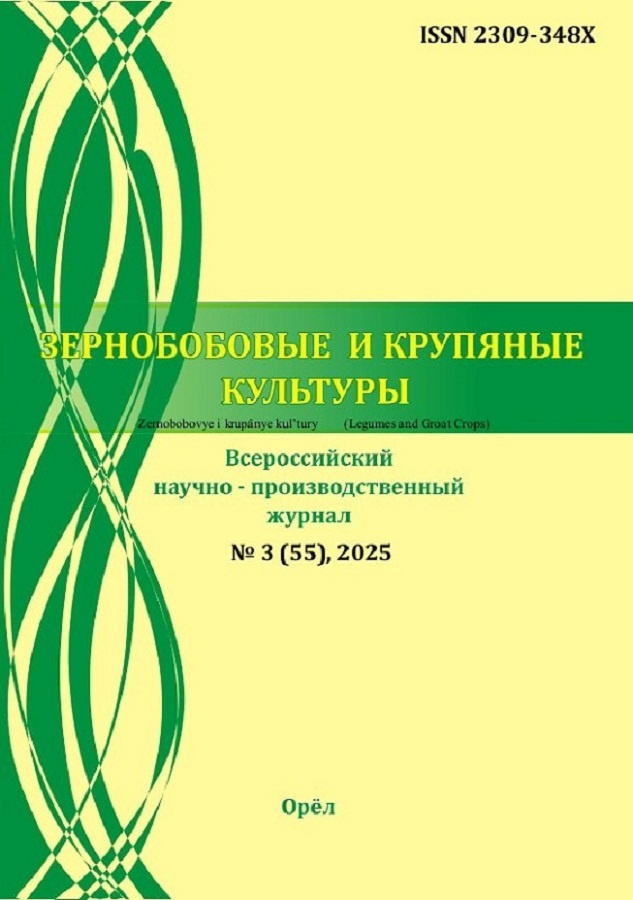
-
Zernobobovye i krupânye kulʹtury
ISSN (print): 2309-348X
Founder: Federal Scientific Center of Legumes and Groat Crops
Editor-in-Chief: Zotikov Vladimir Ivanovich, Corresponding Member of RAS, Doctor of Sc., Professor
Frequency / Assess: 4 issues per year / Open
Included in: Higher Attestation Commission List, RISC
-
Golden horde review
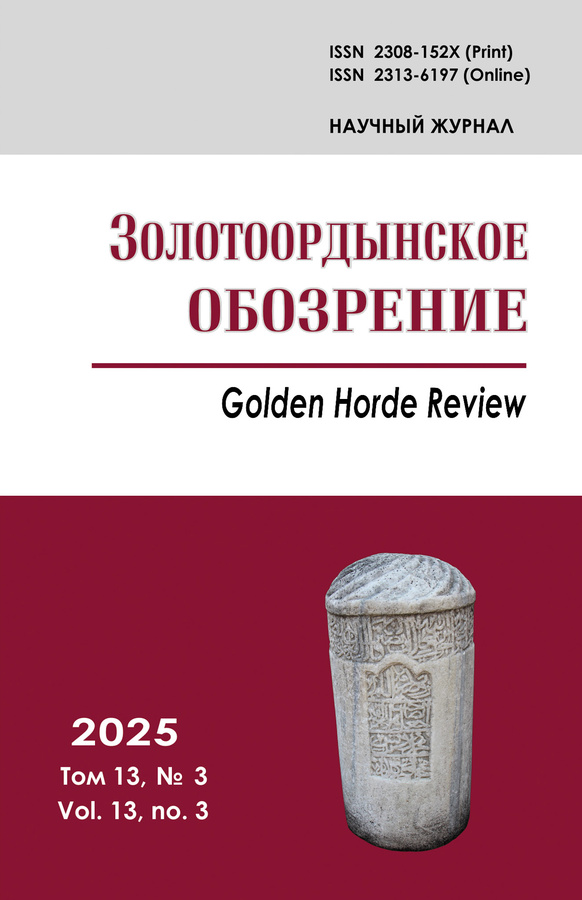
-
Golden horde review
ISSN (print): 2308-152X, ISSN (online): 2313-6197
Founder: State institution "Tatarstan Academy of Sciences"
Editor-in-Chief: Ilnur M. Mirgaleev, Cand. Sci. (History)
Frequency / Access: 4 issues per year / Open
Included in: White List (1st level), Higher Attestation Commission List, RISC, Scopus, Web of Science Core Collection
-
Russian Journal of Zoology
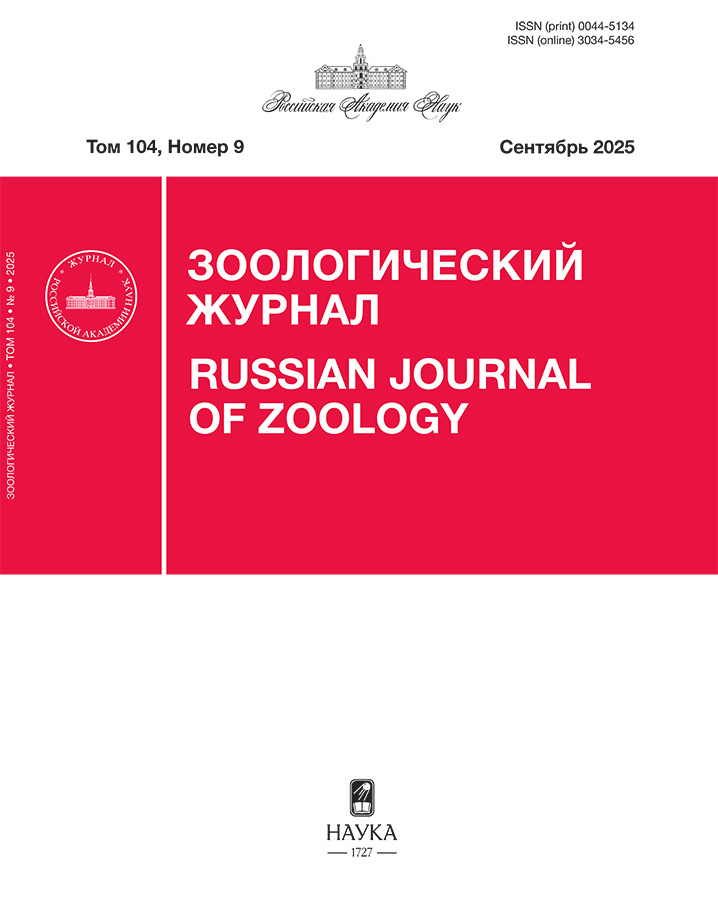
-
Russian Journal of Zoology
ISSN (print): 0044-5134
Founder: Russian Academy of Sciences
Editor-in-Chief: Dgebuadze Yuri Yulianovich, academician RAS, Doctor of Sc., Full Professor
Frequency / Assess: 12 issues per year / Subscription
Included in: White List (3rd level), Higher Attestation Commission List, RISC
-
From History and Culture of Peoples of the Middle Volga Region

-
From History and Culture of Peoples of the Middle Volga Region
ISSN (print): 2410-0765
Founder: State institution "Tatarstan Academy of Sciences"
Editor-in-Chief: Radik R. Iskhakov, Dr. Sci. (History)
Frequency / Access: 4 issues per year / Open
Included in: RISC
-
The Tidings of the Baltic State Fishing Fleet Academy

-
The Tidings of the Baltic State Fishing Fleet Academy
ISSN (print): 2071-5331
Founder: Kaliningrad State Technical University
Editor-in-Chief: Bokarev M.Yu., Doctor of Sc., Full Professor
Frequency / Assess: 4 issues per year / Open
Included in: Higher Attestation Commission list, RISC
-
Oriental Institute Journal

-
Oriental Institute Journal
ISSN (print): 2542-1611
Founder: Far Eastern Federal University
Editor-in-Chief: Dmitrieva Marina O., PhD, Associate professor
Frequency / Access: 4 issues per year / Open
Included in: Higher Attestation Commission List, RISC
-
Izvestiâ vysših učebnyh zavedenij. Aviacionnaâ tehnika

-
Izvestiâ vysših učebnyh zavedenij. Aviacionnaâ tehnika
ISSN (print): 0579-2975
Founder: Kazan National Research Technical University after A.N.Tupolev-KAI
Editor-in-Chief: Vladimir A. Kostin, Dr. Sc., Proffesor
Frequency / Assess: 4 issues per year / Open
Included in: White List (3rd level), Higher Attestation Commission list, RISC
-
Izvestiya vuzov. Investitsii. Stroitelstvo. Nedvizhimost

-
Izvestiya vuzov. Investitsii. Stroitelstvo. Nedvizhimost
ISSN (print): 2227-2917, ISSN (online): 2500-154X
Founder: Irkutsk National Research Technical University
Editor-in-Chief: Vitaly V. Peshkov, Doctor of Economic Sciences, Professor
Frequency / Access: 4 issues per year / Open
Included in: Higher Attestation Commission List, RISC
-
Izvestiya Vuzov. Prikladnaya Khimiya i Biotekhnologiya

-
Izvestiya Vuzov. Prikladnaya Khimiya i Biotekhnologiya
ISSN (print): 2227-2925, ISSN (online): 2500-1558
Founder: Irkutsk National Research Technical University
Editor-in-Chief: Sergei N. Evstaf`ev, Doctor of Chemical Sciences, Professor
Frequency / Access: 4 issues per year / Open
Included in: White List (3rd level), Higher Attestation Commission List, RISC, Web of Science
-
Proceedings of higher educational establishments. Geology and Exploration

-
Proceedings of higher educational establishments. Geology and Exploration
ISSN (print): 0016-7762, ISSN (online): 2618-8708
Founder: Sergo Ordzhonikidze Russian State University for Geological Prospecting
Editor-in-Chief: Kerimov V.Yu., Doctor of Sc., Full Professor
Frequency / Assess: 4 issues per year / Open
Included in: Higher Attestation Commission list, RISC
-
Russian Forestry Journal

-
Russian Forestry Journal
ISSN (print): 0536-1036
Founder: Northern (Arctic) Federal University named after M.V. Lomonosov
Editor-in-Chief: Melekhov Vladimir I. , Doctor of Sc., Full Professor
Frequency / Assess: Assess: 6 issues per year / Open
Included in: White List (3rd level),Higher Attestation Commission list, RISC
-
MATERIALS OF ELECTRONICS ENGINEERING

-
MATERIALS OF ELECTRONICS ENGINEERING
ISSN (print): 1609-3577, ISSN (online): 2413-6387
Founder: The Federal State Educational Institution of the Higher Education National University of Science and Technology MISIS
Editor-in-Chief: Yuri N. Parkhomenko, Dr. Sc., Professor
Frequency / Assess: 4 issues per year / Open
Included in: Higher Attestation Commission list, RISC
-
Oil and Gas Studies

-
Oil and Gas Studies
ISSN (print): 0445-0108
Founder: Industrial University of Tyumen
Editor-in-Chief: Bastrikov Sergey N., Doctor of Technical Sciences, Professor
Frequency / Access: 6 issues per year / Open
Included in: Higher Attestation Commission List, RISC
-
University proceedings. Volga region. Humanities
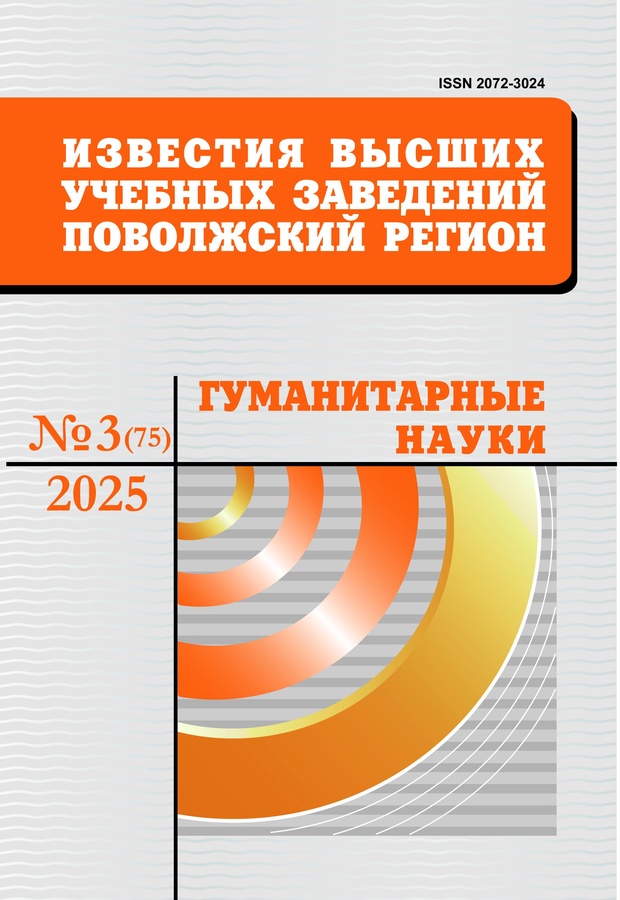
-
University proceedings. Volga region. Humanities
ISSN (print): 2072-3024
Founder: Penza State University
Editor-in-Chief: Kondrashin Viktor Viktorovich, Doctor of History. sciences, professor
Frequency / Access: 4 issues per year / Open
Included in: Higher Attestation Commission List, RISC
-
University proceedings. Volga region. Natural Sciences

-
University proceedings. Volga region. Natural Sciences
ISSN (print): 2307-9150
Founder: Penza State University
Editor-in-Chief: Titov Sergey Vitalievich, Doctor of Biology sciences, professor
Frequency / Access: 4 issues per year / Open
Included in: Higher Attestation Commission List, RISC
-
University proceedings. Volga region. Medical sciences
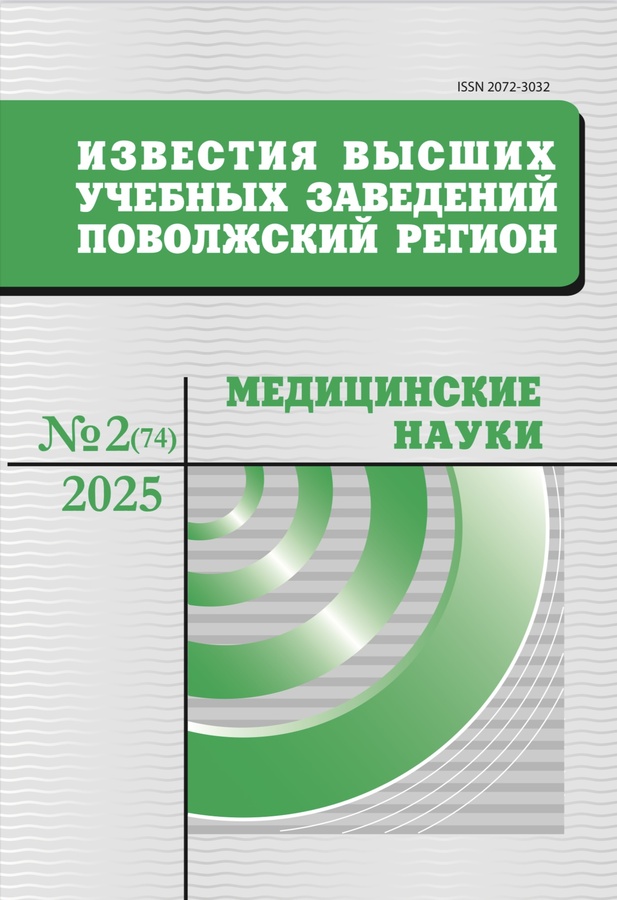
-
University proceedings. Volga region. Medical sciences
ISSN (print): 2072-3032
Founder: Penza State University
Editor-in-Chief: Mitroshin Alexander Nikolaevich, MD. sciences, professor
Frequency / Access: 4 issues per year / Open
Included in: Higher Attestation Commission List, RISC
-
University proceedings. Volga region. Social sciences
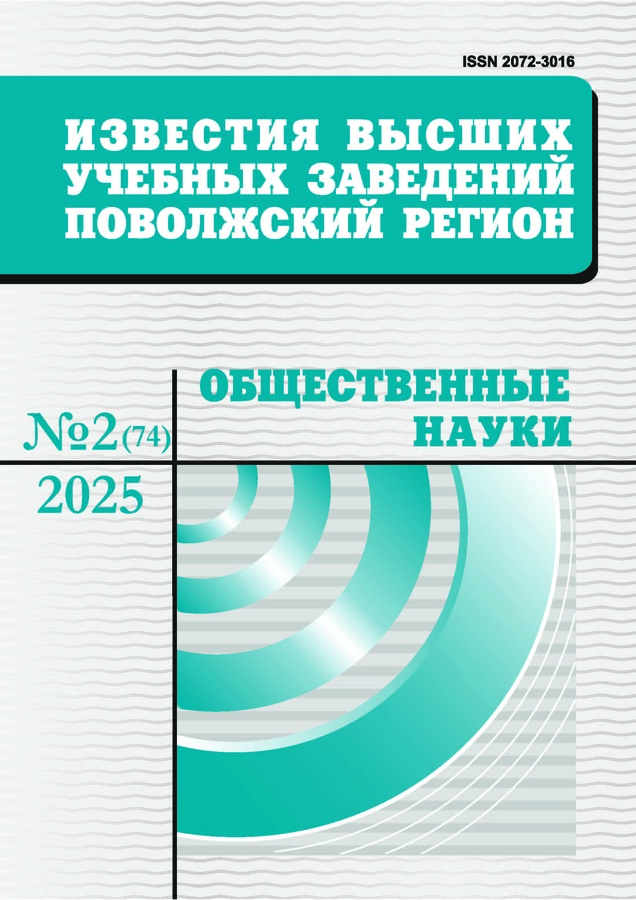
-
University proceedings. Volga region. Social sciences
ISSN (print): 2072-3016
Founder: Penza State University
Editor-in-Chief: Goshulyak Vitaly Vladimirovich, Doctor of Law. Sciences, Doctor of History sciences, professor
Frequency / Access: 4 issues per year / Open
Included in: Higher Attestation Commission List, RISC
-
University proceedings. volga region. technical sciences
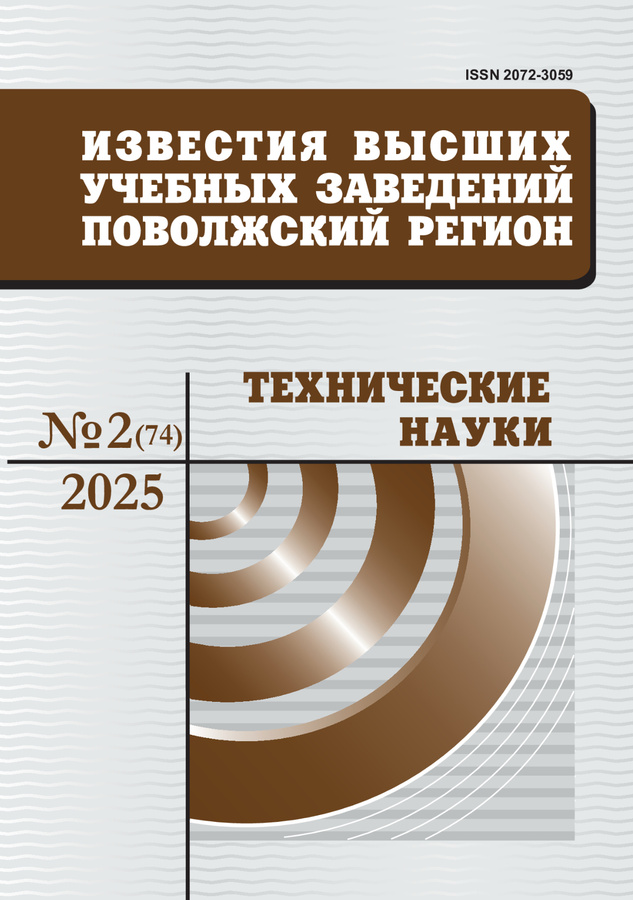
-
University proceedings. volga region. technical sciences
ISSN (print): 2072-3059
Founder: Penza State University
Editor-in-Chief: Volchikhin Vladimir Ivanovich, Doctor of Engineering. Sc., professor
Frequency / Access: 4 issues per year / Open
Included in: Higher Attestation Commission List, RISC
-
University proceedings. Volga region. Physical and mathematical sciences
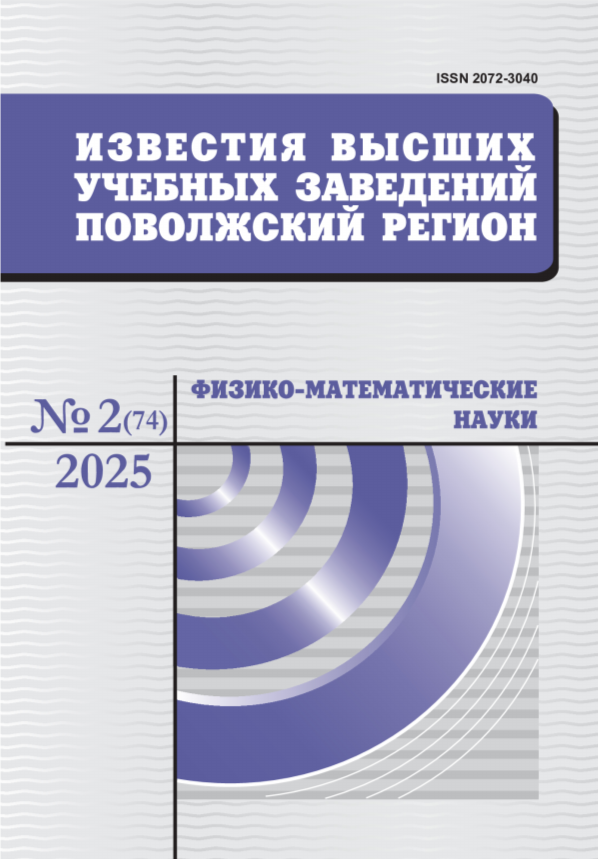
-
University proceedings. Volga region. Physical and mathematical sciences
ISSN (print): 2072-3040
Founder: Penza State University
Editor-in-Chief: Krevchik Vladimir Dmitrievich, Doctor of Physics and Mathematics. Sc., professor
Frequency / Access: 4 issues per year / Open
Included in: Higher Attestation Commission List, RISC
-
POWDER METALLURGY АND FUNCTIONAL COATINGS

-
POWDER METALLURGY АND FUNCTIONAL COATINGS
ISSN (print): 1997-308X, ISSN (online): 2412-8767
Founder: The Federal State Educational Institution of the Higher Education National University of Science and Technology MISIS
Editor-in-Chief: Evgeny A. Levashov, Corresponding Member of the RAS, Dr. Sc., Professor
Frequency / Assess: 6 issues per year / Hybrid
Included in: White List (1st level), Higher Attestation Commission list, RISC, Scopus
-
Izvestiya VUZ. Applied Nonlinear Dynamics

-
Izvestiya VUZ. Applied Nonlinear Dynamics
ISSN (print): 0869-6632, ISSN (online): 2542-1905
Founder: Saratov State University
Editor-in-Chief: Yu.V. Gulyaev, Member of the RAS, Ph.D., Professor
Frequency / Access: 6 issues per year / open
Included in: White List (2nd level), Higher Attestation Commission List, RISC, Web of Science, Scopus
-
Proceedings of Higher Educational Institutions. Sociology. Economics. Politics

-
Proceedings of Higher Educational Institutions. Sociology. Economics. Politics
ISSN (print): 1993-1824
Founder: Industrial University of Tyumen
Editor-in-Chief: Belonozhko Marina Lvovna, Doctor of Sociological Sciences, Professor
Frequency / Access: 4 issues per year / Open
Included in: Higher Attestation Commission List, RISC
-
Izvestiâ vysših učebnyh zavedenij. Tehnologiâ legkoj promyšlennosti

-
Izvestiâ vysših učebnyh zavedenij. Tehnologiâ legkoj promyšlennosti
ISSN (print): 0021-3489
Founder: Saint Petersburg State University of Industrial Technologies and Design
Editor-in-Chief: Demidov Aleksej Vjacheslavovich, Dr. Sci, Professor
Frequency / Assess: 6 issues per year / subscription
Included in: Higher Attestation Commission list, RISC
-
IZVESTIYA. NON-FERROUS METALLURGY

-
IZVESTIYA. NON-FERROUS METALLURGY
ISSN (print): 0021-3438, ISSN (online): 2412-8783
Founder: The Federal State Educational Institution of the Higher Education National University of Science and Technology MISIS
Editor-in-Chief: Evgeniy A. Levashov, Corresponding Member of the RAS, Dr. Sc., Professor
Frequency / Assess: 4 issues per year / Hybrid
Included in: White List (2nd level), Higher Attestation Commission list, RISC
-
IZVESTIYA. FERROUS METALLURGY

-
IZVESTIYA. FERROUS METALLURGY
ISSN (print): 0368-0797, ISSN (online): 2410-2091
Founder: The Federal State Educational Institution of the Higher Education National University of Science and Technology MISIS
Editor-in-Chief: Leopold I. Leont’ev, Academician of the RAS, Dr. Sc., Professor
Frequency / Assess: 6 issues per year / Hybrid
Included in: White List (1st level), Higher Attestation Commission list, RISC, Scopus
-
Proceedings of Gorsky State Agrarian University

-
Proceedings of Gorsky State Agrarian University
ISSN (print): 2070-1047
Founder: Gorsky State Agrarian University
Editor-in-Chief: Gogaev O.K., Doctor of Sc., Full Professor
Frequency / Assess: 4 issues per year / Open
Included in: Higher Attestation Commission list, RISC
-
Bulletin of the Far Eastern Federal University. Economics and Management

-
Bulletin of the Far Eastern Federal University. Economics and Management
ISSN (print): 2311-2271, ISSN (online): 2413-9734
Founder: Far Eastern Federal University
Editor-in-Chief: Belkin V.G., Doctor of Sc., Full Professor
Frequency / Access: 4 issues per year / Open
Included in: Higher Attestation Commission List, RISC
-
Izvestiya of Kabardino-Balkarian State Agrarian University named after V.M. Kokov

-
Izvestiya of Kabardino-Balkarian State Agrarian University named after V.M. Kokov
ISSN (print): 2411-3492
Founder: Kabardino-Balkarian State Agricultural University named after V.M. Kokov
Editor-in-Chief: Shekihachev Yuri Akhmetkhanovich, Doctor of Sc., Full Professor
Frequency / Assess: 4 issues per year / Open
Included in: Higher Attestation Commission list, RISC
-
Proceeding of the Kabardino-Balkarian State University after H.M. Berbekov

-
Proceeding of the Kabardino-Balkarian State University after H.M. Berbekov
ISSN (print): 2221-7789
Founder: Kabardino-Balkarian State University
Editor-in-Chief: Khashirova Svetlana Yurievna, Doctor of Sc., Professor
Frequency / Assess: 4 issues per year / Hybrid
Included in: Higher Attestation Commission list, RISC
-
News of the Kabardino-Balkarian Scientific Center of the Russian Academy of Sciences

-
News of the Kabardino-Balkarian Scientific Center of the Russian Academy of Sciences
ISSN (print): 1991-6639, ISSN (online): 2949-1940
Founder: Kabardino-Balkarian Scientific Center of the Russian Academy of Sciences
Editor-in-Chief: Ivanov Petr Matsovich, Doctor of Engineering Sciences, Professor
Frequency / Access: 6 issues per year / Open
Included in: Higher Attestation Commission List, RISC
-
Izvestiâ Komi naučnogo centra Uralʹskogo otdeleniâ Rossijskoj akademii nauk
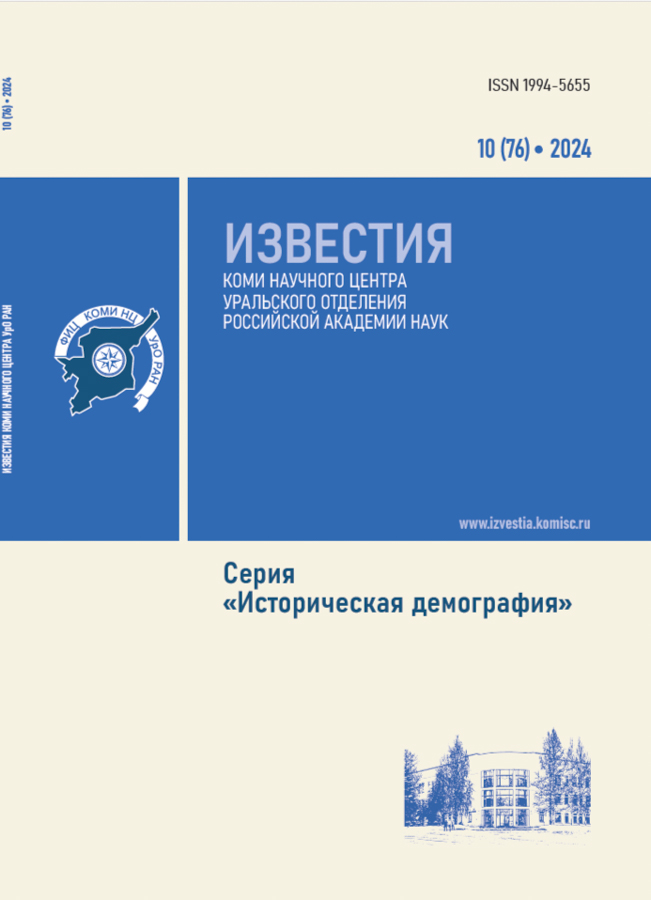
-
Izvestiâ Komi naučnogo centra Uralʹskogo otdeleniâ Rossijskoj akademii nauk
ISSN (print): 1994-5655
Founder: Komi Science Centre of the Ural Branch of the Russian Academy of Sciences
Editor-in-Chief: Askhabov A.M., academician RAS, Doctor of Sc.
Frequency / Access: 8 issues per year / Open
Included in: Higher Attestation Commission List, RISC
-
Reports of the laboratory of ancient technologies

-
Reports of the laboratory of ancient technologies
ISSN (print): 2415-8739, ISSN (online): 2500-1566
Founder: Irkutsk National Research Technical University
Editor-in-Chief: Novikov Pavel A., Doctor of Historical Sciences, Professor
Frequency / Access: 4 issues per year / Open
Included in: Higher Attestation Commission List, RISC
-
Izvestiya MGTU MAMI

-
Izvestiya MGTU MAMI
ISSN (print): 2074-0530, ISSN (online): 2949-1428
Founder: Moscow State Technical University "MAMI"
Editor-in-Chief: Alexander V. Lepeshkin, Ph.D., Professor
Frequency / Access: 4 issues per year / Open
Included in: Higher Attestation Commission List, RISC
-
Fluid Dynamics
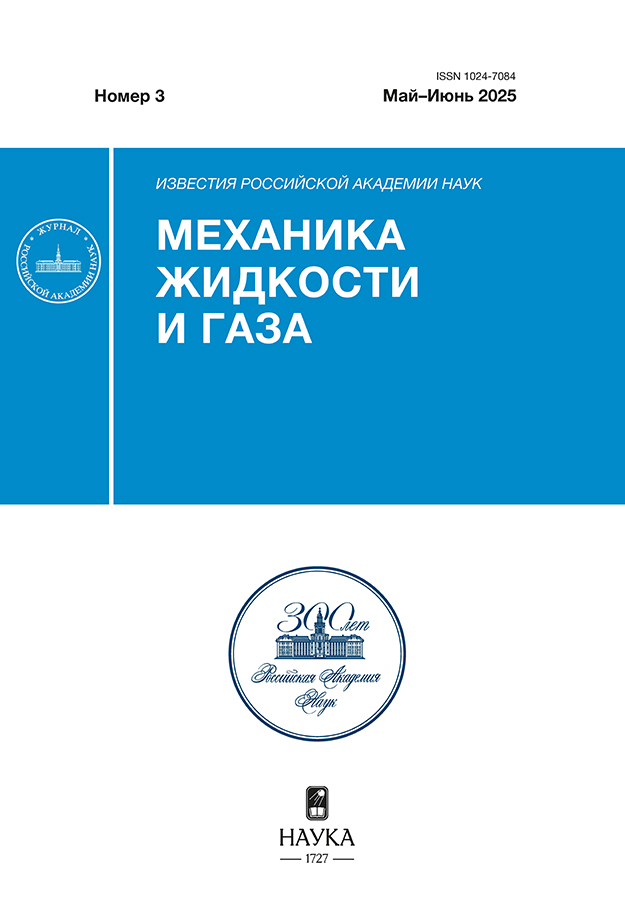
-
Fluid Dynamics
ISSN (print): 1024-7084
Founders: Russian Academy of Sciences, Institute for Problems in Mechanics of the Russian Academy of Sciences
Editor-in-Chief: Surzhikov Sergey T., academician RAS, Doctor of Sc., Full Professor
Frequency / Assess: 6 issues per year / Subscription
Included in: Higher Attestation Commission List, RISC, RISC core, Web of Science (RSCI)
-
Izvestiâ Akademii nauk. Rossijskaâ akademiâ nauk. Mehanika tverdogo tela.
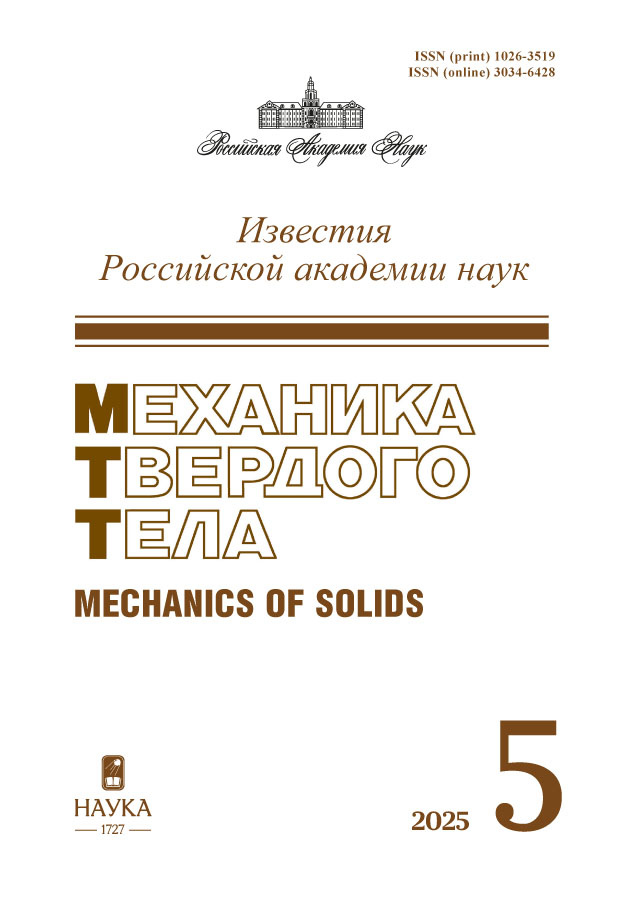
-
Izvestiâ Akademii nauk. Rossijskaâ akademiâ nauk. Mehanika tverdogo tela.
ISSN (print): 1026-3519
Founders: Russian Academy of Sciences, Institute for Problems in Mechanics of the Russian Academy of Sciences
Editor-in-Chief: Vladimir I. Karev, Doctor of Sc.
Frequency / Assess: 6 issues per year / Subscription
Included in: White List (3rd level), Higher Attestation Commission List, RISC,
-
Biology Bulletin
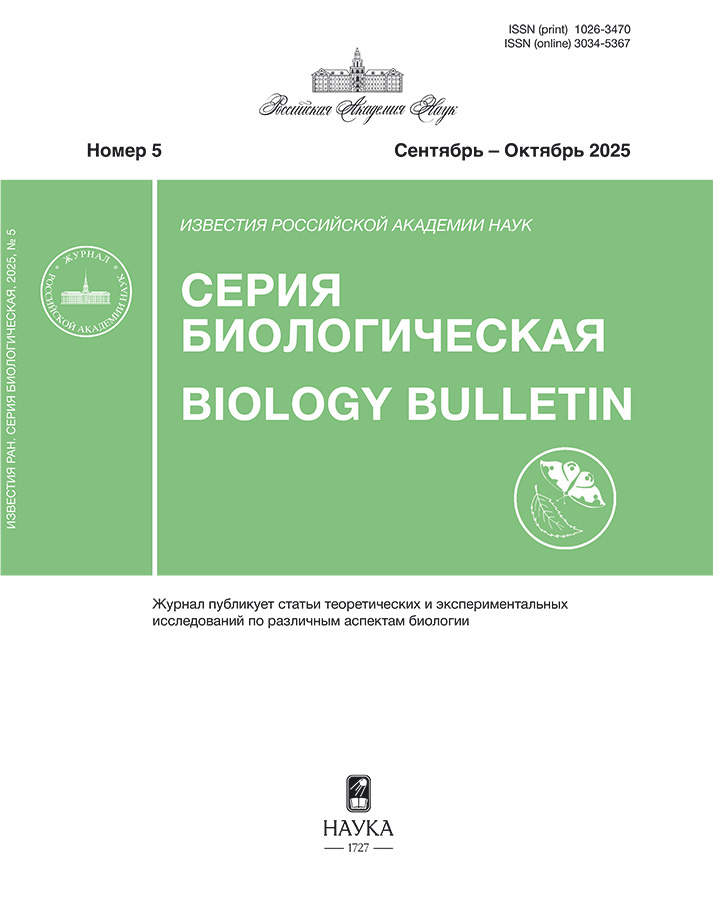
-
Biology Bulletin
ISSN (print): 1026-3470
Founder: Russian Academy of Sciences
Editor-in-Chief: Roznov V.V., academician RAS, Doctor of Sc., Full Professor
Frequency / Assess: 6 issues per year / Subscription
Included in: White List (2nd level), Higher Attestation Commission List, RISC ,
-
Bulletin of the RAS. Geography
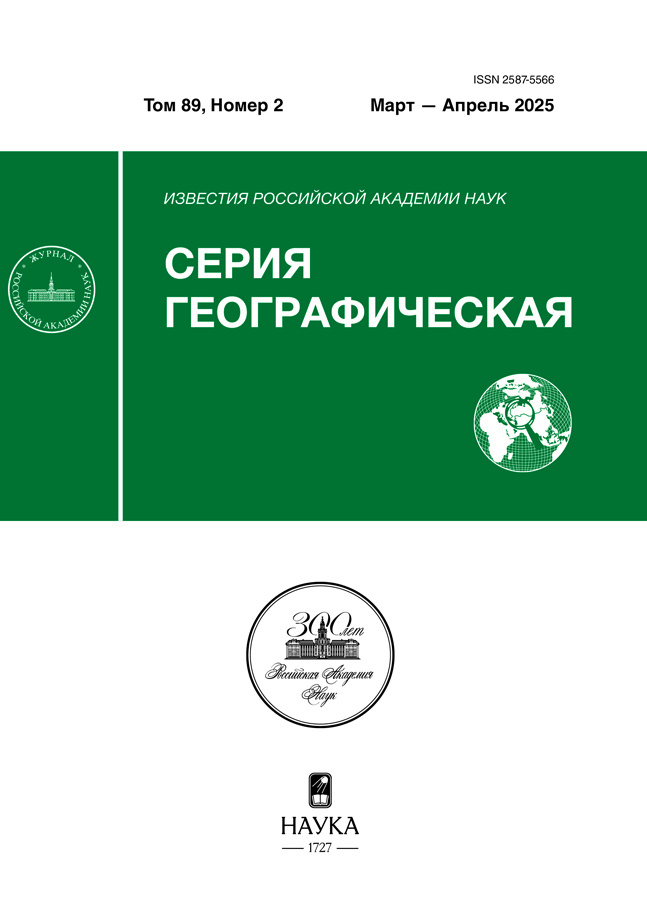
-
Bulletin of the RAS. Geography
ISSN (print): 2587-5566 ,ISSN (online): 2658-6975
Founders: Russian Academy of Sciences , Institute of Geography of the Russian Academy of Sciences
Editor-in-Chief: Tishkov Arkady A., corresponding member RAS, Doctor of Sc., Full Professor,
Frequency / Assess: 6 issues per year / Subscription
Included in: White List (2nd level), Higher Attestation Commission List, RISC, Scopus
-
The Bulletin of the Russian Academy of Sciences: Studies in Literature and Language

-
The Bulletin of the Russian Academy of Sciences: Studies in Literature and Language
ISSN (print): 1605-7880,ISSN (online): 2413-7715
Founder: Russian Academy of Sciences
Editor-in-Chief: Polonsky Vadim V., corresponding member RAS, Doctor of Sc., Full Professor
Frequency / Assess: 6 issues per year / Subscription
Included in: White List (3rd level), Higher Attestation Commission List, RISC
-
Izvestiya Rossiiskoi Akademii Nauk. Seriya Matematicheskaya

-
Izvestiya Rossiiskoi Akademii Nauk. Seriya Matematicheskaya
ISSN (print): 1607-0046, ISSN (online): 2587-5906
Founders: Russian Academy of Sciences, Steklov Mathematical Institute of RAS
Editor-in-Chief: Orlov D. O. , Academician of the Russian Academy of Sciences, Doctor of Physico-Mathematical Sciences
Frequency / Access: 6 issues per year / Subscription
Included in: White List (1st level), Higher Attestation Commission List, RISC
-
Bulletin of the Russian Academy of Sciences: Physics
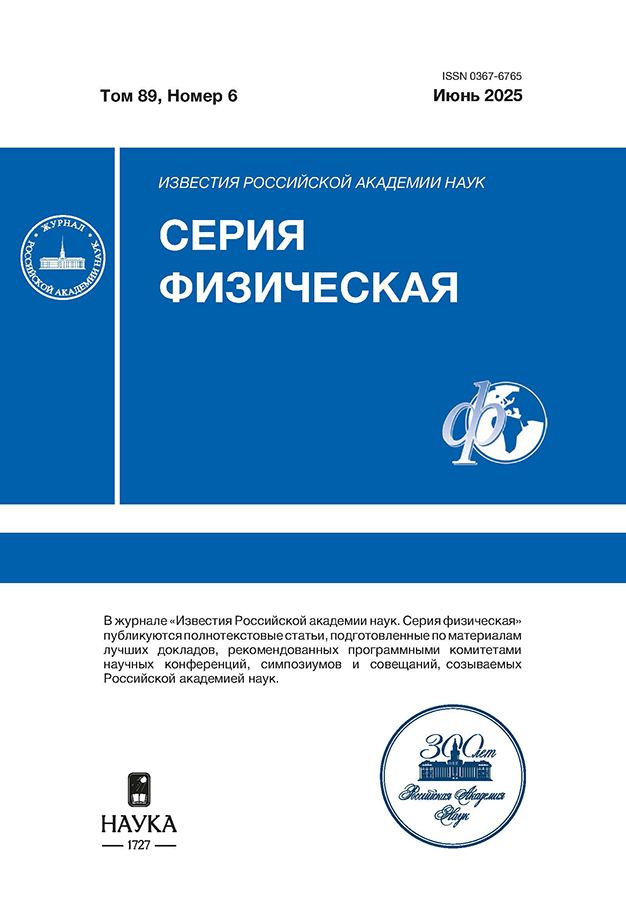
-
Bulletin of the Russian Academy of Sciences: Physics
ISSN (print): 0367-6765
Founder: Russian Academy of Sciences
Editor-in-Chief: Khokhlov D.R., corresponding member RAS, Doctor of Sc., Full Professor
Frequency / Assess: 12 issues per year / Subscription
Included in: White List (3rd level), Higher Attestation Commission List, RISC,
-
Journal of Computer and System Sciences International

-
Journal of Computer and System Sciences International
ISSN (print): 0002-3388
Founders: State Research Institute of Aviation Systems, Russian Academy of Sciences
Editor-in-Chief: Fedosov E.A., academician RAS, Doctor of Sc., Full Professor
Frequency / Access: 6 issues per year / Subscription
Included in: White list (2nd level), Higher Attestation Commission list, RISC
-
Izvestiya, Atmospheric and Oceanic Physics
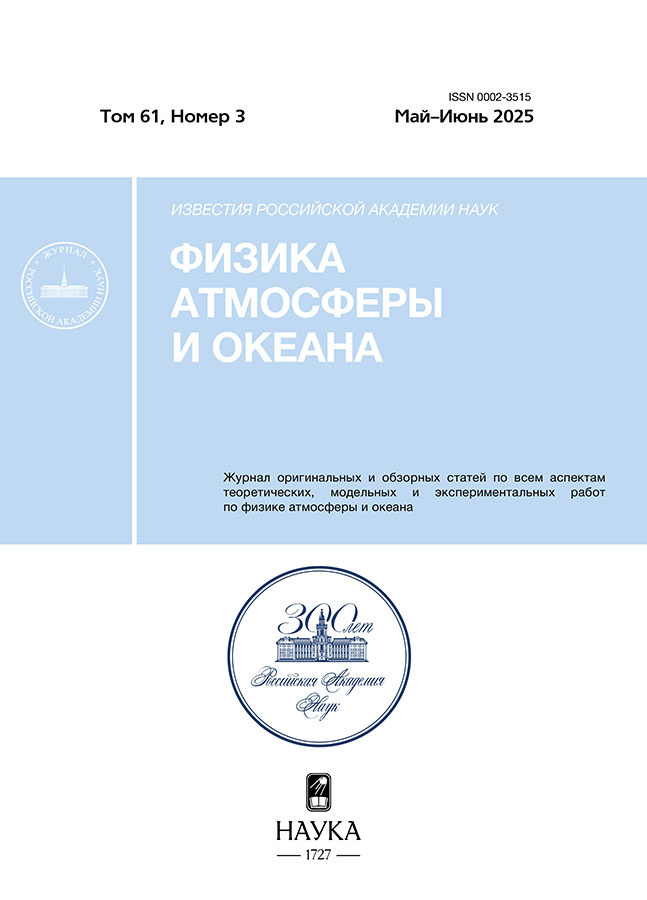
-
Izvestiya, Atmospheric and Oceanic Physics
ISSN (print): 0002-3515
Founders: Russian Academy of Sciences, Department of Oceanology, Atmospheric Physics and Geography of RAS
Editor-in-Chief: Mokhov I.I., academician RAS, Doctor of Sc., Full Professor
Frequency / Access: 6 issues per year / Subscription
Included in: White list (2nd level), Higher Attestation Commission list, RISC
-
Bulletin of the Russian Academy of Sciences. Energetics
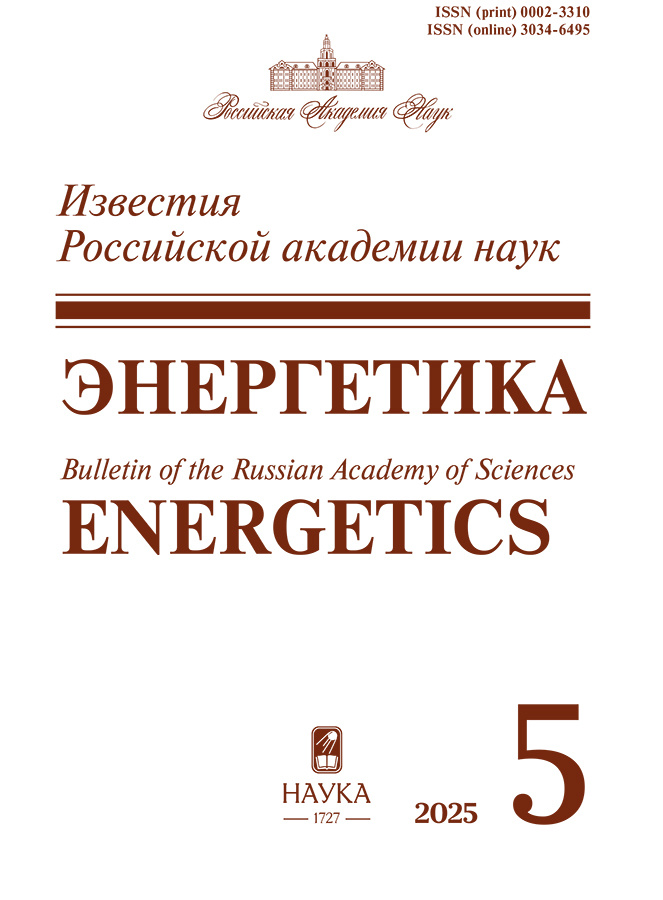
-
Bulletin of the Russian Academy of Sciences. Energetics
ISSN (print): 0002-3310
Founder: Russian Academy of Sciences
Editor-in-chief: Volkov E.P., academician RAS, Doctor of Sc., Full Professor
Frequency / Access: 6 issues per year / Subscription
Included in: White list (4th level), Higher Attestation Commission list, RISC
-
Izvestiâ Rossijskoj akademii raketnyh i artillerijskih nauk
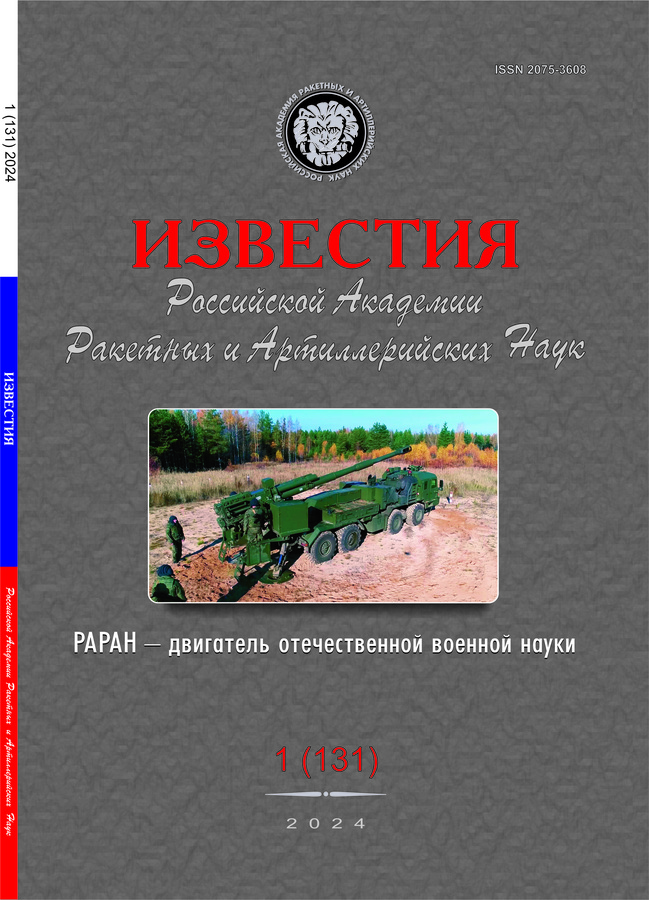
-
Izvestiâ Rossijskoj akademii raketnyh i artillerijskih nauk
ISSN (print): 2075-3608
Founders: Scientific and Production Association of Special Materials; Russian Academy of Rocket and Artillery Sciences
Editor-in-Chief: Silnikov Mikhail Vladimirovich, Academician of RAS, Doctor of Sc., Professor
Frequency / Access: 4 issues per year / Open
Included in: Higher Attestation Commission List, RISC
-
Russian Military Medical Academy Reports
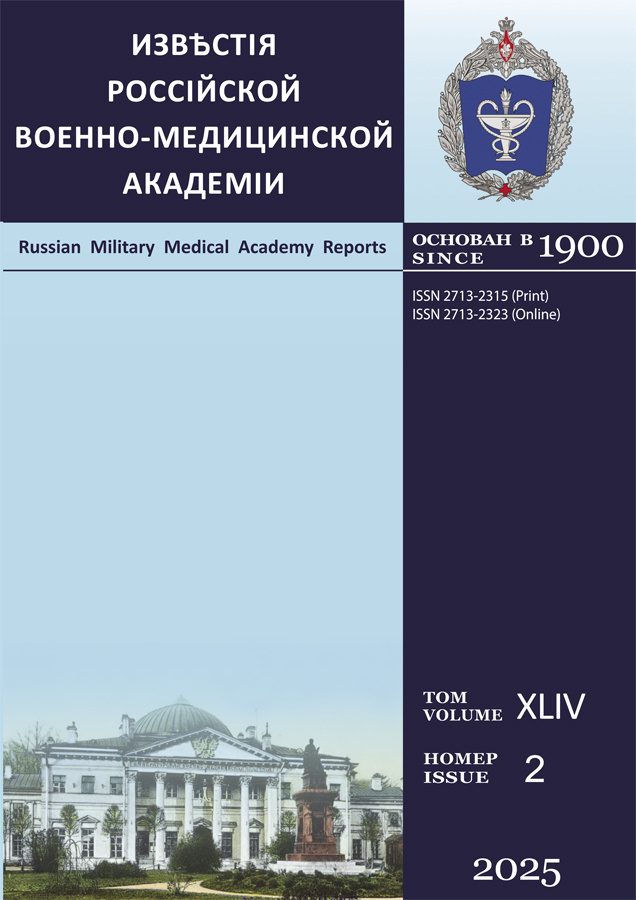
-
Russian Military Medical Academy Reports
ISSN (print): 2713-2315, ISSN (online): 2713-2323
Founders: Military Medical Academy; "Eco-Vector" LLC
Editor-in-Chief: Kryukov Evgeniy Vladimirovich, Academician of the Russian Academy of Sciences, Doctor of Medicine. sciences
Frequency / Access: 4 issues per year / Subscription
Included in: RISC
-
Bulletin of the Russian Geographical Society
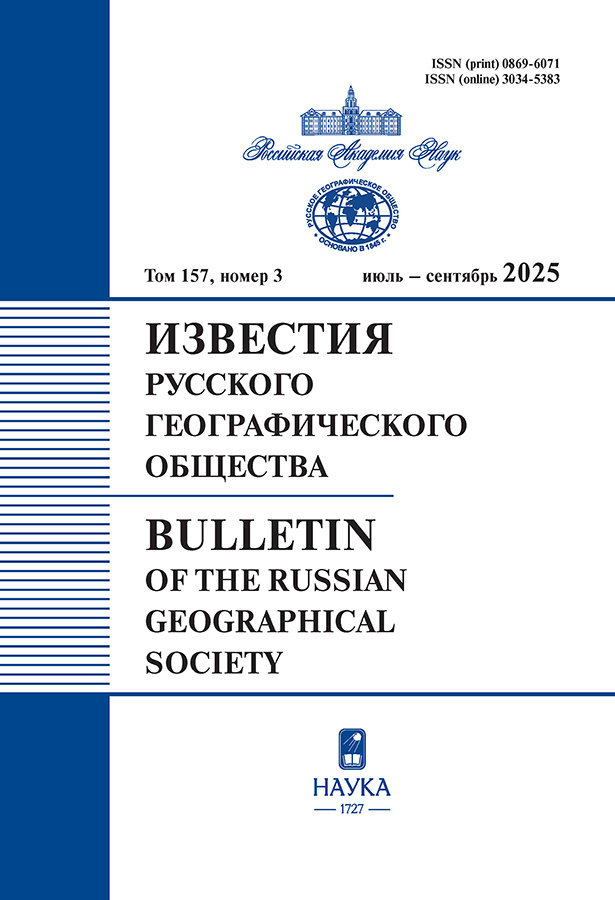
-
Bulletin of the Russian Geographical Society
ISSN (print): 0869-6071
Founders: Russian Academy of Sciences, Russian Geographical Society, St. Petersburg FITZ RAS
Editor-in-Chief: Nikolay S. Kasimov, academician RAS, Doctor of Sc., Full Professor
Frequency / Access: 4 issues per year / Subscription
Included in: White list (3rd level), Higher Attestation Commission list, RISC
-
Izvestiya of Saratov University. Educational Acmeology. Developmental Psychology
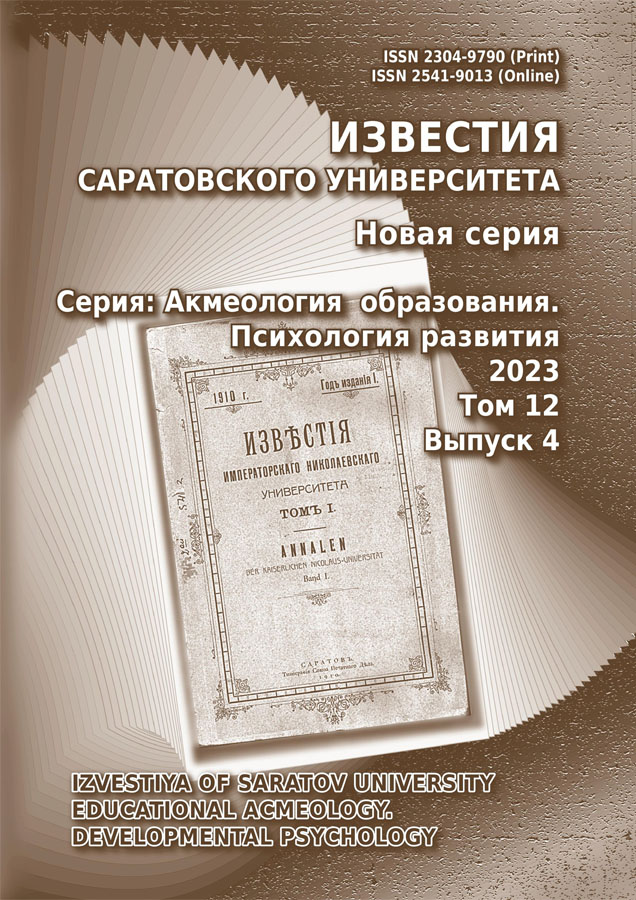
-
Izvestiya of Saratov University. Educational Acmeology. Developmental Psychology
ISSN (print): 2304-9790, ISSN (online): 2541-9013
Founder: Saratov State University
Editor-in-Chief: Rail M. Shamionov, Dr. habil. (Psychology), Professor
Frequency / Access: 4 issues per year / Open
Included in: Higher Attestation Commission List, RISC
-
Izvestiya of Saratov University. History. International Relations

-
Izvestiya of Saratov University. History. International Relations
ISSN (print): 1819-4907, ISSN (online): 2542-1913
Founder: Saratov State University
Editor-in-Chief: Danilov Victor N., Doctor of Historical Sciences, Professor
Frequency / Access: 4 issues per year / Open
Included in: Higher Attestation Commission List, RISC
-
Izvestiya of Saratov University. Mathematics. Mechanics. Informatics

-
Izvestiya of Saratov University. Mathematics. Mechanics. Informatics
ISSN (print): 1816-9791, ISSN (online): 2541-9005
Founder: Saratov State University
Editor-in-Chief: Kossovich Leonid Yuryevich, Doctor of Physics and Mathematics. sciences, professor
Frequency / Access: 4 issues per year / Open
Included in: White List (3rd level), Higher Attestation Commission List, RISC, Web of Science, Scopus, zbMath, MathSciNet
-
News of Saratov University. Ser. Earth sciences

-
News of Saratov University. Ser. Earth sciences
ISSN (print): 1819-7663, ISSN (online): 2542-1921
Founder: Saratov State University
Editor-in-Chief: Makarov Vladimir Zinovievich, Doctor of Geography. sciences, professor
Frequency / Access: 4 issues per year / Open
Included in: Higher Attestation Commission List, RISC
-
Izvestia of Saratov University. New series. Series: Sociology. Politology
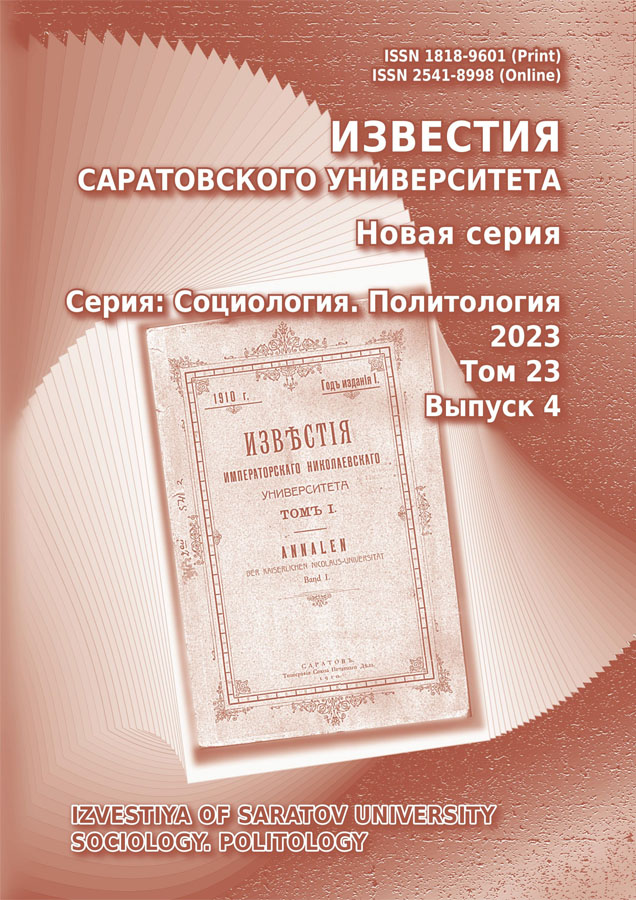
-
Izvestia of Saratov University. New series. Series: Sociology. Politology
ISSN (print): 1818-9601, ISSN (online): 2541-8998
Founder: Saratov State University
Editor-in-Chief: Ivchenkov Sergey Grigorievich, Doctor of Sociology. sciences, professor
Frequency / Access: 4 issues per year / Open
Included in: Higher Attestation Commission List, RISC
-
Izvestiya of Saratov University. Physics
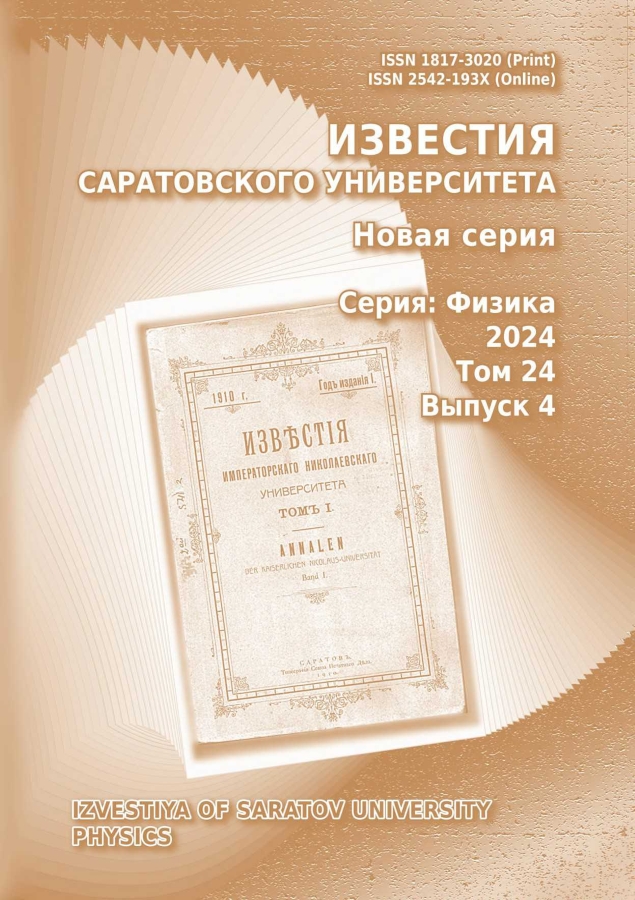
-
Izvestiya of Saratov University. Physics
ISSN (print): 1817-3020, ISSN (online): 2542-193X
Founder: Saratov State University
Editor-in-Chief: Koronovsky Alexey Alexandrovich, Doctor of Physics and Mathematics. sciences, professor
Frequency / Access: 4 issues per year / Open
Included in: White List (4th level), Higher Attestation Commission List, RISC, Scopus
-
News of Saratov University. Ser. Philology
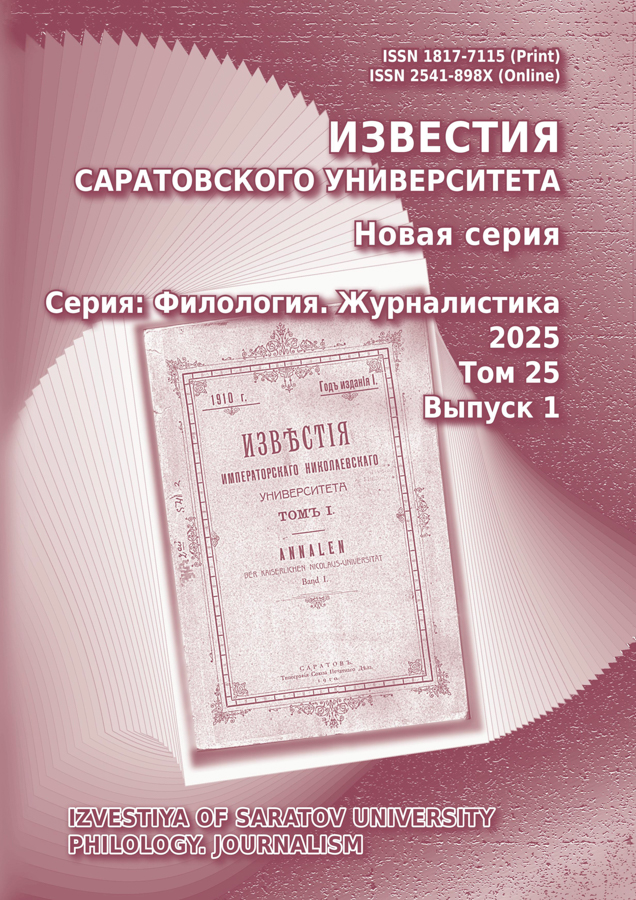
-
News of Saratov University. Ser. Philology
ISSN (print): 1817-7115, ISSN (online): 2541-898X
Founder: Saratov State University
Editor-in-Chief: Prozorov Valery Vladimirovich, Doctor of Philology. sciences, professor
Frequency / Access: 4 issues per year / Open
Included in: Higher Attestation Commission List, RISC
-
News of Saratov University. Ser. Philosophy, psychology, pedagogy

-
News of Saratov University. Ser. Philosophy, psychology, pedagogy
ISSN (print): 1819-7671, ISSN (online): 2542-1948
Founder: Saratov State University
Editor-in-Chief: Ustyantsev Vladimir Borisovich, Doctor of Philosophy. sciences, professor
Frequency / Access: 4 issues per year / Open
Included in: Higher Attestation Commission List, RISC
-
Izvestiya of Saratov University. New series. Series: Chemistry. Biology. Ecology

-
Izvestiya of Saratov University. New series. Series: Chemistry. Biology. Ecology
ISSN (print): 1816-9775, ISSN (online): 2541-8971
Founder: Saratov State University
Editor-in-Chief: Goryacheva Irina Yurievna, Doctor of Chemistry. sciences, professor
Frequency / Access: 4 issues per year / Open
Included in: Higher Attestation Commission List, RISC
-
Izvestiya of Saratov University. New Series. Series: Economics. Management. Law

-
Izvestiya of Saratov University. New Series. Series: Economics. Management. Law
ISSN (print): 1994-2540, ISSN (online): 2542-1956
Founder: Saratov State University
Editor-in-Chief: Ogurtsova Elena Vyacheslavovna, kandidate. econ. Sciences, Associate Professor
Frequency / Access: 4 issues per year / Open
Included in: Higher Attestation Commission List, RISC
-
Izvestiâ Sankt-Peterburgskogo gosudarstvennogo agrarnogo universiteta

-
Izvestiâ Sankt-Peterburgskogo gosudarstvennogo agrarnogo universiteta
ISSN (print): 2078-1318
Founder: Federal State Budgetary Educational Institution of Higher Education «Saint-Petersburg State Agrarian University»
Editor-in-Chief: Morozov Vitaly Yurievich, Doctor of Sc., Full Professor
Frequency / Assess: 4 issues per year / Open
Included in: Higher Attestation Commission List, RISC
-
Bulletin of the Tomsk Polytechnic University. Geo Assets Engineering
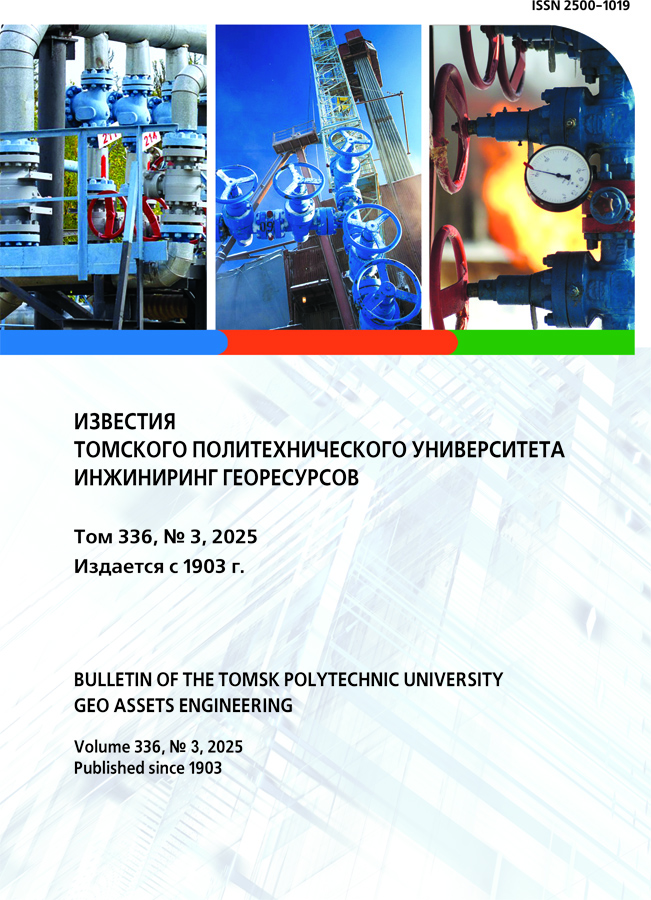
-
Bulletin of the Tomsk Polytechnic University. Geo Assets Engineering
ISSN (print): 2500-1019, ISSN (online): 2413-1830
Founder: National Research Tomsk Polytechnic University
Editor-in-Chief: Igor P. Semiletov, Corresponding member RAS, Doctor of Geography Sciences, professor
Frequency / Access: 12 issues per year / Open
Included in: White List (3rd level), Higher Attestation Commission List, RISC, Scopus, Web of Science
-
Proceedings of the RAS Ufa Scientific Centre

-
Proceedings of the RAS Ufa Scientific Centre
ISSN (print): 2222-8349
Founder: Ufa Federal Research Centre of Russian Academy of Sciences
Editor-in-Chief: Ilgamov Marat Aksanovich, Corresponding Member of the RAS, Doctor of Sc., Full Professor
Frequency / Assess: 4 issues per year / Open
Included in: Higher Attestation Commission list, RISC
-
Measuring. Monitoring. Management. Control
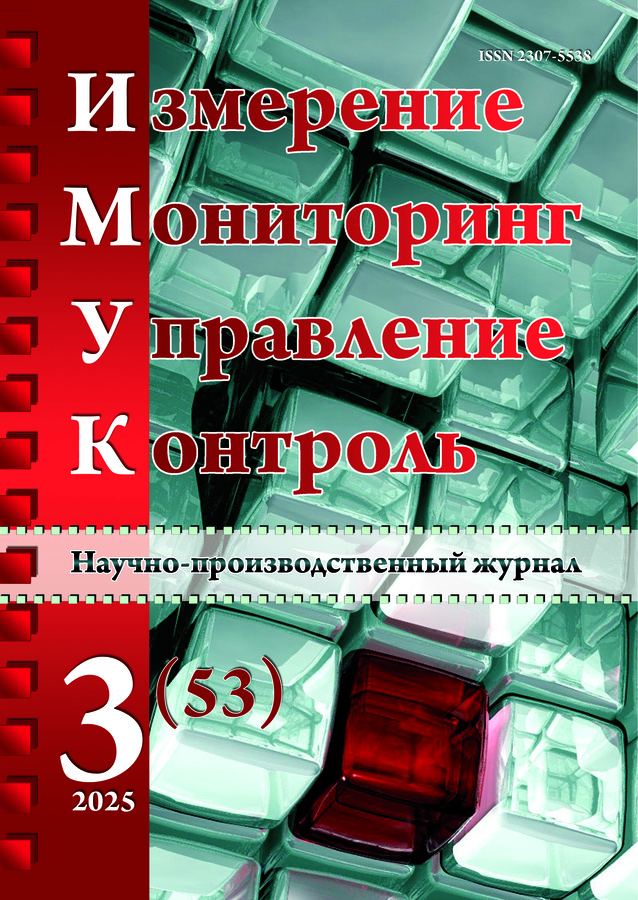
-
Measuring. Monitoring. Management. Control
ISSN (print): 2307-5538
Founders: Penza State University, Research Institute of Physical Measurements, JSC (NIIFI)
Editor-in-Chief: Artamonov Dmitry Vladimirovich, Doctor of Engineering. sciences, professor
Frequency / Access: 4 issues per year / Open
Included in: Higher Attestation Commission List, RISC
-
Izmeritelʹnaâ tehnika
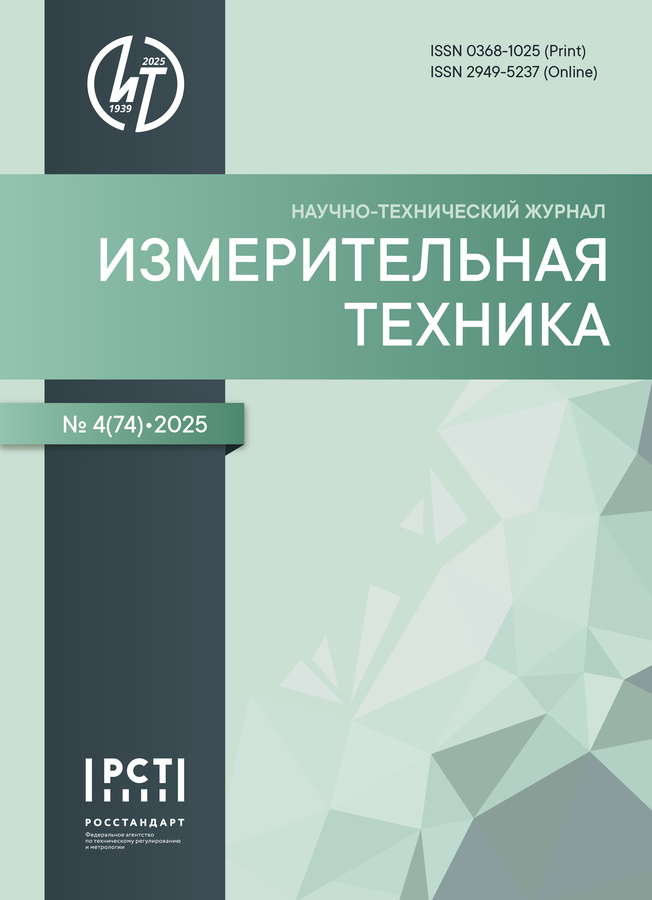
-
Izmeritelʹnaâ tehnika
ISSN (print): 0368-1025, ISSN (online): 2949-5237
Founders: Federal State Unitary Enterprise Russian Metrological Institute of Technical Physics and Radio Engineering; All -Russian Research Institute for Optical and Physical Measurements; D. I. Mendeleev Institute for Metrology; Metrological Academy of Russia; Federal Agency on Technical Regulating and Metrology; Federal budgetary institution "Research Centre for Applied Metrology - Rostest"
Editor-in-Chief: Lazarenko Evgeniy
Frequency / Access: 6 issues per year / Subscription
Included in: White List (2nd level), Higher Attestation Commission List, RISC
-
Indo-European linguistics and classical philology

-
Indo-European linguistics and classical philology
ISSN (print): 2306-9015, ISSN (online): 2658-6452
Founder: Institute for Linguistic Studies, Russian Academy of Sciences
Editor-in-Chief: Kazansky N.N. , Academican RAS, Doctor of Sc., Professor
Frequency / Access: 1 issue per year / Open
Included in: White List (3rd level), Higher Attestation Commission List, RISC, Scopus
-
Indo-Iranian languages

-
Indo-Iranian languages
ISSN (print): 3034-6800, ISSN (online): 3034-6819
Founder: Institute for Linguistic Studies, Russian Academy of Sciences
Editor-in-Chief: Arseniy Vydrin, Ph.D. (Linguistics)
Frequency / Access: 2 issues per year / Open
-
Industrial economy

-
Industrial economy
ISSN (print): 2712-7559, ISSN (online): 2949-1886
Founder: Limited Liability Company "University of Continuing Professional Education"
Editor-in-Chief: Sokolov Alexey Pavlovich, Doctor of Sc., Professor
Frequency / Assess: 7 issues per year / Hybrid
Included in: Higher Attestation Commission list, RISC
-
ENGINEERING SYSTEMS AND CONSTRUCTIONS

-
ENGINEERING SYSTEMS AND CONSTRUCTIONS
ISSN (print): 2074-188X
Founder: Voronezh State Technical University
Editor-in-Chief: Sotnikova Olga Anatolyevna, Doctor of Technical Sciences, Professor
Frequency / Assess: 4 issues per year / Hybrid
Included in: Higher Attestation Commission list, RISC
-
Engineering technologies and systems

-
Engineering technologies and systems
ISSN (print): 2658-4123, ISSN (online): 2658-6525
Founder: National Research Ogarev Mordovia State University
Editor-in-Chief: Petr V. Senin, Dr.Sci. (Engr.), Professor
Frequency / Access: 4 issues per year / Open
Included in: White list (1th level), Higher Attestation Commission List, RISC, Web of Science
-
Property relations in the Russian Federation
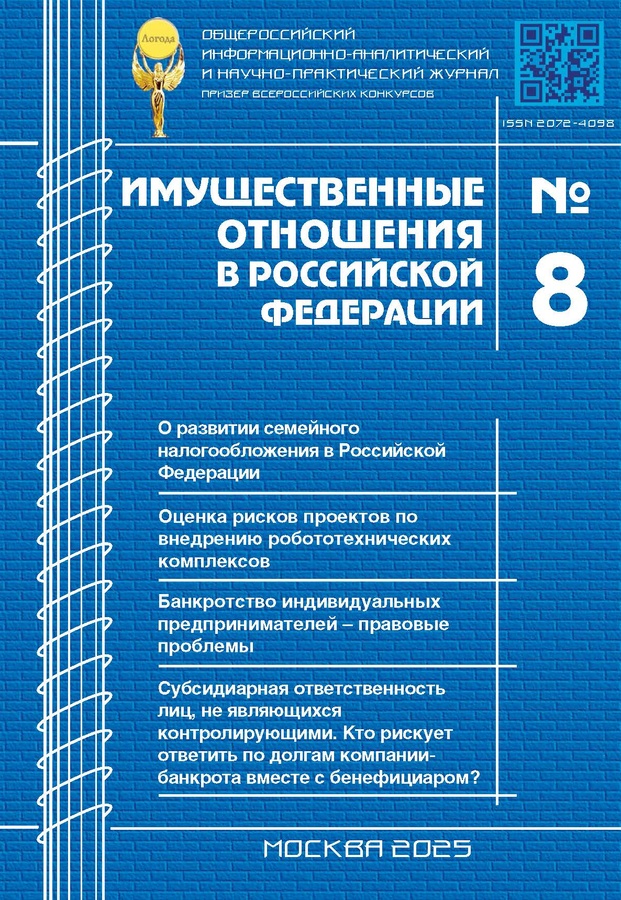
-
Property relations in the Russian Federation
ISSN (print): 2072-4098
Founder: Moscow institution of Economics, Politics and Law
Editor-in-Chief: Novokreshchennykh Victor
Frequency / Assess: 12 issues per year / Hybrid
Included in: Higher Attestation Commission list, RISC
-
Experience industries. Socio-Cultural Research Technologies

-
Experience industries. Socio-Cultural Research Technologies
ISSN (online): 2949-1606
Founder: Federal State Budgetary Educational Institution of Higher Education "Yaroslav-the-Wise Novgorod State University"
Editor-in-Chief: Malenko Sergey, Doctor of Sc., Professor
Frequency / Access: 4 issues per year / Open
Included in: RISC
-
Innovative economy: information, analysis, prognoses

-
Innovative economy: information, analysis, prognoses
ISSN (print): 2411-9520, ISSN (online): 2949-1894
Founder: Limited Liability Company "University of Continuing Professional Education"
Editor-in-Chief: Sokolov Alexey Pavlovich, Doctor of Sc., Professor
Frequency / Assess: 8 issues per year / Hybrid
Included in: Higher Attestation Commission list, RISC
-
Innovative Instrumentation

-
Innovative Instrumentation
ISSN (print): 2949-0693
Founder: St.Petersburg State University of Aerospace Instrumentation
Editor-in-Chief: Frolova E. A., Doctor of Sc., Full Professor
Frequency / Assess: 6 issues per year / Open
Included in: RISC
-
Modern Transportation Systems and Technologies
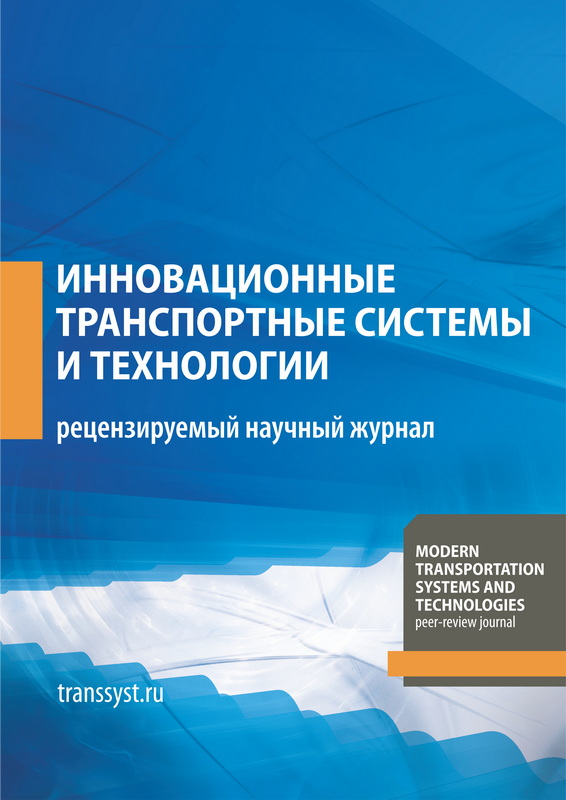
-
Modern Transportation Systems and Technologies
ISSN (online): 2782-3733
Founder: Emperor Alexander I St. Petersburg State Transport University
Editor-in-Chief: Tamila S. Titova, Doctor of Sc., Full Professor
Frequency / Access: 4 issues per year / Open
Included in: Higher Attestation Commission List, RISC
-
Institut psihologii Rossijskoj akademii nauk. Socialʹnaâ i èkonomičeskaâ psihologiâ

-
Institut psihologii Rossijskoj akademii nauk. Socialʹnaâ i èkonomičeskaâ psihologiâ
ISSN (print): 2542-0852
Founder: Institute of Psychology of the Russian Academy of Sciences
Editor-in-Chief: Zhuravlev A.L., Ademician RAS, Doctor of Sc., Full Professor
Frequency / Assess: 4 issues per year / Open
Included in: Higher Attestation Commission List, RISC
-
Institut psihologii Rossijskoj akademii nauk. Organizacionnaâ psihologiâ i psihologiâ truda

-
Institut psihologii Rossijskoj akademii nauk. Organizacionnaâ psihologiâ i psihologiâ truda
ISSN (online): 2541-8688
Founder: Institute of Psychology of the Russian Academy of Sciences
Editor-in-Chief: Zankovsky A.N.
Frequency / Assess: 4 issues per year / Open
Included in: Higher Attestation Commission List, RISC
-
Intelligentsia and the World

-
Intelligentsia and the World
ISSN (print): 1993-3959
Founder: Ivanovo State University
Editor-in-Chief: Chernoperov V. L, Doctor of Sc., Full Professor
Frequency / Assess: 4 issues per year / Open
Included in: Higher Attestation Commission list, RISC
-
Intellect. Innovations. Investments

-
Intellect. Innovations. Investments
ISSN (print): 2077-7175
Founder: Orenburg State University
Editor-in-Chief: Miroshnikov S.A., Corresponding Member RAS, Doctor of Sc., Professor
Frequency / Assess: 6 issues per year / Open
Included in: Higher Attestation Commission list, RISC
-
Integration of Education
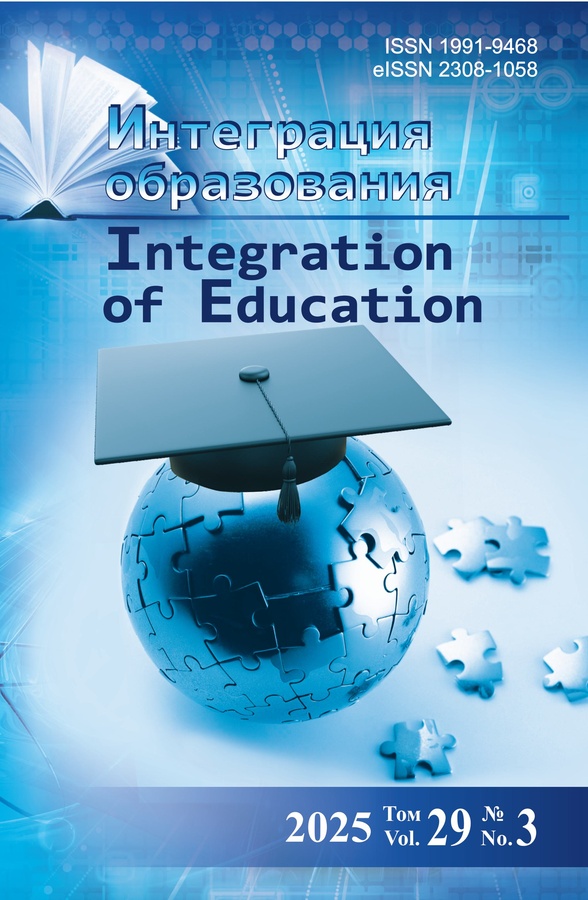
-
Integration of Education
ISSN (print): 1991-9468, ISSN (online): 2308-1058
Founder and publisher: National Research Ogarev Mordovia State University
Editor-in-Chief: Dmitriy E. Glushko, Cand.Sci. (Ped.)
Frequency / Access: 4 issues per year / Open
Included in: White list (1st level), Higher Attestation Commission List, RISC, RSCI, Scopus
Website: https://edumag.mrsu.ru
-
Interaction. Interview. Interpretation
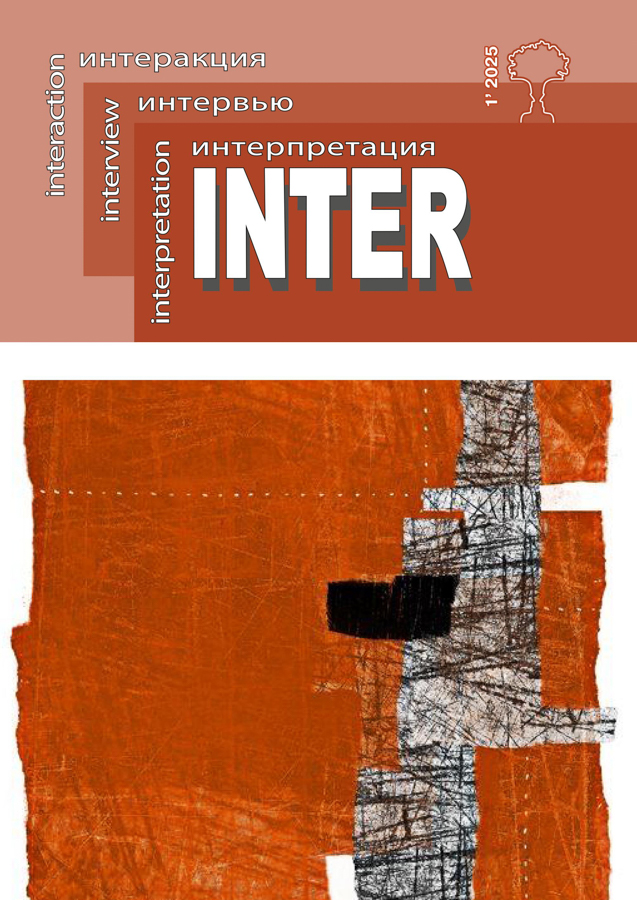
-
Interaction. Interview. Interpretation
ISSN (online): 2687-0401
Founder: Federal Center of Theoretical and Applied Sociology of the Russian Academy of Sciences, Russian Society of Sociologists
Editor-in-Chief: V.V. Semenova, Dr. Sci. (Sociol.)
Frequency / Access: 4 issues per year / Open
Included in: Higher Attestation Commission List, RISC
-
Russian Journal of Infection and Immunity

-
Russian Journal of Infection and Immunity
ISSN (print): 2220-7619, ISSN (online): 2313-7398
Founders: Russian Association of Allergologists and Clinical Immunologists Saint-Petersburg Regional Branch, Saint-Petersburg Pasteur Institute, North-Western Department of Medical Sciences
Editor-in-Chief: Areg A. Totolyan, academician of RAS, Doctor of Sc., Professor
Frequency / Access: 6 issues per year / Open
Included in: White List (3rd level), Higher Attestation Commission List, RISC, Scopus, Web of Science Core Collection
-
Infocommunications and radio technologies

-
Infocommunications and radio technologies
ISSN (print): 2587-9936
Founder: Sevastopol state university
Editor-in-chief: Volvach A.E., Doctor of Sc.
Frequency / Access: 4 issues per year / Open
Included in: RISC
-
Informatization in the Digital Economy

-
Informatization in the Digital Economy
ISSN (print): 2712-9306
Founder: Limited Liability Company "First Economic Publishing House"
Editor-in-Chief: Tishchenko Evgeniy, Doctor of Sc., Full Professor
Frequency / Assess: 4 issues per year / Subscription
Included in: Higher Attestation Commission list, RISC
-
Informatics and Automation

-
Informatics and Automation
ISSN (print): 2713-3192, ISSN (online): 2713-3206
Founder: St. Petersburg Federal Research Center of the Russian Academy of Sciences
Editor-in-Chief: Ronzhin Andrey Leonidovich, Dr. Sci., Professor of RAS
Frequency / Assess: 6 issues per year / Open
Included in: White List (2nd level), Higher Attestation Commission List, RISC, Scopus
-
Informatics and Applications

-
Informatics and Applications
ISSN (print): 1992-2264, ISSN (online): 2310-9912
Founder: Federal Research Center Computer Science and Control of the Russian Academy of Sciences
Editor-in-Chief: I. A. Sokolov, Academician of RAS, Doctor of Technical Sciences, Professor
Frequency / Access: 4 issues per year / Open
Included in: White List (3rd level), Higher Attestation Commission List, RISC, Scopus
-
Informacionno-izmeritelʹnye i upravlâûŝie sistemy

-
Informacionno-izmeritelʹnye i upravlâûŝie sistemy
ISSN (print): 2070-0814
Founder: Limited Liability Company "Publishing House "Radiotekhnika"
Editor-in-Chief: Verba V.S., Member of Russian Academy of Sciences, Doctor of Sc., Full Professor
Frequency / Access: 6 issues per year /Hybrid
Included in: Higher Attestation Commission List, RISC
-
Information and mathematical technologies in science and management
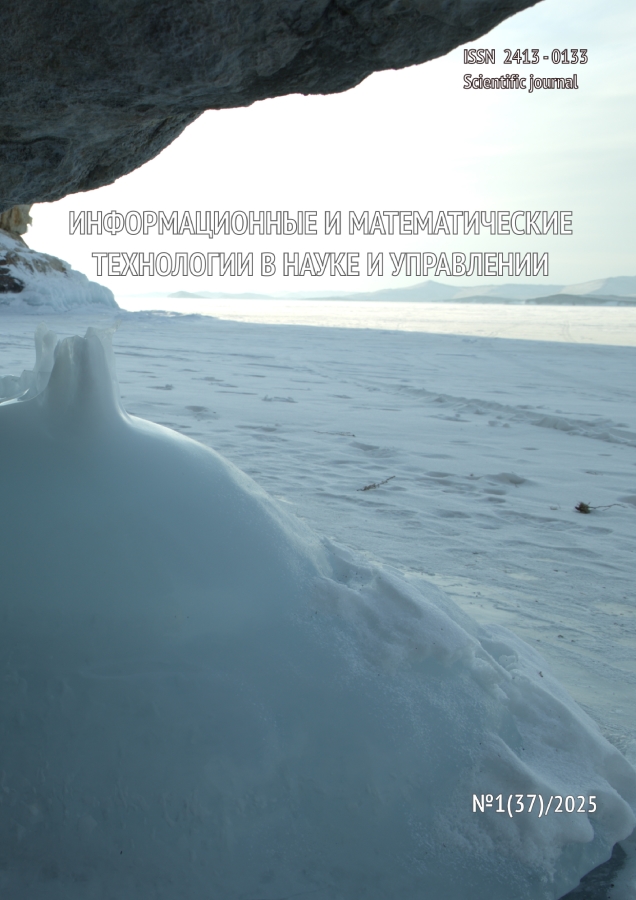
-
Information and mathematical technologies in science and management
ISSN (print): 2075-8251
Founder: Melentiev Energy Systems Institute of Siberian Branch of the Russian Academy of Sciences
Editor-in-Chief: Massel Liudmila V., Doctor of Sc. (Technology), Professor
Frequency / Access: 4 issues per year / Open
Included in: Higher Attestation Commission List, RISC
-
Journal of information technologies and computing systems
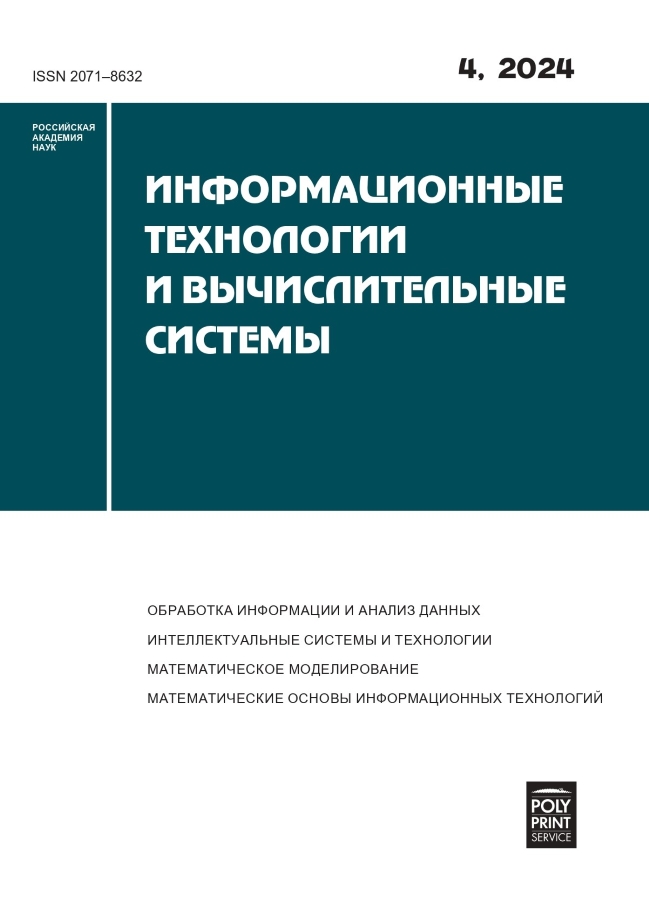
-
Journal of information technologies and computing systems
ISSN (print): 2071-8632
Founder: Federal Research Center “Computer Science and Control”, the Russian Academy of Sciences
Editor-in-Chief: Popkov Y. S. , Academician of RAS, Doctor of Technical Sciences, Professor
Frequency / Access: 4 issues per year / Subscription
Included in: White List (4rd level), Higher Attestation Commission List, RISC
-
Informaciâ & bezopasnostʹ

-
Informaciâ & bezopasnostʹ
ISSN (print): 1682-7813
Founder: Voronezh State Technical University
Editor-in-Chief: Ostapenko A.
Frequency / Assess: 4 issues per year / Open
Included in: Higher Attestation Commission list, RISC
-
ARTIFICIAL INTELLIGENCE AND DECISION MAKING
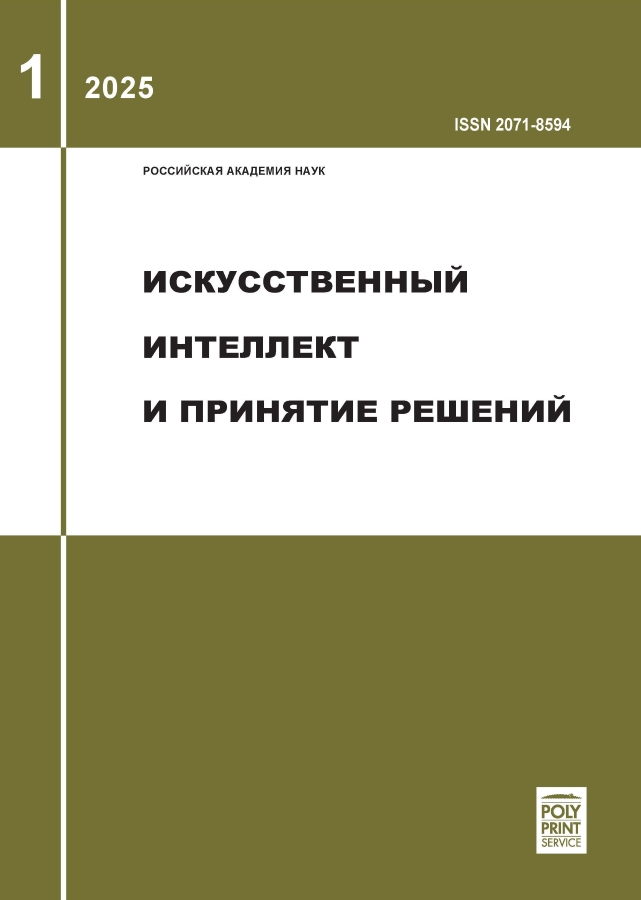
-
ARTIFICIAL INTELLIGENCE AND DECISION MAKING
ISSN (print): 2071-8594
Founder: Federal Research Center “Computer Science and Control”, the Russian Academy of Sciences
Editor-in-Chief: Sokolov Igor A., Academician of RAS, Doctor of Sc., Full Professor
Frequency / Access: 4 issues per year / Subscription
Included in: White List (3rd level), Higher Attestation Commission List, RISC
-
Earth Research from Space
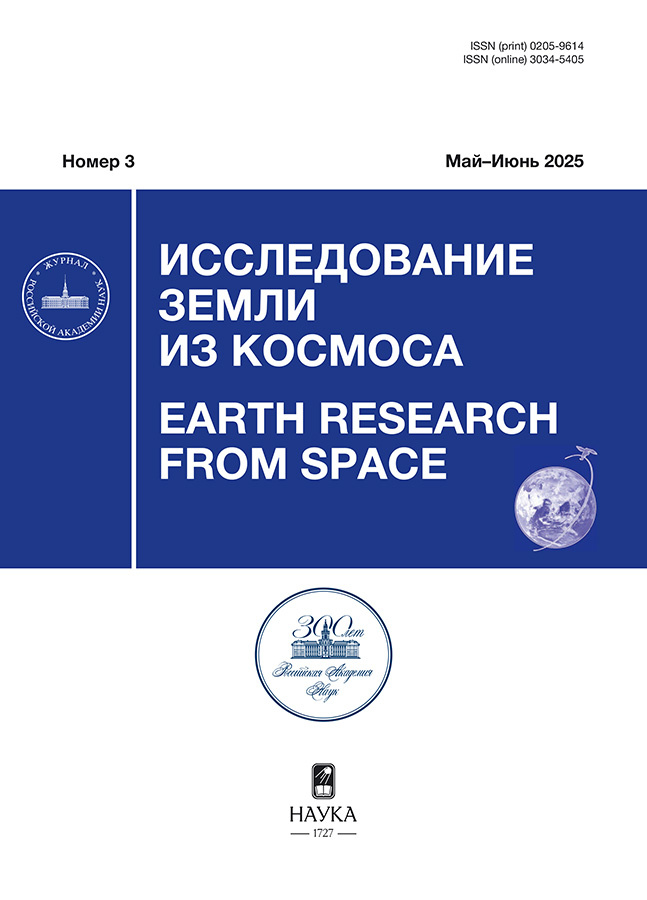
-
Earth Research from Space
ISSN (print): 0205-9614
Founder: Russian Academy of Sciences
Editor-in-Chief: Bondur Valery G., academician RAS, Doctor of Sc., Full Professor
Frequency / Access: 6 issues per year / Subscription
Included in: White list (3rd level), Higher Attestation Commission list, RISC, Scopus
-
Research in Economic and Financial Problems

-
Research in Economic and Financial Problems
ISSN (online): 2782-6414
Founder: Stavropol State Agricultural University
Editor-in-Chief: Bobryshev Aleksei N., Doctor of Sc., Full Professor
Frequency / Assess: 4 issues per year / Open
Included in: Higher Attestation Commission list, RISC
-
Space exploration

-
Space exploration
ISSN (online): 2453-8817
Founder: NB-Media Ltd.
Editor-in-Chief: Yanik Andrey Aleksandrovich, PhD
Frequency / Assess: 4 issues per year / Open
Included in: RISC
-
HISTORY. CULTUROLOGY. POLITICAL SCIENCE

-
HISTORY. CULTUROLOGY. POLITICAL SCIENCE
ISSN (print): 3034-3364, ISSN (online): 3034-3356
Founders: Limited Liability Company "Science and Education", Federal State Public Military Educational Institution of Higher Education Krasnodar Air Force Institute for Pilots named after Hero of the Soviet Union A.K. Serov of the Ministry of Defence of the Russian Federation
Editor-in-Chief: Uporov I.V.
Frequency / Assess: 4 issues per year / Open
Included in: Higher Attestation Commission list, RISC
-
HISTORY AND PEDAGOGY NATURAL SCIENCE

-
HISTORY AND PEDAGOGY NATURAL SCIENCE
ISSN (print): 2226-2296
Founder: OOO "OBRAKADEMNAUKA"
Editor-in-Chief: Bordovsky G.A.
Frequency / Assess: 4 issues per year / Subscription
Included in: Higher Attestation Commission List, RISC
-
Historical informatics

-
Historical informatics
ISSN (online): 2585-7797
Founder: NB-Media Ltd.
Editor-in-Chief: Borodkin Leonid Iosifovich, Corresponding Member of the RAS, Doctor of Sc., Full Professor
Frequency / Assess: 4 issues per year / Open
Included in: Higher Attestation Commission list, RISC
-
Historical ethnology
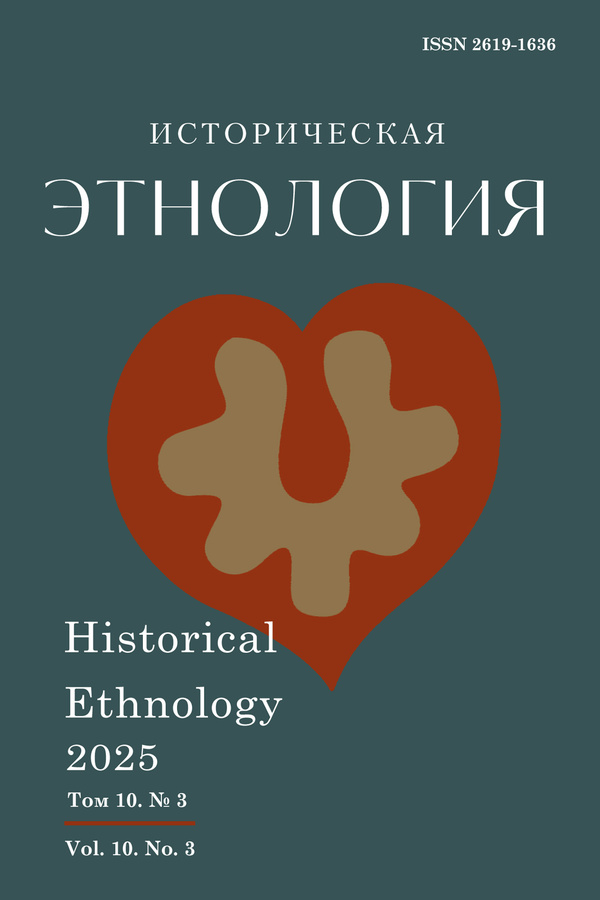
-
Historical ethnology
ISSN (online): 2619-1636
Founder: State institution "Tatarstan Academy of Sciences"
Editor-in-Chief: Gabdrakhmanova, Gulnara F., Dr. Sci. (Sociology), Associate Professor
Frequency / Access: 3 issues per year / Open
Included in: RISC
-
Historical Bulletin

-
Historical Bulletin
ISSN (online): 2658-5685
Founder: Individual entrepreneur Klyueva Marina Maratovna
Editor-in-Chief: Skopa Vitaliy Aleksandrovich, Doctor of Historical Sciences, Professor
Frequency / Access: 4 issues per year / Open
Included in: Higher Attestation Commission List, RISC
-
Historical Journal: Scientific Research

-
Historical Journal: Scientific Research
ISSN (online): 2454-0609
Founder: NB-Media Ltd.
Editor-in-Chief: Karpov Sergey Pavlovich, Academician of the Russian Academy of Sciences, Doctor of Sc., Full Professor
Frequency / Assess: 6 issues per year / Open
Included in: Higher Attestation Commission list, RISC
-
History: Facts and Symbols

-
History: Facts and Symbols
ISSN (print): 2410-4205, ISSN (online): 2949-2866
Founder: Bunin Yelets State University
Editor-in-Chief: Lyapin Denis A.., Doctor of Sc.,
Frequency / Assess: 4 issues per year / Open
Included in: Higher Attestation Commission List, RISC
-
History and Modern Perspectives
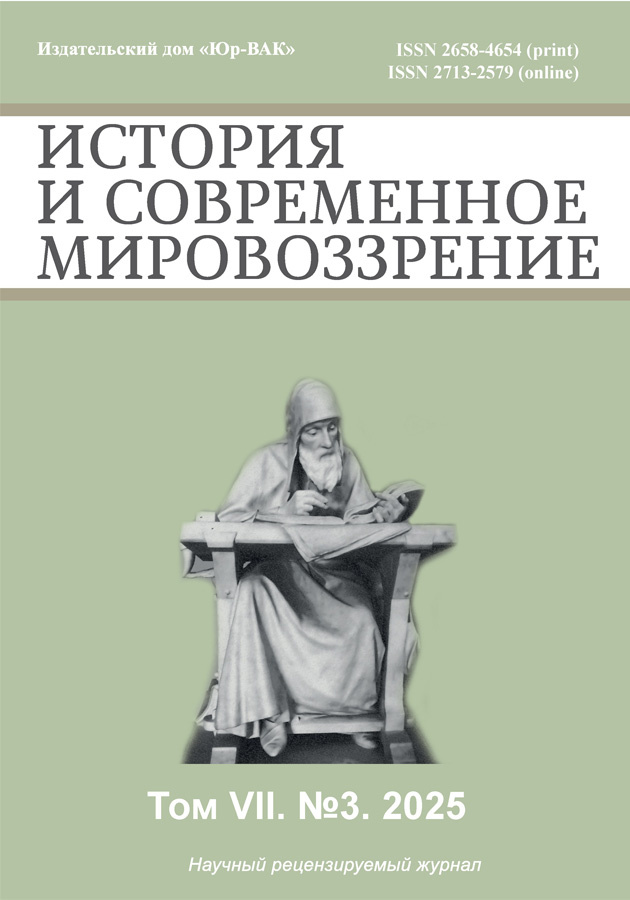
-
History and Modern Perspectives
ISSN (print): 2658-4654, ISSN (online): 2713-2579
Founder: Publishing house "Yur-VAK"
Editor-in-Chief: Vladimir V. Zapariy, Doctor of Historical Sciences, Professor
Frequency / Access: 4 issues per year / Subscription
Included in: Higher Attestation Commission List, RISC
-
Itogi nauki i tehniki. Sovremennaâ matematika i eë priloženiâ. Tematičeskie obzory

-
Itogi nauki i tehniki. Sovremennaâ matematika i eë priloženiâ. Tematičeskie obzory
ISSN (online): 2782-4438
Founder: Russian Institute for Scientific and Technical Information of Russian Academy of Sciences
Editor-in-Chief: Gamkrelidze Revaz V., Academician of RAS, Doctor of Sc., Professor
Frequency / access: 12 issues per year/ Open
Included in: RISC, MathSciNet
-
Cables and wires

-
Cables and wires
ISSN (print): 2072-215X
Founder: Ltd. “Wires and Cables”
Editor-in-Chief: Evgeny Borisovich Vasiliye, PhD in Economics
Frequency / Assess: 6 issues per year / Open
Included in: Higher Attestation Commission List, RISC
-
Kazan medical journal

-
Kazan medical journal
ISSN (print): 0368-4814, ISSN (online): 2587-9359
Founders: Kazan State Medical University, Eco-Vector LLC
Editor-in-Chief: Ayrat U. Ziganshin, MD, PhD, Professor
Frequency / Access: 6 issues per year / Subscription
Included in: White List (4th level), Higher Attestation Commission List, RISC, Scopus
-
Potato and vegetables

-
Potato and vegetables
ISSN (print): 0022-9148, ISSN (online): 2712-8067
Founder: LLC “KARTO and OV”
Editor-in-Chief: Leunov Vladimir Ivanovich, Doctor of Sciences, Professor
Frequency / Assess: 8 issues per year / Open
Included in: Higher Attestation Commission List, RISC
-
The Caspian region: politics, economics, culture

-
The Caspian region: politics, economics, culture
ISSN (print): 1818-510X
Founder: Astrakhan State University named after V.N. Tatishchev
Editor-in-Chief: S.V. Vinogradov, Doctor of Sc. (History), Full Professor
Frequency / Assess: 4 issues per year / Open
Included in: Higher Attestation Commission list, RISC
-
Good clinical practice

-
Good clinical practice
ISSN (print): 2588-0519, ISSN (online): 2618-8473
Founder: Russian Society of Clinical Investigators
Editor-in-Chief: Sergey K. Zyryanov, Doctor of Sc., Professor
Frequency / Access: 4 issues per year / Open
Included in: Higher Attestation Commission List, RISC
-
Quantum electronics

-
Quantum electronics
ISSN (print): 0368-7147
Founders: Lebedev Physics Institute of the Russian Academy of Sciences, Prokhorov General Physics Institute of the Russian Academy of Sciences, Moscow Engineering and Physics Institute, International Laser Center of the Moscow State University, "Astrofizika" Scientific and Production Company, Research Institute for Laser Physics, Institute of Laser Physics, Siberian Branch of the Russian Academy of Sciences, Stel'makh "Polyus" Research and Development Institute
Editor-in-Chief: Kolachevsky Nikolai Nikolaevich, corresponding member RAS, Doctor of Sc.
Frequency / Assess: 12 issues per year / Subscription
Included in: White list (2nd level), Higher Attestation Commission List, RISC, Scopus
-
Cybernetics and programming

-
Cybernetics and programming
ISSN (online): 2644-5522
Founder: NB-Media Ltd.
Editor-in-Chief: Sidorkina Irina Gennadyevna, Doctor of Sc., Full Professor
Frequency / Assess: 6 issues per year / Open
Included in: RISC
-
Kinetics and Catalysis
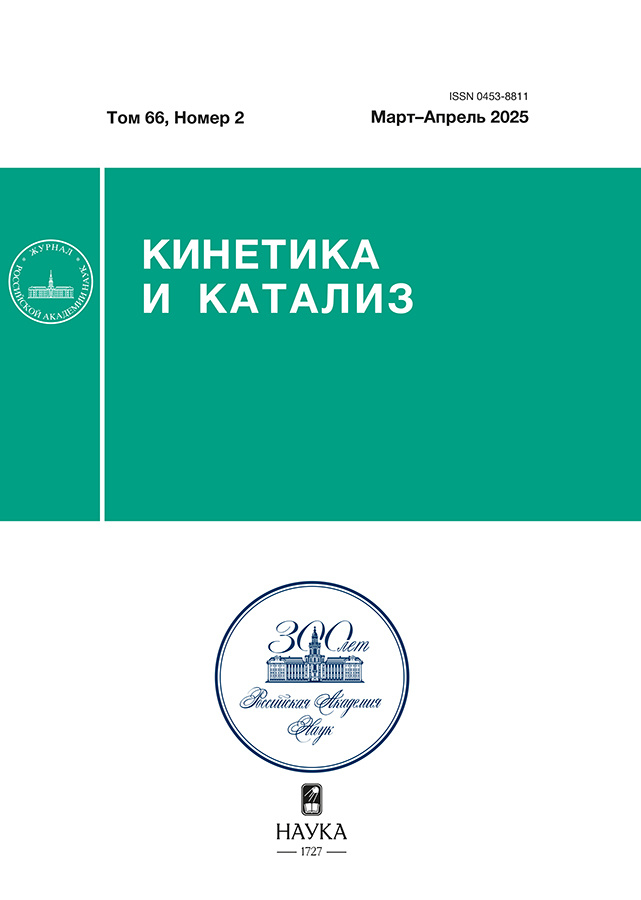
-
Kinetics and Catalysis
ISSN (print): 0453-8811
Founders: Russian Academy of Sciences, Institute of Organic Chemistry of RAS
Editor-in-chief: Bukhtiyarov V.I., academician RAS, Doctor of Sc., Full Professor
Frequency / Access: 6 issues per year / Subscription
Included in: White list (2nd level), Higher Attestation Commission list, RISC
-
China: society and culture

-
China: society and culture
ISSN (print): 2782-3652, ISSN (online): 2949-1398
Founders: Eco-Vector LLC, Alexey Alexandrovich Maslov
Editor-in-Chief: Maslov Alexey Alexandrovich, Doctor of Historical Sciences, Professor
Frequency / Access: 4 issues per year / Open
Included in: RISC
-
Kletočnye tehnologii v biologii i medicine

-
Kletočnye tehnologii v biologii i medicine
ISSN (print): 1814-3490, ISSN (online): 2413-4678
Founders: Federal State Institution "Research Center for Obstetrics, Gynecology and Perinatology" Ministry of Healthcare of Russian Federation; CRYOCENTER; Remetex; Russian Academy of Sciences
Editor-in-Chief: Sukhikh G.T., Academician of RAS, Doctor of Sc., Full Professor
Frequency / Assess: 4 issues per year / Subscription
Included in: White List (4th level), Higher Attestation Commission List, RISC
-
Clinical nephrology
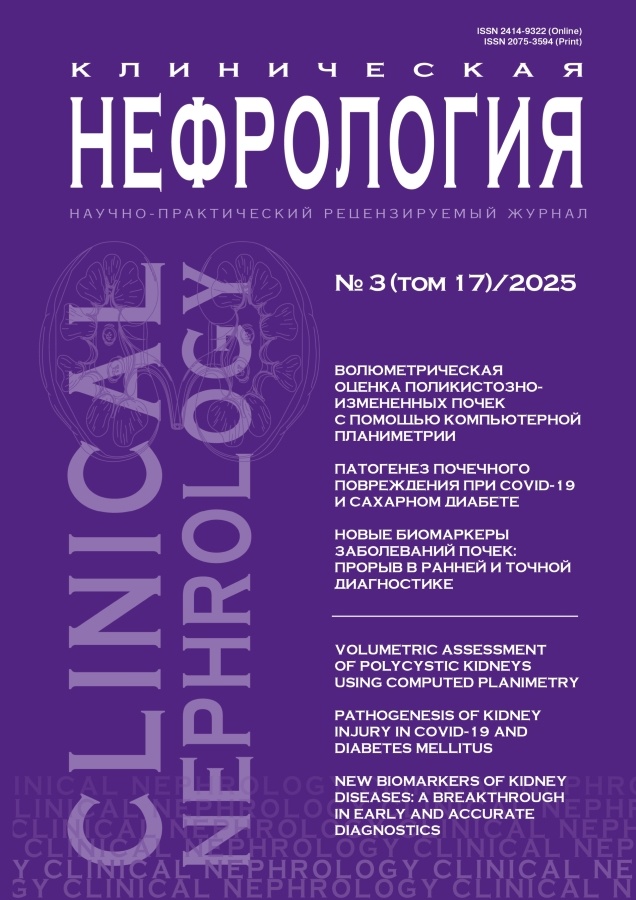
-
Clinical nephrology
ISSN (print): 2075-3594, ISSN (online): 2414-9322
Founder: Limited liability company "Bionika Media Innovation"
Editor-in-Chief: Kotenko O.N.
Frequency / Assess: 4 issues per year / Subscription
Included in: White List (4th level), Higher Attestation Commission List, RISC
-
Journal of Clinical Practice
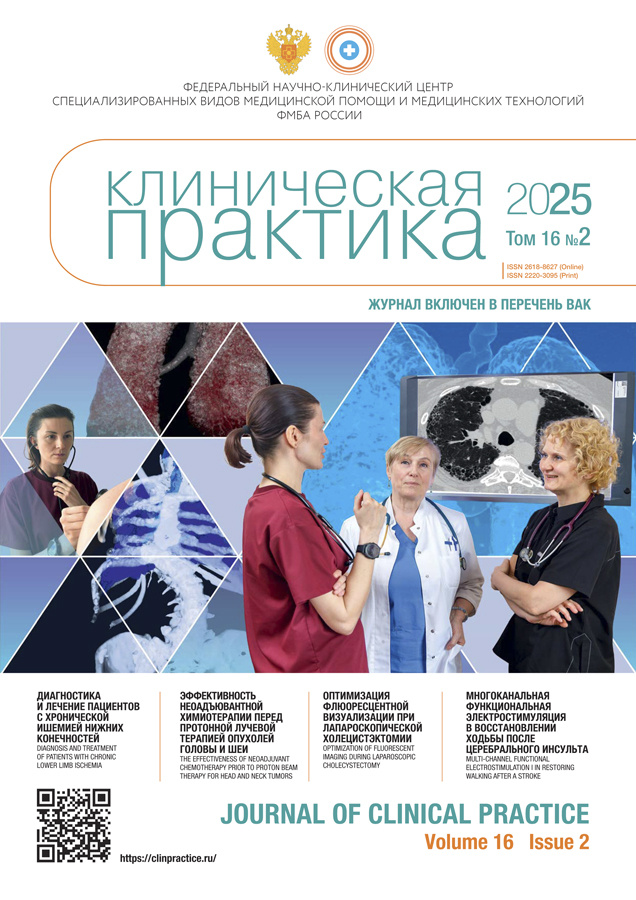
-
Journal of Clinical Practice
ISSN (print): 2220-3095, ISSN (online): 2618-8627
Founder: Federal Scientific and Clinical Center for Specialized Types of Medical Care and Medical Technologies FMBA
Editor-in-Chief: Troitsky Alexander Vitalievich, Doctor of Medical Sciences, Professor
Frequency / Access: 4 issues per year / Open
Included in: White List (2nd level), Higher Attestation Commission List, RISC
-
A.I. Burnasyan Federal Medical Biophysical Center clinical bulletin

-
A.I. Burnasyan Federal Medical Biophysical Center clinical bulletin
ISSN (print): 2782-6430, ISSN (online): 3033-5639
Founder: State Research Center - Burnasyan Federal Medical Biophysical Center of Federal Medical Biological Agency
Editor-in-Chief: Udalov Yuri D., Dr. Sci. Med., Director
Frequency / Assess: 4 issues per year / Open
Included in: Higher Attestation Commission list, RISC
-
Clinical nutrition and metabolism
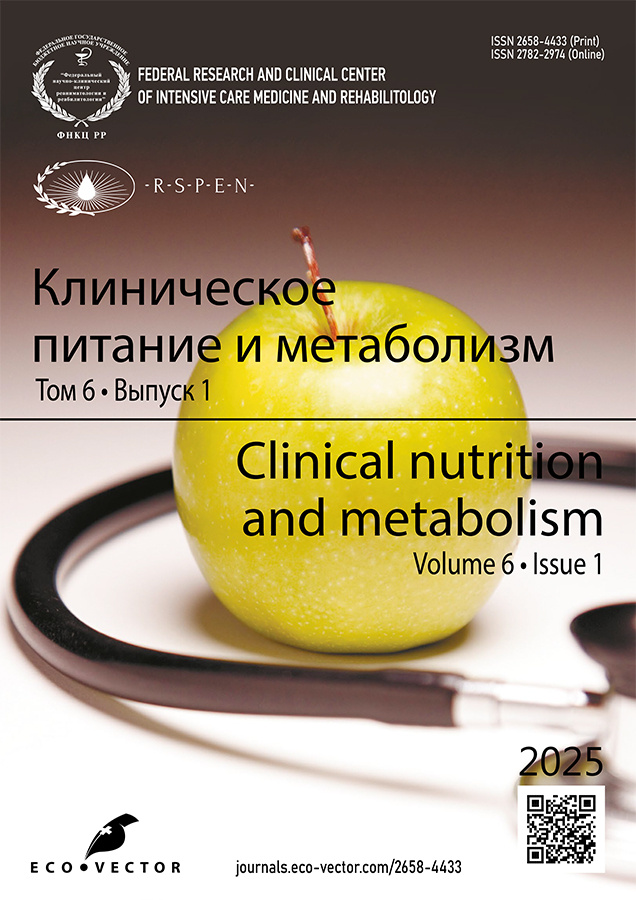
-
Clinical nutrition and metabolism
ISSN (print): 2658-4433, ISSN (online): 2782-2974
Founders: Federal Research and Clinical Center for Resuscitation and Rehabilitatology, Eco-Vector
Editor-in-Chief: Sviridov S.V., Doctor of Sc., Professor
Frequency / Access: 4 issues per year / Open
Included in: RISC
-
Colloid Journal
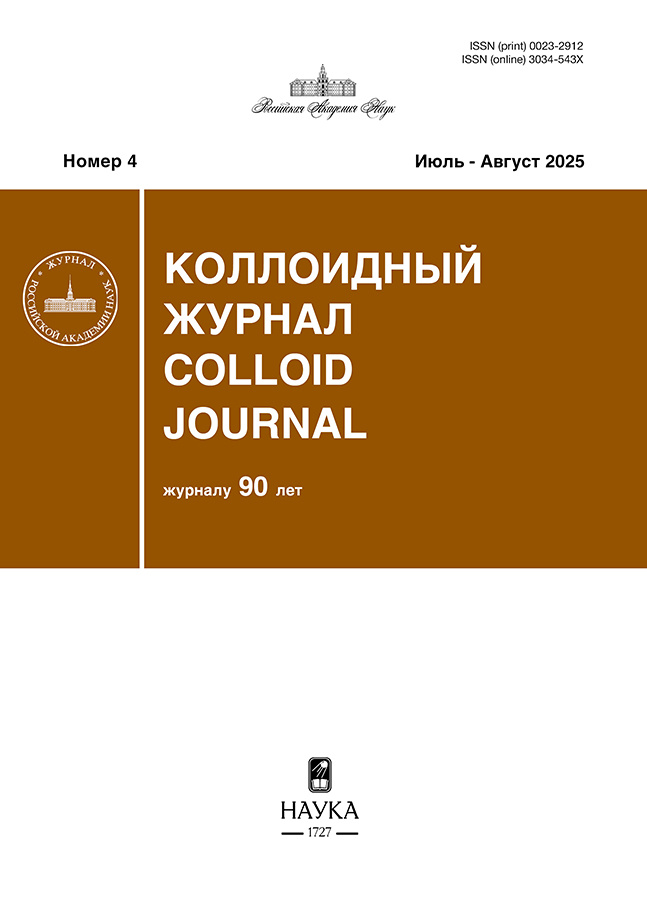
-
Colloid Journal
ISSN (print): 0023-2912
Founders: Russian Academy of Sciences, Institute of Physical Chemistry of RAS
Editor-in-Chief: Boinovich Ludmila Borisovna, academician RAS, Doctor of Sc.
Frequency / Access: 6 issues per year / Subscription
Included in: White list (2nd level), Higher Attestation Commission list, RISC
-
Kommunikacii. Media. Dizajn

-
Kommunikacii. Media. Dizajn
ISSN (online): 2542-1395
Founder: National Research University Higher School of Economics
Editor-in-Chief: Bystritskiy Andrey, Doctor of Sc., Full Professor
Frequency / Assess: 4 issues per year / Open
Included in: RISC
-
Kompetentnost’

-
Kompetentnost’
ISSN (print): 1993-8780
Founder: FSAEI FVT Academy for Standardization, Metrology and Certification (ASMS)
Editor-in-Chief: Zazhigalkin A.V., Doctor in in economic scince
Frequency / Access: 10 issues per year / Hybride
Included in: Higher Attestation Commission List, RISC
-
Computer optics

-
Computer optics
ISSN (print): 0134-2452, ISSN (online): 2412-6179
Founders: Samara National Research University; Shubnikov Crystallography Institute of the Russian Academy of Sciences
Editor-in-Chief: Soifer V.A., Academician of RAS, Doctor of Sc.
Frequency / Assess: 6 issues per year / Open
Included in: White List (1st level), Higher Attestation Commission List, RISC, Scopus, Web of Science Core Collection
-
Computer research and modeling

-
Computer research and modeling
ISSN (print): 2076-7633, ISSN (online): 2077-6853
Founders: Innopolis University, Izhevsk Institute of Computer Science
Editor-in-Chief: Galina Yu. Riznichenko , Doctor in Physics and Mathematics, professor; Alexey I. Lobanov, Doctor in Physics and Mathematics, professor
Frequency / Access: 6 issues per year / Open
Included in: Higher Attestation Commission List, RISC, Scopus
-
Conflictology / nota bene

-
Conflictology / nota bene
ISSN (online): 2454-0617
Founder: NB-Media Ltd.
Editor-in-Chief: Bolshakov Andrey Georgievich, Doctor of Sc., Full Professor
Frequency / Assess: 4 issues per year / Open
Included in: Higher Attestation Commission list, RISC
-
Russian Journal of Coordination Chemistry
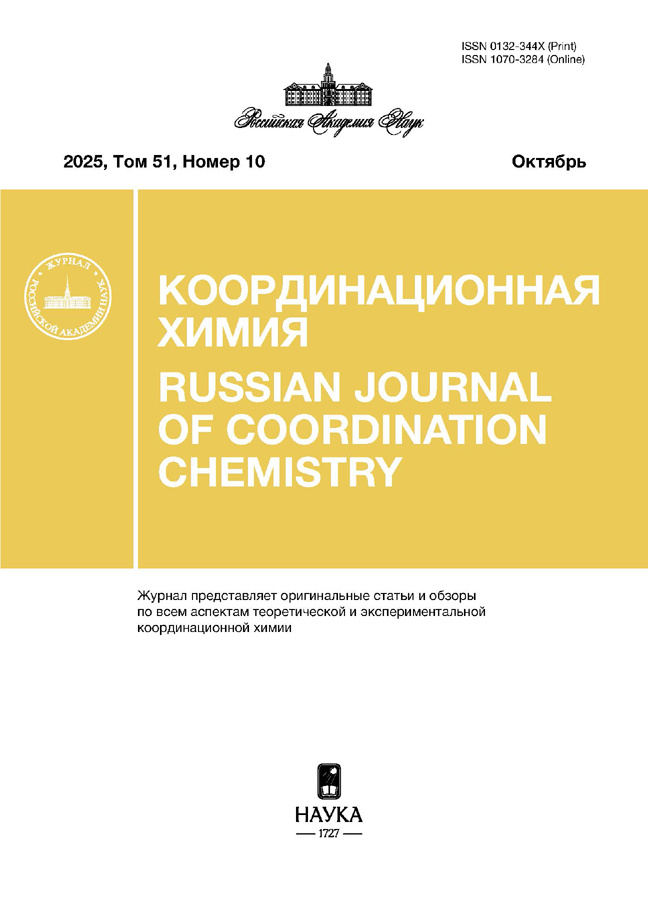
-
Russian Journal of Coordination Chemistry
ISSN (print): 0132-344X
Founders: Kurnakov Institute of General and Inorganic Chemistry of RAS, Russian Academy of Sciences
Editor-in-Chief: Eremenko Igor L., academician RAS, Doctor of Sc., Full Professor
Frequency / Access: 12 issues per year / Subscription
Included in: White list (2nd level), Higher Attestation Commission list, RISC
-
Copyright (Bulletin of the Academy of Intellectual Property)

-
Copyright (Bulletin of the Academy of Intellectual Property)
ISSN (online): 2307-2741
Founder: Federal state budgetary educational institution of higher education Russian state Academy of intellectual property
Editor-in-Chief: Arakelova Alexandra O., Doctor of Sc., Associate Professor
Frequency / Assess: 4 issues per year / Subscription
Included in: Higher Attestation Commission List, RISC
-
Journal of Corporate Finance Research
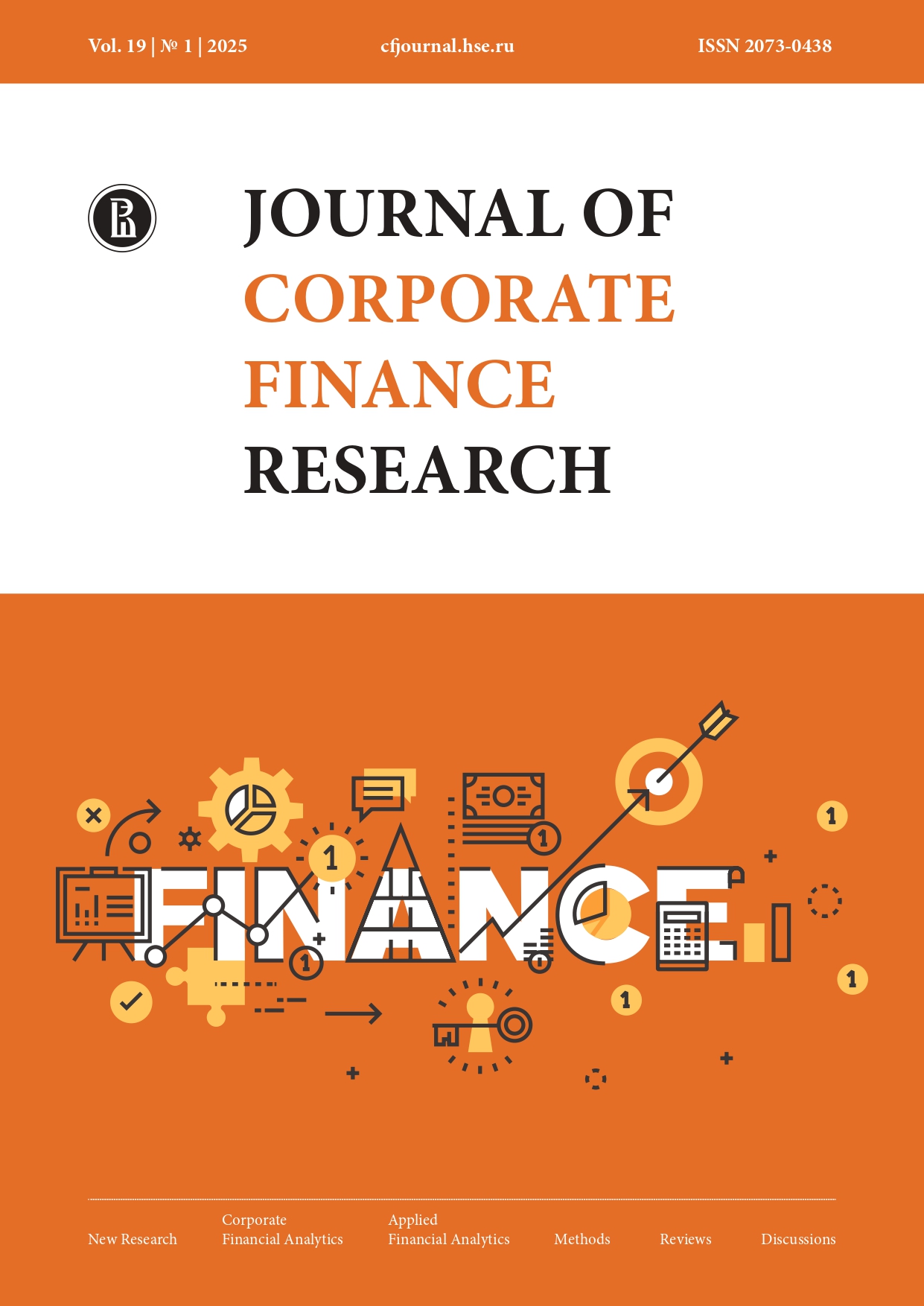
-
Journal of Corporate Finance Research
ISSN (online): 2073-0438
Founder: National Research University Higher School of Economics
Editor-in-Chief: Irina Ivashkovskaya, Doctor of Sc., Full Professor
Frequency / Assess: 4 issues per year / Open
Included in: White list (4th level), Higher Attestation Commission List, RISC
-
Cosmic Research
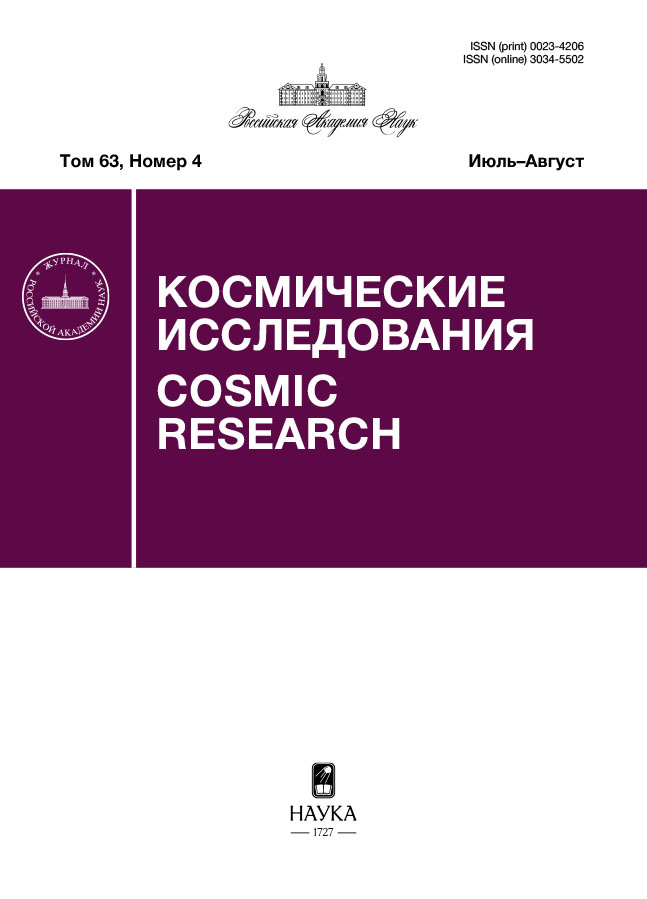
-
Cosmic Research
ISSN (print): 0023-4206
Founder: Russian Academy of Sciences
Editor-in-Chief: Anatoly A. Petrukovich, corresponding member RAS, Doctor of Sc.
Frequency / Access: 6 issues per year / Subscription
Included in: White list (2nd level), Higher Attestation Commission list, RISC
-
CREATIVE ECONOMY

-
CREATIVE ECONOMY
ISSN (print): 1994-6929, ISSN (online): 2409-4684
Founder: Abramov E.G.
Editor-in-Chief: Arenkov Igor, Doctor Sciences, Professor
Frequency / Assess: 12 issues per year / Hybrid
Included in: White List (3rd level), Higher Attestation Commission list, RISC
-
Crystallography
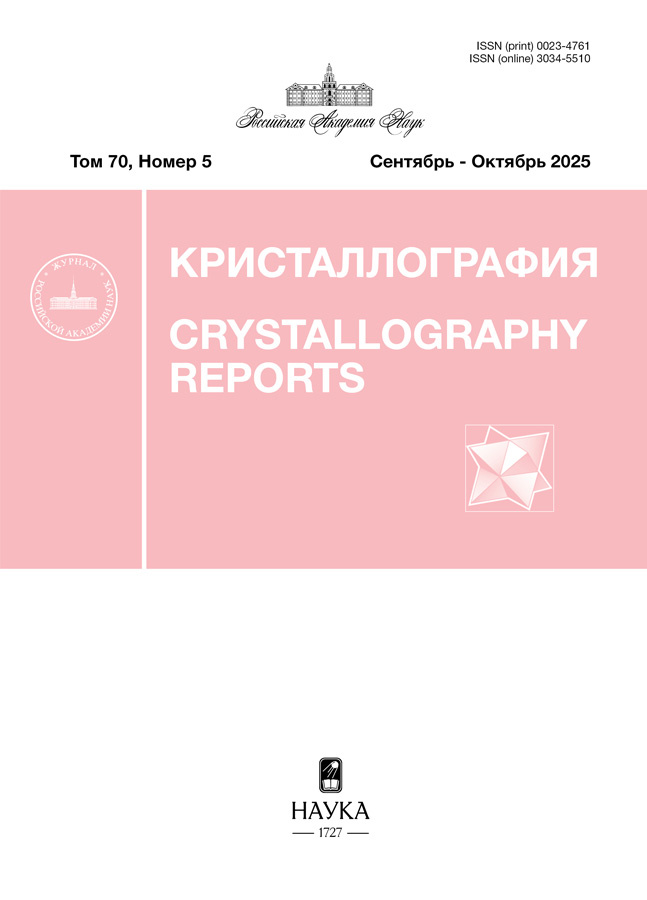
-
Crystallography
ISSN (print): 0023-4761
Founders: Russian Academy of Sciences, Shubnikov Institute of Crystallography of RAS
Editor-in-Chief: Michail V. Kovalchuk, corresponding member RAS, Doctor of Sc., Full Professor
Frequency / Access: 6 issues per year / Subscription
Included in: White list (2nd level), Higher Attestation Commission list, RISC
-
Kritika i semiotika

-
Kritika i semiotika
ISSN (print): 2307-1737, ISSN(online): 2307-1753
Founder: Institute of Philology of the Siberian Branch of RAS
Editor-in-Chief: Igor V. Silantyev, Corresponding Member of RAS, Doctor of Sc., Professor
Frequency / Access: 2 issues per year / Open
Included in: White List (2nd level), Higher Attestation Commission List, RISC, Scopus
-
Krolikovodstvo i Zverovodstvo

-
Krolikovodstvo i Zverovodstvo
ISSN (print): 0023-4885, ISSN (online): 3034-6509
Founder: V.Afanasiev Institute of Fur Farming and Rabbit Breeding
Editor-in-Chief: Kosovsky Gleb Yuryevich, Corresponding Member of the RAS, Doctor of Sc., Full Professor
Frequency / Assess: 6 issues per year / Hybrid
Included in: Higher Attestation Commission list, RISC
-
Crimea journal of experimental and clinical medicine

-
Crimea journal of experimental and clinical medicine
ISSN (print): 2224-6444, ISSN (online): 2224-6452
Founder: V.I. Vernadsky Crimean Federal University
Editor-in-Chief: Kubyshkin Anatoly Vladimirovich
Frequency / Assess: 4 issues per year / Open
Included in: Higher Attestation Commission list, RISC
-
Crimean historical review
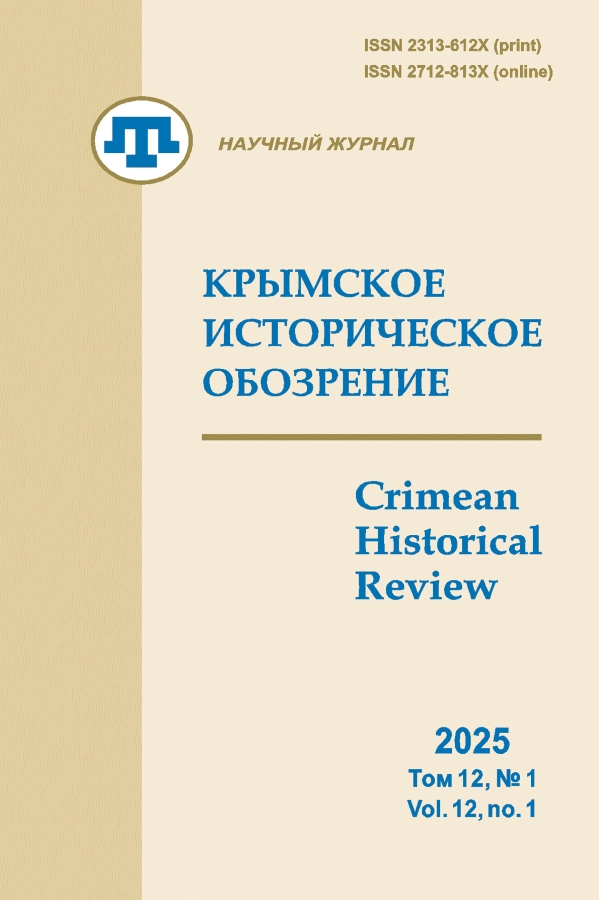
-
Crimean historical review
ISSN (print): 2313-612X, ISSN (online): 2712-813X
Founder: State institution "Tatarstan Academy of Sciences"
Editor-in-Chief: E. Kh. Seydametov, Cand. Sci. (History), Head of the Crimean Scientific Center, Marjani Institute of History of the Tatarstan Academy of Sciences (Kazan, Russian Federation)
Frequency / Access: 2 issues per year / Open
Included in: RISC
-
Kryashen historical review

-
Kryashen historical review
ISSN (print): 2499-9555
Founder: State institution "Tatarstan Academy of Sciences"
Editor-in-Chief: R.R. Ishakov, Dr. Sci. (History)
Frequency / Access: 2 issues per year / Open
Included in: RISC
-
Culture and Art

-
Culture and Art
ISSN (online): 2454-0625
Founder: NB-Media Ltd.
Editor-in-Chief: Rozin Vadim Markovich, Doctor of Sc., Full Professor
Frequency / Assess: 12 issues per year / Open
Included in: Higher Attestation Commission list, RISC
-
Культура и образование: научно-информационный журнал вузов культуры и искусств

-
Культура и образование: научно-информационный журнал вузов культуры и искусств
ISSN (print): 2310-1679
Founder: Moscow state Institute of culture
Editor-in-Chief: Kudrina E.L., D-r of Pedagogical Sci.
Frequency / Access: 4 issues per year / Open
Included in: Higher Attestation Commission List, RISC
-
Latinskaya Amerika
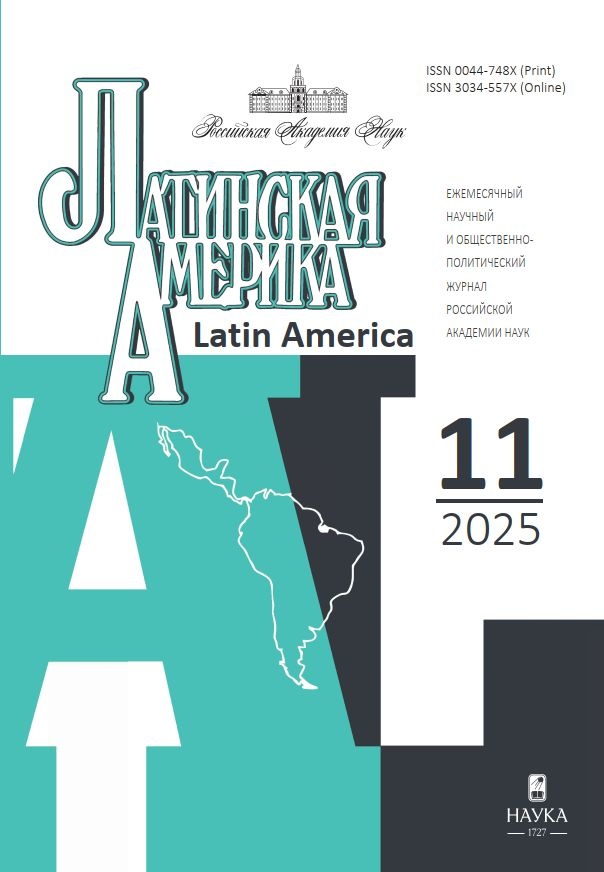
-
Latinskaya Amerika
ISSN (print): 0044-748X
Founders: Russian Academy of Sciences, Institute of Latin American Studies of the Russian Academy of Sciences
Editor-in-Chief: Viktor Heifets, Doctor of Sc., Full Professor
Frequency / Access: 12 issues per year / Subscription
Included in: White list (3rd level), Higher Attestation Commission list, RISC
-
Forestry engineering journal

-
Forestry engineering journal
ISSN (print): 2222-7962
Founder: Voronezh State University of Forestry and Tecnologies named after G.F. Morozov
Editor-in-Chief: Drapalyuk Mikhail V., Doctor of Sc., Professor
Frequency / Assess: 4 issues per year / Open
Included in: Higher Attestation Commission list, RISC
-
Ice and Snow
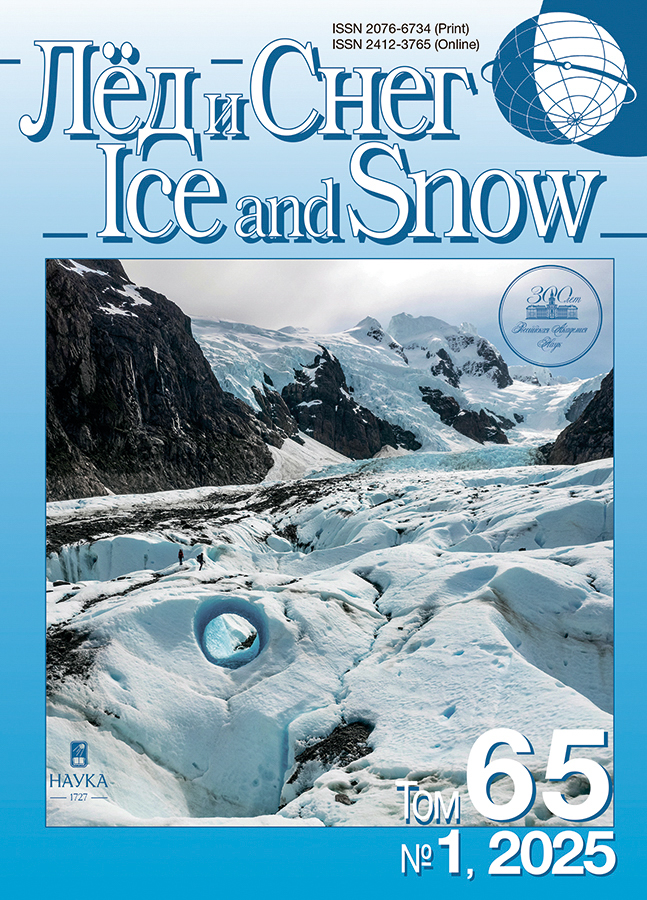
-
Ice and Snow
ISSN (print): 2076-6734, ISSN (online): 2412-3765
Founders: Institute of Geography of RAS, Russian Geographical Society, Russian Academy of Sciences
Editor-in-Chief: Vladimir M. Kotlyakov, corresponding member RAS, Doctor of Sc., Full Professor
Frequency / Access: 4 issues per year / Subscription
Included in: White list (2nd level), Higher Attestation Commission list, RISC, Scopus, Web of Science Core Collection
-
Forest Science
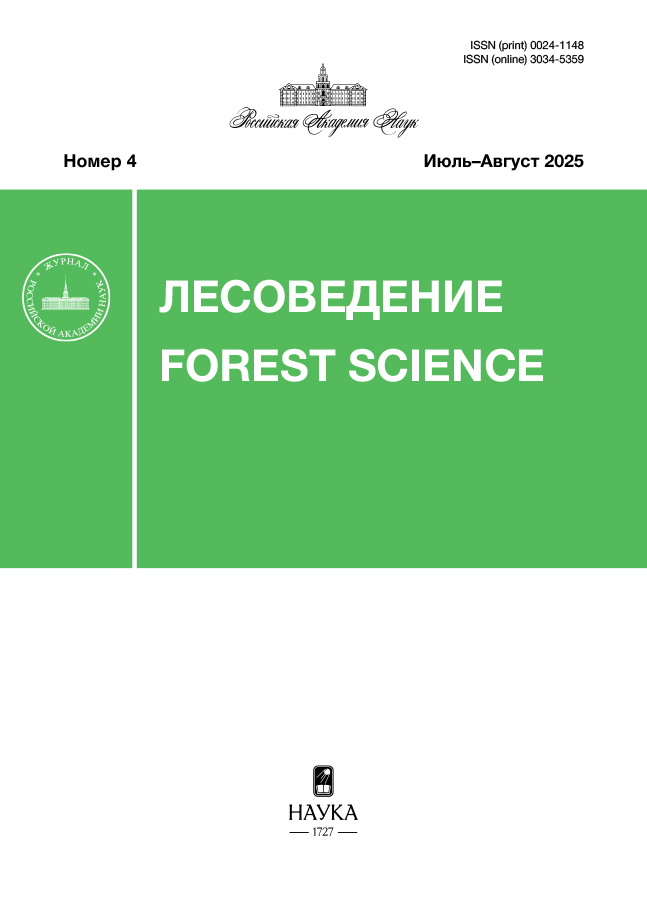
-
Forest Science
ISSN (print): 0024-1148
Founders: Russian Academy of Sciences, Institute of Forest Science of RAS, Center of Forest Ecology and Productivity
Editor-in-Chief: Natalia V. Lukina, corresponding member RAS, Doctor of Sc., Full Professor
Frequency / Access: 6 issues per year / Subscription
Included in: White list (3rd level), Higher Attestation Commission list, RISC, Scopus
-
Leadership and Management
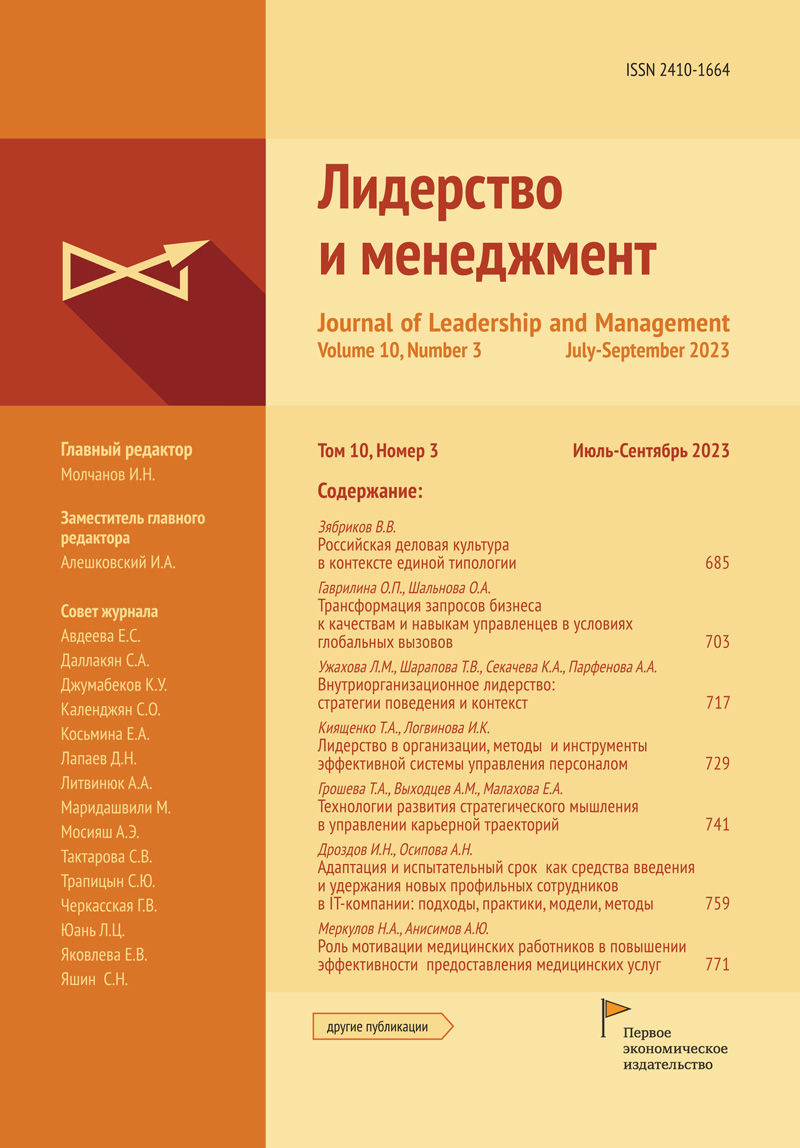
-
Leadership and Management
ISSN (print): 2410-1664
Founder: Creative Economy Publishers
Editor-in-Chief: Molchanov Igor, Doctor of Sc., Full Professor
Frequency / Assess: 4 issues per year / Subscription
Included in: Higher Attestation Commission list, RISC
-
Litologiâ i poleznye iskopaemye

-
Litologiâ i poleznye iskopaemye
ISSN (print): 0024-497X
Founders: Geological Institute RAS, Russian Academy of Sciences
Editor-in-Chief: Yurii O. Gavrilov, Doctor of Sc.
Frequency / Access: 6 issues per year / Subscription
Included in: White list (2nd level), Higher Attestation Commission list, RISC
-
Lithosphere (Russia)
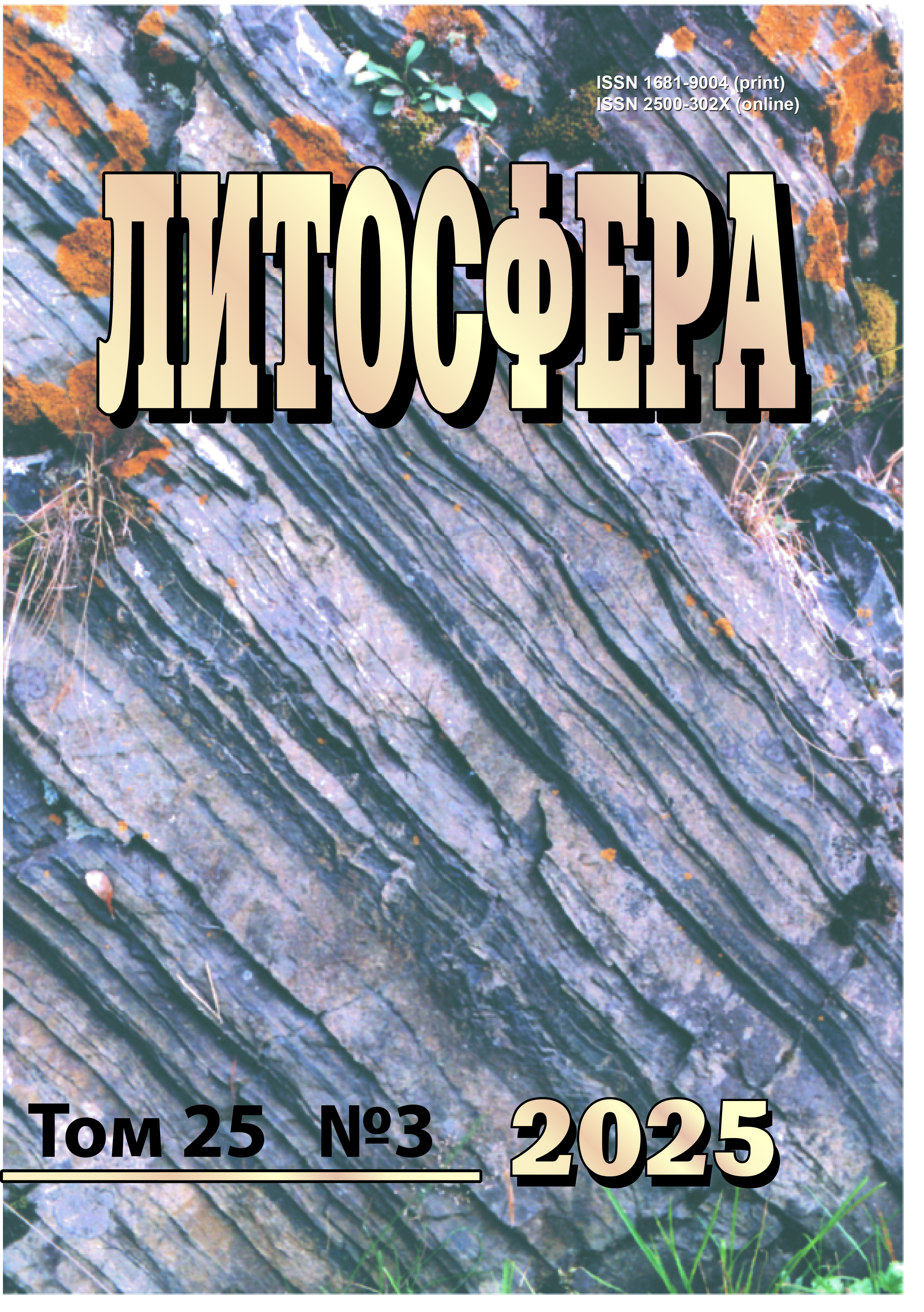
-
Lithosphere (Russia)
ISSN (print): 1681-9004, ISSN (online): 2500-302X
Founder: The Zavaritsky Institute of Geology and Geochemistry of the Ural Branch (UB) of RAS
Editor-in-Chief: Sergej Votyakov, Academician of RAS, Doctor of Sc.
Frequency / Access: 6 issues per year / Open
Included in: White List (3rd level), Higher Attestation Commission List, RISC, Scopus
-
Lobbying in the Legislative Process
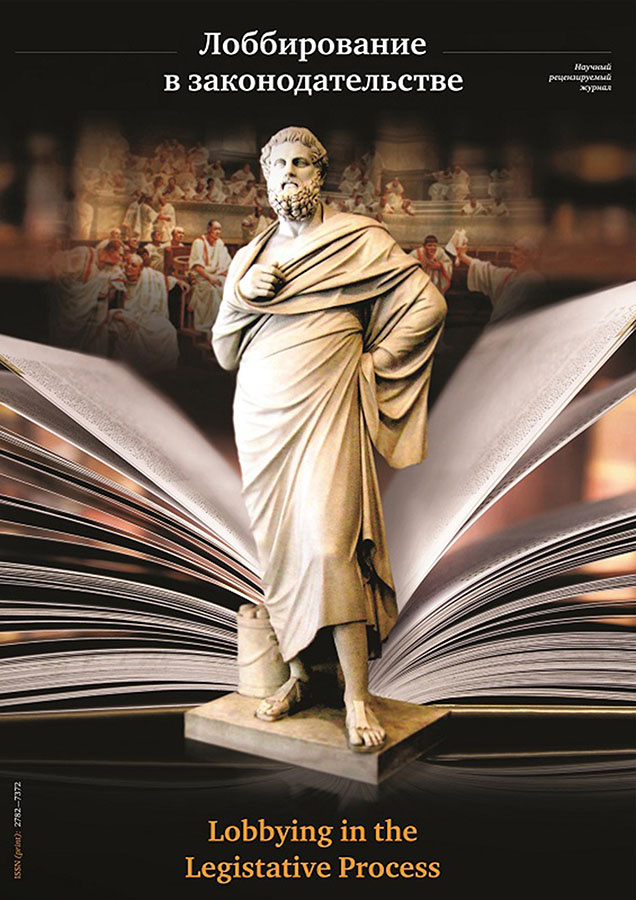
-
Lobbying in the Legislative Process
ISSN (print): 2782-7372, ISSN (online): 2949-2572
Founder: Publishing house "Yur-VAK"
Editor-in-Chief: Ivanov Nikita Georgievich, Doctor of Law. sciences, professor
Frequency / Access: 4 issues per year / Subscription
Included in: RISC
-
Logos. Philosophical and literary Journal

-
Logos. Philosophical and literary Journal
ISSN (print): 0869-5377, ISSN (online): 2499-9628
Founder: National Research University "Higher School of Economics"
Editor-in-Chief: Anashvili V.V., Associate Professor
Frequency / Access: 6 issues per year / Hybrid
Included in: White List (2nd level), RISC, Scopus, Web of Science
-
Manuscript

-
Manuscript
ISSN (print): 2618-9690, ISSN (online): 2949-3242
Founder: “Gramota” Publishers
Editor-in-Chief: A. I. Demchenko, Dr in Art Studies, Professor
Frequency / Assess: 4 issues per year / Open
Included in: Higher Attestation Commission list, RISC
-
MARKETING AND MARKET RESEARCHMMR

-
MARKETING AND MARKET RESEARCHMMR
ISSN (print): 2074-5095, ISSN (online): 2618-8872
Founder: Limited Liability Company "First Economic Publishing House"
Editor-in-Chief: Skorobogatyh Irina, Doc. of Economic Sciences, Professor
Frequency / Assess: 4 issues per year / Hybrid
Included in: White List (3rd level), Higher Attestation Commission list, RISC
-
Oil Crops

-
Oil Crops
ISSN (print): 2412-608X, ISSN (online): 2412-6098
Founder: Federal Research Center «All-Russia Research Institute of Oil Crops by V.S. Pustovoit»
Editor-in-Chief: Lukomets Vyacheslav Mikhailovich, academician of RAS, Doctor of Sc., Professor
Frequency / Assess: 4 issues per year / Open
Included in: Higher Attestation Commission list, RISC
-
Matematicheskii Sbornik
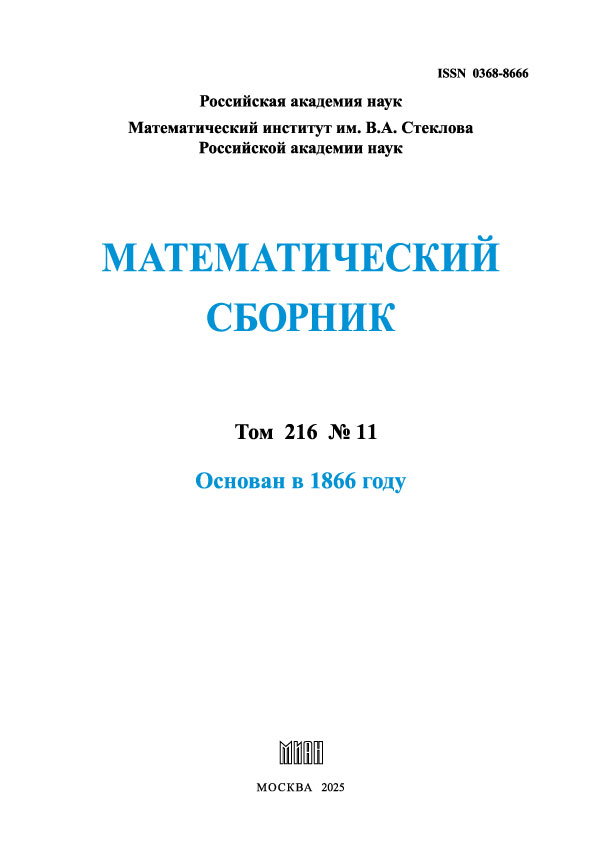
-
Matematicheskii Sbornik
ISSN (print): 0368-8666, ISSN (online): 2305-2783
Founders: Steklov Mathematical Institute of RAS, Russian Academy of Sciences
Editor-in-Chief: Boris S. Kashin, academician of RAS, Doctor of Sc., Professor
Frequency / Access: 12 issues per year / Subscription
Included in: White list (1st level), RISC, MathSciNet, zbMATH
-
Medical-biological and social-psychological issues of safety in emergency situations

-
Medical-biological and social-psychological issues of safety in emergency situations
ISSN (print): 1995-4441, ISSN (online): 2541-7487
Founder: FSBI All-Russian Center for Emergency and Radiation Medicine named after A.M. Nikiforova EMERCOM of Russia
Editor-in-Chief: Aleksanin Sergey Sergeevich - Dr. med. Sciences prof., corresponding member. RAS
Frequency / Access: 4 issues per year / Open
Included in: White List (4th level), Higher Attestation Commission List, RISC, Scopus
-
Medical and Social Expert Evaluation and Rehabilitation
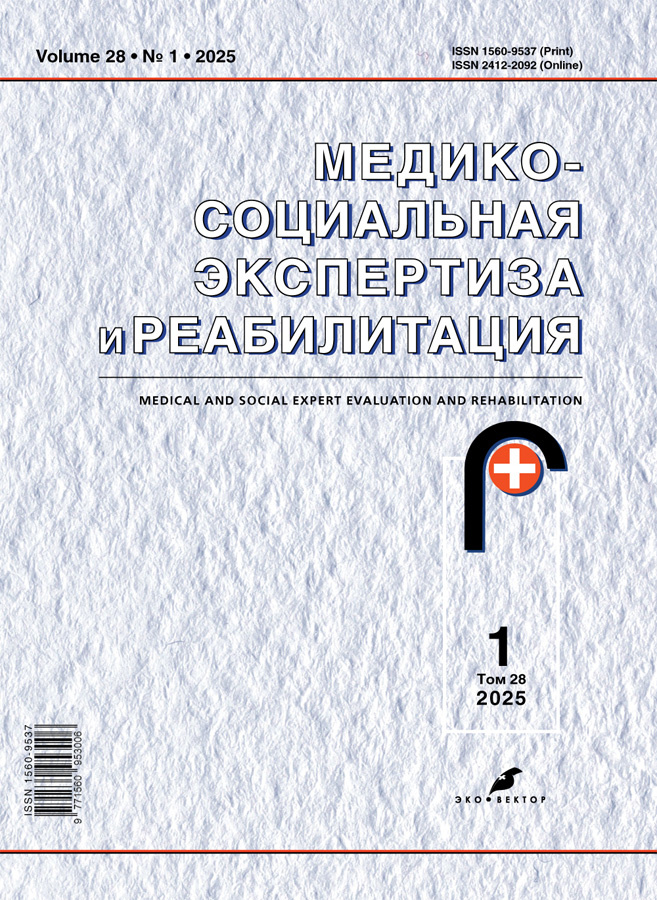
-
Medical and Social Expert Evaluation and Rehabilitation
ISSN (print): 1560-9537, ISSN (online): 2412-2092
Founders: Izdatel'stvo Meditsina / Meditsina Publisher, Eco-Vector
Editor-in-chief: Sergey N. Puzin, academician RAS, Doctor of Sc., Full Professor
Frequency / Access: 4 issues per year / Subscription
Included in: White List (4th level), Higher Attestation Commission List, RISC
-
Medicine and Biotechnology
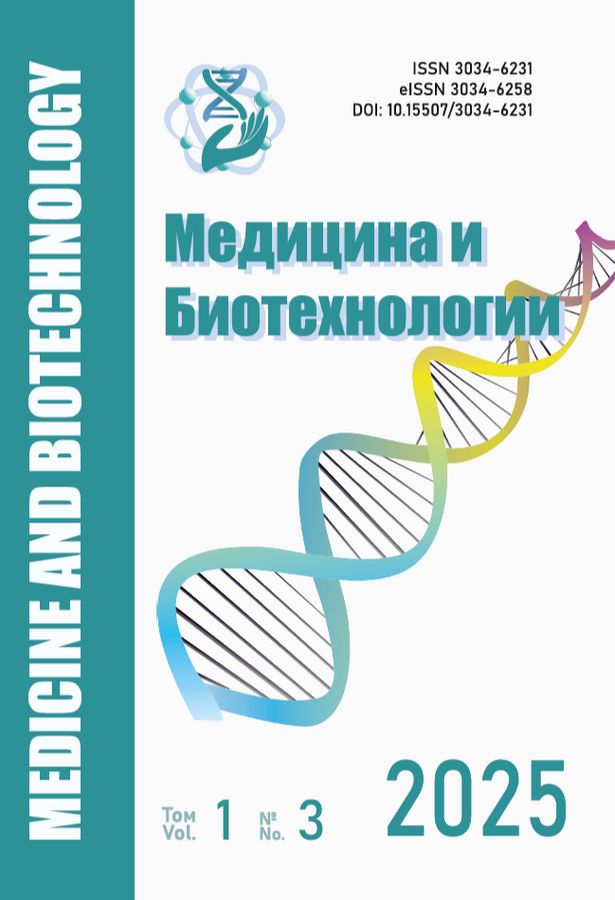
-
Medicine and Biotechnology
ISSN (print): 0000-0000, ISSN (online): 0000-0000
Founder and publisher: National Research Ogarev Mordovia State University
Editor-in-Chief:
Frequency / Access: 4 issues per year / Open
Included in: RISC
-
Disaster Medicine

-
Disaster Medicine
ISSN (print): 2070-1004, ISSN (online): 2686-7966
Founder: State Research Center - Burnasyan Federal Medical Biophysical Center of Federal Medical Biological Agency
Editor-in-Chief: Sergey F. Goncharov, Academician of the RAS, Dr. Sc. (Med.), Proffesor
Frequency / Assess: 4 issues per year / Hybrid
Included in: White List (4th level), Higher Attestation Commission list, RISC, Scopus
-
Мedical Radiology and Radiation Safety

-
Мedical Radiology and Radiation Safety
ISSN (print): 1024-6177, ISSN (online): 2618-9615
Founder: Federal Biomedical Agency
Editor-in-Chief: Yuri D. Udalov, Dr. Sc. (Med.)
Frequency / Assess: 6 issues per year / Hybrid
Included in: White List (3rd level), Higher Attestation Commission list, RISC, Scopus
-
Meditsinskaya sestra
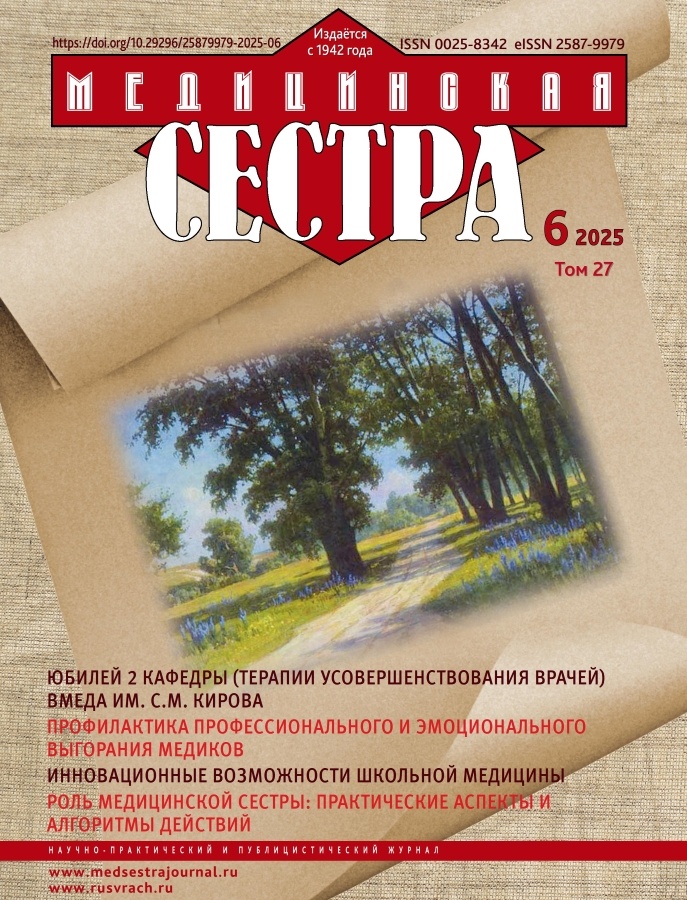
-
Meditsinskaya sestra
ISSN (print): 0025-8342, ISSN (online): 2587-9979
Founders: Ministry of Health of the Russian Federation, The First Sechenov Moscow State Medical University, Limited Liability Company «Russkiy Vrach» Publishing House
Editor-in-Chief: Grigorev K.I., Doctor of Sc., Full Professor
Frequency / Access: 8 issues per year / Open
Included in: RISC
-
Medical academic journal
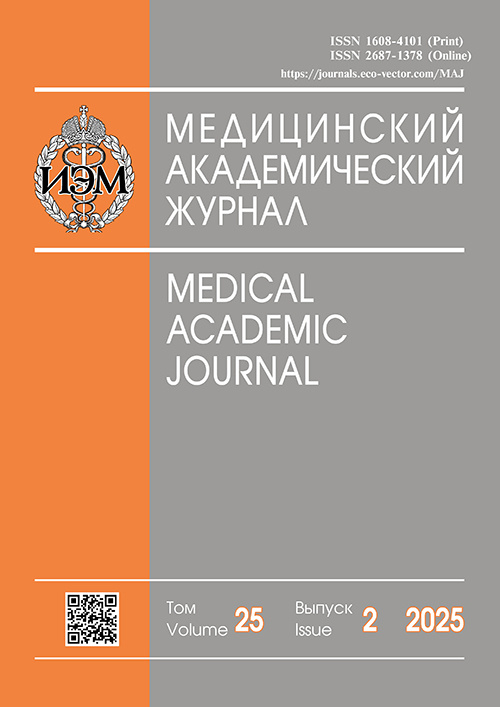
-
Medical academic journal
ISSN (print): 1608-4101, ISSN (online): 2687-1378
Founders: Institute of Experimental Medicine, Eco-Vector
Editor-in-Cheif: G.A. Safronov, academician of RAS, Doctor of Sc., Professor
Frequency / Access: 4 issues per year / Subscription
Included in: White List (3rd level), Higher Attestation Commission list, RISC
-
Medical Opponent

-
Medical Opponent
ISSN (print): 2619-0001, ISSN (online): 2713-0444
Founder: LLC "Opponent"
Editor-in-Chief: Kamzolova Sofia Vladimirovna, Doctor of Sc., Full Professor
Frequency / Assess: 4 issues per year / Open
Included in: Higher Attestation Commission list, RISC
-
International law

-
International law
ISSN (online): 2644-5514
Founder: NB-Media Ltd.
Editor-in-Chief: Shinkaretskaya Galina Georgievna, Doctor of Sc., Full Professor
Frequency / Assess: 4 issues per year / Open
Included in: Higher Attestation Commission list, RISC
-
International law and international organizations

-
International law and international organizations
ISSN (online): 2454-0633
Founder: NB-Media Ltd.
Editor-in-Chief: Shinkaretskaya Galina Georgievna, Doctor of Sc., Full Professor
Frequency / Assess: 4 issues per year / Open
Included in: Higher Attestation Commission list, RISC
-
International relations

-
International relations
ISSN (online): 2454-0641
Founder: NB-Media Ltd.
Editor-in-Chief: Bykov Ilya A., Doctor of Sc., Full Professor
Frequency / Assess: 4 issues per year / Open
Included in: Higher Attestation Commission list, RISC
-
International journal of humanities and natural sciences

-
International journal of humanities and natural sciences
ISSN (print): 2500-1000, ISSN (online): 2500-1086
Founder: Limited Liability Company Capital
Editor-in-Chief: Matveev D.M., PhD, Associate Professor
Frequency / Assess: 12 issues per year / Open
Included in: RISC
-
International scientific bulletin

-
International scientific bulletin
ISSN (online): 2782-3849
Founder: Общество с ограниченной ответственностью "ЮРКОМПАНИ"
Editor-in-Chief: Grudtsyna Lyudmila Yuryevna, Doctor of Sc., Full Professor
Frequency / Assess: 12 issues per year / Open
Included in: Higher Attestation Commission list, RISC
-
Membranes and Membrane Technologies
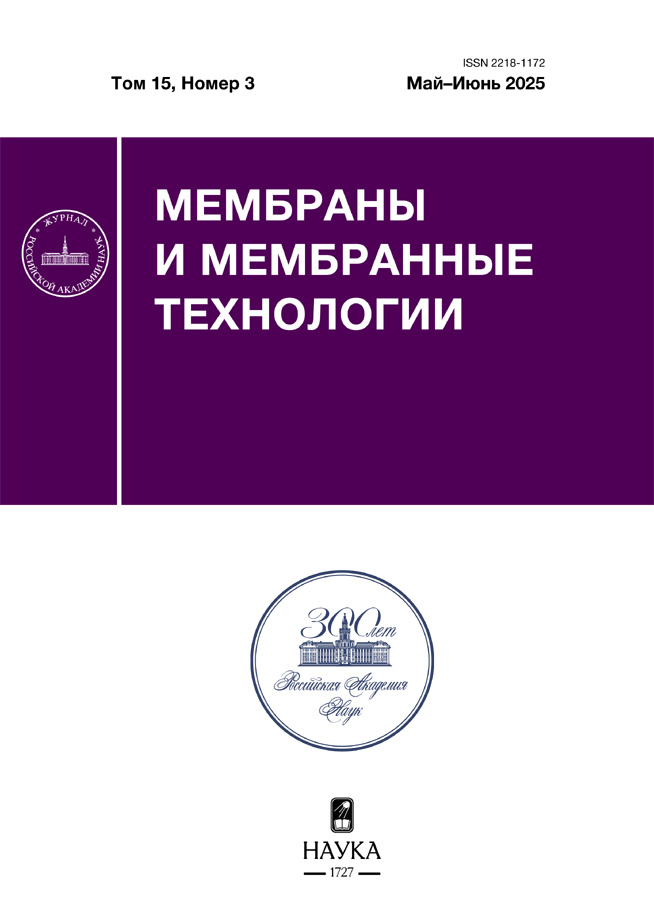
-
Membranes and Membrane Technologies
ISSN (print): 2218-1172, ISSN (online): 2218-1180
Founders: A.V.Topchiev Institute of Petrochemical Synthesis of RAS, Russian Academy of Sciences
Editor-in-Chief: A.B. Yaroslavtsev, academician RAS, Doctor of Sc., Full Professor
Frequency / Access: 6 issues per year / Subscription
Included in: White list (2nd level), Higher Attestation Commission list, RISC
-
Menedžer zdravoohraneniâ

-
Menedžer zdravoohraneniâ
ISSN (print): 1811-0185, ISSN (online): 2949-3048
Founder: Tsvetkova Lilia Anatolievna
Editor-in-chief: Vladimir I.Starodubov, Academician of RAN, Doctor of Sc., Professor
Frequency / Access:12 issues per year / Open
Included in: Higher Attestation Commission List, RISC
-
Russian Metallurgy

-
Russian Metallurgy
ISSN (print): 0869-5733
Founders: Baikov Institute of Metallurgy and Materials Science of RAS, Russian Academy of Sciences
Editor-in-Chief: Konstantin V. Grigorovich, academician RAS, Doctor of Sc., Full Professor
Frequency / Access: 6 issues per year / Subscription
Included in: White list (3rd level), Higher Attestation Commission list, RISC
-
Mineralogy

-
Mineralogy
ISSN (print): 2313-545X, ISSN (online): 2782-2044
Founder: Federal State Budgetary Institution of Science South Urals Federal Research Center of Mineralogy and Geoecology of the Urals Branch of the RAS
Editor-in-Chief: Valery Maslennikov, Corresponding Member of the RAS, Professor
Frequency / Assess: 4 issues per year / Open
Included in: Higher Attestation Commission List, RISC
-
Mycology and Phytopathology

-
Mycology and Phytopathology
ISSN (print): 0026-3648
Founder: Russian Academy of Sciences
Editor-in-Chief: Yuri Novozhilov, Doctor of Biological Sciences, Professor
Frequency / Access: 6 issues per year / Subscription
Included in: White List (2nd level), Higher Attestation Commission List, RISC, Scopus
-
Microbiology
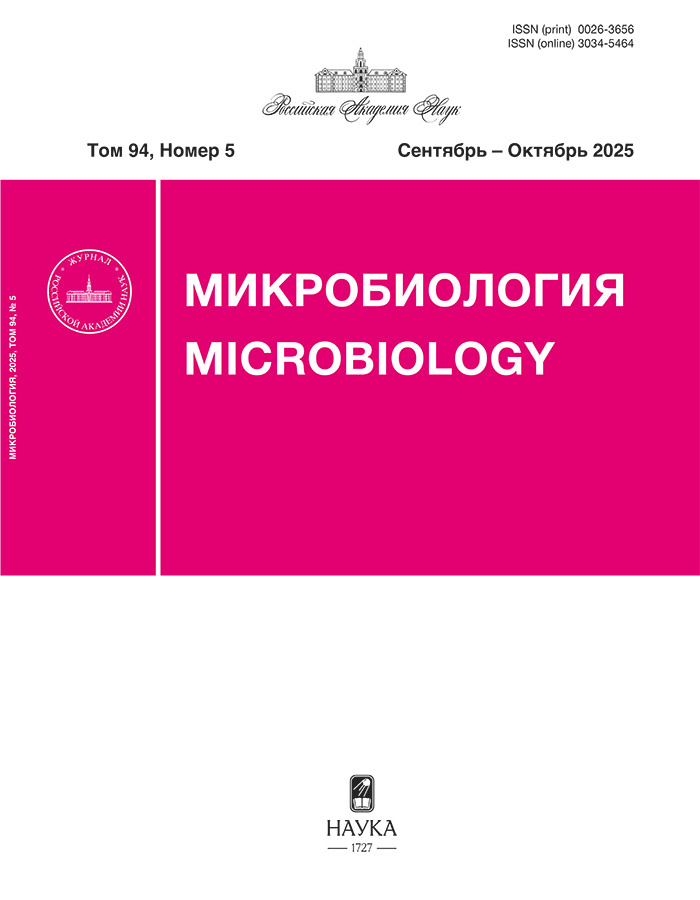
-
Microbiology
ISSN (print): 0026-3656
Founders: Russian Academy of Sciences, Institute of Microbiology of the Russian Academy of Sciences
Editor-in-Chief: Nikolay Viktorovich Pimenov, Doctor of Biological Sciences
Frequency / Access: 6 issues per year / Subscription
Included in: White List (2nd level), Higher Attestation Commission List, RISC
-
Russian Microelectronics

-
Russian Microelectronics
ISSN (print): 0544-1269
Founders: Physico-Technical Institute of the Russian Academy of Sciences, Russian Academy of Sciences
Editor-in-Chief: Gennady Yakovlevich Krasnikov, Academician of the Russian Academy of Sciences, Doctor of Technical Sciences
Frequency / Access: 6 issues per year / Subscription
Included in: White List (2nd level), Higher Attestation Commission List, RISC
-
Mir Rossii

-
Mir Rossii
ISSN (print): 1811-038X, ISSN (online): 1811-0398
Founder: National Research University Higher School of Economics
Editor-in-Chief: Barsukova S.Yu., Doctor of Sc., Full Professor
Frequency / Assess: 4 issues per year / Open
Included in: White List (1sd level), Higher Attestation Commission List, RISC
-
World of russian-speaking countries

-
World of russian-speaking countries
ISSN (print): 2658-7866
Founder: Yaroslavl state pedagogical university
Editor-in-Chief: Elena Mikhailovna Boldyreva, Doctor of Sc., Full Professor
Frequency / Assess: 4 issues per year / Open
Included in: Higher Attestation Commission list, RISC
-
World esonomy and international relations

-
World esonomy and international relations
ISSN (print): 0131-2227, ISSN (online): 2782-4330
Founders: Primakov National Research Institute of World Economy and International Relations, Russian Academy of Sciences; Russian Academy of Sciences
Editor-in-Chief: Ryabov Andrei Vilenovich, Cand.of Sc. (History), Associate Professor
Frequency / Access: 12 issues per year / Subscription
Included in: White List (2nd level), Higher Attestation Commission List, RISC, Scopus, Web of Science (ESCI)
-
Models, systems, networks in economics, technology, nature and society
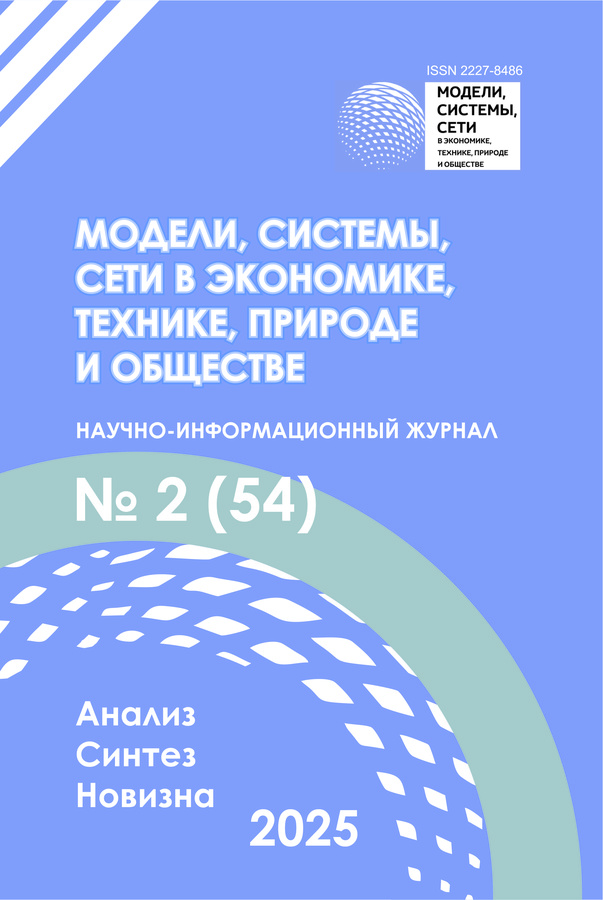
-
Models, systems, networks in economics, technology, nature and society
ISSN (print): 2227-8486
Founder: Penza State University
Editor-in-Chief: Gerashchenko Sergey Mikhailovich, Doctor of Engineering. Sciences, Docent
Frequency / Access: 4 issues per year / Open
Included in: Higher Attestation Commission List, RISC
-
Molecular Biology
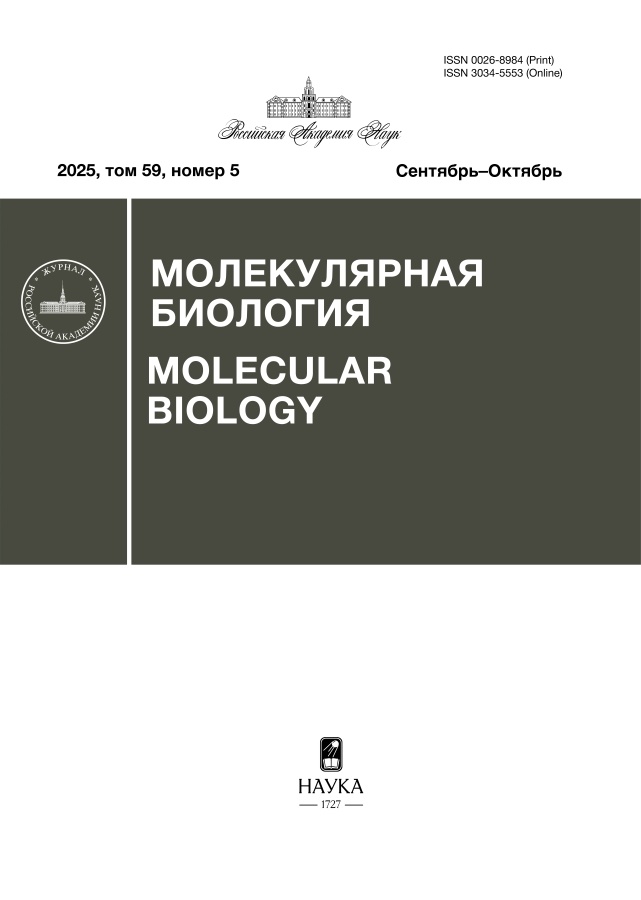
-
Molecular Biology
ISSN (print): 0026-8984
Founder: Russian Academy of Sciences
Editor-in-Chief: Alexander Alexandrovich Makarov, Academician of the Russian Academy of Sciences, Doctor of Biological Sciences
Frequency / Access: 6 issues per year / Subscription
Included in: White List (3rd level), Higher Attestation Commission List, RISC, Scopus
-
Molekulyarnaya Meditsina (Molecular medicine)
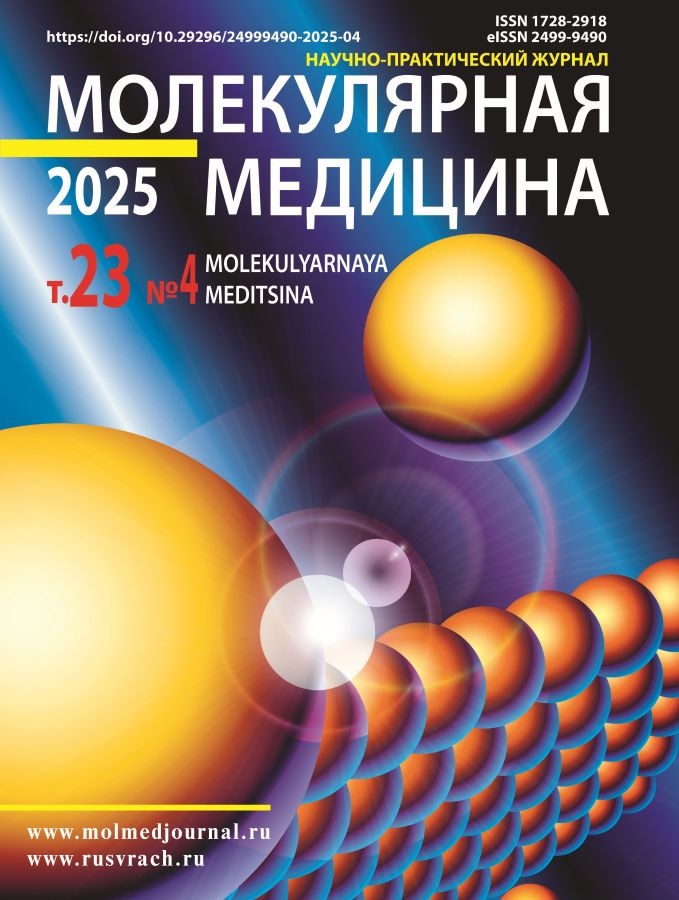
-
Molekulyarnaya Meditsina (Molecular medicine)
ISSN (print): 1728-2918, ISSN (online): 2499-9490
Founder: LLC Publishing House "Russian Doctor"
Editor-in-Chief: Mikhail Alexandrovich Paltsev, cademician of the Russian Academy of Sciences, Doctor of Medical Sciences, Professor
Frequency / Access: 6 issues per year / Suscription
Included in: White List (4th level), Higher Attestation Commission List, RISC
-
Morskoj gidrofizičeskij žurnal
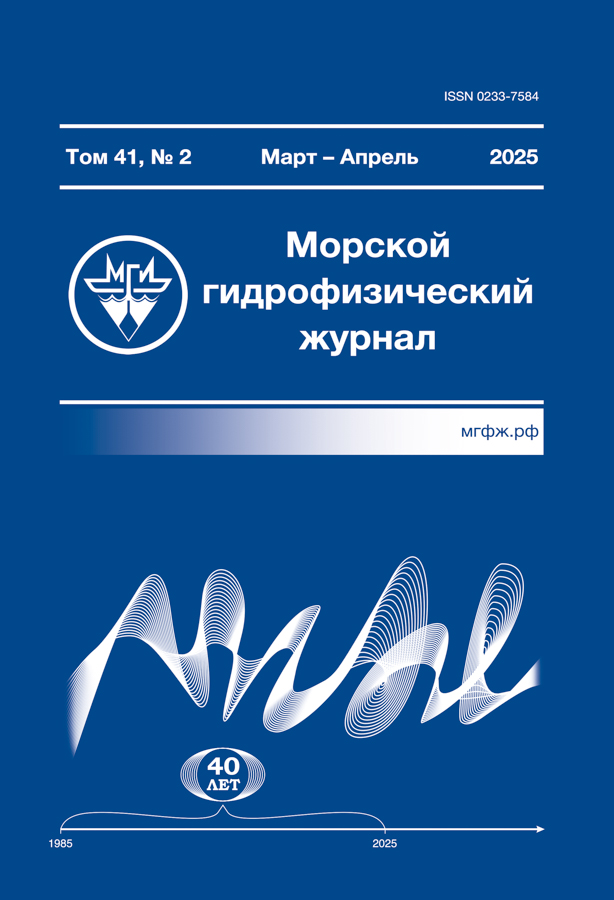
-
Morskoj gidrofizičeskij žurnal
ISSN (print): 0233-7584
Founder: Marine Hydrophysical Institute, RAS
Editor-in-Chief: Konovalov Sergey, corresponding member RAS, Doctor of Sc.
Frequency / Assess: 6 issues per year / Open
Included in: White List (2nd level), Higher Attestation Commission list, RISC
-
Morphology
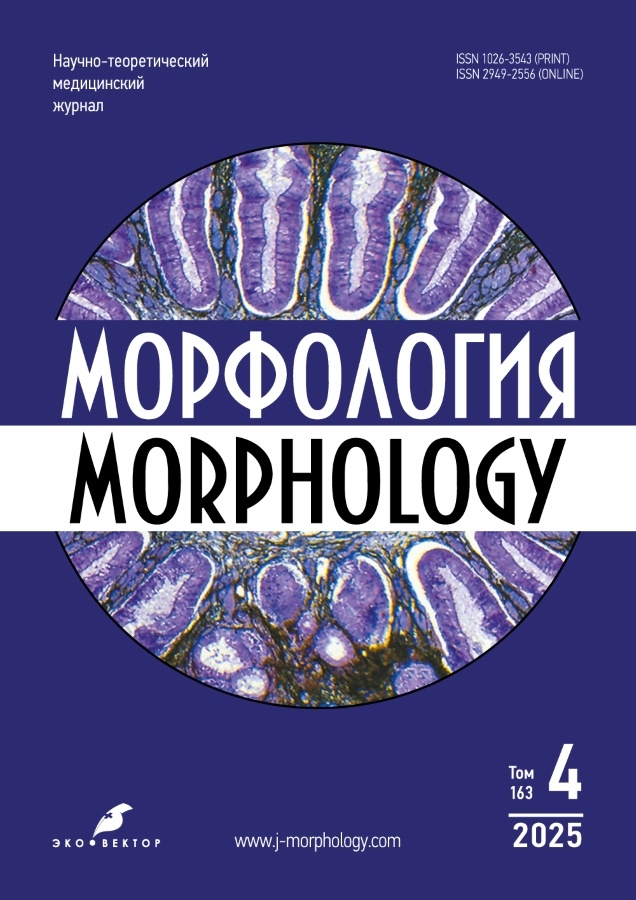
-
Morphology
ISSN (print): 1026-3543, ISSN (online): 2949-2556
Founder: Russian Academy of Sciences
Editor-in-Chief: Banin Viktor Vasilievich, Doctor of Medical Sciences, Professor
Frequency / Access: 4 issues per year / Hybrid
Included in: White List (4th level), Higher Attestation Commission List, RISC
-
Reliability and Quality of Complex Systems

-
Reliability and Quality of Complex Systems
ISSN (print): 2307-4205
Founder: Penza State University
Editor-in-Chief: Yurkov Nikolay Kondratievich, Doctor of Engineering. sciences, professor
Frequency / Access: 4 issues per year / Open
Included in: Higher Attestation Commission List, RISC
-
Nanotehnologii. Razrabotka, primenenie XXI vek

-
Nanotehnologii. Razrabotka, primenenie XXI vek
ISSN (print): 2225-0980
Founder: Limited Liability Company "Publishing House "Radiotekhnika"
Editor-in-Chief: Gudkov A.G., Doctor of Sc., Full Professor
Frequency / Access: 4 issues per year /Hybrid
Included in: Higher Attestation Commission List, RISC
-
Population
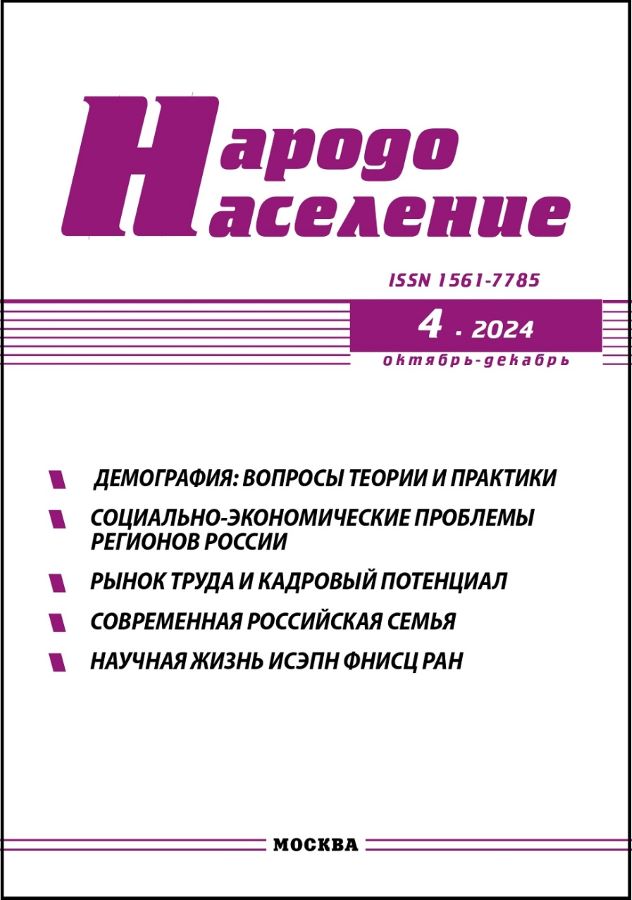
-
Population
ISSN (print): 1561-7785, ISSN (online): 3034–2252
Founder: Federal Center of Theoretical and Applied Sociology of the Russian Academy of Sciences
Editor-in-Chief: Vyacheslav V. Lokosov, Corresponding Member of RAS, Dr. Sci. (Sociol.), Prof.
Frequency / Access: 4 issues per year / Open
Included in: White List (2 level), Higher Attestation Commission List, RISC
-
Heritage of Centuries

-
Heritage of Centuries
ISSN (online): 2412-9798
Founder: Likhatchev Russian Research Institute for Cultural and Natural Heritage
Editor-in-Chief: Gorlova Irina I., Doctor of Sc., Full Professor
Frequency / Assess: 4 issues per year / Open
Included in: Higher Attestation Commission list, RISC
-
Science. Culture. Society
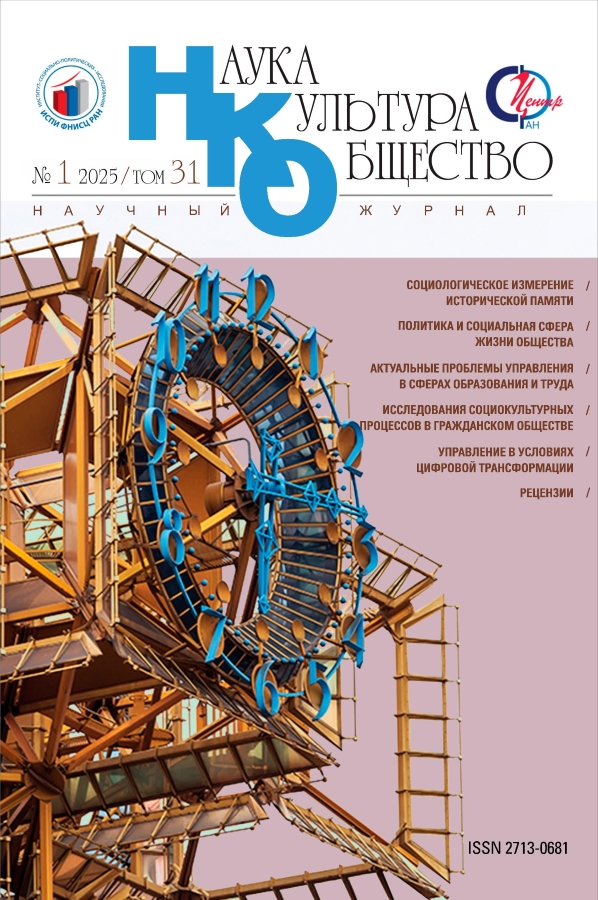
-
Science. Culture. Society
ISSN (print): 2308-829X, ISSN (online): 2713-0681
Founder: Federal Center of Theoretical and Applied Sociology of the RAS, Applied Sociology of the Russian Academy of Sciences (ISPR FCTAS RAS)
Editor-in-Chief: Victor K. Levashov, Dr. Sci. (Soc.)
Frequency / Access: 4 issues per year / Open
Included in: Higher Attestation Commission List, RISC
-
SCIENCE. EDUCATION. THE PRESENT

-
SCIENCE. EDUCATION. THE PRESENT
ISSN (print): 2658-7335
Founder: Limited Liability Company "Science and Education"
Editor-in-Chief: Popov M.Yu.
Frequency / Assess: 4 issues per year / Open
Included in: Higher Attestation Commission List, RISC
-
Science. Society. State
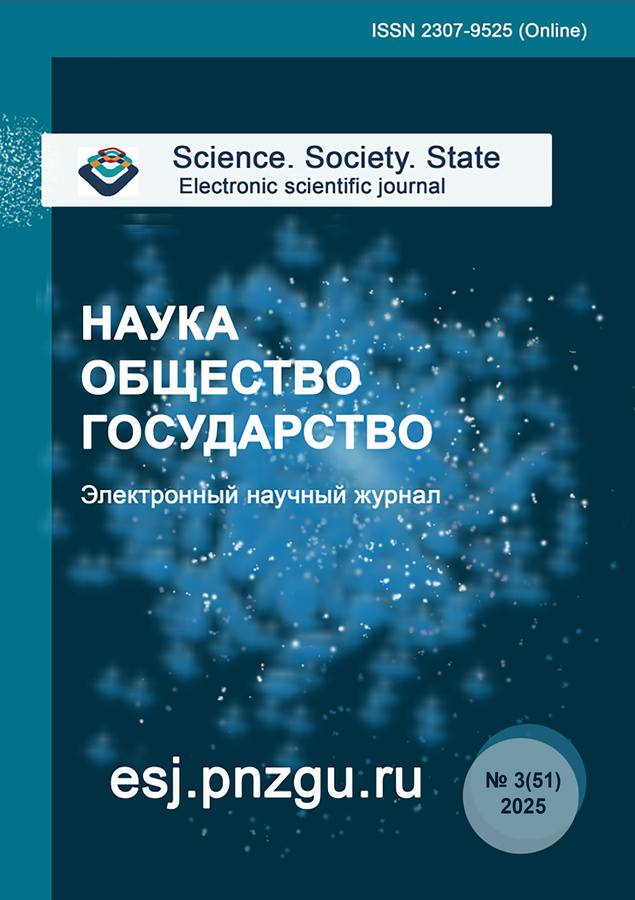
-
Science. Society. State
ISSN (online): 2307-9525
Founder: Penza State University
Editor-in-Chief: Goshulyak Vitaly V., Doctor of Law, Doctor of Historical Sciences, Professor
Frequency / Access: 4 issues per year / Open
Included in: Higher Attestation Commission List, RISC
-
Science and Innovations in Medicine
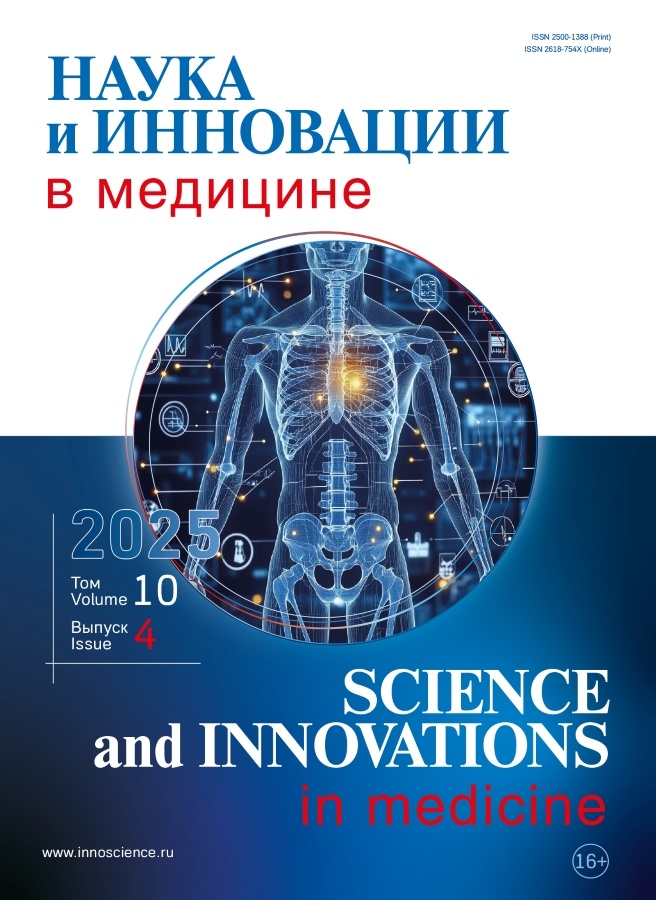
-
Science and Innovations in Medicine
ISSN (print): 2500-1388, ISSN (online): 2618-754X
Founder: Samara State Medical University of the Ministry of Health of the Russian Federation
Editor-in-Chief: Kolsanov Alexander Vladimirovich, Doctor of Medical Sciences, Professor of the Russian Academy of Sciences, Professor
Frequency / Access: 4 issues per year / Open
Included in: Higher Attestation Commission List, RISC
-
Earth sciences and subsoil use

-
Earth sciences and subsoil use
ISSN (print): 2686-9993, ISSN (online): 2686-7931
Founder: Irkutsk National Research Technical University
Editor-in-Chief: Alexander Parshin, Candidate of Geological and Mineral Sciences
Frequency / Access: 4 issues per year / Open
Included in: Higher Attestation Commission List, RISC
-
Hi-tech & Earth Space Research

-
Hi-tech & Earth Space Research
ISSN (print): 2409-5419, ISSN (online): 2412-1363
Founder: Media Publisher, LLC
Главный редактор: Legkov Konstantin Е., PhD, Associate professor
Frequency / Assess: 6 issues per year / Open
Included in: Higher Attestation Commission list, RISC
-
Naukoemkie tehnologii

-
Naukoemkie tehnologii
ISSN (print): 1999-8465
Founder: Limited Liability Company "Publishing House "Radiotekhnika"
Editor-in-Chief: Marin V.P., Doctor of Sc., Full Professor
Frequency / Access: 8 issues per year /Hybrid
Included in: Higher Attestation Commission List, RISC
-
Science intensive technologies in mechanical engineering
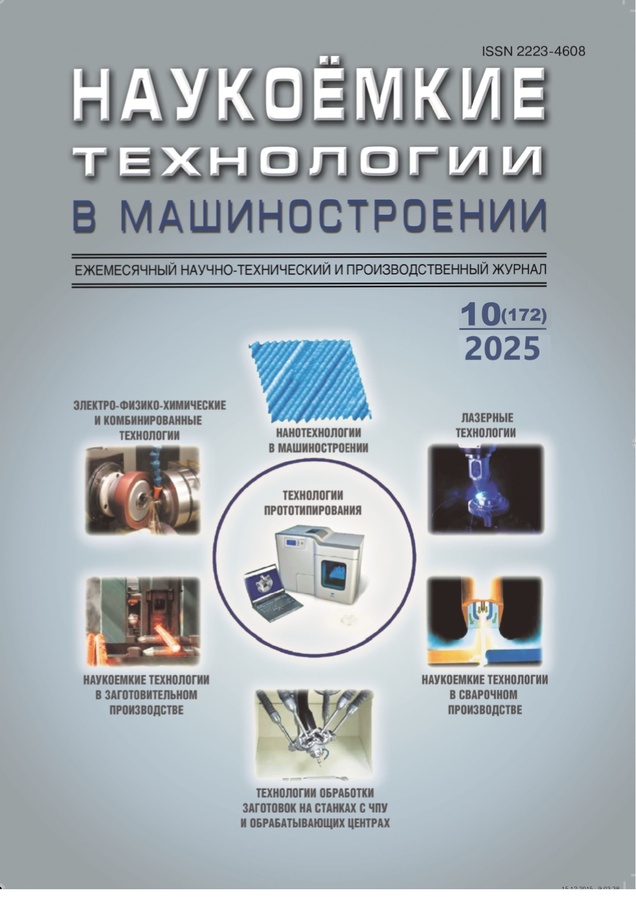
-
Science intensive technologies in mechanical engineering
ISSN (print): 2223-4608
Founder: Bryansk State Technical University
Editor-in-Chief: Suslov Anatiliy G, Doctor of Sc., Associate Professor
Frequency / Assess: 12 issues per year / subscription
Included in: Higher Attestation Commission List, RISC
-
Scientific Agronomy Journal
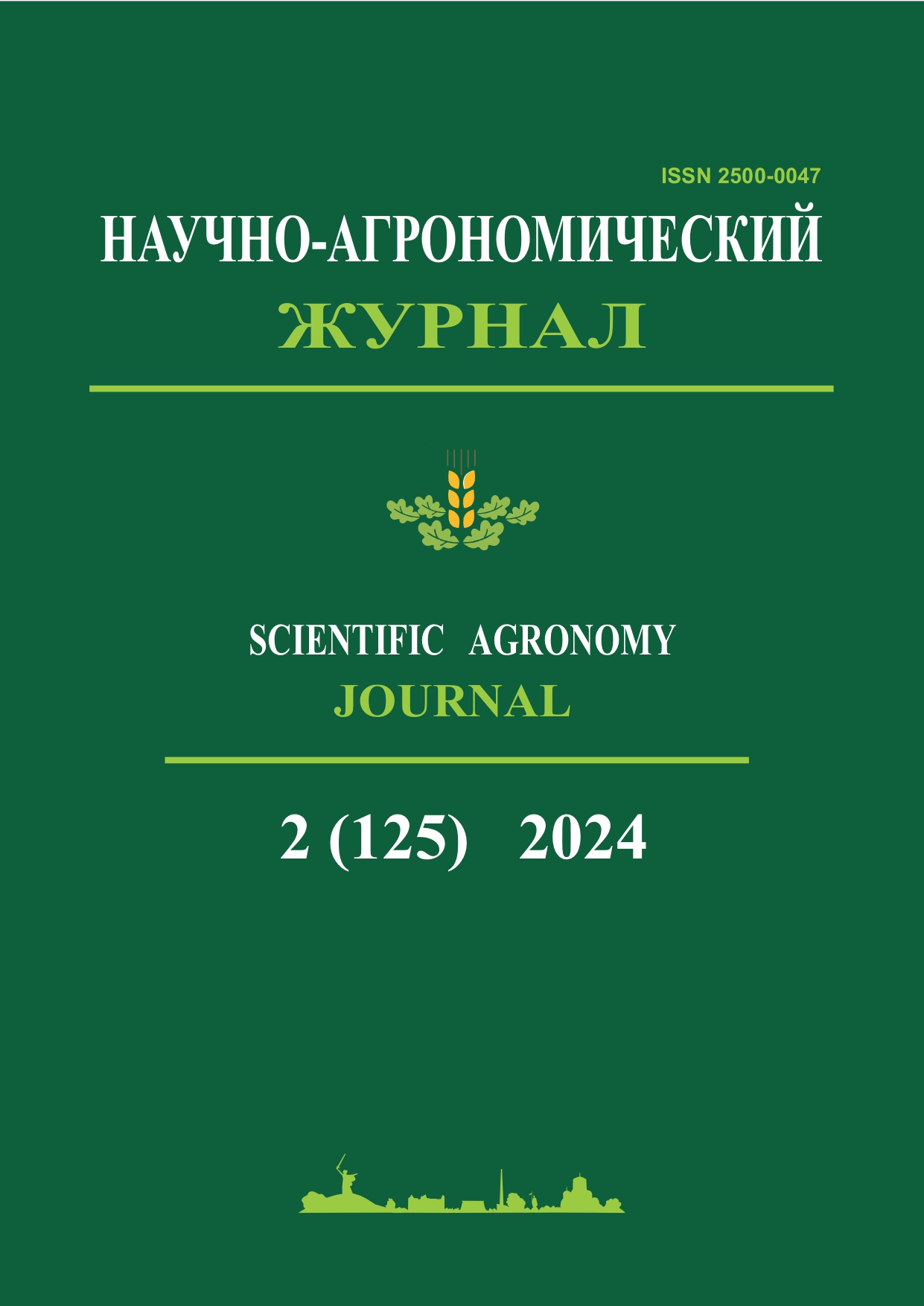
-
Scientific Agronomy Journal
ISSN (print): 2500-0047
Founder: the FSC of Agroecology RAS
Editor-in-Chief: Kulik Konstantin Nikolaevich, Academician of RAS, Doctor of Agriculture sciences, professor
Frequency / Access: 4 issues per year / Open
Included in: Higher Attestation Commission List, RISC
-
Pedagogical Review
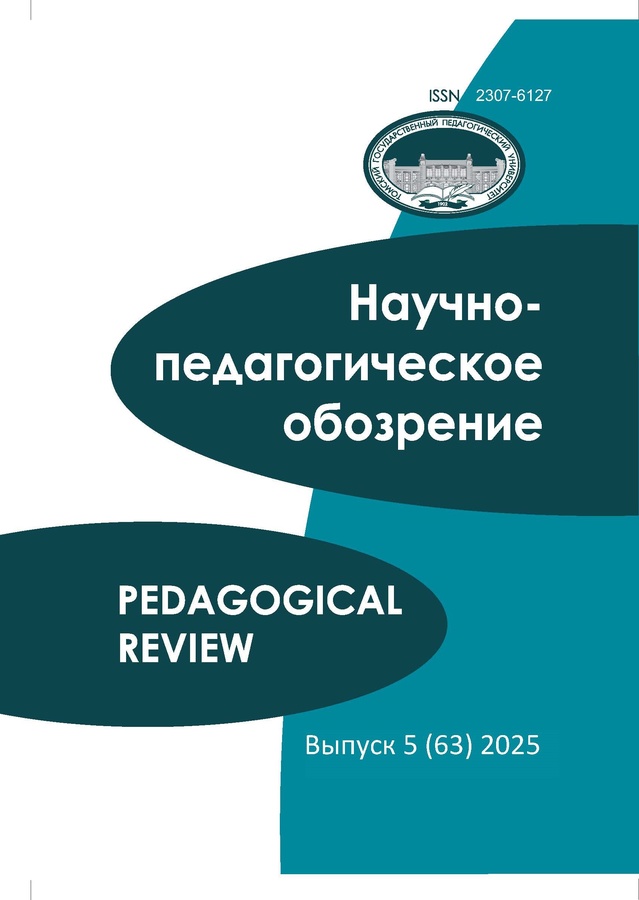
-
Pedagogical Review
ISSN (print): 2307-6127
Founder: Tomsk State Pedagogical University
Editor-in-Chief: Pozdeeva S.I., Doctor of Sciences in Pedagogy, professor
Frequency / Access: 6 issues per year / Open
-
Scientific and educational basics in physical culture and sports

-
Scientific and educational basics in physical culture and sports
ISSN (online): 2782-3245
Founder: Ural state university of physical training
Editor-in-Chief: Sazonov Igor Yu., Candidate of Pedagogical Sciences, Professor
Frequency / Access: 4 issues per year / Open
Included in: RISC
-
Scientific Bulletin of the Omsk State Medical University
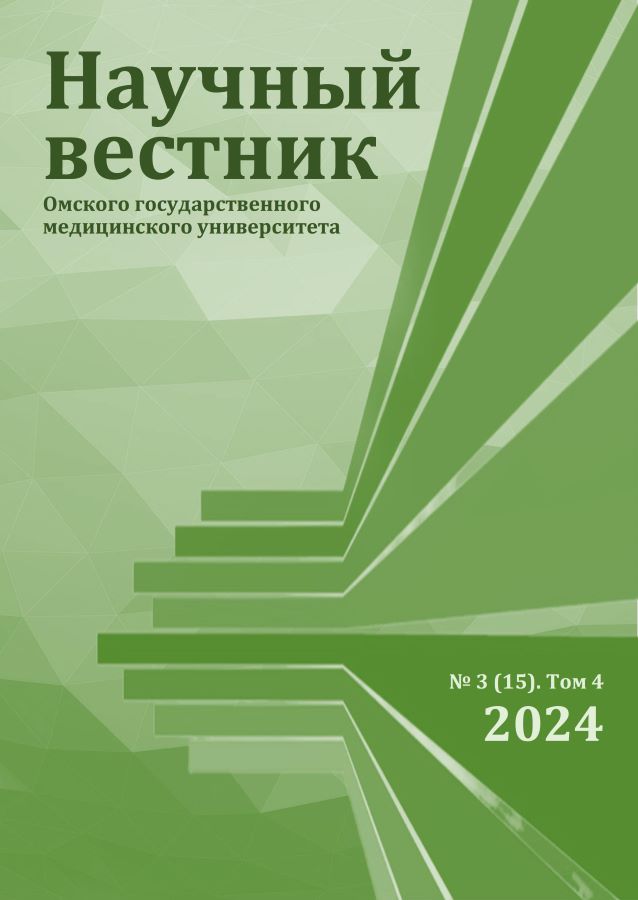
-
Scientific Bulletin of the Omsk State Medical University
ISSN (online): 2782-3024
Publisher: Omsk State Medical University
Editor-in-Chief: Nikolay A. Nikolaev, Dr. Medical Sciences, Associate Professor
Frequency / Access: 4 issues per year / Open
Included in: RISC
-
The Scientific Opinion journal

-
The Scientific Opinion journal
ISSN (print): 2222-4378
Founder: Non-profit partnership of scientists, teachers, and institutions of higher professional education ""St. Petersburg University Consortium""
Editor-in-Chief: Vladimir Valentinovitch Laptev, Member of the Russian Academy of Education, Doctor of Pedagogical Sciences, Professor
Frequency / Access: 10 issues per year / Subscription
Included in: Higher Attestation Commission List, RISC
-
Nauchnyi Dialog

-
Nauchnyi Dialog
ISSN (print): 2225-756X, ISSN (online): 2227-1295
Founder: Tsentr nauchnykh i obrazovatelnykh proektov
Editor-in-Chief: Leontyeva Tatyana Valerievna, Doctor of Sc. (Philology), Associate Professor
Frequency / Access: 10 issues per year / Open
Included in: White List (3rd level), Higher Attestation Commission List, RISC, Scopus, Web of Science Core Collection
-
Scientific journal "Modern linguistic and methodical-and-didactic researches"

-
Scientific journal "Modern linguistic and methodical-and-didactic researches"
ISSN (print): 2587-8085, ISSN (online): 2949-3773
Founder: Voronezh State Technical University
Editor-in-Chief: Valery A. Fedorov, PhD in Philology, Associate Professor
Frequency / Access: 4 issues per year / Open
Included in: Higher Attestation Commission List, RISC
-
Russian Journal of Building Construction and Architecture

-
Russian Journal of Building Construction and Architecture
ISSN (print): 2541-7592
Founder: Voronezh State Technical University
Editor-in-Chief: Kozlov Vladimir Anatolyevich, D. Sc.
Frequency / Assess: 4 issues per year / Open
Included in: Higher Attestation Commission list, RISC
-
Naučnyj poisk: ličnostʹ, obrazovanie, kulʹtura

-
Naučnyj poisk: ličnostʹ, obrazovanie, kulʹtura
ISSN (print): 2713-0959
Founder: Ivanovo State University
Editor-in-Chief: Shmeleva Elena Aleksandrovna, Doctor of Psychological Sciences, Professor
Frequency / Access: 4 issues per year / Open
Included in: Higher Attestation Commission List, RISC
-
Management. Economics. Informatics (M.E.I.)

-
Management. Economics. Informatics (M.E.I.)
ISSN (online): XXXX-XXXX
Founder: National Research University "MPEI"
Editor-in-Chief: Komarov Ivan, Dr. of technical sciences
Frequency / Access: 4 issues per year / Open
Included in: RISC
-
Neurology Bulletin
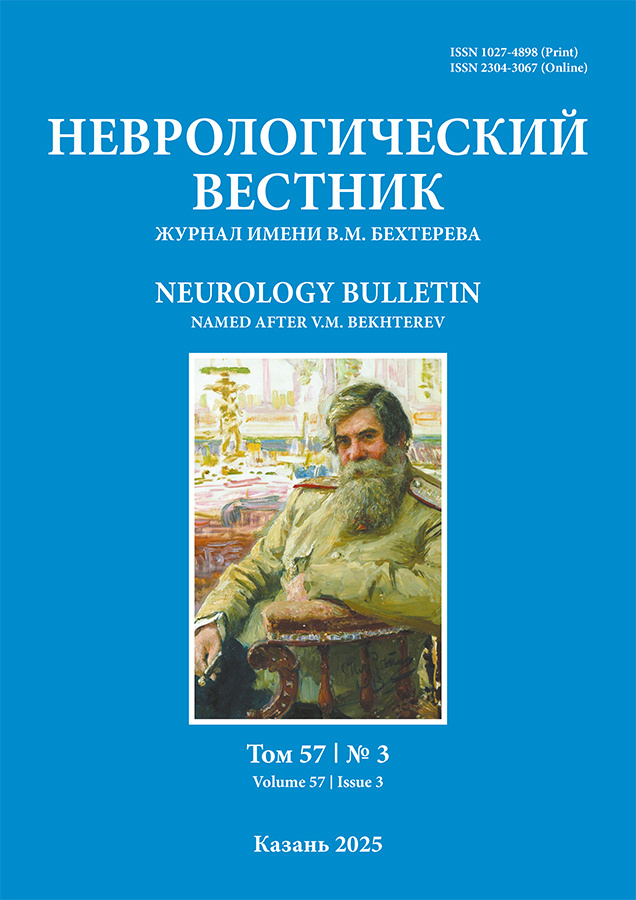
-
Neurology Bulletin
ISSN (print): 1027-4898, ISSN (online): 2304-3067
Founders: Kazan State Medical University, «ECO-vector» LLC
Editor-in-Chief: Mendelevich Vladimir., Doctor of Sc., Full Professor
Frequency / Access: 4 issues per year / Open
Included in: White list (4th level), Higher Attestation Commission List, RISC
-
The Unknown Dostoevsky

-
The Unknown Dostoevsky
ISSN (online): 2409-5788
Founder: Petrozavodsk State University
Editor-in-Chief: Zakharov Vladimir N., Doctor of Sc., Full Professor
Frequency / Assess: 4 issues per year / Open
Included in: White List (1st level), Higher Attestation Commission List, RISC, Scopus, Web of Science Core Collection
-
Nejrokompʹûtery: razrabotka, primenenie

-
Nejrokompʹûtery: razrabotka, primenenie
ISSN (print): 1999-8554
Founder: Limited Liability Company "Publishing House "Radiotekhnika"
Editor-in-Chief: Shakhnov V.A., Member of Russian Academy of Sciences, Doctor of Sc., Full Professor
Frequency / Access: 6 issues per year /Hybrid
Included in: Higher Attestation Commission List, RISC
-
Nelinejnyj mir

-
Nelinejnyj mir
ISSN (print): 2070-0970
Founder: Limited Liability Company "Publishing House "Radiotekhnika"
Editor-in-Chief: Druzhinina O.V., Doctor of Sc., Full Professor
Frequency / Access: 4 issues per year /Hybrid
Included in: Higher Attestation Commission List, RISC
-
Continuous medical education and science

-
Continuous medical education and science
ISSN (print): 2949-6292
Founder: South Ural State Medical University
Editor-in-Chief: Fokin Alexey Anatolyevich, Doctor of Sc., Full Professor
Frequency / Assess: 4 issues per year / Open
Included in: RISC
-
LIFELONG EDUCATION: The 21st Century

-
LIFELONG EDUCATION: The 21st Century
ISSN (online): 2308-7234
Founder: Petrozavodsk State University
Editor-in-Chief: Babakova T.A., Doctor of Pedagogy, Professor
Frequency / Assess: 4 issues per year / Open
Included in: Higher Attestation Commission List, RISC, ERIH PLUS
-
Neurochemical Journal
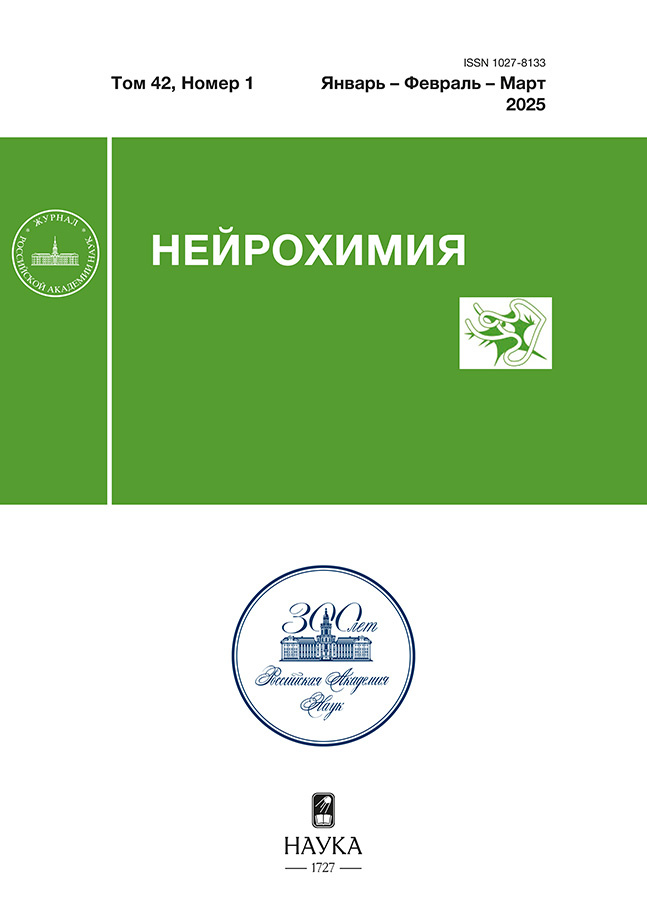
-
Neurochemical Journal
ISSN (print): 1027-8133
Founders: Russian Academy of Sciences, National Academy of Sciences of the Republic of Armenia
Editor-in-Chief: Natalia Valeryevna Gulyaeva, Doctor of Biological Sciences, Professor
Frequency / Access: 4 issues per year / Subscription
Included in: White List (3rd level), Higher Attestation Commission List, RISC
-
Inorganic Materials
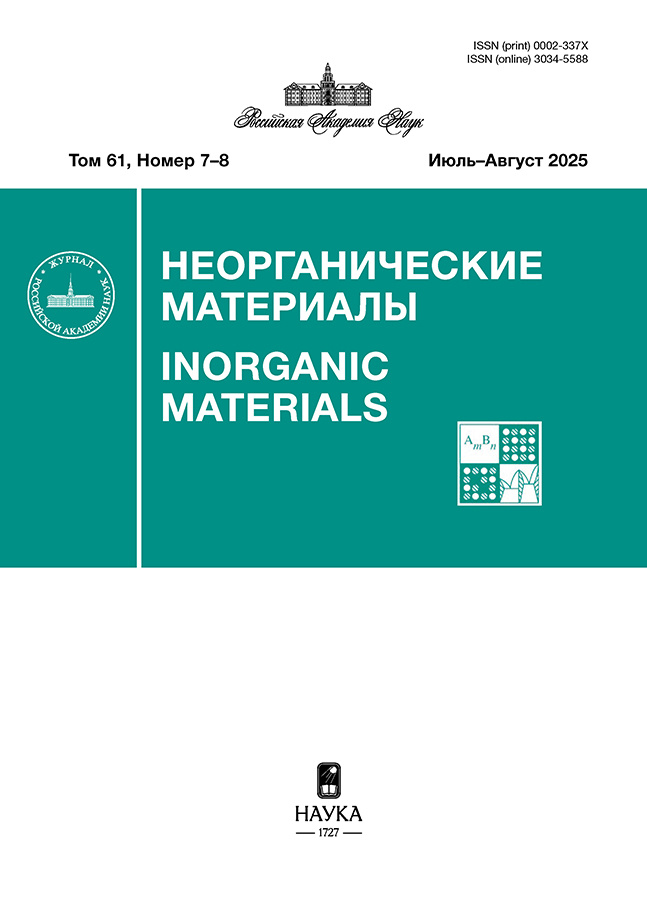
-
Inorganic Materials
ISSN (print): 0002-337X
Founders: Russian Academy of Sciences, N.S. Kurnakov Institute of General and Inorganic Chemistry, Russian Academy of Sciences
Editor-in-Chief: Konstantin Alexandrovich Solntsev, Academician of the Russian Academy of Sciences, Doctor of Chemical Sciences
Frequency / Access: 4 issues per year / Subscription
Included in: White List (2nd level), Higher Attestation Commission List, RISC
-
Neophilology

-
Neophilology
ISSN (print): 2587-6953, ISSN (online): 2782-5868
Founder: Derzhavin Tambov State University
Editor-in-Chief: Antonina S. Shcherbak, Doctor of Philological Sciences, Professor
Frequency / Access: 4 issues per year / Open
Included in: Higher Attestation Commission List, RISC
-
Petroleum Chemistry
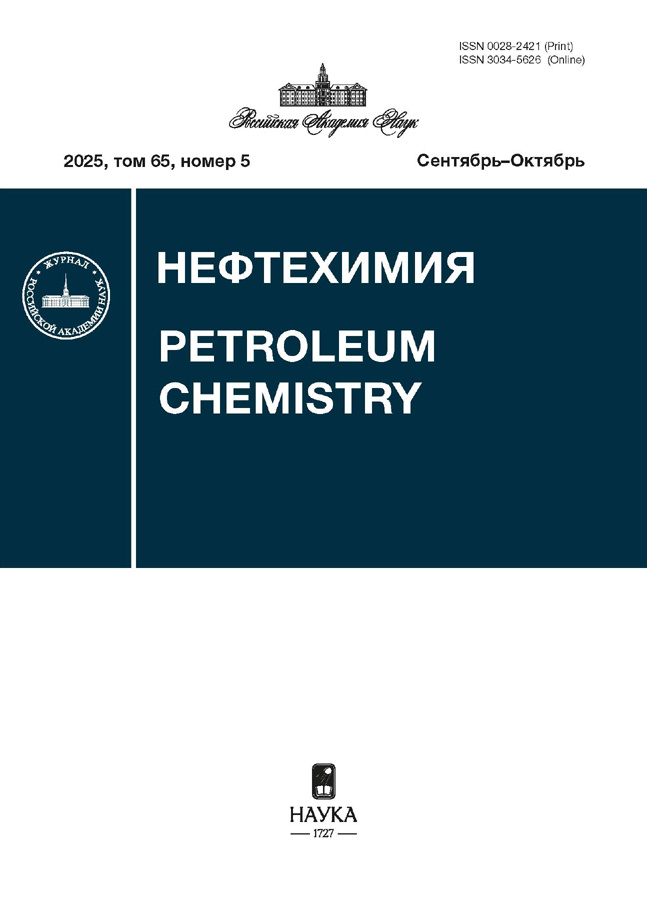
-
Petroleum Chemistry
ISSN (print): 0028-2421
Founders: A.V. Topchiev Institute of Petrochemical Synthesis, Russian Academy of Sciences
Editor-in-Chief: Anton Lvovich Maximov, Corresponding Member of the Russian Academy of Sciences, Doctor of Chemical Sciences, Associate Professor
Frequency / Access: 6 issues per year / Subscription
Included in: White List (2nd level), Higher Attestation Commission List, RISC
-
OIL AND GAS CHEMISTRY

-
OIL AND GAS CHEMISTRY
ISSN (print): 2310-8266
Founder: OOO "OBRAKADEMNAUKA"
Editor-in-Chief: Lapidus A.L., Corresponding Member RAS, Dr. Sci. (Chem.), Prof
Frequency / Assess: 4 issues per year / Subscription
Included in: Higher Attestation Commission List, RISC
-
Neftepererabotka i neftehimiâ

-
Neftepererabotka i neftehimiâ
ISSN (print): 0233-5727
Founder: NTWC LLC
Editor-in-Chief: Kapustin V.M., PhD (technical sciences), Professor
Frequency / Access: 12 issues per year / Subscription
Included in: Higher Attestation Commission List, RISC
-
Fuzzy Systems and Soft Computing

-
Fuzzy Systems and Soft Computing
ISSN (print): 1819-4362
Founder: Tver State University
Editor-in-Chief: Yazenin Alexander Vasilyevich, Doctor of Sc., Full Professor
Frequency / Assess: 4 issues per year / Hybrid
Included in: Higher Attestation Commission list, RISC
-
Volga Region Farmland

-
Volga Region Farmland
ISSN (print): 1998-6092, ISSN (online): 2782-3946
Founder: Penza State Agrarian University
Editor-in-Chief: Kukharev Oleg Nikolayevich, Doctor of Sc., Full Professor
Frequency / Assess: 4 issues per year / Open
Included in: Higher Attestation Commission list, RISC
-
Nizhnevartovsk Philological Bulletin
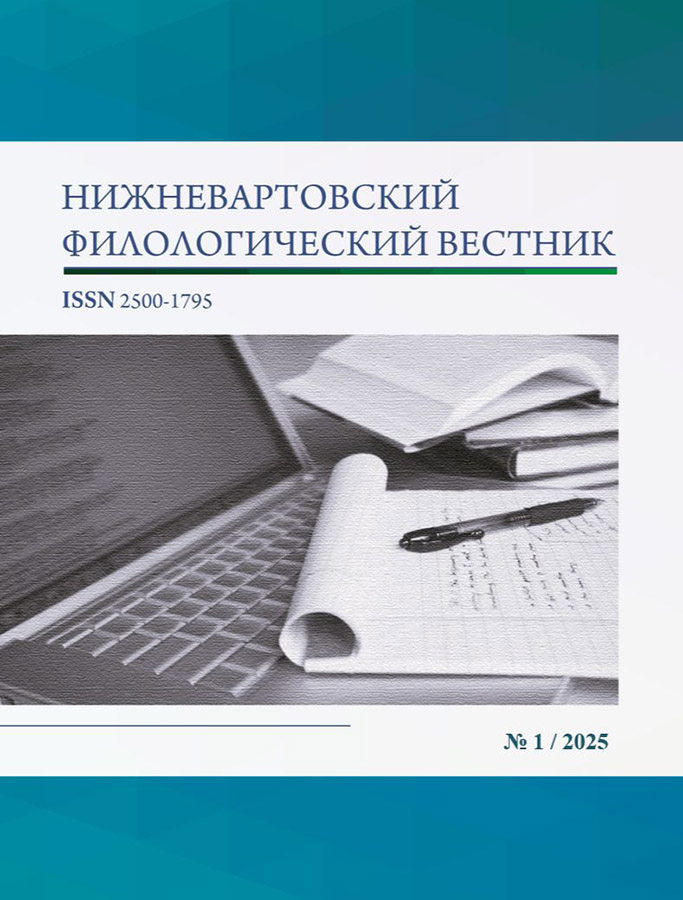
-
Nizhnevartovsk Philological Bulletin
ISSN (online): 2500-1795
Founder: Nizhnevartovsk State University
Editor-in-Chief: Kultysheva Olga Mikhailovna, Doctor of Sc., Full Professor
Frequency / Access: 2 issues per year / Open
Included in: RISC
-
Novaya i Novejshaya Istoriya
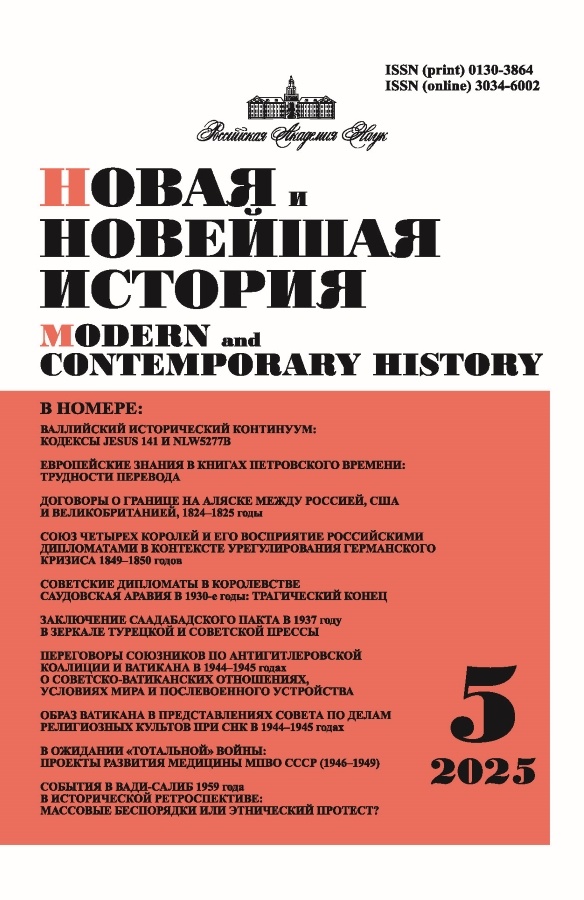
-
Novaya i Novejshaya Istoriya
ISSN (print): 0130-3864
Founders: Institute of Universal History, Russian Academy of Sciences, Russian Academy of Sciences
Editor-in-Chief: Velikhan Salman Khanovich Mirzakhanov, Doctor of Historical Sciences, Professor
Frequency / Access: 6 issues per year / Subscription
Included in: White List (2nd level), Higher Attestation Commission List, RISC, Scopus
-
New Psychological Research
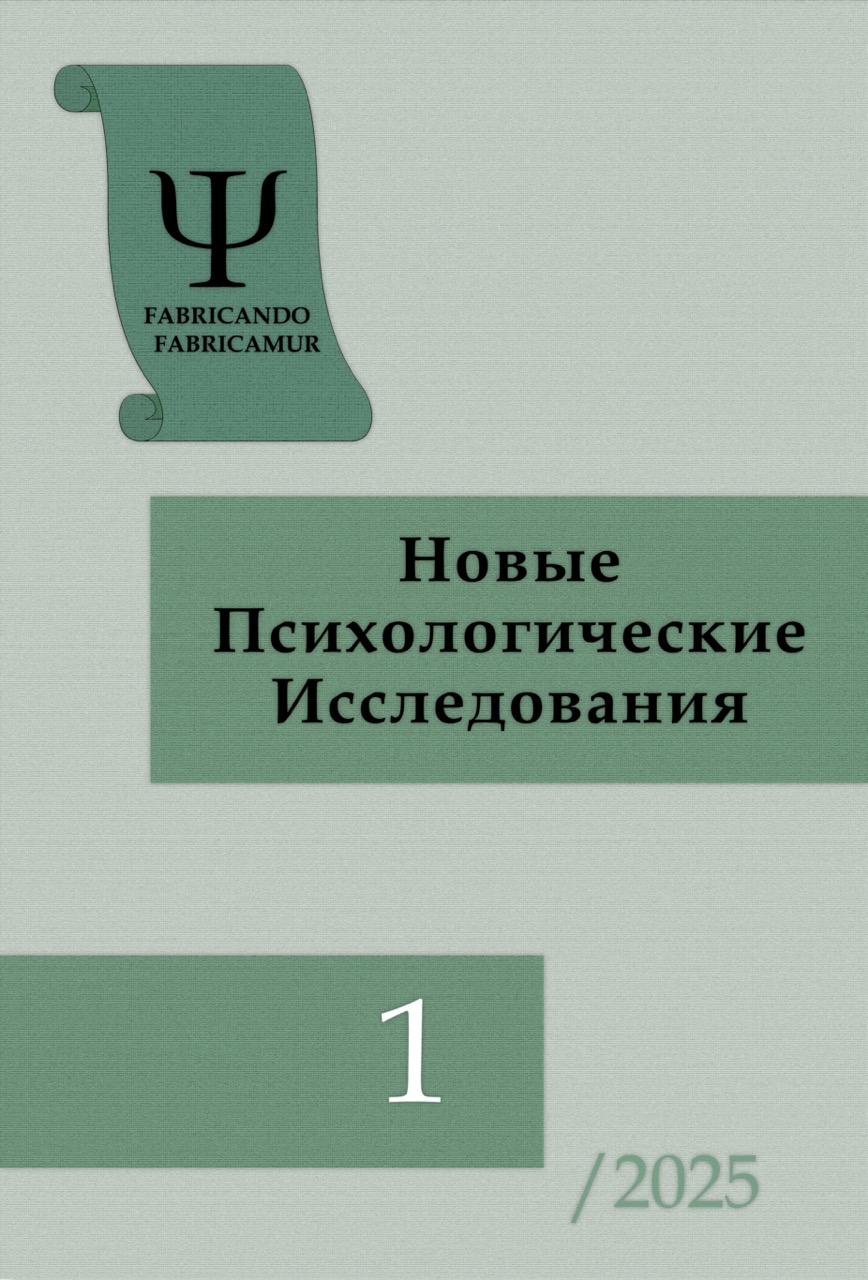
-
New Psychological Research
ISSN (online): 2782-2184
Founders: the Moscow Institute of Psychoanalysis and a group of individuals
Editor-in-Chief: Martsinkovskaya Tatyana Davidovna, Doctor of Psychology, Professor
Frequency / Access: 4 issues per year / open
Included in: Higher Attestation Commission List, RISC
-
Review of pedagogical research

-
Review of pedagogical research
ISSN (online): 2687-0428
Founder: Self-employed Klyueva M.M. (Belgorod)
Editor-in-Chief: Solopanova Ol’ga Yur’yevna, Doctor of Sc., Full Professor
Frequency / Assess: 8 issues per year / Open
Included in: Higher Attestation Commission list, RISC
-
Reviews on Clinical Pharmacology and Drug Therapy
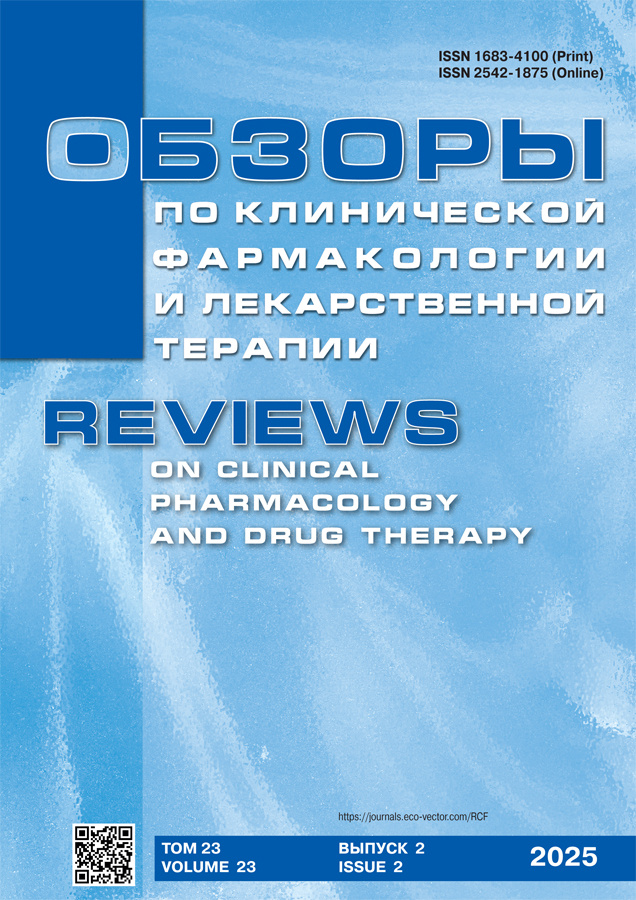
-
Reviews on Clinical Pharmacology and Drug Therapy
ISSN (print): 1683-4100, ISSN (online): 2542-1875
Founder: Eco-Vector
Editor-in-Cheif: Petr D. Shabanov, Doctor of Sc., Professor
Frequency / Assess: 4 issues per year / Subscription
Included in: White List (3rd level), Higher Attestation Commission List, RISC, Scopus
-
Obrabotka Metallov / Metal Working and Material Science

-
Obrabotka Metallov / Metal Working and Material Science
ISSN (print): 1994-6309, ISSN (online): 2541-819X
Founders: Novosibirsk State Technical University; Limited Liability Company Novosibirsk Scientific-Production Commercial Firm "Mashservispribor"
Editor-in-Chief: Anatoliy A. Bataev, Doctor of Sc. (Engineering), Professor
Frequency / Access: 4 issues per year / Subscription
Included in: White List (3rd level), Higher Attestation Commission List, RISC, Scopus, Web of Science Core Collection
-
Education: Path to Career

-
Education: Path to Career
ISSN (print): 3034-1817
Founder: Mordovian State Pedagogical University named after M. E. Evseviev
Editor-in-Chief: Antonova M.V., Doctor of Sc., Full Professor
Frequency / Assess: 4 issues per year / Open
Included in: RISC
-
Education and law

-
Education and law
ISSN (print): 2076-1503, ISSN (online): 2949-205X
Founder: Общество с ограниченной ответственностью "ЮРКОМПАНИ"
Editor-in-Chief: Sangadzhiev B.V., Doctor of Sc., Full Professor
Frequency / Assess: 12 issues per year / Open
Included in: Higher Attestation Commission list, RISC
-
Observatoriâ kulʹtury

-
Observatoriâ kulʹtury
ISSN (print): 2072-3156, ISSN (online): 2588-0047
Founder: Russain State Library
Editor-in-Chief: Ekaterina V. Nikonorova, Doctor of Sc. (Philosophical), Professor
Frequency / Assess: 6 issues per year / Subscription
Included in: Higher Attestation Commission List, RISC
-
Public health

-
Public health
ISSN (print): 2782-1676, ISSN (online): 2949-1274
Founder: Federal Research Institute for Health Organization and Informatics of the Ministry of Health of the Russian Federation
Editor-in-chief: Oleg O. Salagay, Ph.D. (Medicine)
Frequency / Access: 4 issues per year / Open
Included in: Higher Attestation Commission List, RISC
-
Social Sciences and Contemporary World
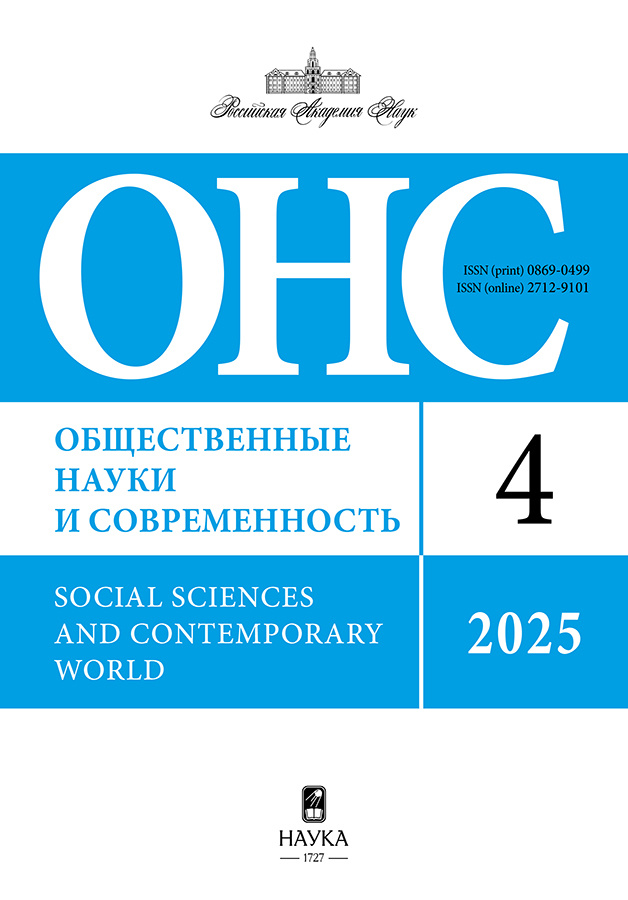
-
Social Sciences and Contemporary World
ISSN (print): 0869-0499, ISSN (online): 2712-9101
Founder: Russian Academy of Sciences
Editor-in-Chief: Alexey Anatolyevich Gromyko, Corresponding Member of the Russian Academy of Sciences, Doctor of Political Sciences
Frequency / Access: 6 issues per year / Subscription
Included in: White List (2nd level), Higher Attestation Commission List, RISC
-
Obshchestvo i ekonomika
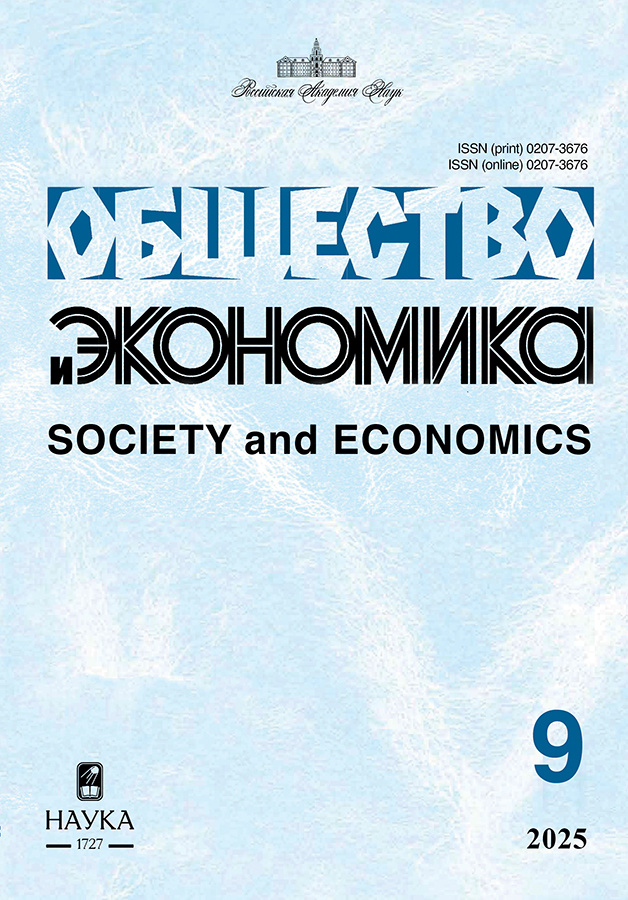
-
Obshchestvo i ekonomika
ISSN (print): 0207-3676
Founder: Russian Academy of Sciences
Editor-in-Chief: Pavel Antonovich Kakhno, Doctor of Economic Sciences, Professor
Frequency / Access: 12 issues per year / Subscription
Included in: Higher Attestation Commission List, RISC
-
Ogarev-online
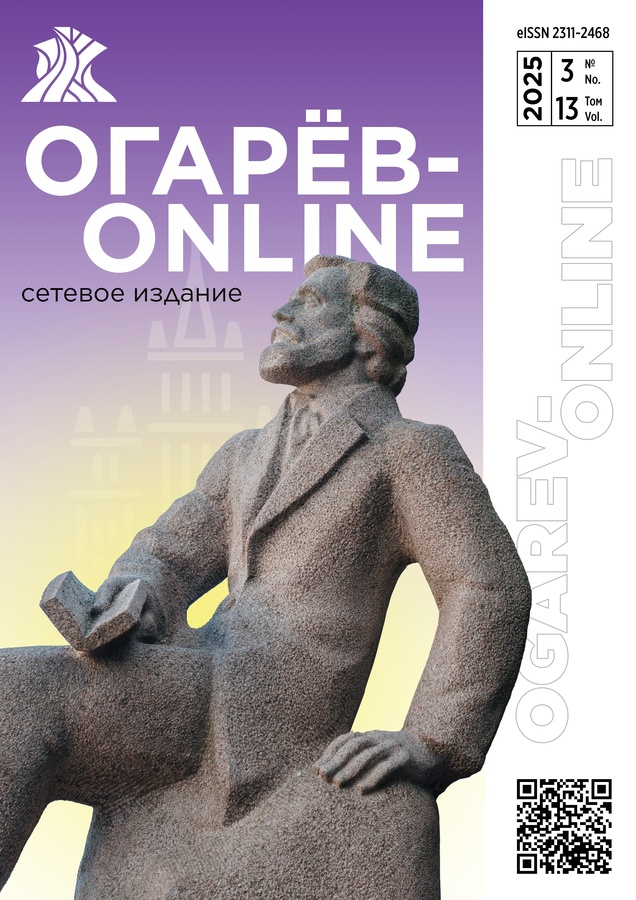
-
Ogarev-online
ISSN (online): 2311-2468
Founder and publisher: Federal State Budgetary Educational Institution of Higher Education “National Research Ogarev Mordovia State University”
Editor-in-Chief: Anatoly I. Lysyakov, Cand. Sci (Engineering)
Frequency / Access: 4 issues per year / Open
Included in: RISC
-
Oceanology
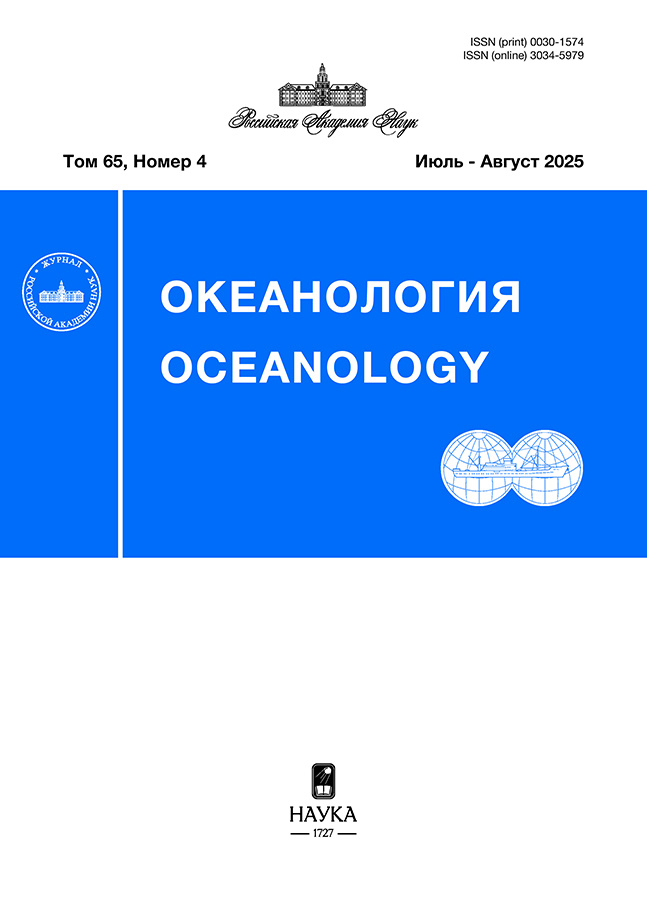
-
Oceanology
ISSN (print): 0030-1574
Founders: Russian Academy of Sciences, P.P. Shirshov Institute of Oceanology
Editor-in-Chief: Mikhail Vladimirovich Flint, Academician of the Russian Academy of Sciences, Doctor of Biological Sciences
Frequency / Access: 6 issues per year / Subscription
Included in: White List (2nd level), Higher Attestation Commission List, RISC, Scopus, Web of Science
-
Journal of environmental earth and energy study

-
Journal of environmental earth and energy study
ISSN (online): 2658-6703
Founder: Soloviev D.A.
Editor-in-Chief: Zalikhanov Mikhail Chokkaevich, Academician of RAS, Doctor of Geographical Sciences, Professor
Frequency / Access: 4 issues per year / Open
Included in: Higher Attestation Commission List, RISC
-
Omsk scientific bulletin
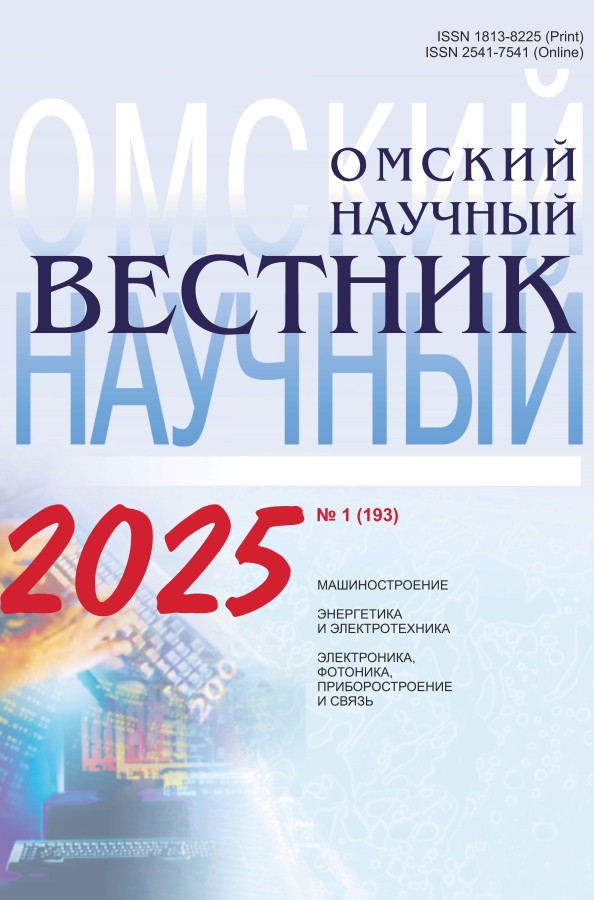
-
Omsk scientific bulletin
ISSN (print): 1813-8225, ISSN (online): 2541-7541
Founders: Omsk State Technical University; Omsk State Transport University
Editor-in-Chief: Kropotin Oleg Vitalyevich, Doctor of Technical Sciences, Professor
Frequency / Access: 4 issues per year / Open
Included in: Higher Attestation Commission List, RISC
-
Omsk Scientific Bulletin. Series Aviation-Rocket and Power Engineering
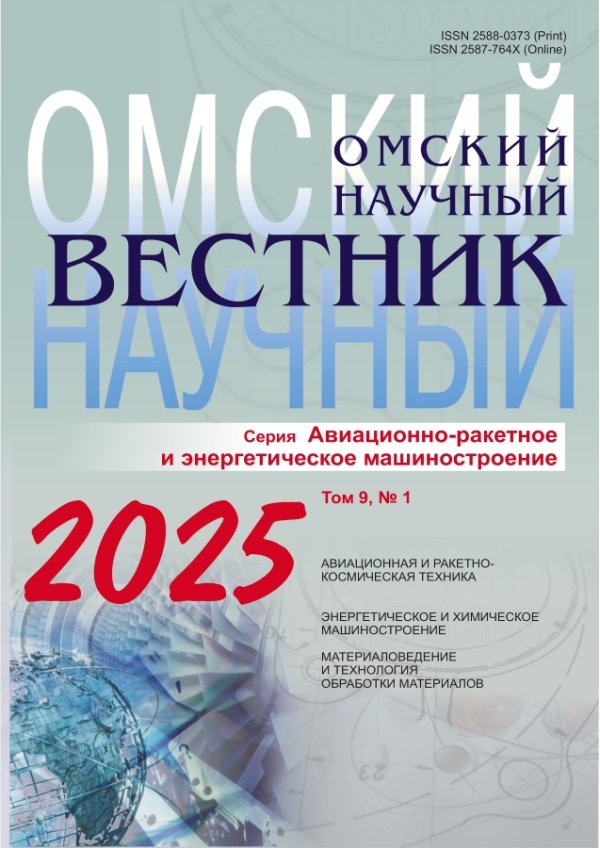
-
Omsk Scientific Bulletin. Series Aviation-Rocket and Power Engineering
ISSN (print): 2588-0373, ISSN (online): 2587-764X
Founder: Omsk State Technical University
Editor-in-Chief: Shalay Viktor Vladimirovich, Doctor of Technical Sciences, Professor
Frequency / Access: 4 issues per year / Open
Included in: Higher Attestation Commission List, RISC
-
Omsk Scientific Bulletin. Series Society. History. Modernity
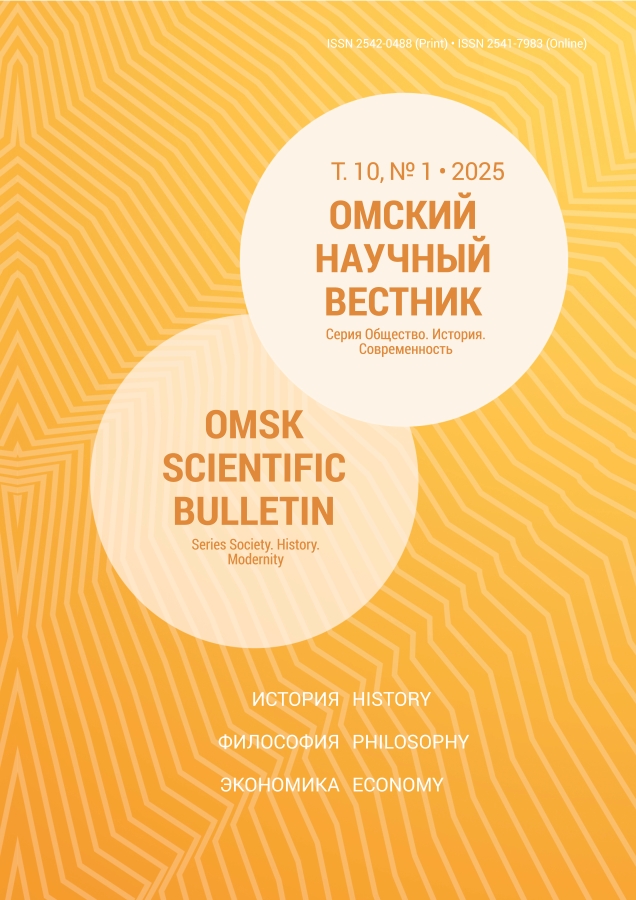
-
Omsk Scientific Bulletin. Series Society. History. Modernity
ISSN (print): 2542-0488, ISSN (online): 2541-7983
Founder: Omsk State Technical University
Editor-in-Chief: Nekhaev Andrey Viktorovich, Doctor of Philosophical Sciences, Associate Professor
Frequency / Access: 4 issues per year / Open
Included in: Higher Attestation Commission List, RISC
-
Russian Journal of Developmental Biology
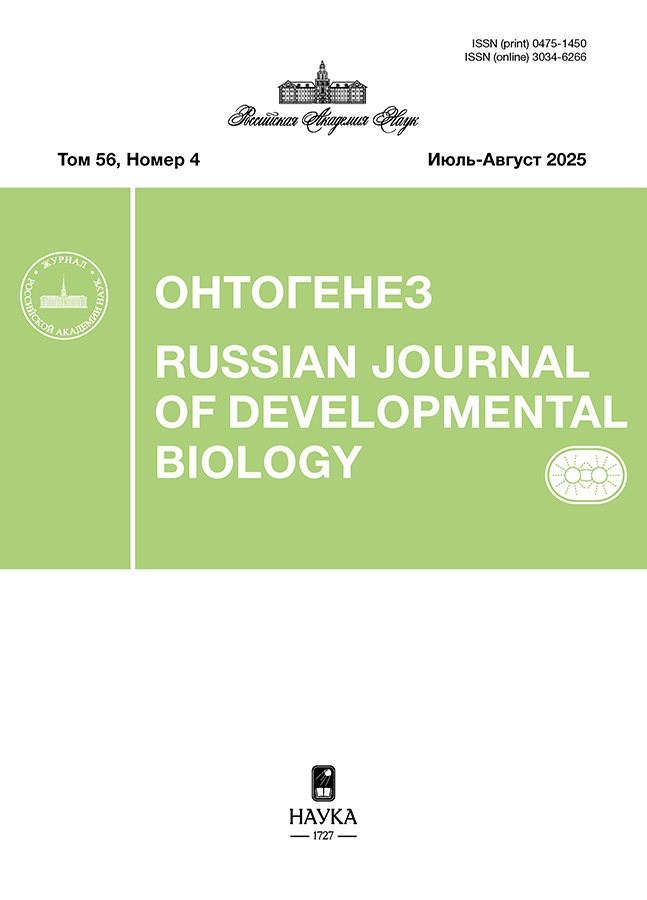
-
Russian Journal of Developmental Biology
ISSN (print): 0475-1450
Founder: Russian Academy of Sciences
Editor-in-Chief: Andrei Valentinovich Vasiliev, Corresponding Member of the Russian Academy of Sciences, Doctor of Biological Sciences
Frequency / Access: 6 issues per year / Subscription
Included in: White List (3rd level), Higher Attestation Commission List, RISC
-
Ontology of Designing

-
Ontology of Designing
ISSN (print): 2223-9537, ISSN (online): 2313-1039
Founders: Samara University, Institute for Complex Control Problems of the Russian Academy of Sciences, New Engineering Ltd
Editor-in-Chief: Petr O. Skobelev, Dr. Sciences (Engeneering)
Frequency / Assess: 4 issues per year / Open
Included in: White List (4th level), Higher Attestation Commission List, RISC
-
Pediatric Traumatology, Orthopaedics and Reconstructive Surgery
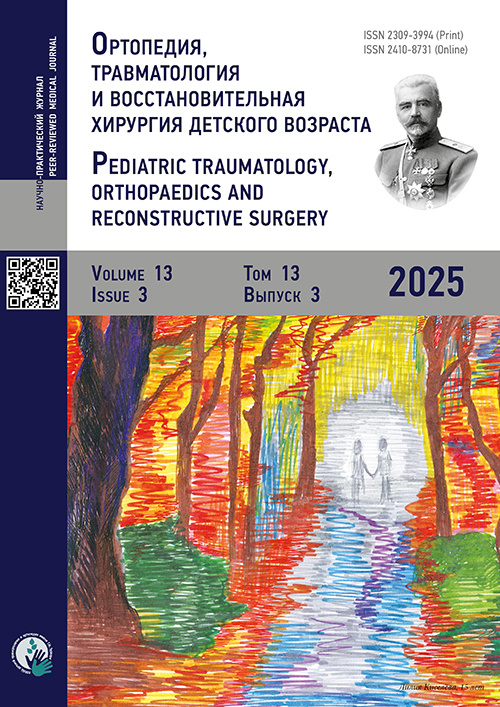
-
Pediatric Traumatology, Orthopaedics and Reconstructive Surgery
ISSN (print): 2309-3994, ISSN (online): 2410-8731
Founders: H.Turner Scientific Research Institute for Children's Orthopedics , Eco-Vector
Editor-in-Chief: Baindurashvili A.G., academican of RAS, Doctor of Sc., Full Professor
Frequency / Assess: 4 issues per year / Subscription
Included in: White List (3rd level), Higher Attestation Commission List, RISC, Scopus, Embase
-
Ophthalmology Journal
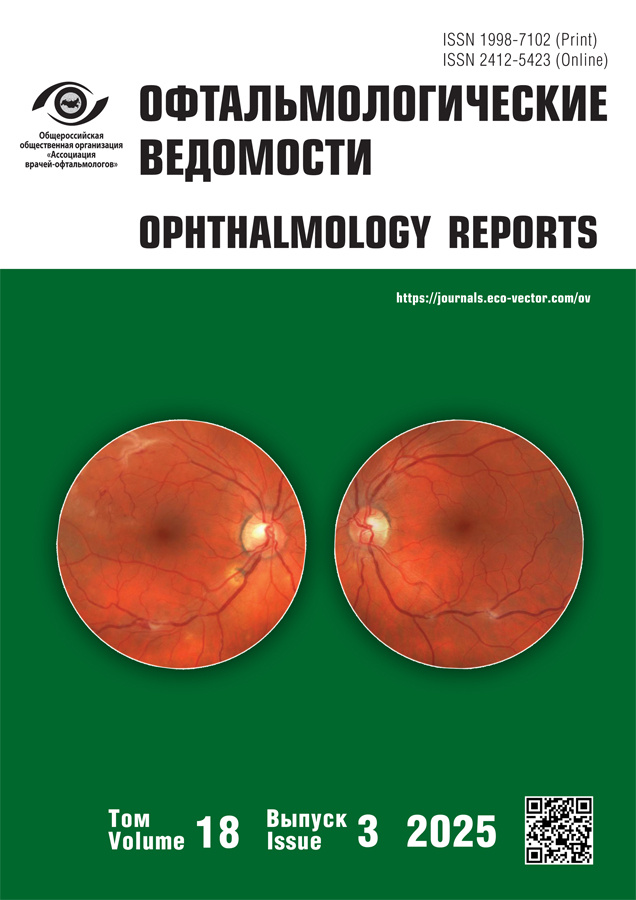
-
Ophthalmology Journal
ISSN (print): 1998-7102, ISSN (online): 2412-5423
Founder: Eco-Vector
Editor-in-Chief: Dmitriy V. Davydov, Doctor of Sc., Professor
Frequency / Assess: 4 issues per year / Subscription
Included in: White List (4th level), Higher Attestation Commission List, RISC, Scopus
-
Palimpsest. Literary journal

-
Palimpsest. Literary journal
ISSN (print): 2658-7475
Founder: National Research Lobachevsky State University of Nizhny Novgorod
Editor-in-Chief: Korovashko Alexey Valerievich
Frequency / Assess: 4 issues per year / Open
Included in: Higher Attestation Commission List, RISC
-
Parasitology
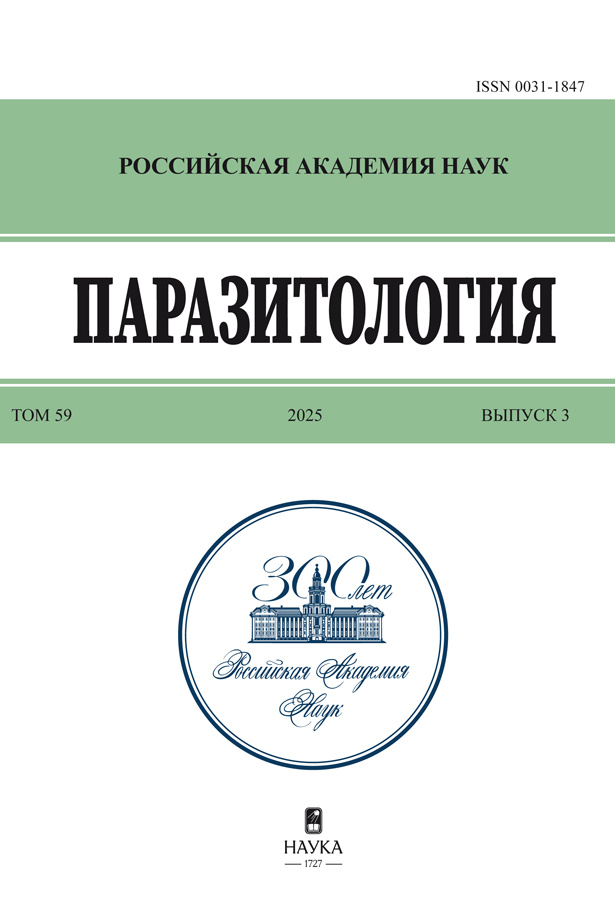
-
Parasitology
ISSN (print): 0031-1847
Founder: Russian Academy of Sciences
Editor-in-Chief: Oleg Nikolaevich Pugachev, Academician of the Russian Academy of Sciences, Doctor of Biological Sciences
Frequency / Access: 6 issues per year / Subscription
Included in: White List (3rd level), RISC, Web of science
-
Patient-oriented medicine and pharmacy

-
Patient-oriented medicine and pharmacy
ISSN (online): 2949-1924
Founders: Yaroslavl State Medical University of the Ministry of Health of the Russian Federation, Russian Medical Academy of Continuing Professional Education, Izdatelstvo OKI, LLC
Editor-in-chief: Alexander L. Khokhlov, academician of RAS, Doctor of Sc., Full Professor
Frequency / Access: online publication system / Open
Included in: RISC
-
Pediatrician (St. Petersburg)
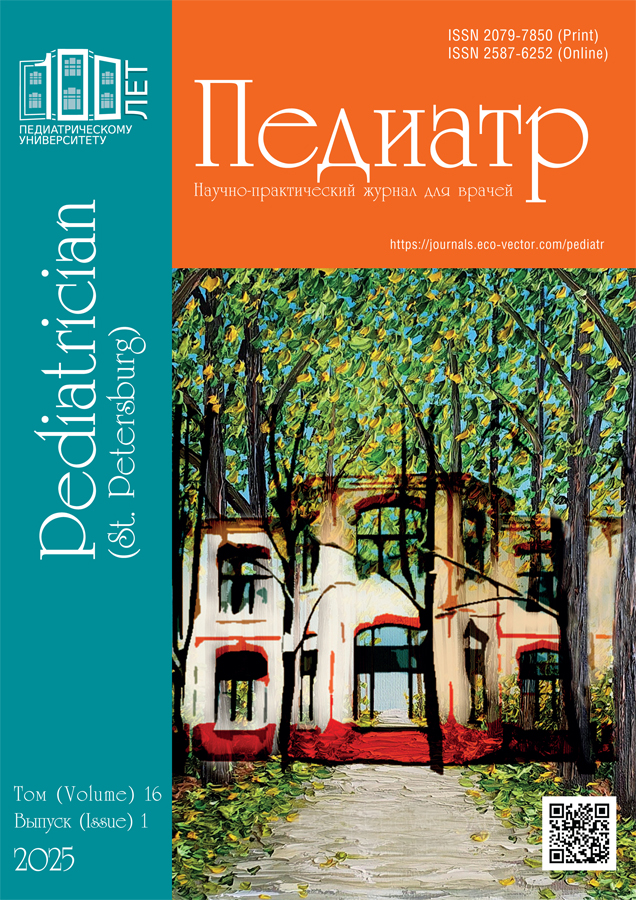
-
Pediatrician (St. Petersburg)
ISSN (print): 2079-7850, ISSN (online): 2587-6252
Founders: Saint-Petersburg State Pediatric Medical University, «ECO-vector» LLC
Editor-in-Chief: Ivanov D.O., Doctor of Sc., Full Professor
Frequency / Access: 6 issues per year / Open
Included in: White list (4th level), Higher Attestation Commission List, RISC
-
Petrology
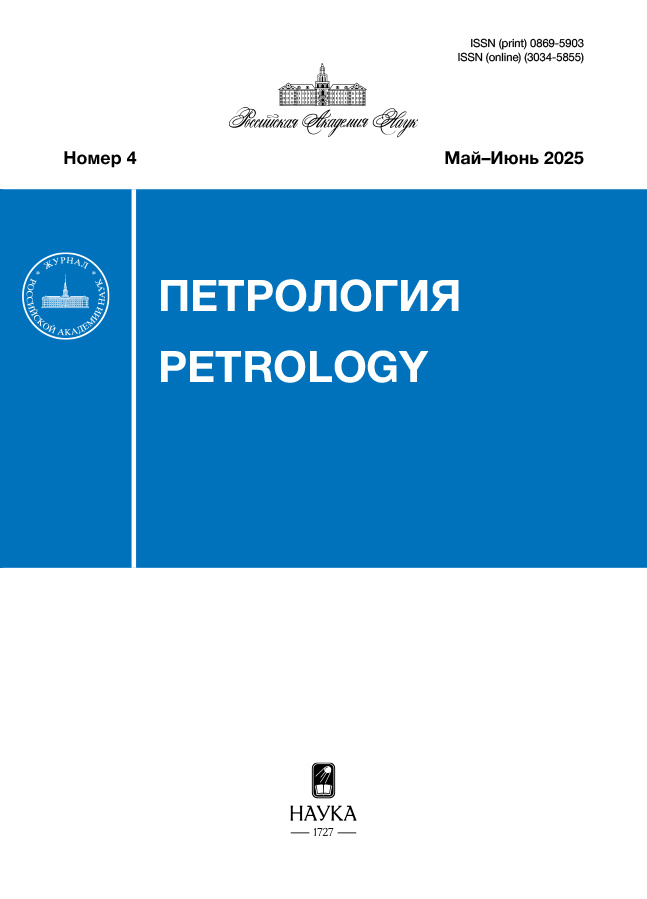
-
Petrology
ISSN (print): 0869-5903
Founder: Russian Academy of Sciences
Editor-in-Chief: Vladimir Viktorovich Yarmolyuk, Academician of the Russian Academy of Sciences, Doctor of Geological and Mineralogical Sciences
Frequency / Access: 6 issues per year / Subscription
Included in: White List (1st level), Higher Attestation Commission List, RISC
-
Pedagogy. Theory & practice

-
Pedagogy. Theory & practice
ISSN (print): 2500-0039, ISSN (online): 2686-8725
Founder: “Gramota” Publishers
Editor-in-Chief: E. V. Riabtseva, PhD in Pedagogy, Ass. Professor
Frequency / Assess: 12 issues per year / Open
Included in: Higher Attestation Commission list, RISC
-
Pedagogy of rural school

-
Pedagogy of rural school
ISSN (print): 2686-8652
Founders: Yaroslavl state pedagogical university; Yaroslavl region SAI APE “Institute for Education Development”
Editor-in-Chief: Lyudmila V. Baiborodova, Doctor of Sc., Full Professor
Frequency / Assess: 4 issues per year / Open
Included in: Higher Attestation Commission list, RISC
-
Pedagogical Education

-
Pedagogical Education
ISSN (online): 2712-9950
Founder: Individual entrepreneur IP Klyuev Sergey Vasilievich
Editor-in-Chief: Tselkovnikov Boris Mikhailovich, Doctor of Pedagogical Sciences
Frequency / Access: 12 issues per year / Open
Included in: Higher Attestation Commission List, RISC
-
Pediatrics. Consilium Medicum
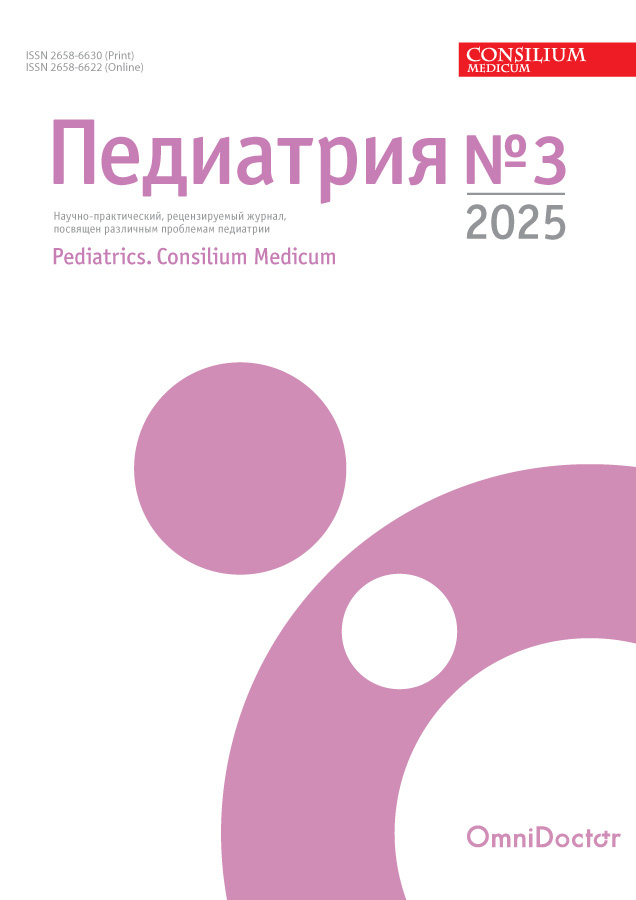
-
Pediatrics. Consilium Medicum
ISSN (print): 2658-6630, ISSN (online): 2658-6622
Founder: Meditsinskie izdaniya
Editor-in-Chief: Zakharova Irina Nikolaevna, Doctor of Medical Sciences, Professor
Frequency / Access: 4 issues per year / Open
Included in: Higher Attestation Commission List, RISC
-
Perm Medical Journal
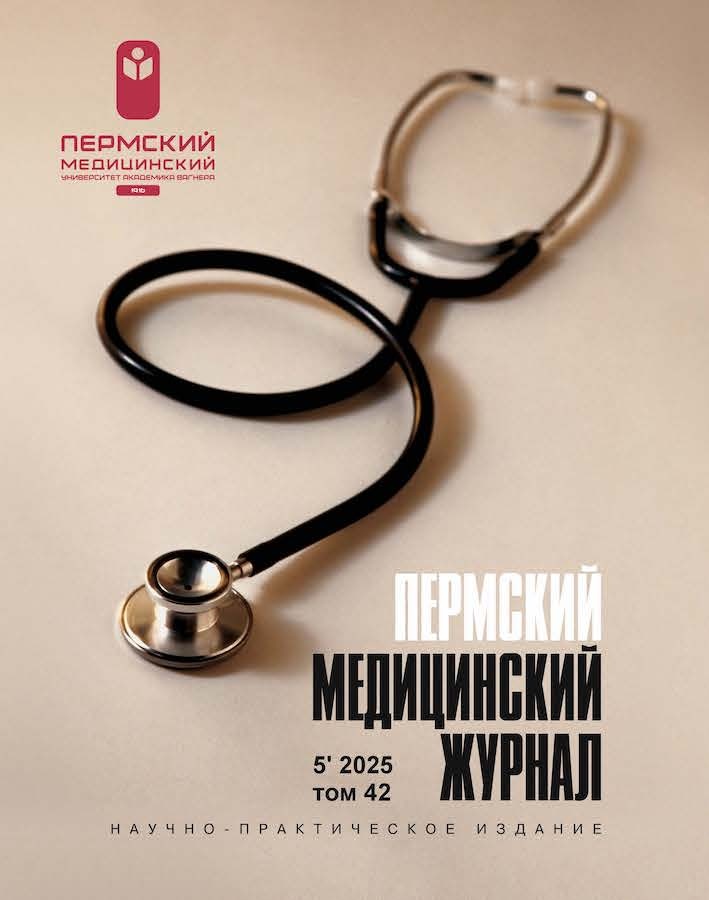
-
Perm Medical Journal
ISSN (print): 0136-1449, ISSN (online): 2687-1408
Founder: Perm State Medical University named after. ak. E.A. Wagner
Editor-in-Chief: Eugene G. Furman, Corresponding Member of the Russian Academy of Sciences, MD, PhD, professor,
Frequency / Access: 6 issues per year / Open
Included in: Higher Attestation Commission List, RISC
-
JETP Letters (Journal of Experimental and Theoretical Physics Letters)

-
JETP Letters (Journal of Experimental and Theoretical Physics Letters)
ISSN (print): 0370-274X
Media registration certificate: ПИ № ФС 77 – 78169 от 27.03.2020
Founder: P.L. Kapitza Institute for Physical Problems of the Russian Academy of Sciences, Russian Academy of Sciences
Editor-in-Chief: Pudalov V.M
Frequency / Assess: 12 issues per year / Subscription
Included in: White List (1st level),Higher Attestation Commission list, RISC
-
Pis'mennye pamiatniki Vostoka

-
Pis'mennye pamiatniki Vostoka
ISSN (print): 1811-8062
Founder: Institute of Oriental Manuscripts of the Russian Academy of Sciences
Editor-in-Chief: Irina F. Popova, corresponding member RAS, Doctor of Sc., Full Professor
Frequency / Access: 4 issues per year / Open
Included in: RISC
-
Food metaengineering

-
Food metaengineering
ISSN (online): 2949-6497
Founder: All-Russian Dairy Research Institute
Editor-in-Chief: Aram G. Galstyan, Academician, Doctor of Technical Sciences
Frequency / Access: 4 issues per year / Open
Included in: RISC
-
Piŝevye sistemy

-
Piŝevye sistemy
ISSN (print): 2618-9771, ISSN (online): 2618-7272
Founder: V.M. Gorbatov Federal Research Center for Food Systems of RAS
Editor-in-Chief: Oxana A. Kuznetsova, Doctor of Sc.
Frequency / Access: 4 issues per year / Open
Included in: Higher Attestation Commission List, RISC
-
Fruit growing and viticulture of South Russia

-
Fruit growing and viticulture of South Russia
ISSN (online): 2219-5335
Founder: Federal State Budgetary Scientific Institution North Caucasian Regional Research Institute of Horticulture and Viticulture
Editor-in-Chief: Egorov Evgeniy, Academician RAS, Doctor of Sc., Full Professor
Frequency / Assess: 6 issues per year / Open
Included in: Higher Attestation Commission List, RISC
-
Journal of Surface Investigation. X-Ray, Synchrotron and Neutron Techniques

-
Journal of Surface Investigation. X-Ray, Synchrotron and Neutron Techniques
ISSN (print): 1028-0960
Founders: Russian Academy of Sciences, Institute of Solid State Physics of the Russian Academy of Sciences
Editor-in-Chief: Levchenko Alexander Alekseevich, corresponding member RAS
Frequency / Assess: 12 issues per year / Subscription
Included in: White List (4th level), Higher Attestation Commission List, RISC
-
Under the Banner of Marxism

-
Under the Banner of Marxism
ISSN (print): 3034-6355
Founder: Krasnoyarsk regional public organization «Commonwealth of Educators of Krasnoyarsk Krai»
Editor-in-Chief: Koptseva Natalia Petrovna, Dr. Sc., Professor
Frequency / Assess: 4 issues per year / Subscription
Included in: Higher Attestation Commission list, RISC
-
Underwater investigation and robotics

-
Underwater investigation and robotics
ISSN (print): 1992-4429, ISSN (online): 2409-4609
Founders: Institute of Marine Technology Problems, Far Eastern Branch of the Russian Academy of Sciences
Editor-in-Chief: Dolgikh Grigory Ivanovich, Academician of the RAS, Doctor of Physical and Mathematical Sciences, Professor
Frequency / Assess: 4 issues per year / Open
Included in: Higher Attestation Commission List, RISC
-
Fire safety

-
Fire safety
ISSN (print): 2411-3778, ISSN (online): 2782-3199
Founder: Federal State-Financed Establishment «All-Russian Research Institute for Fire Protection of Ministry of Russian Federation for Civil Defense, Emergencies and Elimination of Consequences of Natural Disasters»
Editor-in-Chief: Andrey B. Sivenkov, Doctor of Technical Sciences, Professor
Frequency / Assess: 4 issues per year / Open
Included in: Higher Attestation Commission List, RISC
-
Fire & explosion safety

-
Fire & explosion safety
ISSN (print): 0869-7493, ISSN (online): 2587-6201
Founder: National Research Moscow State University of Civil Engineering
Editor-in-Chief: D. A. Korolchenko, Doctor of Sc., Assistant Professor
Frequency / Access: 6 issues per year / Subscription
Included in: Higher Attestation Commission List, RISC
-
Cognition and experience
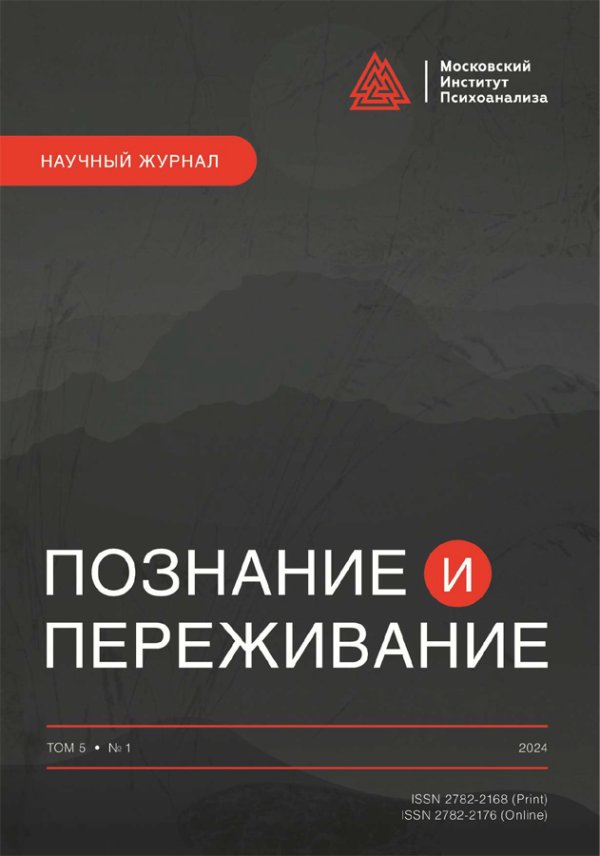
-
Cognition and experience
ISSN (print): 2782-2168, ISSN (online): 2782-2176
Founder: Moscow Institute of Psychoanalysis
Editor-in-Chief: Barabanshchikov Vladimir Aleksandrovich, Doctor of Psychology. Sciences, Professor, Corresponding Member of RAO
Frequency / Access: 4 issues per year / open
Included in: Higher Attestation Commission List, RISC
-
Polzunovskiy vestnik

-
Polzunovskiy vestnik
ISSN (print): 2072-8921, ISSN (online): 3034-3941
Founders: Polzunov Altai State Technical University; Institute for Water and Environmental Problems of the Siberian Branch of the Russian Academy of Sciences
Editor-in-Chief: Aleksey Guriev, Doctor of Technical Sciences, Professor
Frequency / Access: 4 issues per year / Open
Included in: White List (2nd level), Higher Attestation Commission List, RISC
-
Polylinguality and transcultural practices

-
Polylinguality and transcultural practices
ISSN (print): 2618-897X, ISSN (online): 2618-8988
Founder: Peoples’ Friendship University of Russia named after Patrice Lumumba (RUDN University)
Editor-in-Chief: Uldanai M. Bakhtikireeva, Doctor of Sc. (Philology), Ph.D., Professor
Frequency / Assess: 4 issues per year / Open
Included in: White List of scientific journals of the Russian Center for Scientific Research, Higher Attestation Commission List, RISC
-
Politics and Society

-
Politics and Society
ISSN (online): 2454-0684
Founder: NB-Media Ltd.
Editor-in-Chief: Popova Svetlana Mikhailovna, Doctor of Sc.
Frequency / Assess: 4 issues per year / Open
Included in: Higher Attestation Commission list, RISC
-
Police activities

-
Police activities
ISSN (online): 2454-0692
Founder: NB-Media Ltd.
Editor-in-Chief: Kurakin A.V., Doctor of Sc.
Frequency / Assess: 6 issues per year / Open
Included in: Higher Attestation Commission list, RISC
-
Police and investigative activities

-
Police and investigative activities
ISSN (online): 2409-7810
Founder: NB-Media Ltd.
Editor-in-Chief: Narutto Svetlana Vasilyevna, Doctor of Sc., Full Professor
Frequency / Assess: 4 issues per year / Open
Included in: Higher Attestation Commission list, RISC
-
Eurasian Soil Science
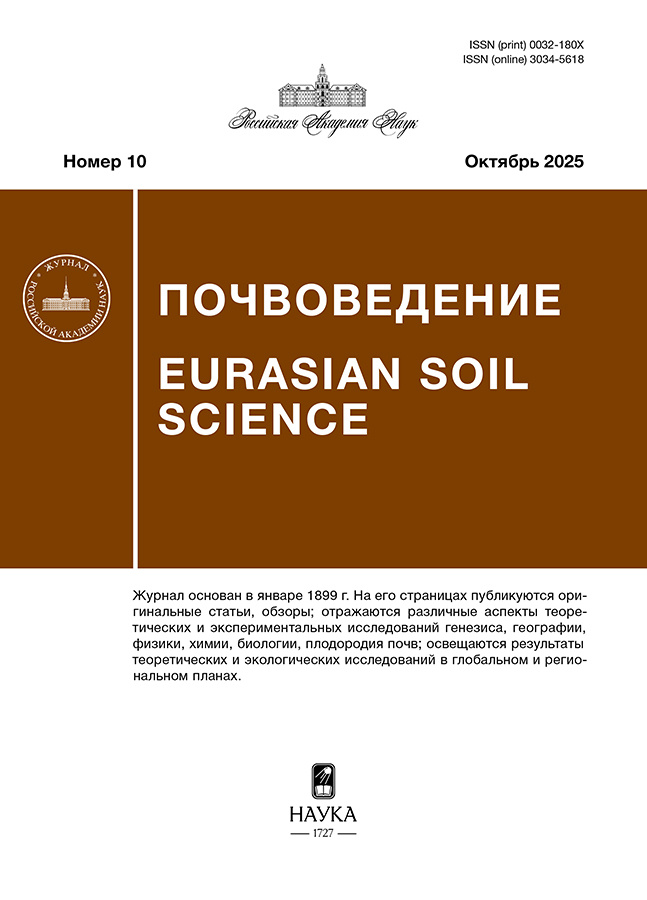
-
Eurasian Soil Science
ISSN (print): 0032-180X
Founder: Russian Academy of Sciences
Editor-in-Chief: Krasilnikov Pavel Vladimirovich, corresponding member RAS, Doctor Sc., Associate Professor
Frequency / Assess: 12 issues per year / Subscription
Included in: White List (1st level), Higher Attestation Commission List, RISC
-
Law and Politics

-
Law and Politics
ISSN (online): 2454-0706
Founder: NB-Media Ltd.
Editor-in-Chief: Danilenko Denis Vasilyevich, Doctor of Sc., Full Professor
Frequency / Assess: 12 issues per year / Open
Included in: Higher Attestation Commission list, RISC
-
Law and management

-
Law and management
ISSN (print): 2224-9133
Founder: Общество с ограниченной ответственностью "ЮРКОМПАНИ"
Editor-in-Chief: Gushchin V.V., Doctor of Sc., Full Professor
Frequency / Assess: 12 issues per year / Open
Included in: Higher Attestation Commission list, RISC
-
Law. Journal of the Higher School of Economics

-
Law. Journal of the Higher School of Economics
ISSN (print): 2072-8166
Founder: National Research University Higher School of Economics
Editor-in-Chief: Bogdanovskaya Irina, Doctor of Sc., Full Professor
Frequency / Assess: 4 issues per year / Open
Included in: White List (2nd level), Higher Attestation Commission List, RISC
-
Law: history and modernity

-
Law: history and modernity
ISSN (print): 2588-0012, ISSN (online): 3034-5448
Founder: Tambov State Technical University, Legal Center "FORUM"
Editor-in-Chief: Elena Evgenievna Orlova, Dr. Sci. (Low)
Frequency / Access: 4 issues per year / Open
Included in: Higher Attestation Commission List, RISC
-
The rule-of-low state: theory and practice
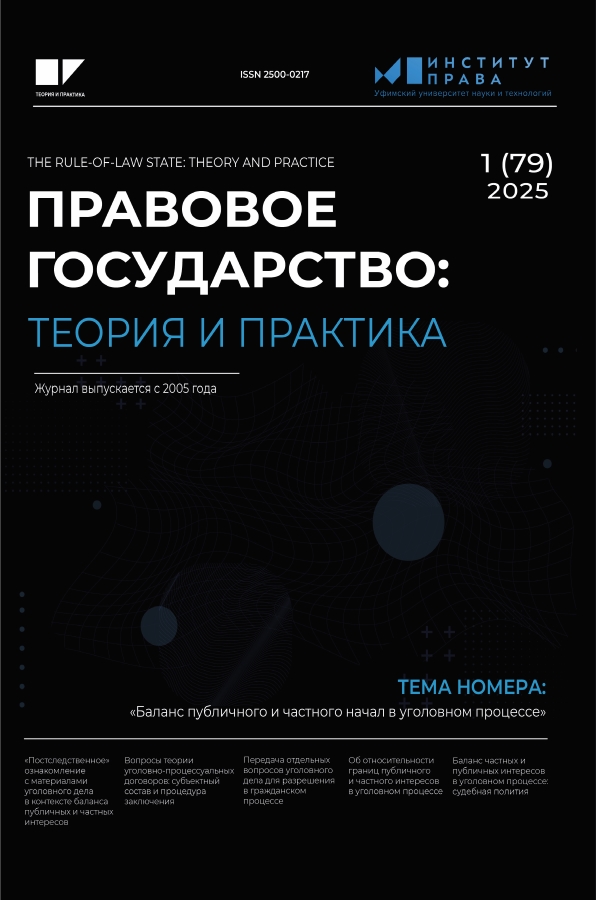
-
The rule-of-low state: theory and practice
ISSN (print): 2500-0217
Founder: Ufa University of Science and Technology
Editor-in-Chief: Gizatullin Irek Alfredovich, Cand. Sci., Associate Professor
Frequency / Access: 4 issues per year / Open
Included in: Higher Attestation Commission List, RISC
-
Energy Law Forum

-
Energy Law Forum
ISSN (print): 2312-4350, ISSN (online): 2782-6902
Founder: "Center for the development of energy law and modern legal science named after V.A. Musin"
Editor-in-Chief: Romanova Viktoriya Valeryevna, Doctor of Sc., Full Professor
Frequency / Assess: 4 issues per year / Open
Included in: Higher Attestation Commission list, RISC
-
LEGAL ORDER: History, Theory, Practice

-
LEGAL ORDER: History, Theory, Practice
ISSN (print): 2311-696X, ISSN (online): 2782-2761
Founder: ESCUELA Publishing Group
Editor-in-Chief: Mayorov Andrey V., Doctor of Sc., associate professor
Frequency / Assess: 4 issues per year / Open
Included in: Higher Attestation Commission list, RISC
-
ΠΡΑΞΗMΑ. Journal of Visual Semiotics
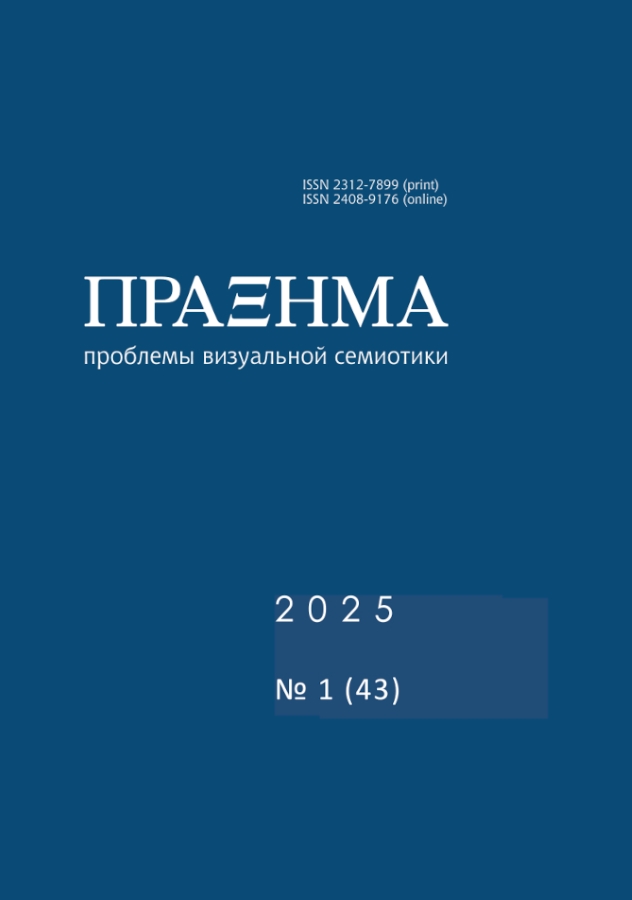
-
ΠΡΑΞΗMΑ. Journal of Visual Semiotics
ISSN (print): 2312-7899, ISSN (online): 2408-9176
Founder: Tomsk State Pedagogical University
Editor-in-Chief: Andrey Makarenko, Doctor of Sciences in Physics and Mathematics, associate professor
Frequency / Access: 4 issues per year / Open
Included in: White List (2nd level), Higher Attestation Commission List, RISC, Scopus
-
Representative government — the 21st century: legislation, comments, problems
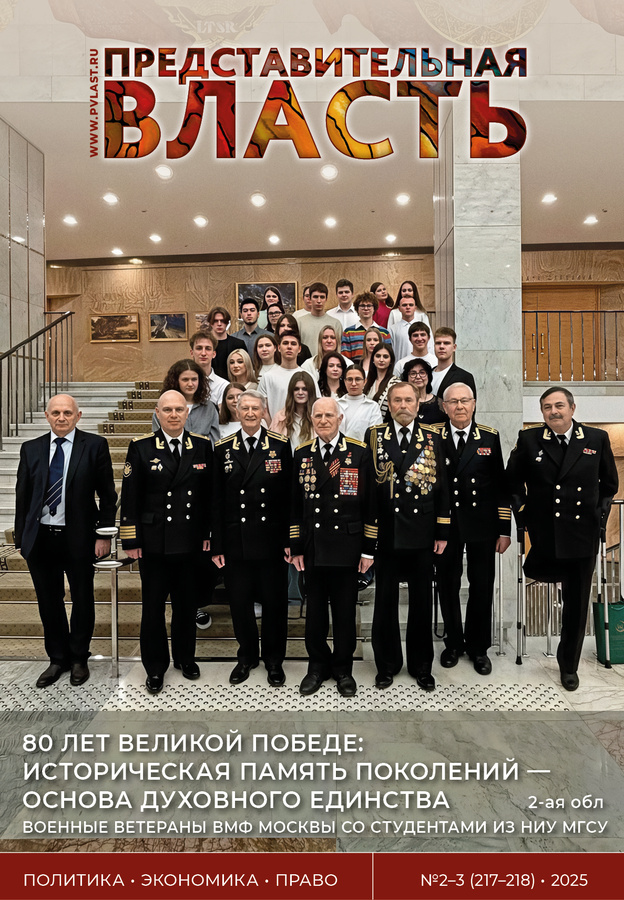
-
Representative government — the 21st century: legislation, comments, problems
ISSN (print): 2073-9532, ISSN (online): 2073-9540
Founder: Lyubimov Alexey Pavlovich
Editor-in-Chief: Lyubimov Alexey Pavlovich, Dr. Sc. (Low), Professor
Frequency / Access: 5 issues per year / Subscription
Included in: Higher Attestation Commission List, RISC
-
Instruments and Experimental Techniques
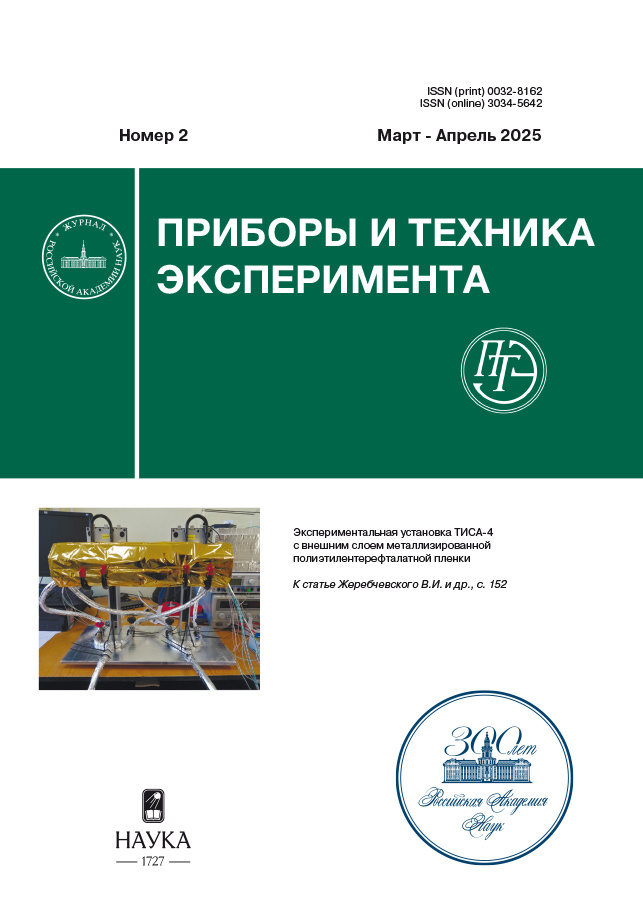
-
Instruments and Experimental Techniques
ISSN (print): 0032-8162
Founders: Russian Academy of Sciences, Kapitza Institute for Physical Problems, Russian Academy of Sciences
Editor-in-Chief: Svistov Leonid E., Doctor of Sc.
Frequency / Assess: 6 issues per year / Subscription
Included in: White List (2nd level), Higher Attestation Commission List, RISC
-
Journal of Applied Mathematics and Mechanics
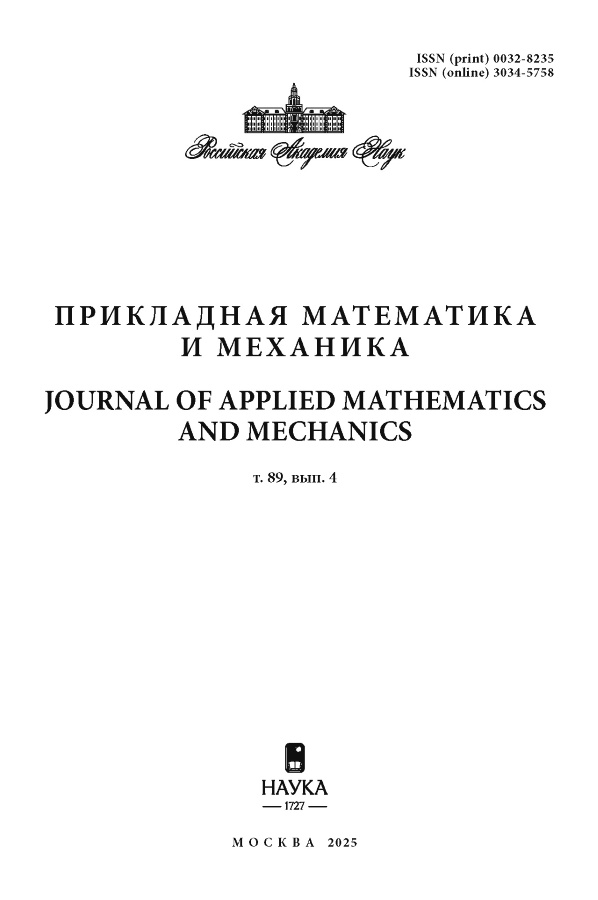
-
Journal of Applied Mathematics and Mechanics
ISSN (print): 0032-8235
Founder: Russian Academy of Sciences
Editor-in-Chief: Goryacheva I.G., academician RAS, Doctor of Sc., Full Professor
Frequency / Assess: 6 issues per year / Subscription
Included in: White List (3rd level), Higher Attestation Commission List, RISC
-
Applied Biochemistry and Microbiology
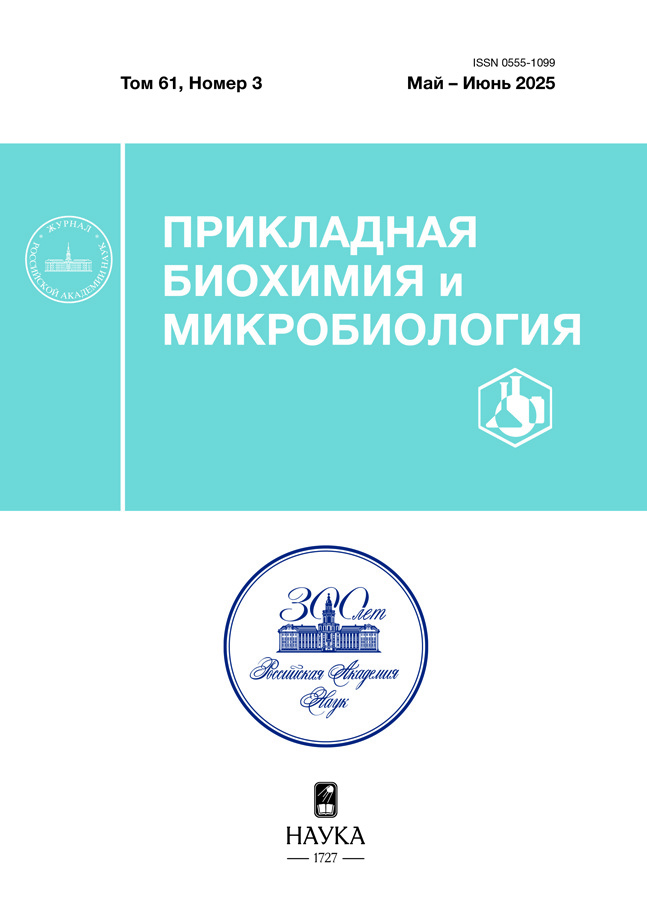
-
Applied Biochemistry and Microbiology
ISSN (print): 0555-1099
Founders: Russian Academy of Sciences, Federal State Institution "Federal Research Centre 'Fundamentals of Biotechnology' of the Russian Academy of Sciences'
Editor-in-Chief: Popov V.O., academician RAS, Doctor of Sc., Full Professor
Frequency / Assess: 6 issues per year / Subscription
Included in: White List (2nd level), Higher Attestation Commission List, RISC
-
Applied economic research

-
Applied economic research
ISSN (print): 2313-2086, ISSN (online): 2949-1908
Founder: Limited Liability Company "University of Continuing Professional Education"
Editor-in-Chief: Sokolov Alexey Pavlovich, Doctor of Sc., Professor
Frequency / Assess: 7 issues per year / Hybrid
Included in: Higher Attestation Commission list, RISC
-
Principles of the ecology

-
Principles of the ecology
ISSN (online): 2304-6465
Founder: Petrozavodsk State University
Editor-in-Chief: Andrey V. Korosov, Doctor of Sc., Professor
Frequency / Access: 4 issues per year / Open
Included in: Higher Attestation Commission List, RISC, Web of Science Core Collection
-
Arctic and Subarctic Natural Resources

-
Arctic and Subarctic Natural Resources
ISSN (print): 2618-9712, ISSN (online): 2686-9683
Founder: Academy of Sciences of Sakha (Yakutia) Republic
Editor-in-Chief: Vladimirov Leonid N., Corresponding Member of the RAS, Doctor of Sc., Full Professor
Frequency / Assess: 4 issues per year / Open
Included in: White List (4th level), Higher Attestation Commission List, RISC
-
Gaps in Russian Legislation
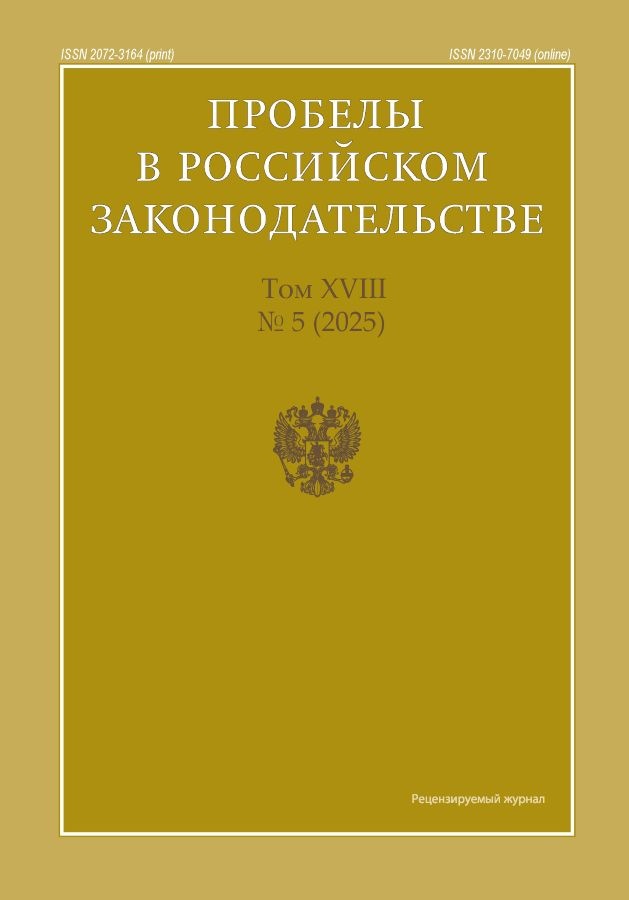
-
Gaps in Russian Legislation
ISSN (print): 2072-3164, ISSN (online): 2310-7049
Founder: Publishing house "Yur-VAK"
Editor-in-Chief: Abashidze Aslan Huseinovich - Dr. legal sciences, professor
Frequency / Access: 8 issues per year / Subscription
Included in: Higher Attestation Commission List, RISC
-
Herald of the Russian Academy of Sciences
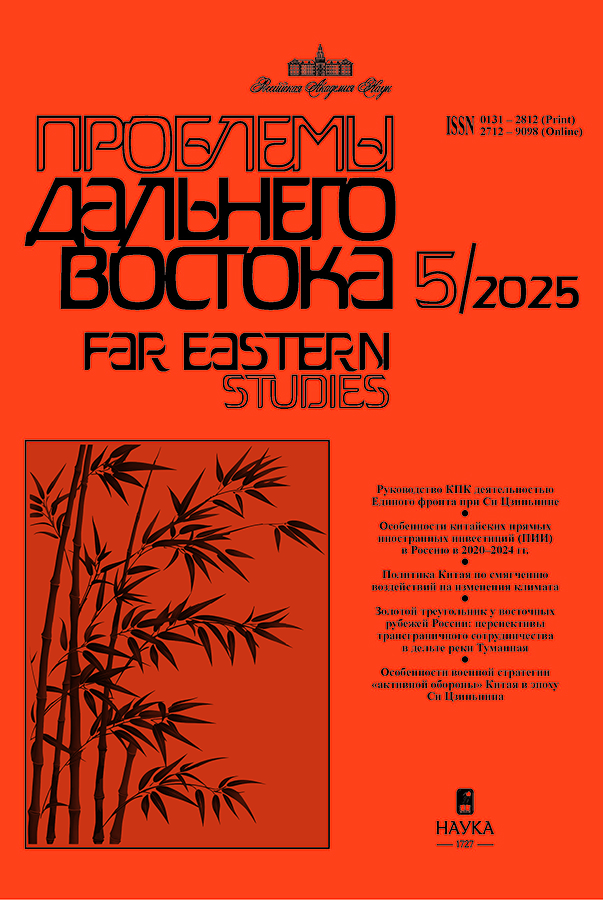
-
Herald of the Russian Academy of Sciences
ISSN (print): 0131-2812,ISSN (online): 2712-9098
Founders: Russian Academy of Sciences
Editor-in-Chief: Vinogradov Andrey V., Doctor of Sc.
Frequency / Assess: 6 issues per year / Subscription
Included in: White List (4th level), Higher Attestation Commission List, RISC
-
The Problems of historical poetics
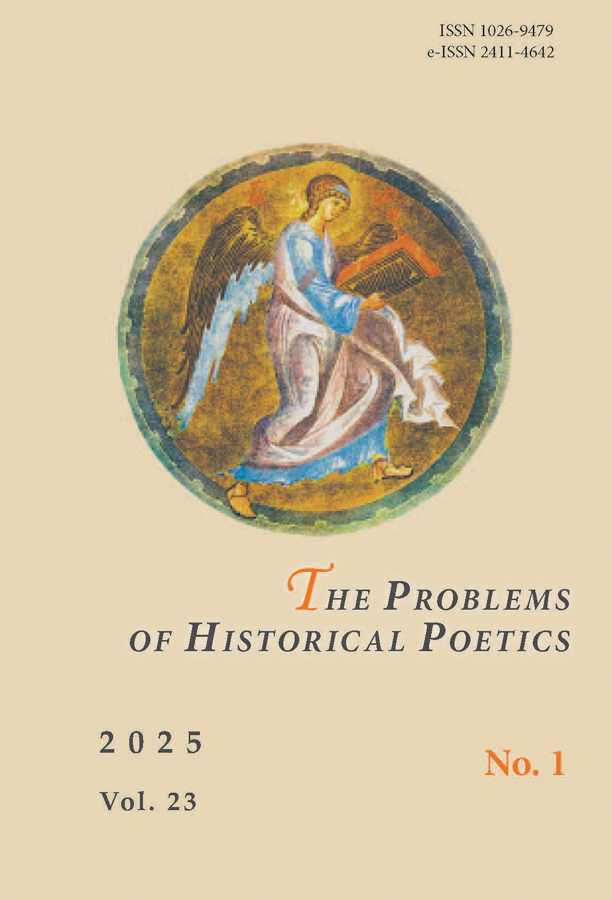
-
The Problems of historical poetics
ISSN (print): 1026-9479, ISSN (online): 2411-4642
Founder: Petrozavodsk State University
Editor-in-Chief: Vladimir N. Zakharov, Doctor of Sc., Professor
Frequency / Access: 4 issues per year / Open
Included in: White List (1st level), Higher Attestation Commission List, RISC, Scopus, Web of Science Core Collection
-
Journal of Machinery Manufacture and Reliability
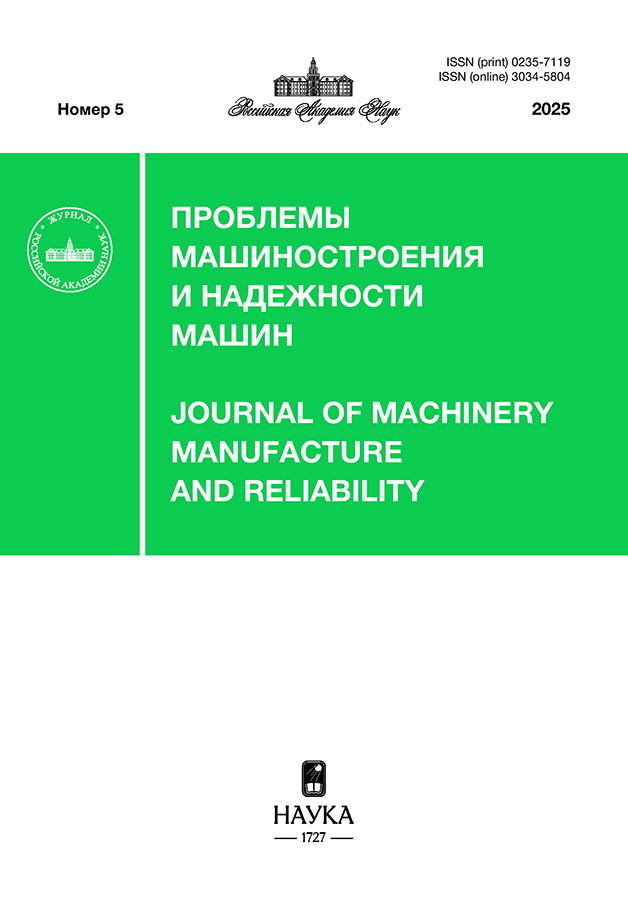
-
Journal of Machinery Manufacture and Reliability
ISSN (print): 0235-7119
Founders: Russian Academy of Sciences, Mechanical Engineering Research Institute of the RAS
Editor-in-Chief: Leonid Y. Ukrainskiy, corresponding member RAS, Doctor of Sc.
Frequency / Assess: 6 issues per year / Subscription
Included in: White List (3rd level), Higher Attestation Commission List, RISC
-
Problems of Information Transmission
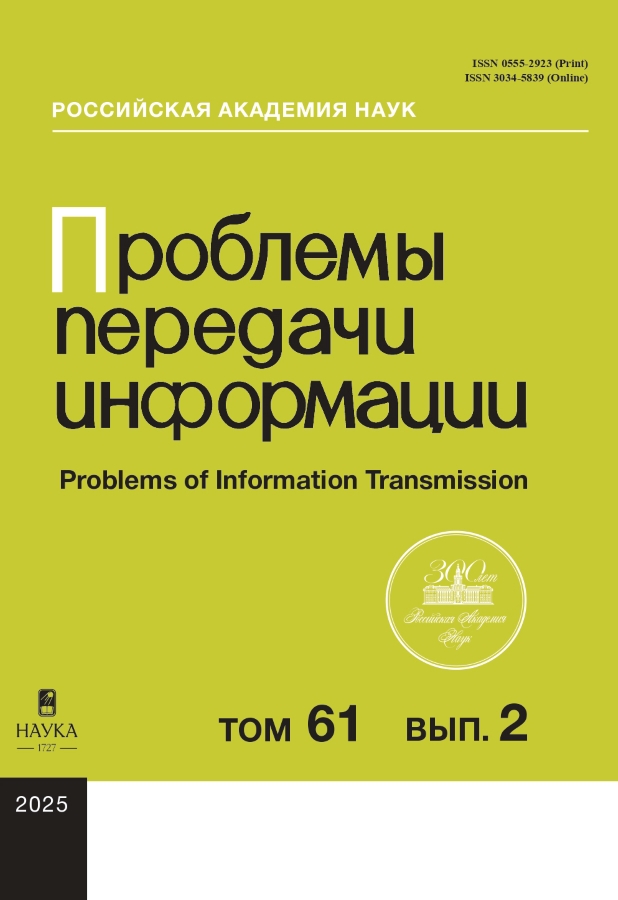
-
Problems of Information Transmission
ISSN (print): 0555-2923
Founders: Russian Academy of Sciences, Institute for Information Transmission Problems of the RAS
Editor-in-Chief: Bassalygo L.A., Doctor of Sc.
Frequency / Assess: 4 issues per year / Subscription
Included in: White List (2nd level), Higher Attestation Commission List, RISC
-
Control Sciences
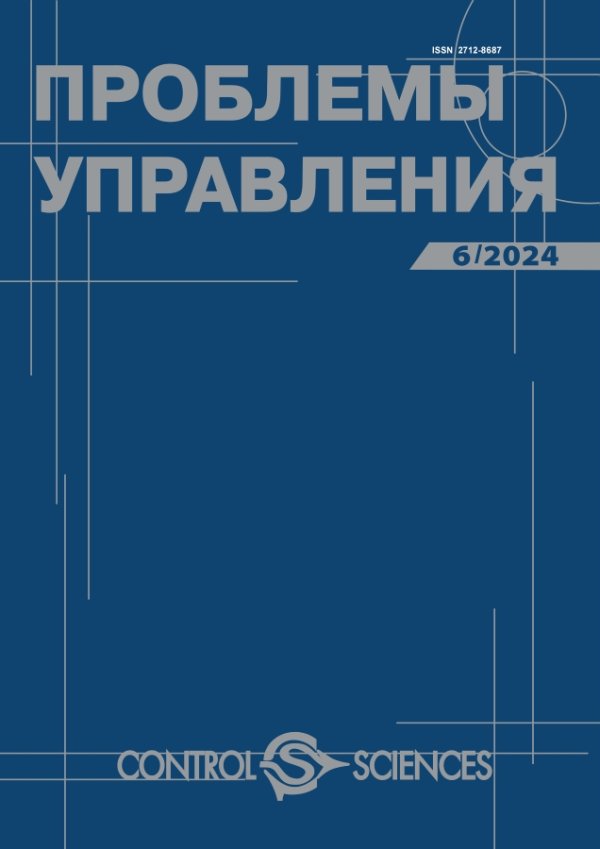
-
Control Sciences
ISSN (print): 1819-3161, ISSN (online): 2712-8687
Founder: Institute of Control Sciences of the Russian Academy of Sciences
Editor-in-Chief: Novikov D.A., Academician of RAS, Doctor of Sc.
Frequency / Access: 6 issues per year / Open
Included in: White list (4th level), Higher Attestation Commission List, RISC, MathNet
-
Economic Problems and Legal Practice
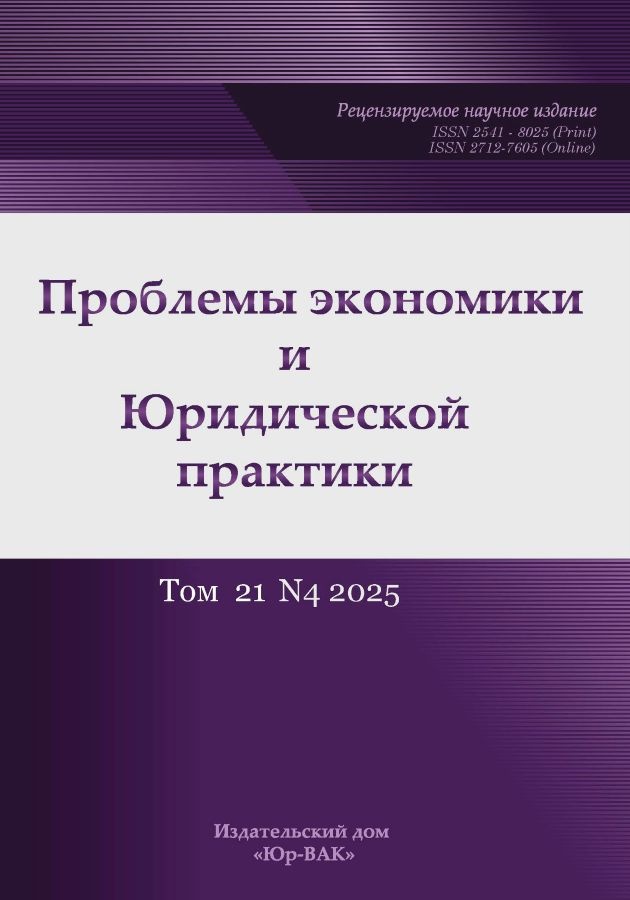
-
Economic Problems and Legal Practice
ISSN (print): 2541-8025, ISSN (online): 2712-7605
Founder: Publishing house "Yur-VAK"
Editor-in-Chief: Elena Yastrebova, PhD
Frequency / Access: 6 issues per year / Subscription
Included in: Higher Attestation Commission List, RISC
-
Software systems and computational methods

-
Software systems and computational methods
ISSN (online): 2454-0714
Founder: NB-Media Ltd.
Editor-in-Chief: Morozov M.N., PhD, Full Professor
Frequency / Assess: 4 issues per year / Open
Included in: Higher Attestation Commission list, RISC
-
Progressive economy

-
Progressive economy
ISSN (online): 2713-1211
Founder: Individual entrepreneur Lukina Kristina Ivanovna
Editor-in-Chief: Roshchina Lidiya Nikolaevna, Doctor of Sc., Full Professor
Frequency / Assess: 12 issues per year / Open
Included in: Higher Attestation Commission list, RISC
-
Food Policy and Security

-
Food Policy and Security
ISSN (print): 2499-9431, ISSN (online): 2412-8694
Founder: Creative Economy Publishers
Editor-in-Chief: Semin Aleksandr, academician RAS, Doctor of Sc., Full Professor
Frequency / Assess: 4 issues per year / Subscription
Included in: Higher Attestation Commission list, RISC
-
Programming and Computer Software

-
Programming and Computer Software
ISSN (print): 0132-3474
Founders: Russian Academy of Sciences, Lomonosov Moscow State University
Editor-in-Chief: Avetisyan A.I., academician RAS, Doctor Sc., Full Professor
Frequency/Assess: 6 issues per year/Subscription
Included in: White List (2nd level), Higher Attestation Commission List, RISC
-
Software & Systems
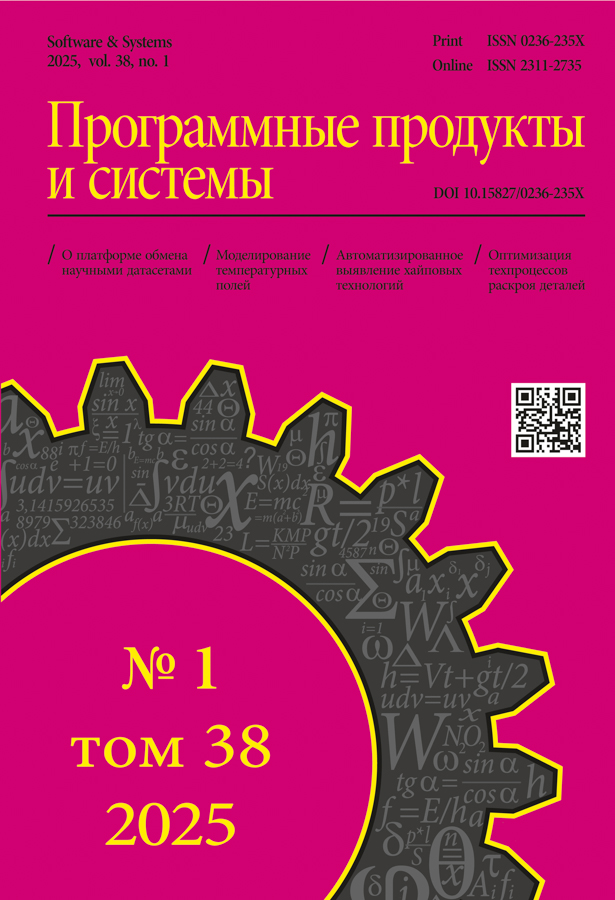
-
Software & Systems
ISSN (print): 0236-235X, ISSN (online): 2311-2735
Founder: Kupriyanov V.P.
Editor-in-Chief: Savin Gennady Ivanovich, academic, Doctor of Physical and Mathematical Sciences, Professor
Frequency / Access: 4 issues per year / Open
Included in: White List (4th level), Higher Attestation Commission List, RISC
-
Program Systems: Theory and Applications
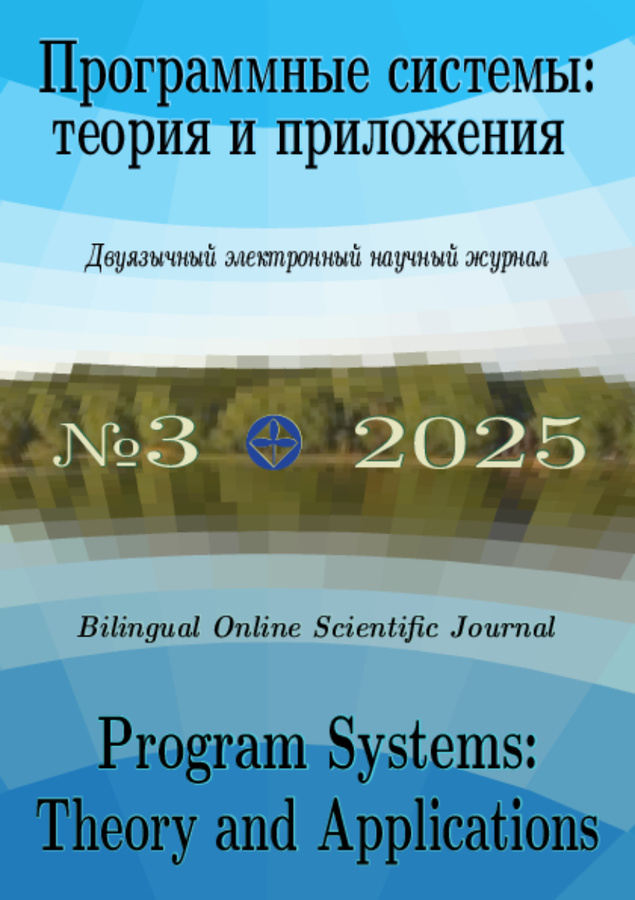
-
Program Systems: Theory and Applications
ISSN (online): 2079-3316
Founder: Organization of Russian Academy of Sciences Program Systems Institute of RAS
Editor-in-Chief: Sergei Mikhailovich Abramov, corresponding member RAS, Doctor of Sc.
Frequency / Assess: 4 issues per year / Open
Included in: White List (4rd level), Higher Attestation Commission List, RISC
-
Industrial Production and Use Elastomers

-
Industrial Production and Use Elastomers
ISSN (print): 2071-8268, ISSN (onlin): 2782-6287
Founder: OOO "OBRAKADEMNAUKA"
Editor-in-Chief: Berlin Alexander Alexandrovich,
Frequency / Assess: 4 issues per year / Subscription
Included in: Higher Attestation Commission Listv, RISC
-
Psychological Journal

-
Psychological Journal
ISSN (print): 0205-9592
Founders: Russian Academy of Sciences, Institute of Psychology of the RAS
Editor-in-Chief: Zhuravlev A.L., academician RAS, academician RAE, Doctor of Sc., Full Professor
Frequency / Assess: 6 issues per year / Subscription
Included in: White List (3rd level), Higher Attestation Commission List, RISC
-
Psihologiâ. Žurnal Vysšej školy èkonomiki

-
Psihologiâ. Žurnal Vysšej školy èkonomiki
ISSN (print): 1813-8918, ISSN (online): 2541-9226
Founder: National Research University Higher School of Economics
Editor-in-Chief: Petrovskiy Vadim, Doctor of Sc., Full Professor
Frequency / Assess: 4 issues per year / Open
Included in: White List (4th level), Higher Attestation Commission List, RISC
-
Psihologiâ i pedagogika služebnoj deâtelʹnosti

-
Psihologiâ i pedagogika služebnoj deâtelʹnosti
ISSN (print): 2658-638X, ISSN (online): 2782-5728
Founders: The Vladimir Kikot Moscow University of the Ministry of Internal Affairs of Russia; Publishing house UNITY-DANA
Editor-in-Chief: Igor Vasilievich Groshev, Doctor of Sc., Professor
Frequency / Access: 4 issues per year / Open
Included in: Higher Attestation Commission List, RISC
-
Educational Psychology in Polycultural Space

-
Educational Psychology in Polycultural Space
ISSN (print): 2073-8439
Founder: Bunin Yelets State University
Editor-in-Chief: Nikolaeva Elena I. , Doctor of Sc., Full Professor
Frequency / Assess: 4 issues per year / Open
Included in: Higher Attestation Commission List, RISC
-
Psychopharmacology & biological narcology
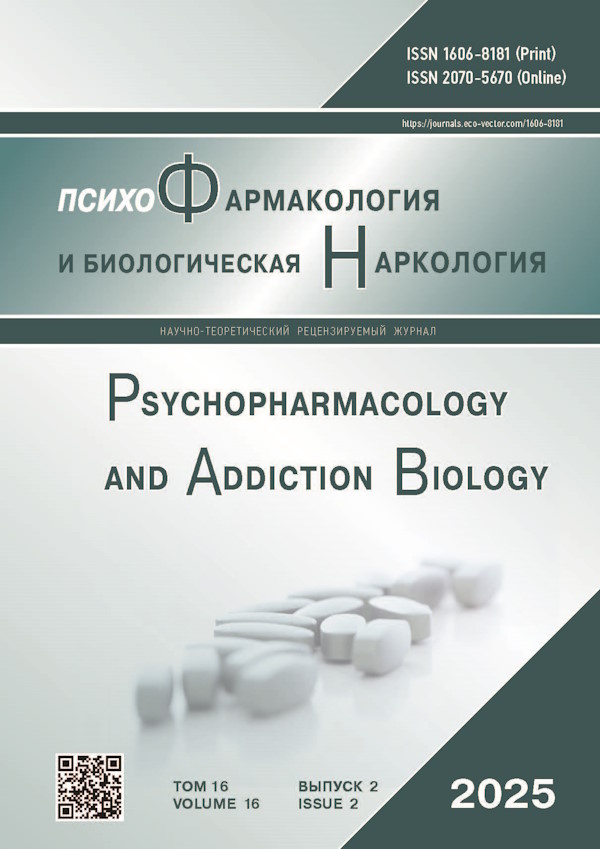
-
Psychopharmacology & biological narcology
ISSN (print): 1606-8181, ISSN (online): 2070-5670
Founder: Eco-Vector
Editor-in-Chief: Petr D. Shabanov, Doctor of Sc., Professor
Frequency / Access: 4 issues per year / Open
Included in: RISC
-
Radiation biology. Radioecology
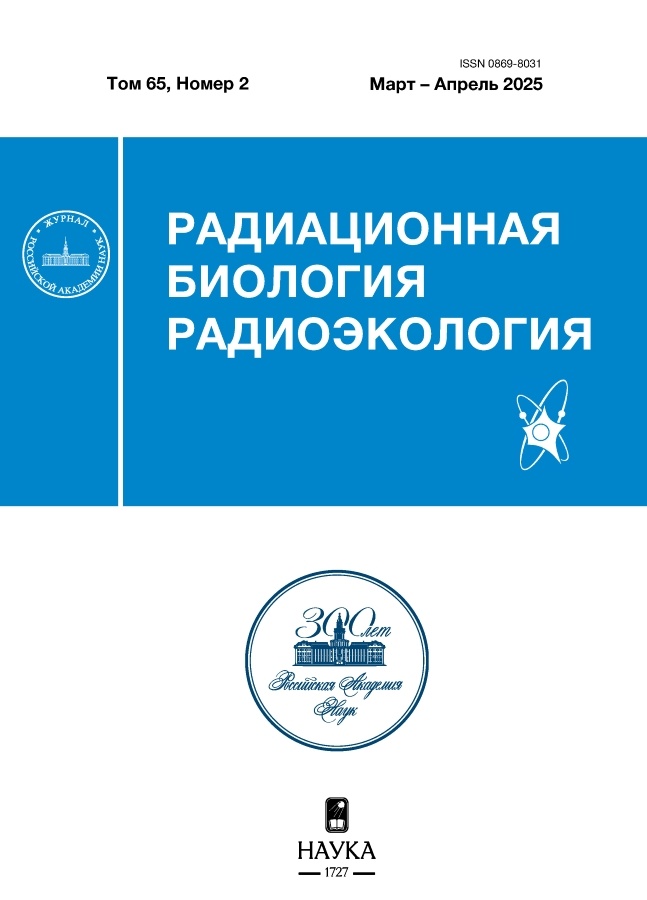
-
Radiation biology. Radioecology
ISSN (print): 0869-8031
Founder: Russian Academy of Sciences
Editor-in-Chief: Rubanovich A.V., Doctor of Sc., Full Professor
Frequency / Assess: 6 issues per year / Subscription
Included in: White List (3rd level), Higher Attestation Commission List, RISC
-
Radiotehnika

-
Radiotehnika
ISSN (print): 0033-8486
Founder: Limited Liability Company "Publishing House "Radiotekhnika"
Editor-in-Chief: Gulyaev Yu.V., Academican of RAS, Doctor of Sc., Full Professor
Frequency / Access: 12 issues per year /Hybrid
Included in: White List (4th level), Higher Attestation Commission List, RISC
-
Journal of Communications Technology and Electronics
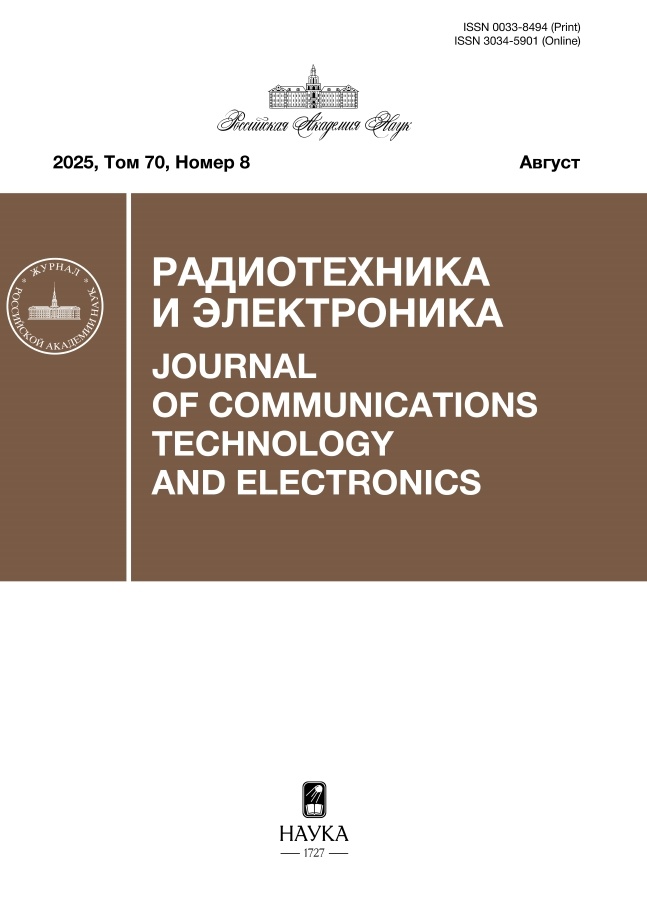
-
Journal of Communications Technology and Electronics
ISSN (print): 0033-8494
Founders: Russian Academy of Sciences, Kotelnikov Institute of Radio Engineering and Electronics of RAS
Editor-in-Chief: Gulyaev Yu.V., academician RAS, Doctor of Sc., Full Professor
Frequency / Assess: 12 issues per year / Subscription
Included in: Higher Attestation Commission List, RISC, RISC core, Web of Science (RSCI)
-
Radiochemistry
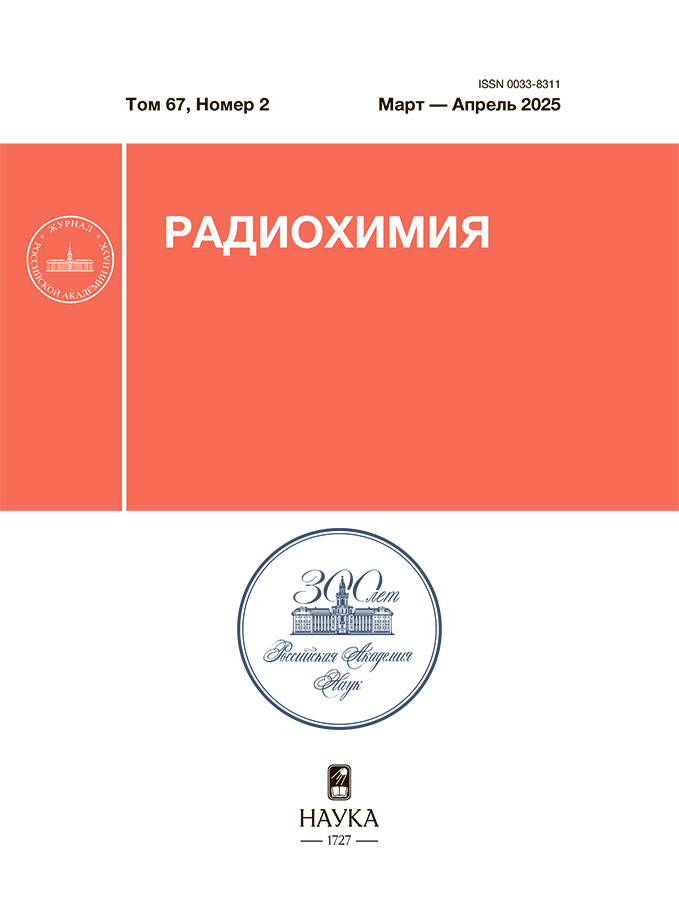
-
Radiochemistry
ISSN (print): 0033-8311
Founders: Russian Academy of Sciences, Khlopin Radium Institute
Editor-in-Chief: Myasoedov B.F., academician RAS, Doctor of Sc., Full Professor
Frequency / Assess: 6 issues per year / Subscription
Included in: White List (3rd level), Higher Attestation Commission List, RISC,
-
Melts

-
Melts
ISSN (print): 0235-0106
Founders: Russian Academy of Sciences, Ural Branch of the Russian Academy of Sciences
Editor-in-Chief: Gelchinski Boris, Doctor of Sc., Full Professor
Frequency / Assess: 6 issues per year / Subscription
Included in: White List (3rd level), Higher Attestation Commission List, RISC,
-
Vegetation Resources
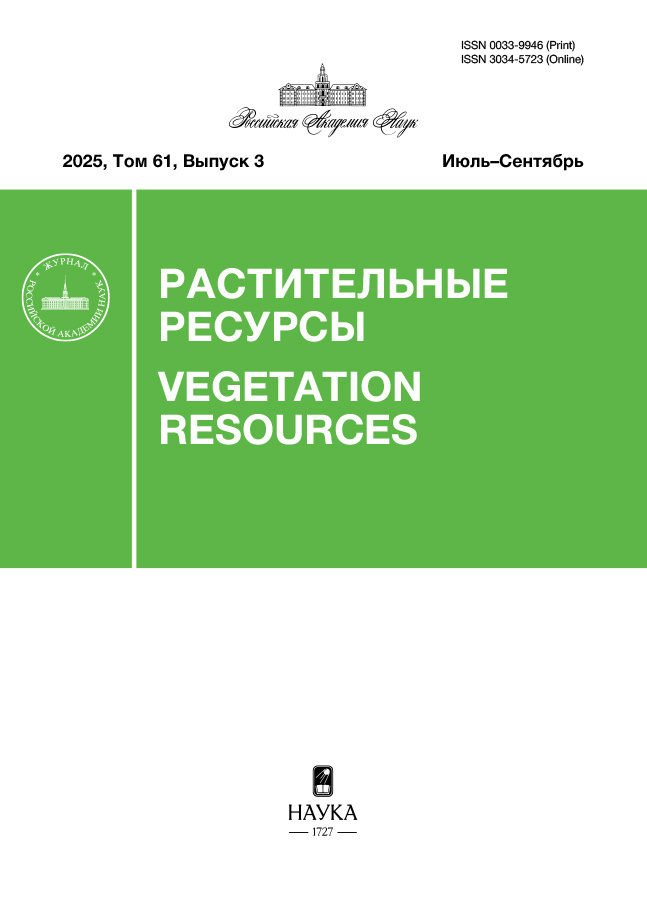
-
Vegetation Resources
ISSN (print): 0033-9946
Founder: Russian Academy of Sciences
Editor-in-Chief: Stavrova N.I., Doctor of Sc.
Frequency / Assess: 4 issues per year / Subscription
Included in: White List (4th level), Higher Attestation Commission List, RISC
-
Journal of medical rehabilitation

-
Journal of medical rehabilitation
ISSN (print): 2949-5873, ISSN (online): 2949-5881
Founder: Limited Liability Company IRBIS
Editor-in-Chief: Gameeva Elena V., Doctor of Sc., Full Professor
Frequency / Assess: 4 issues per year / Open
Included in: RISC
-
Real-world data & evidence

-
Real-world data & evidence
ISSN (online): 2782-3784
Founders: LLC “Publishing House OKI”, Association specialists in Health Technology Assessment
Editor-in-Chief: Kolbin Alexey, Doctor of Sc., Professor
Frequency / Access: 4 issues per year / Open
Included in: RISC
-
Regional and sectoral economics

-
Regional and sectoral economics
ISSN (print): 2782-4578, ISSN (online): 2949-1916
Founder: Limited Liability Company "University of Continuing Professional Education"
Editor-in-Chief: Sokolov Alexey Pavlovich, Doctor of Sc., Professor
Frequency / Assess: 6 issues per year / Hybrid
Included in: Higher Attestation Commission list, RISC
-
REGIONAL PROBLEM
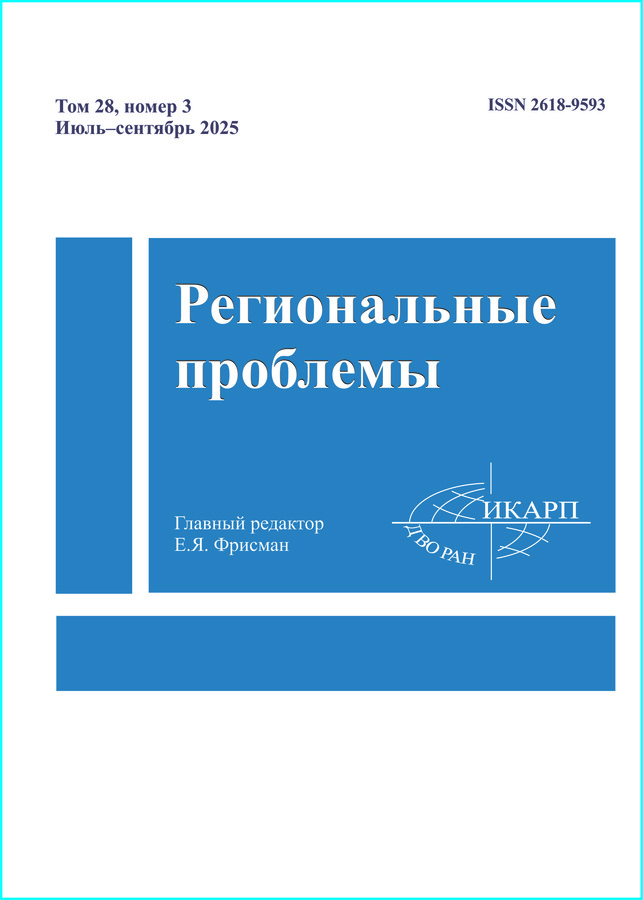
-
REGIONAL PROBLEM
ISSN (print): 1605-220X, ISSN (online): 2618-9593
Founder: Institute for Complex Analysis of Regional Problems Far Eastern Branch Russian Academy of Sciences
Editor-in-Chief: Frisman E.Ya., Corresponding Member of the Russian Academy of Sciences, Doctor of Sc.
Frequency / Access: 4 issues per year / Open
Included in: RISC
-
Russian Journal of Regional Studies

-
Russian Journal of Regional Studies
ISSN (print): 2413-1407, ISSN (online): 2587-8549
Founder: National Research Ogarev Mordovia State University
Editor-in-Chief: Dmitriy E. Glushko, Cand.Sci. (Ped.)
Frequency / Access: 4 issues per year / Open
Included in: White list (1th level), Higher Attestation Commission List, RISC, Web of Science
-
Russian Archaeology
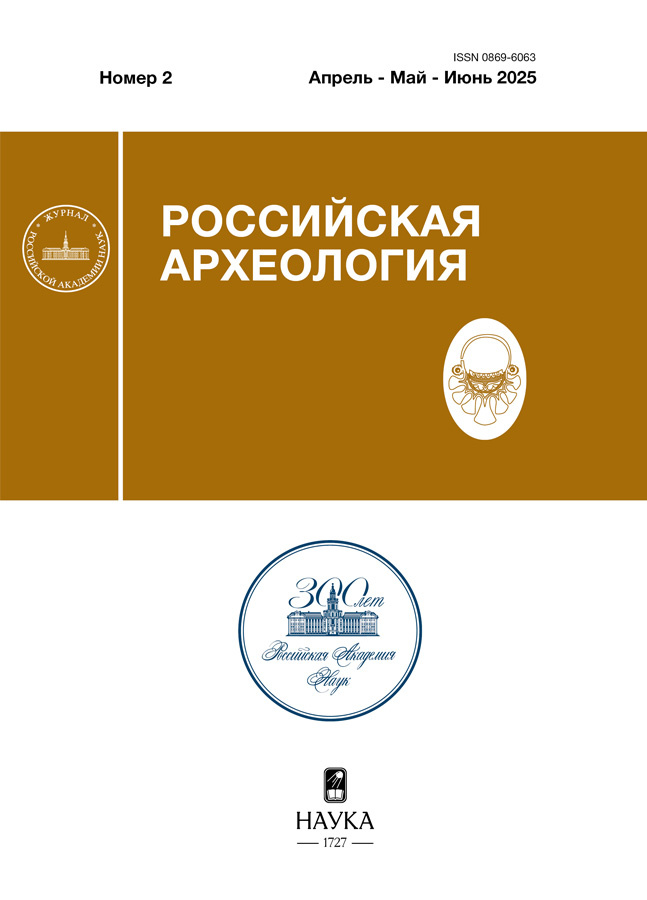
-
Russian Archaeology
ISSN (print): 0869-6063
Founders: Russian Academy of Sciences, Institute of Archaeology Russian Academy of Sciences
Editor-in-Chief: Beliaev L.A., corresponding member RAS, Doctor of Sc.
Frequency / Assess: 4 issues per year / Subscription
Included in: White List (1sd level), Higher Attestation Commission List, RISC, Scopus
-
Rossiiskaia istoriia
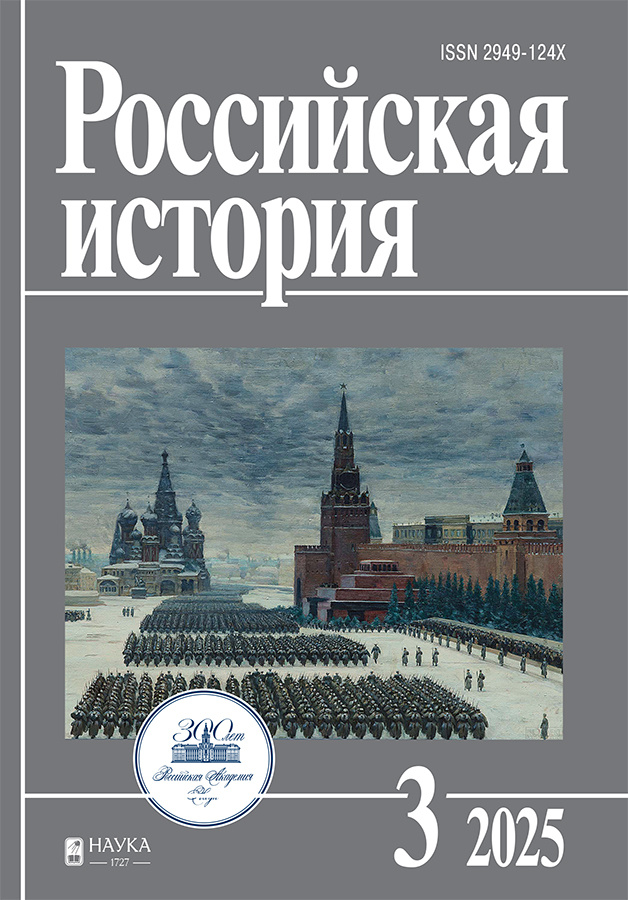
-
Rossiiskaia istoriia
ISSN (print): 2946-124X
Founders: Russian Academy of Sciences, Institute of Russian History of the Russian Academy of Sciences
Editor-in-Chief: Zakharov V.N., Doctor of Sc.
Frequency / Assess: 6 issues per year / Subscription
Included in: White List (1st level), Higher Attestation Commission List, RISC
-
Russian Agricultural Sciences

-
Russian Agricultural Sciences
ISSN (print): 2500-2627
Founder: Russian Academy of Sciences
Editor-in-Chief: Lobachevsky Ya.P., academician RAS, Doctor of Sc., Full Professor
Frequency / Assess: 6 issues per year / Subscription
Included in: White List (2nd level), Higher Attestation Commission List, RISC
-
Russian Social and Humanitarian Studies
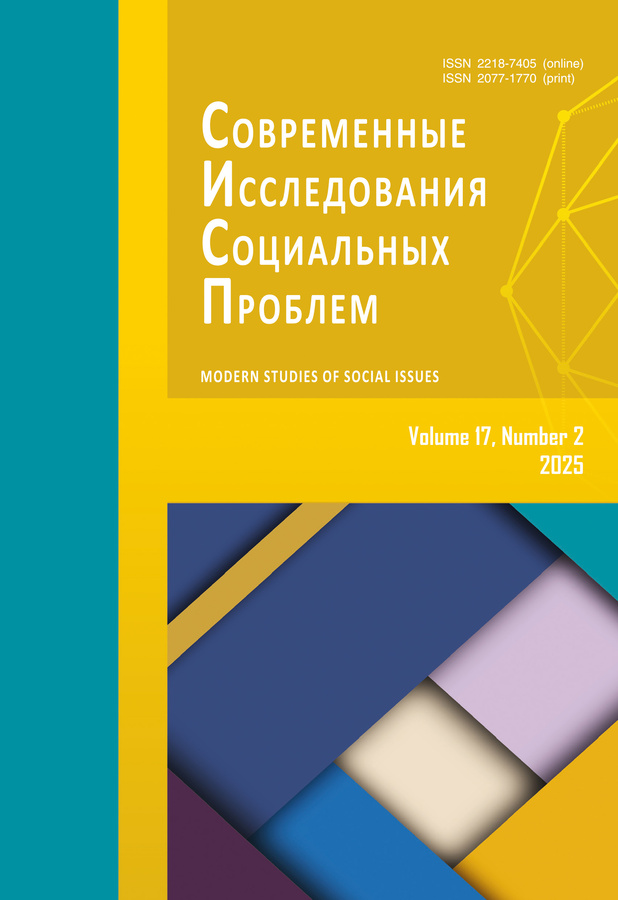
-
Russian Social and Humanitarian Studies
ISSN (online): 3033-5981
Founder and publisher: Science and Innovation Center Publishing House (Krasnoyarsk)
Editor-in-Chief: Fanuza H. Tarasova, Doctor of Philology, Professor
Frequency / Access: 4 issues per year / Open
Included in: Higher Attestation Commission List, RISC
Website: https://soc-journal.ru/
-
Russian Journal of Allergy
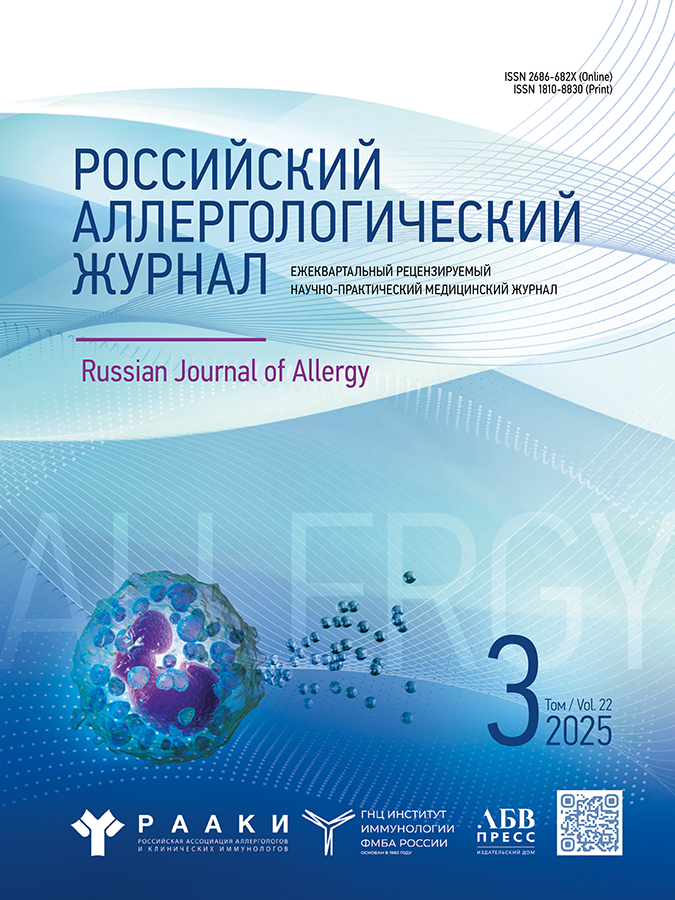
-
Russian Journal of Allergy
ISSN (print): 1810-8830, ISSN (online): 2686-682X
Founders: Limited Liability Company "Farmarus Print Media", National Research Center- Institute of Immunology Federal Medical-Biological Agency of Russia, Russian Association of Allergologists and Clinical Immunologists
Editor-in-Chief: Natal'ya I. Il'ina, MD, Dr. Sci. (Med), Professor
Frequency / Access: 4 issues per year / Subscription
Included in: White List (4th level), Higher Attestation Commission List, RISC, Scopus
-
Russian Journal of Pediatric Surgery, Anesthesia and Intensive Care

-
Russian Journal of Pediatric Surgery, Anesthesia and Intensive Care
ISSN (print): 2219-4061, ISSN (online): 2587-6554
Founder: The Russian National Research Medical University named after N.I. Pirogov, Russian Association of Pediatric Surgeons, Limited Liability Company "Eco-Vector"
Editor-in-Chief: Rozinov Vladimir Mikhailovich, Doctor of Medical Sciences, Professor
Frequency / Access: 4 issues per year / Open
Included in: White List (4th level), Higher Attestation Commission List, RISC
-
Russian Journal of Skin and Venereal Diseases
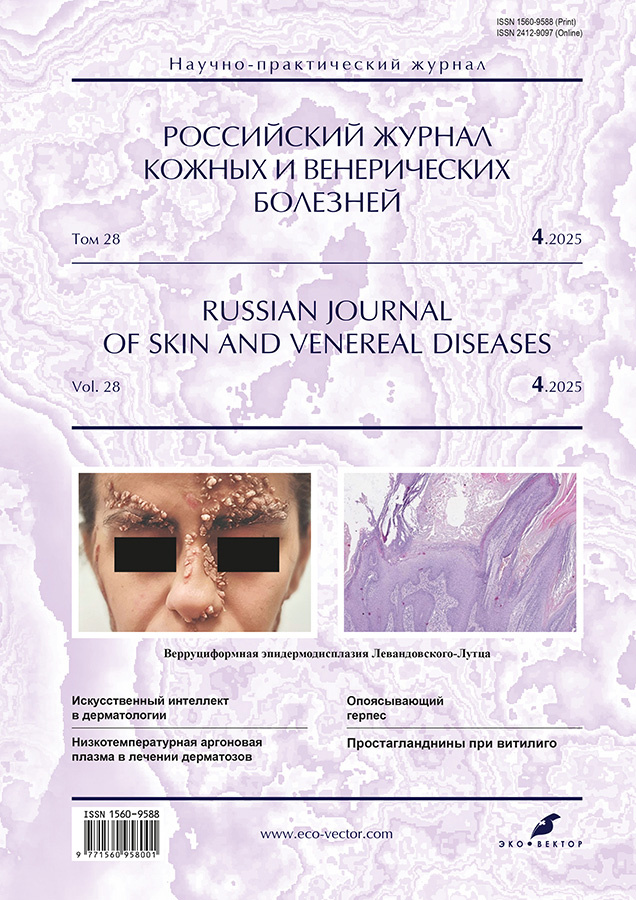
-
Russian Journal of Skin and Venereal Diseases
ISSN (print): 1560-9588, ISSN (online): 2412-9097
Founders: Izdatelstvo «Meditsyna», «Eco-Vector Publishing Group»
Editor-in-Chief: Olisova O.Yu., Doctor of Sc., Full Professor
Frequency / Access: 6 issues per year / Hybrid
Included in: White List (4th level), Higher Attestation Commission List, RISC
-
Russian journal for personalized medicine

-
Russian journal for personalized medicine
ISSN (print): 2782-3806, ISSN (online): 2782-3814
Founder: Almazov National Medical Research Centre
Editor-in-chief: Evgeny Shlyakhto, Academician of RAS, Doctor of Sc., Professor
Frequency / Access: 6 issues per year / Open
Included in: RISC
-
Russian Journal of Legal Studies (Moscow)

-
Russian Journal of Legal Studies (Moscow)
ISSN (print): 2410-7522, ISSN (online): 2410-4965
Founder: «Eco-Vector» LLC
Editor-in-Chief: Kerimov A.D., Doctor of Sc., Full Professor
Frequency / Access: 4 issues per year / Subscription
Included in: Higher Attestation Commission List, RISC
-
Russian Journal of Immunology
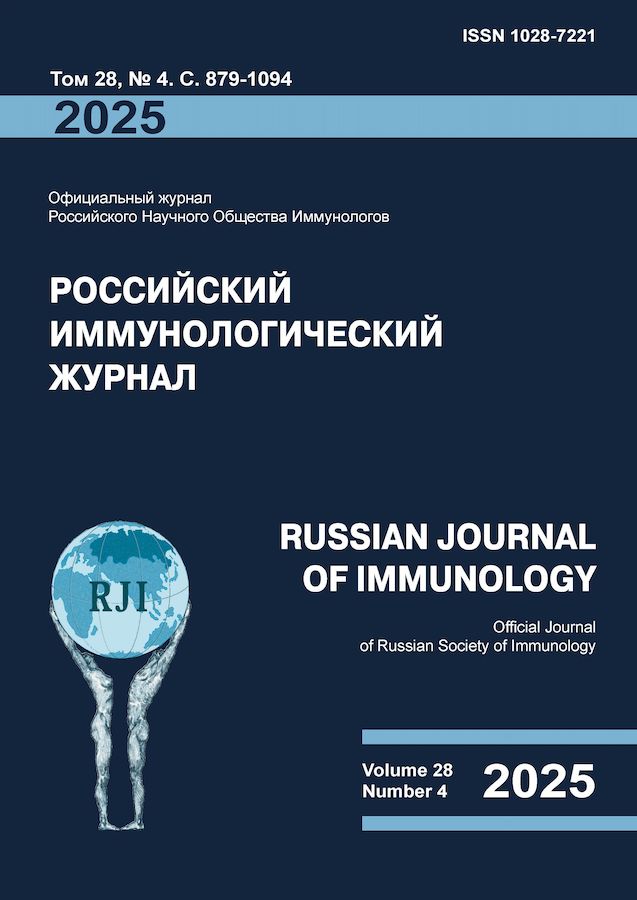
-
Russian Journal of Immunology
ISSN (print): 1028-7221, ISSN (online): 2782-7291
Founders: Nataliya K. Gorlina, Ivan G. Kozlov, Anatoliy N. Cheredeev
Editor-in-Chief: Valery A. Chereshnev, academician of RAS, Doctor of Sc., Professor
Frequency / Access: 4 issues per year / Open
Included in: White List (4th level), Higher Attestation Commission List, RISC, Scopus
-
I.P. Pavlov Russian Medical Biological Herald
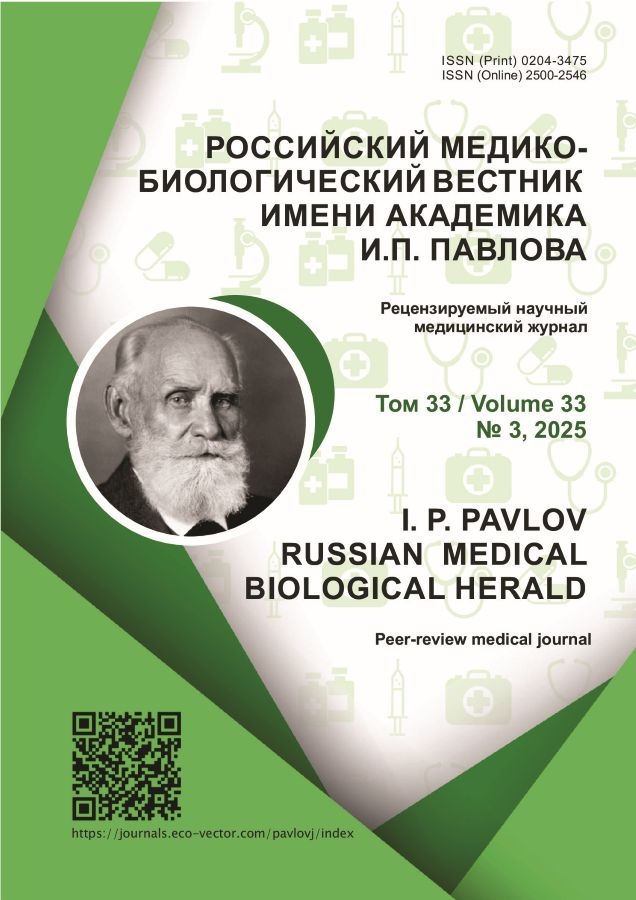
-
I.P. Pavlov Russian Medical Biological Herald
ISSN (print): 0204-3475, ISSN (online): 2500-2546
Founders: Ryazan State Medical University, Eco-Vector
Editor-in-cheif: Roman E. Kalinin, Doctor of Sc., Full Professor
Frequency / Access: 4 issues per year / Hybrid
Included in: White List (2nd level), RISC, Scopus
-
Medical Journal of the Russian Federation
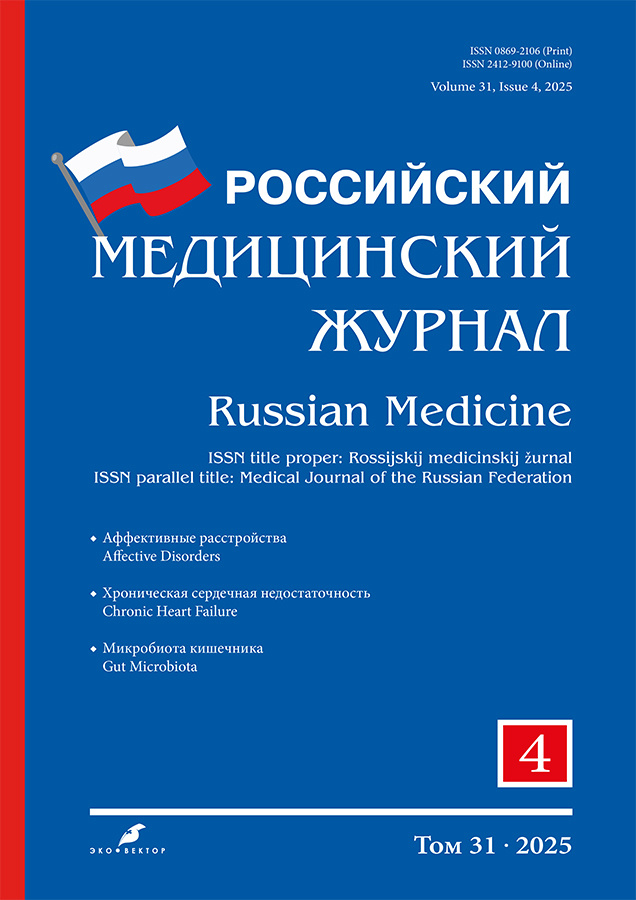
-
Medical Journal of the Russian Federation
ISSN (print): 0869-2106, ISSN (online): 2412-9100
Founder: Izdatelstvo Meditsina
Editor-in-Chief: Boris K. Romanov, MD, Dr. Sci. (Medicine)
Frequency / Access: 6 issues per year / Hybrid
Included in: White List (4rd level), Higher Attestation Commission List, RISC
-
Russian scientific bulletin

-
Russian scientific bulletin
ISSN (online): 2782-3830
Founder: Общество с ограниченной ответственностью "ЮРКОМПАНИ"
Editor-in-Chief: Usanov Vladimir Evgenievich, Academician of the RAE, Doctor of Sc., Full Professor
Frequency / Assess: 12 issues per year / Open
Included in: Higher Attestation Commission list, RISC
-
Russian neurosurgical journal named after professor A.L. Polenov

-
Russian neurosurgical journal named after professor A.L. Polenov
ISSN (print): 2071-2693
Founders: Russian Research Neurosurgical Institute named after Professor A.L. Polenov; St. Petersburg Association of Neurosurgeons
Editor-in-chief: Olyushin Viktor Emelyanovich, Doctor of Medical Sciences, Professor
Frequency / Access: 4 issues per year / Open
Included in: Higher Attestation Commission List, RISC
-
Russian Journal of Oncology
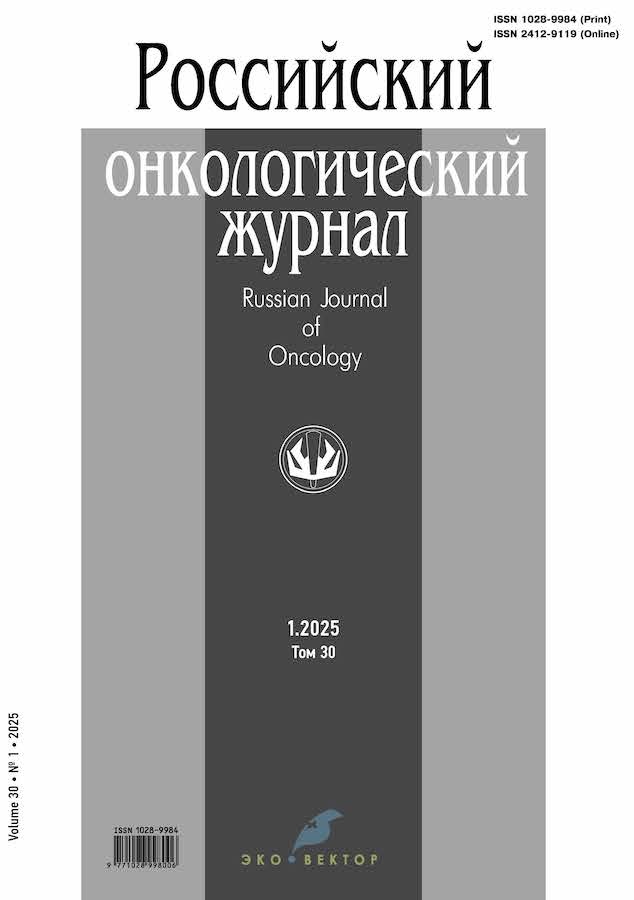
-
Russian Journal of Oncology
ISSN (print): 1028-9984, ISSN (online): 2412-9119
Founders: Izdatelstvo "Meditsyna", Eco-Vector Publishing Group
Editor-in-Chief: Alexander Fedorovich Lazarev, Doctor of Medical Sciences, Professor
Frequency / Access: 6 issues per year / Hybrid
Included in: White List (4th level), Higher Attestation Commission List, RISC
-
Russian Family Doctor
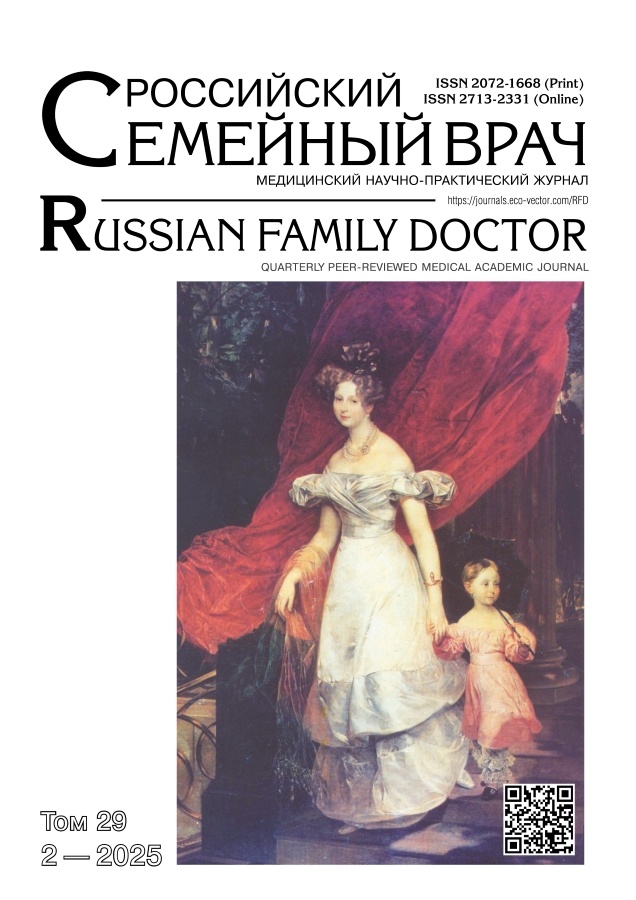
-
Russian Family Doctor
ISSN (print): 2072-1668, ISSN (online): 2713-2331
Founders: North-Western State Medical University named after I.I. Mechnikov, «Eco-Vector» LLC
Editor-in-Chief: Kuznetsova O.Yu., Doctor of Sc., Full Professor
Frequency / Access: 4 issues per year / Subscription
Included in: RISC
-
Russian Journal of Dentistry
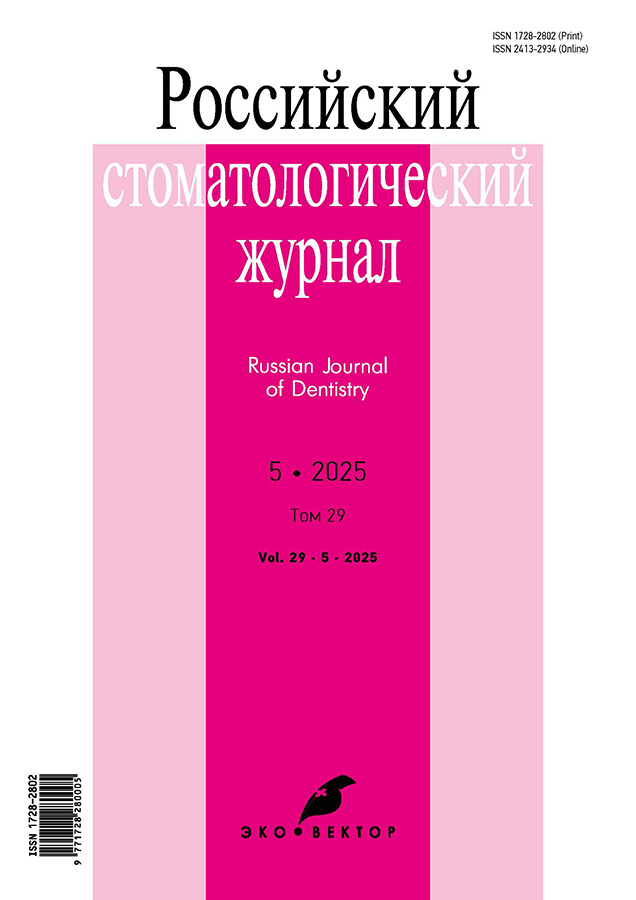
-
Russian Journal of Dentistry
ISSN (print): 1728-2802, ISSN (online): 2413-2934
Founders: Publishing house «Medicina», «Eco-Vector» LLC
Editor-in-Chief: Olesova V.N., Doctor of Sc., Full Professor
Frequency / Access: 6 issues per year / Hybrid
Included in: White list (4th level), Higher Attestation Commission List, RISC
-
Russian Journal of Physiology

-
Russian Journal of Physiology
ISSN (print): 0869-9139 , ISSN (online): 2658-655X
Founder: Russian Academy of Sciences
Editor-in-Chief: Magazanik Lev G., academician RAS, Doctor of Sc., Full Professor
Frequency / Assess: 12 issues per year / Subscription
Included in: White List (4th level), Higher Attestation Commission List, RISC
-
Russian surgical journal

-
Russian surgical journal
ISSN (print): 3034-7270, ISSN (online): 3033-5604
Founder: Almazov National Medical Research Centre
Editor-in-chief: Anatoly Mikhailovich Ignashov, Doctor of Sc., Professor
Frequency / Access: 4 issues per year / Open
Included in: RISC
-
Russian economic bulletin

-
Russian economic bulletin
ISSN (online): 2658-5286
Founder: Self-employed Klyueva M.M. (Belgorod)
Editor-in-Chief: Kolesnikov Andrey Viktorovich, Corresponding Member of the RAS, Doctor of Sc., Associate professor
Frequency / Assess: 6 issues per year / Open
Included in: Higher Attestation Commission list, RISC
-
Rossijskoe pravosudie

-
Rossijskoe pravosudie
ISSN (print): 2072-909X
Founder: Russian State University of Justice named after V.M. Lebedev
Editor-in-Chief: Arkhipova Lyudmila B., Candidate of Juridical Sciences
Frequency / Access: 12 issues per year / Subscription
Included in: Higher Attestation Commission List, RISC
-
Rossiâ i novye gosudarstva Evrazii

-
Rossiâ i novye gosudarstva Evrazii
ISSN (print): 2073-4786
Founder: "Primakov National Research Institute of World Economy and International Relations of the Russian Academy of Sciences" (IMEMO)
Editor-in-Chief: Rabotyazhev Nikolai Vladimirovich, Doctor of Sc.
Frequency / Assess: 4 issues per year / Open
Included in: Higher Attestation Commission list, RISC
-
Russian Language Studies

-
Russian Language Studies
ISSN (print): 2618-8163, ISSN (online): 2618-8171
Founder: Peoples’ Friendship University of Russia named after Patrice Lumumba (RUDN University)
Editor-in-Chief: Viktor M. Shaklein, Doctor of Philology, Professor
Frequency / Assess: 4 issues per year / Open
Included in: White List (3 rd level), Higher Attestation Commission List, RISC
-
Russian Literature
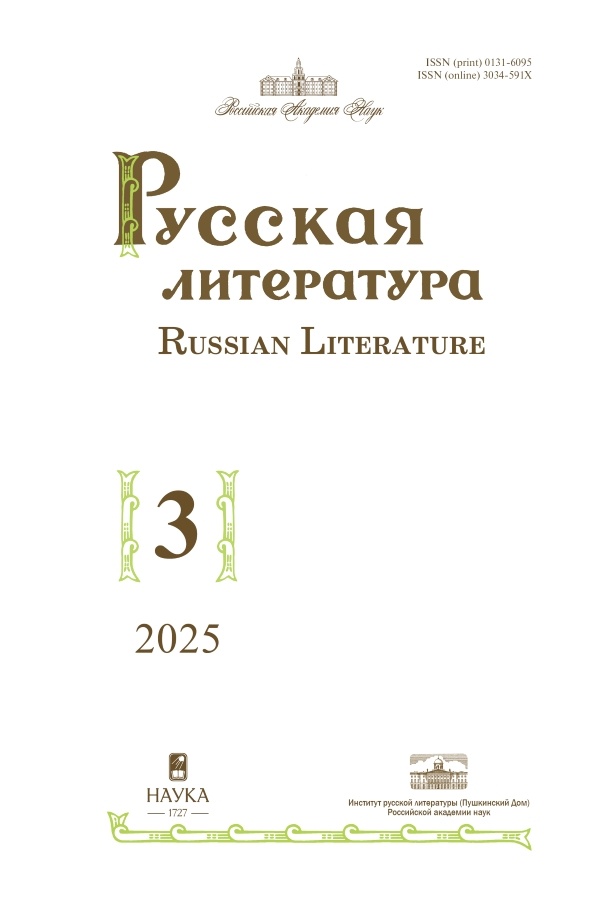
-
Russian Literature
ISSN (print): 0131-6095
Founders: Russian Academy of Sciences, Institute of Russian Literature, Russian Academy of Science
Editor-in-Chief: Bagno V.E., corresponding member RAS, Doctor of Sc., Full Professor
Frequency / Assess: 4 issues per year / Subscription
Included in: White List (1st level), Higher Attestation Commission List, RISC, Scopus,
-
Russian Speech
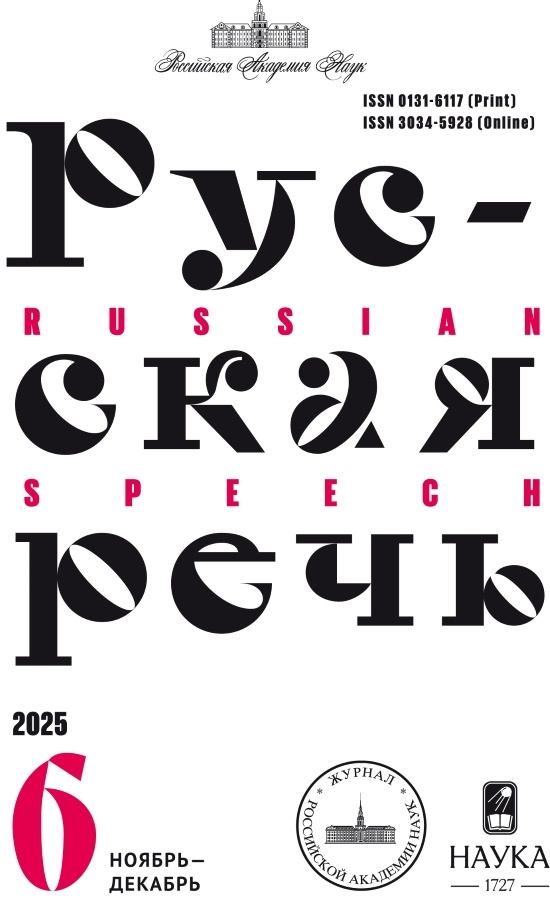
-
Russian Speech
ISSN (print): 0131-6117
Founders: Russian Academy of Sciences, Vinogradov Russian Language Institute (RAS), Pushkin State Russian Language Institute
Editor-in-Chief: Shmelev Alexei D., corresponding member RAS, Doctor of Sc., Full Professor
Frequency / Assess: 6 issues per year / Subscription
Included in: White List (4th level), Higher Attestation Commission ist, RISC, Scopus
-
Samara Journal of Science

-
Samara Journal of Science
ISSN (print): 2309-4370, ISSN (online): 2782-3016
Founder: Samara State University of Social Sciences and Education
Editor-in-Chief: Oleg D. Mochalov, Doctor of Sc., Professor
Frequency / Access: 4 issues per year / Open
Included in: Higher Attestation Commission List, RISC
-
The collection of scientific papers of the Donetsk Railway Transport Institute

-
The collection of scientific papers of the Donetsk Railway Transport Institute
ISSN (print): 1993-5579
Founder: Donetsk Railway Transport Institute
Editor-in-Chief: M.N. Cheptsov, Doctor of Technical Sciences, Professor
Frequency / Access: 4 issues per year / Open
Included in: Higher Attestation Commission List, RISC
-
Sever i rynok: formirovanie èkonomičeskogo porâdka

-
Sever i rynok: formirovanie èkonomičeskogo porâdka
ISSN (print): 2220-802X
Founder: The Russian Academy of Sciences, Federal Research Centre Kola Science Centre
Editor-in-Chief: Fedoseev Sergey V., Doctor of Sc.
Frequency / Access: 4 issues per year / Open
Included in: White List (4th level), Higher Attestation Commission List, RISC, Scopus
-
Northern Russian Dialects

-
Northern Russian Dialects
ISSN (print): 0134-8515
Founder: Institute for Linguistic Studies, Russian Academy of Sciences
Editor-in-Chief: E. Puritskaya, Cand. Philol.
Frequency / Access: 1 issues per year / Open
Included in: Higher Attestation Commission List, RISC
-
NORTHERN ARCHIVES AND EXPEDITIONS

-
NORTHERN ARCHIVES AND EXPEDITIONS
ISSN (print): 2542-1158
Founder: LLC "MCAS Krasnoyarsk"
Editor-in-Chief: Koptseva Natalia Petrovna, Dr. Sc., Professor
Frequency / Assess: 4 issues per year / Subscription
Included in: Higher Attestation Commission list, RISC
-
Earthquake engineering. Constructions safety

-
Earthquake engineering. Constructions safety
ISSN (print): 1681-6560, ISSN (online): 2618-9283
Founder: Bubis A.A.
Editor-in-Chief: Vedyakov I.I., Academician of the Russian Engineering Academy, Doctor of Sc., Professor
Frequency / Assess: 6 issues per year / Open
Included in: White List (3rd level), Higher Attestation Commission List, RISC
-
Semiotic studies

-
Semiotic studies
ISSN (print): 2782-2966, ISSN (online): 2782-2958
Founder: Samara National Research University
Editor-in-Chief: Aleksandr Y. Nesterov, Dr Sciences (philosophy), Associate Professor
Frequency / Assess: 4 issues per year / Open
Included in: Higher Attestation Commission List, RISC
-
Sensory Systems
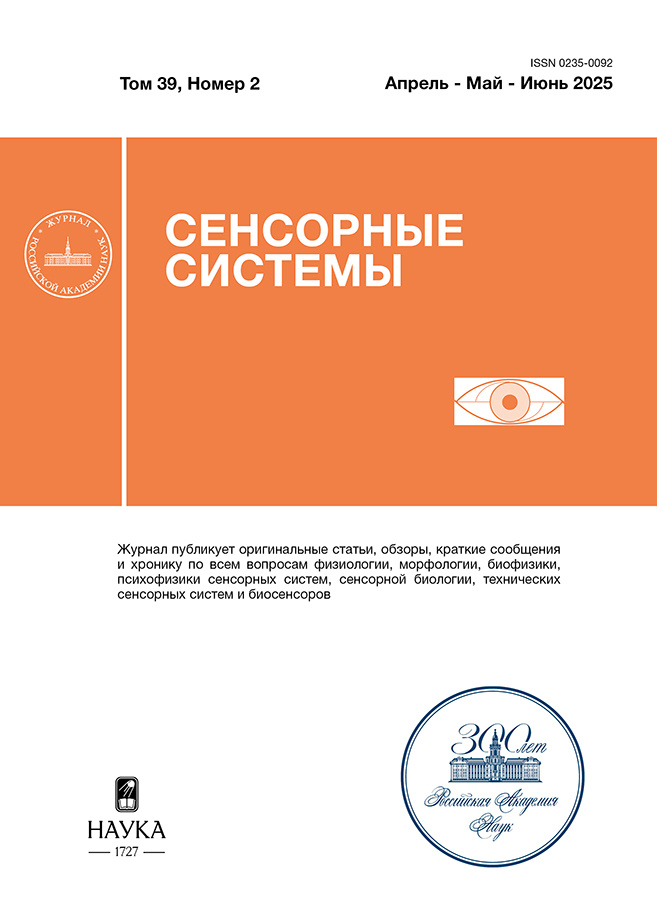
-
Sensory Systems
ISSN (print): 0235-0092
Founder: Russian Academy of Sciences
Editor-in-Chief: Firsov M.L., corresponding member RAS, Doctor of Sc.
Frequency / Assess: 4 issues per year / Subscription
Included in: White List (4th level), Higher Attestation Commission List, RISC
-
Sechenov Medical Journal

-
Sechenov Medical Journal
ISSN (print): 2218-7332, ISSN (online): 2658-3348
Founder: Federal State Autonomous Educational Institution of Higher EducationI.M. Sechenov First Moscow State Medical University of the Ministry of Healthacare of the Russian Federation (Sechenovskiy University)
Editor-in-Chief: Glybochko Peter V., Academician of Russian Academy of Sciences, Doctor of Sc., Professor
Frequency / Access: 4 issues per year / Open
Included in: White list (4th level), Higher Attestation Commission List, RISC, Scopus
-
Siberian journal of anthropology

-
Siberian journal of anthropology
ISSN (print): 2542-1816
Founder: Krasnoyarsk regional public organization «Commonwealth of Educators of Krasnoyarsk Krai»
Editor-in-Chief: Koptseva Natalia Petrovna, Dr. Sc., Professor
Frequency / Assess: 4 issues per year / Subscription
Included in: Higher Attestation Commission list, RISC
-
Siberian Herald of Psychiatry and Addiction Psychiatry

-
Siberian Herald of Psychiatry and Addiction Psychiatry
ISSN (print): 1810-3111, ISSN (online): 2587-6716
Founder: Federal State Budgetary Scientific Institution
Editor-in-Chief: Bokhan Nikolai A., academician of the RAS, Doctor of Sc., Full Professor
Frequency / Assess: 4 issues per year / Open
Included in: Higher Attestation Commission list, RISC
-
Siberian Journal of Economic and Business Studies
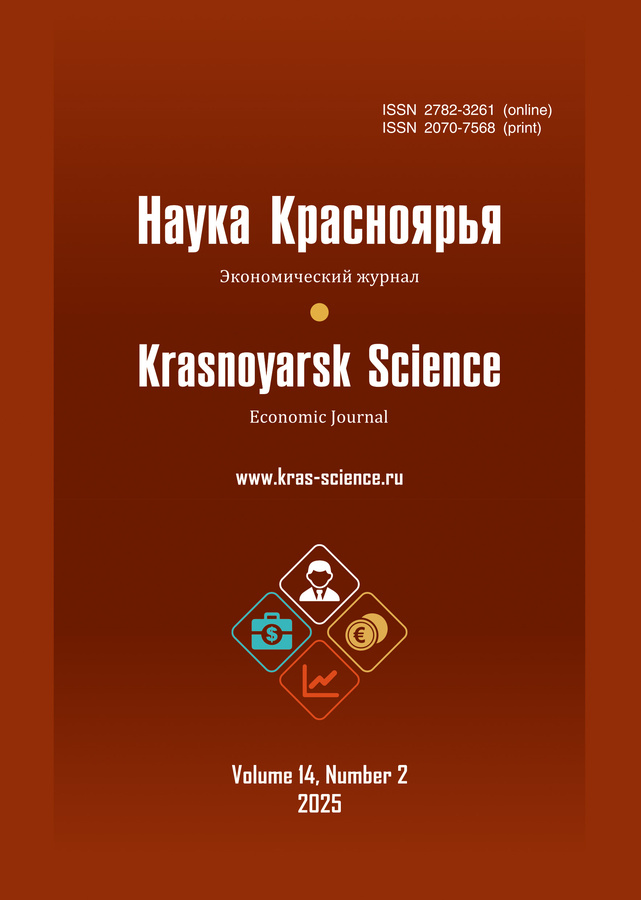
-
Siberian Journal of Economic and Business Studies
ISSN (online): 3033-5973
Founder and publisher: Science and Innovation Center Publishing House
Editor-in-Chief: Ivan D. Kotliarov, PhD, Associate professor
Frequency / Access: 4 issues per year / Open
Included in: Higher Attestation Commission List, RISC
Website: https://kras-science.ru
-
SIBERIAN ART HISTORY JOURNAL

-
SIBERIAN ART HISTORY JOURNAL
ISSN (online): 2782-4926
Founder: Krasnoyarsk regional public organization «Commonwealth of Educators of Krasnoyarsk Krai»
Editor-in-Chief: Koptseva Natalia Petrovna, Dr. Sc., Professor
Frequency / Assess: 4 issues per year / Subscription
Included in: Higher Attestation Commission list, RISC
-
Siberian Journal of Forest Science
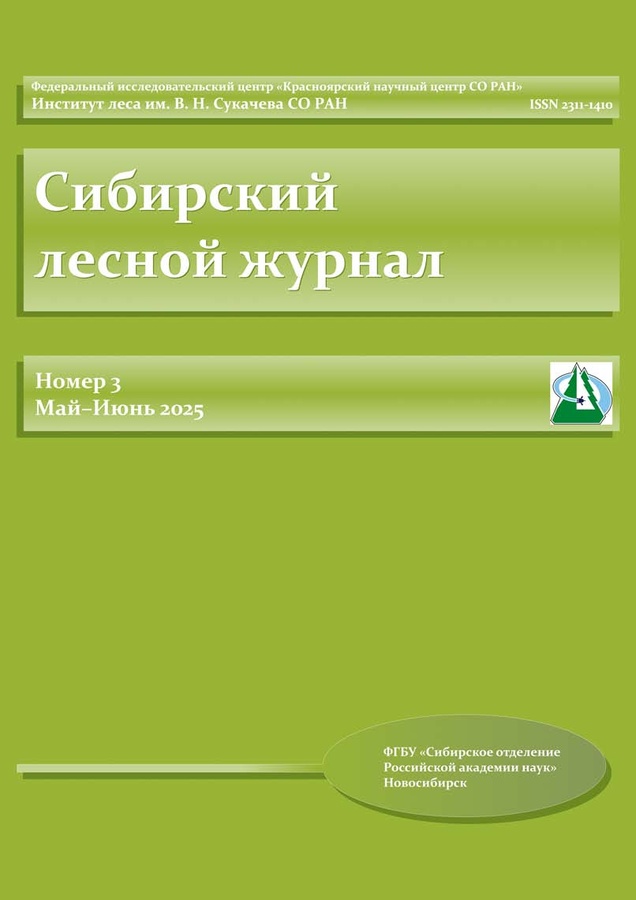
-
Siberian Journal of Forest Science
ISSN (print): 2311-1410, ISSN (online): 2312-2099
Founder: "Krasnoyarsk Science Center" of the Siberian Branch of the Russian Academy of Sciences
Editor-in-Chief: Onuchin Alexander Alexandrovich, Doctor of Sc., Full Professor
Frequency / Access: 6 issues per year / Open
Included in: Higher Attestation Commission List, RISC
-
Sibirskij filologičeskij žurnal

-
Sibirskij filologičeskij žurnal
ISSN (print): 1813-7083
Founders: Institute of Philology of the Siberian Branch of RAS; Siberian Branch of RAS; Altai State University; Irkutsk State University; Kemerovo State University; Novosibirsk State Pedagogical University; Novosibirsk State University; Tomsk State Pedagogical University; Tomsk State University
Editor-in-Chief: Igor V. Silantyev, Corresponding Member of RAS, Doctor of Sc., Professor
Frequency / Access: 4 issues per year / Open
Included in: White List (3rd level), Higher Attestation Commission List, RISC, Scopus
-
Siberian Medical Review

-
Siberian Medical Review
ISSN (print): 1819-9496, ISSN (online): 2500-0136
Founder: Federal state budget institution of higher education
Editor-in-Chief: Protopopov Aleksey Vladimirovich, Doctor of Sc., Full Professor
Frequency / Assess: 6 issues per year / Open
Included in: White list (4th level), Higher Attestation Commission List, RISC, Scopus
-
Siberian Law Review
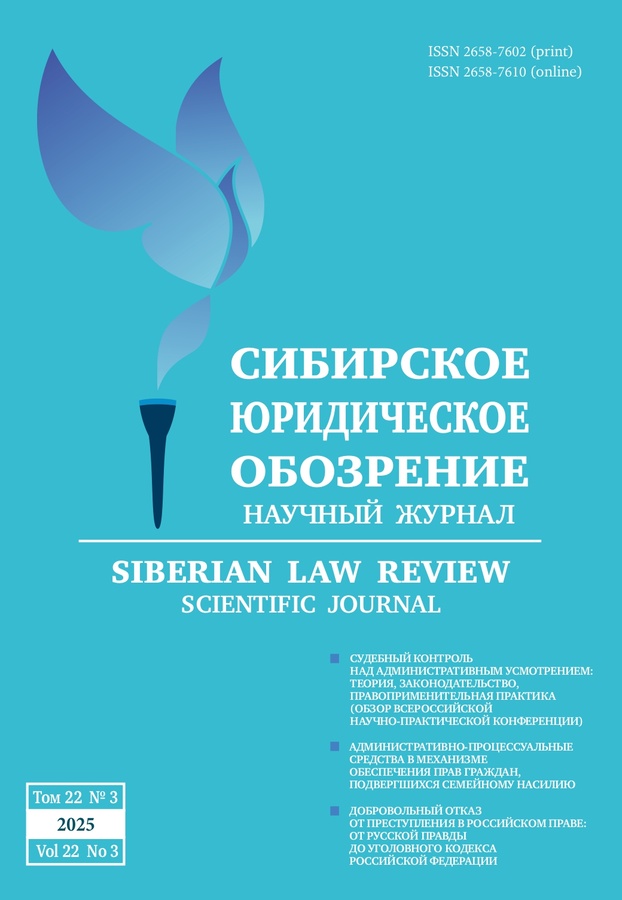
-
Siberian Law Review
ISSN (print): 2658-7602, ISSN (online): 2658-7610
Founder: Siberian Law University
Editor-in-Chief: Solovey Yury P., Doctor of Sc., Full Professor
Frequency / Assess: 4 issues per year / Open
Included in: Higher Attestation Commission list, RISC
-
Sistemy vysokoj dostupnosti

-
Sistemy vysokoj dostupnosti
ISSN (print): 2072-9472
Founder: Limited Liability Company "Publishing House "Radiotekhnika"
Editor-in-Chief: Budzko V.I., Doctor of Sc., Full Professor
Frequency / Access: 4 issues per year /Hybrid
Included in: Higher Attestation Commission List, RISC
-
Systems and Means of Informatics

-
Systems and Means of Informatics
ISSN (print): 0869-6527, ISSN (online): 2311-0325
Founder: Federal Research Center Computer Science and Control of the Russian Academy of Sciences
Editor-in-Chief: I. A. Sokolov, Academician of RAS, Doctor of Technical Sciences, Professor
Frequency / Access: 4 issues per year / Open
Included in: White List (3rd level), Higher Attestation Commission List, RISC
-
Slavic Studies
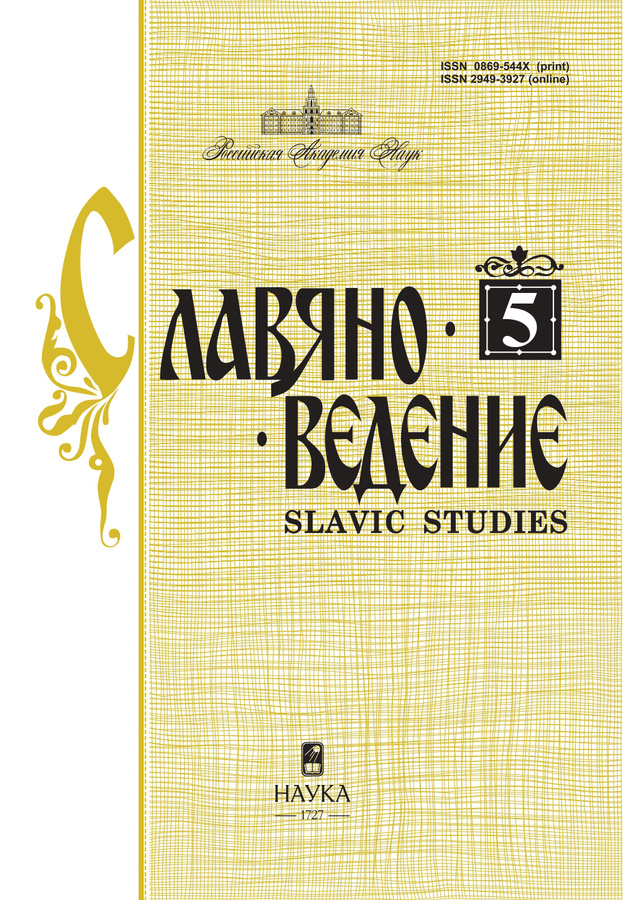
-
Slavic Studies
ISSN (print): 0869-544X, ISSN (online): 2949-3927
Founder: Russian Academy of Sciences
Editor-in-Chief: Sedakova Irina Aleksandrovna, Doctor of Sc., Full Professor
Frequency / Assess: 6 issues per year / Subscription
Included in: White List (3rd level),Higher Attestation Commission List, RISC
-
Slavic Historical Lexicology and Lexicography

-
Slavic Historical Lexicology and Lexicography
ISSN (print): 2658-3755
Founder: Institute for Linguistic Studies, Russian Academy of Sciences
Editor-in-Chief: Мольков Георгий Анатольевич, д-р филол. наук
Frequency / Access: 1 issues per year / Open
Included in: RISC
-
Texts and History
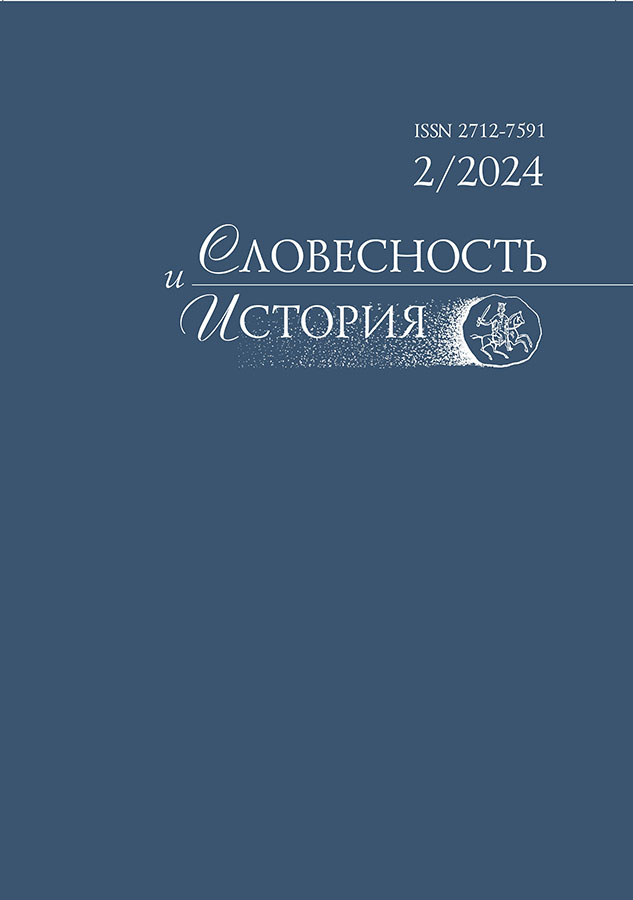
-
Texts and History
ISSN (print): 2712-7591
Founder: Institute of Russian Literature (Pushkinskii Dom) of the Russian Academy of Sciences
Editor-in-Chief: Svetlana A. Semyachko, Dr. of Philological Sciences, Chief Researcher
Frequency / Access: 4 issues per year / Open
Included in: Higher Attestation Commission List, RISC
-
CURRENT STUDIES IN HERPETOLOGY
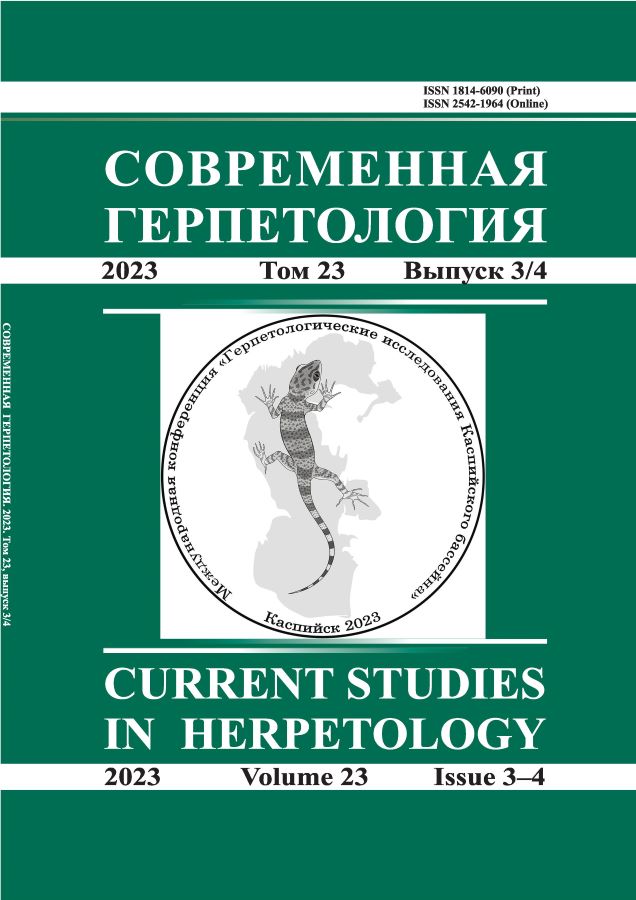
-
CURRENT STUDIES IN HERPETOLOGY
ISSN (print): 1814-6090, ISSN (online): 2542-1964
Founders: Zoological Institute of the Russian Academy of Sciences, Saratov State University
Editor-in-Chief: Ananyeva Natalia Borisovna, Doctor of Biology. sciences
Frequency / Access: 2 issues per year / Open
Included in: White List (4th level), RISC
-
Contemporary Europe
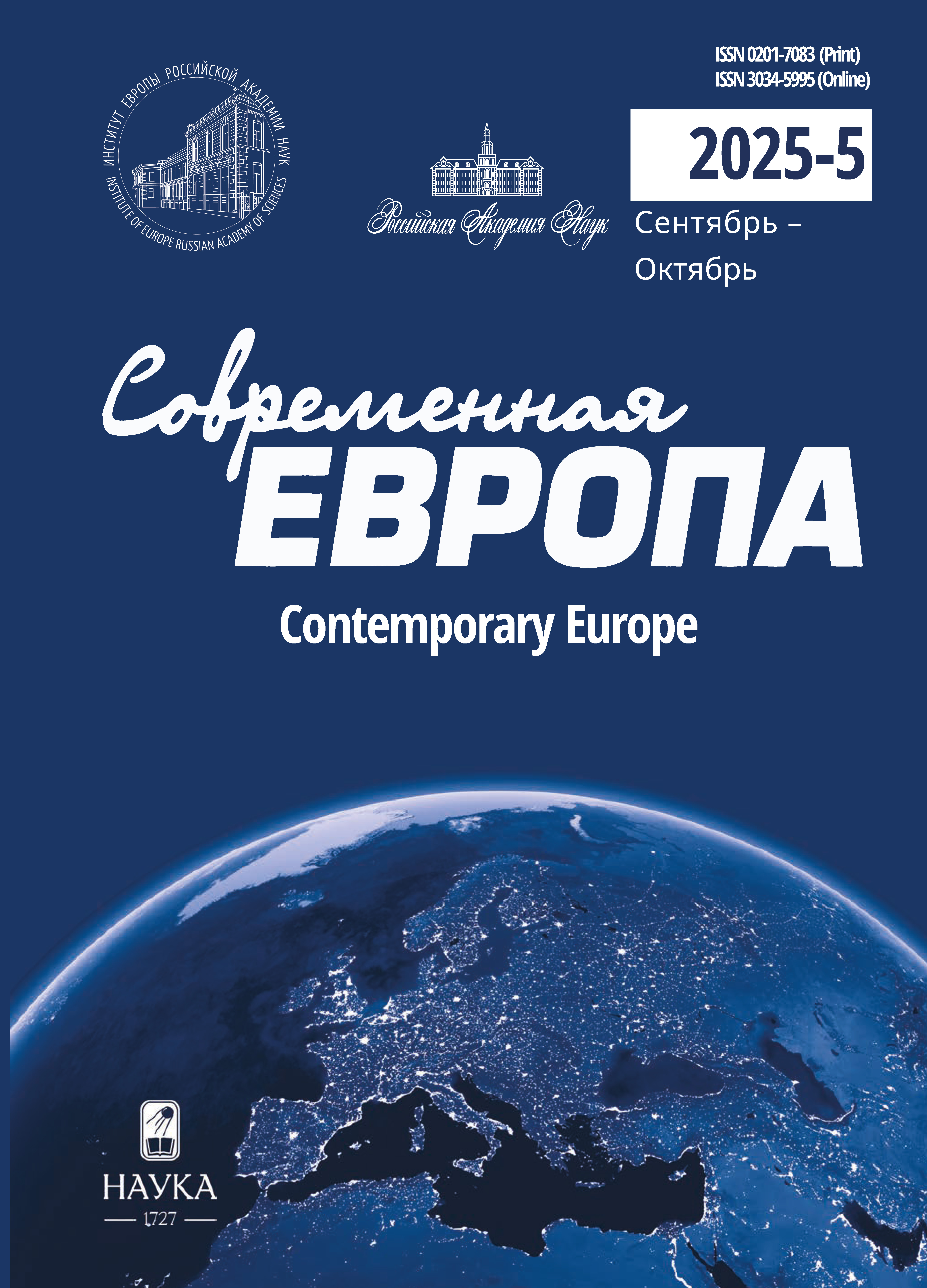
-
Contemporary Europe
ISSN (print): 0201-7083
Founders: Russian Academy of Sciences, Institute of Europe of the RAS
Editor-in-Chief: Lunkin R.N., Doctor of Sc., Full Professor
Frequency / Assess: 6 issues per year / Subscription
Included in: White List (2nd level), Higher Attestation Commission List, RISC, Scopus
-
Contemporary Mathematics. Fundamental Directions
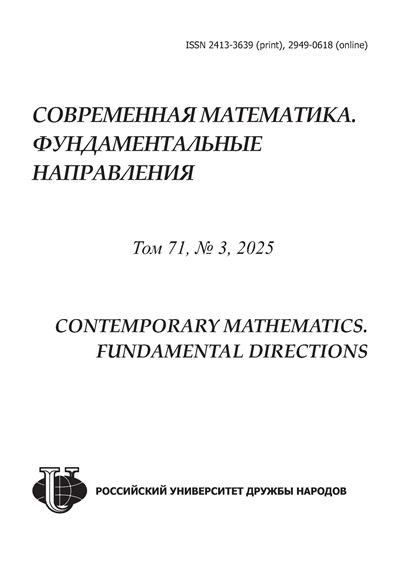
-
Contemporary Mathematics. Fundamental Directions
ISSN (print): 2413-3639, ISSN (online): 2949-0618
Founder: Peoples’ Friendship University of Russia named after Patrice Lumumba (RUDN University)
Editor-in-Chief: Alexander L. Skubachevskii, Doctor of Physical and Mathematical Sciences, Professor
Frequency / Assess: 4 issues per year / Open
Included in: White List, Higher Attestation Commission List, RISC, mathnet.ru
-
Contemporary World Economy

-
Contemporary World Economy
ISSN (online): 2949-5776
Founder: National Research University Higher School of Economics
Editor-in-Chiefs: Leonid M. Grigoryev, Full Professor; Igor A. Makarov
Frequency / Assess: 4 issues per year / Open
Included in: RISC
-
Journal of Modern Oncology
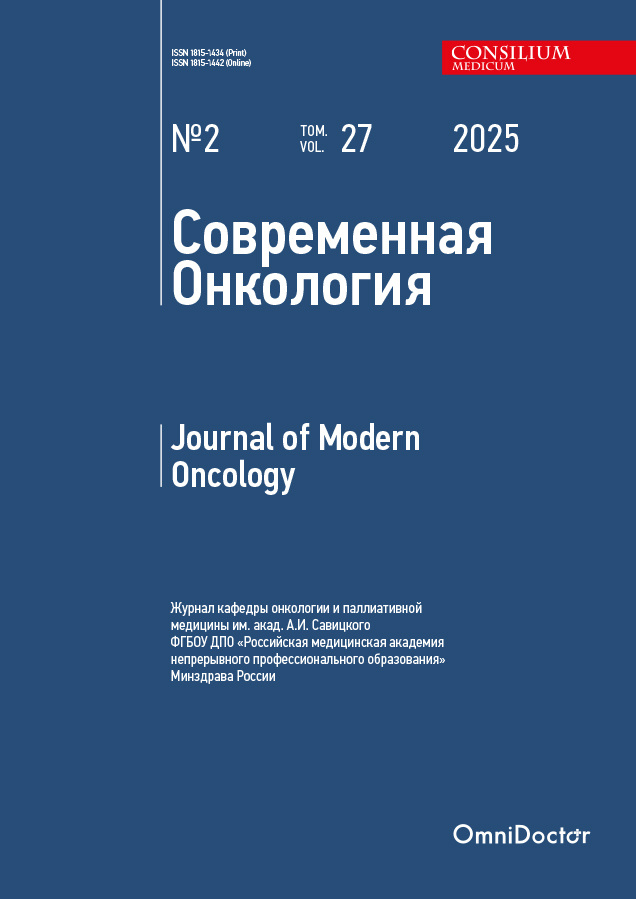
-
Journal of Modern Oncology
ISSN (print): 1815-1434, ISSN (online): 1815-1442
Founder: Meditsinskie izdaniya
Editor-in-Chief: Poddubnaya Irina Vladimirovna, Academician of the Russian Academy of Sciences, Doctor of Medical Sciences, Professor
Frequency / Access: 4 issues per year / Open
Included in: White List (4th level), Higher Attestation Commission List, RISC, Scopus
-
Modern scientist

-
Modern scientist
ISSN (online): 2541-8459
Founder: Self-employed Klyueva M.M. (Belgorod)
Editor-in-Chief: Solopanova Ol’ga Yur’yevna, Doctor of Sc., Full Professor
Frequency / Assess: 6 issues per year / Open
Included in: Higher Attestation Commission list, RISC
-
Современная электродинамика
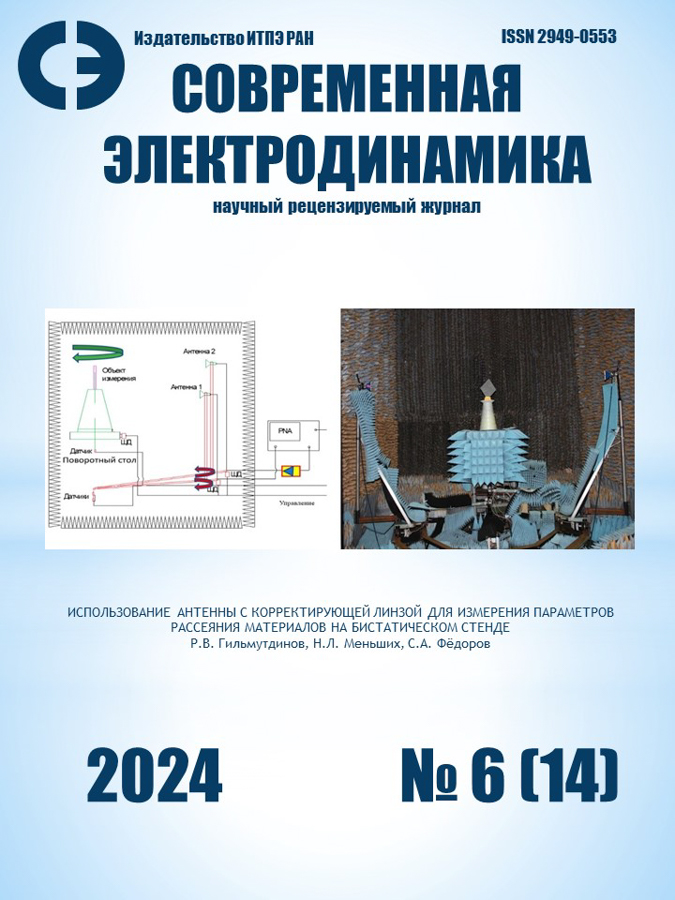
-
Современная электродинамика
ISSN (online): 2949-0553
Founder: Institution of the Russian Academy of Sciences Institute for Theoretical and applied electromagnetics RAS
Editor-in-Chief: Andrey N. Lagarkov, Academician of the Russian Academy of Sciences, Doctor of physics and matematics, professor
Frequency / Access: 6 issues per year / Open
Included in: RISC
-
Contemporary horticulture
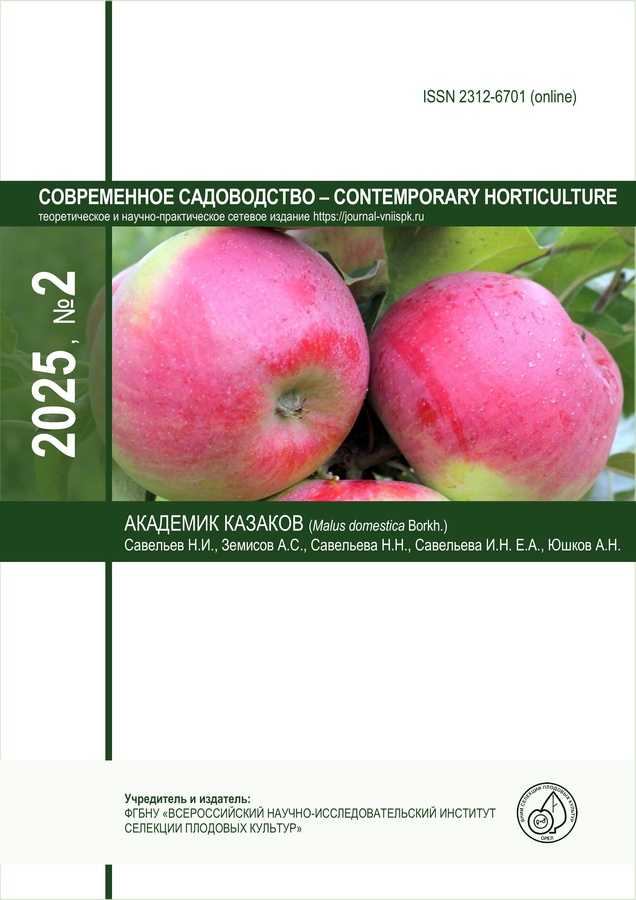
-
Contemporary horticulture
ISSN (online): 2312-6701
Founder: Russian Research Institute of Fruit Crop Breeding
Editor-in-Chief: Sergey Knyazev, Doctor of Agr. Sci, Professor
Frequency / Access: 4 issues per year / Open
Included in: Higher Attestation Commission List, RISC, “White List” of scientific journals (Q3)
-
Contemporary musicology

-
Contemporary musicology
ISSN (online): 2587-9731
Founder: Russian Gnessin Academy of Music
Editor-in-Chief: Irina P. Susidko, Doctor of Art History, Professor
Frequency / Access: 4 issues per year / Open
Included in: Higher Attestation Commission List, RISC, Scopus
-
Solnechno-Zemnaya Fizika

-
Solnechno-Zemnaya Fizika
ISSN (online): 2712-9640
Founders: Siberian Branch of RAS; Institute of Solar-Terrestrial Physics SB RAS
Editor-in-Chief: Zherebtsov Geliy, Academician of RAS, Doctor of Physical and Mathematical Sciences
Frequency / Access: 4 issues per year / Open
Included in: White List (2nd level), Higher Attestation Commission List, RISC
-
Social Competence

-
Social Competence
ISSN (online): 2658-5855
Founder: Far Eastern Federal University
Editor-in-Chief: Nevzorov Mikhail N., Doctor of Sc., Full Professor
Frequency / Access: 4 issues per year / Open
Included in: RISC
-
Social and political researches

-
Social and political researches
ISSN (print): 2658-428X
Founder: Yaroslavl state pedagogical university
Editor-in-Chief: Novikov Mikhail Vasilievich, Doctor of Sc., Full Professor
Frequency / Assess: 4 issues per year / Open
Included in: Higher Attestation Commission list, RISC
-
Socio Time

-
Socio Time
ISSN (print): 2410-0773, ISSN (online): 3034-3046
Founder: Volga State University of Technology
Editor-in-Chief: Shalaev V.P., Doctor of Sc., Professor
Frequency / Access: 4 issues per year / Open
Included in: Higher Attestation Commission List, RISC
-
Sociological Science and Social Practice
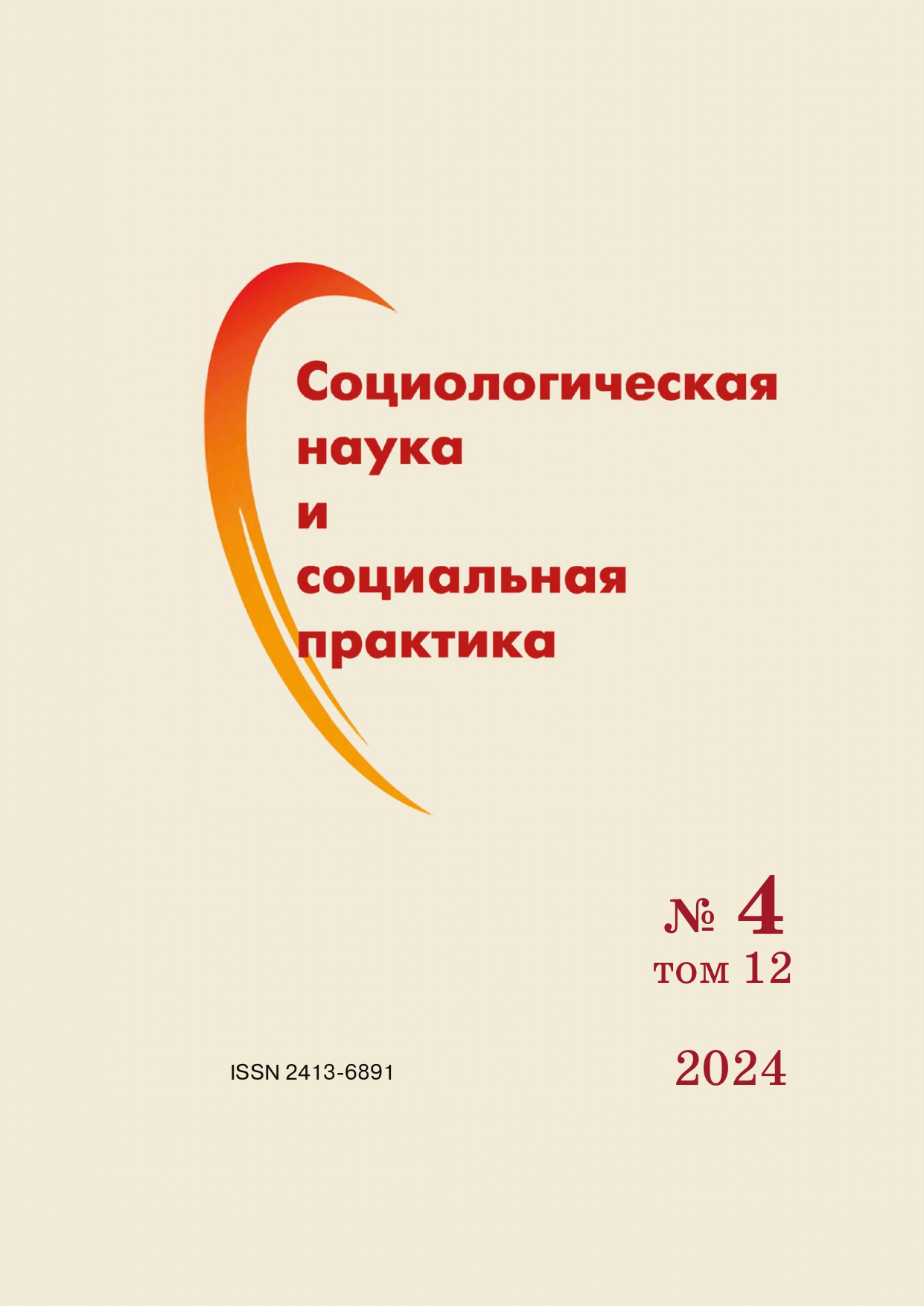
-
Sociological Science and Social Practice
ISSN (print): 2308-6416, ISSN (online): 2413-6891
Founder: Federal Center of Theoretical and Applied Sociology of the Russian Academy of Sciences
Editor-in-Chief: M.K. Gorshkov, Academician, Dr. of Sciences in Philosophy
Frequency / Access: 4 issues per year / Open
Included in: White List (2nd level), Higher Attestation Commission List, RISC
-
Sociological Studies

-
Sociological Studies
ISSN (print): 0132-1625
Founders: Russian Academy of Sciences, Institute of Europe of the RAS, Federal Center of Theoretical and Applied Sociology of the RAS
Editor-in-Chief: Klyucharev G.A., Doctor of Sc., Full Professor
Frequency / Assess: 12 issues per year / Subscription
Included in: White List (2nd level), Higher Attestation Commission List, RISC, Scopus, Web of Science Core Collection
-
Sotsiologicheskij Zhurnal
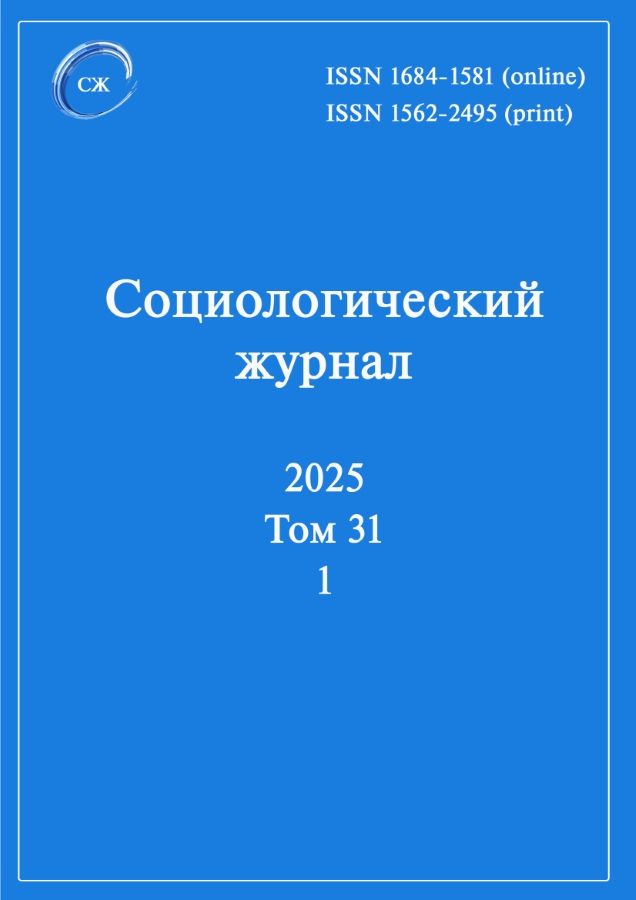
-
Sotsiologicheskij Zhurnal
ISSN (print): 1562-2495, ISSN (online): 1684-1581
Founder: Federal Center of Theoretical and Applied Sociology of the Russian Academy of Sciences
Editor-in-Chief: Kozyreva Polina M., Dr. of Sciences in Sociology
Frequency / Access: 4 issues per year / Open
Included in: White List (1st level), Higher Attestation Commission List, RISC, Scopus
-
Sociologičeskoe obozrenie.

-
Sociologičeskoe obozrenie.
ISSN (print): 1728-192X, ISSN (online): 1728-1938
Founders: National Research University Higher School of Economics, Filippov Alexander F.
Editor-in-Chief: Filippov Alexander F., Doctor of Sc., Full Professor
Frequency / Assess: 4 issues per year / Open
Included in: White List (2nd level), Higher Attestation Commission List, RISC
-
SOCIOLOGY OF ARTIFICIAL INTELLIGENCE

-
SOCIOLOGY OF ARTIFICIAL INTELLIGENCE
ISSN (print): 2712-939X
Founder: Krasnoyarsk regional public organization «Commonwealth of Educators of Krasnoyarsk Krai»
Editor-in-Chief: Koptseva Natalia Petrovna, Dr. Sc., Professor
Frequency / Assess: 4 issues per year / Subscription
Included in: Higher Attestation Commission list, RISC
-
Sociology : Methodology, Methods, Mathematical Modeling (Sociology: 4M)
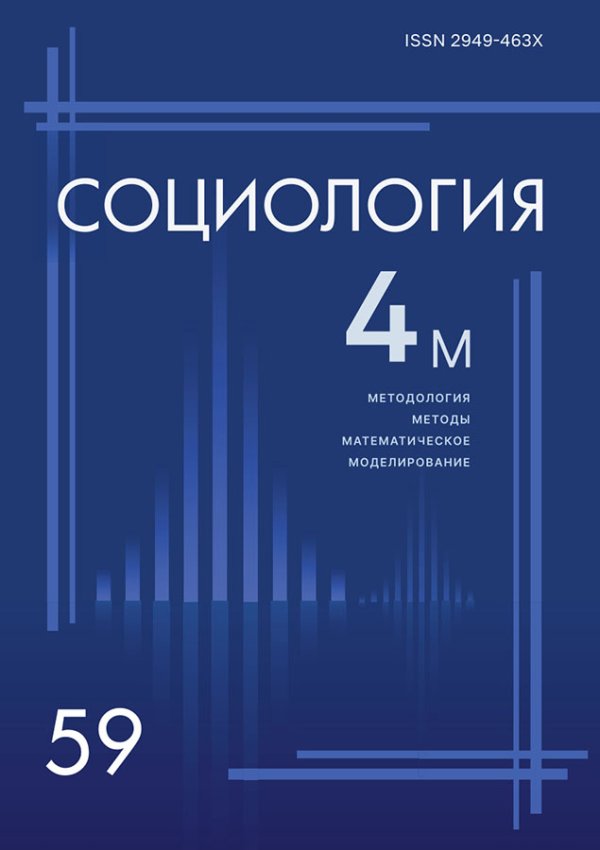
-
Sociology : Methodology, Methods, Mathematical Modeling (Sociology: 4M)
ISSN (print): 1994-8964, ISSN (online): 2949-463Х
Founders: Federal Center of Theoretical and Applied Sociology of the Russian Academy of Sciences (FCTAS RAS), Russian Society of Sociologists (ROS)
Editor-in-Chief: Nikolay S. Babich, PhD in Sociology
Frequency / Access: 2 issues per year / Open
Included in: White list (3rd level), Higher Attestation Commission List, RISC
-
Sociology of Medicine
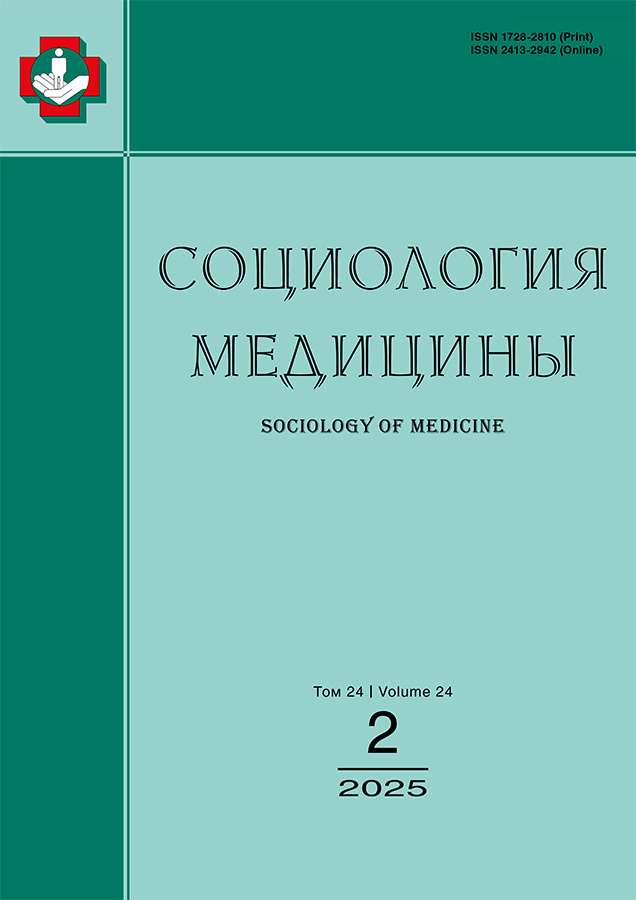
-
Sociology of Medicine
ISSN (print): 1728-2810, ISSN (online): 2413-2942
Founders: Publishing house «Medicina», «Eco-Vector» LLC
Editor-in-Chief: Andrei Reshetnickov, academician RAS, Doctor of Sc., Full Professor
Frequency / Access: 2 issues per year / Hybrid
Included in: Higher Attestation Commission List, RISC
-
Sociopolitical Sciences
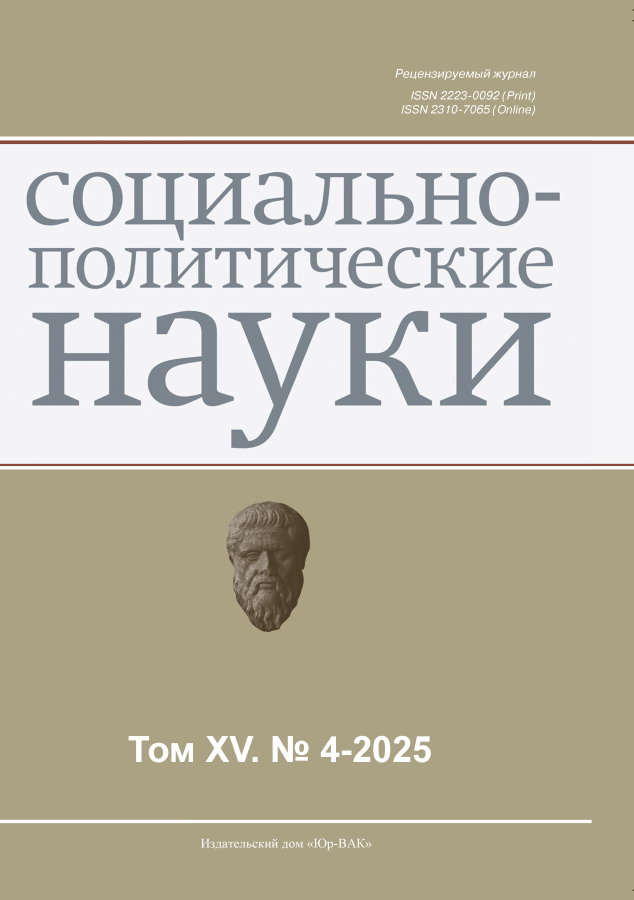
-
Sociopolitical Sciences
ISSN (print): 2223-0092, ISSN (online): 2310-7065
Founder: Publishing house "Yur-VAK"
Editor-in-Chief: Shabrov Oleg Fedorovich, Doctor of Political Sciences Sc., professor
Frequency / Access: 6 issues per year / Subscription
Included in: Higher Attestation Commission List, RISC
-
Special pedagogy and psychology

-
Special pedagogy and psychology
ISSN (print): 2949-5954
Founder: Yaroslavl state pedagogical university
Editor-in-Chief: Simanovsky A.E., Doctor of Sc.
Frequency / Assess: 4 issues per year / Open
Included in: RISC
-
Stratigraphy and Geological Correlation
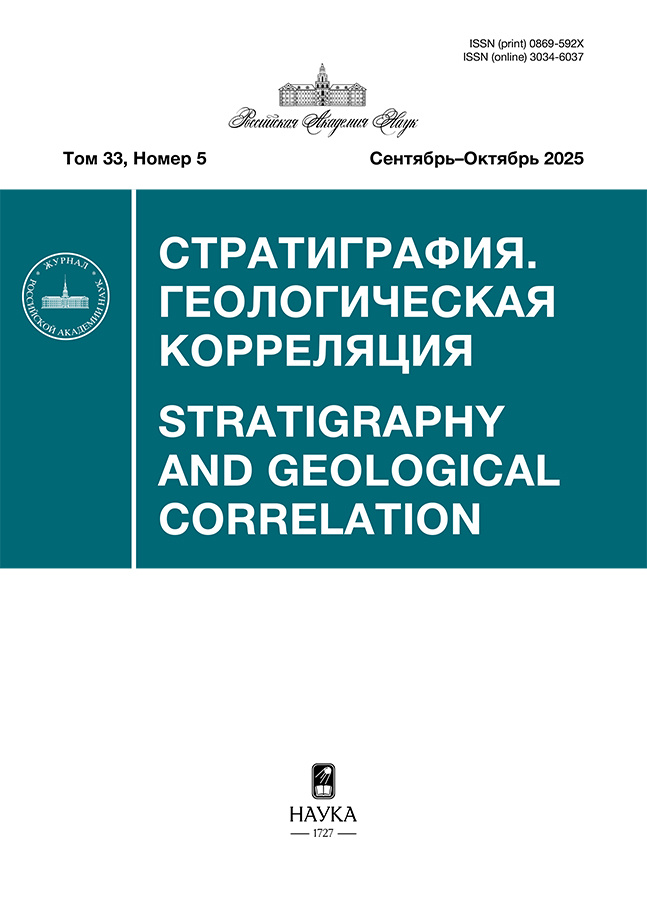
-
Stratigraphy and Geological Correlation
ISSN (print): 0869-592X
Founders: Russian Academy of Sciences, Geological Institute RAS
Editor-in-Chief: Rogov, Mikhail A., professor RAS, Doctor of Sc.
Frequency / Access: 6 issues per year / Subscription
Included in: White List (2nd level), Higher Attestation Commission List, RISC, Web of Science Core Collection
-
Structural mechanics and analysis of constructions

-
Structural mechanics and analysis of constructions
ISSN (print): 0039-2383
Founder: JSC Science and Research Center of Construction
Editor-in-Chief: Vedyakov Ivan Ivanovich, Doctor of Sc., Professor
Frequency / Assess: 6 issues per year / Open
Included in: Higher Attestation Commission List, RISC
-
Structural Mechanics of Engineering Constructions and Buildings
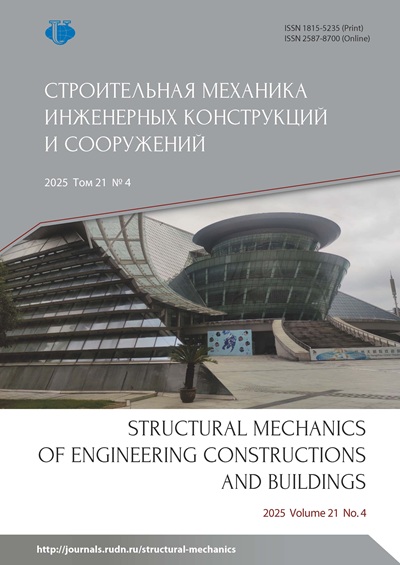
-
Structural Mechanics of Engineering Constructions and Buildings
ISSN (print): 1815-5235, ISSN (online): 2587-8700
Founder: Peoples’ Friendship University of Russia named after Patrice Lumumba (RUDN University)
Editor-in-Chief: Nikolai I. Vatin, Doctor of Technical Sciences, Professor
Frequency / Access: 6 issues per year / Open
Included in: White List, Higher Attestation Commission List, RISC
-
Construction: science and education

-
Construction: science and education
ISSN (online): 2305-5502
Founder: Moscow State University of Civil Engineering (National Research University)
Editor-in-Chief: Alexander R. Tusnin, Doctor of Sc., Full Professor
Frequency / Access: 4 issues per year / Open
Included in: Higher Attestation Commission list, RISC
-
Structural mechanics and structures

-
Structural mechanics and structures
ISSN (print): 2219-1038, ISSN (online): 2949-3757
Founder: Voronezh State Technical University
Editor-in-Chief: Safronov V.S.
Frequency / Assess: 4 issues per year / Open
Included in: Higher Attestation Commission list, RISC
-
Construction Materials and Products

-
Construction Materials and Products
ISSN (online): 2618-7183
Founder: Self-employed Klyueva M.M. (Belgorod)
Editor-in-Chief: Klyuev Sergey Vasilyevich, Doctor of Sc., Professor
Frequency / Access: 4 issues per year / Open
Included in: White List (4th level), Higher Attestation Commission List, RISC, Scopus
-
USA & Canada: Economics, Politics, Culture
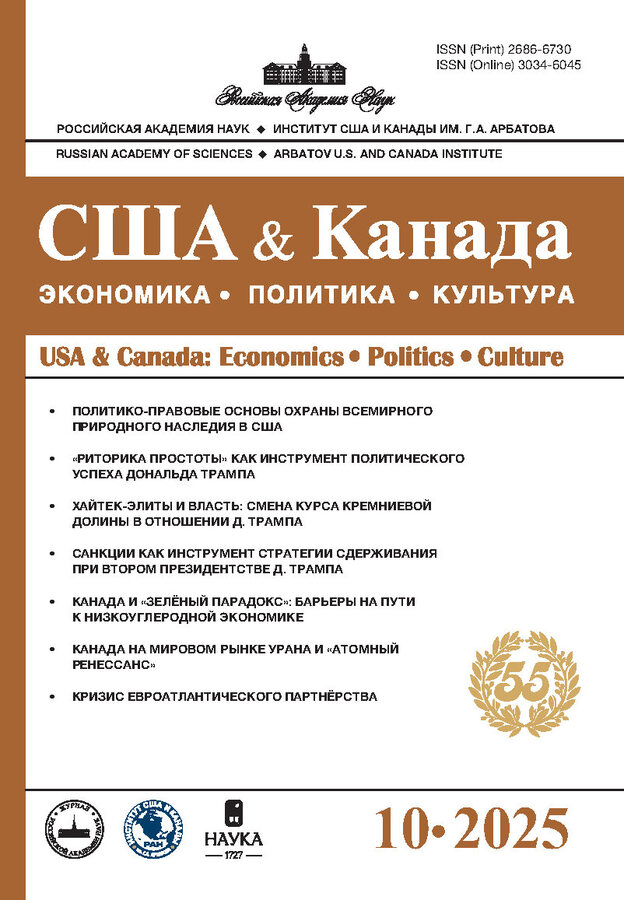
-
USA & Canada: Economics, Politics, Culture
ISSN (print): 2686-6730
Founders: Russian Academy of Sciences, Georgy Arbatov Institute for the U.S. and Canada Studies RAS
Editor-in-Chief: Alexander PANOV, Doctor of Sc., Full Professor
Frequency / Access: 12 issues per year / Subscription
Included in: White list (3rd level), Higher Attestation Commission list, RISC
-
Subtropical and ornamental horticulture

-
Subtropical and ornamental horticulture
ISSN (print): 2225-3068
Founder: Federal Research Centre the Subtropical Scientific Centre of the Russian Academy of Sciences
Editor-in-Chief: Ryndin Alexey Vladimirovich, academician of RAS, Doctor of Sc., Docent
Frequency / Assess: 4 issues per year / Open
Included in: Higher Attestation Commission list, RISC
-
Russian Journal of Forensic Medicine
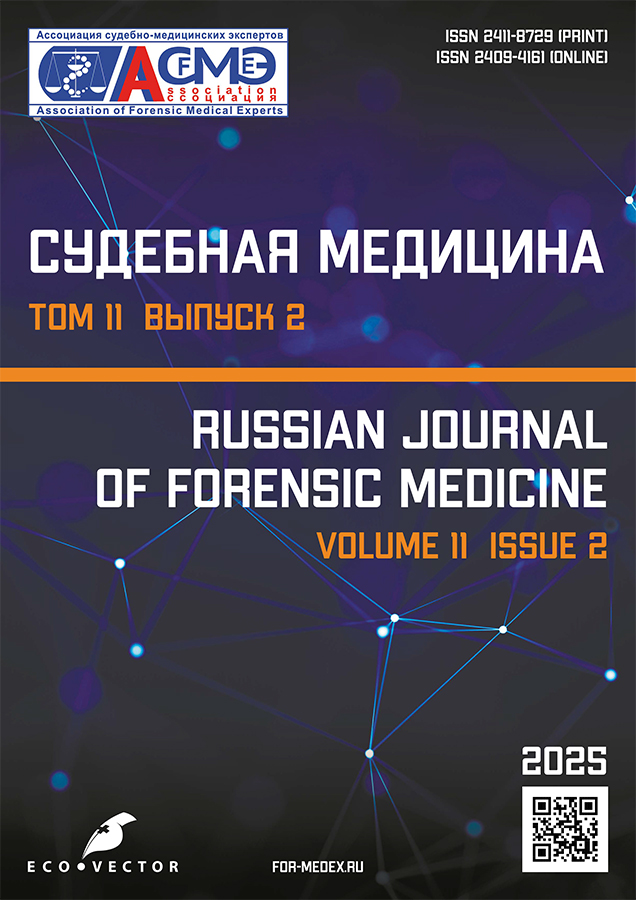
-
Russian Journal of Forensic Medicine
ISSN (print): 2411-8729, ISSN (online): 2409-4161
Founders: Association of Forensic Medical Experts, Limited Liability Company "Eco-Vector"
Editor-in-Chief: Vladimir A. Klevno, Doctor of Sc., Professor
Frequency / Access: 4 issues per year / Open
Included in: White List (2nd level), Higher Attestation Commission List, RISC, Scopus
-
Sudebnaâ èkspertiza i issledovaniâ

-
Sudebnaâ èkspertiza i issledovaniâ
ISSN (print): 2782-5256
Founders: The Vladimir Kikot Moscow University of the Ministry of Internal Affairs of Russia; Publishing house UNITY-DANA
Editor-in-Chief: Maylis N.P., Doctor of Sc., Professor
Frequency / Access: 4 issues per year / Open
Included in: Higher Attestation Commission List, RISC
-
Sphere of culture

-
Sphere of culture
ISSN (print): 2713-301X
Founder: Samara State Institute of Culture
Editor-in-Chief: Olga S. Naumova, PhD, Doctor of Sc.
Frequency / Access: 4 issues per year / Open
Included in: Higher Attestation Commission List, RISC
-
Sûžetologiâ i sûžetografiâ

-
Sûžetologiâ i sûžetografiâ
ISSN(online): 2713-3133
Founder: Institute of Philology of the Siberian Branch of RAS
Editor-in-Chief: Kapinos, Elena V., Doctor of Sc. (Philology)
Frequency / Access: 4 issues per year / Open
Included in: RISC
-
TAURIDA HERALD OF THE AGRARIAN SCIENCES

-
TAURIDA HERALD OF THE AGRARIAN SCIENCES
ISSN (print): 2542-0720
Founder: Federal State Budget Scientific Institution «Research Institute of Agriculture of Crimea»
Editor-in-Chief: Pashtetsky V.S.
Frequency / Assess: 4 issues per year / Open
Included in: White List (3rd level), Higher Attestation Commission list, RISC
-
Tavricheskiy mediko-biologicheskiy vestnik

-
Tavricheskiy mediko-biologicheskiy vestnik
ISSN (print): 2070-8092
Founder: V.I. Vernadsky Crimean Federal University
Editor-in-Chief: Fomochkina Irina Ivanovna
Frequency / Assess: 4 issues per year / Open
Included in: Higher Attestation Commission list, RISC
-
Shadow Economy

-
Shadow Economy
ISSN (print): 2541-7681
Founder: Creative Economy Publishers
Editor-in-Chief: Burov Vitaly, Doctor of Sc., Assistant Professor
Frequency / Assess: 4 issues per year / Subscription
Included in: Higher Attestation Commission list, RISC
-
Theoretical Foundations of Chemical Engineering

-
Theoretical Foundations of Chemical Engineering
ISSN (print): 0040-3571
Founders: Russian Academy of Sciences, Kurnakov Institute of General and Inorganic Chemistry of RAS
Editor-in-chief: N.N. Kulov, Doctor of Sc., Full Professor
Frequency / Access: 6 issues per year / Subscription
Included in: White list (2nd level), Higher Attestation Commission list, RISC
-
Theory and practice of meat processing

-
Theory and practice of meat processing
ISSN (print): 2414-438X, ISSN (online): 2414-441X
Founder: V.M. Gorbatov Federal Research Center for Food Systems of RAS
Editor-in-Chief: Andrey B. Lisitsyn, Academician of RAS, Doctor of Sc., Professor
Frequency / Access: 4 issues per year / Open
Included in: Higher Attestation Commission List, RISC, Scopus
-
Theory of Language and Intercultural Communication

-
Theory of Language and Intercultural Communication
ISSN (online): 2219-8660
Founder: Kursk State University
Editor-in-Chief: Lebedeva, S. V., Doctor of Philological Sciences, Professor
Frequency / Access: 4 issues per year / Open
Included in: Higher Attestation Commission List, RISC
-
Terapevticheskii arkhiv
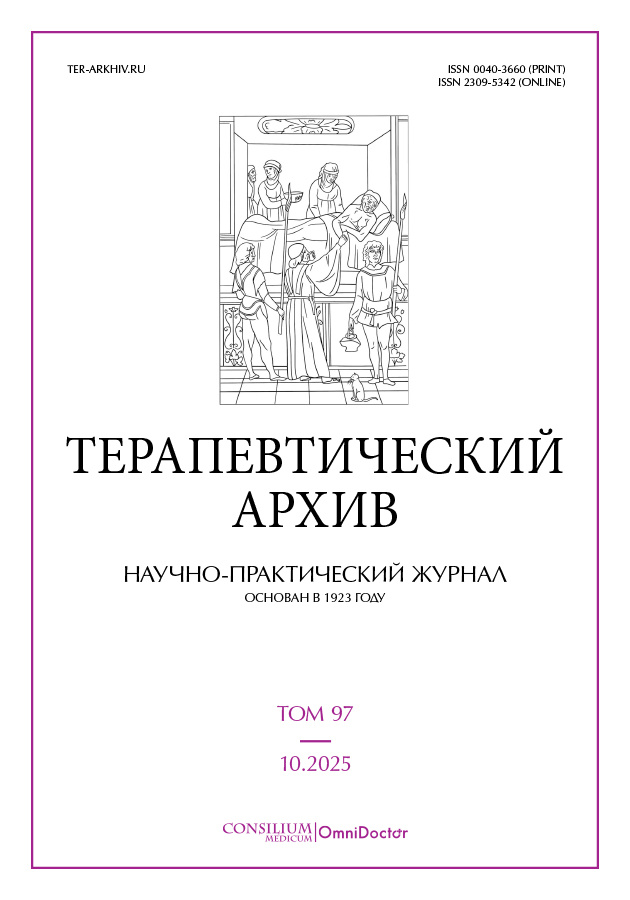
-
Terapevticheskii arkhiv
ISSN (print): 0040-3660, ISSN (online): 2309-5342
Founder: Terapevt 92
Editor-in-Chief: Irina Chazova, academician RAS, Doctor of Sc., Full Professor
Frequency / Access: 12 issues per year / Open
Included in: White list (2nd level), Higher Attestation Commission List, RISC, Scopus
-
Therapy
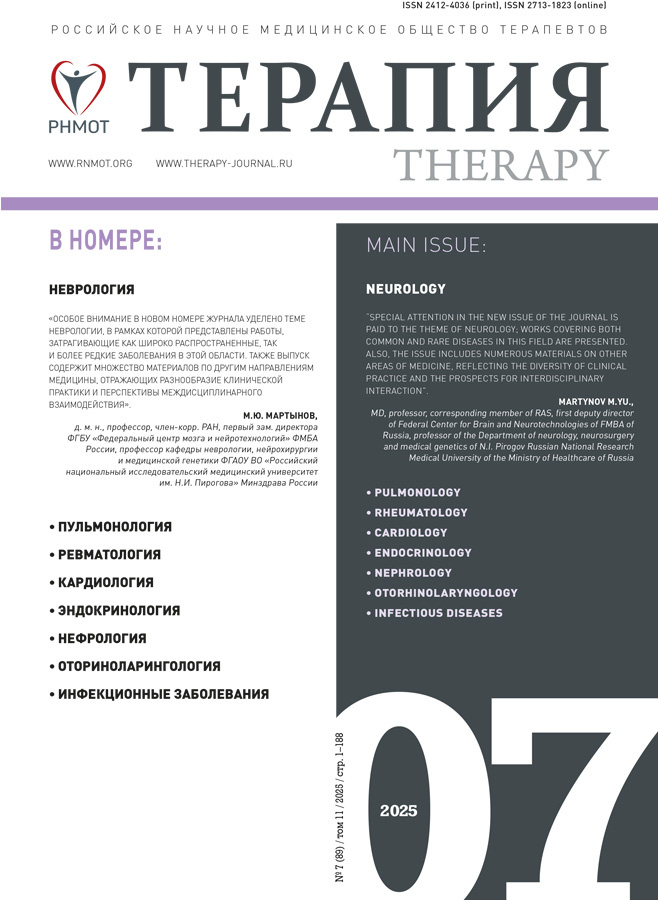
-
Therapy
ISSN (print): 2412-4036, ISSN (online): 2713-1823
Founder: All-Russian public organization “Russian Scientific Medical Society of Internal Medicine” (RSMSIM)
Editor-in-Chief: Zhanna D. Kobalava, corresponding member of RAS, Doctor of Sc., Full Professor
Frequency / Assess: 10 issues per year / Subscription
Included in: Higher Attestation Commission List, RISC
-
High Temperature
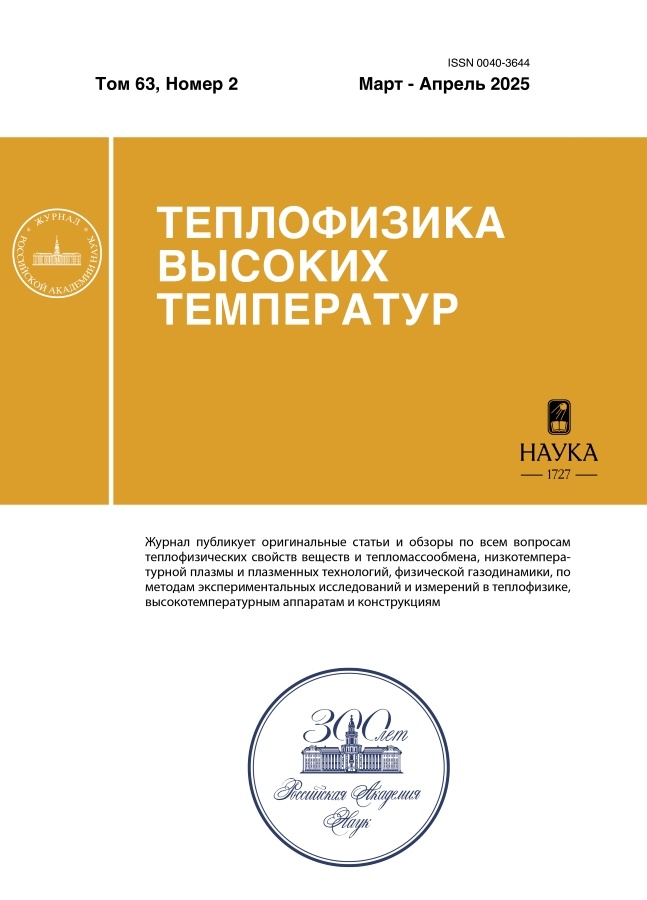
-
High Temperature
ISSN (print): 0040-3644
Founder: Russian Academy of Sciences
Editor-in-Chief: Oleg F. Petrov, academician RAS, Doctor of Sc., Full Professor
Frequency / Access: 6 issues per year / Subscription
Included in: White list (1st level), Higher Attestation Commission list, RISC
-
Transport Technician: Education and Practice

-
Transport Technician: Education and Practice
ISSN (print): 2687-1025, ISSN (online): 2687-1033
Founders: Federal state budget establishment additional professional education "Educational and instructional center for railway transportation"; Emperor Alexander I St. Petersburg State Transport University
Editor-in-Chief: Irina S. Skovorodina, Candidate of Historical Sciences
Frequency / Assess: 4 issues per year / Hybrid
Included in: Higher Attestation Commission list, RISC
-
Journal of mining and geotechnical engineering

-
Journal of mining and geotechnical engineering
ISSN (print): 2618-7434, ISSN (online): 2949-0626
Founder: T.F. Gorbachev Kuzbass state technical university
Editor-in-Chief: Aksenov Vladimir, Doctor of Sc.
Frequency / Access: 6 issues per year / Open
Included in: Higher Attestation Commission List, RISC
-
Технический оппонент

-
Технический оппонент
ISSN (print): 2658-3801
Founder: LLC "Opponent"
Editor-in-Chief: Kamzolova Sofia Vladimirovna, Doctor of Sc., Full Professor
Frequency / Assess: 4 issues per year / Open
Included in: RISC
-
Tehnologii živyh sistem

-
Tehnologii živyh sistem
ISSN (print): 2070-0997
Founder: Limited Liability Company "Publishing House "Radiotekhnika"
Editor-in-Chief: Kamalov A.A., Academican of RAS, Doctor of Sc., Full Professor
Frequency / Access: 4 issues per year /Hybrid
Included in: White List (4th level), Higher Attestation Commission List, RISC
-
Tomsk Journal of Linguistics and Anthropology
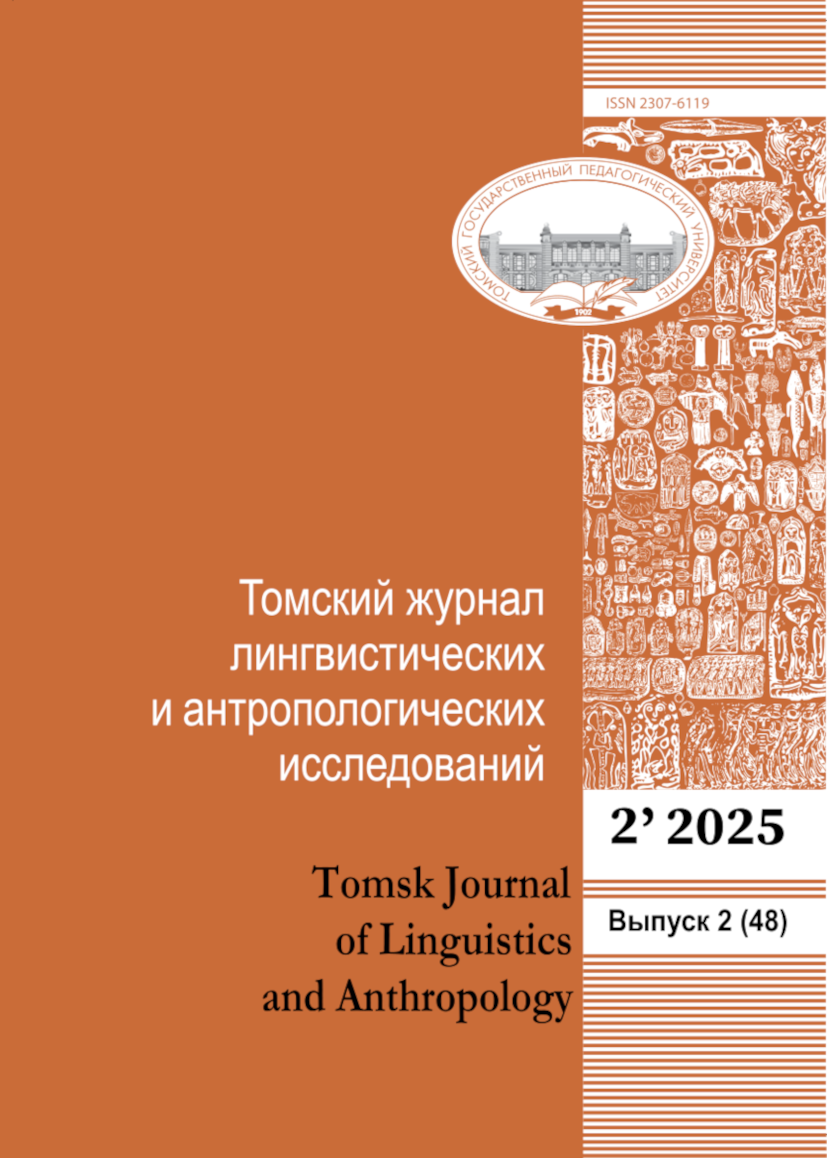
-
Tomsk Journal of Linguistics and Anthropology
ISSN (print): 2307-6119
Founder: Tomsk State Pedagogical University
Editor-in-Chief: Lemskaya Valeriya, Cand. Sci. (Psychology), associate professor
Frequency / Access: 4 issues per year / Open
Included in: White List (3rd level), Higher Attestation Commission List, RISC, Web of Science
-
Traumatology and Orthopedics of Russia

-
Traumatology and Orthopedics of Russia
ISSN (print): 2311-2905, ISSN (online): 2542-0933
Founders: Vreden National Medical Research Center of Traumatology and Orthopedics, LLC «Eco-Vector»
Editor-in-Chief: Tikhilov R.M., Corresponding Member RAS, Doctor of Sc., Full Professor
Frequency / Access: 4 issues per year / Open
Included in: White list (3rd level), Higher Attestation Commission List, RISC, Scopus
-
Traktory i sel hozmashiny
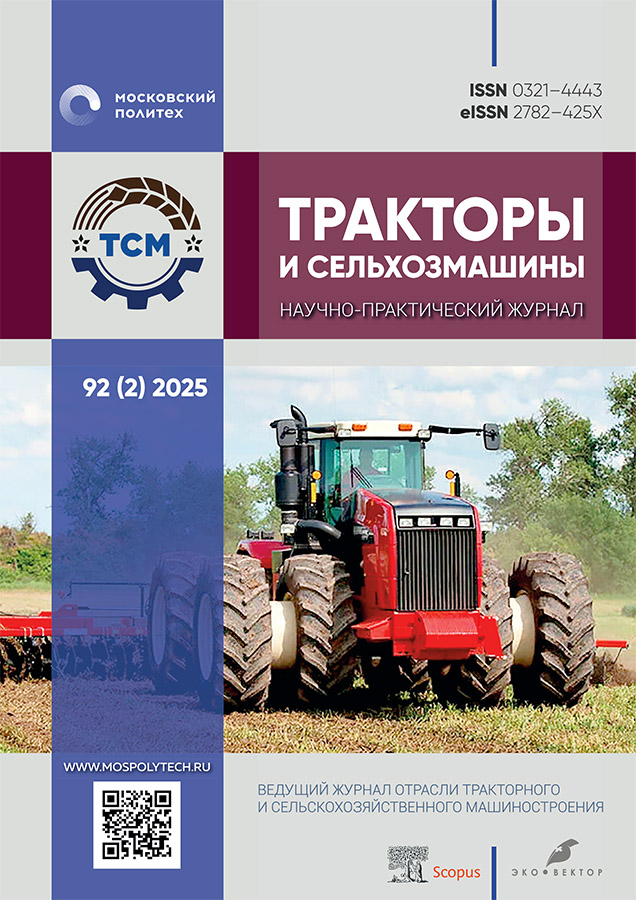
-
Traktory i sel hozmashiny
ISSN (print): 0321-4443, ISSN (online): 2782-425X
Founder: Moscow Polytechnic University, Eco-Vector
Editor-in-Chief: Kaminsky Valery Naumovich, professor, doctor of technical sciences
Frequency / Access: 6 issues per year / Subscription
Included in: White List (4th level), Higher Attestation Commission List, RISC
-
Translational medicine

-
Translational medicine
ISSN (print): 2311-4495, ISSN (online): 2410-5155
Founder: Almazov National Medical Research Centre
Editor-in-chief: Evgeny Shlyakhto, Academician of RAS, Doctor of Sc., Professor
Frequency / Access: 6 issues per year / Open
Included in: White List (3rd level), Higher Attestation Commission List, RISC
-
TRANSPORT AND STORAGE OF OIL PRODUCTS AND HYDROCARBONS

-
TRANSPORT AND STORAGE OF OIL PRODUCTS AND HYDROCARBONS
ISSN (print): 0131-4270
Founder: OOO "OBRAKADEMNAUKA"
Editor-in-Chief: Meshalkin V.P.
Frequency / Assess: 6 issues per year / Subscription
Included in: Higher Attestation Commission List, RISC
-
TRANSPORT ENGINEERING

-
TRANSPORT ENGINEERING
ISSN (print): 2782-5957
Founder: Bryansk State Technical University
Editor-in-Chief: Khandozhko Alexandr, Doctor of Sc., Associate Professor
Frequency / Assess: 12 issues per year / subscription
Included in: Higher Attestation Commission List, RISC
-
Proceeding of the Institute for Systems Analysis of the Russian Academy of Science
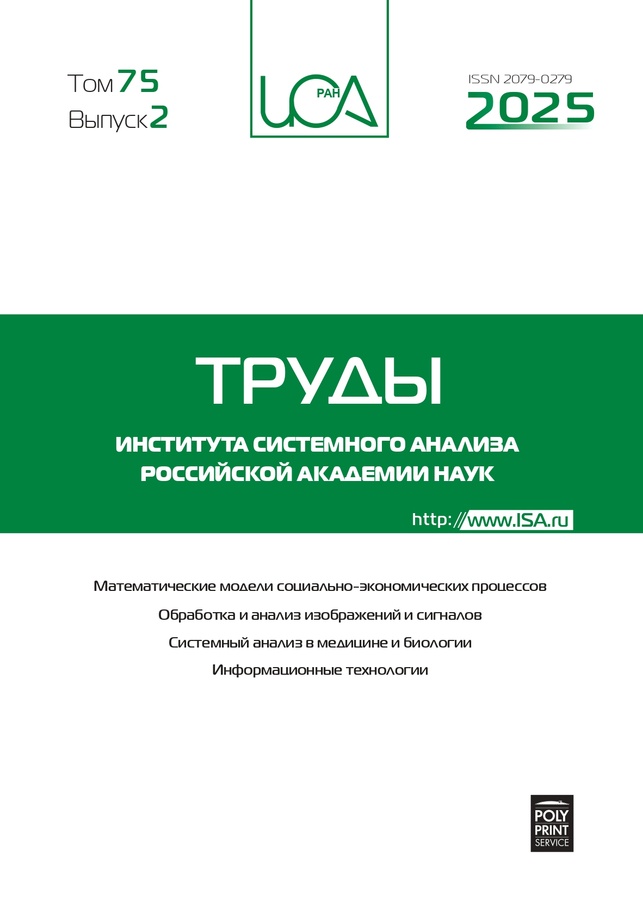
-
Proceeding of the Institute for Systems Analysis of the Russian Academy of Science
ISSN (print): 2079-0279
Founder: Federal Research Center “Computer Science and Control”, the Russian Academy of Sciences
Editor-in-Chief: Popkov Y.S. Academician of RAS, Professor
Frequency / Access: 4 issues per year / Open
Included in: Higher Attestation Commission List, RISC
-
Transactions of the Karelian Research Centre of the Russian Academy of Sciences

-
Transactions of the Karelian Research Centre of the Russian Academy of Sciences
ISSN (print): 1997-3217, ISSN (online): 2312-4504
Founder: Karelian Research Centre of the Russian Academy of Sciences
Editor-in-Chief: Titov Alexander Fedorovich, Corresponding Member of the Russian Academy of Sciences, Dr. of Biological Sciences
Frequency / Access: 8 issues per year / Open
Included in: Higher Attestation Commission List, RISC
-
Transactions of the Kola Science Centre of RAS. Series: Natural Sciences and Humanities

-
Transactions of the Kola Science Centre of RAS. Series: Natural Sciences and Humanities
ISSN (print): 2949-1185
Founder: Kola Science Centre of the Russian Academy of Sciences
Editor-in-Chief: Krivovichev S. V., Academician of RAS, Doctor of Sc., Full Professor
Frequency / Assess: 4 issues per year / Open
Included in: RISC
-
Transactions of the Kola Science Centre of RAS. Series: Engineering Sciences

-
Transactions of the Kola Science Centre of RAS. Series: Engineering Sciences
ISSN (print): 2949-1215
Founder: Kola Science Centre of the Russian Academy of Sciences
Editor-in-Chief: Krivovichev S. V., Academician of RAS, Doctor of Sc., Full Professor
Frequency / Assess: 4 issues per year / Open
Included in: RISC
-
Works on Intellectual Property

-
Works on Intellectual Property
ISSN (print): 2225-3475, ISSN (online): 2713-1270
Founders: National Research University Higher School of Economics, Filippov Alexander F.
Editor-in-Chief: Fedotov M.A., Doctor of Sc., Full Professor
Frequency / Assess: 4 issues per year / Open
Included in: Higher Attestation Commission List, RISC
-
Trudy Rostovskogo gosudarstvennogo universiteta putej soobŝeniâ

-
Trudy Rostovskogo gosudarstvennogo universiteta putej soobŝeniâ
ISSN (print): 1818-5509
Founder: Rostov state transport university
Editor-in-Chief: Kolesnikov Vladimir Ivanovich, academician RAS, Doctor of Sc., Professor
Frequency / Assess: 4 issues per year / Open
Included in: RISC
-
Proceedings of Telecommunication Universities
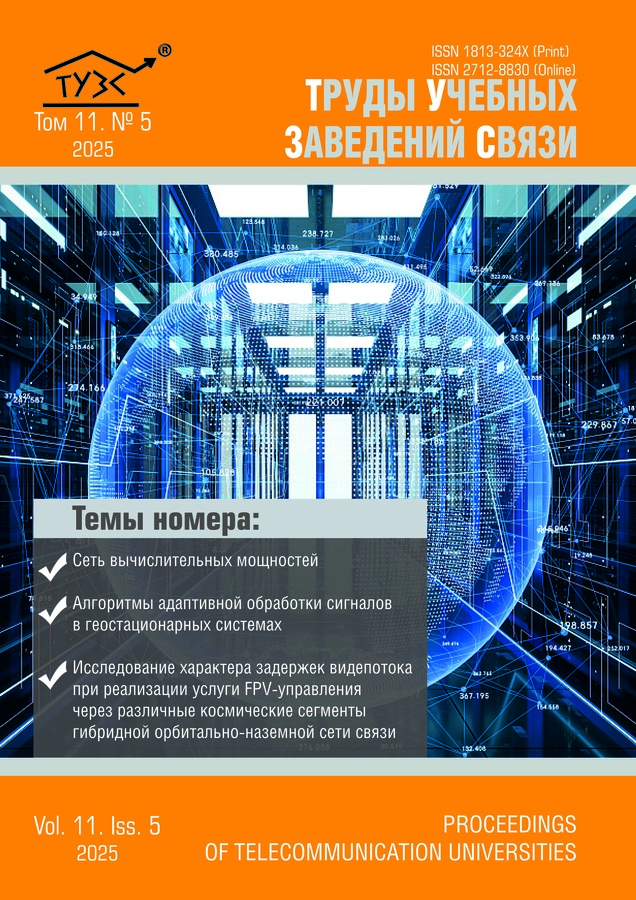
-
Proceedings of Telecommunication Universities
ISSN (print): 1813-324X, ISSN (online): 2712-8830
Founder: The Bonch-Bruevich Saint-Petersburg State University of Telecommunications
Editor-in-Chief: Ruslan Valentinovich Kirichek, Doctor of Sc.
Frequency / Access: 6 issues per year / Open
Included in: Higher Attestation Commission List, RISC
-
Humanities and Science University Journal

-
Humanities and Science University Journal
ISSN (print): 2222-5064
Founder: Non-profit partnership of scientists, teachers, and institutions of higher professional education ""St. Petersburg University Consortium""
Editor-in-Chief: Vladimir Valentinovitch Laptev, Member of the Russian Academy of Education, Doctor of Pedagogical Sciences, Professor
Frequency / Access: 6 issues per year / Subscription
Included in: Higher Attestation Commission List, RISC
-
Large-scale systems control
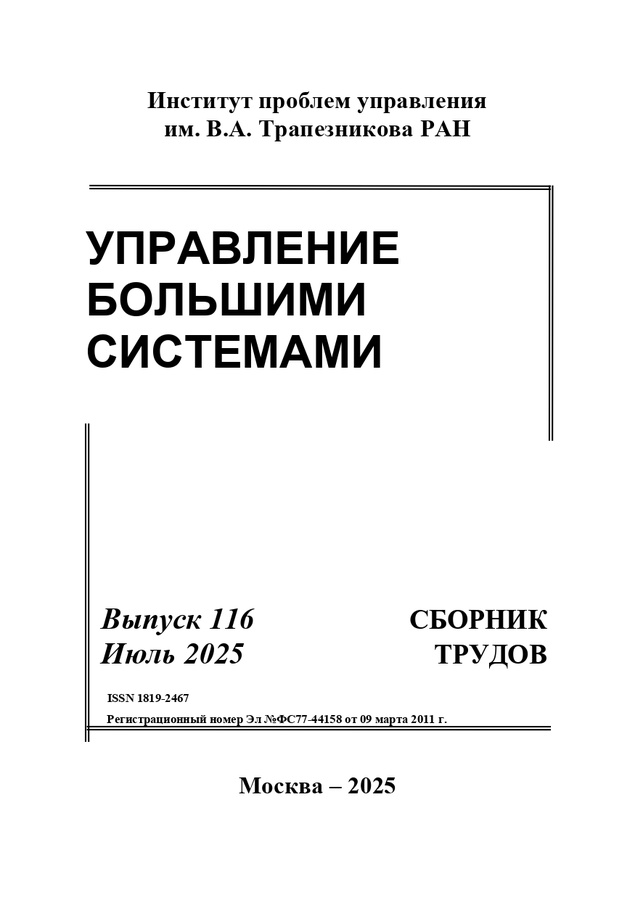
-
Large-scale systems control
ISSN (print): 1819-2440, ISSN (online): 1819-2467
Founder: Institute of Control Sciences of the Russian Academy of Sciences
Editor-in-Chief: Novikov D.A., Academician of RAS, Doctor of Sc.
Frequency / Access: 6 issues per year / Open
Included in: White list (4th level), Higher Attestation Commission List, RISC, MathNet
-
Education Management Review

-
Education Management Review
ISSN (online): 2311-2174
Founder: Individual entrepreneur Podkolzin M.M.
Editor-in-Chief: Anisimov Pyotr Fedorovich, Doctor of Economic Sciences
Frequency / Access: 12 issues per year / Open
Included in: Higher Attestation Commission List, RISC
-
Management of Science: Theory and Practice

-
Management of Science: Theory and Practice
ISSN (online): 2686-827X
Founder: Federal Center of Theoretical and Applied Sociology of the Russian Academy of Sciences
Editor-in-Chief: Semenov E.V., Doctor of Philosophy, professor
Frequency / Access: 4 issues per year / Open
Included in: Higher Attestation Commission List, RISC
-
Managing sustainable development

-
Managing sustainable development
ISSN (print): 2499-992X
Founder: Kazan National Research Technological University
Editor-in-Chief: Zinurova R.I., Doctor of Sc., Full Professor
Frequency / Assess: 6 issues per year / Open
Included in: Higher Attestation Commission list, RISC
-
FINANCIAL RISK MANAGEMENT

-
FINANCIAL RISK MANAGEMENT
ISSN (print): 2221-7541, ISSN (online): 2618-8805
Founder: Limited Liability Company "First Economic Publishing House"
Editor-in-Chief: Afanasyev Anton, Doc. of Economic Sciences
Frequency / Assess: 4 issues per year / Hybrid
Included in: White List (4th level), Higher Attestation Commission list, RISC
-
Living Standards of the Population in the Regions of Russia
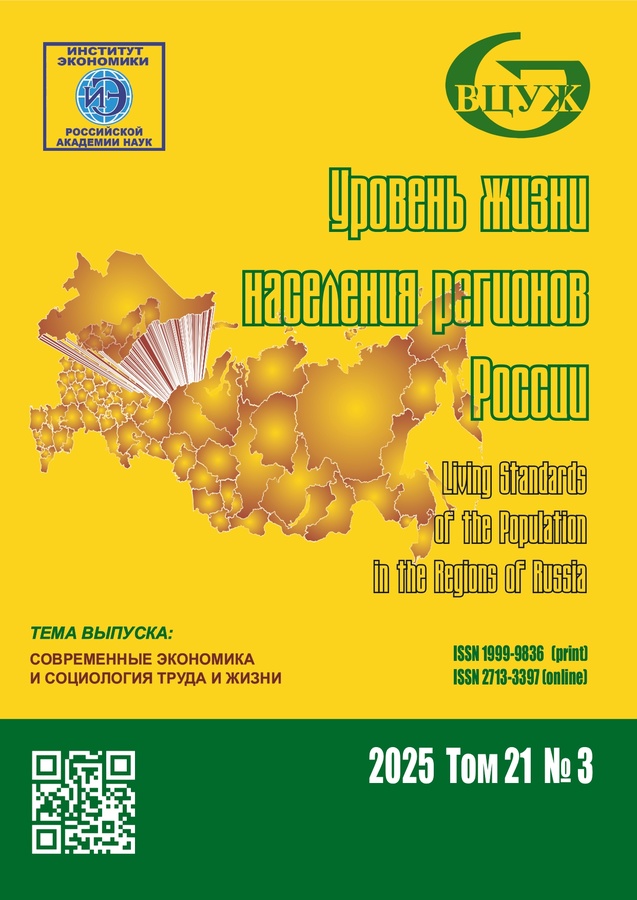
-
Living Standards of the Population in the Regions of Russia
ISSN (print): 1999-9836, ISSN (online): 2713-3397
Founder: Institute of Economics of the Russian Academy of Sciences
Editor-in-Chief: Bobkov Vyacheslav Nikolayevitch, Doctor of Economics
Frequency / Access: 4 issues per year / Open
Included in: Higher Attestation Commission List, RISC
-
Urology reports (St. - Petersburg)

-
Urology reports (St. - Petersburg)
ISSN (print): 2225-9074, ISSN (online): 2687-1416
Founder: Eco-Vector LLC
Editor-in-Chief: Tkachuk Vladimir Nikolaevich, Doctor of Medical Sciences, Professor
Frequency / Access: 4 issues per year / Subscription
Included in: Higher Attestation Commission List, RISC
-
Urologiia
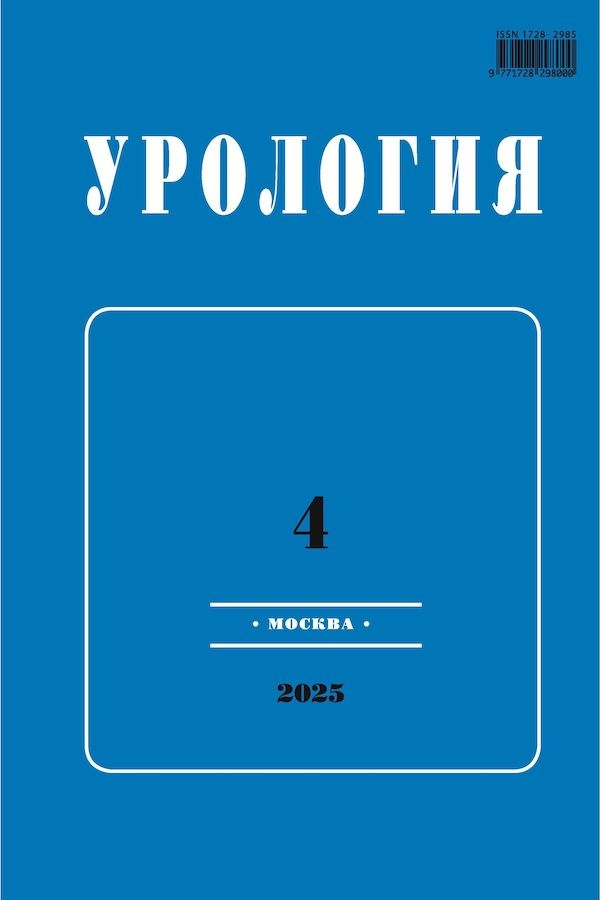
-
Urologiia
ISSN (print): 1728-2985, ISSN (online): 2414-9020
Founders: The State Education Institution of Higher Professional Training The First Sechenov Moscow State Medical University under Ministry of Health of the Russian Federation; All-Russian public organization " Russian society of urologists"
Editor-in-Chief: Alyaev Y.G., Corresponding Member of RAS, Doctor of Sc., Full Professor
Frequency / Assess: 6 issues per year / Subscription
Included in: White List (3rd level), Higher Attestation Commission List, RISC, Scopus
-
Modern humanities success

-
Modern humanities success
ISSN (online): 2618-7175
Founder: Self-employed Klyueva M.M. (Belgorod)
Editor-in-Chief: Solopanova Ol’ga Yur’yevna, Doctor of Sc., Full Professor
Frequency / Assess: 4 issues per year / Open
Included in: Higher Attestation Commission list, RISC
-
Uspekhi Matematicheskikh Nauk
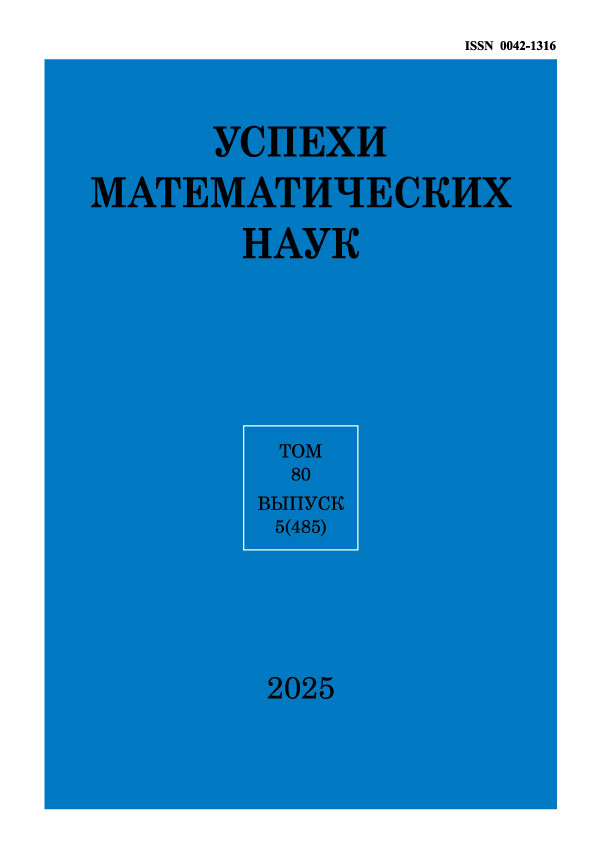
-
Uspekhi Matematicheskikh Nauk
ISSN (print): 0042-1316, ISSN (online): 2305-2872
Founders: Steklov Mathematical Institute of RAS, Russian Academy of Sciences
Editor-in-Chief: Valery V. Kozlov, academician of RAS, Doctor of Sc., Professor
Frequency / Access: 6 issues per year / Subscription
Included in: White list (1st level), RISC, MathSciNet, zbMATH
-
Advances in Current Biology
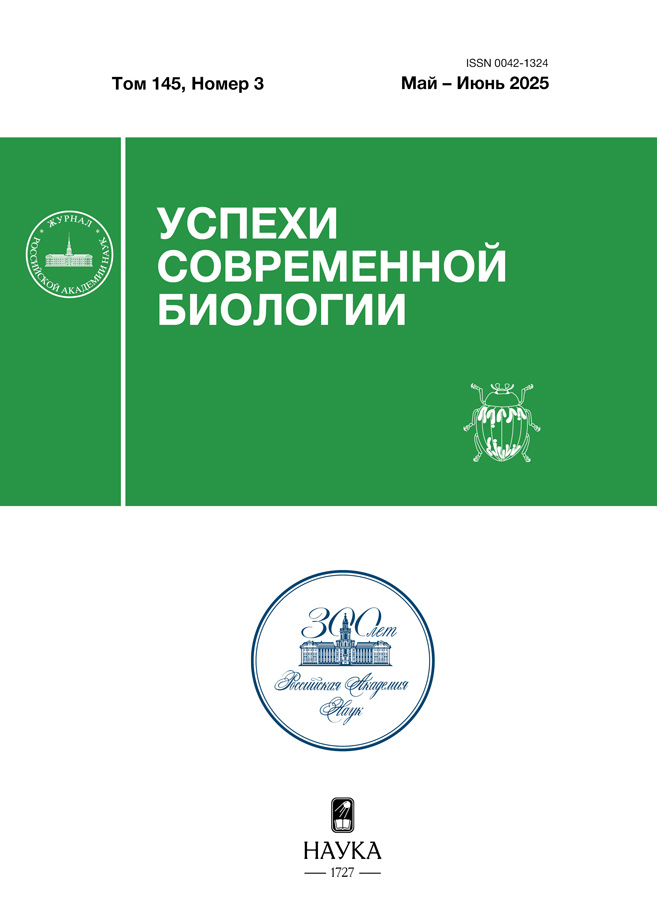
-
Advances in Current Biology
ISSN (print): 0042-1324
Founder: Russian Academy of Sciences
Editor-in-Chief: Kudryavtsev A.M., corresponding member RAS, Doctor of Sc.
Frequency / Access: 6 issues per year / Subscription
Included in: White list (3rd level), Higher Attestation Commission list, RISC, Web of Science Core Collection
-
Uspehi sovremennoj radioèlektroniki

-
Uspehi sovremennoj radioèlektroniki
ISSN (print): 2070-0784
Founder: Limited Liability Company "Publishing House "Radiotekhnika"
Editor-in-Chief: Alexander S. Bugaev, Academican of RAS, Doctor of Sc.
Frequency / Access: 12 issues per year /Hybrid
Included in: Higher Attestation Commission List, RISC
-
Progress in Physiological Science
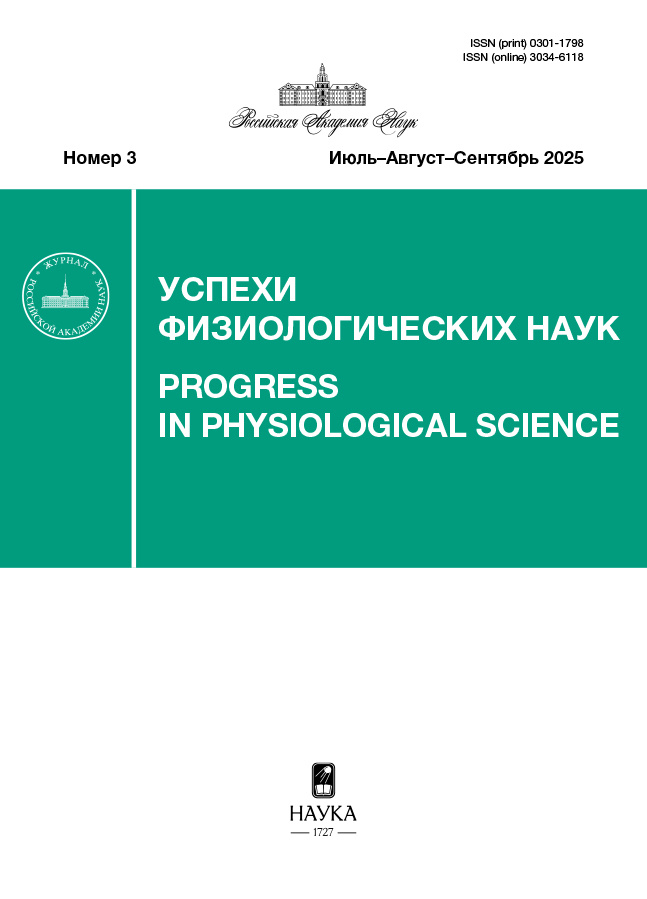
-
Progress in Physiological Science
ISSN (print): 0301-1798
Founder: Russian Academy of Sciences
Editor-in-Chief: Filaretova L., academician RAS, Doctor of Sc.
Frequency / Access: 4 issues per year / Subscription
Included in: White list (2nd level), перечень ВАК, RISC, Scopus, Web of Science Core Collection
-
Uspehi fizičeskih nauk
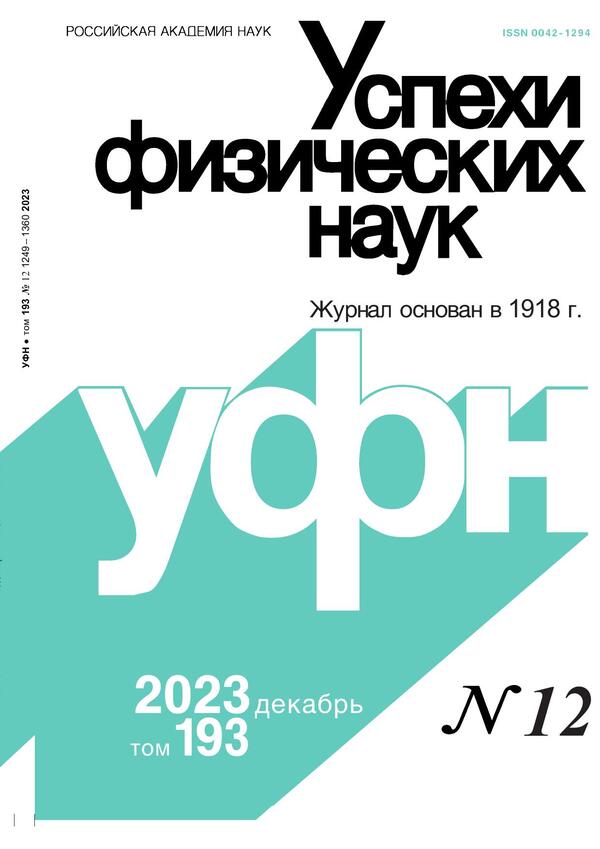
-
Uspehi fizičeskih nauk
ISSN (print): 0042-1294, ISSN (online): 1996-6652
Founders: P.N. Lebedev Physical Institute of the RAS, Uspekhi Fizicheskikh Nauk, RAS
Editor-in-Chief: Rudenko O.V., academician RAS
Frequency / Assess: 12 issues per year / Subsription
Included in: White List (1st level), Higher Attestation Commission List, RISC, Scopus
-
Uspehi himii
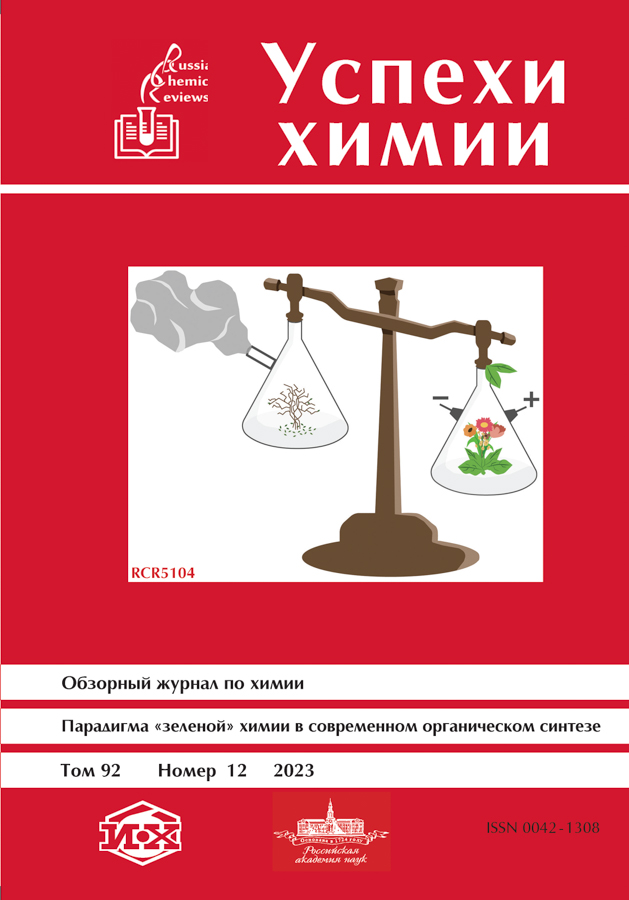
-
Uspehi himii
ISSN (print): 0042-1308, ISSN (online): 1817-5651
Founders: Russian Academy of Sciences, N. D. Zelinsky Institute of Organic Chemistry RAS
Editor-in-Chief: Mikhail P. Egorov, Academician of RAS, Doctor of Sc.
Frequency / Access: 12 issues per year / Subscription
Included in: White List (1st level), Higher Attestation Commission List, RISC
-
Ufa humanitarian scientific forum

-
Ufa humanitarian scientific forum
ISSN (print): 2713-2358
Founder: State budgetary scientific institution "Academy of Sciences of the Republic of Bashkortostan"
Editor-in-Chief:
Frequency / Assess: 4 issues per year / Open
Included in: Higher Attestation Commission list, RISC
-
Teaching experiment in education

-
Teaching experiment in education
ISSN (print): 2079-875X
Founder: Mordovian State Pedagogical University named after M. E. Evseviev
Editor-in-Chief: Zeinalov G.G., Doctor of Sc., Full Professor
Frequency / Assess: 4 issues per year / Open
Included in: Higher Attestation Commission list, RISC
-
Uchyonye zapiski. Electronic scientific journal of the Kursk State University

-
Uchyonye zapiski. Electronic scientific journal of the Kursk State University
ISSN (online): 2074-1774
Founder: Kursk State University
Editor-in-Chief: Saltyk Galina Alexandrovna, Doctor of Sc., Full Professor
Frequency / Assess: 4 issues per year / Open
Included in: Higher Attestation Commission list, RISC
-
Scientific Notes of V.I. Vernadsky Crimean Federal University. Biology. Chemistry

-
Scientific Notes of V.I. Vernadsky Crimean Federal University. Biology. Chemistry
ISSN (print): 2413-1725
Founder: V.I. Vernadsky Crimean Federal University
Editor-in-Chief: Chuyan Elena Nikolaevna
Frequency / Assess: 4 issues per year / Open
Included in: Higher Attestation Commission list, RISC
-
Proceedings of Petrozavodsk State University

-
Proceedings of Petrozavodsk State University
ISSN (print): 2542-1077, ISSN (online): 1994-5973
Founder: Petrozavodsk State University
Editor-in-Chief: Elena S. Senyavskaya, Doctor of History, Professor
Frequency / Access: 8 issues per year / Open
Included in: Higher Attestation Commission List, RISC, ERIH PLUS
-
Učenye zapiski Rossijskoj akademii muzyki imeni Gnesinyh

-
Učenye zapiski Rossijskoj akademii muzyki imeni Gnesinyh
ISSN (print): 2227-9997
Founder: Russian Gnessin Academy of Music
Editor-in-Chief: Irina S. Stognii, Doctor of Art History, Professor
Frequency / Access: 4 issues per year / Open
Included in: Higher Attestation Commission List, RISC
-
Uchenye zapiski universiteta imeni P.F. Lesgafta
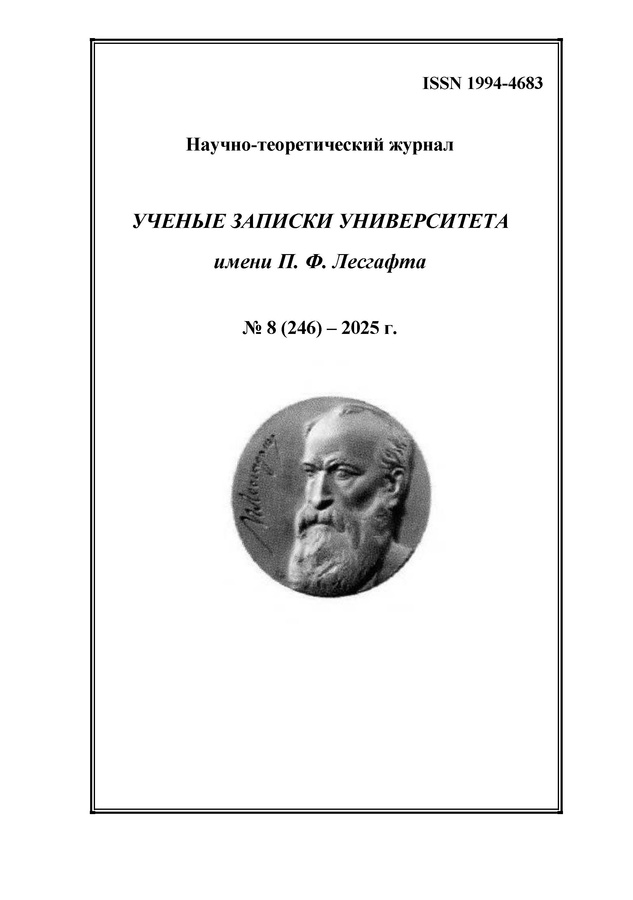
-
Uchenye zapiski universiteta imeni P.F. Lesgafta
ISSN (print): 1994-4683, ISSN (online): 2308-1961
Founder: The Lesgaft National State University of Physical Education, Sports and Health
Editor-in-Chief: Ashkinazi Sergey Maksimovich, Djctor of Sc. (Pedagogical), Professor
Frequency / Access: 12 issues per year / Open
Included in: Higher Attestation Commission List, RISC
-
Scholarly Notes of Transbaikal State University

-
Scholarly Notes of Transbaikal State University
ISSN (print): 2658-7114, ISSN (online): 2542-0070
Founder: Federal state budgetary educational establishment of higher education "Transbaikal State University"
Editor-in-Chief: Erofeeva Irina V., Doctor of Sc., Professor
Frequency / Assess: 4 issues per year / Open
Included in: Higher Attestation Commission list, RISC
-
Pharmateca
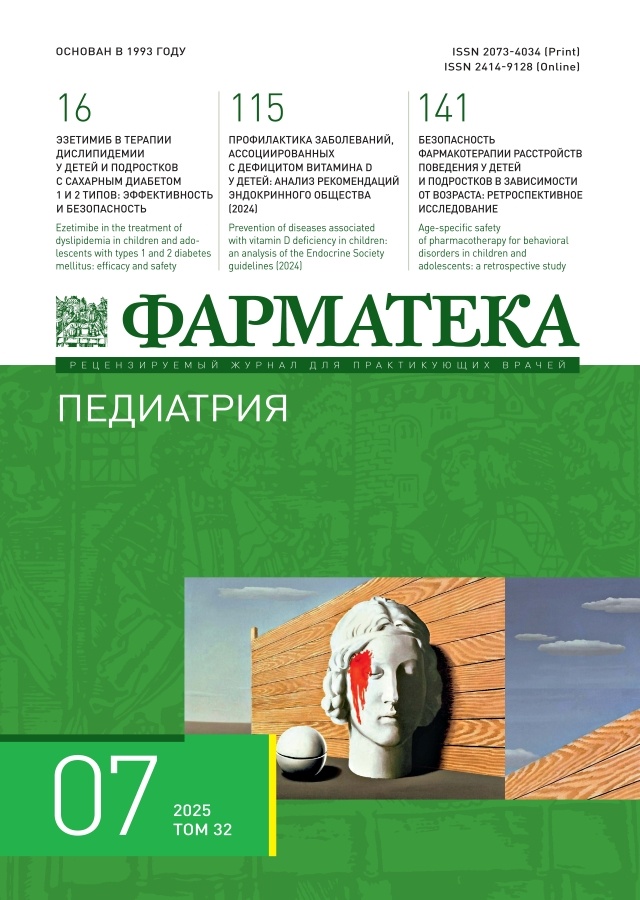
-
Pharmateca
ISSN (print): 2073-4034, ISSN (online): 2414-9128
Founder: LLC “Bionika Media”
Editor-in-Chief: Sychev D.A., Corresponding Member of RAS, Doctor of Sc., Full Professor
Frequency / Assess: 14 issues per year / Subscription
Included in: Higher Attestation Commission List, RISC
-
Farmaciya (Pharmacy)

-
Farmaciya (Pharmacy)
ISSN (print): 0367-3014, ISSN (online): 2541-9218
Founder: Ministry of Health of the Russian Federation, Russian Center for Pharmaceutical and Medical-Technical Information
Editor-in-Chief: Irina A. Samylina, Corresponding Member of the RAS, Doctor of of Pharmaceutical Sciences
Frequency / Access: 8 issues per year / Subscription
Included in: Higher Attestation Commission List, RISC
-
Pharmacogenetics and pharmacogenomics

-
Pharmacogenetics and pharmacogenomics
ISSN (print): 2588-0527, ISSN (online): 2686-8849
Founders: LLC “Publisher OKI”, Russian Society of Pharmacogenetics, Pharmacokinetics and Personalized Therapy
Editor-in-Chief: Dmitry A. Sychev, Academician of RAS, Doctor of Sc., Professor
Frequency / Access: 2 issues per year / Open
Included in: RISC
-
Pharmacokinetics and pharmacodynamics

-
Pharmacokinetics and pharmacodynamics
ISSN (print): 2587-7836, ISSN (online): 2686-8830
Founder: LLC “Publisher OKI”
Editor-in-Chief: Zherdev, Vladimir P, Doctor of Sc., Professor
Frequency / Access: 4 issues per year / Open
Included in: Higher Attestation Commission List, RISC
-
ФАРМАКОЭКОНОМИКА. Современная фармакоэкономика и фармакоэпидемиология

-
ФАРМАКОЭКОНОМИКА. Современная фармакоэкономика и фармакоэпидемиология
ISSN (print): 2070-4909, ISSN (online): 2070-4933
Founder: Limited Liability Company IRBIS
Editor-in-Chief: Omelyanovskiy Vitaly V., Doctor of Sc., Professor
Frequency / Access: 4 issues per year / Open
Included in: White List (1st level), Higher Attestation Commission List, RISC, Scopus
-
Pharmacy & Pharmacology

-
Pharmacy & Pharmacology
ISSN (print): 2307-9266, ISSN (online): 2413-2241
Founder: Pyatigorsk Medical and Pharmaceutical Institute, a branch of the Volgograd State Medical University
Editor-in-Chief: Petrov Vladimir Ivanovich, Academician of the Russian Academy of Sciences, Doctor of Medical Sciences, Professor
Frequency / Access: 6 issues per year / Open
Included in: White List (4th level), Higher Attestation Commission List, RISC, Web of Science, Scopus
-
Фемида.Science

-
Фемида.Science
ISSN (online): 2414-5750
Founder: Russian State University of Justice named after V.M. Lebedev
Editor-in-Chief: Ermoshina Daria Grigoryevna
Frequency / Access: 2 issues per year / Open
Included in: RISC
-
Physics of Wave Processes and Radio Systems
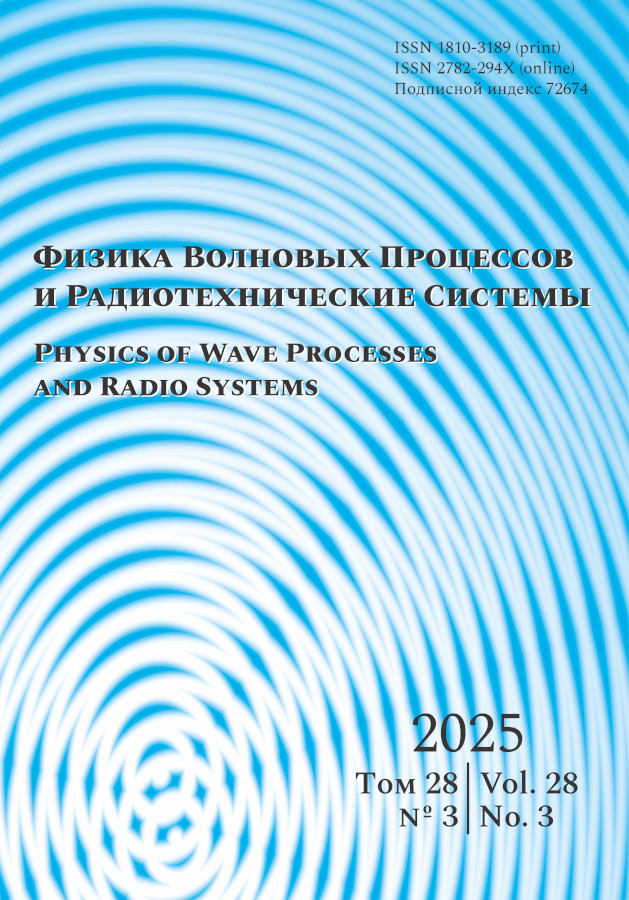
-
Physics of Wave Processes and Radio Systems
ISSN (print): 1810-3189, ISSN (online): 2782-294X
Founders: Samara National Research University, Povolzhskiy State University of Telecommunications & Informatics
Editor-in-Chief: Dmitriy S. Klyuev, Doctor of Sc., Full Professor
Frequency / Access: 4 issues per year / Open
Included in: Higher Attestation Commission List, RISC
-
Izvestiya, Physics of the Solid Earth
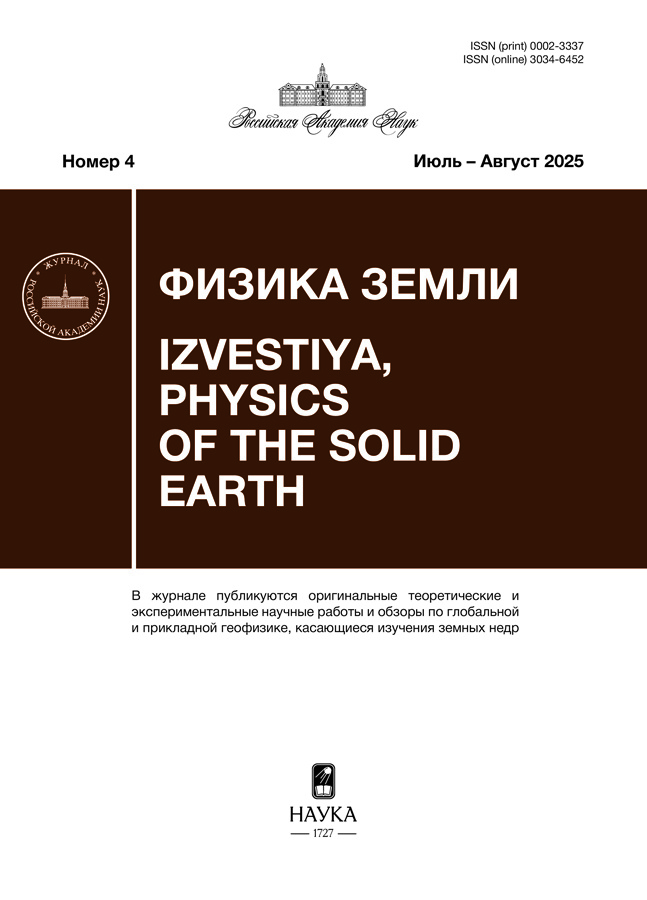
-
Izvestiya, Physics of the Solid Earth
ISSN (print): 0002-3337
Founders: Russian Academy of Sciences, Institute of the Earth Physics of RAS
Editor-in-Chief: Morozov Yu.A., corresponding member RAS, Doctor of Sc., Full Professor
Frequency / Access: 6 issues per year / Subscription
Included in: White list (2nd level), Higher Attestation Commission list, RISC
-
Glass Physics and Chemistry
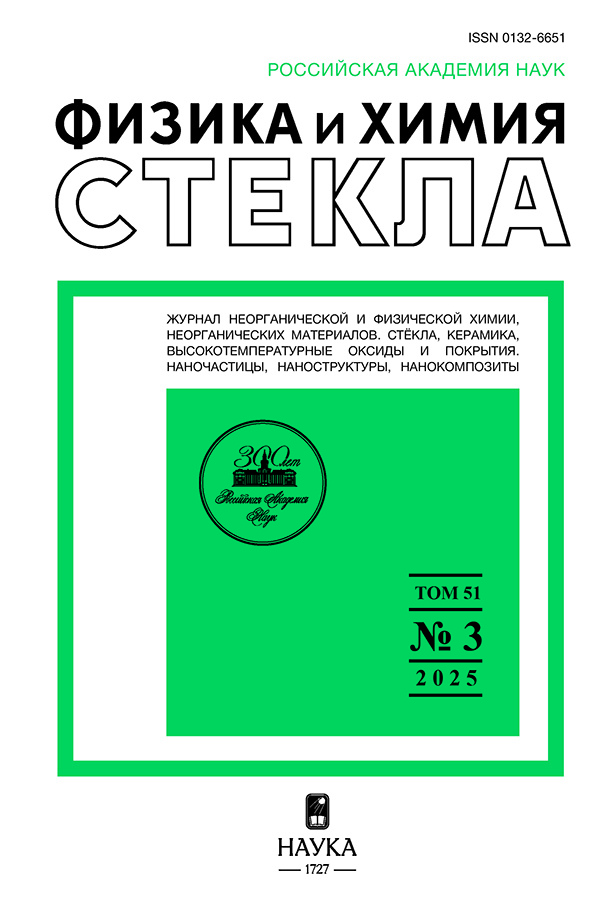
-
Glass Physics and Chemistry
ISSN (print): 0132-6651
Founders: Russian Academy of Sciences, Institute of Silicate Chemistry of RAS
Editor-in-Chief: Shevchenko Vladimir Yaroslavovich, academician RAS, Doctor of Sc.
Frequency / Access: 6 issues per year / Subscription
Included in: White list (2nd level), Higher Attestation Commission List, RISC
-
Physics of Metals and Metallography
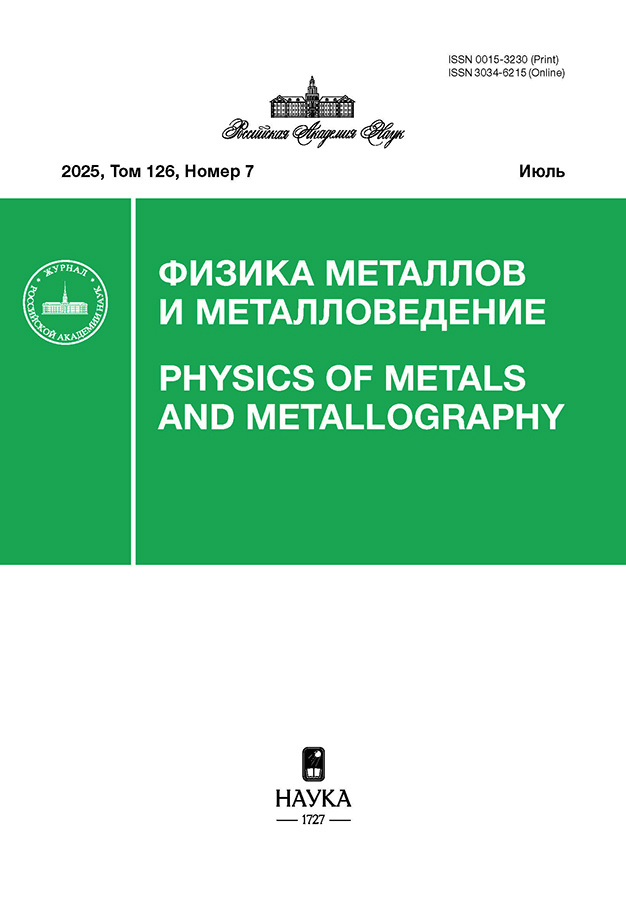
-
Physics of Metals and Metallography
ISSN (print): 0015-3230
Founders: Russian Academy of Sciences, M.N. Mikheev Institute of Metal Physics
Editor-in-Chief: Nikolay Varfolomeevich Mushnikov, Academician of the Russian Academy of Sciences, Doctor of Physical and Mathematical Sciences
Frequency / Access: 12 issues per year / Subscription
Included in: White List (2nd level), Higher Attestation Commission List, RISC
-
Physical and chemical aspects of the study of clusters, nanostructures and nanomaterials

-
Physical and chemical aspects of the study of clusters, nanostructures and nanomaterials
ISSN (print): 2226-4442, ISSN (online): 2658-4360
Founder: Tver State University
Editor-in-Chief: Samsonov V.M.
Frequency / Assess: 1 issue per year / Open
Included in: White list (3rd level), Higher Attestation Commission list, Web of Science, RISC, CAS
-
Protection of Metals and Physical Chemistry of Surfaces
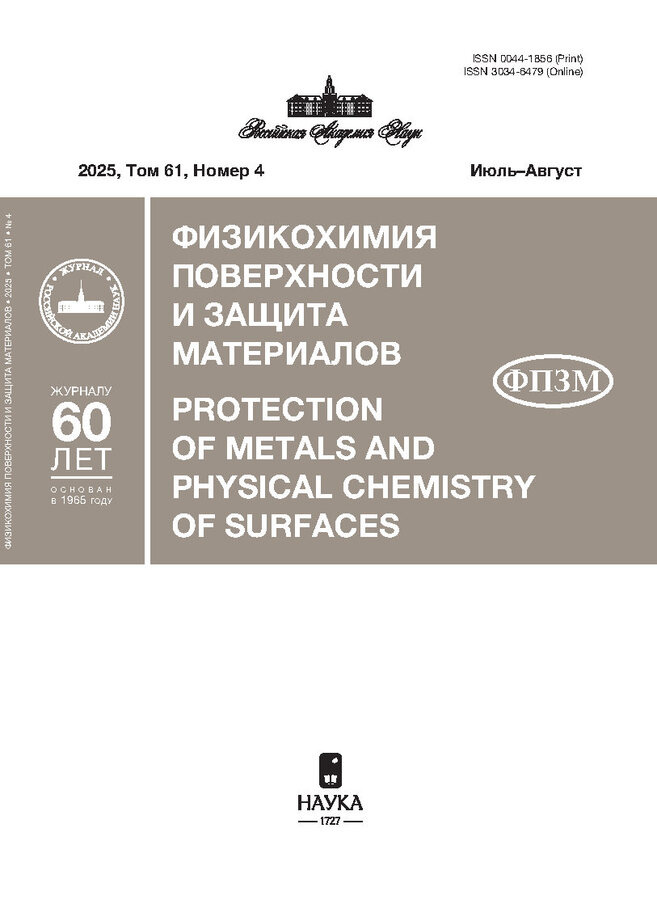
-
Protection of Metals and Physical Chemistry of Surfaces
ISSN (print): 0044-1856
Founders: Frumkin Institute of Physical Chemistry and Electrochemistry of the Russian Academy of Sciences, Russian Academy of Sciences
Editor-in-Chief: Aslan Yusupovich Tsivadze, Academician of the Russian Academy of Sciences, Doctor of Chemical Sciences
Frequency / Access: 6 issues per year / Subscription
Included in: White List (2nd level), Higher Attestation Commission List, RISC
-
Advances in Chemical Physics
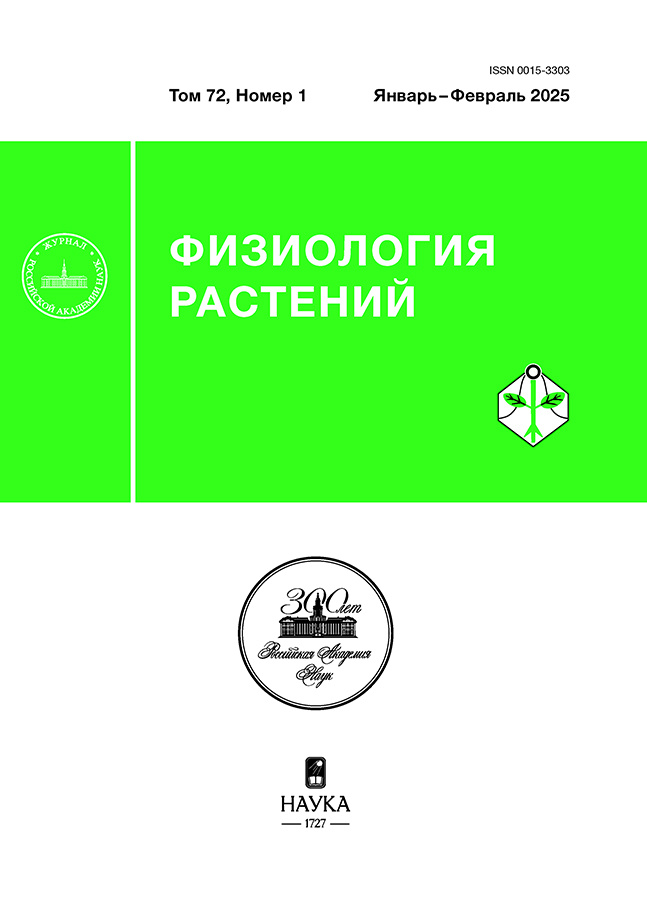
-
Advances in Chemical Physics
ISSN (print): 0015-3303
Founders: Timiryazev Institute of Plant Physiology, Russian Academy of Sciences
Editor-in-Chief: Vladimir Vasilievich Kuznetsov, Corresponding Member of the Russian Academy of Sciences, Doctor of Biological Sciences, Professor
Frequency / Access: 6 issues per year / Subscription
Included in: White List (1st level), Higher Attestation Commission List, RISC
-
Russian Journal of Physiotherapy, Balneology and Rehabilitation
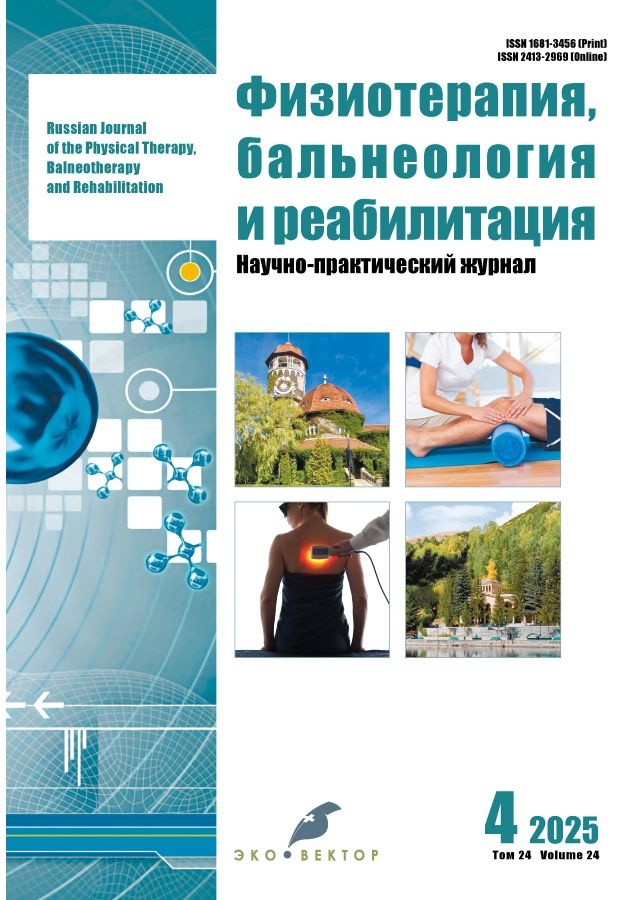
-
Russian Journal of Physiotherapy, Balneology and Rehabilitation
ISSN (print): 1681-3456, ISSN (online): 2413-2969
Founders: Izdatelstvo "Meditsyna", Eco-Vector Publishing Group
Editor-in-Chief: Prof. Nataly N. Korchazhkina, MD, Dr. Sci. (Medicine)
Frequency / Access: 6 issues per year / Hybrid
Included in: White List (4th level), Higher Attestation Commission List, RISC
-
Physical culture and sport

-
Physical culture and sport
ISSN (online): 3034-2317
Founder: Individual entrepreneur IP Klyuev Sergey Vasilievich
Editor-in-Chief: Pravdov Mikhail Alexandrovich, Doctor of Pedagogical Sciences
Frequency / Access: 4 issues per year / Open
Included in: RISC
-
Physical and rehabilitation medicine, medical rehabilitation
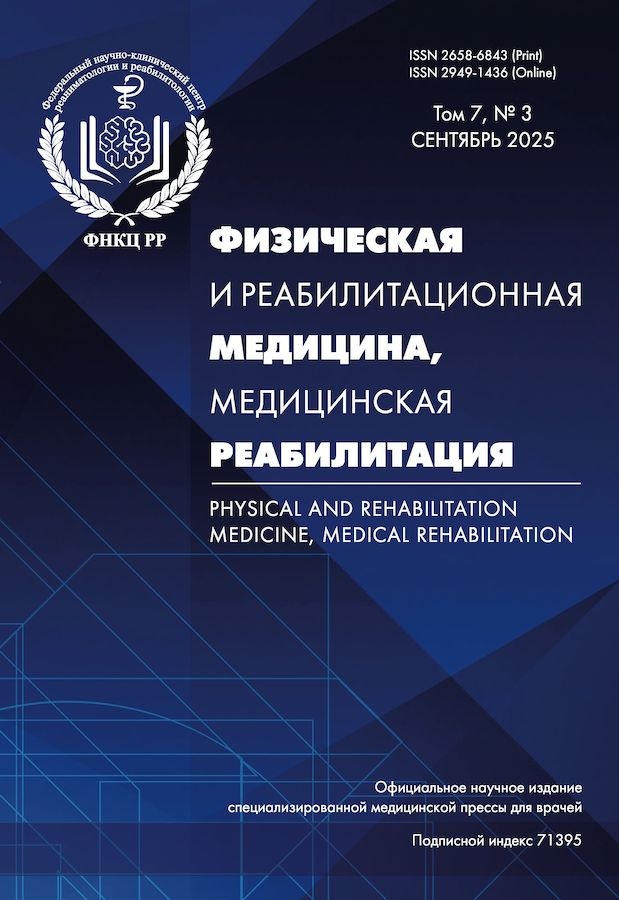
-
Physical and rehabilitation medicine, medical rehabilitation
ISSN (print): 2658-6843, ISSN (online): 2949-1436
Founders: Federal Research and Clinical Center of Intensive Care Medicine and Rehabilitology, Eco-Vector Publishing Group
Editor-in-Chief: Galina Ivanova, Doctor of Sc., Full Professor
Frequency / Access: 4 issues per year / Open
Included in: Higher Attestation Commission List, RISC
-
Физические основы приборостроения

-
Физические основы приборостроения
ISSN (print): 2225-4293, ISSN (online): 2712-7885
Founder: Scientific and Technological Centre of Unique Instrumentation of the Russian Academy of Sciences
Editor-in-Chief: Kravchenko Viktor Filippovich, Dr. Phys.-Math. n., professor
Frequency / Access: 4 issues per year / Open
Included in: Higher Attestation Commission List, RISC
-
Physics in higher education

-
Physics in higher education
ISSN (print): 1609-3143, ISSN (online): 1607-2340
Founder: Moscow Physical Society
Editor-in-Chief: Khokhlov D.R., Corresponding member RAS, Dr. of Phys. and Math. Sc.
Frequency / Access: 5 issues per year / Hybrid
Included in: Higher Attestation Commission List, RISC
-
Philology. Theory & Practice

-
Philology. Theory & Practice
ISSN (print): 1997-2911, ISSN (online): 2782-4543
Founder: “Gramota” Publishers
Editor-in-Chief: O. G. Lyabina, PhD in Philology, Ass. Professor
Frequency / Assess: 12 issues per year / Open
Included in: Higher Attestation Commission list, RISC
-
Philosophical Letters. Russian and European Dialogue

-
Philosophical Letters. Russian and European Dialogue
ISSN (online): 2658-5413
Founder: National Research University Higher School of Economics
Editor-in-Chief: Vladimir K. Kantor, Doctor of Sc., Full Professor
Frequency / Assess: 4 issues per year / Open
Included in: Higher Attestation Commission List, RISC
-
Philological Bulletin

-
Philological Bulletin
ISSN (online): 2949-4656
Founder: Individual entrepreneur IP Klyuev Sergey Vasilievich
Editor-in-Chief: Baluta Anastasia Anatolyevna, Doctor of Philological Sciences
Frequency / Access: 4 issues per year / Open
Included in: Higher Attestation Commission List, RISC
-
Philosophical Problems of IT & Cyberspace (PhilIT&C)

-
Philosophical Problems of IT & Cyberspace (PhilIT&C)
ISSN (online): 2305-3763
Founder: Pyatigorsk State University
Editor-in-Chief: Baryshnikov Pavel N., Doctor of Philosophy, professor
Frequency / Access: 2 issues per year / Open
Included in: RISC
-
Finno-Ugric world

-
Finno-Ugric world
ISSN (print): 2076-2577, ISSN (online): 2541-982X
Founder and publisher: National Research Mordovia State University
Editor-in-Chief: Nikolay P. Makarkin, Dr.Sci. (Econ.), Professor
Frequency / Access: 4 issues per year / Open
Included in: White list (2nd level), Higher Attestation Commission List, RISC, RSCI
-
Pharmacy Formulas
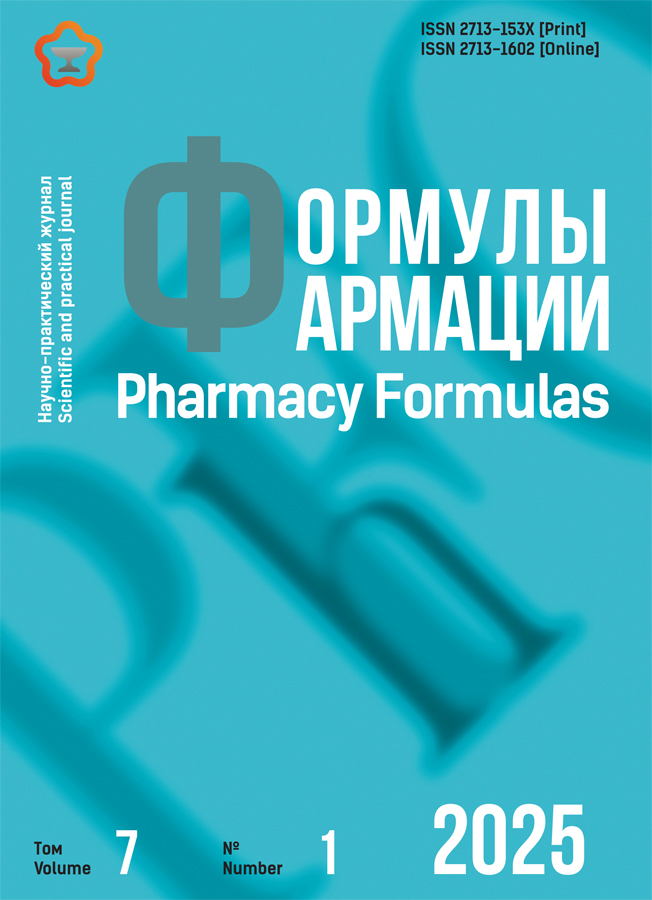
-
Pharmacy Formulas
ISSN (print): 2713-153X, ISSN (online): 2713-1602
Founders: North-West Institute of medical and biological problems and environmental protection, Eco-Vector Publishing Group
Editor-in-Chief: Perelygin V.V., Doctor of Sc., Full Professor
Frequency / Access: 4 issues per year / Open
Included in: RISC
-
Forsajt

-
Forsajt
ISSN (print): 1995-459X, ISSN (online): 2312-9972
Founder: National Research University Higher School of Economics
Editor-in-Chief: Gokhberg Leonid, Doctor of Sc., Full Professor
Frequency / Assess: 4 issues per year / Open
Included in: White List (1sd level), Higher Attestation Commission List, RISC
-
Himičeskaâ fizika
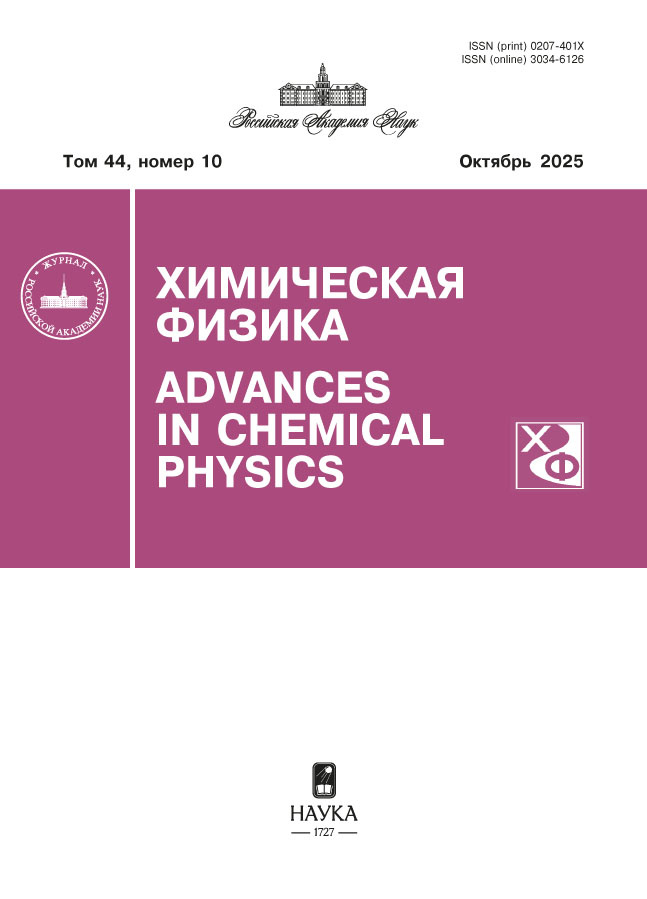
-
Himičeskaâ fizika
ISSN (print): 0207-401X
Founders: Russian Academy of Sciences, Federal Research Center "N. N. Semenov Institute of Chemical Physics" of the Russian Academy of Sciences
Editor-in-Chief: Anatoly Leonidovich Buchachenko, Academician of the Russian Academy of Sciences, Doctor of Chemical Sciences
Frequency / Access: 12 issues per year / Subscription
Included in: White List (2nd level), Higher Attestation Commission List, RISC
-
Solid Fuel Chemistry
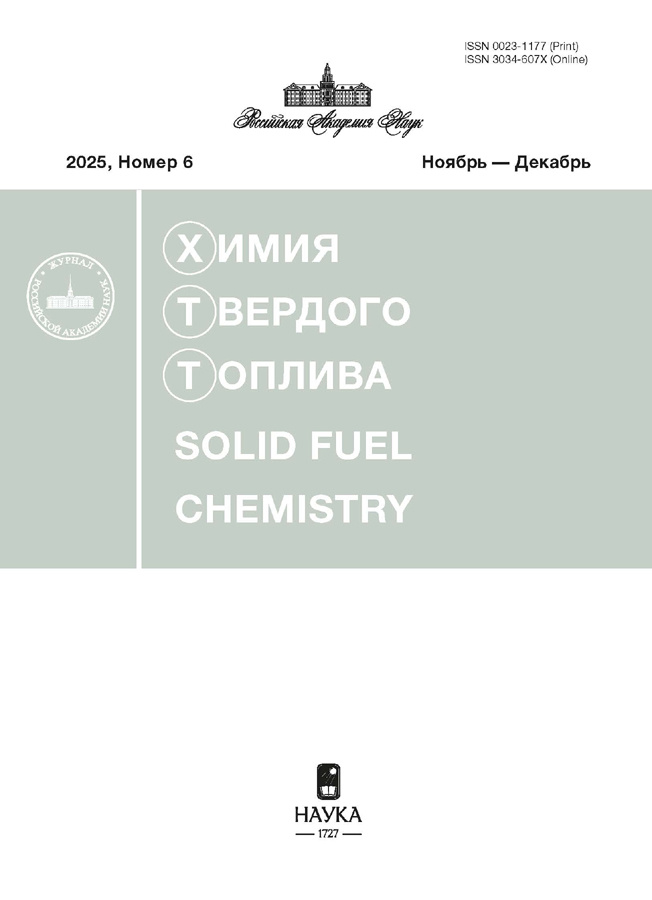
-
Solid Fuel Chemistry
ISSN (print): 0023-1177
Founders: Institute of Organic Chemistry named after N.D. Zelinsky of the Russian Academy of Sciences, Russian Academy of Sciences
Editor-in-Chief: Albert Lvovich Lapidus, Corresponding Member of the Russian Academy of Sciences, Doctor of Chemical Sciences
Frequency / Access: 6 issues per year / Subscription
Included in: White List (2nd level), Higher Attestation Commission List, RISC
-
Refrigeration Technology

-
Refrigeration Technology
ISSN (print): 0023-124X, ISSN (online): 2782-4241
Founder: Eco-Vector
Editor-in-Chief: Talyzin Maxim Sergeevich, corresponding member. International Academy of Refrigeration, Ph.D. tech. sciences
Frequency / Access: 4 issues per year / hybrid
Included in: Higher Attestation Commission List, RISC
-
Values and Meanings

-
Values and Meanings
ISSN (print): 2071-6427
Founder: ANOO "Institute of Effective Technologies"
Editor-in-Chief: Ivanova Svetlana Veniaminovna, Doctor of Sc., Professor
Frequency / Assess: 6 issues per year / Open
Included in: Higher Attestation Commission list, RISC
-
Center and Periphery

-
Center and Periphery
ISSN (print): 2307-5775
Founder: Research Institute of the Humanities by the Government of the Republic of Mordovia
Editor-in-Chief: Galina A. Kursheva, Dr. Sc. (History), professor
Frequency / Access: 4 issues per year / Open
Included in: Higher Attestation Commission List, RISC
-
Cell and Tissue Biology
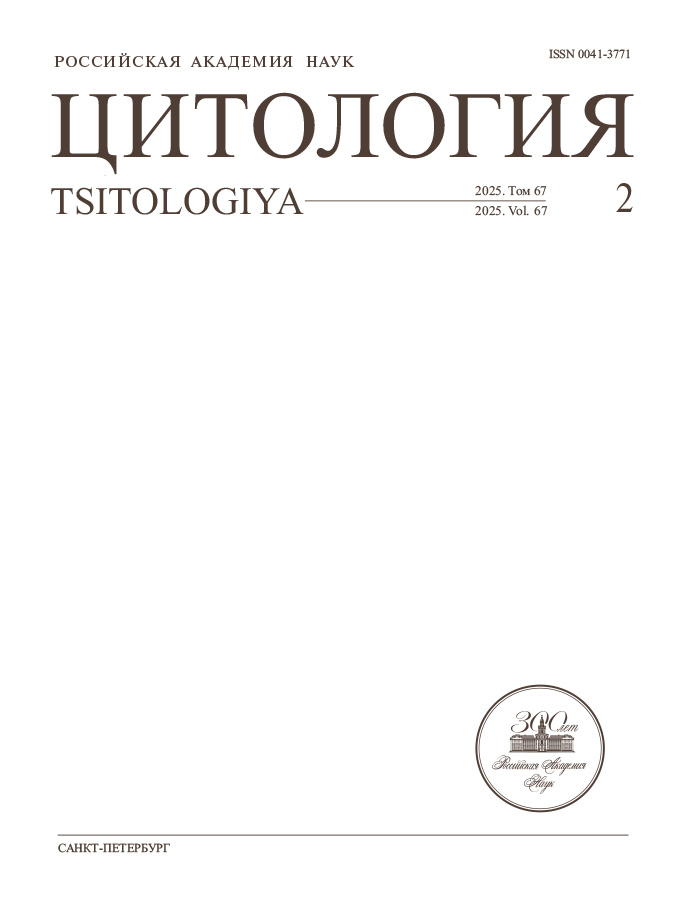
-
Cell and Tissue Biology
ISSN (print): 0041-3771
Founders: Russian Academy of Sciences, Institute of Cytology of the RAS
Editor-in-Chief: Tomilin A.N., corresponding member RAS, Doctor of Sc., Full Professor
Frequency / Assess: 6 issues per year / Subscription
Included in: White List (3rd level), Higher Attestation Commission List, RISC, Scopus
-
Digitalization

-
Digitalization
ISSN (print): 2712-8733
Founder: Krasnoyarsk Regional Youth Public Organization "Union of Young Scientists of Krasnoyarsk"
Editor-in-Chief: Koptseva N.P., Doctor of Sc., Professor
Frequency / Access: 4 issues per year / Subscription
Included in: Higher Attestation Commission list, RISC
-
The Human Being

-
The Human Being
ISSN (print): 0236-2007, ISSN (online): 2782-2893
Founders: Russian Academy of Sciences, Institute of Philosophy RAS
Editor-in-Chief: Afanasov Nikolay Borisovich, Doctor of Sc., Full Professor
Frequency / Assess: 6 issues per year / Subscription
Included in: White List (2nd level), Higher Attestation Commission List, RISC, Scopus
-
Šag v nauku

-
Šag v nauku
ISSN (print): 2542-1069
Founder: Orenburg State University
Editor-in-Chief: Letuta S.N.
Frequency / Assess: 4 issues per year / Open
Included in: RISC
-
Ecological Safety of Coastal and Shelf Zones of Sea

-
Ecological Safety of Coastal and Shelf Zones of Sea
ISSN (print): 2413-5577
Founder: Marine Hydrophysical Institute, RAS
Editor-in-Chief: Yuri N. Goryachkin, Doctor of Sc.
Frequency / Assess: 4 issues per year / Open
Included in: Higher Attestation Commission list, RISC, Scopus
-
Ecological genetics

-
Ecological genetics
ISSN (print): 1811-0932, ISSN (online): 2411-9202
Founder: Eco-Vector Publishing Group
Editor-in-Chief: Inge-vechtomov S.G., academician RAS, Doctor of Sc., Full Professor
Frequency / Access: 4 issues per year / Subscription
Included in: White List (3rd level), Higher Attestation Commission List, RISC, Scopus
-
Ecology
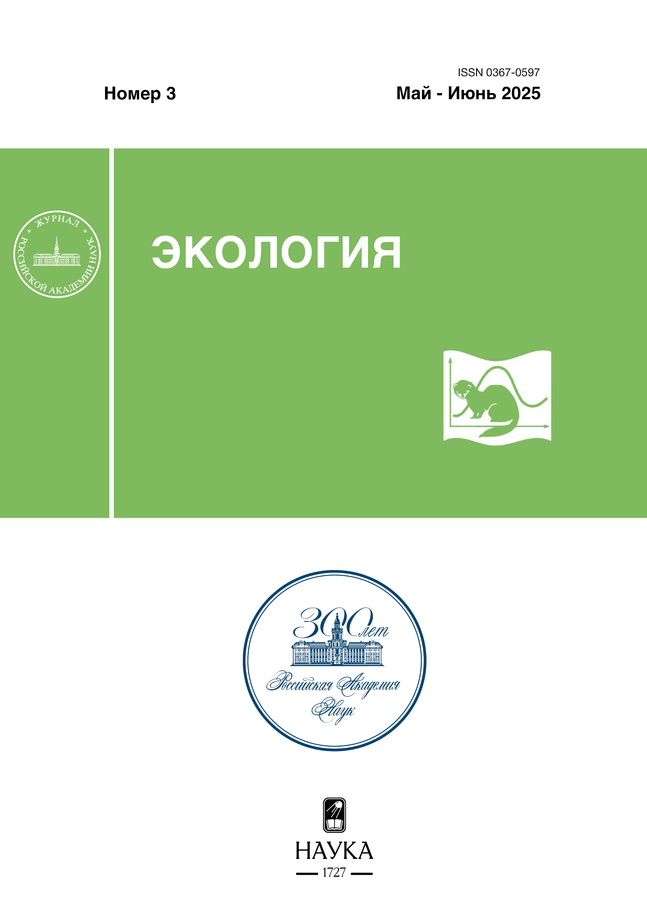
-
Ecology
ISSN (print): 0367-0597
Founders: Russian Academy of Sciences, Ural Branch of the RAS
Editor-in-Chief: Bogdanov V.D., corresponding member RAS, Doctor of Sc., Full Professor
Frequency / Assess: 6 issues per year / Subscription
Included in: White List (2nd level), Higher Attestation Commission List, RISC
-
Ekologiya cheloveka (Human Ecology)
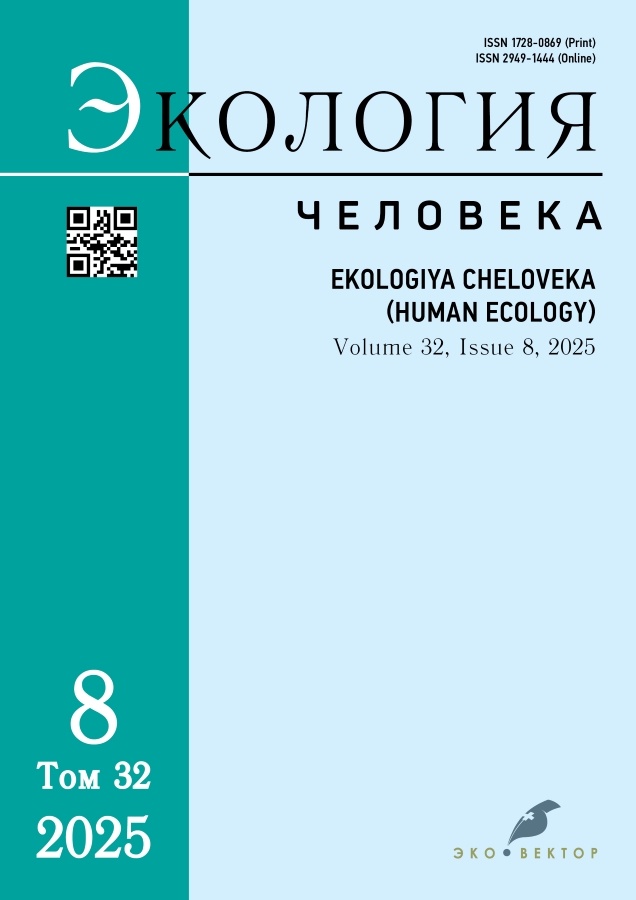
-
Ekologiya cheloveka (Human Ecology)
ISSN (print): 1728-0869, ISSN (online): 2949-1444
Founders: Northern State Medical University, Eco-Vector
Editor-in-Chief: Andrej M. Grjibovski, Doctor of Sc., Professor
Frequency / Access: 12 issues per year / Open
Included in: White List (3rd level), RISC, Scopus
-
HIGH-TECH ENTERPRISES ECONOMY

-
HIGH-TECH ENTERPRISES ECONOMY
ISSN (print): 2542-0593
Founder: Creative Economy Publishers
Editor-in-Chief: Tolstykh T.O., Doctor Sciences, Professor
Frequency / Assess: 4 issues per year / Open
Included in: White List (3rd level), Higher Attestation Commission list, RISC
-
Èkonomika železnyh dorog

-
Èkonomika železnyh dorog
ISSN (print): 1727-6500
Founder: “Prometheus publisher”
Editor-in-Chief: Chausova Larisa
Frequency / Access: 12 issues per year / Open
Included in: Higher Attestation Commission List, RISC
-
Journal of Economics, Entrepreneurship and Law

-
Journal of Economics, Entrepreneurship and Law
ISSN (online): 2222-534X
Founder: Limited Liability Company "First Economic Publishing House" (Moscow)
Editor-in-Chief: Zasko Vadim, Doctor of Sc., Professor
Frequency / Access: 4 issues per year / Open
Included in: Higher Attestation Commission List, RISC
-
Economy and business: theory and practice

-
Economy and business: theory and practice
ISSN (print): 2411-0450, ISSN (online): 2413-0257
Founder: Limited Liability Company Capital
Editor-in-Chief: Matveev D.M., PhD, Associate Professor
Frequency / Assess: 12 issues per year / Open
Included in: Higher Attestation Commission List, RISC
-
Economics and Mathematical Methods
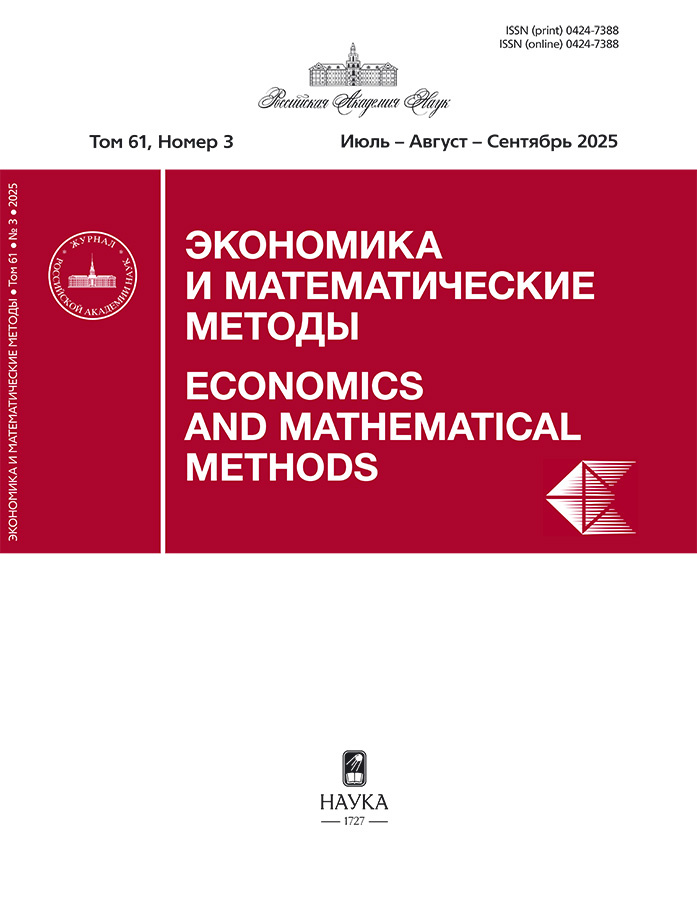
-
Economics and Mathematical Methods
ISSN (print): 0424-7388
Founders: Russian Academy of Sciences, Central Economics and Mathematics Institute of the RAS, Market Economy Institute
Editor-in-Chief: Dementiev Victor Evgenievich, corresponding member RAS, Doctor of Sc., Full Professor
Frequency / Assess: 4 issues per year / Subscription
Included in: White List (3rd level), Higher Attestation Commission List, RISC
-
ECONOMICS AND MANAGEMENT IN SPORTS

-
ECONOMICS AND MANAGEMENT IN SPORTS
ISSN (print): 2949-3196
Founder: Limited Liability Company "First Economic Publishing House"
Editor-in-Chief: Belyakova Mariya, Candidate of Economic Sciences, Associate Professor
Frequency / Assess: 4 issues per year / Open
Included in: White List (3rd level), Higher Attestation Commission list, RISC
-
Economics and Innovation Management

-
Economics and Innovation Management
ISSN (print): 2587-5574, ISSN (online): 2949-0650
Founder: T.F. Gorbachev Kuzbass state technical university
Editor-in-Chief: Sergey A. Zhironkin, Doctor of Sc., Associate Professor
Frequency / Access: 4 issues per year / Open
Included in: Higher Attestation Commission List, RISC
-
RUSSIAN JOURNAL OF INDUSTRIAL ECONOMICS

-
RUSSIAN JOURNAL OF INDUSTRIAL ECONOMICS
ISSN (print): 2072-1633, ISSN (online): 2413-662X
Founder: The Federal State Educational Institution of the Higher Education National University of Science and Technology MISIS
Editor-in-Chief: Vladimir L. Kvint, Foreign Member of the RAS, Dr. Sc., Professor
Frequency / Assess: 4 issues per year / Open
Included in: White List (1st level), Higher Attestation Commission list, RISC
-
Russian Journal of Labor Economics
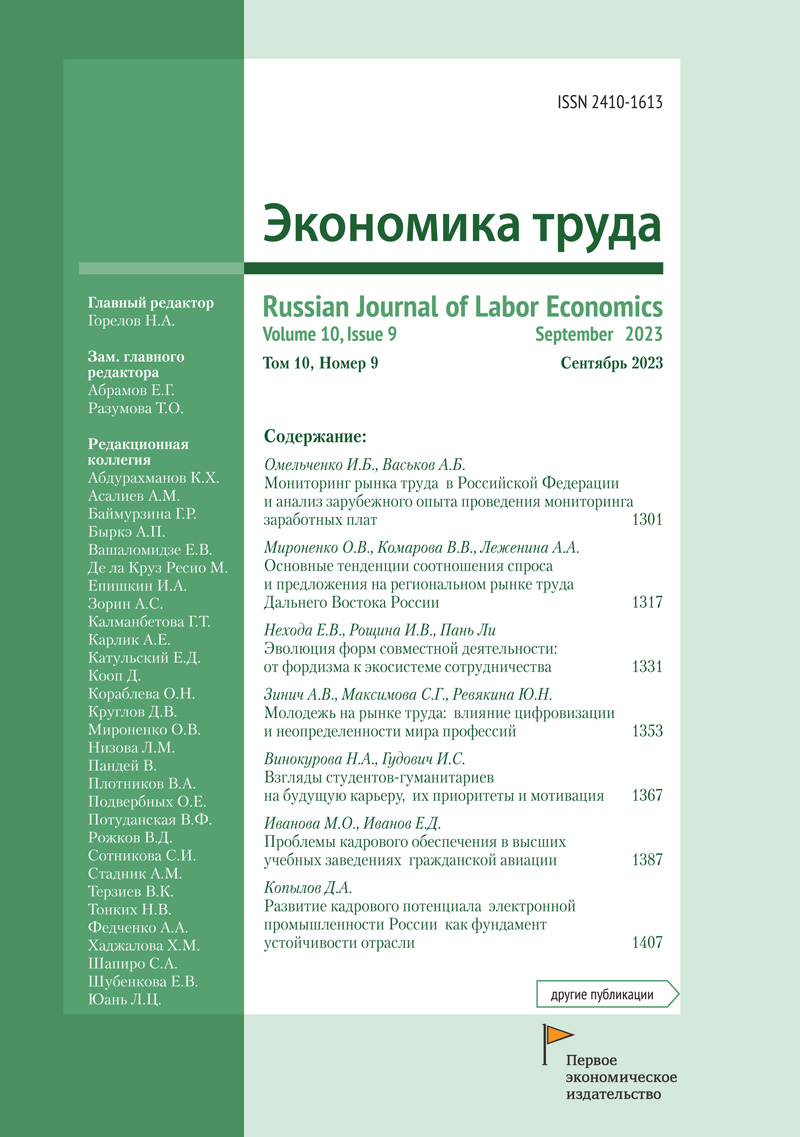
-
Russian Journal of Labor Economics
ISSN (print): 2410-1613, ISSN (online): 2412-8929
Founder: Creative Economy Publishers
Editor-in-Chief: Gorelov Nikolay, Doctor of Sc., Full Professor
Frequency / Assess: 4 issues per year / Subscription
Included in: Higher Attestation Commission list, RISC
-
Journal of Central Asia Economy
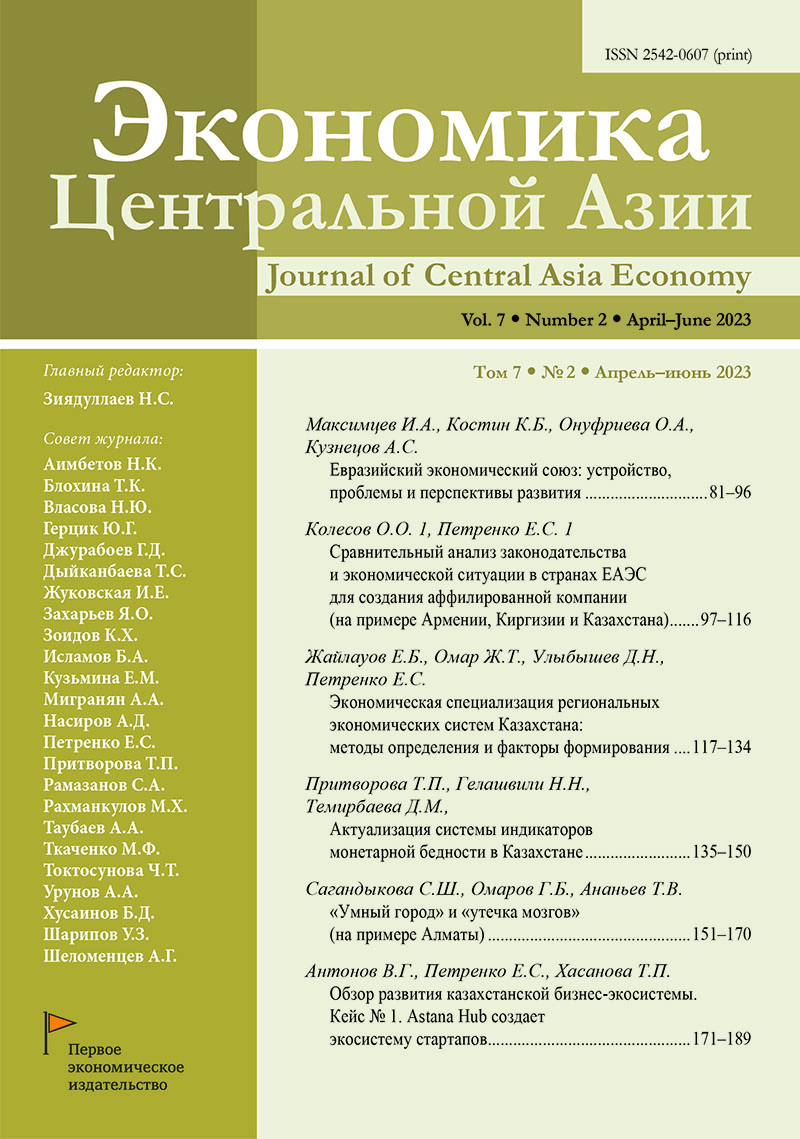
-
Journal of Central Asia Economy
ISSN (print): 2542-0607
Founder: Limited Liability Company "First Economic Publishing House" (Moscow)
Editor-in-Chief: Nabi Ziyadullaev,Doctor of Sc., Professor
Frequency / Access: 4 issues per year / Open
Included in: Higher Attestation Commission List, RISC
-
Economic Security
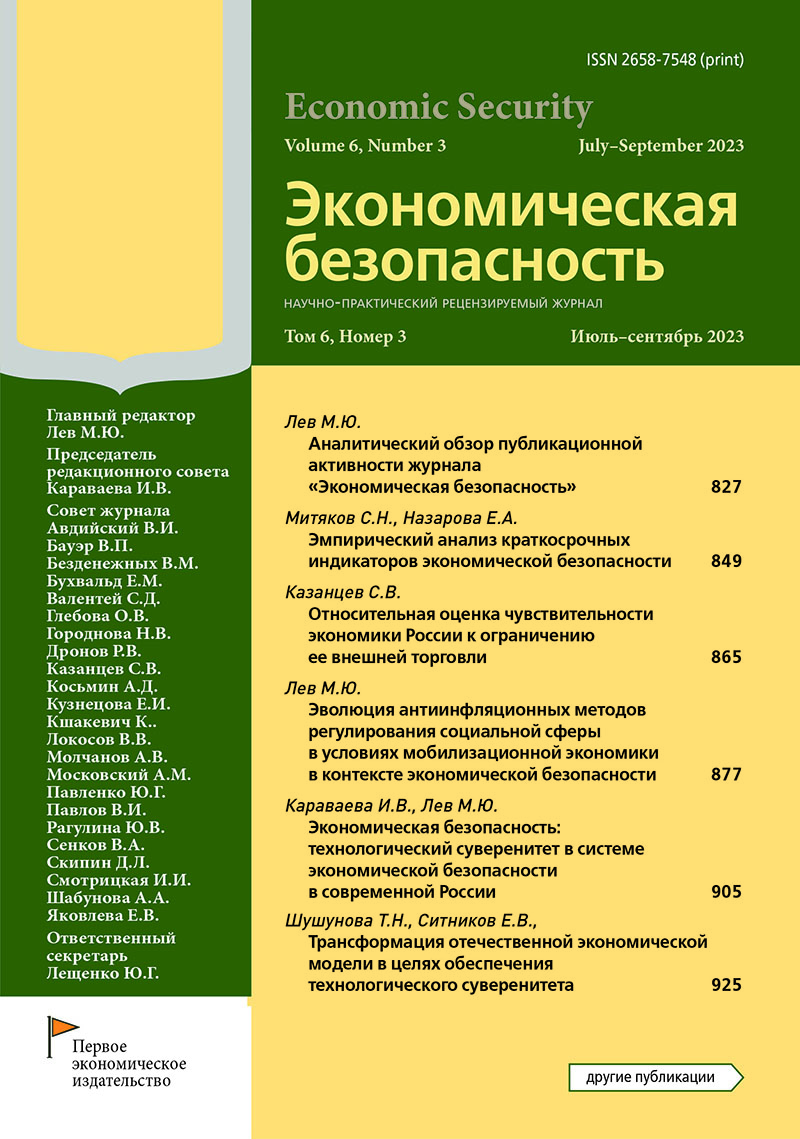
-
Economic Security
ISSN (print): 2658-7548
Founder: Limited Liability Company "First Economic Publishing House" (Moscow)
Editor-in-Chief: Lev Mikhail, Ph.D., professor
Frequency / Access: 4 issues per year / Open
Included in: Higher Attestation Commission List, RISC
-
Economics of Contemporary Russia
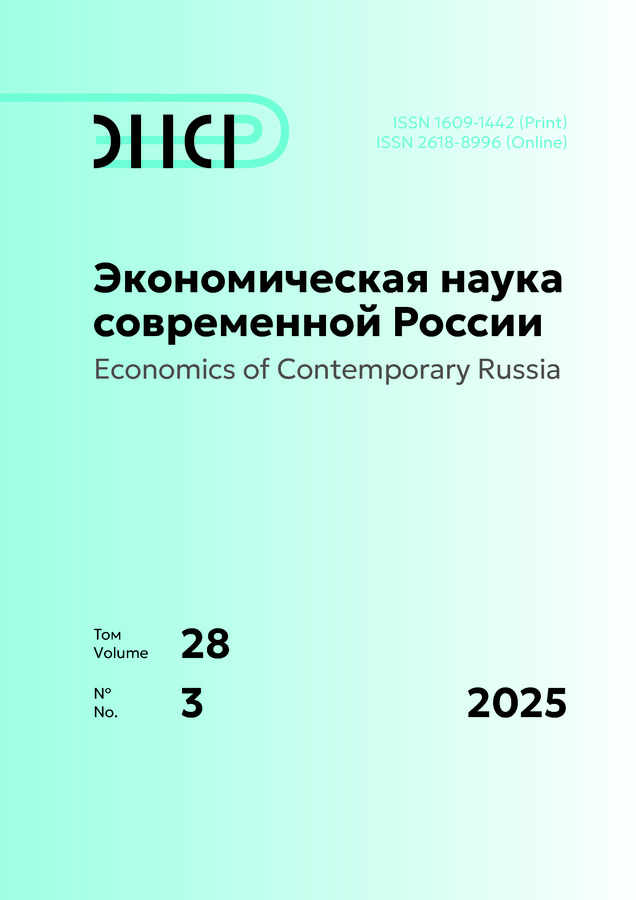
-
Economics of Contemporary Russia
ISSN (print): 1609-1442, ISSN (online): 2618-8996
Founder: Regional Public Organization for the Promotion of Institutes of the Department of Economics of the Russian Acodemy of Sciences
Editor-in-Chief: Kleiner Georgy Borisovich, Corresponding Member of the Russian Academy of Sciences, Doctor of Sc., Professor
Frequency / Access: 4 issues per year / Open
Included in: Higher Attestation Commission list, RISC
-
Èkonomičeskaâ sociologiâ

-
Èkonomičeskaâ sociologiâ
ISSN (online): 1726-3247
Founders: National Research University Higher School of Economics, Radaev V.V.
Editor-in-Chief: Radaev Vadim, Doctor of Sc., Full Professor
Frequency / Assess: 5 issues per year / Open
Included in: White List (2nd level), Higher Attestation Commission List, RISC, Scopus
-
Journal of International Economic Affairs

-
Journal of International Economic Affairs
ISSN (online): 2587-8921
Founder: RAINP LLS (Moscow)
Editor-in-Chief: Andronova Inna, Doctor of Sc., Professor
Frequency / Access: 4 issues per year / Open
Included in: Higher Attestation Commission List, RISC
-
Economic bulletin of IPU RAS

-
Economic bulletin of IPU RAS
ISSN (online): 2713-2986
Founder: Institute of Control Sciences of the Russian Academy of Sciences
Editor-in-Chief: Robert M. Nizhegorodtsev, Doctor of Economics
Frequency / Access: 4 issues per year / Open
Included in: RISC
-
Higher School of Economics Economic Journal
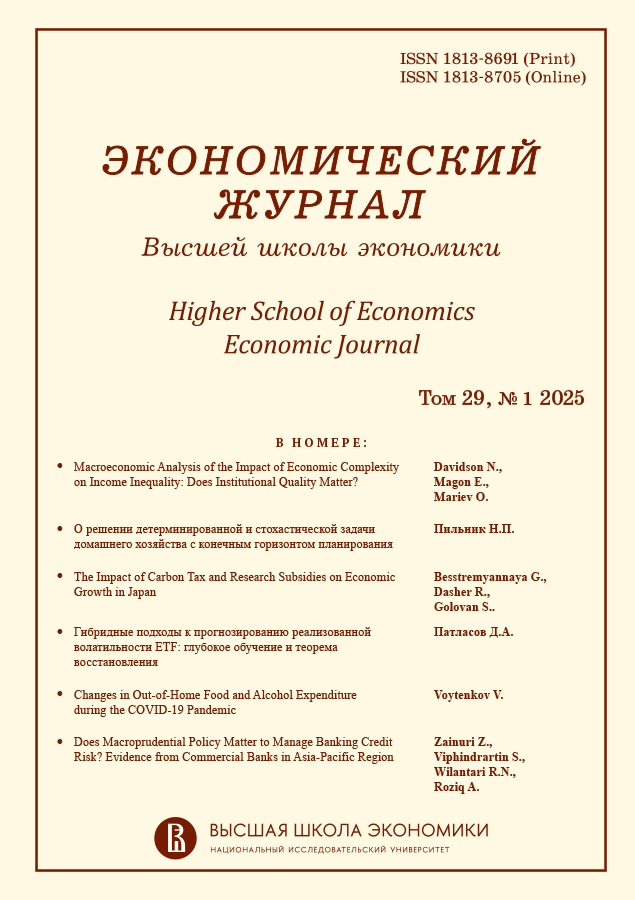
-
Higher School of Economics Economic Journal
ISSN (print): 1813-8691, ISSN (online): 1813-8705
Founder: National Research University Higher School of Economics
Editor-in-Chief: Gavrilenkov Evgeny
Frequency / Assess: 4 issues per year / Open
Included in: White List (2nd level), Higher Attestation Commission List, RISC, Scopus
-
Electromagnetic waves & electronic systems

-
Electromagnetic waves & electronic systems
ISSN (print): 1560-4128
Founder: Limited Liability Company "Publishing House "Radiotekhnika"
Editor-in-Chief: Cherepenin Vladimir Alekseevich, Academican of RAS, Doctor of Sc., Full Professor
Frequency / Access: 6 issues per year /Hybrid
Included in: White List (4th level), Higher Attestation Commission List, RISC
-
Èlektronika, fotonika i kiberfizičeskie sistemy

-
Èlektronika, fotonika i kiberfizičeskie sistemy
ISSN (online): 2782-5507
Founder: Kazan National Research Technical University after A.N.Tupolev-KAI
Editor-in-Chief: Oleg G. Morozov, Doctor of Technical Sciences, Professor
Frequency / Assess: 4 issues per year / Open
Included in: RISC
-
Caucasology

-
Caucasology
ISSN (online): 2542-212X
Founder: Kabardino-Balkarian State University
Editor-in-Chief: Abazov Alexey Khasanovich, Doctor of Sc., Professor
Frequency / Assess: 4 issues per year / Open
Included in: Higher Attestation Commission List, RISC
-
Электронный научный журнал "Культура: теория и практика"

-
Электронный научный журнал "Культура: теория и практика"
ISSN (print): 2619-032X
Founder: Moscow state Institute of culture
Editor-in-Chief: Lopatina Natalya Viktorovna, D-r of Pedagogical Sci.
Frequency / Access: 6 issues per year / Open
Included in: RISC
-
Electrochemical Energetics

-
Electrochemical Energetics
ISSN (print): 1608-4039, ISSN (online): 1680-9505
Founders: Saratov State University, National Research University "Moscow Power Engineering Institute"
Editor-in-Chief: Kazarinov Ivan Alexeevich, Dr. Chem. Sciences, Professor
Frequency / Access: 4 issues per year / Open
Included in: Higher Attestation Commission List, RISC
-
Russian Journal of Electrochemistry
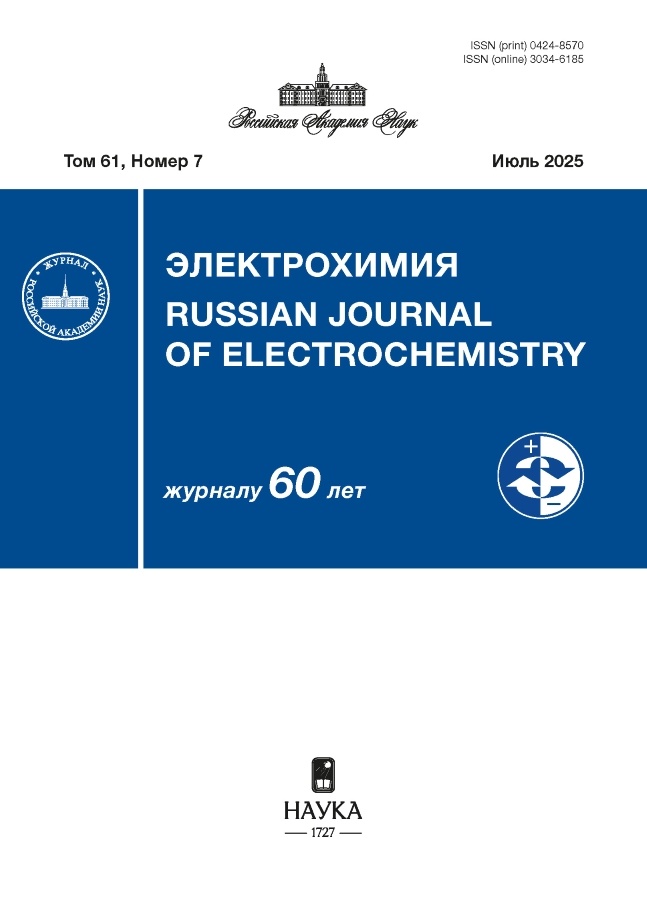
-
Russian Journal of Electrochemistry
ISSN (print): 0424-8570
Founders: Russian Academy of Sciences, Frumkin Institute of Physical Chemistry and Electrochemistry RAS
Editor-in-Chief: Tsivadze A.Yu., academician RAS, Doctor of Sc., Full Professor
Frequency / Assess: 12 issues per year / Subscription
Included in: White List (3rd level), Higher Attestation Commission List, RISC
-
Energy policy

-
Energy policy
ISSN (print): 2409-5516, ISSN (online): 2782-389X
Founders: Ministry of Energy of the Russian Federation; Russian energy agency
Editor-in-Chief: Gorshkova A.A.
Frequency / Access: 12 issues per year / Open
Included in: Higher Attestation Commission List, RISC
-
Entomological Review
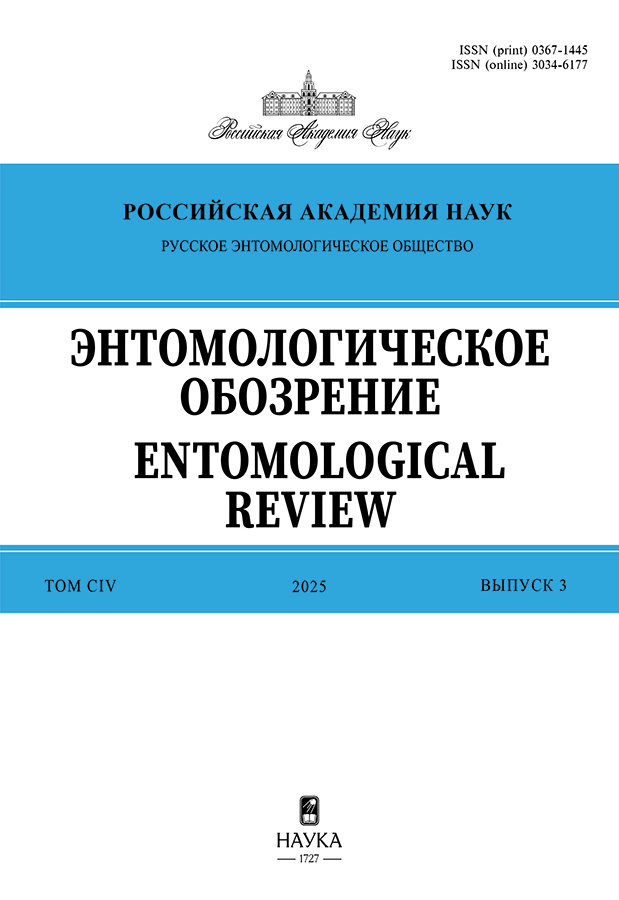
-
Entomological Review
ISSN (print): 0367-1445
Founders: Russian Academy of Sciences, Russian entomological society
Editor-in-Chief: Korotyaev Boris A., Doctor of Sc.
Frequency / Assess: 4 issues per year / Subscription
Included in: White List (4th level), Higher Attestation Commission List, RISC
-
Epidemiology and Infectious Diseases

-
Epidemiology and Infectious Diseases
ISSN (print): 1560-9529, ISSN (online): 2411-3026
Founders: Izdatelstvo MEDICINA, Eco-Vector
Editor-in-Chief: prof Vladimir V. Nikiforov, MD, PhD
Frequency / Access: 6 issues per year / Hybrid
Included in: White List (4th level), Higher Attestation Commission List, RISC
-
Epidemiology and Infectious Diseases. Current Items
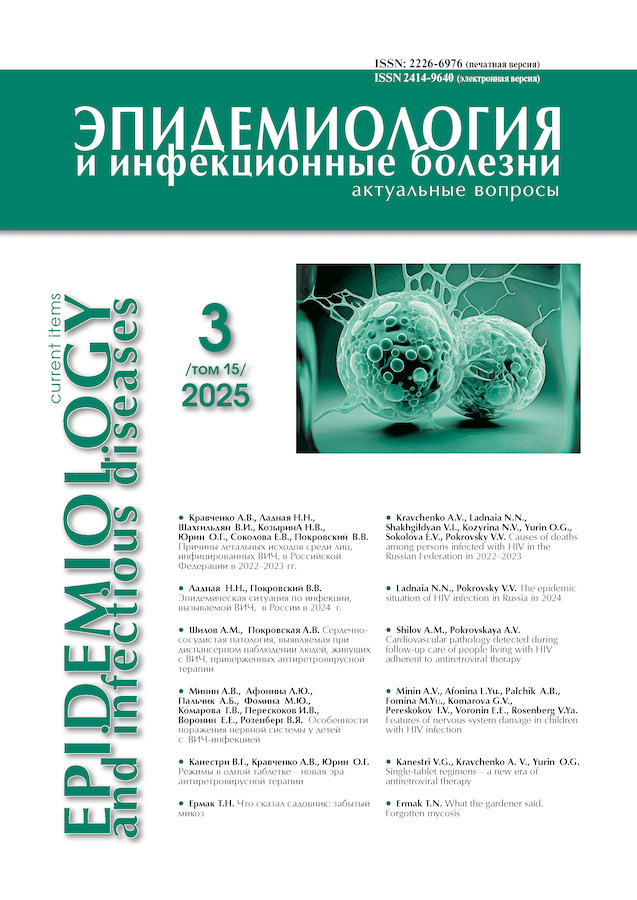
-
Epidemiology and Infectious Diseases. Current Items
ISSN (print): 2226-6976, ISSN (online): 2414-9640
Founder: LLC “Bionika Media”
Editor-in-Chief: Vasiliy G. Akimkin, Academician of RAS, Doctor of Sc., Full Professor
Frequency / Assess: 4 issues per year / Subscription
Included in: White List (3rd level), Higher Attestation Commission List, RISC
-
Ergodesign

-
Ergodesign
ISSN (print): 2619-1512, ISSN (online): 2658-4026
Founder: Bryansk State Technical University
Editor-in-Chief: Spasennikov Valery Valentinovich, Doctor of Sc., Full Professor
Frequency / Assess: 4 issues per year / Open
Included in: Higher Attestation Commission list, RISC
-
Measurement Standards. Reference Materials

-
Measurement Standards. Reference Materials
ISSN (print): 2687-0886
Founder: D. I. Mendeleyev Institute for Metrology
Editor-in-Chief: Sergey V. Medvedevskikh, к-т техн. наук
Frequency / Access: 4 issues per year / Open
Included in: White List (4th level), Higher Attestation Commission List, RISC
-
ETAP: Economic Theory, Analysis, Practice

-
ETAP: Economic Theory, Analysis, Practice
ISSN (print): 2071-6435
Founder: ANOO "Institute of Effective Technologies"
Editor-in-Chief: Ivanov Oleg Borisovich, Doctor of Sc., Professor
Frequency / Assess: 6 issues per year / Open
Included in: Higher Attestation Commission list, RISC
-
Ethno review
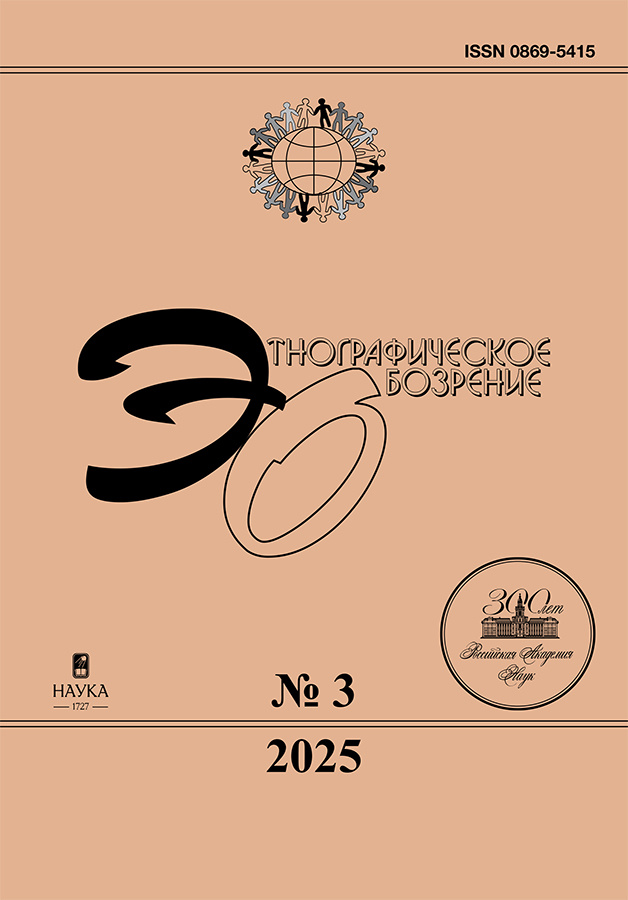
-
Ethno review
ISSN (print): 0869-5415
Founders: Russian Academy of Sciences, N.N. Miklouho-Maklay Institute of Ethnology and Anthropology
Editor-in-Chief: Sokolovsky S.V., Doctor of Sc.
Frequency / Assess: 6 issues per year / Subscription
Included in: White List (1sd level), Higher Attestation Commission List, RISC
-
South-Siberian Scientific Bulletin

-
South-Siberian Scientific Bulletin
ISSN (online): 2304-1943
Founders: Polzunov Altai State Technical University, Institute for Problems of Chemical and Energetic Technologies, SB RAS, Small Innovative Enterprise "Polytech" Ltd., Center of ultrasonic technologies of AltSTU, Ltd.
Editor-in-Chief: Bukhtiyarov Valery Ivanovich, Academician, Doctor of Chemical Sciences
Frequency / Access: 6 issues per year / Open
Included in: Higher Attestation Commission List, RISC
-
Juridical Journal of Samara University
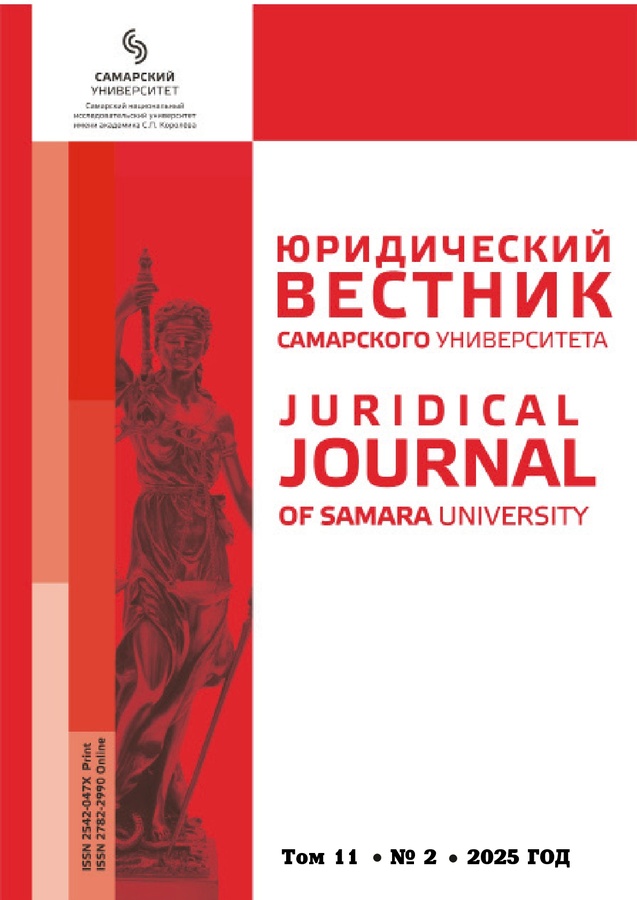
-
Juridical Journal of Samara University
ISSN (print): 2542-047X, ISSN (online): 2782-2990
Founder: Samara National Research University
Editor-in-Chief: Bezverkhov A.G., Doctor of Sc., Full Professor
Frequency / Access: 4 issues per year / Open
Included in: Higher Attestation Commission List, RISC
-
Physics of Atomic Nuclei
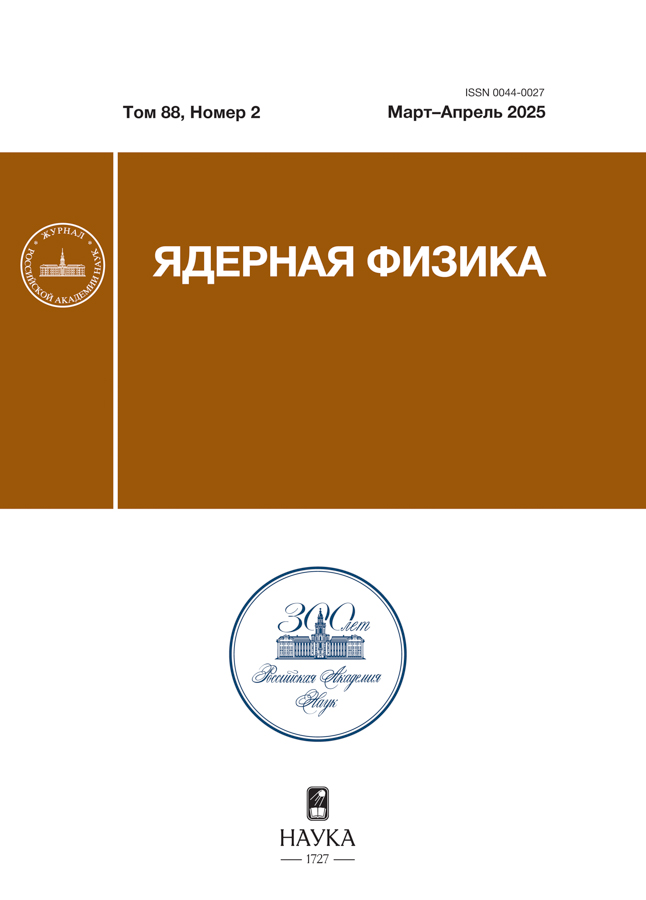
-
Physics of Atomic Nuclei
ISSN (print): 0044-0027
Founders: Russian Academy of Sciences, Institute for Theoretical and Experimental Physics
Editor-in-Chief: Dalkarov O.D., Doctor of Sc., Full Professor
Frequency / Assess: 6 issues per year / Subscription
Included in: White List (3rd level), Higher Attestation Commission List, RISC
-
Languages and folklore of indigenous peoples of Siberia

-
Languages and folklore of indigenous peoples of Siberia
ISSN(online): 2712-9608
Founder: Institute of Philology of the Siberian Branch of RAS
Editor-in-Chief: N. B. Koshkareva, Doctor of Sc., Professor
Frequency / Access: 4 issues per year / Open
-
Âroslavskij pedagogičeskij vestnik

-
Âroslavskij pedagogičeskij vestnik
ISSN (print): 1813-145X, ISSN (online): 1813-1476
Founders: Yaroslavl state pedagogical university; Department of Education of the Yaroslavl Province
Editor-in-Chief: Gruzdev Mihail Vadimovich, Doctor of Sc., Full Professor
Frequency / Assess: 6 issues per year / Open
Included in: Higher Attestation Commission list, RISC












